Mutant Antibodies And Conjugation Thereof
Laurent; Olivier Alexandre ; et al.
U.S. patent application number 16/896930 was filed with the patent office on 2021-05-20 for mutant antibodies and conjugation thereof. The applicant listed for this patent is Pfizer Healthcare Ireland. Invention is credited to Abhijit Suresh Bhat, Olivier Alexandre Laurent, Alice Lee, Richard Ryan Preston, Anna Tempczyk-Russell, David Tumelty, Wei Hong Yu.
| Application Number | 20210147576 16/896930 |
| Document ID | / |
| Family ID | 1000005360686 |
| Filed Date | 2021-05-20 |
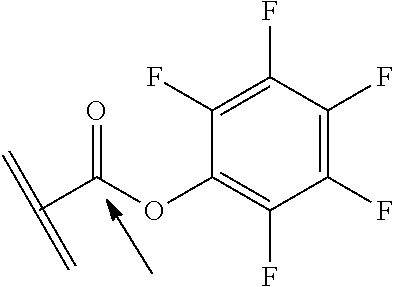
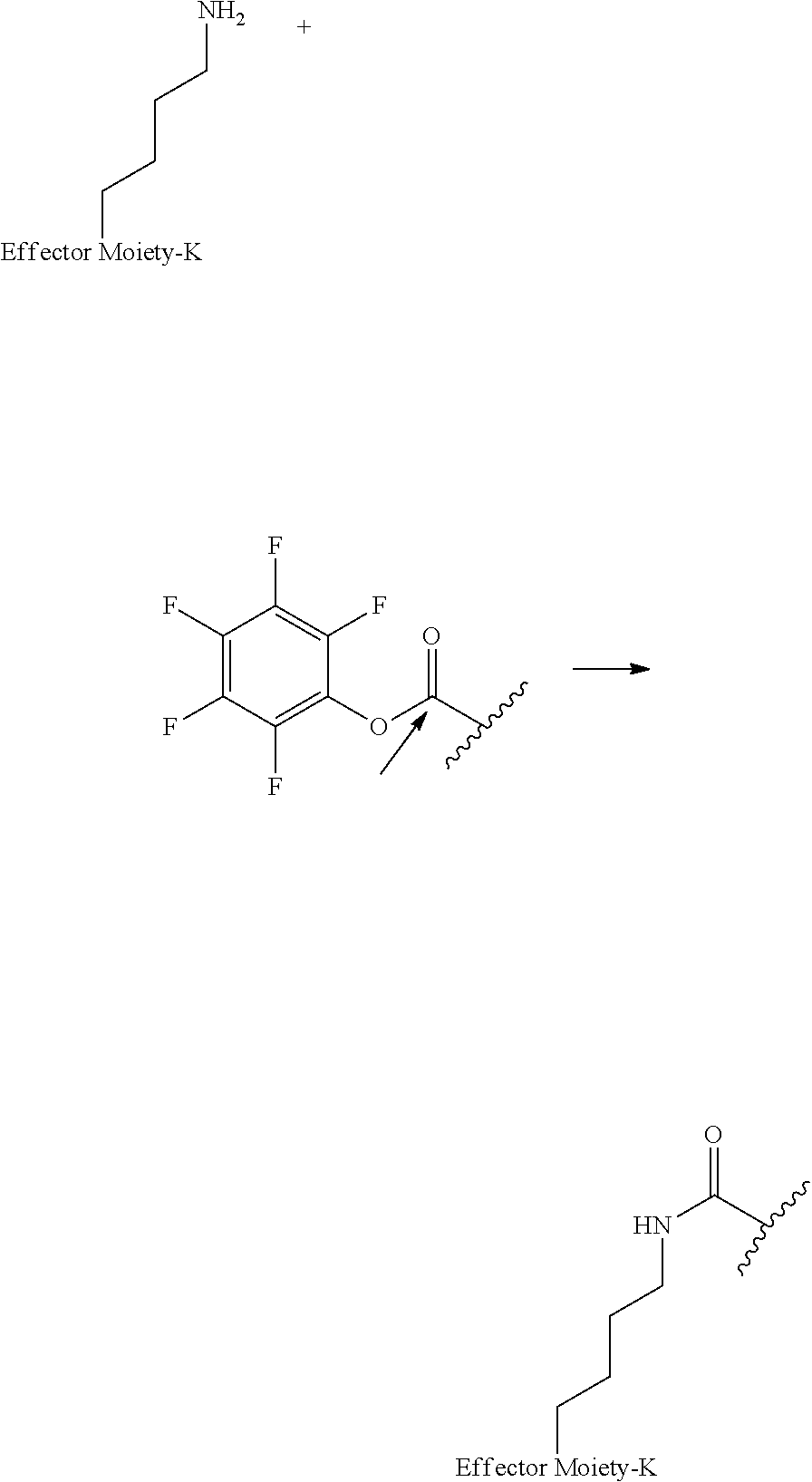
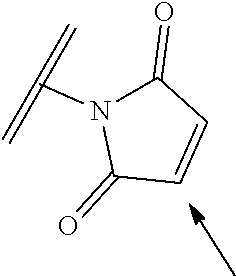
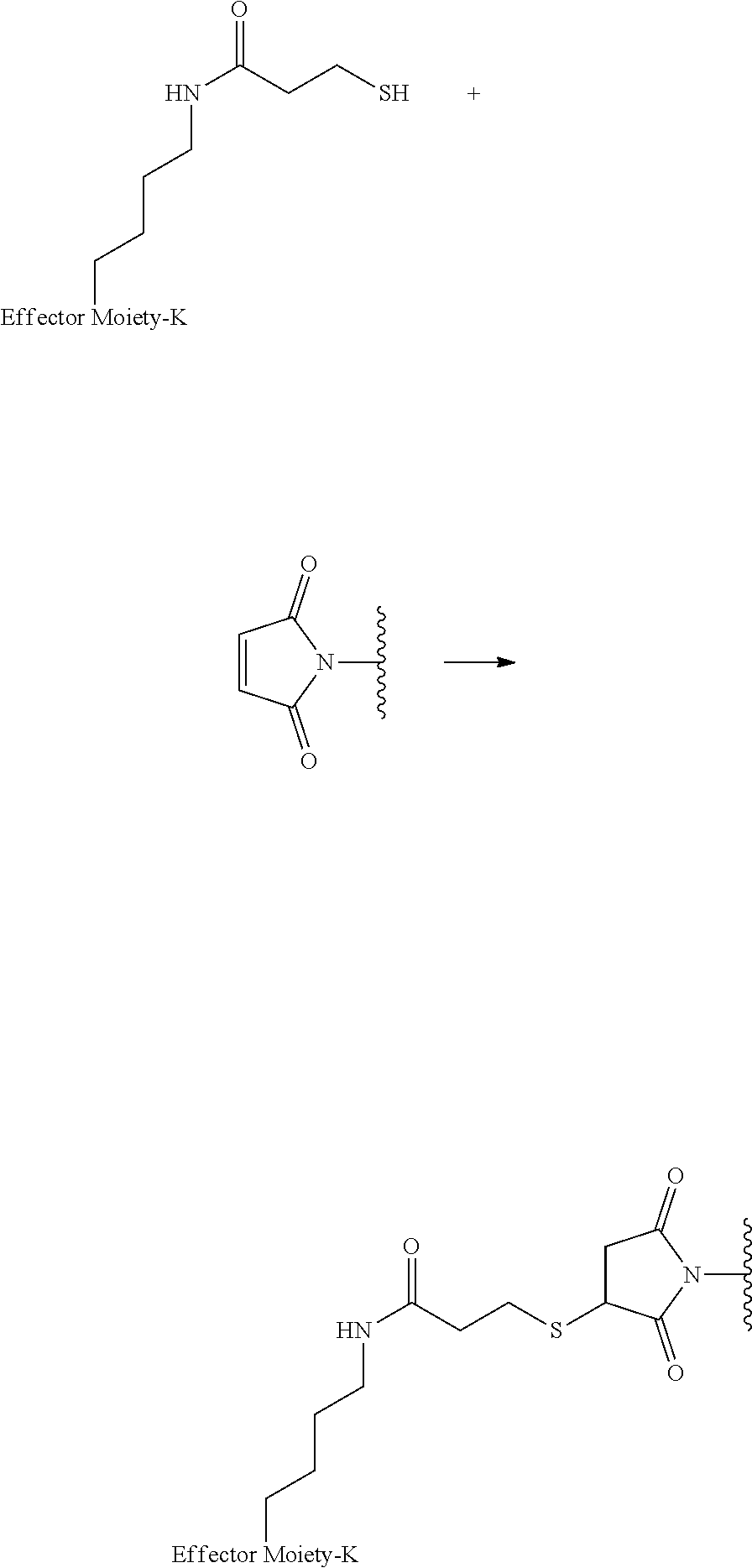
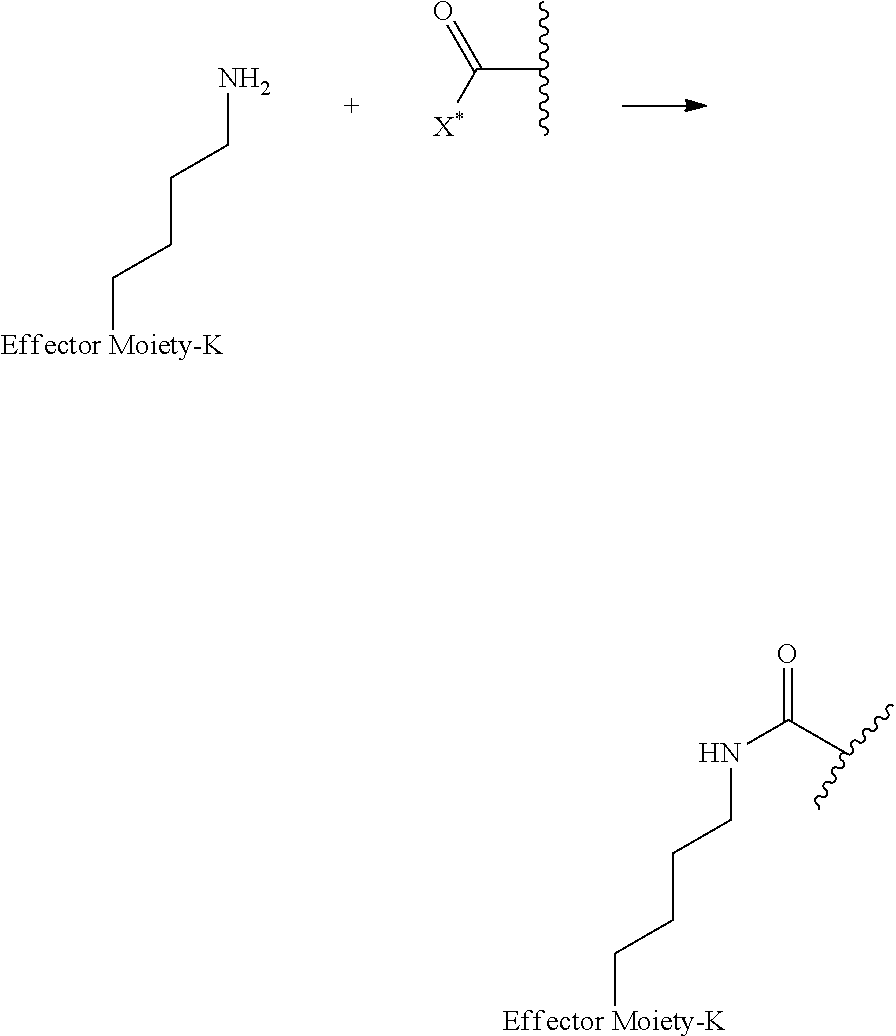

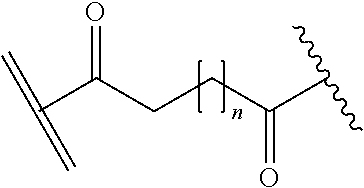

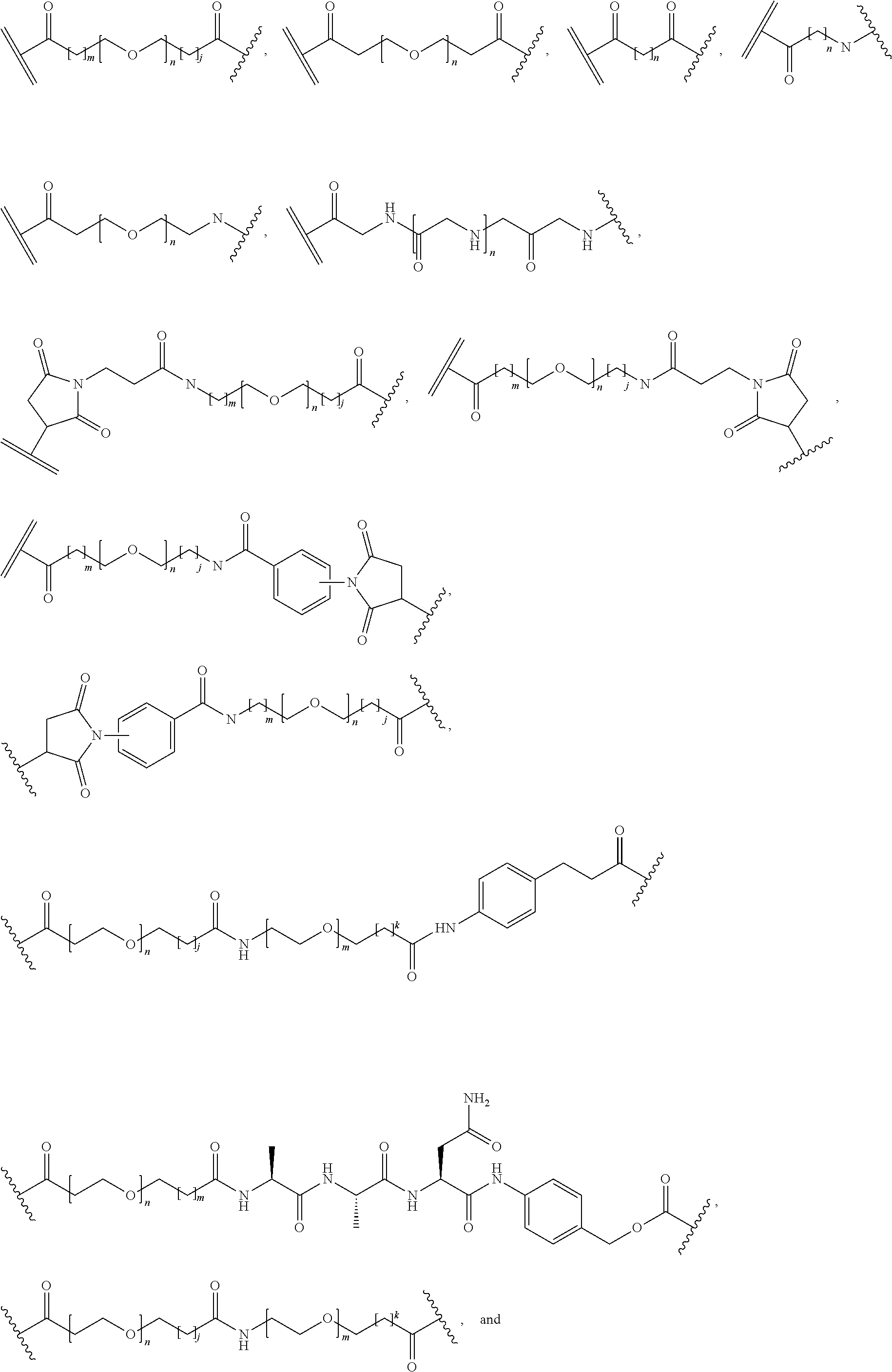
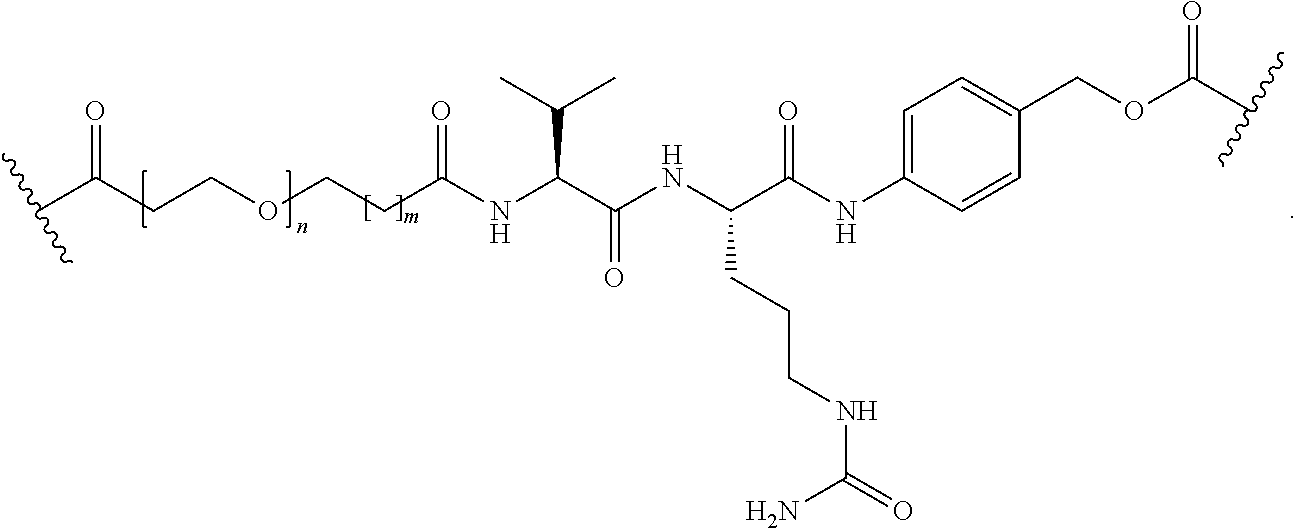
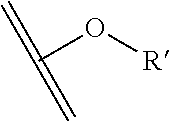
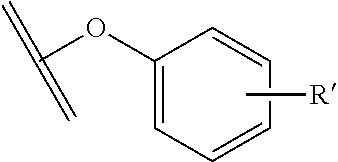
View All Diagrams
| United States Patent Application | 20210147576 |
| Kind Code | A1 |
| Laurent; Olivier Alexandre ; et al. | May 20, 2021 |
MUTANT ANTIBODIES AND CONJUGATION THEREOF
Abstract
The present invention relates to a polypeptide comprising 7 .beta.-strands A, B, C, D, E, F, and G sequentially connected together by connecting chains of amino acids, and a first .alpha.-helix sequentially located on the EF chain between .beta.-strands E and F, wherein the .beta.-strands are arranged so as to form a first .beta.-sheet comprising .beta.-strands A, B, D, and E, and a second .beta.-sheet comprising .beta.-strands C, F and G, said first and second .beta.-sheets being covalently bonded together so as to form a first Ig domain; wherein the EF chain between .beta.-strands E and F comprises the sequence X.sup.1-X.sup.2-X.sup.3-X.sup.4-K.sup.5H.sup.6 (SEQ ID NO:98), and X.sup.1, X.sup.3 and X.sup.4 are each independently any amino acid residue, characterized in that X.sup.2 is selected from the group consisting of A, G, I, V, L, R, S, T, Q, P, N, M, H, W, and pharmaceutically acceptable salts, stereoisomers, tautomers, solvates, and prodrugs thereof
| Inventors: | Laurent; Olivier Alexandre; (San Diego, CA) ; Lee; Alice; (Poway, CA) ; Preston; Richard Ryan; (Escondido, CA) ; Tumelty; David; (San Diego, CA) ; Yu; Wei Hong; (San Diego, CA) ; Bhat; Abhijit Suresh; (Encinitas, CA) ; Tempczyk-Russell; Anna; (San Diego, CA) | ||||||||||
| Applicant: |
|
||||||||||
|---|---|---|---|---|---|---|---|---|---|---|---|
| Family ID: | 1000005360686 | ||||||||||
| Appl. No.: | 16/896930 | ||||||||||
| Filed: | June 9, 2020 |
Related U.S. Patent Documents
| Application Number | Filing Date | Patent Number | ||
|---|---|---|---|---|
| 13736029 | Jan 7, 2013 | |||
| 16896930 | ||||
| 61584675 | Jan 9, 2012 | |||
| Current U.S. Class: | 1/1 |
| Current CPC Class: | C07K 2317/24 20130101; A61K 47/6817 20170801; C07K 2317/55 20130101; C07K 16/46 20130101; C07K 16/2863 20130101; C07K 16/00 20130101; C07K 2317/515 20130101; C07K 16/32 20130101; C07K 2317/73 20130101; C12N 9/0002 20130101; C07K 14/415 20130101; A61K 47/6843 20170801; A61K 39/39558 20130101; A61K 47/6855 20170801; A61K 2039/505 20130101; C07K 16/30 20130101; C07K 2317/76 20130101; C07K 2317/94 20130101; A61K 47/6811 20170801 |
| International Class: | C07K 16/46 20060101 C07K016/46; A61K 39/395 20060101 A61K039/395; C07K 16/28 20060101 C07K016/28; C07K 14/415 20060101 C07K014/415; C12N 9/00 20060101 C12N009/00; C07K 16/32 20060101 C07K016/32; C07K 16/00 20060101 C07K016/00; A61K 47/68 20060101 A61K047/68; C07K 16/30 20060101 C07K016/30 |
Claims
1.-12. (canceled)
13. A polypeptide comprising a mammalian antibody constant light domain comprising the residues K and H at positions corresponding to positions 80 and 81 of SEQ ID NO:6 when said antibody constant domain is aligned with the sequence of SEQ ID NO:6, and characterized in that the antibody constant domain further comprises a residue selected from the group consisting of A, G, I, L, R, S, T, P, at a position corresponding to position 77 of SEQ ID NO:6, and a residue selected from the group consisting of D, E, N, and Q at a position corresponding to residue 43 of SEQ ID NO:6, and wherein the K located at a position corresponding to residue 80 of SEQ ID NO:6 comprises a side chain with an F-amino group covalently attached to a linker, and pharmaceutically acceptable salts, stereoisomers, tautomers, solvates, and prodrugs thereof.
14. The polypeptide as claimed in claim 13, further comprising a residue selected from the group consisting of V, I and L at a position corresponding to residue 42 of SEQ ID NO:6.
15. (canceled)
16. The polypeptide as claimed in claim 13, wherein the residues at positions corresponding to residues 42 and 43 of SEQ ID NO:6 are not in .alpha.-helical formation.
17. (canceled)
18. (canceled)
19. (canceled)
20. (canceled)
21. The polypeptide as claimed in claim 13, wherein the mammalian antibody constant domain is a humanized or human domain.
22. The polypeptide as claimed in claim 13, wherein the constant domain is connected to an antibody variable domain.
23. (canceled)
24. The polypeptide as claimed in claim 13, wherein the linker comprises a formula selected from the group consisting of X.sup.1-Y.sup.1-Z.sup.1, X.sup.1-.PHI.-Y.sup.1-Z.sup.1, and X.sup.1-Y.sup.1-.PHI.-Z, wherein .PHI. is a cleavable group, X.sup.1 is a group covalently connectable to at least one Effector Moiety, Y.sup.1 is a linear or branched connecting chain, and Z is a group covalently connected to the .epsilon.-amino group of the side chain of K that is located at a position corresponding to residue 80 of SEQ ID NO:6.
25. The polypeptide as claimed in claim 24, wherein the cleavable group .PHI. is present, and is of the formula ##STR00137## wherein the wavy line and parallel line each indicate a point of attachment to either the X.sup.1, Y.sup.1 or Z.sup.1 group as appropriate.
26. The polypeptide as claimed in claim 24, wherein the linker is selected from the group consisting of: ##STR00138## ##STR00139## ##STR00140## ##STR00141## wherein m, n, j and k are each independently a range whose lower limits are selected from the group consisting of 0, 1, 2, 3, 4, 5, 6, 7, 8, 9, 10, 11, 12, 13, 14, 15, 16, 17, 18, 19, and 20, and whose upper limit is selected from the group consisting of 2, 3, 4, 5, 6, 7, 8, 9, 10, 11, 12, 13, 14, 15, 16, 17, 18, 19, 20, 21, 22, 23, 24, 25, 26, 27, 28, 29, and 30, and wherein the overall length of the linker does not exceed 200 atoms.
27. (canceled)
28. (canceled)
29. The polypeptide as claimed in claim 24, wherein the Effector Moiety is a therapeutic agent, protein, peptide, nucleic acid, aptamer, small molecule, protein agonist, protein antagonist, metabolic regulator, hormone, toxin, growth factor, or diagnostic agent.
30. The polypeptide as claimed in claim 29, wherein the Effector Moiety is a toxin, and comprises the formula: ##STR00142## or a pharmaceutically acceptable salt or solvate thereof, wherein, independently for each occurrence, W.sup.2 is ##STR00143## R.sup.11 is ##STR00144## Y.sup.2 is --C.sub.2-C.sub.20 alkylene-, --C.sub.2-C.sub.20 heteroalkylene-; --C.sub.3-C.sub.8 carbocyclo-, -arylene-, --C.sub.3-C.sub.8heterocyclo-, --C.sub.1-C.sub.10alkylene-arylene-, -arylene-C.sub.1-C.sub.10alkylene-, --C.sub.1-C.sub.10alkylene-(C.sub.3-C.sub.8carbocyclo)-, --(C.sub.3-C.sub.8carbocyclo)-C.sub.1-C.sub.10alkylene-, --C.sub.1-C.sub.10alkylene-(C.sub.3-C.sub.8heterocyclo)- or --(C.sub.3-C.sub.8 heterocyclo)-C.sub.1-C.sub.10alkylene-; Z.sup.2 is ##STR00145## 10 R.sup.12 is hydrogen, C.sub.1-C.sub.8 alkyl or C.sub.1-C.sub.8 haloalkyl; R.sup.13A and R.sup.13B are either of the following: (i) R.sup.13A is hydrogen, C.sub.1-C.sub.8 alkyl, C.sub.1-C.sub.8 haloalkyl, C.sub.3-C.sub.8 carbocyclyl, C.sub.1-C.sub.10 heterocyclyl, aryl, heteroaralkyl, aralkyl or halogen; and R.sup.13B is C.sub.1-C.sub.8 alkyl, C.sub.1-C.sub.8 haloalkyl, C.sub.3-C.sub.8 carbocyclyl, C.sub.1-C.sub.10 heterocyclyl, aryl, heteroaralkyl or aralkyl or halogen; or (ii) R.sup.13A and R.sup.13B taken together are C.sub.2-C.sub.8 alkylene or C.sub.1-C.sub.8 heteroalkylene; R.sup.14A and R.sup.14B are either of the following: (i) R.sup.14A is hydrogen, C.sub.1-C.sub.8 alkyl, C.sub.1-C.sub.8 haloalkyl, C.sub.3-C.sub.8 carbocyclyl, C.sub.1-C.sub.10 heterocyclyl, aryl, heteroaralkyl or aralkyl; and R.sup.14B is hydrogen, C.sub.1-C.sub.8 alkyl, C.sub.1-C.sub.8 haloalkyl, C.sub.3-C.sub.8 carbocyclyl, C.sub.1-C.sub.10 heterocyclyl, aryl, heteroaralkyl or aralkyl; or (ii) R.sup.14A and R.sup.14B taken together are C.sub.2-C.sub.8 alkylene or C.sub.1-C.sub.8 heteroalkylene; R.sup.15 is ##STR00146## C.sub.1-C.sub.10 heterocyclyl, C.sub.3-C.sub.8 carbocycly and C.sub.6-C.sub.14 aryl optionally substituted with 1, 2, 3, 4 or 5 groups independently selected from the group consisting of --C.sub.1-C.sub.8 alkyl, --C.sub.1-C.sub.8 alkyl-N(R').sub.2, --C.sub.1-C.sub.8 alkyl-C(O)R', --C.sub.1-C.sub.8 alkyl-C(O)OR'--O--(C.sub.1-C.sub.8 alkyl), --C(O)R', --OC(O)R', --C(O)OR', --C(O)N(R').sub.2, --NHC(O)R', --S(O).sub.2R', --S(O)R', --OH, halogen, --N.sub.3, --N(R').sub.2, --CN, --NHC(.dbd.NH)NH.sub.2, --NHCONH.sub.2, --S(.dbd.O).sub.2R' and --SR', wherein each R' is independently selected from the group consisting of hydrogen, C.sub.1-C.sub.8 alkyl and unsubstituted aryl, or two R' can, together with the nitrogen to which they are attached, form a C.sub.1-C.sub.10 heterocyclyl; or R.sup.15 is ##STR00147## optionally substituted with 1, 2, 3, 4 or 5 groups independently selected from the group consisting of C.sub.1-C.sub.8 alkyl, --C.sub.1-C.sub.8 alkyl-N(R').sub.2, --C.sub.1-C.sub.8 alkyl-C(O)R', --C.sub.1-C.sub.8 alkyl-C(O)OR', --O--(C.sub.1-C.sub.8 alkyl), --C(O)R', --OC(O)R', --C(O)OR', --C(O)N(R').sub.2, --NHC(O)R', --S(O).sub.2R', --S(O)R', --OH, halogen, --N.sub.3, --N(R').sub.2, --CN, --NHC(.dbd.NH)NH.sub.2, --NHCONH.sub.2, --S(.dbd.O).sub.2R', --SR' and arylene-R', wherein each R' is independently selected from the group consisting of hydrogen, C.sub.1-C.sub.8 alkyl, C.sub.1-C.sub.8heterocyclyl, C.sub.1-C.sub.10alkylene-C.sub.3-C.sub.8heterocyclyl and aryl, or two R' can, together with the nitrogen to which they are attached, form a C.sub.1-C.sub.10 heterocyclyl; R.sup.16 is hydrogen, --C.sub.1-C.sub.8 alkyl, --C.sub.2-C.sub.8 alkenyl, --C.sub.2-C.sub.8 alkynyl or --C.sub.1-C.sub.8 haloalkyl; R.sup.22 is hydrogen, C.sub.1-C.sub.4 alkyl, C.sub.1-C.sub.10 heterocyclyl or C.sub.6-C.sub.14 aryl; R.sup.23 is C.sub.1-C.sub.10 heterocyclyl; and R.sup.17 is independently selected for each occurrence from the group consisting of F, Cl, I and Br; R.sup.20 is -aryl, --C.sub.1-C.sub.10alkylene-aryl, where aryl on R.sup.10 comprising aryl is substituted with [R.sup.17].sub.h; h is 5; and X is O or S; provided that when R.sup.13A is hydrogen X is S.
31. The polypeptide as claimed in claim 29, wherein the Effector Moiety is a toxin, and is selected from the group consisting of ##STR00148## ##STR00149##
32. (canceled)
33. (canceled)
34. (canceled)
35. (canceled)
36. (canceled)
37. The polypeptide as claimed in claim 13, wherein the CL domain is a kappa domain (CL.kappa.).
38. (canceled)
39. (canceled)
40. The polypeptide as claimed in claim 3, wherein the CL domain is a lambda domain (CL.lamda.).
41. (canceled)
42. (canceled)
43. The polypeptide as claimed in claim 13, comprising a sequence selected from the group consisting of SEQ ID NO:37, SEQ ID NO:38, SEQ ID NO:39, SEQ ID NO:40, SEQ ID NO:41, SEQ ID NO:42, SEQ ID NO:44, SEQ ID NO:46, SEQ ID NO:47, SEQ ID NO:49, SEQ ID NO:50, SEQ ID NO:51, SEQ ID NO:52, SEQ ID NO:54, SEQ ID NO:60, SEQ ID NO:61, SEQ ID NO:77, SEQ ID NO:78, SEQ ID NO:94, SEQ ID NO:95, SEQ ID NO:96, SEQ ID NO:97, SEQ ID NO:104, SEQ ID NO:105, SEQ ID NO:106, SEQ ID NO:119, SEQ ID NO:120, SEQ ID NO:121, SEQ ID NO:122, SEQ ID NO:127, SEQ ID NO:128, SEQ ID NO:129, SEQ ID NO:134, SEQ ID NO:135, SEQ ID NO:140, SEQ ID NO:141, SEQ ID NO:142, SEQ ID NO:143, SEQ ID NO:144, SEQ ID NO:148, SEQ ID NO:149, SEQ ID NO:150, SEQ ID NO:151, SEQ ID NO:156, SEQ ID NO:158, SEQ ID NO:159, SEQ ID NO:160, SEQ ID NO:161, SEQ ID NO:163, SEQ ID NO:165, SEQ ID NO:167, SEQ ID NO:168, SEQ ID NO:169, SEQ ID NO:236, SEQ ID NO:237, SEQ ID NO:238, SEQ ID NO:239, SEQ ID NO:240, SEQ ID NO:241, and SEQ ID NO:254, or a polypeptide at least about 85% identical thereof.
44. A composition comprising the polypeptide as claimed in claim 13, wherein at least about 70% of the Linker in the composition or sample is conjugated to the .epsilon.-amino group of the side chain of K that is located at a position corresponding to residue 80 of SEQ ID NO:6.
45. A composition comprising multiples of the polypeptide as claimed in claim 13, wherein at least about 70% of the polypeptides comprises a Linker covalently attached to the .epsilon.-amino group of the side chain of K that is located at a position corresponding to residue 80 of SEQ ID NO:6.
46. An antibody, or antigen binding portion thereof, wherein the antibody comprises the polypeptide as claimed in claim 13.
47. The antibody as claimed in claim 46, wherein the antibody is a full length antibody, Fab, Fab', F(ab').sub.2, V.sub.H, diabody, or minibody.
48. The antibody as claimed in claim 13, wherein the antibody comprises VH and VL domains from an antibody selected from the group consisting of h38C2, rituximab, cetuximab, infliximab, adalimumab, natalizumab, omalizumab, ranibizumab, trastuzumab and palivizumab.
49.-58. (canceled)
Description
BACKGROUND
[0001] The development of bifunctional therapeutics has great potential to augment combination therapy strategies. A bifunctional therapeutic can provide the benefit of a combination therapy by modulating 2 different pathways with one therapeutic entity. In addition, bifunctional therapeutics may also benefit from synergies between pathways and demonstrate increased activity compared to mono-functional agents. Furthermore, bifunctional therapeutics can provide benefits in terms of reduced manufacturing, storage, and shipping costs, as well as reducing the number of therapies given to the patient and simplifying dosage regimes.
[0002] The reference to any art in this specification is not, and should not be taken as, an acknowledgement of any form or suggestion that the referenced art forms part of the common general knowledge.
REFERENCE TO SEQUENCE LISTING
[0003] This application is being filed electronically via EFS-Web and includes an electronically submitted sequence listing in .txt format. The .txt file contains a sequence listing entitled "PC71862B_Sequence_Listing_ST25.txt" created on Jan. 29, 2021 and having a size of 265 kb. The sequence listing contained in this .txt file is part of the specification and is herein incorporated by reference in its entirety.
SUMMARY OF THE INVENTION
[0004] The present invention provides a polypeptide comprising an antibody constant domain, the antibody constant domain comprising residues K and H at positions corresponding to positions 80 and 81 of SEQ ID NO:6 when said antibody constant domain is aligned with the sequence of SEQ ID NO:6, and characterized in that the antibody constant domain further comprises a residue selected from the group consisting of A, G, I, V, L, R, S, T, Q, P, N, M, H, W at a position corresponding to position 77 of SEQ ID NO:6.
[0005] In some aspects, the invention provides an antibody constant domain comprising SEQ ID NO:98 (and all sequences herein described that fall within the scope of SEQ ID NO:98), wherein the position of SEQ ID NO:98 on said constant domain corresponds to residues 76-81 of SEQ ID NO:6 when the constant domain sequence is aligned with SEQ ID NO:6.
[0006] Sequences may be aligned by structural alignment, where the structure of the two polypeptides are known, or by sequence alignment; when sequence alignment is used, the method is preferably augmented using structural knowledge of homologous polypeptides whose structures are known.
[0007] The present invention provides a polypeptide comprising an antibody constant light domain, the antibody constant domain comprising residues K188 and H181 according to Kabat numbering, and characterized in that the antibody constant domain further comprises a residue selected from the group consisting of A, G, I, V, L, R, S, T, Q, P, N, M, H, W at a position corresponding to position 185 according to Kabat numbering.
[0008] The present invention provides a polypeptide comprising an immunoglobulin domain comprising 7 .beta.-strands A, B, C, D, E, F, and G sequentially connected together by chains of connecting amino acids, wherein the .beta.-strands are arranged so as to form a first .beta.-sheet comprising .beta.-strands A, B, D, and E, and a second .beta.-sheet comprising .beta.-strands C, F and G, said first and second .beta.-sheets being covalently bonded together; wherein .beta.-strands E and F are connected together by an EF chain, and said EF chain comprises the sequence, X.sup.1--X.sup.2-X.sup.3-X.sup.4-K.sup.5-H.sup.6 (SEQ ID NO:98), and wherein X.sup.1, X.sup.3 and X.sup.4 are each independently any amino acid residue, and characterized in that X.sup.2 is selected from the group consisting of A, G, I, V, L, R, S, T, Q, P, N, M, H, W, and pharmaceutically acceptable salts, stereoisomers, tautomers, solvates, and prodrugs thereof.
[0009] X.sup.2 may be selected from the group consisting of A, G, I, L, R, S, T, P, N, and M (SEQ ID NO:99). X.sup.2 may be selected from the group consisting of A, G, I, L, S, T, P, and M (SEQ ID NO:100). In some aspects, the EF chain comprises a sequence selected from the group consisting of sequence SEQ ID NO:101, SEQ ID NO:102, and SEQ ID NO:103. X.sup.2 may be selected from the group consisting of A, G, I, V, L, R, S, T, Q, N, P, and M (SEQ ID NO:123). X.sup.2 may be selected from the group consisting of A, G, I, V, L, R, S, T, P, and M (SEQ ID NO:124). X.sup.2 may be selected from the group consisting of A, G, I, V, L, S, T, and M (SEQ ID NO:125). X.sup.2 may be selected from the group consisting of A, G, I, L, S, T, and M (SEQ ID NO:126). X.sup.2 may be S or T. X.sup.2 may be A or G. X.sup.2 may be I or L. The selections of X.sup.2 described herein may also be applied to antibody constant domains of the invention, wherein position X.sup.2 corresponds with residue 77 of SEQ ID NO:6, or residue 185 of a constant light domain according to Kabat numbering.
[0010] In some aspects, the EF chain comprises a sequence selected from the group consisting of SEQ ID NO:98, SEQ ID NO:99, SEQ ID NO:100, SEQ ID NO:101, SEQ ID NO:102, SEQ ID NO:103, SEQ ID NO:115, SEQ ID NO:116, SEQ ID NO:117, SEQ ID NO:123, SEQ ID NO:124, SEQ ID NO:125, and SEQ ID NO:126, and may further be selected from the group consisting of SEQ ID NO:170, SEQ ID NO:171, SEQ ID NO:172, SEQ ID NO:173, SEQ ID NO:174, SEQ ID NO:175, SEQ ID NO:176, SEQ ID NO:177, SEQ ID NO:178, SEQ ID NO:179, SEQ ID NO:180, SEQ ID NO:181, SEQ ID NO:182, SEQ ID NO:183, SEQ ID NO:184, SEQ ID NO:185, SEQ ID NO:186, SEQ ID NO:187, SEQ ID NO:188, SEQ ID NO:189, SEQ ID NO:190, SEQ ID NO:191, SEQ ID NO:192, SEQ ID NO:193, SEQ ID NO:194, SEQ ID NO:195, SEQ ID NO:196, SEQ ID NO:197, SEQ ID NO:198, SEQ ID NO:199, SEQ ID NO:200, SEQ ID NO:201, SEQ ID NO:202, SEQ ID NO:203, SEQ ID NO:204, SEQ ID NO:205, SEQ ID NO:206, SEQ ID NO:207, SEQ ID NO:208, SEQ ID NO:209, SEQ ID NO:210, SEQ ID NO:211, SEQ ID NO:212, SEQ ID NO:213, SEQ ID NO:214, SEQ ID NO:215, SEQ ID NO:216, SEQ ID NO:217, SEQ ID NO:218, SEQ ID NO:219, SEQ ID NO:220, SEQ ID NO:221, SEQ ID NO:222, SEQ ID NO:223, and SEQ ID NO:224.
[0011] In some aspects, there may be a single residue difference when compared against residues 75-79 of SEQ ID NO:10; or SEQ ID NO:6. In some aspects, there may be up to 2 differences when compared against residues 75-79 of SEQ ID NO:10; or SEQ ID NO:6. In some aspects, there may be up to 2 differences when compared against residues 75-79 of SEQ ID NO:10; or SEQ ID NO:6. In some aspects, there may be up to 4 differences when compared against residues 75-79 of SEQ ID NO:10; or SEQ ID NO:6. In some aspects, there may be up two non-sequential differences when compared against residues 75-79 of SEQ ID NO:10; or SEQ ID NO:6. In some aspects, there may be up to three non-sequential differences when compared against residues 75-79 of SEQ ID NO:10; or SEQ ID NO:6.
[0012] In some aspects, there may be a single residue difference when compared against residues 76-79 of SEQ ID NO:10; or SEQ ID NO:6. In some aspects, there may be up to 2 differences when compared against residues 76-79 of SEQ ID NO:10; or SEQ ID NO:6. In some aspects, there may be up to 3 differences when compared against residues 76-79 of SEQ ID NO:10; or SEQ ID NO:6. In some aspects, there may be up to 4 differences when compared against residues 76-79 of SEQ ID NO:10; or SEQ ID NO:6. In some aspects, there may be up two non-sequential differences when compared against residues 76-79 of SEQ ID NO:10; or SEQ ID NO:6.
[0013] The polypeptide may comprise an EF .alpha.-helix located on the EF chain. In some aspects, one or more of residues X.sup.1, X.sup.2, X.sup.3 and X.sup.4 of SEQ ID NO:98 comprise part of the EF .alpha.-helix. In some aspects, two or more of residues X.sup.1, X.sup.2, X.sup.3 and X.sup.4 of SEQ ID NO:98 comprise part of the EF .alpha.-helix. In some aspects, three or more of residues X.sup.1, X.sup.2, X.sup.3 and X.sup.4 of SEQ ID NO:98 comprise part of the EF .alpha.-helix. In some aspects, all residues X.sup.1, X.sup.2, X.sup.3 and X.sup.4 of SEQ ID NO:98 comprise part of the EF .alpha.-helix. In some aspects, residues K.sup.5 and H.sup.6 of SEQ ID NO:98 do not form part of an .alpha.-helix. The selections of X.sup.1, X.sup.2, X.sup.3, X.sup.4, K.sup.5, and H.sup.6 described herein may also be applied to antibody constant domains of the invention, wherein positions X.sup.1, X.sup.2, X.sup.3, X.sup.4, K.sup.5, and H.sup.6 correspond with residues 76, 77, 78, 79, 800 and 81 of SEQ ID NO:6, or positions 184, 185, 186, 187, 188 and 189 of a constant light domain according to Kabat numbering.
[0014] In some aspects, the EF chain comprises a sequence selected from the group consisting of SEQ ID NO:99, SEQ ID NO:100, SEQ ID NO:101, SEQ ID NO:102, SEQ ID NO:103, SEQ ID NO:115, SEQ ID NO:116, SEQ ID NO:117, SEQ ID NO:118, SEQ ID NO:123, SEQ ID NO:124, SEQ ID NO:125, SEQ ID NO:126, SEQ ID NO:170, SEQ ID NO:171, SEQ ID NO:172, SEQ ID NO:173, SEQ ID NO:174, SEQ ID NO:175, SEQ ID NO:176, SEQ ID NO:177, SEQ ID NO:178, SEQ ID NO:179, SEQ ID NO:180, SEQ ID NO:181, SEQ ID NO:182, SEQ ID NO:183, SEQ ID NO:184, SEQ ID NO:185, SEQ ID NO:186, SEQ ID NO:187, SEQ ID NO:188, SEQ ID NO:189, SEQ ID NO:190, SEQ ID NO:191, SEQ ID NO:192, SEQ ID NO:193, SEQ ID NO:194, SEQ ID NO:195, SEQ ID NO:196, SEQ ID NO:197, SEQ ID NO:198, SEQ ID NO:199, SEQ ID NO:200, SEQ ID NO:201, SEQ ID NO:202, SEQ ID NO:203, SEQ ID NO:204, SEQ ID NO:205, SEQ ID NO:206, SEQ ID NO:207, SEQ ID NO:208, SEQ ID NO:209, SEQ ID NO:210, SEQ ID NO:211, SEQ ID NO:212, SEQ ID NO:213, SEQ ID NO:214, SEQ ID NO:215, SEQ ID NO:216, SEQ ID NO:217, SEQ ID NO:218, SEQ ID NO:219, SEQ ID NO:220, SEQ ID NO:221, SEQ ID NO:222, SEQ ID NO:223, and SEQ ID NO:224.
[0015] In some aspects of the invention, and with particular reference to all sequences in the application with variability at a residue corresponding to X.sup.1, X.sup.1 according to the above sequences may be selected from the group consisting of A, I, V, L, G, P, F, W, Y, S, T, C, M, N, Q, K, R, H, E, and D. In some aspects, X.sup.1 may be selected from the group consisting of A, I, V, L, G, F, W, Y, S, T, C, M, N, Q, K, R, H, E, and D. In some aspects, X.sup.1 may be selected from the group consisting of A, I, V, L, F, W, Y, S, T, C, M, N, Q, K, R, H, E, and D. In some aspects, X.sup.1 may be selected from the group consisting of A, I, V, L, F, W, Y, S, T, M, N, Q, K, R, H, E, and D. In some aspects, X.sup.1 may be selected from the group consisting of A, I, V, L, S, T, M, N, Q, K, R, H, E, and D. In some aspects, X.sup.1 may be selected from the group consisting of A, I, V, L, S, T, M, N, Q, R, H, E, and D. X.sup.1 may be selected from the group consisting of A, I, V, L, S, T, M, N, Q, E, and D. X.sup.1 may be selected from the group consisting of A, I, V, L, S, T, M, N, Q, E, and D. The selections of X.sup.1 described herein may also be applied to antibody constant domains of the invention, wherein position X.sup.1 corresponds with residue 76 of SEQ ID NO:6, or residue 184 of a constant light domain according to Kabat numbering.
[0016] In some aspects of the invention, and with particular reference to all sequences in the application with variability at a residue corresponding to X.sup.3, X.sup.3 according to the above sequences may be selected from the group consisting of A, I, V, L, G, P, F, W, Y, S, T, C, M, N, Q, K, R, H, E, and D. X.sup.3 may be selected from the group consisting of A, I, V, L, G, F, W, Y, S, T, C, M, N, Q, K, R, H, E, and D. X.sup.3 may be selected from the group consisting of A, I, V, L, F, W, Y, S, T, C, M, N, Q, K, R, H, E, and D. X.sup.3 may be selected from the group consisting of A, I, V, L, F, W, Y, S, T, M, N, Q, K, R, H, E, and D. X.sup.3 may be selected from the group consisting of I, L, F, W, Y, S, T, M, N, Q, K, R, H, E, and D. X.sup.3 may be selected from the group consisting of I, L, F, W, Y, M, N, Q, K, R, H, E, and D. X.sup.3 may be selected from the group consisting of I, L, F, W, Y, N, Q, E, and D. X.sup.3 may be selected from the group consisting of I, L, F, W, and Y. X.sup.3 may be selected from the group consisting of F, W, and Y. X.sup.3 may be selected from the group consisting of W and Y. The selections of X.sup.3 described herein may also be applied to antibody constant domains of the invention, wherein position X.sup.3 corresponds with residue 78 of SEQ ID NO:6, or residue 186 of a constant light domain according to Kabat numbering.
[0017] In some aspects of the invention, and with particular reference to all sequences in the application with variability at a residue corresponding to X.sup.4, X.sup.4 according to the above sequences may be selected from the group consisting of A, I, V, L, G, P, F, W, Y, S, T, C, M, N, Q, K, R, H, E, and D. X.sup.4 may be selected from the group consisting of A, I, V, L, G, P, F, W, Y, S, T, M, N, Q, K, R, H, E, and D. X.sup.4 may be selected from the group consisting of A, I, V, L, G, F, W, Y, S, T, M, N, Q, K, R, H, E, and D. X.sup.4 may be selected from the group consisting of A, I, V, L, F, W, Y, S, T, M, N, Q, K, R, H, E, and D. X.sup.4 may be selected from the group consisting of A, I, V, L, G, S, T, M, N, Q, K, R, H, E, and D. X.sup.4 may be selected from the group consisting of A, I, V, L, S, T, M, N, Q, K, R, H, E, and D. X.sup.4 may be selected from the group consisting of I, L, S, T, M, N, Q, K, R, E, and D. X.sup.4 may be selected from the group consisting of S, T, M, N, Q, K, R, E, and D. X.sup.4 may be selected from the group consisting of S, T, N, Q, K, R, E, and D. X.sup.4 may be selected from the group consisting of N, Q, K, R, E, and D. X.sup.4 may be selected from the group consisting of N, Q, K, R, and E. X.sup.4 may be selected from the group consisting of, Q, K, and E. The selections of X.sup.4 described herein may also be applied to antibody constant domains of the invention, wherein position X.sup.4 corresponds with residue 79 of SEQ ID NO:6, or residue 187 of a constant light domain according to Kabat numbering.
[0018] In some aspects, the EF chain is between 6 and 12 residues long. In some aspects, the EF chain is between 7 and 12 residues long. In some aspects, the EF chain is between 8 and 12 residues long. In some aspects, the EF chain is between 9 and 12 residues long. In some aspects, the EF chain is between 6 and 11 residues long. In some aspects, the EF chain is between 6 and 10 residues long. In some aspects, the EF chain is between 6 and 9 residues long. In some aspects, the EF chain is between 7 and 11 residues long. In some aspects, the EF chain is between 7 and 10 residues long. In some aspects, the EF chain is between 8 and 10 residues long.
[0019] The EF chain may comprise an .alpha.-helix (the EF .alpha.-helix). The first residue of the EF .alpha.-helix may be located within the first 3 residues of the EF chain. The first residue of the EF .alpha.-helix may be located within the first 2 residues of the EF chain. The first residue of the EF .alpha.-helix may be located at residue of the EF chain. The EF .alpha.-helix may comprise at least residues X.sup.1 and X.sup.2 of SEQ ID NO:98 or one of the corresponding sequences herein that fall within the scope of SEQ ID NO:98. In some aspects, residues K.sup.5 and H.sup.6 corresponding to SEQ ID NO:98 are not within the .alpha.-helix. In some aspects, residues KH that correspond to positions 80 and 81 of SEQ ID NO:6 are not within the .alpha.-helix. In some aspects of the invention relating to antibody constant domains, the residue corresponding to position 77 of SEQ ID NO:6 falls within an .alpha.-helix.
[0020] In some aspects, the immunoglobulin domain of the invention, which may be a CL domain, further comprises the residue D, E, Q or N on the connecting chain between .beta.-strands C and D; the CD chain. In some aspects, the CL domain further comprises the residue D, E, Q or N on the CD chain, the residue being positioned so as to allow its amino acid side chain interact with at least one of the side chains of K.sup.5 or H.sup.6 of SEQ ID NO:98. In some aspects, the polypeptide comprises a D, E, Q, or N residue located at the position corresponding to position 43 of SEQ ID NO:10 or SEQ ID NO:6, in some aspects, according to a BLAST sequence alignment. In some aspects, the residue is D, E or N. In some aspects, the residue is D or E. In some aspects the residue is D or N.
[0021] In some aspects, the .beta.-strands C and D are connected together by a CD chain, comprising a CD motif C1-C2-C3-C4 (SEQ ID NO:255) wherein each of C.sup.1, C2, C3 and C4 may be any amino acid, or further specified as set forth below. The CD motif may be selected from the group consisting of SEQ ID NO:245, SEQ ID NO:246, SEQ ID NO:247, SEQ ID NO:248, SEQ ID NO:249, SEQ ID NO:250, SEQ ID NO:251, SEQ ID NO:252, and SEQ ID NO:253, said CD motif beginning at the first or second residue of said CD chain. In some aspects, the CD motif begins at the first residue of the CD chain. In some aspects, the CD motif begins at the second residue of the CD chain. Favourably, the CD motif may not form part of an .alpha.-helix.
[0022] In some aspects, the residue C.sup.1 of the CD motif may be selected from the group consisting of A, I, L, G, V, M, P, S, T, F, Y, W, N, Q, D, and E. In some aspects, the residue C.sup.1 of the CD motif may be selected from the group consisting of I, L, V, M, P, F, Y, and W. In some aspects, the residue C.sup.1 of the CD motif may be selected from the group consisting of I, L, V, P, F, Y, and W. In some aspects, the residue C.sup.1 of the CD motif may be selected from the group consisting of I, L, V, P, F, and W. In some aspects, the residue C.sup.1 of the CD motif may be selected from the group consisting of I, L, V, F, and W In some aspects, the residue C.sup.1 of the CD motif may be selected from the group consisting of I, L, and V. In some aspects, the residue C.sup.1 of the CD motif may be selected from the group consisting of L and V. In some aspects, the residue C.sup.1 of the CD motif may be V. The selections of C.sup.1 of the CD motif described herein may also be applied to antibody constant domains of the invention, wherein position C.sup.1 of the CD motif corresponds with residue 42 of SEQ ID NO:6, or residue 150 of a constant light domain according to Kabat numbering.
[0023] In some aspects, the residue C2 of the CD motif may be selected from the group consisting of A, I, L, G, V, M, P, S, T, F, Y, W, N, Q, D, and E. In some aspects, the residue C2 of the CD motif may be selected from the group consisting of A, I, L, G, V, M, P, S, T, F, Y, W, N, Q, D, and E. In some aspects, the residue C2 of the CD motif may be selected from the group consisting of A, I, L, G, V, M, P, S, T, N, Q, D, and E. In some aspects, the residue C2 of the CD motif may be selected from the group consisting of A, I, L, V, M, P, S, T, N, Q, D, and E. In some aspects, the residue C2 of the CD motif may be selected from the group consisting of M, P, S, T, N, Q, D, and E. In some aspects, the residue C2 of the CD motif may be selected from the group consisting of S, T, N, Q, D, and E. In some aspects, the residue C2 of the CD motif may be selected from the group consisting of N, Q, D, and E. In some aspects, the residue C2 of the CD motif may be D. The selections of C2 of the CD motif described herein may also be applied to antibody constant domains of the invention, wherein position C2 of the CD motif corresponds with residue 43 of SEQ ID NO:6, or residue 151 of a constant light domain according to Kabat numbering.
[0024] In some aspects, the residue C3 of the CD motif may be selected from the group consisting of A, I, L, G, V, M, P, S, T, F, Y, W, N, Q, D, and E. In some aspects, the residue C3 of the CD motif may be selected from the group consisting of A, I, L, G, V, M, P, S, T, F, Y, W, N, Q, D, and E. In some aspects, the residue C3 of the CD motif may be selected from the group consisting of A, I, L, G, V, M, P, S, T, N, Q, D, and E. In some aspects, the residue C3 of the CD motif may be selected from the group consisting of A, I, L, V, M, P, S, T, N, Q, D, and E. In some aspects, the residue C3 of the CD motif may be selected from the group consisting of M, P, S, T, N, Q, D, and E. In some aspects, the residue C3 of the CD motif may be selected from the group consisting of S, T, N, Q, D, and E. In some aspects, the residue C3 of the CD motif may be selected from the group consisting of N, Q, D, and E. In some aspects, the residue C3 of the CD motif may be N. The selections of C3 of the CD motif described herein may also be applied to antibody constant domains of the invention, wherein position C3 of the CD motif corresponds with residue 44 of SEQ ID NO:6, or residue 152 of a constant light domain according to Kabat numbering.
[0025] In some aspects, the residue C4 of the CD motif may be selected from the group consisting of A, I, L, G, V, M, P, S, T, F, Y, W, N, Q, D, and E. In some aspects, the residue C4 of the CD motif may be selected from the group consisting of A, I, L, G, V, M, P, S, T, F, Y, W, N, Q, D, and E. In some aspects, the residue C4 of the CD motif may be selected from the group consisting of A, I, L, G, V, M, P, S, T, N, Q, D, E, K, R, and H. In some aspects, the residue C4 of the CD motif may be selected from the group consisting of A, I, L, V, G, M, P, S, T, N, Q, D, and E. In some aspects, the residue C4 of the CD motif may be selected from the group consisting of A, I, L, V, G, S, T, N, Q, D, and E. In some aspects, the residue C4 of the CD motif may be selected from the group consisting of A, V, Q, and S. In some aspects, the residue C4 of the CD motif may be selected from the group consisting of A and S. In some aspects, the residue C4 of the CD motif may be A. The selections of C4 of the CD motif described herein may also be applied to antibody constant domains of the invention, wherein position C4 of the CD motif corresponds with residue 45 of SEQ ID NO:6, or residue 153 of a constant light domain according to Kabat numbering.
[0026] In some aspects, the CD chain is between 6 and 12 residues long. In some aspects, the CD chain is between 7 and 12 residues long. In some aspects, the CD chain is between 8 and 12 residues long. In some aspects, the CD chain is between 9 and 12 residues long. In some aspects, the CD chain is between 6 and 11 residues long. In some aspects, the CD chain is between 6 and 10 residues long. In some aspects, the CD chain is between 6 and 9 residues long. In some aspects, the CD chain is between 7 and 11 residues long. In some aspects, the CD chain is between 7 and 10 residues long. In some aspects, the CD chain is between 8 and 10 residues long.
[0027] The immunoglobulin domain may be an antibody domain. The antibody domain may be an antibody constant domain. The antibody constant domain may be a constant heavy (CH) domain or constant light (CL) domain. Antibody CH domains may be selected from the group consisting of CH.alpha.1, CH.alpha.2, CH.alpha.3, CH.delta.1, CH.delta.2, CH.delta.3, CH.epsilon.1, CH.epsilon.2, CH.epsilon.3, CH.epsilon.4, CH.gamma.1, CH.gamma.2, CH.gamma.3, CH.mu.1, CH.mu.2, CH.mu.3, and CH.mu.4.
[0028] In some aspects, the immunoglobulin domains of the invention are mammalian in origin (notwithstanding the method used to generate any artificially mutated or otherwise engineered versions). The mammalian species may be human, mouse, rabbit, rat, rodent, pig, cow, sheep, goat, donkey, horse, camel, primate, monkey, dog, or cat. The immunoglobulin domains of the invention, and other proteins such as antibodies to which they comprise or attached may be humanized.
[0029] In some aspects, the invention comprises mutant immunoglobulin domains, wherein a mutant is defined as sequence that has been engineered or altered to a sequence other than its natural canonical sequence, such that certain embodiments of polypeptides of the invention specifically excludes naturally occurring sequences that fall within the scope of the definition. In some aspects, therefore, the present invention relates to polypeptides of the invention comprising an EF chain that differs from their naturally occurring corresponding sequence.
[0030] The antibody domains of the invention may specifically exclude one or more natural IgA constant heavy domains (CH.alpha.1, CH.alpha.2, CH.alpha.3) from one or more species selected from the group consisting of Bornean orangutan and Pongo pygmaeus, and/or one or more natural IgM constant heavy domains (CH.mu.1, CH.mu.2, CH.mu.3, and CH.mu.4) from one or more species selected from the group consisting of mouse, rat, horse, Equus caballus, Heterocephalus glaber, bat, Eptesicus fuscus, and/or one or more natural IgE constant heavy domains (CH.epsilon.1, CH.epsilon.2, CH.epsilon.3, and CH.epsilon.4) from one or more species selected from the group consisting of human, chimp, monkey, Erythrocebus patas, mouse, rat, bat, Cynopterus sphinx, sheep, Ovis aries, echidna, and Tachyglossus aculeatus.
[0031] In some aspects, one or more constant heavy domains selected from the group consisting of CH.alpha.1, CH.alpha.2, CH.alpha.3, CH.delta.1, CH.delta.2, CH.delta.3, CH.epsilon.1, CH.epsilon.2, CH.epsilon.3, CH.epsilon.4, CH.gamma.1, CH.gamma.2, CH.gamma.3, CH.mu.1, CH.mu.2, CH.mu.3, and CH.mu.4 from one or more of the species selected from the group consisting of human, mouse, rabbit, rat, rodent, pig, cow, sheep, goat, donkey, horse, camel, primate, monkey, dog, or cat are specifically excluded.
[0032] In some aspects, the invention provides an immunoglobulin domain, that may be a constant light chain (CL) domain, comprising 7 .beta.-strands A, B, C, D, E, F, and G sequentially connected together by chains of amino acids, wherein the .beta.-strands are arranged so as to form a first .beta.-sheet comprising .beta.-strands A, B, D, and E, and a second .beta.-sheet comprising .beta.-strands C, F and G, said first and second .beta.-sheets being covalently bonded together; wherein the chain between .beta.-strands E and F comprises the sequence X.sup.1-X.sup.2-X.sup.3-X.sup.4-K.sup.5-H.sup.6 (SEQ ID NO:98), and X.sup.1, X.sup.3 and X.sup.4 are each independently any amino acid residue, and characterized in that X.sup.2 is selected from the group consisting of A, G, I, V, L, R, S, T, Q, P, N, M, H, and W, and pharmaceutically acceptable salts, stereoisomers, tautomers, solvates, and prodrugs thereof. The invention also provides for pharmaceutical compositions and samples comprising CL domains of the invention. In some aspects, an .alpha.-helix is sequentially located on the connecting chain between .beta.-strands E and F.
[0033] In part, aspects of the invention are based on the surprising discovery that site directed conjugation to a reactive KH group located on the EF chain of an immunoglobulin domain, that may be a constant light chain (CL) domain, is improved by a mutation 3 amino acid residues upstream that eliminates the presence of an acidic residue such as D or E, and that avoids introducing the aromatic residues F or Y, or other potential conjugation sites such as K or C.
[0034] Grafting a sequence of the invention onto the EF chain can impart increased specificity of conjugation on immunoglobulin domains, in particular, CL domains. This can be useful when conjugating Linkers and/or Effector Moieties onto immunoglobulin domains, and CL domains in general, and antibody and antigen-binding portions thereof in particular. In some aspects, therefore, the invention relates to a novel class of Multifunctional Antibody Conjugates (MACs), comprising an antibody, or antigen binding portion thereof, covalently conjugated to an Linker and/or Effector Moiety via a linker, characterized in that the antibody or antigen binding portion thereof comprises a polypeptide of the invention, and the linker is covalently bonded to the .epsilon.-amino group of the side chain of K.sup.5 of SEQ ID NO:98.
[0035] In some aspects, the immunoglobulin domain of the invention, that may be a CL domain, is connected to a variable light chain (VL) domain. Together, these may comprise an antibody light chain.
[0036] In some aspects, the covalent bond between the first and second .beta.-sheets is a disulfide bond. In some aspects, the disulfide bond is between .beta.-strands B and F.
[0037] The CL domain may be a constant light chain kappa (CL.kappa.), and may be of rat, mouse, monkey, rabbit, goat, sheep, cow, pig, horse, donkey, dog, cat, or human origin.
[0038] In some aspects, the CL.kappa. comprises a sequence selected from the group consisting of SEQ ID NO:37, SEQ ID NO:38, SEQ ID NO:39, SEQ ID NO:40, SEQ ID NO:41, SEQ ID NO:42, SEQ ID NO:44, SEQ ID NO:46, SEQ ID NO:47, SEQ ID NO:49, SEQ ID NO:50, SEQ ID NO:51, SEQ ID NO:52, SEQ ID NO:54, SEQ ID NO:104, SEQ ID NO:105, SEQ ID NO:106, SEQ ID NO:119, SEQ ID NO:120, SEQ ID NO:121, and SEQ ID NO:122.
[0039] In some aspects, the the CL.kappa. comprises an N-terminal portion defined by SEQ ID NO:225 and a C' terminal portion defined by SEQ ID NO:226 contiguously connected together by an intermediate sequence selected from the group consisting of SEQ ID NO:99, SEQ ID NO:100, SEQ ID NO:101, SEQ ID NO:102, SEQ ID NO:103, SEQ ID NO:115, SEQ ID NO:116, SEQ ID NO:117, SEQ ID NO:118, SEQ ID NO:123, SEQ ID NO:124, SEQ ID NO:125, SEQ ID NO:126, SEQ ID NO:170, SEQ ID NO:171, SEQ ID NO:172, SEQ ID NO:173, SEQ ID NO:174, SEQ ID NO:175, SEQ ID NO:176, SEQ ID NO:177, SEQ ID NO:178, SEQ ID NO:179, SEQ ID NO:180, SEQ ID NO:181, SEQ ID NO:182, SEQ ID NO:183, SEQ ID NO:184, SEQ ID NO:185, SEQ ID NO:186, SEQ ID NO:187, SEQ ID NO:188, SEQ ID NO:189, SEQ ID NO:190, SEQ ID NO:191, SEQ ID NO:192, SEQ ID NO:193, SEQ ID NO:194, SEQ ID NO:195, SEQ ID NO:196, SEQ ID NO:197, SEQ ID NO:198, SEQ ID NO:199, SEQ ID NO:200, SEQ ID NO:201, SEQ ID NO:202, SEQ ID NO:203, SEQ ID NO:204, SEQ ID NO:205, SEQ ID NO:206, SEQ ID NO:207, SEQ ID NO:208, SEQ ID NO:209, SEQ ID NO:210, SEQ ID NO:211, SEQ ID NO:212, SEQ ID NO:213, SEQ ID NO:214, SEQ ID NO:215, SEQ ID NO:216, SEQ ID NO:217, SEQ ID NO:218, SEQ ID NO:219, SEQ ID NO:220, SEQ ID NO:221, SEQ ID NO:222, SEQ ID NO:223, and SEQ ID NO:224.
[0040] The immunoglobulin domain may be a CL.lamda. domain, and may comprise a sequence selected from the group consisting of SEQ ID NO:60, SEQ ID NO:61, SEQ ID NO:141, SEQ ID NO:144, SEQ ID NO:143, SEQ ID NO:236, SEQ ID NO:237, SEQ ID NO:238, SEQ ID NO:239, SEQ ID NO:240, SEQ ID NO:241, SEQ ID NO:242, SEQ ID NO:243, and SEQ ID NO:244. In some aspects, the CL.lamda. domain comprises a sequence selected from the group consisting of SEQ ID NO:60, SEQ ID NO:61, SEQ ID NO:143, SEQ ID NO:236, SEQ ID NO:237, SEQ ID NO:238, SEQ ID NO:239, SEQ ID NO:240, SEQ ID NO:241, SEQ ID NO:242, SEQ ID NO:243, and SEQ ID NO:244.
[0041] The CL.lamda. may comprise an N' terminal portion defined by one of SEQ ID NO:227, SEQ ID NO:228, SEQ ID NO:229, SEQ ID NO:230, SEQ ID NO:231, SEQ ID NO:232, or SEQ ID NO:233 contiguously connected together by an intermediate sequence to a C' terminal portion defined by either of SEQ ID NO:234 or SEQ ID NO:235, the intermediate sequence being selected from the group consisting of SEQ ID NO:99, SEQ ID NO:100, SEQ ID NO:101, SEQ ID NO:102, SEQ ID NO:103, SEQ ID NO:115, SEQ ID NO:116, SEQ ID NO:117, SEQ ID NO:118, SEQ ID NO:123, SEQ ID NO:124, SEQ ID NO:125, SEQ ID NO:126, SEQ ID NO:170, SEQ ID NO:171, SEQ ID NO:172, SEQ ID NO:173, SEQ ID NO:174, SEQ ID NO:175, SEQ ID NO:176, SEQ ID NO:177, SEQ ID NO:178, SEQ ID NO:179, SEQ ID NO:180, SEQ ID NO:181, SEQ ID NO:182, SEQ ID NO:183, SEQ ID NO:184, SEQ ID NO:185, SEQ ID NO:186, SEQ ID NO:187, SEQ ID NO:188, SEQ ID NO:189, SEQ ID NO:190, SEQ ID NO:191, SEQ ID NO:192, SEQ ID NO:193, SEQ ID NO:194, SEQ ID NO:195, SEQ ID NO:196, SEQ ID NO:197, SEQ ID NO:198, SEQ ID NO:199, SEQ ID NO:200, SEQ ID NO:201, SEQ ID NO:202, SEQ ID NO:203, SEQ ID NO:204, SEQ ID NO:205, SEQ ID NO:206, SEQ ID NO:207, SEQ ID NO:208, SEQ ID NO:209, SEQ ID NO:210, SEQ ID NO:211, SEQ ID NO:212, SEQ ID NO:213, SEQ ID NO:214, SEQ ID NO:215, SEQ ID NO:216, SEQ ID NO:217, SEQ ID NO:218, SEQ ID NO:219, SEQ ID NO:220, SEQ ID NO:221, SEQ ID NO:222, SEQ ID NO:223, and SEQ ID NO:224.
[0042] In some embodiments where the immunoglobulin domain comprises a CL.lamda. domain, the domain may further comprise a CD motif as described herein.
[0043] In some embodiments where the immunoglobulin domain comprises a CH.gamma.1 domain, the domain may further comprise a CD motif as described herein.
[0044] In some embodiments where the immunoglobulin domain comprises a CH.gamma.2 domain, the domain may further comprise a CD motif as described herein.
[0045] In some embodiments where the immunoglobulin domain comprises a CH.gamma.3 domain, residue X.sup.2 of the EF chain may not be R; in some aspects, the EF chain sequence may be selected from the group consisting of SEQ ID NO:100, SEQ ID NO:103, SEQ ID NO:117, SEQ ID NO:125, SEQ ID NO:203, SEQ ID NO:204, SEQ ID NO:205, SEQ ID NO:206, SEQ ID NO:207, SEQ ID NO:208, SEQ ID NO:209, SEQ ID NO:210, SEQ ID NO:211, SEQ ID NO:212, SEQ ID NO:213, SEQ ID NO:214, SEQ ID NO:215, SEQ ID NO:216, SEQ ID NO:217, SEQ ID NO:218, SEQ ID NO:219, SEQ ID NO:220, SEQ ID NO:221, SEQ ID NO:222, SEQ ID NO:223, and SEQ ID NO:224. IN some aspects, the CD chain of a CH.gamma.3 domain of the invention may further comprise a CD motif as described herein.
[0046] When conjugated to a linker suitable for conjugation to an Effector Moiety, the .epsilon.-amino group of the side chain of K.sup.5 of SEQ ID NO:98 may be covalently attached to the linker.
[0047] In part, the invention is based on the surprising discovery that mutating CL.kappa.-D.sup.77 to one of A, G, I, V, L, R, S, T, Q, P, N, M, H, or W provides a significant increase in the degree of specificity of conjugation to CL.kappa.-K.sup.80.
[0048] Reaction of the Effector Moiety with the constant light domain of an antibody is particularly desirable to minimize, or prevent, any interference with binding of the Fc portion of the antibody to Fc receptors (such as Fc.gamma.R and FcRn) or binding of the antibody to its respective target. Conversely, conjugation of the respective Effector Moiety to the Fc portion of an antibody may decrease the antibody half-life in vivo and/or its capacity to interact with the immune system (effector function). Conjugation of the Effector Moiety in the variable heavy chain (VH) or variable light chain (VL) region of the antibody carry a risk of diminishing the binding of the antibody to its cognate.
[0049] Preferential conjugation of the Effector Moiety to the CL.kappa. or the constant light chain lambda (CL.lamda.) domain simplifies the creation of MAC isotypes by allowing isotypic switches of the constant heavy chain (CH) domains of the antibody without affecting the conjugation sites of the Effector Moiety to the antibody.
[0050] The Linker and/or Effector Moiety may be covalently attached to the side chain of CL.kappa.-K.sup.80 (for example, a sequence selected from the group consisting of SEQ ID NO:104, SEQ ID NO:105, SEQ ID NO:106, SEQ ID NO:119, SEQ ID NO:120, SEQ ID NO:121, and SEQ ID NO:122.). The CL is located away from key regions of a typical antibody upon which it would form a part of, such as paratope region, FcRn binding domain, hinge, FcR binding domains; this provides the advantage that preferentially linking at these sites limits the amount of interference to antibody-antigen interaction when the MAC is conjugated to the Effector Moiety.
[0051] In some aspect, the CL.kappa. region comprises at least residues 62-103 of SEQ ID NO:104, SEQ ID NO:105, SEQ ID NO:106, SEQ ID NO:107, SEQ ID NO:108, or SEQ ID NO:109, SEQ ID NO:119, SEQ ID NO:120, SEQ ID NO:121, or SEQ ID NO:122. In some aspects, CL.kappa.-x.sup.82 may be any amino acid. In some aspects, CL.kappa.-x.sup.82 may be selected from the group consisting of K, R, G, A, V, L, I, S, T, C, M, N, Q, D, E, H, F, W and Y. In some aspects, CL.kappa.-x.sup.82 may be G, A, V, L, or I. In some aspects, CL.kappa.-x.sup.82 may be K, R, N, or Q. In some aspects, CL.kappa.-x.sup.82 may be D, or E. In some aspects, CL.kappa.-x.sup.82 may be K, R, G, A, V, L, I, N, or Q. In some aspects, CL.kappa.-x.sup.82 may be D, or E. In some aspects, CL.kappa.-x.sup.82 may be K, R, G, A, V, L, I, N, Q, D or E. In some aspects, CL.kappa.-x.sup.82 may be D, or E. In some aspects, CL.kappa.-x.sup.82 may be H, F, W or Y. In some aspects CL.kappa.-x.sup.82 is not proline. In some aspects, CL.kappa.-x.sup.82 is K. In some aspects, CL.kappa.-x.sup.82 is R.
[0052] In some aspects, antibodies of the invention, or antigen-binding portions thereof, comprise an Effector Moiety conjugated to K.sup.5 of SEQ ID NO:98 on both light chains. In some aspects, the Effector Moiety is conjugated to K.sup.5 of SEQ ID NO:98 on one light chain only. In some aspects, the Effector Moiety is only conjugated to K.sup.5 of SEQ ID NO:98. In some aspects, the Effector Moiety is conjugated at K.sup.5 of SEQ ID NO:98 on one light chain and one other location on the antibody, or antigen-binding portions thereof. In some aspects, the Effector Moiety is conjugated at K.sup.5 of SEQ ID NO:98 on one light chain and 2 other locations on the antibody, or antigen-binding portions thereof. In some aspects, the Effector Moiety is conjugated to K.sup.5 of SEQ ID NO:98 on one light chain and 3 other locations on the antibody, or antigen-binding portions thereof. In some aspects, the Effector Moiety is conjugated to K.sup.5 of SEQ ID NO:98 on both light chains, and at one other location. In some aspects, the Effector Moiety is conjugated at K.sup.5 of SEQ ID NO:98 on both light chains, and at 2 other locations. In some aspects, the Effector Moiety is conjugated at K.sup.5 of SEQ ID NO:98 on both light chains, and at 3 other locations.
[0053] In some aspects, the invention relates to a mutated Immunoglobulin (Ig) domain, comprising a substituted residue within the mutated Ig domain that corresponds to position 77 of SEQ ID NO:10; or SEQ ID NO:6, characterized in that the substituted residue is selected from the group consisting of A, G, I, V, L, R, S, T, M, Q, N, P, H, and W, provided that the mutated Ig domain further comprises residues K and H at positions corresponding to positions 80 and 81 respectively of SEQ ID NO:10; or SEQ ID NO:6. In some aspects, the mutated Ig domain comprises a sequence selected from the group consisting of SEQ ID NOs: 38, 39, 40, 41, 42, 44, 46, 47, 49, 50, 51, 52, 54, 98, 99, 100, 101, 102, 103, 104, 105, 106, 107, 108, 109, 115, 116, 117, 119, 120, 121, 122, 123, 124, 125, and 126.
Deposits
[0054] In some aspects, the invention provides for vectors and nucleic acids as desposited with the ATCC, polypeptides encoded by said vectors and nucleic acids, compositions comprising polypeptides encoded by said vectors and nucleic acids, and polypeptides expressed by said nucleic acids and vectors. The following materials have been deposited with the American Type Culture Collection, 10801 University Boulevard, Manassas, Va. 20110-2209, USA (ATCC):
TABLE-US-00001 TABLE 19 Process parameters optimized for MAC-2. Parameters tested Range tested Desirable range Optimum Temperature 18-25.degree. C. 18-25.degree.. C RT Reaction pH 6.5 to 8.0 pH 7.25-8.0 7.7 Reaction duration 30-2400 mins 180-2400 mins >about 2 hrs Molar ratio of Peptide to Antibody 2.5 to 4.6 3.7:1 to 4.3:1 4.3:1 2.12.1.fx concentration added to the reaction 0.5 to 50 mg/mL 10 to 50 mg/mL 20 mg/mL Phosphate concentration in the reaction buffer 40 to 80 mM 40-80 mM 60 mM Final propylene glycol concentration .sup. 5 to 20% 5-20% 10%
[0055] Vector hCLk-Km (3)-D77A is a TA cloning vector with a polynucleotide DNA insert encoding the human constant light chain kappa (Km(3)) domain with a D77A mutation, as set forth in SEQ ID NO:37, and vector h38C2-[LC-D185A] is a polynucleotide DNA insert encoding the humanized 38C2 light chain with a D77A mutation, as set forth in SEQ ID NO:254.
[0056] In some aspects, the invention provides for an isolated host cell that recombinantly produces an immunoglobulin domain of the present invention, or immunoglobulin domain-comprising protein or antibody of the present invention. The present invention provides for an isolated polynucleotide comprising a nucleotide sequence encoding proteins, domains and antibodies of the present invention, and vectors comprising said polynucleotides. Vectors of the present invention may comprise ATCC deposit sequences. In some aspects, the invention provides for a method of producing an antibody, immunoglobulin domain, or protein, comprising culturing a host cell under conditions that result in production of the antibody, immunoglobulin domain, or protein, and isolating the antibody, immunoglobulin domain, or protein, from the host cell or culture.
[0057] In some aspects, the present invention provide a polypeptide comprising a sequence selected from the group consisting of SEQ ID NO:37, SEQ ID NO:38, SEQ ID NO:39, SEQ ID NO:40, SEQ ID NO:41, SEQ ID NO:42, SEQ ID NO:44, SEQ ID NO:46, SEQ ID NO:47, SEQ ID NO:49, SEQ ID NO:50, SEQ ID NO:51, SEQ ID NO:52, SEQ ID NO:54, SEQ ID NO:60, SEQ ID NO:61, SEQ ID NO:77, SEQ ID NO:78, SEQ ID NO:94, SEQ ID NO:95, SEQ ID NO:96, SEQ ID NO:97, SEQ ID NO:104, SEQ ID NO:105, SEQ ID NO:106, SEQ ID NO:119, SEQ ID NO:120, SEQ ID NO:121, SEQ ID NO:122, SEQ ID NO:127, SEQ ID NO:128, SEQ ID NO:129, SEQ ID NO:134, SEQ ID NO:135, SEQ ID NO:140, SEQ ID NO:141, SEQ ID NO:142, SEQ ID NO:143, SEQ ID NO:144, SEQ ID NO:148, SEQ ID NO:149, SEQ ID NO:150, SEQ ID NO:151, SEQ ID NO:156, SEQ ID NO:158, SEQ ID NO:159, SEQ ID NO:160, SEQ ID NO:161, SEQ ID NO:163, SEQ ID NO:165, SEQ ID NO:167, SEQ ID NO:168, SEQ ID NO:169, SEQ ID NO:236, SEQ ID NO:237, SEQ ID NO:238, SEQ ID NO:239, SEQ ID NO:240, SEQ ID NO:241, and SEQ ID NO:254, or a polypeptide that is at least about 85%, or at least about 90%, or at least about 95%, or at least about 96%, or at least about 97%, or at least about 98%, or at least about 99% identical to one or more of the aforementioned sequences.
Samples and Compositions of the Invention
[0058] In some aspects, the invention provides for a composition or sample of an antibody or antigen binding portion thereof comprising a CL domain of the invention covalently conjugated to an Effector Moiety, wherein at least about 50% of the Effector Moiety in the composition or sample is conjugated to K.sup.5 of SEQ ID NO:98. In some aspects, it is at least about 60%. In some aspects, it is at least about 70%. In some aspects, it is at least about 80%. In some aspects, it is at least about 90%.
[0059] In some aspects, the invention provides for a composition (or sample) of a antibody or antigen binding portion thereof comprising a CL domain of the invention, wherein at least about 50% of the antibody comprises an Effector Moiety covalently attached to K.sup.5 of SEQ ID NO:98 on at least one light chain. In some aspects, it is at least about 60%. In some aspects, it is at least about 70%. In some aspects, it is at least about 80%. In some aspects, it is at least about 90%. In some aspects, the Effector Moiety is covalently conjugated to K.sup.5 of SEQ ID NO:98 on both light chain constant regions.
[0060] In some aspects, the invention provides for a composition (or sample) of a antibody or antigen binding portion thereof comprising a CL domain of the invention covalently conjugated to an Effector Moiety, wherein at least about 30% of the sample comprises Effector Moieties conjugated at about 2 locations per antibody, and wherein at least one Effector Moiety conjugation site is K.sup.5 of SEQ ID NO:98. In some aspects, the amount is about 40%. In some aspects, the amount is about 50%. In some aspects, the amount is about 60%. In some aspects, the amount is about 70%. In some aspects, the amount is about 80%. In some aspects, the amount is about 90%. In some aspects, the amount is about 95%. In some aspects, the amount is about 99%.
[0061] In some aspects, the invention provides for a composition (or sample) of a antibody or antigen binding portion thereof comprising a CL domain of the invention covalently conjugated to an Effector Moiety, wherein at least about 30% of the sample comprises Effector Moieties conjugated at about 3 locations per antibody, and wherein at least 2 Effector Moiety conjugation sites are K.sup.5 of SEQ ID NO:98 on each light chain. In some aspects, the amount is about 40%. In some aspects, the amount is about 50%. In some aspects, the amount is about 60%. In some aspects, the amount is about 70%. In some aspects, the amount is about 80%. In some aspects, the amount is about 90%. In some aspects, the amount is about 95%. In some aspects, the amount is about 99%.
[0062] In some aspects, the invention provides for a composition (or sample) of a antibody or antigen binding portion thereof comprising a CL domain of the invention, wherein at least 50% of the light chain molecules are conjugated with at least one Effector Moiety at K.sup.5 of SEQ ID NO:98. In some aspects, it is at least about 60%. In some aspects, it is at least about 65%. In some aspects, it is at least about 70%. In some aspects, it is at least about 75%. In some aspects, it is at least about 80%. In some aspects, it is at least about 85%. In some aspects, it is at least about 90%. In some aspects, it is at least about 95%.
[0063] In some aspects, the invention provides for a composition (or sample) of a antibody or antigen binding portion thereof comprising a CL domain of the invention conjugated to an Effector Moiety at K.sup.5 of SEQ ID NO:98, wherein at least about 70% of the heavy chain molecules are unconjugated with the Effector Moiety. In some aspects, the amount is about 75%. In some aspects, the amount is about 80%. In some aspects, the amount is about 85%. In some aspects, the amount is about 90%. In some aspects, the amount is about 95%. In some aspects, the amount is about 99%. In some aspects, substantially all of the heavy chain molecules are unconjugated with the Effector Moiety.
[0064] In some aspects, the amount of individual light chain fragments that are unconjugated has a lower limit selected from the group consisting of about 1, 5, 10, 15, 20, 25, 30, 35, 40, 45, 50, and 55%, and an upper limit selected from the group consisting of about 5, 10, 15, 20, 25, 30, 35, 40, 45, 50, 55, and 60%. In some aspects, the amount of individual light chain fragments that are conjugated at one location has a lower limit selected from the group consisting of about 25, 30, 35, 40, 45, 50, and 55%, and an upper limit selected from the group consisting of about 30, 35, 40, 45, 50, 55, 60, 65, 70, 75, 80, 85, 90, and 95%. In some aspects, the amount of individual light chain fragments that are conjugated at 2 locations has a lower limit selected from the group consisting of about 1, 2, 3, 4, 5, 6, 7, 8, 9, 5, 10, 15, 20, and 25%, and an upper limit selected from the group consisting of about 5, 16, 7, 8, 9, 5, 10, 15, 20, 25, 30, 35, and 40%.
[0065] In some aspects, the amount of individual heavy chain fragments that are unconjugated has a lower limit selected from the group consisting of about 50, 55, 60, 65, 70, 75, and 80% and an upper limit selected from the group consisting of about 60, 65, 70, 75, 80, 85, 90, 95, and 99%. In some aspects, the amount of individual heavy chain fragments that are conjugated at one location has a lower limit selected from the group consisting of about 1, 2, 5, 10, 15, 20, and 25% and an upper limit selected from the group consisting of about 5, 10, 15, 20, 25, 30, 35, 40, and 50%. In some aspects, the amount of individual heavy chain fragments that are conjugated at 2 locations has a lower limit selected from the group consisting of about 0, 1, 2, 3, 4, 5, 10, and 15% and an upper limit selected from the group consisting of about 2, 3, 4, 5, 10, 15 and 20%.
[0066] In some aspects the number of conjugations per antibody in a sample or composition of the invention has a lower limit selected from the group consisting of about 0.5, 0.6, 0.7, 0.8, 0.9, 1, 1.1, 1.2, 1.3, 1.4, 1.5, 1.55, 1.6, 1.65, 1.7, 1.75, 1.8, 1.85, 1.9, 1.95 and 2, and an upper limit selected from the group consisting of about 1.6, 1.7, 1.75 1.8, 1.85, 1.9, 1.95, 2.0, 2.05, 2.1, 2.15, 2.2, 2.25, 2.3, 2.4, 2.5, 2.6, 2.7, 2.8, 2.9, 3.0, 3.5, 4.0, 4.5 and 5. In some aspects the number of conjugations per antibody in a sample or composition of the invention is between about 1.5 and about 2.5. In some aspects the number of conjugations per antibody in a sample or composition of the invention is between about 1.6 and about 2.4. In some aspects the number of conjugations per antibody in a sample or composition of the invention is between about 1.7 and about 2.3. In some aspects the number of conjugations per antibody in a sample or composition of the invention is between about 1.8 and about 2.2. In some aspects the number of conjugations per antibody in a sample or composition of the invention is an amount selected from the group consisting of about 1.5, about 1.55, about 1.6, about 1.65, about 1.7, about 1.75, about 1.8, about 1.85, about 1.9, about 1.95, about 2.0, about 2.05, about 2.1, about 2.15, about 2.2, about 2.25, about 2.3, about 2.4 and about 2.5. In some aspects, the amount is about 1.7. In some aspects, the amount is about 1.8. In some aspects, the amount is about 1.9. In some aspects, the amount is about 2. In some aspects, the amount is about 2.1. In some aspects, the amount is about 2.1. In some aspects, the amount is about 2.3.
[0067] In some aspects of the invention, the number of conjugations per antibody is less than 2, with at least 50% of the antibody population having only a single conjugation per antibody. These samples are advantageous as they allow additional conjugation reactions to be targeted at the remaining CL.kappa. site. In some aspects the number of conjugations per antibody in a sample or composition of the invention is between about 0.5 and about 1.5. In some aspects the number of conjugations per antibody in a sample or composition of the invention is between about 0.6 and about 1.4. In some aspects the number of conjugations per antibody in a sample or composition of the invention is between about 0.7 and about 1.3. In some aspects the number of conjugations per antibody in a sample or composition of the invention is between about 0.8 and about 1.2. In some aspects the number of conjugations per antibody in a sample or composition of the invention is between about 0.9 and about 1.1.
[0068] One of the advantages of the invention is that depending on the reagents and reaction conditions (especially the leaving group ester and molar ratio of linker:antibody), compositions and samples of the invention can be generated with a defined number of Effector Moieties relative to a defined number of antibodies. This can be especially useful when balancing the relative reactivities and therapeutic windows of the Effector Moiety and antibody. Moreover, in some situations, increasing the number of peptides or other Active Moieties per antibody beyond a certain threshold may not result in increased target binding or therapeutic effect. It is useful, therefore, to be able to control the number of peptides conjugated per antibody, and in doing so, direct the location of conjugation so as to minimize Fc or combining site interference. In some situations, therefore, aspects of the invention that allow for reduced conjugation, preferentially decorating only a single CL.kappa.-K.sup.80 can be advantageous. Furthermore, whereas conjugation to CL.kappa.-K.sup.80 is reliable and robust, conjugation to other antibody surface lysines, each of slightly different reactivity and pl can result in an heterogeneous sample of conjugated antibodies that can release conjugated molecules at inopportune or irregular times, such as during circulation and prior to delivery of the Effector Moiety to the target by antibody recognition (or delivery of the antibody to the target, by recognition with the Effector Moiety). This can be particularly undesirable with toxins (i.e. a cytotoxic agent with potential utility in killing tumors and tumor cells).
[0069] In some aspects, the toxin is an auristatin; a derivative of the natural product dolastatin 10 (MMAD). Representative auristatins include MMAE (N-methylvaline-valine-dolaisoleuine-dolaproline-norephedrine) and MMAF (N-methylvaline-valine-dolaisoleuine-dolaproline-phenylalanine).
[0070] In some aspects, the antibody targets a different target within the same pathway as the Effector Moiety. In some aspects, the antibody targets a different target to the Effector Moiety.
[0071] In some aspects, the VH and VL of antibody used for conjugation may be useful in the field of oncology. Suitable antibodies include; Rituximab, (Rituxan.TM.), a chimeric, IgG1.kappa., anti-CD20 antibody, used to treat cancer and in particular non Hodgkin's lymphoma and also rheumatoid arthritis; Cetuximab (Erbitux.TM.) a chimeric, IgG1.kappa., anti-EGF receptor antibody, used to treat cancer, and in particular colon, head & neck cancer.
[0072] In some aspects, the antibody used for conjugation may be useful in the field of auto-immune and other immunological disorders. Suitable antibodies include Infliximab (Remicade.TM.) a chimeric, IgG1.kappa., anti-TNF.alpha. antibody, used to treat rheumatoid arthritis, ulcerative colitis, Crohn's disease, psoriasis, psoriatic arthritis, and ankylosing spondylitis; Adalimumab (Humira.TM.) a human, IgG1.kappa., anti-TNF.alpha. antibody, used to treat rheumatoid arthritis, Crohn's disease, psoriasis, psoriatic arthritis, juvenile idiopathic arthritis and ankylosing spondylitis; Natalizumab (Tysabri.TM.) a humanized, IgG4.kappa., anti-.alpha.4-integrin antibody used to treat multiple sclerosis, rheumatoid arthritis, psoriasis, juvenile idiopathic arthritis, psoriatic arthritis, ankylosing spondylitis, Crohn's disease; Omalizumab (Xolair.TM.) a humanized, IgG1.kappa., anti-IgE antibody used to treat allergic asthma; Ranibizumab (Lucentis.TM.) a humanized, IgG1.kappa., anti-VEGF antibody, used to treat wet AMD; and Palivizumab (Synagis.TM.) a humanized, IgG1.kappa., anti-RSV antibody, used to treat infective diseases, including respiratory syncytical virus.
[0073] In some aspect, compounds and compositions of the invention may be used to treat the above mentioned conditions.
Effector Moieties
[0074] The Effector Moiety may be a therapeutic agent, protein, peptide, nucleic acid, aptamer, small molecule, protein agonist, protein antagonist, metabolic regulator, hormone, toxin, growth factor or other regulatory protein, or may be a diagnostic agent, such as an enzyme that may be easily detected or visualized, such as horseradish peroxidase.
[0075] In some aspects, the Effector Moiety may be a protein or peptide, and may be connected to the linker through a peptide-linking residue. The protein or peptide may comprise one or both of an amino-terminal capping group R.sup.1 and a carboxyl-terminal capping group R.sup.2. R.sup.1 may be CH3, C(O)CH.sub.3, C(O)CH.sub.3, C(O)CH.sub.2CH.sub.3, C(O)CH.sub.2CH.sub.2CH.sub.3, C(O)CH(CH.sub.3)CH.sub.3, C(O)CH.sub.2CH.sub.2CH.sub.2CH.sub.3, C(O)CH(CH.sub.3)CH.sub.2CH.sub.3, C(O)C.sub.6H.sub.5, C(O)CH.sub.2CH.sub.2(CH.sub.2CH.sub.2O).sub.1-5 Me, dichlorobenzoyl (DCB), difluorobenzoyl (DFB), pyridinyl carboxlate (PyC) or amido-2-PEG, an amino protecting group, a lipid fatty acid group or a carbohydrate. R.sup.2 may be OH, NH.sub.2, NH(CH.sub.3), NHCH.sub.2CH.sub.3, NHCH.sub.2CH.sub.2CH.sub.3, NHCH(CH.sub.3)CH.sub.3, NHCH.sub.2CH.sub.2CH.sub.2CH.sub.3, NHCH(CH.sub.3)CH.sub.2CH.sub.3, NHC.sub.6H.sub.5, NHCH.sub.2CH.sub.2OCH.sub.3, NHOCH.sub.3, NHOCH.sub.2CH.sub.3, a carboxy protecting group, a lipid fatty acid group or a carbohydrate.
[0076] The protein or peptide linking residue may be K, K.sub.SH, lysine homologs, Dap, Dab, Orn, R, C, thiol containing residues, S, T, Y, D, E, N or Q. The protein or peptide may be connected to the linker through the amino terminus of the N-terminal amino acid. The protein or peptide may be connected to the linker through the carboxyl terminus of the C-terminal amino acid. An additional amino acid residue may be added to the N- or C-terminus in order to function as a linking residue, whether by connection through the amino acid side chain, or the amino or carboxyl terminus.
Linkers
[0077] In aspects of the invention relating to conjugates with Effector Moieties, in particular methods of preparing conjugates and MACs, it will be understood that the invention equally applies to conjugates with Linkers in the absence of Effector Moieties. An example of the utility of such conjugates would be as intermediates that may usefully used to prepate Effector Moiety-linker-polypeptide conjugates of the invention.
[0078] The Effector Moiety of the invention (such as a small molecule, aptamer, nucleic acid, protein, or peptide) may be covalently attached to the antibody or antigen binding portion thereof by a linker. The linker may be covalently attached to the peptide by an amino group of the side chain of the peptide-linking residue. This may be a lysine residue. In some embodiments, the linking residue is a thiol bearing residue, such as Cys or K.sub.SH and the linker is covalently attached to the peptide via the terminal thiol group of the linking residue.
[0079] The linker may be linear or branched (to allow for conjugation to more than one Effector Moiety per Conjugation Addition (CA)), and optionally includes one or more carbocyclic or heterocyclic groups. Linker length may be viewed in terms of the number of linear atoms between the Effector Moiety and Antibody, with cyclic moieties such as aromatic rings and the like to be counted by taking the shortest route around the ring. In some embodiments, the linker has a linear stretch of between 5-15 atoms, in other embodiments 15-30 atoms, in still other embodiments 30-50 atoms, in still other embodiments 50-100 atoms, and in still other embodiments 100-200 atoms. In some embodiments, the length of the linker is a range with a lower limit selected from the group consisting of 5, 6, 7, 8, 9, 10, 11, 12, 13, 14, 15, 16, 17, 18, 19, 20, 25, 30, 35, 40, 45, 50, 55, 60, 65, 70, 75, 80, 85, 90, 95, 100, 105, 110, 120, 130, 140, 150, 160, 170, 180, 190, and an upper limit selected from the group consisting of 7, 8, 9, 10, 11, 12, 13, 14, 15, 16, 17, 18, 19, 20, 25, 30, 35, 40, 45, 50, 55, 60, 65, 70, 75, 80, 85, 90, 95, 100, 105, 110, 120, 130, 140, 150, 160, 170, 180, 190, and 200.
[0080] Other linker considerations include the effect on physical or pharmacokinetic properties of the resulting compound, such as solubility, lipophilicity, hydrophilicity, hydrophobicity, stability (more or less stable as well as planned degradation), rigidity, flexibility, immunogenicity, modulation of antibody binding, the ability to be incorporated into a micelle or liposome, and the like.
[0081] The linker may be a peptidyl linker. In some embodiments, the peptidyl linker may be between 3-20 amino acids long, such as repeats of a single amino acid residue (e.g. polyglycine) or combinations of amino acid residues to give a peptide linker which imparts favorable presentation of the Effector Moiety or pharmacokinetics. Peptidyl linkers that would be most compatible with the presence of activating groups may lack lysine and histidine residues. SEQ ID NO:79 is an exemplary peptidyl linker.
[0082] Alternatively, the linker may be a non-peptidyl linker. Typical examples of these types of linker would be those based on straight or branched chain hydrocarbons or polyethylene glycols of varying lengths. These may incorporate other groups to affect solubility, rigidity, isoelectric point, such as aromatic or non-aromatic rings, halogens, ketones, aldehydes, esters, sulfonyls, phosphate groups, and so on.
[0083] In some aspects of the invention, the linker may comprise the formula: -X.sup.1-Y.sup.1-Z-; wherein X.sup.1 is the attachment group to the Effector Moiety (for example, via a peptide-linking residue), Y.sup.1 is a spacer region, and Z is an attachment moiety to the side chain of a lysine residue on an antibody (for example, an anti-IGF1R antibody). In some aspects, the linker may be of the formula X.sup.1Y.sup.1Z*when unbound to the antibody, where Z* is a leaving group, such that when conjugated to the antibody, the leaving group Z* reacts with the conjugation site of the antibody to form the conjugated linker X.sup.1Y.sup.1Z.
[0084] X.sup.1 may be selected so as to enable a specific directional covalent linking strategy to the Effector Moiety (for example, via the peptide-linking residue). In some aspects, X.sup.1 may be selected from the group consisting of COOH, isocyanate, isothiocyanate, acyl azide, sulfonic acid, sulfonyl halide, aldehyde, ketone, epoxide, carbonate, arylating reagent, imidoester, amine group, and a malemide group. For example, where the peptide-linking residue comprises a nucleophilic group, X' may be an electrophilic group and vice versa. For example, if the peptide-linking residue side chain comprises an amine group, such as K, H, Ornithine, Dap, or Dab, X.sup.1 may be COOH, or other similarly reactive electrophile, for example, an isocyanate, isothiocyanate, acyl azide, sulfonic acid or sulfonyl halide, aldehyde or ketone, epoxide, carbonate, arylating reagent or imidoester. If the peptide-linking residue is D or E, X' may comprise a nucleophilic group, such as an amine group. Either of these strategies permits a covalent bond to be formed between the X.sup.1 group and the peptide-linking residue by amide bond formation strategies. For example, when X.sup.1 is COOH, it may be activated as a pentafluorophenyl ester. In this case, reaction with an amine group on the peptide-linking peptide leads to amide bond formation, while the pentafluorophenol is a leaving group (which may be termed X.sup.1*).
##STR00001##
The arrow indicates the point of attachment to the peptide-linking residue and the parallel line represents the point of attachment to the Y.sup.1 group of the linker.
##STR00002##
[0085] Where the peptide-linking group is C, homologs of C, or other thiol-group containing residues (such as Kai), X.sup.1 may comprise a malemide group, permitting a thiol-malemide addition reaction strategy to covalently link the X.sup.1 group to the peptide-linking residue. In some aspects, X.sup.1 may be be maleimide:
##STR00003##
wherein the arrow indicates the point of attachment to the peptide linking residue and the parallel line represents to attachment to the Y.sup.1 group of the linker. For ease of nomenclature, linkers described herein that have been constructed using maleimide groups are described as maleimide-containing linkers, and may be titled MAL to indicate this, even though following construction of the linker, the maleimide group is generally converted to a succinimide ring.
##STR00004##
[0086] In some aspects, the linking residue is K.sub.SH, and the X.sup.1 group is maleimide. In some aspects, X.sup.1 may comprise a pentafluorophenyl ester activated carboxyl function which may form an amide with the lysine side chain on the peptide.
##STR00005##
[0087] In some aspects, X.sup.1 may comprise a thiol group, allowing a disulphide bridge to be formed between the peptide-linking residue and X.sup.1 group.
[0088] In some embodiments, Y.sup.1 is a biologically compatible connecting chain including any atom selected from the group consisting of C, H, N, O, P, S, F, Cl, Br, and I, and may comprise one or more amino acids, polymer or block co-polymer. Y.sup.1 may be selected so as to provide an overall length of the linker of between 2-100 atoms. Y.sup.1 may be selected so that the overall length of the linker is between 5 and 30 atoms. Y.sup.1 may be selected so that the overall length of linker is 15-25 atoms. Y.sup.1 may be selected so that the overall length of linker is between about 17 and about 19 atoms.
[0089] In some aspects, Y.sup.1 may be an amino alkanoic acid, such as:
##STR00006##
where n=0 to 20 in some aspects 1-10, in some aspects, 1-5, and in some aspects, 1 and in some aspects, 2.
[0090] In some aspects, Y.sup.1 may be an alkanoic diacid, such as:
##STR00007##
where n=0 to 20 in some aspects 1-10, in some aspects, 1-5, and in some aspects, 1 and in some aspects, 2.
[0091] In some aspects, Y.sup.1 may be a polyglycine, such as:
##STR00008##
where n=0 to 10, in some aspects 1-10, in some aspects, 1-5, and in some aspects, 1 and in some aspects, 2.
[0092] In some aspects, Y.sup.1, X.sup.1--Y.sup.1, Y.sup.1--Z, and X.sup.1--Y.sup.1-Z may be selected from the group consisting of:
##STR00009## ##STR00010##
where m, n, j and k are each independently 0 to 30. In some aspects n=1-10, in some aspects, n=1-5. In some aspects, the lower limit of the range of values for n is selected from the group consisting of 1, 2, 3, 4, 5, 6, 7, 8, 9, 10, 11, 12, 13, 14, 15, 16, 17, 18, 19, and 20, and the upper limit for the range of values for n is selected from the group consisting of 2, 3, 4, 5, 6, 7, 8, 9, 10, 11, 12, 13, 14, 15, 16, 17, 18, 19, 20, 21, 22, 23, 24, 25, 26, 27, 28, 29, and 30. N may be 1. N may be 2. N may be 3. N may be 4. N may be 5. N may be 6. In some aspects m=1-10, in some aspects, m=1-5. In some aspects, the lower limit of the range of values for m is selected form the group consisting of 0, 1, 2, 3, 4, 5, 6, 7, 8, 9, 10, 11, 12, 13, 14, 15, 16, 17, 18, 19, and 20, and the upper limit for the range of values for m is selected from the group consisting of 2, 3, 4, 5, 6, 7, 8, 9, 10, 11, 12, 13, 14, 15, 16, 17, 18, 19, 20, 21, 22, 23, 24, 25, 26, 27, 28, 29, and 30. M may be 1. M may be 2. M may be 3. M may be 4. M may be 5. M may be 6. In some aspects j=1-10, in some aspects, j=1-5. In some aspects, the lower limit of the range of values for j is selected from the group consisting of 0, 1, 2, 3, 4, 5, 6, 7, 8, 9, 10, 11, 12, 13, 14, 15, 16, 17, 18, 19, and 20, and the upper limit for the range of values for j is selected from the group consisting of 2, 3, 4, 5, 6, 7, 8, 9, 10, 11, 12, 13, 14, 15, 16, 17, 18, 19, 20, 21, 22, 23, 24, 25, 26, 27, 28, 29, and 30. J may be 1. J may be 2. J may be 3. J may be 4. J may be 5. J may be 6. In some aspects k=1-10, in some aspects, k=1-5. In some aspects, the lower limit of the range of values for k is selected from the group consisting of 0, 1, 2, 3, 4, 5, 6, 7, 8, 9, 10, 11, 12, 13, 14, 15, 16, 17, 18, 19, and 20, and the upper limit for the range of values for k is selected from the group consisting of 2, 3, 4, 5, 6, 7, 8, 9, 10, 11, 12, 13, 14, 15, 16, 17, 18, 19, 20, 21, 22, 23, 24, 25, 26, 27, 28, 29, and 30. K may be 1. K may be 2. K may be 3. K may be 4. K may be 5. K may be 6. In some aspects, the overall length of Y.sup.1 does not exceed 200 atoms. In some aspects, the overall length of Y.sup.1 does not exceed 150 atoms. In some aspects, the overall length of Y.sup.1 does not exceed 100 atoms. In some aspects, the overall length of Y.sup.1 does not exceed 50 atoms. In some aspects, the range of overall chain length of Y.sup.1 in numbers of atoms may have a lower limit selected from the group consisting of 3, 4, 5, 6, 7, 8, 9, 10, 11, 12, 13, 14, 15, 20, 25, 30, 35, 40, 45, 50, 55, and 60, and an upper limit selected from the group consisting of 5, 10, 15, 20, 25, 30, 35, 40, 45, 50, 55, 60, 65, 70, 75, 80, 85, 90, 95, and 100. In some aspects, the X.sup.1Y.sup.1Z linker may be identical to the above Y.sup.1 groups. In some aspects, the wavy line connects to the X.sup.1 group. In some aspects, the parallel lines connect to the X.sup.1 group. In some aspects, the wavy line connects to the Z group. In some aspects, the parallel lines connect to the Z group. In some aspects, the wavy line connects to the side chain of CL.kappa.-K.sup.80. In some aspects, the parallel lines connect to the side chain of CL.kappa.-K.sup.80. In some aspects, the wavy line connects to the Effector Moiety. In some aspects, the parallel lines connect to Effector Moiety. In some aspects, one of the wavy or parallel lines are points of attachment to a cleavable portion of the linker (.PHI.).
Leaving Groups
[0093] Z* may be selected so as to enable a specific directional covalent linking strategy to a lysine side chain on the antibody. For example, Z may be COOH, or another similarly reactive electrophile to react with the .epsilon.-amino of the surface lysine side chains using one of a number of possible amide bond formation strategies.
[0094] In some aspects, Z* may be used to form an active ester. Active esters connect to amines, and can thus conjugate to the .epsilon.-amino of a lysine side chain of the antibody. The Z carboxyl function to enable the formation of the active ester will be present at the terminus of Y group. The alcoholic or phenolic function of the active ester acts as a leaving group Z* during the conjugation reaction, enabling connection with the lysine side chain on the antibody via generation of an amide.
[0095] In some embodiments, the Z* group comprises a structure of the formula:
##STR00011##
where R' is an aliphatic or aromatic group.
[0096] In some embodiments, the Z* group is of the formula:
##STR00012##
where R'=any of F, Cl, Br or I, nitro, cyano, trifluoromethyl, alone or in combination, and may be present in an amount of between 1 and 5. In some embodiments, R.sup.1 may be a halogen, and 4 or 5 halogen atoms may be present. In some embodiments, there may be 4 R.sup.1 atoms. In some embodiments, there may be 5 R.sup.1 atoms. In some embodiments, Z* may be tetrafluorophenyl. In some embodiments, Z* may comprise the formula:
##STR00013##
wherein the parallel line represents the point of attachment to the Y.sup.1 portion of the linker.
[0097] In some embodiments, Z* may comprise the formula:
##STR00014##
wherein R.sup.3, R.sup.4, R.sup.5, R.sup.6 and R.sup.7 are each independently selected from the group consisting of F, CL, H and the formula CR.sup.8R.sup.9R.sup.10, such that no more than two of R.sup.3, R.sup.4, R.sup.5, R.sup.6 and R.sup.7 are H, and one of R.sup.3, R.sup.4, R.sup.5, R.sup.6 and R.sup.7 is CR.sup.8R.sup.9R.sup.10, and R.sup.8, R.sup.9, and R.sup.10 are each independently selected from the group consisting of F, CI and H such that no more than one of R.sup.8, R.sup.9 and R.sup.10 may be H, and wherein the parallel line represents the point of attachment to the Y.sup.1 portion of the linker. In some aspects, the group CR.sup.8R.sup.9R.sup.10 is located at one of R.sup.4, R.sup.5 or R.sup.6. In some aspects, the group CR.sup.8R.sup.9R.sup.10 is located at R.sup.5
[0098] In some aspects, R.sup.3, R.sup.4, R.sup.5, R.sup.6 and R.sup.7 are each independently selected from the group consisting of F, Cl, H and the formula CR.sup.8R.sup.9R.sup.10, such that no more than one of R.sup.3, R.sup.4, R.sup.5, R.sup.6 and R.sup.7 is H, and one of R.sup.3, R.sup.4, R.sup.5, R.sup.6 and R.sup.7 is CR.sup.8R.sup.9R.sup.10. In some aspects, R.sup.3, R.sup.4, R.sup.5, R.sup.6 and R.sup.7 are each independently selected from the group consisting of F, Cl, and the formula CR.sup.8R.sup.9R.sup.10, and one is CR.sup.8R.sup.9R.sup.10.
[0099] In some aspects, R.sup.3, R.sup.4, R.sup.6 and R.sup.7 are each F. In some aspects, R.sup.8, R.sup.9, and R.sup.10 are each independently selected from the group consisting of F and Cl. In some aspects, R.sup.8, R.sup.9, and R.sup.10 are each F.
[0100] In some embodiments, Z* may comprise the formula:
##STR00015##
2,3,5,6-tetrafluoro-4-(trifluoromethyl)phenyl wherein the parallel line represents the point of attachment to the Y.sup.1 portion of the linker.
[0101] In some aspects, the Z* group is of the formula:
##STR00016##
where R'=any of F, Cl, Br or I, nitro, cyano, trifluoromethyl, alone or in combination, and h=1, 2, 3, 4, or 5. In some embodiments, R.sup.1 may be a halogen. In some embodiments, R.sup.1 is F or Cl, and h=4 or 5. In some embodiments, R.sup.1 is F or Cl, and h=5. In some embodiments, R.sup.1 is F, and h=2, 3, 4 or 5. In some embodiments, R.sup.1 is F, and h=3, 4 or 5. In some embodiments, R.sup.1 is F, and h=4 or 5. In some embodiments, R.sup.1 is F, and h=5. In some aspects, Z* may be selected from the group consisting of:
##STR00017##
In some aspects, Z* may be selected from the group consisting of:
##STR00018##
In some aspects, Z* may be selected from the group consisting of:
##STR00019##
In some aspects, Z* may be selected from the group consisting of:
##STR00020##
[0102] For such active esters, the leaving group is Z* and the Z group itself is the carbonyl attached to the Y.sup.1 group. When reacted with the antibody, the Z* group forms an amide, as shown below,
##STR00021##
[0103] In some embodiments, Z is
##STR00022##
[0104] In some embodiments, the Z* group comprises a squarate ester such as
##STR00023##
wherein R=aliphatic group or substituted aromatic and may be selected from the group consisting of:
##STR00024##
[0105] In some embodiments, the Z group comprises a Maleimide group:
##STR00025##
[0106] In some aspects, the X.sup.1*Y.sup.1Z* linker comprises a Maleimide-PEG-PFP ester of the structure:
##STR00026##
where n=1 to 12. In some aspects, n=1 to 5. In some aspects n=2. In some aspects n=1.
[0107] In some aspects, the X.sup.1*Y.sup.1Z* linker comprises a structure selected from the group consisting of:
##STR00027## ##STR00028##
where m, n and j are each independently 0 to 30, R1 is F and h=2, 3, 4, or 5. In some aspects n=1-10, in some aspects, n=1-5. In some aspects, the lower limit of the range of values for n is selected from the group consisting of 0, 1, 2, 3, 4, 5, 6, 7, 8, 9, 10, 11, 12, 13, 14, 15, 16, 17, 18, 19, and 20, and the upper limit for the range of values for n is selected from the group consisting of 2, 3, 4, 5, 6, 7, 8, 9, 10, 11, 12, 13, 14, 15, 16, 17, 18, 19, 20, 21, 22, 23, 24, 25, 26, 27, 28, 29, and 30. N may be 1. N may be 2. N may be 3. N may be 4. N may be 5. N may be 6. In some aspects m=1-10, in some aspects, m=1-5. In some aspects, the lower limit of the range of values for m is selected form the group consisting of 0, 1, 2, 3, 4, 5, 6, 7, 8, 9, 10, 11, 12, 13, 14, 15, 16, 17, 18, 19, and 20, and the upper limit for the range of values for m is selected from the group consisting of 2, 3, 4, 5, 6, 7, 8, 9, 10, 11, 12, 13, 14, 15, 16, 17, 18, 19, 20, 21, 22, 23, 24, 25, 26, 27, 28, 29, and 30. M may be 1. M may be 2. M may be 3. M may be 4. M may be 5. M may be 6. In some aspects j=1-10, in some aspects, j=1-5. In some aspects, the lower limit of the range of values for j is selected from the group consisting of 0, 1, 2, 3, 4, 5, 6, 7, 8, 9, 10, 11, 12, 13, 14, 15, 16, 17, 18, 19, and 20, and the upper limit for the range of values for j is selected from the group consisting of 2, 3, 4, 5, 6, 7, 8, 9, 10, 11, 12, 13, 14, 15, 16, 17, 18, 19, 20, 21, 22, 23, 24, 25, 26, 27, 28, 29, and 30. J may be 1. J may be 2. J may be 3. J may be 4. J may be 5. J may be 6. In some aspects k=1-10, in some aspects, k=1-5. In some aspects, the lower limit of the range of values for k is selected from the group consisting of 0, 1, 2, 3, 4, 5, 6, 7, 8, 9, 10, 11, 12, 13, 14, 15, 16, 17, 18, 19, and 20, and the upper limit for the range of values for k is selected from the group consisting of 2, 3, 4, 5, 6, 7, 8, 9, 10, 11, 12, 13, 14, 15, 16, 17, 18, 19, 20, 21, 22, 23, 24, 25, 26, 27, 28, 29, and 30. K may be 1. K may be 2. K may be 3. K may be 4. K may be 5. K may be 6. In some aspects, the overall length of Y.sup.1 does not exceed 200 atoms. In some aspects, the overall length of Y.sup.1 does not exceed 150 atoms. In some aspects, the overall length of Y.sup.1 does not exceed 100 atoms. In some aspects, the overall length of Y.sup.1 does not exceed 50 atoms. In some aspects, the range of overall chain length of Y.sup.1 in numbers of atoms may have a lower limit selected from the group consisting of 3, 4, 5, 6, 7, 8, 9, 10, 11, 12, 13, 14, 15, 20, 25, 30, 35, 40, 45, 50, 55, and 60, and an upper limit selected from the group consisting of 5, 10, 15, 20, 25, 30, 35, 40, 45, 50, 55, 60, 65, 70, 75, 80, 85, 90, 95, and 100.
[0108] In some aspects the MAC comprises a X.sup.1Y.sup.1Z linker of the formula:
##STR00029##
[0109] In some aspects, the X.sup.1*Y.sup.1Z* linker comprises a PEG-bis-pentafluorophenyl ester of the formula:
##STR00030##
where n=1 to 25. In some aspects n=1 to 20. In some aspects n=1 to 10. In some aspects n=4. N=3, In some aspects n=1.
[0110] In some aspects the MAC comprises 2 peptides conjugated per antibody. In some aspects, one peptide is conjugated at each of the 2 CL.kappa.-K.sup.80 residues of the antibody or antigen binding fragment thereof.
[0111] In some aspects, the polypeptide of the invention comprises a formula selected from the group consisting of:
##STR00031##
wherein --KH-- is a covalent link to the side chain of K.sup.5 of SEQ ID NO:98, Effector Moiety-LR is a covalent link to the Effector Moiety, and m, n and j are each independently 0-30. In some aspects n=1-10, in some aspects, n=1-5. In some aspects, the lower limit of the range of values for n is selected from the group consisting of 0, 1, 2, 3, 4, 5, 6, 7, 8, 9, 10, 11, 12, 13, 14, 15, 16, 17, 18, 19, and 20, and the upper limit for the range of values for n is selected from the group consisting of 2, 3, 4, 5, 6, 7, 8, 9, 10, 11, 12, 13, 14, 15, 16, 17, 18, 19, 20, 21, 22, 23, 24, 25, 26, 27, 28, 29, and 30. N may be 1. N may be 2. N may be 3. N may be 4. N may be 5. N may be 6. In some aspects m=1-10, in some aspects, m=1-5. In some aspects, the lower limit of the range of values for m is selected form the group consisting of 0, 1, 2, 3, 4, 5, 6, 7, 8, 9, 10, 11, 12, 13, 14, 15, 16, 17, 18, 19, and 20, and the upper limit for the range of values for m is selected from the group consisting of 2, 3, 4, 5, 6, 7, 8, 9, 10, 11, 12, 13, 14, 15, 16, 17, 18, 19, 20, 21, 22, 23, 24, 25, 26, 27, 28, 29, and 30. M may be 1. M may be 2. M may be 3. M may be 4. M may be 5. M may be 6. In some aspects j=1-10, in some aspects, j=1-5. In some aspects, the lower limit of the range of values for j is selected from the group consisting of 0, 1, 2, 3, 4, 5, 6, 7, 8, 9, 10, 11, 12, 13, 14, 15, 16, 17, 18, 19, and 20, and the upper limit for the range of values for j is selected from the group consisting of 2, 3, 4, 5, 6, 7, 8, 9, 10, 11, 12, 13, 14, 15, 16, 17, 18, 19, 20, 21, 22, 23, 24, 25, 26, 27, 28, 29, and 30. J may be 1. J may be 2. J may be 3. J may be 4. J may be 5. J may be 6. In some aspects, the overall length of Y.sup.1 does not exceed 200 atoms. In some aspects, the overall length of Y.sup.1 does not exceed 150 atoms. In some aspects, the overall length of Y.sup.1 does not exceed 100 atoms. In some aspects, the overall length of Y.sup.1 does not exceed 50 atoms. In some aspects, the range of overall chain length of Y.sup.1 in numbers of atoms may have a lower limit selected from the group consisting of 3, 4, 5, 6, 7, 8, 9, 10, 11, 12, 13, 14, 15, 20, 25, 30, 35, 40, 45, 50, 55, and 60, and an upper limit selected from the group consisting of 5, 10, 15, 20, 25, 30, 35, 40, 45, 50, 55, 60, 65, 70, 75, 80, 85, 90, 95, and 100.
[0112] In some aspects, the linker is selected from the group consisting of
##STR00032## ##STR00033## ##STR00034##
Cleavable Linkers
[0113] In some aspects, the invention provides for MACs as described herein comprising "non-cleavable" linkers. In other aspects, the invention provides for MACs comprising "cleavable" linkers. The term "cleavable linker" is used herein to describe a rapidly cleaved linker that is designed to be degraded by intracellular or extracellular enzymes or when subjected to changes in pH or redox environment so as to release the cargo at the desired location. For example, cleavable linkers may be preferentially stable in plasma, blood or serum, and less stable in intracellular environments.
[0114] Cleavable linkers can be formed by adding a cleavable portion (.PHI.) to the Y.sup.1 portion of the linker (or P.sup.1 portion, where the linker is for a catalytic antibody combining site). Accordingly, the linkers would take the formula X.sup.1-.PHI.-Y.sup.1-Z, X.sup.1-.PHI.-Y.sup.1-Z*, and P.sup.1-.PHI.-Q.sup.1-W.sup.1.
[0115] A representative example of a cleavable portion of a linker is valine-citrulline p-aminobenzyl carbamate (VitCitABC) that is cleaved by intracellular proteases such as cathepsin B.
##STR00035##
where the wavy line typically indicates the point of attachment to the Y.sup.1 (or Q.sup.1) portion of the linker, and the parallel line represents the point of attachment to the X.sup.1 (or P.sup.1) portion of the linker, or even to the Effector Moiety itself. In some aspects, of course, the wavy line may indicate the point of attachment to the X.sup.1 or P.sup.1 linker portion (or Effector Moiety), and the parallel line may indicate the point of attachment to the Y.sup.1 or Q.sup.1 portion of the linker.
[0116] Accordingly, in some aspects, the invention provides for linker of the formula:
##STR00036## ##STR00037##
where m, n and j are each independently 0 to 30, R1 is F and h=2, 3, 4, or 5. In some aspects n=1-10, in some aspects, n=1-5. In some aspects, the lower limit of the range of values for n is selected from the group consisting of 0, 1, 2, 3, 4, 5, 6, 7, 8, 9, 10, 11, 12, 13, 14, 15, 16, 17, 18, 19, and 20, and the upper limit for the range of values for n is selected from the group consisting of 2, 3, 4, 5, 6, 7, 8, 9, 10, 11, 12, 13, 14, 15, 16, 17, 18, 19, 20, 21, 22, 23, 24, 25, 26, 27, 28, 29, and 30. N may be 1. N may be 2. N may be 3. N may be 4. N may be 5. N may be 6. In some aspects m=1-10, in some aspects, m=1-5. In some aspects, the lower limit of the range of values for m is selected form the group consisting of 0, 1, 2, 3, 4, 5, 6, 7, 8, 9, 10, 11, 12, 13, 14, 15, 16, 17, 18, 19, and 20, and the upper limit for the range of values for m is selected from the group consisting of 2, 3, 4, 5, 6, 7, 8, 9, 10, 11, 12, 13, 14, 15, 16, 17, 18, 19, 20, 21, 22, 23, 24, 25, 26, 27, 28, 29, and 30. M may be 1. M may be 2. M may be 3. M may be 4. M may be 5. M may be 6. In some aspects j=1-10, in some aspects, j=1-5. In some aspects, the lower limit of the range of values for j is selected from the group consisting of 0, 1, 2, 3, 4, 5, 6, 7, 8, 9, 10, 11, 12, 13, 14, 15, 16, 17, 18, 19, and 20, and the upper limit for the range of values for j is selected from the group consisting of 2, 3, 4, 5, 6, 7, 8, 9, 10, 11, 12, 13, 14, 15, 16, 17, 18, 19, 20, 21, 22, 23, 24, 25, 26, 27, 28, 29, and 30. J may be 1. J may be 2. J may be 3. J may be 4. J may be 5. J may be 6. In some aspects k=1-10, in some aspects, k=1-5. In some aspects, the lower limit of the range of values for k is selected from the group consisting of 0, 1, 2, 3, 4, 5, 6, 7, 8, 9, 10, 11, 12, 13, 14, 15, 16, 17, 18, 19, and 20, and the upper limit for the range of values fork is selected from the group consisting of 2, 3, 4, 5, 6, 7, 8, 9, 10, 11, 12, 13, 14, 15, 16, 17, 18, 19, 20, 21, 22, 23, 24, 25, 26, 27, 28, 29, and 30. K may be 1. K may be 2. K may be 3. K may be 4. K may be 5. K may be 6. In some aspects, the overall length of Y.sup.1 does not exceed 200 atoms. In some aspects, the overall length of Y.sup.1 does not exceed 150 atoms. In some aspects, the overall length of Y.sup.1 does not exceed 100 atoms. In some aspects, the overall length of Y.sup.1 does not exceed 50 atoms. In some aspects, the range of overall chain length of Y.sup.1 in numbers of atoms may have a lower limit selected from the group consisting of 3, 4, 5, 6, 7, 8, 9, 10, 11, 12, 13, 14, 15, 20, 25, 30, 35, 40, 45, 50, 55, and 60, and an upper limit selected from the group consisting of 5, 10, 15, 20, 25, 30, 35, 40, 45, 50, 55, 60, 65, 70, 75, 80, 85, 90, 95, and 100.
Use of Auristatin-Based Payloads
[0117] Auristain-based effector moieties are also useful in connection with the targeted conjugation technology of the present invention when used in conjunction with the appropriate linker technology. Specifically, useful payloads include those disclosed in PCT/162012/056224 including all pharmaceutically acceptable salts, hydrates and free base forms.
[0118] Accordingly, the following effector moieties and linkers may be used in aspects of the invention:
##STR00038##
or a pharmaceutically acceptable salt or solvate thereof, wherein, independently for each occurrence,
W.sup.2 is
[0119] ##STR00039## [0120] R.sup.11 is
[0120] ##STR00040## [0121] Y.sup.12 is --C.sub.2-C.sub.20 alkylene-, --C.sub.2-C.sub.20 heteroalkylene-; --C.sub.3-C.sub.8 carbocyclo-, -arylene-, --C.sub.3-C.sub.8heterocyclo-, --C.sub.1-C10 alkylene-arylene-, -arylene-C.sub.1-C.sub.10alkylene-, --C.sub.1-C.sub.10alkylene-(C.sub.3-C.sub.8carbocyclo)-, --(C.sub.3-C.sub.8carbocyclo)-C.sub.1-C.sub.10alkylene-, --C.sub.1-C.sub.10alkylene-(C.sub.3-C.sub.8heterocyclo)- or --(C.sub.3-C.sub.8 heterocyclo)-C.sub.1-C.sub.10alkylene-; [0122] Z2 is
[0122] ##STR00041## [0123] R.sup.12 is hydrogen, C.sub.1-C.sub.8 alkyl or C.sub.1-C.sub.8 haloalkyl; [0124] R.sup.13A and R.sup.13B are either of the following: [0125] (i) R.sup.13A is hydrogen, C.sub.1-C.sub.8alkyl, C.sub.1-C.sub.8 haloalkyl, C.sub.3-C.sub.8 carbocyclyl, C.sub.1-C.sub.10 heterocyclyl, aryl, heteroaralkyl, aralkyl or halogen; and [0126] R.sup.13B is C.sub.1-C.sub.8 alkyl, C.sub.1-C.sub.8 haloalkyl, C.sub.3-C.sub.8 carbocyclyl, C.sub.1-C.sub.10 heterocyclyl, aryl, heteroaralkyl or aralkyl or halogen; or [0127] (ii) R.sup.13A and R.sup.13B taken together are C.sub.2-C.sub.8 alkylene or C.sub.1-C.sub.8 heteroalkylene; [0128] R.sup.14A and R.sup.14B are either of the following: [0129] (i) R.sup.14A is hydrogen, C.sub.1-C8alkyl, C.sub.1-C.sub.8 haloalkyl, C.sub.3-C.sub.8 carbocyclyl, C.sub.1-C.sub.10 heterocyclyl, aryl, heteroaralkyl or aralkyl; and [0130] R.sup.14B is hydrogen, C.sub.1-C.sub.8 alkyl, C.sub.1-C.sub.8 haloalkyl, C.sub.3-C.sub.8 carbocyclyl, heterocyclyl, aryl, heteroaralkyl or aralkyl; or [0131] (ii) R.sup.14A and R.sup.14B taken together are C.sub.2-C.sub.8 alkylene or C.sub.1-C.sub.8 heteroalkylene;
R.sup.15 is
##STR00042##
[0132] C.sub.1-C.sub.10 heterocyclyl, C3-C8 carbocycly and C.sub.6-C.sub.14 aryl optionally substituted with 1, 2, 3, 4 or 5 groups independently selected from the group consisting of --C.sub.1-C.sub.8 alkyl, --C.sub.1-C.sub.8 alkyl-N(R').sub.2, --C.sub.1-C.sub.8 alkyl-C(O)R', --C.sub.1-C.sub.8 alkyl-C(O)OR'--O--(C.sub.1-C.sub.8 alkyl), --C(O)R', --OC(O)R', --C(O)OR', --C(O)N(R').sub.2, --NHC(O)R', --S(O).sub.2R', --S(O)R', --OH, halogen, --N.sub.3, --N(R').sub.2, --CN, --NHC(.dbd.NH)NH.sub.2, --NHCONH.sub.2, --S(.dbd.O).sub.2R' and --SR', wherein each R' is independently selected from the group consisting of hydrogen, C.sub.1-C.sub.8 alkyl and unsubstituted aryl, or two R' can, together with the nitrogen to which they are attached, form a C.sub.1-C.sub.10 heterocyclyl;
or R.sup.15 is
##STR00043##
[0133] optionally substituted with 1, 2, 3, 4 or 5 groups independently selected from the group consisting of C.sub.1-C.sub.8 alkyl, --C.sub.1-C.sub.8 alkyl-N(R').sub.2, --C.sub.1-C.sub.8 alkyl-C(O)R', --C.sub.1-C.sub.8 alkyl-C(O)OR', --O--(C.sub.1-C.sub.8 alkyl), --C(O)R', --OC(O)R', --C(O)OR', --C(O)N(R').sub.2, --NHC(O)R', --S(O).sub.2R', --S(O)R', --OH, halogen, --N.sub.3, --N(R').sub.2, --CN, --NHC(.dbd.NH)NH.sub.2, --NHCONH.sub.2, --S(.dbd.O).sub.2R', --SR' and arylene-R', wherein each R' is independently selected from the group consisting of hydrogen, C.sub.1-C.sub.8 alkyl, C.sub.1-C.sub.8heterocyclyl, C.sub.1-C.sub.10alkylene-C.sub.3-C.sub.8heterocyclyl and aryl, or two R' can, together with the nitrogen to which they are attached, form a C.sub.1-C.sub.10 heterocyclyl; [0134] R.sup.16 is hydrogen, --C.sub.1-C.sub.8 alkyl, --C.sub.2-C.sub.8 alkenyl, --C.sub.2-C.sub.8 alkynyl or --C.sub.1-C.sub.8 haloalkyl; [0135] R22 is hydrogen, C.sub.1-C.sub.4 alkyl, C.sub.1-C.sub.10 heterocyclyl or C.sub.6-C.sub.14 aryl; [0136] R.sup.23 is C.sub.1-C.sub.10 heterocyclyl; and [0137] R.sup.17 is independently selected for each occurrence from the group consisting of F, Cl, I and Br; [0138] R.sup.20 is -aryl, --C.sub.1-C.sub.10alkylene-aryl, where aryl on R.sup.10 comprising aryl is substituted with [R.sup.17].sub.h; [0139] h is 5; and [0140] X is O or S; [0141] provided that when R.sup.13A is hydrogen X is S.
[0142] In some aspects, the effector moieties may be selected from Table 73. In some aspects, the effector moiety is Toxin #54. In some aspects, the effector moiety is Toxin #115. In some aspects, the effector moiety is Toxin #69.
[0143] In some aspects, the Effector Moiety when conjugated to a linker of the invention comprises a formula selected from the group consisting of
##STR00044##
[0144] Effector Moieties conjugated to linkers useful in connection with the present invention include auristatin-based toxin-linkers such as those disclosed in PCT/162012/056224. In some aspects, the toxin-linkers of the invention may be selected from the group consisting of
##STR00045##
Methods of Conjugation
[0145] In some aspects, the invention provides for a method of preparing a multifunctional antibody conjugate (MAC) comprising an antibody or antigen binding portion, the antibody being covalently conjugated to at least one Effector Moiety through a linker attached to a side chain of K.sup.5 of SEQ ID NO:98 (or SEQ ID herein disclosed falling within the scope of SEQ ID NO:98), or to a side chain of residue K on an antibody constant domain wherein the position of K corresponds with residue 77 of SEQ ID NO:6, or residue 185 of a constant light domain according to Kabat numbering;
[0146] said method comprising: covalently attaching the Effector Moiety to a linker terminating in a leaving group Z* of the formula:
##STR00046##
where R.sup.1 is any of F, Cl, Br or I, nitro, cyano, trifluoromethyl, alone or in combination, and h=1, 2, 3, 4, or 5, and reacting the Effector Moiety-linker-leaving group complex so formed with the antibody at a molar ratio of between about 3.5:1 to about 4.5:1 of Effector Moiety:antibody. In some aspects, the molar ratio is about 3.7:1 to about 4.3:1. In some embodiments, R.sup.1 may be a halogen. In some embodiments, R.sup.1 is F or Cl, and h=4 or 5. In some embodiments, R.sup.1 is F or Cl, and h=5. In some embodiments, R.sup.1 is F, and h=2, 3, 4 or 5. In some embodiments, R.sup.1 is F, and h=3, 4 or 5. In some embodiments, R.sup.1 is F, and h=4 or 5. In some embodiments, R.sup.1 is F, and h=5. In some aspects, Z* may be selected from the group consisting of:
##STR00047##
R.sup.1 may be present in an amount of between 3 and 5. There may be 3 R.sup.1 groups. R.sup.1 may be present in an amount of between 4 and 5. There may be 4 R.sup.1 groups. There may be R.sup.1 groups. R.sup.1 may be fluorine. R.sup.1 may be chlorine. R.sup.1 may be bromine. The leaving group may comprise the formula:
##STR00048##
[0147] In some aspects, the invention provides for methods of producing a MAC, wherein the MAC comprises an antibody, or fragment thereof, covalently linked to at least one Effector Moiety that binds an additional target (such as peptide, small molecule, aptamer, nucleic acid molecule, or protein), characterised in that Effector Moiety comprises a linker with a PFP leaving group capable of reacting with the .epsilon.-amino of surface lysine residues of the antibody. In some aspects, the invention provides for a process for conjugating an Effector Moiety (such as a peptide) to a CL domain of the invention comprising SEQ ID NO:98, comprising conjugating the Effector Moiety with a linker comprising a leaving group of the formula:
##STR00049##
where R.sup.1 is any of F, Cl, Br or I, nitro, cyano, trifluoromethyl, alone or in combination, and may be present in an amount of between 1 and 5 and reacting the leaving group with the side chain of K.sup.5 of SEQ ID NO:98.
[0148] In some aspects, the method comprises combining an antibody or antigen binding portion thereof with an Effector Moiety, wherein the Effector Moiety is covalently attached to a linker comprising a PFP leaving group.
[0149] In some aspects, the molar ratio of Effector Moiety: antibody is between about 2.5 and about 4.6:1. In some aspects of the invention, the molar ratio is about 3.7:1, and about 4.3:1. In some aspects of the invention, the molar ratio of Effector Moiety:antibody is about 4:1. In some aspects, the molar ratio is between about 2:1 and about 7:1. In some aspects, the molar ratio is between about 3:1 and about 6:1. In some aspects, the molar ratio is between about 3:1 and about 7:1. In some aspects, the molar ratio is between about 3:1 and about 5:1.
[0150] In aspects of the invention where it is desirable to have less than 1.5 conjugations per antibody (such as where a single Effector Moiety is required) the molar ratio may be between about 1:1 and about 6:1, wherein the buffer comprises HEPES at a concentration of at least 0.02M. The concentration of HEPES may be between about 0.1M and about 1M. The concentration of HEPES may between about 0.1M and about 0.5M. In aspects of the invention where it is desirable to have less than 1.5 conjugations per antibody (such as where a single Effector Moiety is required) the molar ratio may be between about 1:1 and about 3:1.
[0151] In some aspects, the preferred molar ratio is a range with a lower limit selected from the group consisting of about 1, about 1.2, about 1.4, about 1.5, about 1.6, about 1.8, about 2, about 2.2, about 2.4, about 2.5, about 2.6, about 2.8, about 3, about 3.2, about 3.3, about 3.4, about 3.5, about 3.6, about 3.7, about 3.8, about 3.9, about 4.0, about 4.1, about 4.2, about 4.3, about 4.4. about 4.5, about 4.6, about 4.7, about 4.8, about 4.9, about 5, about 5.2, about 5.4, about 5.5, about 5.6, about 5.8, about 6, about 6.2, about 6.4, about 6.5, about 6.6, about 6.8, about 7, about 7.3, about 7.5, about 7.7, about 8, about 8.5, about 9, about 9.5, and about 10 to 1, and an upper limit selected from the group consisting of about 1.5, about 1.6, about 1.8, about 2, about 2.2, about 2.4, about 2.5, about 2.6, about 2.8, about 3, about 3.2, about 3.3, about 3.4, about 3.5, about 3.6, about 3.7, about 3.8, about 3.9, about 4.0, about 4.1, about 4.2, about 4.3, about 4.4. about 4.5, about 4.6, about 4.7, about 4.8, about 4.9, about 5, about 5.2, about 5.4, about 5.5, about 5.6, about 5.8, about 6, about 6.2, about 6.4, about 6.5, about 6.6, about 6.8, about 7, about 7.3, about 7.5, about 7.7, about 8, about 8.5, about 9, about 9.5, about 10, and about 15 to 1.
[0152] In some aspects, the invention further comprises conjugating the Effector Moiety and protein together for at least about 30 mins. In some aspects, the duration is at least about 60 mins. In some aspects, the duration is at least about 2 hrs. In some aspect, the invention further comprises conjugating the Effector Moiety and antibody at between about 4.degree. C. and about 40.degree. C. In some aspect, the invention further comprises conjugating the Effector Moiety and antibody at between about 10.degree. C. and about 30.degree. C. In some aspect, the invention further comprises conjugating the Effector Moiety and antibody at between about 15.degree. C. and about 30.degree. C. In some aspects, the reaction is conducted at about 18.degree. C. to about 25.degree. C. In some aspects, the reaction is conducted at about 22.degree. C. In some aspects, the reaction is conducted at about room temperature.
[0153] In some aspects, the conjugation reaction takes place at between about pH 6.5 and about pH 8.0. In some aspects, the conjugation reaction takes place at between about pH 6.75 and about pH 8.0. In some aspects, the conjugation reaction takes place at about pH 7.7. In some aspects, the conjugation reaction takes place at about pH 7. In some aspects, the conjugation reaction takes place at about pH 7.2. In some aspects, the conjugation reaction takes place at about pH 7.5. In some aspects, the conjugation reaction takes place at between a range of pH values, whose lower limit is selected from the group consisting of 5.5, 6, 6.1, 6.2, 6.3, 6.4, 6.5, 6.6, 6.7, 6.8, 6.9, 7.0, 7.1, 7.2, 7.3, 7.4, 7.5, 7.6, 7.7, 7.8, 7.9 and 8, and whose upper limit is selected from the group consisting of 6.5, 6.6, 6.7, 6.8, 6.9, 7.0, 7.1, 7.2, 7.3, 7.4, 7.5, 7.6, 7.7, 7.8, 7.9, 8.0, 8.5, and 9.
[0154] In some aspects, the pH may be below 6.5; this may be particularly useful in applications were less than about 1.5 conjugations per antibody are required. In some aspects, the pH is between about 5.5 and about 6.5.
[0155] In some aspects, the salt concentration may be below about 0.2M. The salt may be a halide salt (F, Cl, Br, I) and may comprise a metal such as Li, Na, K, Be, Mg, Ca. The salt may be NaCl. The salt may be KCl. Salt concentrations of above about 0.1M may be used to limit the rate and/or number of conjugations per antibody. The salt concentration may be between about 0 and about 0.1M. The salt concentration may be between about 0 and about 0.5M. The salt concentration may be between about 0 and about 0.3M.
[0156] In some aspects, the method of the invention comprises formulating the antibody or antigen binding portion thereof in a formulation buffer at about pH 5.5. The formulation buffer may be sodium acetate and trehalose buffer. This buffer has the advantage of not containing any primary amines, and lends itself well to pH adjustment. The antibody may be present in an amount of about 15 to about 25 mgml.sup.-1. In some aspects, the antibody may be present at an amount of 20 mgml.sup.-1.
[0157] The pH of the formulation buffer may be adjusted to about pH 7.2 to about pH 8.0; in some embodiments, the formulation buffer may be adjusted to pH 7.7. The pH of the formulation buffer may be adjusted with a phosphate buffer. The phosphate buffer may be at a concentration of between about 40 mM and about 80 mM. The phosphate buffer may be at a concentration of between about 10 mM and about 200 mM.
[0158] In some aspects, the concentration of antibody during the conjugation reaction with the Effector Moiety/linker and leaving group Z* may be in a range where the lower limit of the range is selected from about 5, about 6, about 7, about 8, about 9, about 10, about 15, about 20, about 30, and about 40 mgml.sup.-1, and the upper limit of the range is selected form the group consisting of about 7, about 8, about 9, about 10, about 15, about 20, about 30, about 40, about 50, about 60, about 70, about 80, about 90, about 100, about 150, about 200, about 500 mgml.sup.-1.
[0159] The Effector Moiety may be reconstituted at a concentration of at least about 2 mgml.sup.-1. The Effector Moiety may be reconstituted at a concentration of about 5 to about 20 mgml.sup.-1 in diluted propylene glycol prior to use and, in some embodiments, may be at a concentration of 10 mgml.sup.-1.
[0160] The conjugation reaction may be performed by combining the antibody or antigen binding portion thereof and the Effector Moiety at a molar ratio of 4 moles Effector Moiety to 1 mole of antibody and incubated at about 18.degree. C. to about 25.degree. C. for about 2 to about 24 hrs. In some embodiments, the conjugation reaction between antibody and Effector Moiety is at room temperature for 2 hrs. In some embodiments, the conjugation reaction is for at least about 2 hrs. In some embodiments, the conjugation reaction is for at least about 30 mins.
[0161] The reaction may be quenched and adjusted to about pH 5.0 to about pH 6.0. In some embodiments, the quenched reaction may be adjusted to pH 5.5. This may be accomplished using a succinate and glycine buffer at, for example, about pH 4.0. This buffer has advantages over other more common buffers such as TRIS, or other amino-acid buffers. The succinate assists in limiting aggregation and precipitation during diafiltration, which can be stressful on the conjugated molecule, and glycine contains an additional primary amine.
[0162] The reaction may be concentrated and unreacted Effector Moiety, related species (such as peptide where the linker was hydrolyzed by reaction with water solvent) and other unreacted elements of the reaction mixture (such as PFP) may be removed by diafiltration, for example, using a 50 kDa membrane or size exclusion chromatography into a succinate, glycine, sodium chloride, and trehalose buffer, pH 5.5 at 30 mgml.sup.-1.
[0163] In some aspects, the method may comprise conjugating an Effector Moiety to CL.kappa.-K.sup.80. In some aspects, the invention comprises conjugating a Effector Moiety to an Ig domain, comprising mutating the CL.lamda. so as to comprise a SEQ ID NO:98 on the EF connecting chain loop between .beta.-strands E and F, attaching to the Effector Moiety a linker comprising a leaving group Z* as herein defined, and reacting said Effector Moiety-linker-leaving group complex with the side chain of K.sup.5 of SEQ ID NO:98.
Pharmaceutical Compositions of the Invention
[0164] The invention provides a pharmaceutical composition comprising the MAC and a pharmaceutically acceptable carrier. As used herein, "pharmaceutically acceptable carrier" includes any and all solvents, dispersion media, coatings, antibacterial and antifungal agents, isotonic and absorption delaying agents, and the like that are physiologically compatible. Examples of pharmaceutically acceptable carriers include one or more of water, saline, phosphate buffered saline, dextrose, glycerol, ethanol and the like, as well as combinations thereof, and may include isotonic agents, for example, sugars, polyalcohols such as mannitol, sorbitol, or sodium chloride in the composition. Pharmaceutically acceptable substances such as wetting or minor amounts of auxiliary substances such as wetting or emulsifying agents, preservatives or buffers, which enhance the shelf life or effectiveness of the antibody or antibody portion.
[0165] The compositions of this invention may be in a variety of forms. These include, for example, liquid, semi-solid and solid dosage forms, such as liquid solutions (e.g., injectable and infusible solutions), dispersions or suspensions, tablets, pills, powders, liposomes and suppositories. The preferred form depends on the intended mode of administration and therapeutic application. Typical preferred compositions are in the form of injectable or infusible solutions, such as compositions similar to those used for passive immunization of humans with antibodies in general. The preferred mode of administration is parenteral (e.g. intravenous, subcutaneous, intraperitoneal, intramuscular). In a preferred embodiment, the antibody is administered by intravenous infusion or injection. In another preferred embodiment, the antibody is administered by intramuscular or subcutaneous injection.
[0166] The pharmaceutical composition may further comprise another component, such as an anti-tumour agent or an imaging reagent. Another aspect of the present invention provides kits comprising MACs of the invention and pharmaceutical compositions comprising these antibodies. A kit may include, in addition to the MAC or pharmaceutical composition, diagnostic or therapeutic agents. A kit may also include instructions for use in a diagnostic or therapeutic method. In some embodiments, the kit includes the antibody or a pharmaceutical composition thereof and a diagnostic agent. In other embodiments, the kit includes the antibody or a pharmaceutical composition thereof and one or more therapeutic agents, such as an additional antineoplastic agent, anti-tumour agent or chemotherapeutic agent.
[0167] These agents and compounds of the invention can be combined with pharmaceutically acceptable vehicles such as saline, Ringer's solution, dextrose solution, and the like. The particular dosage regimen, i.e., dose, timing and repetition, will depend on the particular individual and that individual's medical history.
[0168] Acceptable carriers, excipients, or stabilizers are nontoxic to recipients at the dosages and concentrations employed, and may comprise buffers such as phosphate, citrate, and other organic acids; salts such as sodium chloride; antioxidants including ascorbic acid and methionine; preservatives (such as octadecyldimethylbenzyl ammonium chloride; hexamethonium chloride; benzalkonium chloride, benzethonium chloride; phenol, butyl or benzyl alcohol; alkyl parabens, such as methyl or propyl paraben; catechol; resorcinol; cyclohexanol; 3-pentanol; and m-cresol); low molecular weight (less than about 10 residues) polypeptides; proteins, such as serum albumin, gelatin, or Igs; hydrophilic polymers such as polyvinylpyrrolidone; amino acids such as glycine, glutamine, asparagine, histidine, arginine, or lysine; monosaccharides, disaccharides, and other carbohydrates including glucose, mannose, or dextrins; chelating agents such as EDTA; sugars such as sucrose, mannitol, trehalose or sorbitol; salt-forming counter-ions such as sodium; metal complexes (e.g., Zn-protein complexes); and/or non-ionic surfactants such as TWEEN.TM., PLURONICS.TM. or polyethylene glycol (PEG).
[0169] Liposomes containing compounds of the invention are prepared by methods known in the art, such as described in U.S. Pat. Nos. 4,485,045 and 4,544,545. Liposomes with enhanced circulation time are disclosed in U.S. Pat. No. 5,013,556. Particularly useful liposomes can be generated by the reverse phase evaporation method with a lipid composition comprising phosphatidylcholine, cholesterol and PEG-derivatized phosphatidylethanolamine (PEG-PE). Liposomes are extruded through filters of defined pore size to yield liposomes with the desired diameter.
[0170] The active ingredients may also be entrapped in microcapsules prepared, for example, by coacervation techniques or by interfacial polymerization, for example, hydroxymethylcellulose or gelatin-microcapsules and poly-(methylmethacrylate) microcapsules, respectively, in colloidal drug delivery systems (for example, liposomes, albumin microspheres, microemulsions, nano-particles and nanocapsules) or in macroemulsions. Such techniques are disclosed in Remington, The Science and Practice of Pharmacy, 20th Ed., Mack Publishing (2000).
[0171] Sustained-release preparations may be prepared. Suitable examples of sustained-release preparations include semi-permeable matrices of solid hydrophobic polymers containing the antibody, which matrices are in the form of shaped articles, e.g., films, or microcapsules. Examples of sustained-release matrices include polyesters, hydrogels (for example, poly(2-hydroxyethyl-methacrylate), or `poly(vinylalcohol)), polylactides (U.S. Pat. No. 3,773,919), copolymers of L-glutamic acid and 7 ethyl-L-glutamate, non-degradable ethylene-vinyl acetate, degradable lactic acid-glycolic acid copolymers such as the LUPRON DEPOT.TM. (injectable microspheres composed of lactic acid-glycolic acid copolymer and leuprolide acetate), sucrose acetate isobutyrate, and poly-D-(-)-3-hydroxybutyric acid.
[0172] The formulations to be used for in vivo administration must be sterile. This is readily accomplished by, for example, filtration through sterile filtration membranes. Therapeutic compounds of the invention are generally placed into a container having a sterile access port, for example, an intravenous solution bag or vial having a stopper pierceable by a hypodermic injection needle.
[0173] Suitable emulsions may be prepared using commercially available fat emulsions, such as Intralipid.TM., Liposyn.TM., Infonutrol.TM., Lipofundin.TM. and Lipiphysan.TM.. The active ingredient may be either dissolved in a pre-mixed emulsion composition or alternatively it may be dissolved in an oil (e.g., soybean oil, safflower oil, cottonseed oil, sesame oil, corn oil or almond oil) and an emulsion formed upon mixing with a phospholipid (e.g., egg phospholipids, soybean phospholipids or soybean lecithin) and water. It will be appreciated that other ingredients may be added, for example glycerol or glucose, to adjust the tonicity of the emulsion. Suitable emulsions will typically contain up to 20% oil, for example, between 5 and 20%. The fat emulsion can comprise fat droplets between 0.1 and 1.0 .mu.m, particularly 0.1 and 0.5 .mu.m, and have a pH in the range of 5.5 to 8.0.
[0174] The emulsion compositions can be those prepared by mixing a compound of the invention with Intralipid.TM. or the components thereof (soybean oil, egg phospholipids, glycerol and water).
[0175] Compositions for inhalation or insufflation include solutions and suspensions in pharmaceutically acceptable, aqueous or organic solvents, or mixtures thereof, and powders. The liquid or solid compositions may contain suitable pharmaceutically acceptable excipients as set out above. In some embodiments, the compositions are administered by the oral or nasal respiratory route for local or systemic effect. Compositions in preferably sterile pharmaceutically acceptable solvents may be nebulised by use of gases. Nebulised solutions may be breathed directly from the nebulising device or the nebulising device may be attached to a face mask, tent or intermittent positive pressure breathing machine. Solution, suspension or powder compositions may be administered, preferably orally or nasally, from devices which deliver the formulation in an appropriate manner.
[0176] Compounds and compositions of the invention may be used in conjunction with established treatments for the relevant indication. Examples include 5-Flurouracil, irinotecan, oxilaplatin, cetuximab, sunitinib, and rituximab for the treatment of angiogenic disorders in particular, especially cancer. Other examples include ranibizumab, infliximab, adalimumab, natalizumab, omalizumab, and palivizumab.
Therapeutic Methods of the Invention
[0177] Therapeutic methods are also provided by the invention. A therapeutic method comprises administering a compound or composition of the invention to a subject in need thereof.
[0178] The invention provides for the use of compounds of the invention or pharmaceutical compositions of the invention in a method of inhibiting or reducing angiogenesis or for treating or preventing a disease or symptom associated with an angiogenic disorder. The invention provides methods of inhibiting or reducing angiogenesis or treating or preventing a disease or symptom associated with an angiogenic disorder comprising administering to a patient a therapeutically effective dose of compounds and compositions of the invention. Also provided are methods of delivering or administering compounds and compositions of the invention and methods of treatment using compounds and compositions of the invention. Also provided are methods of treating cancer comprising administering to the subject a therapeutically effective amount of a compound or pharmaceutical composition according to the invention. As used herein, an angiogenesis-mediated condition is a condition that is caused by abnormal angiogenesis activity or one in which compounds that modulate angiogenesis activity have therapeutic use. Diseases and conditions that may be treated and/or diagnosed with compounds and compositions of the invention include cancer, arthritis, hypertension, kidney disease, psoriasis, angiogenesis of the eye associated with ocular disorder, infection or surgical intervention, macular degeneration, diabetic retinopathy, and the like.
[0179] More specifically, examples of "cancer" when used herein in connection with the present invention include cancers of the lung (NSCLC and SCLC), the head or neck, the ovary, the colon, the rectum, the prostate, the anal region, the stomach, the breast, the kidney or ureter, the renal pelvis, the thyroid gland, the bladder, the brain, renal cell carcinoma, carcinoma of, neoplasms of the central nervous system (CNS), primary CNS lymphoma, non-Hodgkin's lymphoma, spinal axis tumours, carcinomas of the, oropharynx, hypopharynx, esophagus, pancreas, liver, gallbladder and bile ducts, small intestine, urinary tract; or lymphoma or a combination of one or more of the foregoing cancers. Still more specifically, examples of "cancer" when used herein in connection with the present invention include cancer selected from lung cancer (NSCLC and SCLC), breast cancer, ovarian cancer, colon cancer, rectal cancer, prostate cancer, cancer of the anal region, or a combination of one or more of the foregoing cancers.
[0180] In other embodiments, pharmaceutical compositions of the invention relate to non-cancerous hyperproliferative disorders such as, without limitation, age-related macular degeneration, restenosis after angioplasty and psoriasis. In another embodiment, the invention relates to pharmaceutical compositions for the treatment of a mammal that requires activation of IGF1R and/or Ang2, wherein the pharmaceutical composition comprises a therapeutically effective amount of an activating antibody of the invention and a pharmaceutically acceptable carrier. Pharmaceutical compositions of the invention may be used to treat osteoporosis, frailty or disorders in which the mammal secretes too little active growth hormone or is unable to respond to growth hormone.
[0181] As used herein, an "effective dosage" or "effective amount" of drug, compound, or pharmaceutical composition is an amount sufficient to affect any one or more beneficial or desired results. For prophylactic use, beneficial or desired results include eliminating or reducing the risk, lessening the severity, or delaying the outset of the disease, including biochemical, histological and/or behavioural symptoms of the disease, its complications and intermediate pathological phenotypes presenting during development of the disease. For therapeutic use, beneficial or desired results include clinical results such as reducing tumour size, spread, vasculature of tumours, or one or more symptoms of cancer or other diseases associated with increased angiogenesis, decreasing the dose of other medications required to treat the disease, enhancing the effect of another medication, and/or delaying the progression of the disease of patients. An effective dosage can be administered in one or more administrations. For purposes of this invention, an effective dosage of drug, compound, or pharmaceutical composition is an amount sufficient to accomplish prophylactic or therapeutic treatment either directly or indirectly. As is understood in the clinical context, an effective dosage of a drug, compound, or pharmaceutical composition may or may not be achieved in conjunction with another drug, compound, or pharmaceutical composition. Thus, an "effective dosage" may be considered in the context of administering one or more therapeutic agents, and a single agent may be considered to be given in an effective amount if, in conjunction with one or more other agents, a desirable result may be or is achieved.
[0182] An "individual" or a "subject" is a mammal, more preferably, a human. Mammals also include, but are not limited to, farm animals, sport animals, pets, primates, and horses.
[0183] Advantageously, therapeutic administration of compounds of the invention results in decrease in angiogenesis and/or in the case of cancers, stabilized or reduced tumour volume. Preferably, tumour volume is at least about 10% or about 15% lower than before administration of a MAC of the invention. More preferably, tumour volume is at least about 20% lower than before administration of the MAC. Yet more preferably, tumour volume is at least 30% lower than before administration of the MAC. Advantageously, tumour volume is at least 40% lower than before administration of the MAC. More advantageously, tumour volume is at least 50% lower than before administration of the MAC. Very preferably, tumour volume is at least 60% lower than before administration of the MAC. Most preferably, tumour volume is at least 70% lower than before administration of the MAC.
[0184] Administration of compounds of the invention in accordance with the method in the present invention can be continuous or intermittent, depending, for example, upon the recipient's physiological condition, whether the purpose of the administration is therapeutic or prophylactic, and other factors known to skilled practitioners. The administration of a compound of the invention may be essentially continuous over a preselected period of time or may be in a series of spaced doses.
Antibodies
[0185] The immunoglobulin (Ig) domain is a type of protein domain that consists of a 2-layer sandwich of between 7 and 9 antiparallel .beta.-strands arranged in two .beta.-sheets with a Greek key topology. A .beta.-strand is a stretch of polypeptide chain typically 3 to 10 amino acids long with backbone in an almost fully extended conformation. B sheets consist of .beta.-strands connected laterally by at least two or three backbone hydrogen bonds, forming a generally twisted, pleated sheet. The backbone switches repeatedly between the two .beta.-sheets. Typically, the pattern is (N-terminal .beta.-hairpin in sheet 1)-(.beta.-hairpin in sheet 2)-(.beta.-strand in sheet 1)-(C-terminal .beta.-hairpin in sheet 2). The cross-overs between sheets form an "X", so that the N- and C-terminal hairpins are facing each other. Members of the Ig superfamily are found in hundreds of proteins of different functions. Examples include antibodies, the giant muscle kinase titin and receptor tyrosine kinases. Ig-like domains may be involved in protein-protein and protein-ligand interactions
[0186] The .alpha.-helix is a right-handed coiled or spiral conformation of amino acids, in which every backbone N--H group donates a hydrogen bond to the backbone C.dbd.O group of the amino acid four residues earlier. This secondary structure is also sometimes called a classic Pauling-Corey-Branson .alpha.-helix. Among types of local structure in proteins, the .alpha.-helix is the most regular and the most predictable from sequence, as well as the most prevalent.
[0187] An immunoglobulin (Ig) is a tetrameric molecule. In a naturally occurring Ig, each tetramer is composed of 2 identical pairs of polypeptide chains, each pair having one "light" (about 25 kDa) and one "heavy" chain (about 50-70 kDa).
[0188] The amino-terminal portion of each chain includes a variable region, of about 100 to 110 or more amino acids primarily responsible for antigen recognition. The carboxy-terminal portion of each chain defines a constant region primarily responsible for effector function. Human light chains are classified as .kappa. and .lamda. light chains. Heavy chains are classified as .alpha., .delta., .epsilon., .gamma., and .mu., and define the antibody's isotype as IgA, IgD, IgE, IgG, IgM, respectively. Within light and heavy chains, the variable and constant regions are joined by a "J" region of about 12 or more amino acids, with the heavy chain also including a "D" region of about 10 more amino acids. The variable regions of each light/heavy chain pair form the antibody binding site such that an intact Ig has 2 binding sites.
[0189] Each domain in an antibody molecule has a similar structure of two .beta.-sheets packed tightly against each other in a compressed antiparallel .beta.-barrel. This conserved structure is termed the immunoglobulin (Ig) fold. The Ig fold of constant domains contains a 3-stranded .beta. sheet packed against a 4-stranded .beta. sheet, with each sheet separated by chains; these chains typically comprise .alpha.-helices, loops, turns, and short, sharp turns between two .beta.-sheets called .beta.-hairpins.
[0190] Ig chains exhibit the same general structure of relatively conserved framework regions (FR) joined by 3 hypervariable regions, also called complementarity determining regions or CDRs. The CDRs from the 2 chains of each pair are aligned by the framework regions, enabling binding to a specific epitope. From N-terminus to C-terminus, both light and heavy chains comprise the domains FR1, CDR1, FR2, CDR2, FR3, CDR3 and FR4. The assignment of amino acids to each domain is in accordance with the definitions of Kabat Sequences of Proteins of Immunological Interest (National Institutes of Health, Bethesda, Md. (1987 and 1991)).
[0191] The identity of the amino acid residues in a particular antibody that make up a CDR can be determined using methods well known in the art. For example, antibody CDRs may be identified as the hypervariable regions originally defined by Kabat et al (Kabat et al., 1992, Sequences of Proteins of Immunological Interest, 5th ed., Public Health Service, NIH, Washington D.C.). The positions of the CDRs may also be identified as the structural loop structures originally described by Chothia and others (Chothia et al., 1989, Nature 342:877-883). Other approaches to CDR identification include the "AbM definition," which is a compromise between Kabat and Chothia and is derived using Oxford Molecular's AbM antibody modeling software (now Accelrys.RTM.), or the "contact definition" of CDRs based on observed antigen contacts, set forth in MacCallum et al., 1996, J. Mol. Biol., 262:732-745. In another approach, referred to herein as the "conformational definition" of CDRs, the positions of the CDRs may be identified as the residues that make enthalpic contributions to antigen binding (Makabe et al., 2008, Journal of Biological Chemistry, 283:1156-1166). Still other CDR boundary definitions may not strictly follow one of the above approaches, but will nonetheless overlap with at least a portion of the Kabat CDRs, although they may be shortened or lengthened in light of prediction or experimental findings that particular residues or groups of residues or even entire CDRs do not significantly impact antigen binding. As used herein, a CDR may refer to CDRs defined by any approach known in the art, including combinations of approaches. The methods used herein may utilize CDRs defined according to any of these approaches. For any given embodiment containing more than one CDR, the CDRs (or other residue of the antibody) may be defined in accordance with any of Kabat, Chothia, extended, AbM, contact, and/or conformational definitions.
[0192] The numbering of residues of the CL.kappa. and CL.lamda. domains can vary. For example, the numbering of the CL.kappa. can begin at either LC-R.sup.108 according to Kabat numbering (for example, R.sup.108 of SEQ ID NO:2), or LC-T.sup.109 according to Kabat numbering (for example, T.sup.109 of SEQ ID NO:2). The numbering convention used herein is that provided by the Swiss-Prot group, a part of the Swiss Institute of Bioinformatics, and begins at LC-T.sup.109. It will be appreciated that where a different numbering system is preferred, the numbering of specified residues of the invention may be adjusted accordingly. LC refers to Light Chain.
[0193] An "antibody" refers to an intact Ig or to an antigen binding portion thereof that competes with the intact antibody for specific binding. Antigen-binding portions may be produced by recombinant DNA techniques or by enzymatic or chemical cleavage of intact antibodies. Antigen-binding portions include, inter alia, Fab, Fab', F(ab')2, Fv, dAb, and complementarity determining region (CDR) fragments, single-chain antibodies (scFv), chimeric antibodies, diabodies and polypeptides that contain at least a portion of an Ig that is sufficient to confer specific antigen binding to the polypeptide. A Fab fragment is a monovalent fragment consisting of the VL, VH, CL and CH I domains; a F(ab')2 fragment is a bivalent fragment comprising two Fab fragments linked by a disulfide bridge at the hinge region; a Fd fragment consists of the VH and CH1 domains; an Fv fragment consists of the VL and VH domains of a single arm of an antibody; and a dAb fragment consists of a VH domain or a VL domain (e.g. human, camelid, or shark).
[0194] In general, references to antibodies are to be construed as also referring to antigen binding portions thereof, and in particular, may include antigen binding portions thereof that comprise SEQ ID NO:98 between their E and F .beta.-strands.
[0195] A single-chain antibody (scFv) is an antibody in which a VL and VH regions are paired to form a monovalent molecules via a synthetic linker that enables them to be made as a single protein chain. Diabodies are bivalent, bispecific antibodies in which VH and VL domains are expressed on a single polypeptide chain, but using a linker that is too short to allow for pairing between the 2 domains on the same chain, thereby forcing the domains to pair with complementary domains of another chain and creating 2 antigen binding sites. One or more CDRs may be incorporated into a molecule either covalently or noncovalently to make it an immunoadhesin. An immunoadhesin may incorporate the CDR (s) as part of a larger polypeptide chain, may covalently link the CDR (s) to another polypeptide chain, or may incorporate the CDR(s) noncovalently. The CDRs permit the immunoadhesin to specifically bind to a particular antigen of interest.
[0196] Mammalian light chains are of two types, K and A, and in any given antibody molecule only one type occurs. Approximately twice as many K as A molecules are produced in humans but in other mammals this ratio can vary. Each free light chain molecule contains approximately 220 amino acids in a single polypeptide chain that is folded to form the constant and variable region domains.
[0197] During B cell development, a recombination event at the DNA level joins a single variable (V) segment with a joining (J) segment; the constant (C) segment is later joined by splicing at the RNA level. Recombination of many different V segments with several J segments provides a wide range of antigen recognition. Additional diversity is attained by junctional diversity, resulting from the random additional of nucleotides by terminal deoxynucleotidyltransferase, and by somatic hypermutation, which occurs during B cell maturation in the spleen and lymph nodes. Constant kappa (CL.kappa.) regions are encoded by a single gene, whereas lambda constant (CL.lamda.) regions are encoded by multiple genes, and undergo splicing. Several markers associated with particular polymorphic species of CL.lamda. are known: IgCL.lamda.1 (Mcg marker); IGLC2-IgCL.lamda.2 (Kern-Oz-marker); IgCL.lamda. 3 (Kern-Oz+ marker), and IgCL.lamda.7, for example. The skilled person can easily establish all of the polymorphisms so far identified in human CL.lamda. chains. SEQ ID NO:93 incorporates many of the presently identified polymorphisms. The sequences of the present invention encompass other known polymorphisms of the CL.kappa. and CL.lamda., and antibodies in general. Two polymorphic loci have been identified in the CL.kappa.; CL.kappa.-V/A.sup.45 and CL.kappa.-L/V.sup.83. The three polymorphisms so far identified are: Km(1): CL.kappa.-V.sup.45/L.sup.83; Km(1,2): CL.kappa.-A.sup.45/L.sup.83; and Km(3): CL.kappa.-A.sup.45/V.sup.83.
[0198] An antibody may have one or more binding sites. If there is more than one binding site, the binding sites may be identical to one another or may be different. For instance, a naturally-occurring Ig has 2 identical binding sites, a single-chain antibody or Fab fragment has one binding site, while a "bispecific" or "bifunctional" antibody has 2 different binding sites.
[0199] An "isolated antibody" is an antibody that (1) is not associated with naturally-associated components, including other naturally-associated antibodies, that accompany it in its native state, (2) is free of other proteins from the same species, (3) is expressed by a cell that does not naturally express the antibody, or is expressed by a cell from a different species, or (4) does not occur in nature.
[0200] The term "human antibody" includes all antibodies that have one or more variable and constant regions derived from human Ig sequences. In some embodiments of the present invention, all of the variable and constant domains of the anti-IGF1R antibody are derived from human Ig sequences (a fully human antibody). A humanized antibody is an antibody that is derived from a non-human species, in which certain amino acids in the framework and constant domains of the heavy and light chains have been mutated so as to avoid or abrogate an immune response in humans. Alternatively, a humanized antibody may be produced by fusing the constant domains from a human antibody to the variable domains of a non-human species.
[0201] The term "chimeric antibody" refers to an antibody that contains one or more regions from one antibody and one or more regions from one or more other antibodies.
[0202] The term "epitope" includes any protein determinant capable of specific binding to an Ig or T-cell receptor. Epitopic determinants usually consist of chemically active surface groupings of molecules such as amino acids or sugar side chains and usually have specific 3 dimensional structural characteristics, as well as specific charge characteristics. An antibody is said to specifically bind an antigen when the dissociation constant is <1 uM, preferably <100 nM and more preferably: <10 nM. The term multifunctional antibody conjugate, or MAC, refers to an antibody as defined herein, or antigen binding portion thereof, covalently conjugated to at least one Effector Moiety that binds to a target. The Effector Moiety may be a peptide, small molecule, protein, nucleic acid molecule, toxin, aptamer, or antigen binding antibody or fragment thereof. References to conjugation of peptides and the like referred to throughout the specification generally applies to conjugation to proteins and (antigen binding) antibodies or fragments thereof.
[0203] Fully human antibodies are expected to minimize the immunogenic and allergic responses intrinsic to mouse or mouse-derivatized monoclonal antibodies (Mabs) and thus to increase the efficacy and safety of the administered antibodies. The use of fully human antibodies can be expected to provide a substantial advantage in the treatment of chronic and recurring human diseases, such as inflammation and cancer, which may require repeated antibody administrations. In another embodiment, the invention provides a MAC comprising an antibody that does not bind complement.
[0204] In addition, fusion antibodies can be created in which 2 (or more) single-chain antibodies are linked to one another. This is useful if one wants to create a divalent or polyvalent antibody on a single polypeptide chain, or if one wants to create a bispecific antibody.
[0205] One type of derivatized antibody is produced by crosslinking 2 or more antibodies (of the same type or of different types; e. g. to create bispecific antibodies). Suitable crosslinkers include those that are heterobifunctional, having 2 distinctly reactive groups separated by an appropriate spacer (e. g., m-maleimidobenzoyl-N-hydroxysuccinimide ester) or homobifunctional (e. g. disuccinimidyl suberate).
[0206] Another type of derivatized antibody is a labelled antibody. Useful detection agents with which an antibody or antibody portion of the invention may be derivatized include fluorescent compounds, including fluorescein, fluorescein isothiocyanate, rhodamine, 5-dimethylamine-1-napthalenesulfonyl chloride, phycoerythrin, lanthanide phosphors and the like. An antibody may also be labelled with enzymes that are useful for detection, such as horseradish peroxidase, galactosidase, luciferase, alkaline phosphatase, glucose oxidase and the like. When an antibody is labelled with a detectable enzyme, it is detected by adding additional reagents that the enzyme uses to produce a reaction product that can be discerned. For example, when the agent horseradish peroxidase is present, the addition of hydrogen peroxide and diaminobenzidine leads to a colored reaction product, which is detectable. An antibody may also be labelled with biotin, and detected through indirect measurement of avidin or streptavidin binding. An antibody may be labelled with a magnetic agent, such as gadolinium. An antibody may also be labelled with a predetermined polypeptide epitope recognized by a secondary reporter (e. g. leucine zipper pair sequences, binding sites for secondary antibodies, metal binding domains, epitope tags). In some embodiments, labels are attached by spacer arms of various lengths to reduce potential steric hindrance.
[0207] The antibody may also be derivatized with a chemical group such as polyethylene glycol (PEG), a methyl or ethyl group, or a carbohydrate group. These groups may be useful to improve the biological characteristics of the antibody, e.g. to increase serum half-life or to increase tissue binding.
Antibody Specificity
[0208] In some embodiments comprising antigen binding domains, the antigen binding domain (for example, but not limited to, an antibody variable region having all 6 CDRs, or an equivalent region that is at least 90 percent identical to an antibody variable region) is chosen from: abagovomab, abatacept (ORENCIA.RTM.), abciximab (REOPRO.RTM., c7E3 Fab), adalimumab (HUMIRA.RTM.), adecatumumab, alemtuzumab (CAMPATH.RTM., MabCampath or Campath-1H), altumomab, afelimomab, anatumomab mafenatox, anetumumab, anrukizumab, apolizumab, arcitumomab, aselizumab, atlizumab, atorolimumab, bapineuzumab, basiliximab (SIMULECT.RTM.), bavituximab, bectumomab (LYMPHOSCAN.RTM.), belimumab (LYMPHO-STAT-B.RTM.), bertilimumab, besilesomab, .beta.cept (ENBREL.RTM.), bevacizumab (AVASTIN.RTM.), biciromab brallobarbital, bivatuzumab mertansine, brentuximab vedotin (ADCETRIS.RTM.), canakinumab (ACZ885), cantuzumab mertansine, capromab (PROSTASCINT.RTM.), catumaxomab (REMOV ABC)), cedelizumab (CIMZIA.RTM.), certolizumab pegol, cetuximab (ERBITUX.RTM.), clenoliximab, dacetuzumab, dacliximab, daclizumab (ZENAP AX(.RTM.), denosumab (AMG 162), detumomab, dorlimomab aritox, dorlixizumab, duntumumab, durimulumab, durmulumab, ecromeximab, eculizumab (SOLIRIS.RTM.), edobacomab, edrecolomab (Mab17-1A, PANOREX.RTM.), efalizumab (RAPTIVA.RTM.), efungumab (MYCOGRAB.RTM.), elsilimomab, enlimomab pegol, epitumomab cituxetan, efalizumab, epitumomab, epratuzumab, erlizumab, ertumaxomab (REXOMUN.RTM.), etaracizumab (etaratuzumab, VITAXIN.RTM., ABEGRIN.TM.), exbivirumab, fanolesomab (NEUTROSPEC.RTM.), faralimomab, felvizumab, fontolizumab (HUZAF.RTM.), galiximab, gantenerumab, gavilimomab (ABX-CBL(R)), gemtuzumab ozogamicin (MYLOTARG.RTM.), golimumab (CNTO 148), gomiliximab, ibalizumab (TNX-355), ibritumomab tiuxetan (ZEVALIN.RTM.), igovomab, imciromab, infliximab (REMICAD E.RTM.), inolimomab, inotuzumab ozogamicin, ipilimumab (YERVOY.RTM., MDX-010), iratumumab, keliximab, labetuzumab, lemalesomab, lebrilizumab, lerdelimumab, lexatumumab (HGS-ETR2, ETR2-ST01), lexitumumab, libivirumab, lintuzumab, lucatumumab, lumiliximab, mapatumumab (HGS-ETRI, TRM-I), maslimomab, matuzumab (EMD72000), mepolizumab (BOSATRIA.RTM.), metelimumab, milatuzumab, minretumomab, mitumomab, morolimumab, motavizumab (NUMAX.TM.), muromonab (OKT3), nacolomab tafenatox, naptumomab estafenatox, natalizumab (TYSABRI.RTM., ANTEGREN.RTM.), nebacumab, nerelimomab, nimotuzumab (THERACIM hR3.RTM., THERA-CIM-hR3.RTM., THERALOC.RTM.), nofetumomab merpentan (VERLUMA.RTM.), ocrelizumab, odulimomab, ofatumumab, omalizumab (XOLAIR.RTM.), oregovomab (OVAREX.RTM.), otelixizumab, pagibaximab, palivizumab (SYNAGIS.RTM.), panitumumab (ABX-EGF, VECTIBIX.RTM.), pascolizumab, pemtumomab (THERAGYN.RTM.), pertuzumab (2C4, OMNITARG.RTM.), pexelizumab, pintumomab, ponezumab, priliximab, pritumumab, ranibizumab (LUCENTIS.RTM.), raxibacumab, regavirumab, reslizumab, rituximab (RITUXAN.RTM., MabTHERA.RTM.), rovelizumab, ruplizumab, satumomab, sevirumab, sibrotuzumab, siplizumab (MEDI-507), sontuzumab, stamulumab (Myo-029), sulesomab (LEUKOSCAN.RTM.), tacatuzumab tetraxetan, tadocizumab, talizumab, taplitumomab paptox, tefibazumab (AUREXIS.RTM.), telimomab aritox, teneliximab, teplizumab, ticilimumab, tocilizumab (ACTEMRA.RTM.), toralizumab, tositumomab, trastuzumab (HERCEPTIN.RTM.), tremelimumab (CP-675,206), tucotuzumab celmoleukin, tuvirumab, urtoxazumab, ustekinumab (CNTO 1275), vapaliximab, veltuzumab, vepalimomab, visilizumab (NUVION.RTM.), volociximab (M200), votumumab (HUMASPECT.RTM.), zalutumumab, zanolimumab (HuMAX-CD4), ziralimumab, or zolimomab aritox.
[0209] In some embodiments comprising antigen binding domains, the antigen binding domain comprise a heavy and light chain variable domain having six CDRs, and/or compete for binding with an antibody selected from the preceding list. In some embodiments comprising antigen binding domains, the antigen binding domain binds the same epitope as the antibodies in the preceding list. In some embodiments comprising antigen binding domains, the antigen binding domain comprises a heavy and light chain variable domain having six total CDRs, and binds to the same antigen as the antibodies in the preceding list.
[0210] In some embodiments comprising antigen binding domains, the antigen binding domain comprises a heavy and light chain variable domain having six (6) total CDRs, and specifically binds to an antigen selected from: PDGFR.alpha., PDGFR.beta., PDGF, VEGF, VEGF-A, VEGF-B, VEGF-C, VEGF-D, VEGF-E, VEGF-F, VEGFR1, VEGFR2, VEGFR3, FGF, FGF2, HGF, KDR, flt-1, FLK-1, Ang-2, Ang-1, PLGF, CEA, CXCL13, Baff, IL-21, CCL21, TNF-.alpha., CXCL12, SDF-I, bFGF, MAC-I, IL23p19, FPR, IGFBP4, CXCR3, TLR4, CXCR2, EphA2, EphA4, EphrinB2, EGFR(ErbBl), HER2(ErbB2 or pI85neu), HER3(ErbB3), HER4 ErbB4 or tyro2), SCI, LRP5, LRP6, RAGE, s100A8, s100A9, Nav1.7, GLPI, RSV, RSV F protein, Influenza HA protein, Influenza NA protein, HMGBI, CD16, CD19, CD20, CD21, CD28, CD32, CD32b, CD64, CD79, CD22, ICAM-I, FGFRI, FGFR2, HDGF, EphB4, GITR, .beta.-amyloid, hMPV, PIV-I, PIV-2, OX40L, IGFBP3, cMet, PD-I, PLGF, Neprolysin, CTD, IL-18, IL-6, CXCL-13, IL-IRI, IL-15, IL-4R, IgE, PAI-I, NGF, EphA2, uPARt, DLL-4, .alpha.v.beta.5, .alpha.v.beta.6, .alpha.5.beta.1, .alpha.3.beta.1, interferon receptor type I and type II, CD 19, ICOS, IL-17, Factor II, Hsp90, IGF, IGF-I, IGF-II, CD 19, GM-CSFR, PIV-3, CMV, IL-13, IL-9, and EBV.
[0211] In some embodiments comprising antigen binding domains, the antigen binding domain specifically binds to a member (receptor or ligand) of the TNF superfamily. Various molecules include, but are not limited to Tumor Necrosis Factor-.alpha. ("TNF-.alpha."), Tumor Necrosis Factor-.beta. ("TNF-.beta."), Lymphotoxin-.alpha. ("LT-.alpha."), CD30 ligand, CD27 ligand, CD40 ligand, 4-1 BB ligand, Apo-1 ligand (also referred to as Fas ligand or CD95 ligand), Apo-2 ligand (also referred to as TRAIL), Apo-3 ligand (also referred to as TWEAK), osteoprotegerin (OPG), APRIL, RANK ligand (also referred to as TRANCE), TALL-I (also referred to as BlyS, BAFF or THANK), DR4, DR5 (also known as Apo-2, TRAIL-R2, TR6, Tango-63, hAPO8, TRICK2, or KILLER), DR6, DcRI, DcR2, DcR3 (also known as TR6 or M68), CART, HVEM (also known as ATAR or TR2), GITR, ZTNFR-5, NTR-I, TNFLI, CD30, LTBr, 4-1BB receptor and TR9.
[0212] In some embodiments comprising antigen binding domains, the antigen binding domain is capable of binding one or more targets chosen from 5T4, ABL, ABCB5, ABCFI, ACVRI, ACVRIB, ACVR2, ACVR2B, ACVRLI, ADORA2A, Aggrecan, AGR2, AICDA, AIFI, AIGI, AKAPI, AKAP2, AMH, AMHR2, angiogenin (ANG), ANGPTI, ANGPT2, ANGPTL3, ANGPTL4, Annexin A2, ANPEP, APC, APOCI, AR, aromatase, ATX, AXI, AZGPI (zinc-a-glycoprotein), B7.1, B7.2, B7-H1, BAD, BAFF, BAGI, BAII, BCR, BCL2, BCL6, BDNF, BLNK, BLRI (MDR15), BlyS, BMP1, BMP2, BMP3B (GDFIO), BMP4, BMP6, BMP7, BMP8, BMP9, BMP11, BMP12, BMPR1A, BMPR1B, BMPR2, BPAGI (plectin), BRCAI, C19orf10 (IL27w), C3, C4A, C5, C5R1, CANTI, CASPI, CASP4, CAVI, CCBP2 (D6/JAB61), CCLI (1-309), CCLI 1 (eotaxin), CCL13 (MCP-4), CCL15 (MIP-Id), CCL16 (HCC-4), CCL17 (TARC), CCL18 (PARC), CCL19 (MIP-3b), CCL2 (MCP-1), MCAF, CCL20 (MIP-3a), CCL21 (MEP-2), SLC, exodus-2, CCL22(MDC/STC-I), CCL23 (MPIF-I), CCL24 (MPIF-2/eotaxin-2), CCL25 (TECK), CCL26(eotaxin-3), CCL27 (CTACK/ILC), CCL28, CCL3 (MIP-la), CCL4 (MIP-Ib), CCL5(RANTES), CCL7 (MCP-3), CCL8 (mcp-2), CCNAI, CCNA2, CCNDI, CCNEI, CCNE2, CCRI (CKRI/HM145), CCR2 (mcp-IRB/RA), CCR3 (CKR3/CMKBR3), CCR4, CCR5(CMKBR5/ChemR13), CCR6 (CMKBR6/CKR-L3/STRL22/DRY6), CCR7 (CKR7/EBI1), CCR8 (CMKBR8/TERI/CKR-LI), CCR9 (GPR-9-6), CCRLI (VSHKI), CCRL2 (L-CCR), CD164, CD19, CDIC, CD20, CD200, CD-22, CD24, CD28, CD3, CD33, CD35, CD37, CD38, CD3E, CD3G, CD3Z, CD4, CD40, CD40L, CD44, CD45RB, CD46, CD52, CD69, CD72, CD74, CD79A, CD79B, CD8, CD80, CD81, CD83, CD86, CD105, CD137, CDHI (E-cadherin), CDCP1CDH10, CDH12, CDH13, CDH18, CDH19, CDH2O, CDH5, CDH7, CDH8, CDH9, CDK2, CDK3, CDK4, CDK5, CDK6, CDK7, CDK9, CDKNIA (p21Wapl/Cipl), CDKNIB (p27Kipl), CDKNIC, CDKN2A (p16INK4a), CDKN2B, CDKN2C, CDKN3, CEBPB, CERI, CHGA, CHGB, Chitinase, CHSTIO, CKLFSF2, CKLFSF3, CKLFSF4, CKLFSF5, CKLFSF6, CKLFSF7, CKLFSF8, CLDN3, CLDN7 (claudin-7), CLN3, CLU (clusterin), CMKLRI, CMKORI (RDCI), CNRI, COLI 8A1, COL1A1.COL4A3, COL6A1, CR2, Cripto, CRP, CSFI (M-CSF), CSF2 (GM-CSF), CSF3 (GCSF), CTLA4, CTL8, CTNNBI (b-catenin), CTSB (cathepsin B), CX3CL1 (SCYDI), CX3CR1 (V28), CXCLI(GROI), CXCLIO (IP-IO), CXCLII (I-TAC/IP-9), CXCL12 (SDFI), CXCL13, CXCL 14, CXCL 16, CXCL2 (GRO2), CXCL3 (GRO3), CXCL5 (ENA-78/LIX), CXCL6 (GCP-2), CXCL9 (MIG), CXCR3 (GPR9/CKR-L2), CXCR4, CXCR6 (TYMSTR/STRL33/Bonzo), CYB5, CYCI, Cyr61, CYSLTRI, c-Met, DAB2IP, DES, DKFZp451J0118, DNCLI, DPP4, E2F1, ECGFI5EDGI, EFNAI, EFNA3, EFNB2, EGF, ELAC2, ENG, endoglin, ENOI, EN02, EN03, EPHAI, EPHA2, EPHA3, EPHA4, EPHA5, EPHA6, EPHA7, EPHA8, EPHA9, EPHAIO, EPHBI, EPHB2, EPHB3, EPHB4, EPHB5, EPHB6, EPHRIN-AI, EPHRIN-A2, EPHRIN-A3, EPHRIN-A4, EPHRIN-A5, EPHRIN-A6, EPHRIN-BI, EPHRIN-B2, EPHRTN-B3, EPHB4, EPG, ERBB2 (Her-2), EREG, ERK8, Estrogen receptor, ESRI, ESR2, F3 (TF), FADD, farnesyltransferase, FasL, FASNf, FCER1A, FCER2, FCGR3A, FGF, FGFI (aFGF), FGFIO, FGFI 1, FGF12, FGF12B, FGF13, FGF14, FGF16, FGF17, FGF18, FGF19, FGF2 (bFGF), FGF20, FGF21 (such as mimAb1), FGF22, FGF23, FGF3 (int-2), FGF4 (HST), FGF5, FGF6 (HST-2), FGF7 (KGF), FGF8, FGF9, FGFR3, FIGF (VEGFD), FILI(EPSILON), FBLI (ZETA), FLJ12584, FLJ25530, FLRTI (fibronectin), FLTI, FLT-3, FOS, FOSLI(FRA-I), FY (DARC), GABRP (GABAa), GAGEBI, GAGECI, GALNAC4S-65T, GATA3, GD2, GD3, GDF5, GDF8, GFII, GGTI, GM-CSF, GNASI, GNRHI, GPR2 (CCRIO), GPR31, GPR44, GPR81 (FKSG80), GRCCIO (CIO), gremlin, GRP, GSN (Gelsolin), GSTPI, HAVCR2, HDAC, HDAC4, HDAC5, HDAC7A, HDAC9, Hedgehog, HGF, HIFIA, HIPI, histamine and histamine receptors, HLA-A, HLA-DRA, HM74, HMOXI, HSP90, HUMCYT2A, ICEBERG, ICOSL, ID2, IFN-.alpha., IFNAI, IFNA2, IFNA4, IFNA5, EFNA6, BFNA7, IFNBI, IFNgamma, IFNWI, IGBPI, IGFI, IGFIR, IGF2, IGFBP2, IGFBP3, IGFBP6, DL-I, ILIO, ILIORA, ILIORB, IL-1, ILIRI (CD121a), ILIR2(CD121b), IL-IRA, IL-2, IL2RA (CD25), IL2RB(CD122), IL2RG(CD132), IL-4, IL-4R(CD123), IL-5, IL5RA(CD125), IL3RB(CD131), IL-6, IL6RA (CD126), IR6RB(CD130), IL-7, IL7RA(CD127), IL-8, CXCRI (IL8RA), CXCR2 (IL8RB/CD128), IL-9, IL9R (CD129), IL-10, IL1ORA(CD210), IL10RB(CDW210B), IL-11, ILI IRA, IL-12, IL-12A, IL-12B, IL-12RB1, IL-12RB2, IL-13, IL13RA1, IL13RA2, IL14, IL15, IL15RA, 1L16, IL17, IL17A, IL17B, IL17C, IL17R, IL18, IL18BP, IL18R1, IL18RAP, IL19, ILIA, ILIB, ILIFIO, IL1F5, IL1F6, IL1F7, IL1F8, DL1F9, ILIHYI, ILIRI, IL1R2, ILIRAP, ILIRAPLI, IL1RAPL2, ILIRLI, ILI RL2, ILIRN, IL2, IL20, IL20RA, IL21R, IL22, IL22R, IL22RA2, IL23, DL24, IL25, IL26, IL27, IL28A, IL28B, IL29, IL2RA, IL2RB, IL2RG, IL3, IL30, IL3RA, IL4, IL4R, IL6ST (glycoprotein 130), ILK, INHA, INHBA, INSL3, INSL4, IRAKI, IRAK2, ITGA1, ITGA2, ITGA3, ITGA6 (.alpha. 6 integrin), ITGAV, ITGB3, ITGB4 (.beta. 4 integrin), JAKI, JAK3, JTB, JUN, K6HF, KAII, KDR, KIM-1, KITLG, KLF5 (GC Box BP), KLF6, KLKIO, KLK12, KLK13, KLK14, KLK15, KLK3, KLK4, KLK5, KLK6, KLK9, KRTI, KRT19 (Keratin 19), KRT2A, KRTHB6 (hair-specific type II keratin), LAMAS, LEP (leptin), Lingo-p75, Lingo-Troy, LPS, LRP5, LRP6, LTA (TNF-b), LTB, LTB4R (GPR16), LTB4R2, LTBR, MACMARCKS, MAG or Omgp, MAP2K7 (c-Jun), MCP-I, MDK, MIBI, midkine, MIF, MISRII, MJP-2, MK, MKI67 (Ki-67), MMP2, MMP9, MS4A1, MSMB, MT3 (metallothionectin-Ui), mTOR, MTSSI, MUCI (mucin), MYC, MYD88, NCK2, neurocan, neuregulin-1, neuropilin-1, NFKBI, NFKB2, NGFB (NGF), NGFR, NgR-Lingo, NgR-Nogo66 (Nogo), NgR-p75, NgR-Troy, NMEI (NM23A), NOTCH, NOTCHI, NOX5, NPPB, NROBI, NROB2, NRIDI, NR1D2, NR1H2, NR1H3, NR1H4, NR1I2, NR1I3, NR2C.sub.1, NR2C.sub.2, NR2E1, NR2E3, NR2F1, NR2F2, NR2F6, NR3C.sub.1, NR3C.sub.2, NR4A1, NR4A2, NR4A3, NR5A1, NR5A2, NR6A1, NRPI, NRP2, NT5E, NTN4, OCT-1, ODZ1, OPN1, OPN2, OPRDI, P2RX7, PAP, PARTI, PATE, PAWR, PCA3, PCDGF, PCNA, PDGFA, PDGFB, PDGFRA, PDGFRB, PECAMI, peg-asparaginase, PF4 (CXCL4), Plexin B2 (PLXNB2), PGF, PGR, phosphacan, PIAS2, PI3 Kinase, PIK3CG, PLAU (uPA), PLG5PLXDCI, PKC, PKC-.beta., PPBP (CXCL7), PPID, PRI, PRKCQ, PRKDI, PRL, PROC, PROK2, pro-NGF, prosaposin, PSAP, PSCA, PTAFR, PTEN, PTGS2 (COX-2), PTN, RAC2 (P21Rac2), RANK, RANK ligand, RARB, RGSI, RGS13, RGS3, RNFI10 (ZNF144), Ron, R0B02, RXR, selectin, S100A2, S100A8, S100A9, SCGB 1D2 (lipophilin B), SCGB2A1 (mammaglobin 2), SCGB2A2 (mammaglobin 1), SCYEI (endothelial Monocyte-activating cytokine), SDF2, SERPENA1, SERPINA3, SERPINBS (maspin), SERPINEI (PAI-I), SERPINFI, SHIP-I, SHIP-2, SHBI, SHB2, SHBG, SfcAZ, SLC2A2, SLC33A1, SLC43A1, SLIT2, SPPI, SPRRIB (SprI), ST6GAL1, STABI, STATE, STEAP, STEAP2, SULF-1, Sulf-2, TB4R2, TBX21, TCPIO, TDGFI, TEK, TGFA, TGFBI, TGFBIII, TGFB2, TGFB3, TGFBI, TGFBRI, TGFBR2, TGFBR3, THIL, THBSI (thrombospondin-1), THBS2/THBS4, THPO, TIE (Tie-1), TIMP3, tissue factor, TIKI2, TLR10, TLR2, TLR3, TLR4, TLR5, TLR6JLR7, TLR8, TLR9, TM4SF1, TNF, TNF-a, TNFAIP2 (B94), TNFAIP3, TNFRSFIIA, TNFRSFIA, TNFRSFIB, TNFRSF21, TNFRSF5, TNFRSF6 (Fas), TNFRSF7, TNFRSF8, TNFRSF9, TNFSFIO (TRAIL), TNFSFI 1 (TRANCE), TNFSF12 (APO3L), TNFSF13 (April), TNFSF13B, TNFSF14 (HVEM-L), TNFSF15 (VEGI), TNFSF 18, TNFSF4 (OX40 ligand), TNFSF5 (CD40 ligand), TNFSF6 (FasL), TNFSF7 (CD27 ligand), TNFSF8 (CD30 ligand), TNFSF9 (4-1BB ligand), TOLLIP, Toll-like receptors, TLR2, TLR4, TLR9, T0P2A (topoisomerase Iia), TP53, TPMI, TPM2, TRADD, TRAFI, TRAF2, TRAF3, TRAF4, TRAF5, TRAF6, TRKA, TREMI, TREM2, TRPC6, TROY, TSLP, TWEAK, Tyrosinase, uPAR, VEGF, VEGFB, VEGFC, versican, VHL C5, VLA-4, Wnt-1, XCLI (lymphotactin), XCL2 (SCM-Ib), XCRI (GPR5/CCXCRI), YYI, and ZFPM2.
Catalytic Antibodies
[0213] In some aspects of the invention, the MAC comprises a catalytic antibody, or antigen binding portion thereof. In some aspects, the antibody may be an aldolase antibody.
[0214] The contents of US2006205670 are incorporated herein by reference--in particular paragraphs [0153]-[0233], describing antibodies, useful fragments and variants and modifications thereof, combining sites and CDRs, antibody preparation, expression, humanization, amino acid modification, glycosylation, ADCC, CDC, increasing serum half life of antibodies, expression vectors, mammalian host systems, and folding, amongst other elements of antibody technology.
[0215] "Combining site", as used herein, (also known as the antibody binding site) refers to the region of the Ig or Ig domains that combine (or can combine) with the determinant of an appropriate antigen (or a structurally similar protein). The term generally includes the CDRs and the adjacent framework residues that are involved in antigen binding.
[0216] "Aldolase antibodies" as used herein, refers to antibodies containing combining site portions that, when unencumbered (for example by conjugation), catalyze an aldol addition reaction between an aliphatic ketone donor and an aldehyde acceptor. Aldolase antibodies are capable of being generated by immunization of an immune-responsive animal with an immunogen that includes a 1,3 diketone hapten of the formula:
##STR00050##
coupled to a carrier protein, and further characterized by having a lysine with a reactive .epsilon.-amino group in the combining site of the antibody. Aldolase antibodies are further characterized by their catalytic activity being subject to inhibition with the 1,3-diketone hapten by formation of a complex between the 1,3-diketone hapten and the .epsilon.-amino group of the lysine of the catalytic antibody.
[0217] As discussed, in certain embodiments, certain antibodies that can be used to make MACs, compositions and samples of the invention may comprise a reactive side chain in the antibody combining site. A reactive side chain may be present naturally or may be placed in an antibody by mutation. The reactive residue of the antibody combining site may be associated with the antibody, such as when the residue is encoded by nucleic acid present in the lymphoid cell first identified to make the antibody. Alternatively, the amino acid residue may arise by purposely mutating the DNA so as to encode the particular residue. The reactive residue may be a non-natural residue arising, for example, by biosynthetic incorporation using a unique codon, tRNA, and aminoacyl-tRNA as discussed herein. In another approach, the amino acid residue or its reactive functional groups (e.g., a nucleophilic amino group or sulfhydryl group) may be attached to an amino acid residue in the antibody combining site. Thus, covalent linkage with the antibody occurring "through an amino acid residue in a combining site of an antibody" as used herein means that linkage can be directly to an amino acid residue of an antibody combining site or through a chemical moiety that is linked to a side chain of an amino acid residue of an antibody combining site. In some embodiments, the amino acid is cysteine, and the reactive group of the side chain is a sulfhydryl group. In other embodiments, the amino acid residue is lysine, and the reactive group of the side chain is the .epsilon.-amino group. In some embodiments, the amino acid is K.sup.93 on the heavy chain according to Kabat numbering. In some embodiments, the amino acid is on HC-K.sup.99 of h38C2 according to the numbering of SEQ ID NOs: 65 and 66.
[0218] Catalytic antibodies are one source of antibodies with suitable combining sites that comprise one or more reactive amino acid side chains. Such antibodies include aldolase antibodies, .beta. lactamase antibodies, esterase antibodies, and amidase antibodies.
[0219] One embodiment comprises an aldolase antibody such as the mouse monoclonal antibodies mAb 33F12 and mAb 38C2 (whose VL and VH comprise SEQ ID NO:68 and 69), as well as suitably chimeric and humanized versions of such antibodies (e.g. h38C2IgG1: SEQ ID NOs:64 and 65 and h38C2-IgG2: SEQ ID NOs:64 and 66). In favourable aspects, a heavy chain such as SEQ ID NO:65 or SEQ ID NO:66 is used in conjunction with the h38C2 VL (SEQ ID NO:67) fused to one of the CL domains of the invention comprising SEQ ID NO:98.
[0220] Mouse mAb 38C2 (and h38C2) has a reactive lysine near to but outside HCDR3, and is the prototype of a new class of catalytic antibodies that were generated by reactive immunization and mechanistically mimic natural aldolase enzymes. Other aldolase catalytic antibodies that may be used include the antibodies produced by the hybridoma 85A2, having ATCC accession number PTA-1015; hybridoma 85C7, having ATCC accession number PTA-1014; hybridoma 92F9, having ATCC accession number PTA-1017; hybridoma 93F3, having ATCC accession number PTA-823; hybridoma 84G3, having ATCC accession number PTA-824; hybridoma 84G11, having ATCC accession number PTA-1018; hybridoma 84H9, having ATCC accession number PTA-1019; hybridoma 85H6, having ATCC accession number PTA-825; hybridoma 90G8, having ATCC accession number PTA-1016. Through a reactive lysine, these antibodies catalyze aldol and retro-aldol reactions using the enamine mechanism of natural aldolases.
[0221] Compounds of the invention may also be formed by linking a targeting agent to a reactive cysteine, such as those found in the combining sites of thioesterase and esterase catalytic antibodies. Reactive amino acid-containing antibodies may be prepared by means well known in the art, including mutating an antibody combining site residue to encode for the reactive amino acid or chemically derivatizing an amino acid side chain in an antibody combining site with a linker that contains the reactive group.
[0222] The antibody may be a humanized antibody. Where compounds of the invention are covalently linked to the combining site of an antibody, and such antibodies are humanized, it is important that such antibodies be humanized with retention of high linking affinity for the W group. Various forms of humanized murine aldolase antibodies are contemplated. One embodiment uses the humanized aldolase catalytic antibody h38c2 IgG1 or h38c2 Fab with human constant domains CL.kappa. and CH.gamma..sub.11. Human germline VLk gene DPK-9 and human Jk gene JK4 were used as frameworks for the humanization of the kappa light chain variable domain of m38c2, and human germline gene DP-47 and human JH gene JH4 were used as frameworks for the humanization of the heavy chain variable domain of m38c2. FIG. 8A illustrates a sequence alignment between the variable light and heavy chains in m38c2, h38c2, and human germlines. h38c2 may utilize IgG1, IgG2, IgG3, or IgG4 constant domains, including any of the allotypes thereof. Another embodiment uses a chimeric antibody comprising the variable domains (VL and VH) of h38c2 (SEQ ID NOs: 67 and 68) and the constant domains from an IgG1, IgG2, IgG3, or IgG4 antibody that comprises a polypeptide of the invention comprising SEQ ID NO:98 between .beta.-sheets E and F. The LC may comprise SEQ ID NO:254. The antibody may be a full-length antibody, Fab, Fab', F(ab')2, VH, VL, diabody, or minibody comprising VH and VL domains from h38c2. The antibody may be an antibody comprising the VL and VH domains from h38c2 and a constant domain selected from the group consisting of IgG1, IgG2, IgG3, and IgG4. The antibody may be a humanized version of a murine aldolase antibody comprising a constant region from a human IgG, IgA, IgM, IgD, or IgE antibody. In another embodiment, the antibody is a chimeric antibody comprising the VL and VH region from a murine aldolase antibody (e.g. SEQ ID NO:69 and 70) and a constant region from a human IgG, IgA, IgM, IgD, or IgE antibody, comprising a polypeptide of the invention comprising SEQ ID NO:98 between .beta.-sheets E and F. In further embodiments, the antibody is a fully human version of a murine aldolase antibody comprising a polypeptide sequence from natural or native human IgG, IgA, IgM, IgD, or IgE antibody.
[0223] One embodiment uses h38c2 F(ab').sub.2. h38c2 F(ab')2 may be produced by the proteolytic digestion of h38c2 IgG1.
[0224] As used herein, "pharmacokinetics" refers to the concentration of an administered compound in the serum over time. Pharmacodynamics refers to the concentration of an administered compound in target and nontarget tissues over time and the effects on the target tissue (e.g., efficacy) and the non-target tissue (e.g., toxicity). Improvements in, for example, pharmacokinetics or pharmacodynamics can be designed for a particular targeting agent or biological agent, such as by using labile linkages or by modifying the chemical nature of any linker (e.g., changing solubility, charge, and the like). The term "K.sub.off" refers to the off rate constant for dissociation of an antibody from the antibody/antigen complex. The term"K.sub.d" refers to the dissociation constant of a particular antibody-antigen interaction.
In some aspects, the invention provides for pharmaceutically acceptable salts, stereoisomers, tautomers, solvates, and prodrugs of compounds, samples, compositions and pharmaceutical compositions of the invention.
Catalytic Antibody Linkers
[0225] Certain linkers suitable for connecting targeting agents (TA) to the combining site of catalytic antibodies (Catalytic Antibody Linkers: CAb-linkers) are disclosed in US2009098130, the contents of which are incorporated herein by reference. The term "targeting agents" is used herein to distinguish from the term "Effector Moiety" but it is apparent that the types of molecules attached at the end of a CAb-linker as a TA, or attached to the end of a MAC-linker as an Effector Moiety may be interchangable. In particular, aspects of US2009098130 pertaining to the general formulae describing (CAb-linkers, specific CAb-linker structure, synthesis of Cab-linkers and combinations of different elements of P.sup.1, Q.sup.1 and W.sup.1, (therein classified as X, Y and Z groups respectively) as specifically and generally described therein are herein included.
[0226] The CAb-linker may be linear or branched, and optionally includes one or more carbocyclic or heterocyclic groups. CAb-linker length may be viewed in terms of the number of linear atoms, with cyclic moieties such as aromatic rings and the like to be counted by taking the shortest route around the ring. In some embodiments, the CAb-linker has a linear stretch of between 5-15 atoms, in other embodiments 15-30 atoms, in still other embodiments 30-50 atoms, in still other embodiments 50-100 atoms, and in still other embodiments 100-200 atoms. Other CAb-linker considerations include the effect on physical or pharmacokinetic properties of the resulting compound, such as solubility, lipophilicity, hydrophilicity, hydrophobicity, stability (more or less stable as well as planned degradation), rigidity, flexibility, immunogenicity, and modulation of antibody binding, the ability to be incorporated into a micelle or liposome, and the like.
[0227] In some aspects the CAb-linker may be covalently linked to the side chain of the TA-linking residue. The linker may comprise the formula: P.sup.1-Q.sup.1-W.sup.1; wherein P.sup.1 is a biologically compatible connecting chain including any atom selected from the group consisting of C, H, N, O, P, S, F, Cl, Br, and I, and may comprise a polymer or block co-polymer, and is covalently linked to the linking residue (through side chain, amino terminus, or carboxyl terminus as appropriate) where the linker is linear, Q.sup.1 is an optionally present recognition group comprising at least a ring structure; and W.sup.1 is an attachment moiety comprising a covalent link to an amino acid side chain in a combining site of an antibody.
[0228] When present, Q.sup.1 may have the optionally substituted structure:
##STR00051##
wherein a, b, c, d, and e are independently carbon or nitrogen; f is carbon, nitrogen, oxygen, or sulfur; Q.sup.1 is attached to P.sup.1 and W.sup.1 independently at any 2 ring positions of sufficient valence; and no more than 4 of a, b, c, d, e, or f are simultaneously nitrogen and preferably a, b, c, d, and e in the ring structure are each carbon. In some aspects, Q.sup.1 may be phenyl. Although not wishing to be bound by any theory, it is believed that the Q.sup.1 group can assist in positioning the reactive group into a suitable antibody combining site so that the W.sup.1 group can react with a reactive amino acid side chain.
[0229] The CAb-linker may be designed such that it contains a reactive group capable of covalently or non-covalently forming a bond with a macromolecule, such as an antibody, protein, or fragment thereof. The reactive group is chosen for use with a reactive residue in a particular combining site. For example, a chemical moiety for modification by an aldolase antibody may be a ketone, diketone, .beta. lactam, active ester haloketone, lactone, anhydride, maleimide, .alpha.-haloacetamide, cyclohexyl diketone, epoxide, aldehyde, amidine, guanidine, imine, enamine, phosphate, phosphonate, epoxide, aziridine, thioepoxide, masked or protected diketone (ketal for example), lactam, haloketone, aldehyde, and the like.
[0230] In some embodiments, W.sup.1, prior to conjugation with the side-chain of a residue in the combining site of an antibody, includes one or more C.dbd.O groups arranged to form an azetidinone, diketone, an acyl .beta.-lactam, an active ester, a haloketone, a cyclohexyl diketone group, an aldehyde, a maleimide, an activated alkene, an activated alkyne or, in general, a molecule comprising a leaving group susceptible to nucleophilic or electrophilic displacement. Other groups may include a lactone, an anhydride, an .alpha.-haloacetamide, an imine, a hydrazide, or an epoxide. Exemplary linker electrophilic reactive groups that can covalently bond to a reactive nucleophilic group (e.g., a lysine or cysteine side chain) in a combining site of antibody include acyl .beta.-lactam, simple diketone, succinimide active ester, maleimide, haloacetamide with linker, haloketone, cyclohexyl diketone, aldehyde, amidine, guanidine, imine, enamine, phosphate, phosphonate, epoxide, aziridine, thioepoxide, a masked or protected diketone (a ketal, for example), lactam, sulfonate, and the like, masked C.dbd.O groups such as imines, ketals, acetals, and any other known electrophilic group. In certain embodiments, the reactive group includes one or more C.dbd.O groups arranged to form an acyl .beta.-lactam, simple diketone, succinimide active ester, maleimide, haloacetamide with linker, haloketone, cyclohexyl diketone, or aldehyde. W.sup.1 may be a substituted alkyl, substituted cycloalkyl, substituted aryl, substituted arylalkyl, substituted heterocyclyl, or substituted heterocyclylalkyl, wherein at least one substituent is a 1,3-diketone moiety, an acyl lactam, an active ester, an .alpha.-haloketone, an aldehyde, a maleimide, a lactone, an anhydride, an .alpha.-haloacetamide, an amine, a hydrazide, or an epoxide. In some aspects, the W.sup.1 group is covalently linked to a macromolecule scaffold that can provide increased half-life to the peptides of the invention. In some aspects, the W.sup.1 group if present is covalently linked to the combining site of an antibody.
[0231] In some aspects, prior to conjugation (for example, with the combining site of an antibody), W.sup.1 has the structure:
##STR00052##
wherein q=0-5. q may be 1 or 2. q may be 1. In other aspects, q may be 2. In some aspects, following conjugation with the antibody combining site, W.sup.1 has the structure:
##STR00053##
wherein q=0-5 and Antibody-N- is a covalent bond to a side chain in a combining site of an antibody. q may be 1 or 2. q may be 1. In other aspects, q may be 2. P.sup.1 may be a group comprising three components; P.sup.1p-P.sup.1s-P.sup.1y, wherein P.sup.1p is a group specifically adapted to be combinable with the targeting agent, P.sup.1s is a spacer region of the P.sup.1 group, and P.sup.1y is a group adapted to bind to the W.sup.1 group. In some aspects, P.sup.1y is selected from an amide bond, an enamine bond, or a guanidinium bond. P.sup.1y may be selected so as to provide a hydrogen molecule adjacent (within two atoms) to the Q.sup.1 group. While not wishing to be bound by theory, it is believed that the H atom can assist the Q.sup.1 group recognition of a hydrophobic pocket through H-bond interaction, particularly in respect of the hydrophobic pocket of the binding cleft of a catalytic antibody, such as h38C2. Thus the amide bond, for example, may be orientated such that the NH group is directly bonded to the Q.sup.1 group, providing the H of the NH group for hydrogen bonding. Alternatively, the C.dbd.O group of an amide may be bonded to the Q.sup.1 group, with the H of the NH group about 2 atoms adjacent to the Q.sup.1 group, but still available for H-bonding. In some embodiments, P.sup.1y is absent. In some embodiments the P.sup.1y group has the formula:
##STR00054##
[0232] In some aspects, P.sup.1s is selected such that P.sup.1s does not provide any overly reactive groups. P.sup.1s may be selected so as to provide an overall length of the P.sup.1 groups of between 2-15 atoms. P.sup.1s may be selected so that the overall length of the P.sup.1 group is between 2 and 10 atoms. X.sup.1 groups may be selected so that the overall length of P.sup.1 group is 4-8 atoms. P.sup.1 groups may be selected so that the overall length of the P.sup.1 group is 5 atoms. P.sup.1 groups may be selected so that the overall length of P.sup.1 group is 6 atoms. In some aspects, P.sup.1 groups may comprise one of the following formulae:
##STR00055##
where n=1, 2, 3, 4, 5, 6, 7, 8, 9, or 10, and m is present or absent; n may be 1, 2, 3, 4, 5, or 6; n may be 1, 2, 3, or 4; n may be 1; n may be 2; n may be 3; n may be 4.
[0233] P.sup.1p ideally is selected so as to enable a specific directional covalent linking strategy to the linking residue of a targeting molecule (TA-linking residue), such as a peptide, protein, small molecule, nucleic acid or aptamer. For example, where the TA-linking residue comprises a nucleophilic group, P.sup.1p may be an electrophilic group and vice versa. For example, if the TA-linking residue side chain comprises an amine group, such as K, H, Y, orthinine, Dap, or Dab, Xp may be COOH, or other similarly reactive electrophile. If the TA-linking residue is D or E, P.sup.1p may comprise a nucleophilic group, such as an amine group. Either of these strategies permits a covalent bond to be formed between the P.sup.1p group and the TA-linking residue by amide bond formation strategies. Where the TA-linking group is an amine group, P.sup.1p may comprise the formula:
##STR00056##
[0234] P.sup.1 may be an optionally present biologically compatible polymer or block copolymer. P.sup.1 may be of the structure:
##STR00057##
wherein p is 1, 2, 3, 4, 5, 6, 7, 8, 9, 10, 11, 12, 13, 14, 15, 16, 17, 18, 19, 20, 21, 22, 23, 24, 25, 26, 27, 28, 29, 30, 31, 32, 33, 34, 35, 36, 37, 38, 39, 40, 41, 32, 43, 44, or 45; w, r, and s are each independently 0, 1, 2, 3, 4, 5, 6, 7, 8, 9, 10, 11, 12, 13, 14, 15, 16, 17, 18, 19 or 20; and Rb at each occurrence is independently hydrogen, substituted or unsubstituted C.sub.1-10 alkyl, substituted or unsubstituted C.sub.3-7 cycloalkyl-C.sub.1-6 alkyl, or substituted or unsubstituted aryl-C.sub.1-6 alkyl.
[0235] Where the TA-linking residue is C, homologs of C, or other thiol-group containing residues, P.sup.1p may comprise a maleimide group (or similar) permitting a thiol-maleimide addition reaction strategy to covalently link the P.sup.1p group to the TA-linking residue. In some aspects, P.sup.1p may also comprise a thiol group, allowing a disulphide bridge to be formed between the TA-linking residue and P.sup.1p group. In some aspects, P.sup.1p may be be maleimide:
##STR00058##
wherein the arrow indicates the point of attachment to the targeting molecule and the parallel line represents to attachment to the Q.sup.1 group of the linker. Where the point of attachment to the targeting molecule comprises a cysteine residue, or other thiol bearing side chain, the mechanism of conjugation may be as follows:
##STR00059##
[0236] In some aspects, the P.sup.1p group comprises a substituted maleimide:
##STR00060##
In some aspects, P.sup.1 is
##STR00061##
wherein v and w are selected such that the backbone length of X.sup.1 is 6-12 atoms;
[0237] In some aspects, the TA-linker is of the formula:
##STR00062##
wherein n=1, or 2, or 3, or 4, 5, 6, 7, 8, 9, or 10; n may be 1, 2, 3, 4, 5, or 6; n may be 1; n may be 2; n may be 3; n may be 4. M may be absent. M may be present. In some aspects, TA-linker is of the formula:
##STR00063##
wherein n=1, or 2, or 3, or 4, 5, 6, 7, 8, 9, or 10; n may be 1, 2, 3, 4, 5, or 6; n may be 1; n may be 2; n may be 3; n may be 4. M may be absent. M may be present.
[0238] In some aspects, the P.sup.1 portion of CA-linkers may be used as the Y', X'-Y', Y'-Z and X'-Y'-Z, portion of linkers for a MAC of the invention.
Peptides and Proteins
[0239] Acyl lysine, or
##STR00064## ##STR00065##
[0240] Generally, nomenclatures used in connection with, and techniques of, cell and tissue culture, molecular biology, immunology, microbiology, genetics and protein and nucleic acid chemistry and hybridization described herein are those well known and commonly used in the art. The methods and techniques of the present invention are generally performed according to conventional methods well known in the art and as described in various general and more specific references that are cited and discussed throughout the present specification unless otherwise indicated. As used herein, the 20 natural, or conventional, amino acids and their abbreviations follow IUPAC single letter and three letter codes. "Polypeptide," "peptide," and "protein" are used interchangeably to refer to a polymer of amino acid residues. As used herein, these terms apply to amino acid polymers in which one or more amino acid residues is an artificial chemical analog of a corresponding naturally occurring amino acid. These terms also apply to naturally occurring amino acid polymers. Amino acids can be in the L-form or D-form as long as the binding and other desired characteristics of the peptide are maintained. A polypeptide may be monomeric or polymeric.
[0241] Unless indicated otherwise by a "D" prefix, e.g., D-Ala or N-Me-D-Ile, or written in lower case format, e.g., a, i, l, (D versions of Ala, Ile, Leu), the stereochemistry of the .alpha.-carbon of the amino acids and aminoacyl residues in peptides described in this specification and the appended claims is the natural or "L" configuration.
[0242] All peptide sequences are written according to the generally accepted convention whereby the .alpha.-N-terminal amino acid residue is on the left and the .alpha.-C-terminal amino acid residue is on the right. As used herein, the term "N-terminus" refers to the free .alpha.-amino group of an amino acid in a peptide, and the term "C-terminus" refers to the free .alpha.-carboxylic acid terminus of an amino acid in a peptide. A peptide which is N-terminated with a group refers to a peptide bearing a group on the .alpha.-amino nitrogen of the N-terminal amino acid residue. An amino acid which is N-terminated with a group refers to an amino acid bearing a group on the .alpha.-amino nitrogen.
[0243] As used herein, "halo," "halogen" or "halide" refers to F, Cl, Br or I.
[0244] As used herein, "biological activity" refers to the in vivo activities of a compound, composition, or other mixture, or physiological responses that result upon in vivo administration of a compound, composition or other mixture. Biological activity thus encompasses therapeutic effects, diagnostic effects and pharmaceutical activity of such compounds, compositions, and mixtures.
[0245] The term "biologically compatible" as used herein means something that is biologically inert or non reactive with intracellular and extra cellular biological molecules, and non toxic.
[0246] The term "alkyl" by itself or as part of another term refers to a straight chain or branched, saturated hydrocarbon having the indicated number of carbon atoms (e.g. "C.sub.1-C.sub.8" alkyl refer to an alkyl group having from 1 to 8 carbon atoms). When the number of carbon atoms is not indicated, the alkyl group has from 1 to 8 carbon atoms. Representative straight chain C.sub.1-C.sub.8 alkyls include, but are not limited to, methyl, ethyl, n-propyl, n-butyl, n-pentyl, n-hexyl, n-heptyl and n-octyl; while branched C.sub.1-C.sub.8 alkyls include, but are not limited to, -isopropyl, -sec-butyl, -isobutyl, -tert-butyl, -isopentyl, and -2-methylbutyl; unsaturated C.sub.2-C.sub.8 alkyls include, but are not limited to, vinyl, allyl, 1-butenyl, 2-butenyl, isobutylenyl, 1-pentenyl, 2-pentenyl, 3-methyl-1-butenyl, 2-methyl-2-butenyl, 2,3-dimethyl-2-butenyl, 1-hexyl, 2-hexyl, 3-hexyl, acetylenyl, propynyl, 1-butynyl, 2-butynyl, 1-pentynyl, 2-pentynyl and 3-methyl-1-butynyl.
[0247] The phrase "substituted alkyl" refers to an alkyl group in which one or more bonds to a carbon(s) or hydrogen(s) are replaced by a bond to non-hydrogen and non-carbon atoms such as, but not limited to, a halogen atom in halides such as F, Cl, Br, and I; an oxygen atom in groups such as hydroxyl groups, alkoxy groups, aryloxy groups, and ester groups; a sulfur atom in groups such as thiol groups, alkyl and aryl sulfide groups, sulfone groups, sulfonyl groups, and sulfoxide groups; a nitrogen atom in groups such as amines, amides, alkylamines, dialkylamines, arylamines, alkylarylamines, diarylamines, N-oxides, imides, and enamines; a silicon atom in groups such as in trialkylsilyl groups, dialkylarylsilyl groups, alkyldiarylsilyl groups, and triarylsilyl groups; and other heteroatoms in various other groups. Substituted alkyl groups also include groups in which one or more bonds to a carbon(s) or hydrogen(s) atom is replaced by a bond to a heteroatom such as oxygen in carbonyl, carboxyl, and ester groups; nitrogen in groups such as imines, oximes, hydrazones, and nitriles. Substituted alkyl groups include, among others, alkyl groups in which one or more bonds to a carbon or hydrogen atom is/are replaced by one or more bonds to fluorine atoms. One example of a substituted alkyl group is the trifluoromethyl group and other alkyl groups that contain the trifluoromethyl group. Other alkyl groups include those in which one or more bonds to a carbon or hydrogen atom is replaced by a bond to an oxygen atom such that the substituted alkyl group contains a hydroxyl, alkoxy, aryloxy group, or heterocyclyloxy group. Still other alkyl groups include alkyl groups that have an amine, alkylamine, dialkylamine, arylamine, (alkyl)(aryl)amine, diarylamine, heterocyclylamine, (alkyl)(heterocyclyl)amine, (aryl)(heterocyclyl)amine, or diheterocyclylamine group.
[0248] The phrase "unsubstituted alkyl" refers to a divalent unsubstituted alkyl group as defined above. Thus methylene, ethylene, and propylene are each examples of unsubstituted alkylenes. The phrase "substituted alkyl" refers to a divalent substituted alkyl group as defined above. Substituted or unsubstituted lower alkylene groups have from 1 to about 6 carbons.
[0249] The phrase "unsubstituted cycloalkyl" refers to cyclic alkyl groups such as cyclopropyl, cyclobutyl, cyclopentyl, cyclohexyl, cycloheptyl, and cyclooctyl and such rings substituted with straight and branched chain alkyl groups as defined above. The phrase also includes polycyclic alkyl groups such as, but not limited to, adamantyl norbornyl, and bicyclo[2.2.2]octyl and the like, as well as such rings substituted with straight and branched chain alkyl groups as defined above. Thus, the phrase would include methylcylcohexyl groups among others. The phrase does not include cyclic alkyl groups containing heteroatoms. Unsubstituted cycloalkyl groups may be bonded to one or more carbon atom(s), oxygen atom(s), nitrogen atom(s), and/or sulfur atom(s) in the parent compound. In some embodiments unsubstituted cycloalkyl groups have from 3 to 20 carbon atoms. In other embodiments, such unsubstituted alkyl groups have from 3 to 8 carbon atoms while in others, such groups have from 3 to 7 carbon atoms.
[0250] The phrase "substituted cycloalkyl" has the same meaning with respect to unsubstituted cycloalkyl groups that substituted alkyl groups have with respect to unsubstituted alkyl groups. Thus, the phrase includes, but is not limited to, oxocyclohexyl, chlorocyclohexyl, hydroxycyclopentyl, and chloromethylcyclohexyl groups.
[0251] The term "aryl," by itself or an part of another term, means a substituted or unsubstituted monovalent carbocyclic aromatic hydrocarbon radical of 6-20 carbon atoms derived by the removal of one hydrogen atom from a single carbon atom of a parent aromatic ring system. Typical aryl groups include, but are not limited to, radicals derived from benzene, substituted benzene, naphthalene, anthracene, biphenyl, and the like. A substituted carbocyclic aromatic group (e.g., an aryl group) can be substituted with one or more, preferably 1 to 5, of the following groups: C.sub.1-C.sub.8 alkyl, --O--(C.sub.1-C.sub.8 alkyl), --C(O)R', --OC(O)R', --C(O)OR', --C(O)NH.sub.2, --C(O)NHR', --C(O)N(R').sub.2, --NHC(O)R', --S(O).sub.2R', --S(O)R', --OH, halogen, --N.sub.3, --NH.sub.2, --NH(R'), --N(R').sub.2 and --CN; wherein each R' is independently selected from --H, C.sub.1-C.sub.8 alkyl and unsubstituted aryl. In some embodiments, a substituted carbocyclic aromatic group can further include one or more of: --NHC(.dbd.NH)NH.sub.2, --NHCONH.sub.2, --S(.dbd.O).sub.2R' and --SR'. "Arylene" is the corresponding divalent moiety.
[0252] The term "substituted alkyl" means an alkyl in which one or more hydrogen atoms are each independently replaced with a substituent. Typical substituents include, but are not limited to, --X, --R, --O--, --OR, --SR, --S.sup.-, --NR.sub.2, --NR.sub.3, .dbd.NR, --CX.sub.3, --CN, --OCN, --SCN, --N.dbd.C.dbd.O, --NCS, --NO, --NO.sub.2, .dbd.N.sub.2, --N.sub.3, --NRC(.dbd.O)R, --C(.dbd.O)NR2, --SO.sub.3,-SO.sub.3H, --S(.dbd.O).sub.2R, --OS(.dbd.O).sub.2OR, --S(.dbd.O).sub.2NR, --S(.dbd.O)R, --OP(.dbd.O)(OR).sub.2, --P(.dbd.O)(OR).sub.2,-PO.sub.3.sup.2-, PO.sub.3H.sub.2,-AsO.sub.2H.sub.2, --C(.dbd.O)R, --C(.dbd.O)X, --C(.dbd.S)R,-CO.sub.2R,-OO.sub.2, --C(.dbd.S)OR, --C(.dbd.O)SR, --C(.dbd.S)SR, --C(.dbd.O)NR.sub.2, --C(.dbd.S)NR.sub.2, or --C(.dbd.NR)NR.sub.2, where each X is independently a halogen: --F, --Cl, --Br, or --I; and each R is independently --H, C.sub.1-C.sub.20 alkyl, C.sub.1-C.sub.20 heteroalkyl, C.sub.8-C.sub.20 aryl, C.sub.3-C.sub.8 heterocyclyl, a protecting group or a prodrug moiety. Aryl, alkylene and heteroalkylene groups as described above may also be similarly substituted.
[0253] The term "aralkyl" by itself or part of another term, means an alkyl group, as defined above, substituted with an aryl group, as defined above.
[0254] The term "alkylene," by itself of as part of another term, refers to a saturated, branched or straight chain or cyclic hydrocarbon radical of the stated number of carbon atoms, typically 1-18 carbon atoms, and having two monovalent radical centers derived by the removal of two hydrogen atoms from the same or two different carbon atoms of a parent alkane. Typical alkylene radicals include, but are not limited to: methylene (--CH.sub.2-), 1,2-ethylene-CH.sub.2CH.sub.2-), 1,3-propylene (--CH.sub.2CH.sub.2CH.sub.2-), 1,4-butylene (--CH.sub.2CH.sub.2CH.sub.2CH.sub.2-), and the like. A "C.sub.1-C.sub.10" straight chain alkylene is a straight chain, saturated hydrocarbon group of the formula --(CH.sub.2).sub.1-10-. Examples of a C.sub.1-C.sub.10 alkylene include methylene, ethylene, propylene, butylene, pentylene, hexylene, heptylene, ocytylene, nonylene and decalene.
[0255] The term "heteroalkylene" by itself or as part of another substituent means a divalent group derived from heteroalkyl (as discussed above). For heteroalkylene groups, heteroatoms can also occupy either or both of the chain termini.
[0256] The term "C.sub.3-C.sub.8 heterocyclyl" by itself or as part of another term, refers to a monovalent substituted or unsubstituted aromatic or non-aromatic monocyclic, bicyclic or tricyclic ring system having from 3 to 8 carbon atoms (also referred to as ring members) and one to four heteroatom ring members independently selected from N, O, P or S, and derived by removal of one hydrogen atom from a ring atom of a parent ring system. One or more N, C or S atoms in the heterocyclyl can be oxidized. The ring that includes the heteroatom can be aromatic or nonaromatic. Unless otherwise noted, the heterocyclyl is attached to its pendant group at any heteroatom or carbon atom that results in a stable structure. Representative examples of a C.sub.3-C.sub.8 heterocyclyl include, but are not limited to, tetrahyrofuranyl, oxetanyl, pyranyl, pyrrolidinyl, piperidinyl, benzofuranyl, benzothiophene, indolyl, benzopyrazolyl, pyrrolyl, thiophenyl (thiopene), furanyl, thiazolyl, imidazolyl, pyrazolyl, triazolyl, quinolinyl, pyrimidinyl, pyridinyl, pyridonyl, pyrazinyl, pyridazinyl, isothiazolyl, isoxazolyl and tetrazolyl. A C.sub.3-C.sub.8 heterocyclyl can be substituted with up to seven groups including, but not limited to, C.sub.1-C.sub.8 alkyl, C.sub.1-C.sub.8 heteroalkyl, --OR', aryl, --C(O)R', --OC(O)R', --C(O)OR', --C(O)NH.sub.2, --C(O)NHR', --C(O)N(R').sub.2, --NHC(O)R', --S(.dbd.O).sub.2R', --S(O)R', halogen, --N.sub.3, --NH.sub.2, --NH(R'), --N(R').sub.2 and --CN; wherein each R' is independently selected from --H, C.sub.1-C.sub.8 alkyl, C.sub.1-C.sub.8 heteroalkyl and aryl. In some embodiments, a substituted heterocyclyl can also include one or more of: --NHC(.dbd.NH)NH.sub.2, --NHCONH.sub.2, --S(.dbd.O).sub.2R' and --SR'. "Heterocyclo" is the corresponding divalent moiety.
[0257] The term "C.sub.3-C.sub.8 carbocyclyl" by itself or as part of another term, is a 3-, 4-, 5-, 6-, 7- or 8-membered monovalent, substituted or unsubstituted, saturated or unsaturated non-aromatic monocyclic or bicyclic carbocyclic ring derived by the removal of one hydrogen atom from a ring atom of a parent ring system. Representative C.sub.3-C.sub.8 carbocyclyl include, but are not limited to, cyclopropyl, cyclobutyl, cyclopentyl, cyclopentadienyl, cyclohexyl, cyclohexenyl, 1,3-cyclohexadienyl, 1,4-cyclohexadienyl, cycloheptyl, 1,3-cycloheptadienyl, 1,3,5-cycloheptatrienyl, cyclooctyl, cyclooctadienyl, bicyclo(111)pentane, and bicyclo(222)octane. A C.sub.3-C.sub.8 carbocyclyl group can be unsubstituted or substituted with up to seven groups including, but not limited to, C.sub.1-C.sub.8 alkyl, C.sub.1-C.sub.8 heteroalkyl, --OR', aryl, --C(O)R', --OC(O)R', --C(O)OR', --C(O)NH.sub.2, --C(O)NHR', --C(O)N(R').sub.2, --NHC(O)R', --S(.dbd.O).sub.2R', --S(.dbd.O)R', --OH,-halogen, --N.sub.3, --NH.sub.2, --NH(R'), --N(R.sup.1).sub.2 and --CN; where each R' is independently selected from --H, C.sub.1-C.sub.8 alkyl, C.sub.1-C.sub.8 heteroalkyl and aryl. "C.sub.3-C.sub.8 carbocyclo" is the corresponding divalent moiety.
[0258] The term "heteroaralkyl" by itself or part of another term, means an alkyl group, as defined above, substituted with an aromatic heterocyclyl group, as defined above. Heteroaralclo is the corresponding divalent moiety.
[0259] "About" or "approximately," when used in connection with a measurable numerical variable, refers to the indicated value of the variable and to all values of the variable that are within the experimental error of the indicated value (e.g., within the 95% confidence interval for the mean) or within 10 percent of the indicated value, whichever is greater.
[0260] "Connecting chain", or "chain" as herein used refers to the sequences of amino acids in any tertiary structural form other than a .beta.-strand that connect the individual .beta.-strands of an immunoglobulin domain. The terms encompass the structural motifs of .alpha.-helices, turns, loops, and .beta.-hairpins. The terms ".alpha.-helices", "turns", "loops", and ".beta.-hairpins" have the meaning commonly ascribed to them in the art so as to be able to distinguish between the four distinct three dimensional structural motifs.
[0261] The term "identity," as known in the art, refers to a relationship between the sequences of two or more polypeptide molecules or two or more nucleic acid molecules, as determined by comparing the sequences. In the art, "identity" also means the degree of sequence relatedness between polypeptide or nucleic acid molecule sequences, as the case may be, as determined by the match between strings of nucleotide or amino acid sequences. "Identity" measures the percent of identical matches between two or more sequences with gap alignments addressed by a particular mathematical model of computer programs (i. e. "algorithms").
[0262] The term "similarity" is a related concept, but in contrast to "identity", refers to a measure of similarity which includes both identical matches and conservative substitution matches. Since conservative substitutions apply to polypeptides and not nucleic acid molecules, similarity only deals with polypeptide sequence comparisons. If two polypeptide sequences have, for example, 10 out of 20 identical amino acids, and the remainder are all nonconservative substitutions, then the percent identity and similarity would both be 50%. If in the same example, there are 5 more positions where there are conservative substitutions, then the percent identity remains 50%, but the percent similarity would be 75% (15 out of 20). Therefore, in cases where there are conservative substitutions, the degree of similarity between two polypeptide sequences will be higher than the percent identity between those two sequences.
[0263] The term "conservative amino acid substitution" refers to a substitution of a native amino acid residue with a nonnative residue such that there is little or no effect on the polarity or charge of the amino acid residue at that position. For example, a conservative substitution results from the replacement of a non-polar residue in a polypeptide with any other non-polar residue.
Structural Alignment
[0264] Structural alignments, which are usually specific to protein and sometimes RNA sequences, use information about the secondary and tertiary structure of the protein or RNA molecule to aid in aligning the sequences. These methods are used for two or more sequences and typically produce local alignments; however, because they depend on the availability of structural information, they can only be used for sequences whose corresponding structures are known (usually through X-ray crystallography or NMR spectroscopy). Because both protein and RNA structure is more evolutionarily conserved than sequence, structural alignments can be more reliable between sequences that are very distantly related and that have diverged so extensively that sequence comparison cannot reliably detect their similarity. Where there is no available structural data on one of the proteins, a comparison can still be made if structural data is available on one or preferably more closely related proteins, such as immunoglobulins across species, and in particular antibody constant domains across species and subtype.
[0265] Structural alignments are used as the "gold standard" in evaluating alignments for homology-based protein structure prediction because they explicitly align regions of the protein sequence that are structurally similar rather than relying exclusively on sequence information.
[0266] The DALI method, or distance matrix alignment, is a fragment-based method for constructing structural alignments based on contact similarity patterns between successive hexapeptides in the query sequences. It can generate pairwise or multiple alignments and identify a query sequence's structural neighbors in the Protein Data Bank (PDB). It has been used to construct the FSSP structural alignment database (Fold classification based on Structure-Structure alignment of Proteins, or Families of Structurally Similar Proteins). A DALI webserver can be accessed at EBI DALI and the FSSP is located at The Dali Database.
[0267] SSAP (sequential structure alignment program) is a dynamic programming-based method of structural alignment that uses atom-to-atom vectors in structure space as comparison points. It has been extended since its original description to include multiple as well as pairwise alignments, and has been used in the construction of the CATH (Class, Architecture, Topology, Homology) hierarchical database classification of protein folds. The CATH database can be accessed at CATH Protein Structure Classification.
[0268] The combinatorial extension method of structural alignment generates a pairwise structural alignment by using local geometry to align short fragments of the two proteins being analyzed and then assembles these fragments into a larger alignment. Based on measures such as rigid-body root mean square distance, residue distances, local secondary structure, and surrounding environmental features such as residue neighbor hydrophobicity, local alignments called "aligned fragment pairs" are generated and used to build a similarity matrix representing all possible structural alignments within predefined cutoff criteria. A path from one protein structure state to the other is then traced through the matrix by extending the growing alignment one fragment at a time. The optimal such path defines the combinatorial-extension alignment. A web-based server implementing the method and providing a database of pairwise alignments of structures in the Protein Data Bank is located at the Combinatorial Extension website.
Sequence Alignment
[0269] Where structural alignment with sequences of the invention is not possible, for example due to an absence of target sequence NMR or crystal structure data, sequence alignment may be used. The skilled person is familiar with sequence alignment tools (such as BLAST, CLUSTAL and others known to the skilled person, such as those described herein), and is able to align sequences, particularly antibody constant domain sequences according to known structural motifs, especially due to the large number of exemplary structural studies already existent for immunoglobulin domains, antibodies and antibody constant domains in particular, across subtype and species.
[0270] Computational approaches to sequence alignment generally fall into two categories: global alignments and local alignments. Calculating a global alignment is a form of global optimization that "forces" the alignment to span the entire length of all query sequences. By contrast, local alignments identify regions of similarity within long sequences that are often widely divergent overall. Local alignments are often preferable, but can be more difficult to calculate because of the additional challenge of identifying the regions of similarity. A variety of computational algorithms have been applied to the sequence alignment problem. These include slow but formally correct methods like dynamic programming and also efficient, heuristic algorithms or probabilistic methods designed for large-scale database search, that do not guarantee to find best matches.
[0271] Global alignments, which attempt to align every residue in every sequence, are most useful when the sequences in the query set are similar and of roughly equal size. A general global alignment technique is the Needleman-Wunsch algorithm, which is based on dynamic programming. Local alignments are more useful for dissimilar sequences that are suspected to contain regions of similarity or similar sequence motifs within their larger sequence context. The Smith-Waterman algorithm is a general local alignment method also based on dynamic programming.
[0272] Pairwise sequence alignment methods are used to find the best-matching piecewise (local) or global alignments of two query sequences. The three primary methods of producing pairwise alignments are dot-matrix methods, dynamic programming, and word methods; however, multiple sequence alignment techniques can also align pairs of sequences. Although each method has its individual strengths and weaknesses, all three pairwise methods have difficulty with highly repetitive sequences of low information content--especially where the number of repetitions differ in the two sequences to be aligned. One way of quantifying the utility of a given pairwise alignment is the `maximum unique match` (MUM), or the longest subsequence that occurs in both query sequence. Longer MUM sequences typically reflect closer relatedness. Preferred methods to determine identity and/or similarity are designed to give the largest match between the sequences tested. Methods to determine identity and similarity are codified in publicly available computer programs. Preferred computer program methods to determine identity and similarity between two sequences include, but are not limited to, the GCG program package, including GAP (Devereux et al., Nuc. Acids Res. 12: 387 (1984); Genetics Computer Group, University of Wisconsin, Madison, Wis.), BLASTP, BLASTN, and FASTA (Atschul et al., J. Mol. Biol. 215: 403-10 (1990)). The BLAST X program is publicly available from the National Center for Biotechnology Information (NCBI) and other sources (Altschul et al., BLAST Manual (NCB NLM NIH, Bethesda, Md.); Altschul et al., 1990, supra). The well-known Smith Waterman algorithm may also be used to determine identity.
[0273] By way of example, using the computer algorithm GAP (Genetics Computer Group), two polypeptides for which the percent sequence identity is to be determined are aligned for optimal matching of their respective amino acids (the "matched span", as determined by the algorithm). A gap opening penalty (which is calculated as 3.times. the average diagonal; the "average diagonal" is the average of the diagonal of the comparison matrix being used; the "diagonal" is the score or number assigned to each perfect amino acid match by the particular comparison matrix) and a gap extension penalty (which is usually 0.1.times. the gap opening penalty), as well as a comparison matrix such as PAM 250 or BLOSUM 62 are used in conjunction with the algorithm. Preferred parameters for polypeptide sequence comparison include the following: Algorithm: Needleman and Wunsch, J. Mol. Biol. 48: 443-53 (1970). Comparison matrix: BLOSUM 62 from Henikoff et al., Proc. Natl. Acad. Sci. U.S.A. 89: 10915-19 (1992).
[0274] Other exemplary algorithms, gap opening penalties, gap extension penalties, comparison matrices, thresholds of similarity, etc. may be used by those of skill in the art, including those set forth in the Program Manual, WisconsinPackage, Version 9, September, 1997. The particular choices to be made will depend on the specific comparison to be made, such as DNA to DNA, protein to protein, protein to DNA; and additionally, whether the comparison is between given pairs of sequences (in which case GAP or BestFit are generally preferred) or between one sequence and a large database of sequences (in which case FASTA or BLASTA are preferred).
TABLE-US-00002 SEQUENCE LIST SEQ Description Sequence 1 Heavy Chain QVQLVESGGG LVKPGGSLRL SCAASGFTFS DYYMSWIRQA PGKGLEWVSY 2.12.1.fx ISSSGSTRDY ADSVKGRFTI SRDNAKNSLY LQMNSLRAED TAVYYCVRDG CDRs underlined VETTFYYYYY GMDVWGQGTT VTVSSASTKG PSVFPLAPCS RSTSESTAAL GCLVKDYFPE PVTVSWNSGA LTSGVHTFPA VLQSSGLYSL SSVVTVPSSN FGTQTYTCNV DHKPSNTKVD KTVERKCCVE CPPCPAPPVA GPSVFLFPPK PKDTLMISRT PEVTCVVVDV SHEDPEVQFN WYVDGVEVHN AKTKPREEQF NSTFRVVSVL TVVHQDWLNG KEYKCKVSNK GLPAPIEKTI SKTKGQPREP QVYTLPPSRE EMTENQVSLT CLVKGFYPSD IAVEWESNGQ PENNYKTTPP MLDSDGSFFL YSKLTVDKSR WQQGNVFSCS VMHEALHNHY TQKSLSLSPGK 2 Light Chain DIQMTQSPSS LSASVGDRVT ITCRASQDIR RDLGWYQQKP GKAPKRLIYA 2.12.1.fx ASRLQSGVPS RFSGSGSGTE FTLTISSLQP EDFATYYCLQ HNNYPRTFGQ CDRs underlined GTKLVIKRTV AAPSVFIFPP SDEQLKSGTA SVVCLLNNFY PREAKVQWKV DNALQSGNSQ ESVTEQDSED STYSLSSTLT LSKADYEKHK VYACEVTHQG LSSPVTKSFN RGEC 3 HC variable QVQLVESGGG LVKPGGSLRL SCAASGFTFS DYYMSWIRQA PGKGLEWVSY 2.12.1.fx ISSSGSTRDY ADSVKGRFTI SRDNAKNSLY LQMNSLRAED TAVYYCVRDG VETTFYYYYY GMDVWGQGTT VT 4 HC constant VSSASTKG PSVFPLAPCS RSTSESTAAL GCLVKDYFPE PVTVSWNSGA 2.12.1.fx LTSGVHTFPA VLQSSGLYSL SSVVTVPSSN FGTQTYTCNV DHKPSNTKVD KTVERKCCVE CPPCPAPPVA GPSVFLFPPK PKDTLMISRT PEVTCVVVDV SHEDPEVQFN WYVDGVEVHN AKTKPREEQF NSTFRVVSVL TVVHQDWLNG KEYKCKVSNK GLPAPIEKTI SKTKGQPREP QVYTLPPSRE EMTKNQVSLT CLVKGFYPSD IAVEWESNGQ PENNYKTTPP MLDSDGSFFL YSKLTVDKSR WQQGNVFSCS VMHEALHNHY TQKSLSLSPGK 5 LC variable DIQMTQSPSS LSASVGDRVT ITCRASQDIR RDLGWYQQKP GKAPKRLIYA 2.12.1.fx ASRLQSGVPS RFSGSGSGTE FTLTISSLQP EDFATYYCLQ HNNYPRTFGQ GTKLVIKR 6 Human CL.kappa.1-106 TVAAPSVFIF PPSDEQLKSG TASVVCLLNN FYPREAKVQW KVDNALQSGN (Km(3) X.sup.45 = A/X.sup.83 = V SQESVTEQDS KDSTYSLSST LTLSKADYEK HKVYACEVTH QGLSSPVTKS K80 bold & underlined FNRGEC 2.12.1.fx 7 Human CL.kappa. 1-106 TVAAPSVFIF PPSDEQLKSG TASVVCLLNN FYPREAKVQW KVDNALQSGN Km(1,2) X.sup.45 = A/X.sup.83 = L SQESVTEQDS KDSTYSLSST LTLSKADYEK HKLYACEVTH QGLSSPVTKS K.sup.80 bold & underlined FNRGEC 8 Human CL.kappa. 1-106 TVAAPSVFIF PPSDEQLKSG TASVVCLLNN FYPREAKVQW KVDNVLQSGN (Km(1, 2) X.sup.45 = A/X.sup.83 = L SQESVTEQDS KDSTYSLSST LTLSKADYEK HKLYACEVTH QGLSSPVTKS K.sup.80 bold & underlined FNRGEC 9 hCL.kappa. 1-106 TVAAPSVFIF PPSDEQLKSG TASVVCLLNN FYPREAKVQW KVDNxLQSGN X.sup.82 = any AA SQESVTEQDS KDSTYSLSST LTLSKADYEK HxxYACEVTH QGLSSPVTKS X.sup.45 = V/A X.sup.83 = L/V FNRGEC 10 Human CL.kappa. 1-106 TVAAPSVFIF PPSDEQLKSG TASVVCLLNN FYPREAKVQW KVDNxLQSGN X.sup.45 = V/A X.sup.83 = L/V SQESVTEQDS KDSTYSLSST LTLSKADYEK HKxYACEVTH QGLSSPVTKS FNRGEC 11 Human CL.kappa. 1-106 TVAAPSVFIF PPSDEQLKSG TASVVCLLNN FYPREAKVQW KVDNALQSGN X.sup.82 = any aa SQESVTEQDS KDSTYSLSST LTLSKADYEK HxVYACEVTH QGLSSPVTKS FNRGEC 12 Human CLk.K.sup.80R TVAAPSVFIF PPSDEQLKSG TASVVCLLNN FYPREAKVQW KVDNALQSGN SQESVTEQDS KDSTYSLSST LTLSKADYER HKVYACEVTH QGLSSPVTKS FNRGEC 13 Human CLk.K.sup.82R TVAAPSVFIF PPSDEQLKSG TASVVCLLNN FYPREAKVQW KVDNALQSGN SQESVTEQDS KDSTYSLSST LTLSKADYEK HRVYACEVTH QGLSSPVTKS FNRGEC 14 Human CLk.K.sup.80R/K.sup.82R TVAAPSVFIF PPSDEQLKSG TASVVCLLNN FYPREAKVQW KVDNALQSGN SQESVTEQDS KDSTYSLSST LTLSKADYER HRVYACEVTH QGLSSPVTKS FNRGEC 15 Human CLk.D.sup.43A TVAAPSVFIF PPSDEQLKSG TASVVCLLNN FYPREAKVQW KVANALQSGN SQESVTEQDS KDSTYSLSST LTLSKADYEK HKVYACEVTH QGLSSPVTKS FNRGEC 16 Human CLk.K.sup.80A TVAAPSVFIF PPSDEQLKSG TASVVCLLNN FYPREAKVQW KVDNALQSGN SQESVTEQDS KDSTYSLSST LTLSKADYEA HKVYACEVTH QGLSSPVTKS FNRGEC 17 Human CLk.H.sup.81A TVAAPSVFIF PPSDEQLKSG TASVVCLLNN FYPREAKVQW KVDNALQSGN SQESVTEQDS KDSTYSLSST LTLSKADYEK AKVYACEVTH QGLSSPVTKS FNRGEC 18 Human CLk.K.sup.82A TVAAPSVFIF PPSDEQLKSG TASVVCLLNN FYPREAKVQW KVDNALQSGN SQESVTEQDS KDSTYSLSST LTLSKADYEK HAVYACEVTH QGLSSPVTKS FNRGEC 19 Human CLk.D.sup.43A/H.sup.81A TVAAPSVFIF PPSDEQLKSG TASVVCLLNN FYPREAKVQW KVANALQSGN SQESVTEQDS KDSTYSLSST LTLSKADYEK AKVYACEVTH QGLSSPVTKS FNRGEC 20 Human CLk.K.sup.41A TVAAPSVFIF PPSDEQLKSG TASVVCLLNN FYPREAKVQW AVDNALQSGN SQESVTEQDS KDSTYSLSST LTLSKADYEK HKVYACEVTH QGLSSPVTKS FNRGEC 21 Human CLk.V.sup.42A TVAAPSVFIF PPSDEQLKSG TASVVCLLNN FYPREAKVQW KADNALQSGN SQESVTEQDS KDSTYSLSST LTLSKADYEK HKVYACEVTH QGLSSPVTKS FNRGEC 22 Human CLk.N.sup.44A TVAAPSVFIF PPSDEQLKSG TASVVCLLNN FYPREAKVQW KVDAALQSGN SQESVTEQDS KDSTYSLSST LTLSKADYEK HKVYACEVTH QGLSSPVTKS FNRGEC 23 Human CLk.L.sup.46A TVAAPSVFIF PPSDEQLKSG TASVVCLLNN FYPREAKVQW KVDNAAQSGN SQESVTEQDS KDSTYSLSST LTLSKADYEK HKVYACEVTH QGLSSPVTKS FNRGEC 24 Human CLk.Q.sup.47A TVAAPSVFIF PPSDEQLKSG TASVVCLLNN FYPREAKVQW KVDNALASGN SQESVTEQDS KDSTYSLSST LTLSKADYEK HKVYACEVTH QGLSSPVTKS FNRGEC 25 Human CLk.S.sup.48A TVAAPSVFIF PPSDEQLKSG TASVVCLLNN FYPREAKVQW KVDNALQAGN SQESVTEQDS KDSTYSLSST LTLSKADYEK HKVYACEVTH QGLSSPVTKS FNRGEC 26 Human CLk.N.sup.50A TVAAPSVFIF PPSDEQLKSG TASVVCLLNN FYPREAKVQW KVDNALQSGA SQESVTEQDS KDSTYSLSST LTLSKADYEK HKVYACEVTH QGLSSPVTKS FNRGEC 27 ANG 2 binding xQxYQPLDEx DKTLYDQFML QQGx peptide X1 = COCH.sub.3 X3 and x10 = K.sub.ac X24 = NH.sup.2 28 Human CLk.L.sup.73A TVAAPSVFIF PPSDEQLKSG TASVVCLLNN FYPREAKVQW KVDNALQSGN SQESVTEQDS KDSTYSLSST LTASKADYEK HKVYACEVTH QGLSSPVTKS FNRGEC 29 Human CLk.S.sup.74A TVAAPSVFIF PPSDEQLKSG TASVVCLLNN FYPREAKVQW KVDNALQSGN SQESVTEQDS KDSTYSLSST LTLAKADYEK HKVYACEVTH QGLSSPVTKS FNRGEC 30 Human CLk.K.sup.75A TVAAPSVFIF PPSDEQLKSG TASVVCLLNN FYPREAKVQW KVDNALQSGN SQESVTEQDS KDSTYSLSST LTLSAADYEK HKVYACEVTH QGLSSPVTKS FNRGEC 31 Human CLk.Y.sup.78A TVAAPSVFIF PPSDEQLKSG TASVVCLLNN FYPREAKVQW KVDNALQSGN SQESVTEQDS KDSTYSLSST LTLSKADAEK HKVYACEVTH QGLSSPVTKS FNRGEC 32 Human CLk.E.sup.79A TVAAPSVFIF PPSDEQLKSG TASVVCLLNN FYPREAKVQW KVDNALQSGN SQESVTEQDS KDSTYSLSST LTLSKADYAK HKVYACEVTH QGLSSPVTKS FNRGEC 33 Human CLk.H.sup.81A TVAAPSVFIF PPSDEQLKSG TASVVCLLNN FYPREAKVQW KVDNALQSGN SQESVTEQDS KDSTYSLSST LTLSKADYEK AKVYACEVTH QGLSSPVTKS FNRGEC 34 Human CLk.V.sup.83A TVAAPSVFIF PPSDEQLKSG TASVVCLLNN FYPREAKVQW KVDNALQSGN SQESVTEQDS KDSTYSLSST LTLSKADYEK HKAYACEVTH QGLSSPVTKS FNRGEC 35 Human CLk.Y.sup.84A TVAAPSVFIF PPSDEQLKSG TASVVCLLNN FYPREAKVQW KVDNALQSGN SQESVTEQDS KDSTYSLSST LTLSKADYEK HKVAACEVTH QGLSSPVTKS FNRGEC 36 Human CLk.R.sup.103A TVAAPSVFIF PPSDEQLKSG TASVVCLLNN FYPREAKVQW KVDNALQSGN SQESVTEQDS KDSTYSLSST LTLSKADYEK HKVYACEVTH QGLSSPVTKS FNAGEC 37 Human CLk.D.sup.77A TVAAPSVFIF PPSDEQLKSG TASVVCLLNN FYPREAKVQW KVDNALQSGN SQESVTEQDS KDSTYSLSST LTLSKAAYEK HKVYACEVTH QGLSSPVTKS FNRGEC 38 Human CLk.D.sup.77G TVAAPSVFIF PPSDEQLKSG TASVVCLLNN FYPREAKVQW KVDNALQSGN SQESVTEQDS KDSTYSLSST LTLSKAGYEK HKVYACEVTH QGLSSPVTKS FNRGEC 39 Human CLk.D.sup.77V TVAAPSVFIF PPSDEQLKSG TASVVCLLNN FYPREAKVQW KVDNALQSGN SQESVTEQDS KDSTYSLSST LTLSKAVYEK HKVYACEVTH QGLSSPVTKS FNRGEC 40 Human CLk.D.sup.77L TVAAPSVFIF PPSDEQLKSG TASVVCLLNN FYPREAKVQW KVDNALQSGN SQESVTEQDS KDSTYSLSST LTLSKALYEK HKVYACEVTH QGLSSPVTKS FNRGEC 41 Human CLk.D.sup.77I TVAAPSVFIF PPSDEQLKSG TASVVCLLNN FYPREAKVQW KVDNALQSGN SQESVTEQDS KDSTYSLSST LTLSKAIYEK HKVYACEVTH QGLSSPVTKS FNRGEC 42 Human CLk.D.sup.77P TVAAPSVFIF PPSDEQLKSG TASVVCLLNN FYPREAKVQW KVDNALQSGN SQESVTEQDS KDSTYSLSST LTLSKAPYEK HKVYACEVTH QGLSSPVTKS FNRGEC 43 Human CLk.D.sup.77F TVAAPSVFIF PPSDEQLKSG TASVVCLLNN FYPREAKVQW KVDNALQSGN SQESVTEQDS KDSTYSLSST LTLSKAFYEK HKVYACEVTH QGLSSPVTKS FNRGEC 44 Human CLk.D.sup.77W TVAAPSVFIF PPSDEQLKSG TASVVCLLNN FYPREAKVQW KVDNALQSGN SQESVTEQDS KDSTYSLSST LTLSKAWYEK HKVYACEVTH QGLSSPVTKS FNRGEC 45 Human CLk.D.sup.77Y TVAAPSVFIF PPSDEQLKSG TASVVCLLNN FYPREAKVQW KVDNALQSGN SQESVTEQDS KDSTYSLSST LTLSKAYYEK HKVYACEVTH QGLSSPVTKS FNRGEC 46 Human CLk.D.sup.77H TVAAPSVFIF PPSDEQLKSG TASVVCLLNN FYPREAKVQW KVDNALQSGN SQESVTEQDS KDSTYSLSST LTLSKAHYEK HKVYACEVTH QGLSSPVTKS FNRGEC 47 Human CLk.D.sup.77M TVAAPSVFIF PPSDEQLKSG TASVVCLLNN FYPREAKVQW KVDNALQSGN SQESVTEQDS KDSTYSLSST LTLSKAMYEK HKVYACEVTH QGLSSPVTKS FNRGEC
48 Human CLk.D.sup.77C TVAAPSVFIF PPSDEQLKSG TASVVCLLNN FYPREAKVQW KVDNALQSGN SQESVTEQDS KDSTYSLSST LTLSKACYEK HKVYACEVTH QGLSSPVTKS FNRGEC 49 Human CLk.D.sup.77S TVAAPSVFIF PPSDEQLKSG TASVVCLLNN FYPREAKVQW KVDNALQSGN SQESVTEQDS KDSTYSLSST LTLSKASYEK HKVYACEVTH QGLSSPVTKS FNRGEC 50 Human CLk.D.sup.77T TVAAPSVFIF PPSDEQLKSG TASVVCLLNN FYPREAKVQW KVDNALQSGN SQESVTEQDS KDSTYSLSST LTLSKATYEK HKVYACEVTH QGLSSPVTKS FNRGEC 51 Human CLk.D.sup.77Q TVAAPSVFIF PPSDEQLKSG TASVVCLLNN FYPREAKVQW KVDNALQSGN SQESVTEQDS KDSTYSLSST LTLSKAQYEK HKVYACEVTH QGLSSPVTKS FNRGEC 52 Human CLk.D.sup.77N TVAAPSVFIF PPSDEQLKSG TASVVCLLNN FYPREAKVQW KVDNALQSGN SQESVTEQDS KDSTYSLSST LTLSKANYEK HKVYACEVTH QGLSSPVTKS FNRGEC 53 Human CLk.D.sup.77E TVAAPSVFIF PPSDEQLKSG TASVVCLLNN FYPREAKVQW KVDNALQSGN SQESVTEQDS KDSTYSLSST LTLSKAEYEK HKVYACEVTH QGLSSPVTKS FNRGEC 54 Human CLk.D.sup.77R TVAAPSVFIF PPSDEQLKSG TASVVCLLNN FYPREAKVQW KVDNALQSGN SQESVTEQDS KDSTYSLSST LTLSKARYEK HKVYACEVTH QGLSSPVTKS FNRGEC 55 Human CLk.D.sup.77K TVAAPSVFIF PPSDEQLKSG TASVVCLLNN FYPREAKVQW KVDNALQSGN SQESVTEQDS KDSTYSLSST LTLSKAKYEK HKVYACEVTH QGLSSPVTKS FNRGEC 56 Human CLk.D.sup.43A TVAAPSVFIF PPSDEQLKSG TASVVCLLNN FYPREAKVQW KVANALQSGN SQESVTEQDS KDSTYSLSST LTLSKADYEK HKVYACEVTH QGLSSPVTKS FNRGEC 57 Human CL.lamda. GQPKAAPSVT LFPPSSEELQ ANKATLVCLI SDFYPGAVTV AWKADSSPVK AGVETTTPSK QSNNKYAASS YLSLTPEQWK SHRSYSCQVT HEGSTVEKTV APTEC 58 mCL.kappa. ADAAPTVSIF PPSSEQLTSG GASVVCFLNN FYPRDINVKW KIDGSERQNG VLNSWTDQDS KDSTYSMSST LTLTKDEYER HNSYTCEATH KTSTSPIVKS FNRNEC 59 hAb.lamda.Test LC Light GQPKAAPSVTLFPPSSEELQANKATLVCLISDFYPGAVTVAWKADSSPVKAGVET chain constant TTPSKQSNNKYAASSYLSLTPEQWKSHRSYSCQVTHEGSTVEKTVAPTECS region (lambda) 60 hAb.lamda.Test-.lamda..kappa. RTVAAPSVFIEPPSDEQLKSGTASVVCLLNNFYPREAKVQWKVENALQSGNSQES VTEQDSKDSTYSLSSTLTLSKADYEKHKVYACEVTHQGLSSPVTKSFNRGEC 61 hAb.lamda.Test-.lamda..kappa.J KVEIKRTVAAPSVFIFPPSDEQLKSGTASVVCLLNNFYPREAKVQWKVDNALQSG NSQESVTEQDSKDSTYSLSSTLTLSKADYEKHKVYACEVTHQGLSSPVTKSFNRG EC 62 hAb.lamda.Test S.sup.81H/H.sup.82S GQPKAAPSVTLFPPSSEELQANKATLVCLISDFYPGAVTVAWKADSSPVKAGVET TTPSKQSNNKYAASSYLSLTPEQWKHSRSYSCQVTHEGSTVEKTVAPTECS 63 2.12.1.fx Fab HC QVQLVESGGG LVKPGGSLRL SCAASGFTFS DYYMSWIRQA PGKGLEWVSY ISSSGSTRDY ADSVKGRFTI SRDNAKNSLY LQMNSLRAED TAVYYCVRDG VETTFYYYYY GMDVWGQGTT VTVSSASTKG PSVFPLAPCS RSTSESTAAL GCLVKDYFPE PVTVSWNSGA LTSGVHTFPA VLQSSGLYSL SSVVTVPSSN FGTQTYTCNV DHKPSNTKVD KTVERKCCVE 64 h38C2-IgG1 LC ELQMTQSPSS LSASVGDRVT ITCRSSQSLL HTYGSPYLNW YLQKPGQSPK LLIYKVSNRF SGVPSRFSGS GSGTDFTLTI SSLQPEDFAV YFCSQGTHLP YTFGGGTKVE IKRTVAAPSV FIFPPSDEQL KSGTASVVCL LNNFYPREAK VQWKVDNALQ SGNSQESVTE QDSKDSTYSL SSTLTLSKAD YEKHKVYACE VTHQGLSSPV TKSFNRGEC 65 h38C2-IgG1 HC EVQLVESGGG LVQPGGSLRL SCAASGFTFS NYWMSWVRQS PEKGLEWVSE IRLRSDNYAT HYAESVKGRF TISRDNSKNT LYLQMNSLRA EDTGIYYCKT YFYSFSYWGQ GTLVTVSSAS TKGPSVFPLA PSSKSTSGGT AALGCLVKDY FPEPVTVSWN SGALTSGVHT FPAVLQSSGL YSLSSVVTVP SSSLGTQTYI CNVNHKPSNT KVDKRVEPKS CDKTHTCPPC RAPELLGGPS VFLFPPKPKD TLMISRTPEV TCVVVDVSHE DPEVKFNWYV DGVEVHNAKT KPREEQYNST YRVVSVLTVL HQDWLNGKEY KCKVSNKALP APIEKTISKA KGQPREPQVY TLPPSREEMT KNQVSLTCLV KGFYPSDIAV EWESNGQPEN NYKTTPPVLD SDGSFFLYSK LTVDKSRWQQ GNVFSCSVMH EALHNHYTQK SLSLSPGK 66 h38C2-IgG2 HC EVQLVESGGG LVQPGGSLRL SCAASGFTFS NYWMSWVRQS PEKGLEWVSE IRLRSDNYAT HYAESVKGRF TISRDNSKNT LYLQMNSLRA EDTGIYYCKT YFYSFSYWGQ GTLVTVSSAS TKGPSVFPLA PCSRSTSEST AALGCLVKDY FPEPVTVSWN SGALTSGVHT FPAVLQSSGL YSLSSVVTVT SSNFGTQTYT CNVDHKPSNT KVDKTVERKC CVECPPCPAP PVAGPSVFLF PPKPKDTLMI SRTPEVTCVV VDVSHEDPEV QFNWYVDGVE VHNAKTKPRE EQFNSTFRVV SVLTVVHQDW LNGKEYKCKV SNKGLPSSIE KTISKTKGQP REPQVYTLPP SREEMTKNQV SLTCLVKGFY PSDIAVEWES NGQPENNYKT TPPMLDSDGS FFLYSKLTVD KSRWQQGNVF SCSVMHEALH NHYTQKSLSL SPGK 67 VL h38C2 ELQMTQSPSS LSASVGDRVT ITCRSSQSLL HTYGSPYLNW YLQKPGQSPK LLIYKVSNRF SGVPSRFSGS GSGTDFTLTI SSLQPEDFAV YFCSQGTHLP YTFGGGTKVE IKR 68 VH h38C2 EVQLVESGGG LVQPGGSLRL SCAASGFTFS NYWMSWVRQS PEKGLEWVSE IRLRSDNYAT HYAESVKGRF TISRDNSKNT LYLQMNSLRA EDTGIYYCKT YFYSFSYWGQ GTLVTVSS 69 VL m38C2 DVVMTQTPLS LPVRLGDQAS ISCRSSQSLL HTYGSPYLNW YLQKPGQSPK LLIYKVSNRF SGVPDRFSGS GSGTDFTLRI SRVEAEDLGV YFCSQGTHLP YTFGGGTKLE IK 70 VH m38C2 EVKLVESGGG LVQPGGTMKL SCEISGLTFR NYWMSWVRQS PEKGLEWVAE IRLRSDNYAT HYAESVKGKF TISRDDSKSR LYLQMNSLRT EDTGIYYCKY YFYSFSYWGQ GTLVTVSA 71 Trastuzumab HC EVQLVESGGG LVQPGGSLRL SCAASGFNIK DTYIHWVRQA PGKGLEWVAR IYPTNGYTRY ADSVKGRFTI SADTSKNTAY LQMNSLRAED TAVYYCSRWG GDGFYAMDYW GQGTLVTVSS ASTKGPSVFP LAPSSKSTSG GTAALGCLVK DYFPEPVTVS WNSGALTSGV HTFPAVLQSS GLYSLSSVVT VPSSSLGTQT YICNVNHKPS NTKVDKKVEP KSCDKTHTCP PCPAPELLGG PSVFLFPPKP KDTLMISRTP EVTCVVVDVS HEDPEVKFNW YVDGVEVHNA KTKPREEQYN STYRVVSVLT VLHQDWLNGK EYKCKVSNKA LPAPIEKTIS KAKGQPREPQ VYTLPPSREE MTKNQVSLTC LVKGFYPSDI AVEWESNGQP ENNYKTTPPV LDSDGSFFLY SKLTVDKSRW QQGNVFSCSV MHEALHNHYT QKSLSLSPGK 72 Trastuzumab VH EVQLVESGGG LVQPGGSLRL SCAASGFNIK DTYIHWVRQA PGKGLEWVAR IYPTNGYTRY ADSVKGRFTI SADTSKNTAY LQMNSLRAED TAVYYCSRWG GDGFYAMDYW GQGTLVTVSS 73 Trastuzumab CH ASTKGPSVFP LAPSSKSTSG GTAALGCLVK DYFPEPVTVS WNSGALTSGV HTFPAVLQSS GLYSLSSVVT VPSSSLGTQT YICNVNHKPS NTKVDKKVEP KSCDKTHTCP PCPAPELLGG PSVFLFPPKP KDTLMISRTP EVTCVVVDVS HEDPEVKFNW YVDGVEVHNA KTKPREEQYN STYRVVSVLT VLHQDWLNGK EYKCKVSNKA LPAPIEKTIS KAKGQPREPQ VYTLPPSREE MTKNQVSLTC LVKGFYPSDI AVEWESNGQP ENNYKTTPPV LDSDGSFFLY SKLTVDKSRW QQGNVFSCSV MHEALHNHYT QKSLSLSPGK 74 Trastuzumab LC DIQMTQSPSS LSASVGDRVT ITCRASQDVN TAVAWYQQKP GKAPKLLIYS ASFLYSGVPS RFSGSRSGTD FTLTISSLQP EDFATYYCQQ HYTTPPTFGQ GTKVEIKRTV AAPSVFIFPP SDEQLKSGTA SVVCLLNNFY PREAKVQWKV DNALQSGNSQ ESVTEQDSKD STYSLSSTLT LSKADYEKHK VYACEVTHQG LSSPVTKSFN RGEC 75 Trastuzumab VL DIQMTQSPSS LSASVGDRVT ITCRASQDVN TAVAWYQQKP GKAPKLLIYS ASFLYSGVPS RFSGSRSGTD FTLTISSLQP EDFATYYCQQ HYTTPPTFGQ GTKVEIKR 76 Trastuzumab CL TVAAPSVFIF PPSDEQLKSG TASVVCLLNN FYPREAKVQW KVDNALQSGN SQESVTEQDS KDSTYSLSST LTLSKADYEK HKVYACEVTH QGLSSPVTKS FNRGEC 77 Trastuzumab D77A CL TVAAPSVFIF PPSDEQLKSG TASVVCLLNN FYPREAKVQW KVDNALQSGN SQESVTEQDS KDSTYSLSST LTLSKAAYEK HKVYACEVTH QGLSSPVTKS FNRGEC 78 Trastuzumab D77x CL TVAAPSVFIF PPSDEQLKSG TASVVCLLNN FYPREAKVQW KVDNxLQSGN X45 = V/A; X77 = A, G, SQESVTEQDS KDSTYSLSST LTLSKAxYEK HKxYACEVTH QGLSSPVTKS I, V, L, R, S, T, Q, FNRGEC P, N, M, H, W; X83 = V/L 79 (Gly.sub.4 Ser).sub.3 GGGGSGGGG SGGGGS 80 Test peptide-1 GRGDSPK 81 Test peptide-2 DVPKSDQFVG LM 82 Cleavage example SKADYEK HKVYACEVTH QGLSSPVTKS 83 Trypsin cleavage ADYEK HK product 1 84 Trypsin cleavage HKVYACEVTH QGLSSPVTK product 2 85 2.12.1.fx.LC.FOR CAA CAA GAT CTG CCA CCA TGG ACA TGA GGG T 86 2.12.1.fx.LC.REV CAA CAG CTA GCC TAA CAC TCT CCC CTG TTG A 87 L181A.FOR CAA CAG GTC TCG GCC AGC AAA GCA GAC TAC GAG AA 88 L181A.REV CAA CAG GTC TCC TGG CCG TCA GGG TGC TGC TGA G 89 TRAST.VL.FOR CAA CAG GTC TCA GAT CTG CCA CCA TGG GAT GGA GC 90 TRAST.VL.REV CAA CAG GTC TCA TCC GCT TGA TTT CCA CCT TG 91 TRAST.CL.D185A.FOR CAA CAG GTC TCA CGG ACC GTG GCC GCT CC 92 TRAST.CL.D185A.REV CAA CAG CTA GCC TAT CAG CAC TCG CCC CG 93 CL.lamda. consensus GQPKAxPxVT LFPPSSEELQ ANxATLVCLI SDFYPGxVxV AWKADxSPxx X6 = N/A; X8 = S/T; xGVETTxPSK QSNNxYAASS YLSLTPEQWx SHxSYSCxVT HEGSTVEKTV x23 = K/S/R/Q/E; APxECS x37 = A/V; X39 = T/K; X46 = S/G; x49 = V/A/I; x50 = K/E; x51 = A/T; x57 = T/K/A; x65 = K/R/N; x80 = K/Q: x83 = K/R; x88 = Q/L; x103 = A/T 94 CL.lamda. consensus GQPKAxPxVT LFPPSSEELQ ANxATLVCLI SDFYPGxVxV AWKADxSPxx S81K xGVETTxPSK QSNNxYAASS YLSLTPEQWx KHxSYSCxVT HEGSTVEKTV X6 = N/A; X8 = S/T; APxECS x23 = K/S/R/Q/E; x37 = A/V; X39 = T/K; X46 = S/G; x49 = V/A/I; x50 = K/E; x51 = A/T; x57 = T/K/A; x65 = K/R/N; x80 = K/Q: x83 = K/R; x88 = Q/L; x103 = A/T 95 CL.lamda. consensus; GQPKAxPxVT LFPPSSEELQ ANxATLVCLI SDFYPGxVxV AWKADxSPxx K80X/S81K xGVETTxPSK QSNNxYAASS YLSLTPEQWx KHxSYSCxVT HEGSTVEKTV X6 = N/A; X8 = S/T; APxECS x23 = K/S/R/Q/E; x37 = A/V; X39 = T/K; X46 = S/G; x49 = V/A/I; x50 = K/E; x51 = A/T; x57 = T/K/A; x65 = K/R/N; x80 = G, A, I, L, V, S, T, M, N, Q, F, Y, W, D, or E x83 = K/R; x88 = Q/L; x103 = A/T 96 CL.lamda. consensus GQPKAxPxVT LFPPSSEELQ ANxATLVCLI SDFYPGxVxV AWKADxSPxx E77x/S81.DELTA. xGVETTxPSK QSNNxYAASS YLSLTPxQWK -HxSYSCxVT HEGSTVEKTV X6 = N/A; X8 = S/T; APxECS x23 = K/S/R/Q/E; x37 = A/V; X39 = T/K; X46 = S/G; x49 = V/A/I; x50 = K/E; x51 = A/T; x57 = T/K/A; x65 = K/R/N; x.sup.77 =
R/L/S/G/Q/P/N/V/I/T/ M; x83 = K/R; x88 = Q/L; x103 = A/T 97 CL.lamda. consensus; GQPKAxPxVT LFPPSSEELQ ANxATLVCLI SDFYPGxVxV AWKADxSPxx E.sup.77x/K.sup.80X/S.sup.81K xGVETTxPSK QSNNxYAASS YLSLTPxQWx KHxSYSCxVT HEGSTVEKTV X6 = N/A; X8 = S/T; APxECS x23 = K/S/R/Q/E; x37 = A/V; X39 = T/K; X46 = S/G; x49 = V/A/I; x50 = K/E; x51 = A/T; x57 = T/K/A; x65 = K/R/N; x77 = R, L, S, G, Q, P, N, V, I, T, and M x80 = G, A, I, L, V, S, T, M, N, Q, F, Y, W, D, or E x83 = K/R; x88 = Q/L; x103 = A/T 98 X.sup.1 = any aa; X.sup.2 = A, xxxxKH G, I, V, L, R, S, T, Q, P, N, M, H, W; X.sup.3 = any aa; X.sup.4 = any aa. 99 X.sup.1 = any aa; X.sup.2 = A, xxxxKH G, I, L, R, S, T, P, N, M; X.sup.3 = any aa; X.sup.4 = any aa. 100 X.sup.1 = any aa; X.sup.2 = A, xxxxKH G, I, L, S, T, P, M; X.sup.3 = any aa; X.sup.4 = any aa. 101 X.sup.3 = A, G, I, V, L, KAxYEKH R, S, T, Q, P, N, M, H, W. 102 X.sup.3 = A, G, I, L, R, KAxYEKH S, T, P, N, M. 103 X.sup.3 = A, G, I, L, S, KAxYEKH T, P, M. 104 hCL.kappa. 1-106 X.sup.45 = V/A TVAAPSVFIF PPSDEQLKSG TASVVCLLNN FYPREAKVQW KVDNxLQSGN x.sup.77 = A, G, I, V, L, SQESVTEQDS KDSTYSLSST LTLSKAxYEK HxxYACEVTH QGLSSPVTKS R, S, T, Q, P, N, M, FNRGEC H, W; X.sup.82 = any AA; X.sup.83 = L/V 105 hCL.kappa. 1-106 X.sup.45 = V/A TVAAPSVFIF PPSDEQLKSG TASVVCLLNN FYPREAKVQW KVDNxLQSGN x77 = A, G, I, L, R, SQESVTEQDS KDSTYSLSST LTLSKAxYEK HxxYACEVTH QGLSSPVTKS S, T, P, N, M; X.sup.82 = FNRGEC any AA X.sup.83 = L/V 106 hCL.kappa. 1-106 X.sup.45 = V/A TVAAPSVFIF PPSDEQLKSG TASVVCLLNN FYPREAKVQW KVDNxLQSGN x.sup.77 = A, G, I, L, S, SQESVTEQDS KDSTYSLSST LTLSKAxYEK HxxYACEVTH QGLSSPVTKS T, P, M; X.sup.82 = any AA FNRGEC X.sup.83 = L/V 107 Human CLk.D.sup.43E TVAAPSVFIF PPSDEQLKSG TASVVCLLNN FYPREAKVQW KVENALQSGN SQESVTEQDS KDSTYSLSST LTLSKADYEK HKVYACEVTH QGLSSPVTKS FNRGEC 108 Human CLk.D.sup.43N TVAAPSVFIF PPSDEQLKSG TASVVCLLNN FYPREAKVQW KVNNALQSGN SQESVTEQDS KDSTYSLSST LTLSKADYEK HKVYACEVTH QGLSSPVTKS FNRGEC 109 Human CLk.D.sup.43L TVAAPSVFIF PPSDEQLKSG TASVVCLLNN FYPREAKVQW KVLNALQSGN SQESVTEQDS KDSTYSLSST LTLSKADYEK HKVYACEVTH QGLSSPVTKS FNRGEC 110 Human CLk.H.sup.81N TVAAPSVFIF PPSDEQLKSG TASVVCLLNN FYPREAKVQW KVDNALQSGN SQESVTEQDS KDSTYSLSST LTLSKADYEK NKVYACEVTH QGLSSPVTKS FNRGEC 111 Human CLk.H.sup.81Q TVAAPSVFIF PPSDEQLKSG TASVVCLLNN FYPREAKVQW KVDNALQSGN SQESVTEQDS KDSTYSLSST LTLSKADYEK QKVYACEVTH QGLSSPVTKS FNRGEC 112 Human CLk.H.sup.81Y TVAAPSVFIF PPSDEQLKSG TASVVCLLNN FYPREAKVQW KVDNALQSGN SQESVTEQDS KDSTYSLSST LTLSKADYEK YKVYACEVTH QGLSSPVTKS FNRGEC 113 Human CLk.H.sup.81W TVAAPSVFIF PPSDEQLKSG TASVVCLLNN FYPREAKVQW KVDNALQSGN SQESVTEQDS KDSTYSLSST LTLSKADYEK WKVYACEVTH QGLSSPVTKS FNRGEC 114 Human CLk.H.sup.81F TVAAPSVFIF PPSDEQLKSG TASVVCLLNN FYPREAKVQW KVDNALQSGN SQESVTEQDS KDSTYSLSST LTLSKADYEK FKVYACEVTH QGLSSPVTKS FNRGEC 115 X.sup.1 = any aa; X.sup.2 = any xxxxxKH aa; X.sup.3 = A, G, I, V, L, R, S, T, Q, P, N, M, H, W; X.sup.4 = any aa; X.sup.5 = any aa. 116 X.sup.1 = any aa; X.sup.2 = any xxxxxKH aa; X.sup.3 = A, G, I, L, R, S, T, P, N, M; X.sup.4 = any aa; X.sup.5 = any aa. 117 X.sup.1 = any aa; X.sup.2 = any xxxxxKH aa; X.sup.3 = A, G, I, L, S, T, P, M; X.sup.4 = any aa; X.sup.5 = any aa. 118 X.sup.1 = any aa; X.sup.2 = any xxxxxKH aa; X.sup.3 = A, G, I, V, L, R, S, T, Q, P, N, M, H, W; X.sup.4 = any aromatic amino acid; X.sup.5 = any aa. 119 hCL.kappa. 1-106 x43 = D, E, TVAAPSVFIF PPSDEQLKSG TASVVCLLNN FYPREAKVQW KVDNxLQSGN N, Q; X.sup.45 = V/A; x76 = SQESVTEQDS KDSTYSLSST LTLSKxxxxK HxxYACEVTH QGLSSPVTKS any aa; x.sup.77 = A, G, FNRGEC I, V, L, R, S, T, Q, P, N, M, H, W; x78 = any aa; x79 = any aa; X.sup.82 = any AA; X.sup.83 = L/V 120 hCL.kappa. 1-106 x43 = D, E, TVAAPSVFIF PPSDEQLKSG TASVVCLLNN FYPREAKVQW KVDNxLQSGN N, Q; X.sup.45 = V/A; x76 = SQESVTEQDS KDSTYSLSST LTLSKxxxxK HxxYACEVTH QGLSSPVTKS any aa; x.sup.77 = A, G, FNRGEC I, V, L, R, S, T, Q, P, N, M, H, W; x78 = any aromatic aa; x79 = any aa; X.sup.82 = any AA; X.sup.83 = L/V 121 hCL.kappa. 1-106 x43 = D, E, TVAAPSVFIF PPSDEQLKSG TASVVCLLNN FYPREAKVQW KVDNxLQSGN N, Q; X.sup.45 = V/A; x76 = SQESVTEQDS KDSTYSLSST LTLSKxxxxK HxxYACEVTHQGLSSPVTKS any aa; x.sup.77 = A, G, FNRGEC I, L, S, T, P, M; x78 = any aa; x79 = any aa; X.sup.82 = any AA; X8.sup.3 = L/V 122 hCL.kappa. 1-106 x43 = D, E, TVAAPSVFIF PPSDEQLKSG TASVVCLLNN FYPREAKVQW KVDNxLQSGN N, Q; X.sup.45 = V/A; x76 = SQESVTEQDS KDSTYSLSST LTLSKxxxxK HxxYACEVTH QGLSSPVTKS any aa; x.sup.77 = A, G, FNRGEC I, L, S, T, P, M; x78 = any aromatic aa; x79 = any aa; X.sup.82 = any AA; X.sup.83 = L/V 123 X.sup.1 = any aa; X.sup.2 = A, xxxxKH G, I, V, L, R, S, T, Q, P, N, M; X.sup.3 = any aa; X.sup.4 = any aa. 124 X.sup.1 = any aa; X.sup.2 = A, xxxxKH G, I, V, L, R, S, T, P, M; X.sup.3 = any aa; X.sup.4 = any aa. 125 X.sup.1 = any aa; X.sup.2 = A, xxxxKH G, I, V, L, S, T, M; X.sup.3 = any aa; X.sup.4 = any aa. 126 X.sup.1 = any aa; X.sup.2 = A, xxxxKH G, I, L, S, T, M; X.sup.3 = any aa; X.sup.4 = any aa. 127 kappa light chain TVAAPSVFIF PPSDEQLKSG TASVVCLLNN FYPREAKVQW KVANALQSGN D.sup.43A/D.sup.77A SQESVTEQDS KDSTYSLSST LTLSKAAYEK HKVYACEVTH QGLSSPVTKS FNRGEC 128 Human CLk D77A/H81A TVAAPSVFIF PPSDEQLKSG TASVVCLLNN FYPREAKVQW KVDNALQSGN SQESVTEQDS KDSTYSLSST LTLSKAAYEK AKVYACEVTH QGLSSPVTKS FNRGEC 129 Human CLk TVAAPSVFIF PPSDEQLKSG TASVVCLLNN FYPREAKVQW KVANALQSGN D43A/D77A/H81A SQESVTEQDS KDSTYSLSST LTLSKAAYEK AKVYACEVTH QGLSSPVTKS FNRGEC 130 Rabbit CL.kappa. RDPVAPTVLI FPPAADQVAT GTVTIVCVAN KYFPDVTVTW EVDGTTQTTG IENSKTPQNS ADCTYNLSST LTLTSTQYNS HKEYTCKVTQ GTTSVVQSFN RGDC 131 Rabbit Constant GQPKAPSVFP LAPCCGDTPS STVTLGCLVK GYLPEPVTVT WNSGTLTNGV Heavy Chain RTFPSVRQSS GLYSLSSVVS VTSSSQPVTC NVAHPATNTK VDKTVAPSTC rCH SKPTCPPPEL LGGPSVFIFP PKPKDTLMIS RTPEVTCVVV DVSQDDPEVQ FTWYINNEQV RTARPPLREQ QFNSTIRVVS TLPIAHQDWL RGKEFKCKVH NKALPAPIEK TISKARGQPL EPKVYTMGPP REELSSRSVS LTCMINGFYP SDISVEWEKN GKAEDNYKTT PAVLDSDGSY FLYSKLSVPT SEWQRGDVFT CSVMHEALHN HYTQKSISRS PGK 132 Trastuzumab -rabbit DIQMTQSPSS LSASVGDRVT ITCRASQDVN TAVAWYQQKP GRAPKLLIYS k1 chimera (variable ASFLYSGVPS RFSGSRSGTD FTLTISSLQP EDFATYYCQQ HYTTPPTFGQ domain) GTKVEIKRDP VAPTVLIFPP AADQVATGTV TIVCVANKYF PDVTVTWEVD rTrast-LC GTTQTTGIEN SKTPQNSADC TYNLSSTLTL TSTQYNSHKE YTCKVTQGTT SVVQSFNRGD C 133 Trastuzumab rabbit EVQLVESGGG LVQPGGSLRL SCAASGFNIK DTYIHWVRQA PGKGLEWVAR IgG chimera IYPTNGYTRY ADSVKGRFTI SADTSKNTAY LQMNSLRAED TAVYYCSRWG (variable domain) GDGFYAMDYW GQGTLVTVSS GQPKAPSVFP LAPCCGDTPS STVTLGCLVK rTrast-HC GYLPEPVTVT WNSGTLTNGV RTFPSVRQSS GLYSLSSVVS VTSSSQPVTC NVAHPATNTK VDKTVAPSTC SKPTCPPPEL LGGPSVFIFP PKPKDTLMIS RTPEVTCVVV DVSQDDPEVQ FTWYINNEQV RTARPPLREQ QFNSTIRVVS TLPIAHQDWL RGKEFKCKVH NKALPAPIEK TISKARGQPL EPKVYTMGPP REELSSRSVS LTCMINGFYP SDISVEWEKN GKAEDNYKTT PAVLDSDGSY FLYSKLSVPT SEWQRGDVFT CSVMHEALHN HYTQKSISRS PGK 134 Rabbit CL.kappa.-S80K RDPVAPTVLI FPPAADQVAT GTVTIVCVAN KYFPDVTVTW EVDGTTQTTG IENSKTPQNS ADCTYNLSST LTLTSTQYNK HKEYTCKVTQ GTTSVVQSFN RGDC 135 Trastuzumab -rabbit DIQMTQSPSS LSASVGDRVT ITCRASQDVN TAVAWYQQKP GRAPKLLIYS k1 chimera ASFLYSGVPS RFSGSRSGTD FTLTISSLQP EDFATYYCQQ HYTTPPTFGQ S188K(variable GTKVEIKRDP VAPTVLIFPP AADQVATGTV TIVCVANKYF PDVTVTWEVD domain) GTTQTTGIEN SKTPQNSADC TYNLSSTLTL TSTQYNKHKE YTCKVTQGTT rTrastLC-[rCLk-S80K] SVVQSFNRGD C
136 hIL22 LC QAVLTQPPSV SGAPGQRVTI SCTGSSSNIG AGYGVHWYQQ LPGTAPKLLI YGDSNRPSGV PDRFSGSKSG TSASLAITGL QAEDEADYYC QSYDNSLSGY VFGGGTQLTV LGQPKAAPSV TLFPPSSEEL QANKATLVCL ISDFYPGAVT VAWKADSSPV KAGVETTTPS KQSNNKYAAS SYLSLTPEQW KSHRSYSCQV THEGSTVEKT VAPTECS 137 hIL22 HC QVQLVQSGAE VKKPGASVKV SCKASGYTFT NYYMHWVRQA PGQGLEWVGW INPYTGSAFY AQKFRGRVTM TRDTSISTAY MELSRLRSDD TAVYYCAREP EKFDSDDSDV WGRGTLVTVS SASTKGPSVF PLAPSSKSTS GGTAALGCLV KDYFPEPVTV SWNSGALTSG VHTFPAVLQS SGLYSLSSVV TVPSSSLGTQ TYICNVNHKP SNTKVDKKVE PKSCDKTHTC PPCPAPELLG GPSVFLFPPK PKDTLMISRT PEVTCVVVDV SHEDPEVKFN WYVDGVEVHN AKTKPREEQY NSTYRVVSVL TVLHQDWLNG KEYKCKVSNK ALPAPIEKTI SKAKGQPREP QVYTLPPSRE EMTKNQVSLT CLVKGFYPSD IAVEWESNGQ PENNYKTTPP VLDSDGSFFL YSKLTVDKSR WQQGNVFSCS VMHEALHNHY TQKSLSLSPG K 138 hIL22 VL QAVLTQPPSV SGAPGQRVTI SCTGSSSNIG AGYGVHWYQQ LPGTAPKLLI YGDSNRPSGV PDRFSGSKSG TSASLAITGL QAEDEADYYC QSYDNSLSGY VFGGGTQLTV L 139 hIL22 lambda GQPKAAPSVT LFPPSSEELQ ANKATLVCLI SDFYPGAVTV AWKADSSPVK constant AGVETTTPSK QSNNKYAASS YLSLTPEQWK SHRSYSCQVT HEGSTVEKTV APTECS 140 hIL22-[CL.lamda.-S.sup.81K] GQPKA APSVTLFPPS SEELQANKAT LVCLISDFYP GAVTVAWKAD SSPVKAGVET TTPSKQSNNK YAASSYLSLT PEQWKKHRSY SCQVTHEGST VEKTVAPTEC S 141 hIL22- GQPKA APSVTLFPPS SEELQANKAT LVCLISDFYP GAVTVAWKAD [CL.lamda.-Q.sup.78A/S.sup.81K SSPVKAGVET TTPSKQSNNK YAASSYLSLT PEAWKKHRSY SCQVTHEGST VEKTVAPTEC S 142 hIL22-[CL.lamda.A.sup.44V/S.sup.81K] GQPKA APSVTLFPPS SEELQANKAT LVCLISDFYP GAVTVAWKVD SSPVKAGVET TTPSKQSNNK YAASSYLSLT PEQWKKHRSY SCQVTHEGST VEKTVAPTEC S 143 hIL22- GQPKA APSVTLFPPS SEELQANKAT LVCLISDFYP GAVTVAWKVD [CL.lamda.-A.sup.44V/Q.sup.78A/S.sup.81K] SSPVKAGVET TTPSKQSNNK YAASSYLSLT PEAWKKHRSY SCQVTHEGST VEKTVAPTEC S 144 hIL22- GQPKA APSVTLFPPS SEELQANKAT LVCLISDFYP GAVTVAWKAD [CL.lamda.-.lamda..sup.76-84/145] SSPVKAGVET TTPSKQSNNK YAASSYLSLT KAAYEKHKVY SCQVTHEGST VEKTVAPTEC S 145 CLK 9-aa loop KAAYEKHKV 146 Trastuzumab LC K188A DIQMTQSPSS LSASVGDRVT ITCRASQDVN TAVAWYQQKP GKAPKLLIYS (variable domain) ASFLYSGVPS RFSGSRSGTD FTLTISSLQP EDFATYYCQQ HYTTPPTFGQ GTKVEIKRTV AAPSVFIFPP SDEQLKSGTA SVVCLLNNFY PREAKVQWKV DNALQSGNSQ ESVTEQDSKD STYSLSSTLT LSKADYEAHK VYACEVTHQG LSSPVTKSFN RGEC 147 hIGg1-CH1 ASTKGPSVFP LAPSSKSTSG GTAALGCLVK DYFPEPVTVS WNSGALTSGV HTFPAVLQSS GLYSLSSVVT VPSSSLGTQT YICNVNHKPS NTKVDKKV 148 hIGgq-CH1-m1 ASTKGPSVFP LAPSSKSTSG GTAALGCLVK DYFPEPVTVS WNSGALTSGV HTFPAVLQSS GLYSLSSVVT VPSSSEKHKV YICNVNHKPS NTKVDKKV 149 hIGgq-CH1-m1-D44 ASTKGPSVFP LAPSSKSTSG GTAALGCLVK DYFPEPVTVS WNSDGALTSG VHTFPAVLQS SGLYSLSSVV TVPSSSEKHK VYICNVNHKP SNTKVDKKV 150 hIGg1-CH1-m2 ASTKGPSVFP LAPSSKSTSG GTAALGCLVK DYFPEPVTVS WNSGALTSGV HTFPAVLQSS GLYSLSSVVT VPSSSYEKHK VYICNVNHKP SNTKVDKKV 151 hIGg1-CH1-m2-D44 ASTKGPSVFP LAPSSKSTSG GTAALGCLVK DYFPEPVTVS WNSDGALTSG VHTFPAVLQS SGLYSLSSVV TVPSSSYEKH KVYICNVNHK PSNTKVDKKV 152 hIGg1-CH1 .DELTA. fragment LGTQT 153 M1 insert fragment EKHKV 154 M2 insert fragment YEKHKV 155 hIGg1-CH2 APELLGGPSV FLFPPKPKDT LMISRTPEVT CVVVDVSHED PEVKFNWYVD GVEVHNAKTK PREEQYNSTY RVVSVLTVLH QDWLNGKEYK CKVSNKALPA PIEKTISKAK 156 hIGg1-CH2m APELLGGPSV FLFPPKPKDT LMISRTPEVT CVVVDVSHED PEVKFNWYVD GVEVHNAKTK PREEQYNSTY RVVSVLTVLH QDWLKHKEYK CKVSNKALPA PIEKTISKAK 157 hIGg1-H3 GQPREPQVYT LPPSREEMTK NQVSLTCLVK GFYPSDIAVE WESNGQPENN YKTTPPVLDS DGSFFLYSKL TVDKSRWQQG NVFSCSVMHE ALHNHYTQKS LSLSPGK 158 hIGg1-CH3m GQPREPQVYT LPPSREEMTK NQVSLTCLVK GFYPSDIAVE WESNGQPENN YKTTPPVLDS DGSFFLYSKL TVDKSRWQKH NVFSCSVMHE ALHNHYTQKS LSLSPGK 159 Trastuzumab CH1-m2 EVQLVESGGG LVQPGGSLRL SCAASGFNIK DTYIHWVRQA PGKGLEWVAR IYPTNGYTRY ADSVKGRFTI SADTSKNTAY LQMNSLRAED TAVYYCSRWG GDGFYAMDYW GQGTLVTVSS ASTKGPSVFP LAPSSKSTSG GTAALGCLVK DYFPEPVTVS WNSGALTSGV HTFPAVLQSS GLYSLSSVVT VPSSSYEKHK VYICNVNHKP SNTKVDKKVE PKSCDKTHTC PPCPAPELLG GPSVFLFPPK PKDTLMISRT PEVTCVVVDV SHEDPEVKFN WYVDGVEVHN AKTKPREEQY NSTYRVVSVL TVLHQDWLNG KEYKCKVSNK ALPAPIEKTI SKAKGQPREP QVYTLPPSRE EMTKNQVSLT CLVKGFYPSD IAVEWESNGQ PENNYKTTPP VLDSDGSFFL YSKLTVDKSR WQQGNVFSCS VMHEALHNHY TQKSLSLSPG K 160 Trastuzumab CH1-m1- EVQLVESGGG LVQPGGSLRL SCAASGFNIK DTYIHWVRQA PGKGLEWVAR D44 IYPTNGYTRY ADSVKGRFTI SADTSKNTAY LQMNSLRAED TAVYYCSRWG GDGFYAMDYW GQGTLVTVSS ASTKGPSVFP LAPSSKSTSG GTAALGCLVK DYFPEPVTVS WNSDGALTSG VHTFPAVLQS SGLYSLSSVV TVPSSSEKHK VYICNVNHKP SNTKVDKKVE PKSCDKTHTC PPCPAPELLG GPSVFLFPPK PKDTLMISRT PEVTCVVVDV SHEDPEVKFN WYVDGVEVHN AKTKPREEQY NSTYRVVSVL TVLHQDWLNG KEYKCKVSNK ALPAPIEKTI SKAKGQPREP QVYTLPPSRE EMTKNQVSLT CLVKGFYPSD IAVEWESNGQ PENNYKTTPP VLDSDGSFFL YSKLTVDKSR WQQGNVFSCS VMHEALHNHY TQKSLSLSPG K 161 Trastuzumab CH1-m2- EVQLVESGGG LVQPGGSLRL SCAASGFNIK DTYIHWVRQA PGKGLEWVAR D44 IYPTNGYTRY ADSVKGRFTI SADTSKNTAY LQMNSLRAED TAVYYCSRWG GDGFYAMDYW GQGTLVTVSS ASTKGPSVFP LAPSSKSTSG GTAALGCLVK DYFPEPVTVS WNSDGALTSG VHTFPAVLQS SGLYSLSSVV TVPSSSYEKH KVYICNVNHK PSNTKVDKKV EPKSCDKTHT CPPCPAPELL GGPSVFLFPP KPKDTLMISR TPEVTCVVVD VSHEDPEVKF NWYVDGVEVH NAKTKPREEQ YNSTYRVVSV LTVLHQDWLN GKEYKCKVSN KALPAPIEKT ISKAKGQPRE PQVYTLPPSR EEMTKNQVSL TCLVKGFYPS DIAVEWESNG QPENNYKTTP PVLDSDGSFF LYSKLTVDKS RWQQGNVFSC SVMHEALHNH YTQKSLSLSP GK 162 Trastuzumab CH2m EVQLVESGGG LVQPGGSLRL SCAASGFNIK DTYIHWVRQA PGKGLEWVAR IYPTNGYTRY ADSVKGRFTI SADTSKNTAY LQMNSLRAED TAVYYCSRWG GDGFYAMDYW GQGTLVTVSS ASTKGPSVFP LAPSSKSTSG GTAALGCLVK DYFPEPVTVS WNSGALTSGV HTFPAVLQSS GLYSLSSVVT VPSSSLGTQT YICNVNHKPS NTKVDKKVEP KSCDKTHTCP PCPAPELLGG PSVFLFPPKP KDTLMISRTP EVTCVVVDVS HEDPEVKFNW YVDGVEVHNA KTKPREEQYN STYRVVSVLT VLHQDWLKHK EYKCKVSNKA LPAPIEKTIS KAKGQPREPQ VYTLPPSREE MTKNQVSLTC LVKGFYPSDI AVEWESNGQP ENNYKTTPPV LDSDGSFFLY SKLTVDKSRW QQGNVFSCSV MHEALHNHYT QKSLSLSPGK 163 Trastuzumab CH3m EVQLVESGGG LVQPGGSLRL SCAASGFNIK DTYIHWVRQA PGKGLEWVAR IYPTNGYTRY ADSVKGRFTI SADTSKNTAY LQMNSLRAED TAVYYCSRWG GDGFYAMDYW GQGTLVTVSS ASTKGPSVFP LAPSSKSTSG GTAALGCLVK DYFPEPVTVS WNSGALTSGV HTFPAVLQSS GLYSLSSVVT VPSSSLGTQT YICNVNHKPS NTKVDKKVEP KSCDKTHTCP PCPAPELLGG PSVFLFPPKP KDTLMISRTP EVTCVVVDVS HEDPEVKFNW YVDGVEVHNA KTKPREEQYN STYRVVSVLT VLHQDWLNGK EYKCKVSNKA LPAPIEKTIS KAKGQPREPQ VYTLPPSREE MTKNQVSLTC LVKGFYPSDI AVEWESNGQP ENNYKTTPPV LDSDGSFFLY SKLTVDKSRW QKHNVFSCSV MHEALHNHYT QKSLSLSPGK 164 Ex4 homologue x2 is HxEGTFTSDL SKQxEEEAVR LFIEWLKNGG PSSGAPPPS Aib X14 = KSH 165 hIgG1-CH1- ASTKGPSVFP LAPSSKSTSG GTAALGCLVK DYFPEPVTVS WKVDNALATS T78K/Q79K/CD loop GVHTFPAVLQ SSGLYSLSSV VTVPSSSEKH KVYICNVNHK PSNTKVDKKV swap 166 hIgG1-CH1-CD insert KVDNALA 167 hIGg1-CH2m- APELLGGPSV FLFPPKPKDT LMISRTPEVT CVVVDVSHED PEVKFNWYVD D82A/N85K/G86H GVEVHNAKTK PREEQYNSTY RVVSVLTVLH QAWLKHKEYK CKVSNKALPA PIEKTISKAK 168 hIGg1-CH3m-CD1/EF GQPREPQVYT LPPSREEMTK NQVSLTCLVK GFYPSDIAVE WEVDGQPENN YKTTPPVLDS DGSFFLYSKL TVDKSAWQKH NVFSCSVMHE ALHNHYTQKS LSLSPGK 169 hIGg1-CH3m-CD2/EF GQPREPQVYT LPPSREEMTK NQVSLTCLVK GFYPSDIAVE WELEGQPENN YKTTPPVLDS DGSFFLYSKL TVDKSAWQKH NVFSCSVMHE ALHNHYTQKS LSLSPGK 170 X.sup.1 = A, V, L, I, F, xxxxKH W, Y, S, T, M, N, Q, X1 X3 X4 not cys K, R, H, D, E, G, P. X.sup.2 = A, G, I, V, L, R, S, T, Q, P, N, M, H, W. X.sup.3 = A, V, L, I, F, W, Y, S, T, M, N, Q, K, R, H, D, E, G, P; X.sup.4 = A, V, L, I, F, W, Y, S, T, M, N, Q, K, R, H, D, E, G, P; 171 X.sup.1 = A, V, L, I, F, xxxxKH W, Y, S, T, M, N, Q, X1 X3 X4 not Cys, Pro K, R, H, D, E, G. X.sup.2 = A, G, I, V, L, R, S, T, Q, P, N, M, H, W. X.sup.3 = A, V, L, I, F, W, Y, S, T, M, N, Q, K, R, H, D, E, G; X.sup.4 = A, V, L, I, F, W, Y, S, T, M, N, Q, K, R, H, D, E, G; 172 X.sup.1 = A, V, L, I, F, xxxxKH W, Y, S, T, M, N, Q, X1 X3 X4 no Cis, Pro, Gly K, R, H, D, E. X.sup.2 = A, G, I, V, L, R, S, T, Q, P, N, M, H, W. X.sup.3 = A, V, L, I, F, W, Y, S, T, M, N, Q, K, R, H, D, E; X.sup.4 = A, V, L, I, F, W, Y, S, T, M, N, Q, K, R, H, D, E; 173 X.sup.1 =10 A, V, L, I, F, xxxxKH W, Y, S, T, M, N, Q, X1 X3 X4 not C, P, G K, R, H, D, E. X3 is not A or V X.sup.2 = A, G, I, V, L, R, S, T, Q, P, N, M, H, W. X.sup.3 = L, I, F, W, Y, S, T, M, N, Q, K, R, H, D, E; X.sup.4 = A, V, L, I, F, W, Y, S, T, M, N, Q, K, R, H, D, E; 174 X.sup.1 = A, V, L, I, F, xxxxKH W, Y, S, T, M, N, Q, X1 X3 X4 not C, P, G K, R, H, D, E. X3 is not A or V, S or T X.sup.2 = A, G, I, V, L, R, S, T, Q, P, N, M, H, W. X.sup.3 = L, I, F, W, Y, M, N, Q, K, R, H, D, E; X.sup.4 = A, V, L, I, F, W, Y, S, T, M, N, Q, K, R, H, D, E; 175 X.sup.1 = A, V, L, I, F, xxxxKH W, Y, S, T, M, N, Q, X1 X3 X4 not C, P, G K, R, H, D, E. X3 is not A, V, S or T, M, K, R, H X.sup.2 = A, G, I, V, L, R, S, T, Q, P, N, M,
H, W. X.sup.3 = L, I, F, W, Y, N, Q, D, E; X.sup.4 = A, V, L, I, F, W, Y, S, T, M, N, Q, K, R, H, D, E; 176 X.sup.1 = A, V, L, I, F, xxxxKH W, Y, S, T, M, N, Q, X1 X3 X4 not C, P, G K, R, H, D, E. X3 is not C, G, P, A, V, S or T, M, K, R, H, N, Q, D, X.sup.2 = A, G, I, V, L, or E; R, S, T, Q, P, N, M, H, W. X.sup.3 = L, I, F, W, Y, X.sup.4 = A, V, L, I, F, W, Y, S, T, M, N, Q, K, R, H, D, E; 177 X.sup.1 = A, V, L, I, F, xxxxKH W, Y, S, T, M, N, Q, X1 X3 X4 not C, P, G K, R, H, D, E. X3 is Y or W X.sup.2 = A, G, I, V, L, R, S, T, Q, P, N, M, H, W. X.sup.3 = L, I, F, W, Y, X.sup.4 = A, V, L, I, F, W, Y, S, T, M, N, Q, K, R, H, D, E; 178 X.sup.1 = A, V, L, I, F, xxxxKH W, Y, S, T, M, N, Q, X1 X3 X4 not C, P, G K, R, H, D, E. X4 is not F, Y, W X.sup.2 = A, G, I, V, L, R, S, T, Q, P, N, M, H, W. X.sup.3 = A, V, L, I, F, W, Y, S, T, M, N, Q, K, R, H, D, E; X.sup.4 = A, V, L, I, S, T, M, N, Q, K, R, H, D, E; 179 X.sup.1 = A, V, L, I, F, xxxxKH W, Y, S, T, M, N, Q, X1 X3 X4 not C, P, G K, R, H, D, E. X4 is not F, W, Y, H X.sup.2 = A, G, I, V, L, R, S, T, Q, P, N, M, H, W. X.sup.3 = A, V, L, I, S, T, M, N, Q, K, R, D, E; X.sup.4 = A, V, L, I, F, W, Y, S, T, M, N, Q, K, R, H, D, E; 180 X.sup.1 = A, V, L, I, F, xxxxKH W, Y, S, T, M, N, Q, X1 X3 X4 not C, P, G K, R, H, D, E. X3 is not A or V X.sup.2 = A, G, I, V, L, X4 is not F, Y, W R, S, T, Q, P, N, M, H, W. X.sup.3 = L, I, F, W, Y, S, T, M, N, Q, K, R, H, D, E; X.sup.4 = A, V, L, I, S, T, M, N, Q, K, R, H, D, E; 181 X.sup.1 = A, V, L, I, F, xxxxKH W, Y, S, T, M, N, Q, X1 X3 X4 not C, P, G K, R, H, D, E. X3 is not A or V, S or T X.sup.2 = A, G, I, V, L, X4 is not F, Y, W R, S, T, Q, P, N, M, H, W. X.sup.3 = L, I, F, W, Y, M, N, Q, K, R, H, D, E; X.sup.4 = A, V, L, I, S, T, M, N, Q, K, R, H, D, E; 182 X.sup.1 = A, V, L, I, F, xxxxKH W, Y, S, T, M, N, Q, X1 X3 X4 not C, P, G K, R, H, D, E. X3 is not A, V, S or T, M, K, R, H X.sup.2 = A, G, I, V, L, X4 is not F, Y, W, or H R, S, T, Q, P, N, M, H, W. X.sup.3 = L, I, F, W, Y, N, Q, D, E; X.sup.4 = A, V, L, I, S, T, M, N, Q, K, R, D, E; 183 X.sup.1 = A, V, L, I, F, xxxxKH W, Y, S, T, M, N, Q, X1 X3 X4 not C, P, G K, R, H, D, E. X3 is not C, G, P, A, V, S or T, M, K, R, H, N, Q, D, X.sup.2 = A, G, I, V, L, or E; R, S, T, Q, P, N, M, X4 is not F, Y, W, or H H, W. X.sup.3 = L, I, F, W, Y, X.sup.4 = A, V, L, I, S, T, M, N, Q, K, R, D, E; 184 X.sup.1 = A, V, L, I, F, xxxxKH W, Y, S, T, M, N, Q, X1 X3 X4 not C, P, G K, R, H, D, E. X3 is Y or W X.sup.2 = A, G, I, V, L, X4 is E, K, D, R, N, or Q. R, S, T, Q, P, N, M, H, W. X.sup.3 = L, I, F, W, Y, X.sup.4 = N, Q, K, R, D, E; 185 X.sup.1 = A, V, L, I, F, xxxxKH W, Y, S, T, M, N, Q, X1 X3 X4 not C, P, G K, R, H, D, E. X4 is E, K, D, R, N, or Q. X.sup.2 = A, G, I, V, L, R, S, T, Q, P, N, M, H, W. X.sup.3 = A, V, L, I, F, W, Y, S, T, M, N, Q, K, R, H, D, E; X.sup.4 = N, Q, K, R, D, E; 186 X.sup.1 = A, V, L, I, S, xxxxKH T, M, N, Q, K, R, H, X1 X3 X4 not C, P, G D, E. X1 is not aromatic X.sup.2 = A, G, I, V, L, R, S, T, Q, P, N, M, H, W. X.sup.3 - A, V, L, I, F, W, Y, S, T, M, N, Q, K, R, H, D, E; X.sup.4 = A, V, L, I, F, W, Y, S, T, M, N, Q, K, R, H, D, E; 187 X.sup.1 = A, V, L, I, S, xxxxKH T, M, N, Q, R, H, D, X1 X3 X4 not C, P, G E. X1 is not aromatic or K X.sup.2 = A, G, I, V, L, R, S, T, Q, P, N, M, H, W. X.sup.3 = A, V, L, I, F, W, Y, S, T, M, N, Q, K, R, H, D, E; X.sup.4 = A, V, L, I, F, W, Y, S, T, M, N, Q, K, R, H, D, E; 188 X.sup.1 = A, V, L, I, S, xxxxKH T, M, N. X1 X3 X4 no c, p, g X.sup.2 = A, G, I, V, L, X1 is not aromatic or K, or charged R, S, T, Q, P, N, M, H, W. X.sup.3 = A, V, L, I, F, W, Y, S, T, M, N, Q, K, R, H, D, E; X.sup.4 = A, V, L, I, F, W, Y, S, T, M, N, Q, K, R, H, D, E; 189 X.sup.1 = A, V, L, I, M. xxxxKH X.sup.2 = A, G, I, V, L, X1 X3 X4 not C, P, G R, S, T, Q, P, N, M, X1 is hydrophilic H, W. X.sup.3 = A, V, L, I, F, W, Y, S, T, M, N, Q, K, R, H, D, E; X.sup.4 = A, V, L, I, F, W, Y, S, T, M, N, Q, K, R, H, D, E; 190 X.sup.1 = A, V, L, I, S, xxxxKH T, M, N, Q, K, R, H, X1 X3 X4 not C, P, G D, E. X1 is not aromatic X.sup.2 = A, G, I, V, L, X4 is not F, Y, W R, S, T, Q, P, N, M, H, W. X.sup.3 = A, V, L, I, F, W, Y, S, T, M, N, Q, K, R, H, D, E; X.sup.4 = A, V, L, I, S, T, M, N, Q, K, R, H, D, E; 191 X.sup.1 = A, V, L, I, S, xxxxKH T, M, N, Q, K, R, H, X1 X3 X4 not C, P, G D, E. X1 is not aromatic X.sup.2 = A, G, I, V, L, X4 is not F, W, Y, H R, S, T, Q, P, N, M, H, W. X.sup.3 = A, V, L, I, S, T, M, N, Q, K, R, D, E; X.sup.4 = A, V, L, I, F, W, Y, S, T, M, N, Q, K, R, H, D, E; 192 X.sup.1 = A, V, L, I, S, xxxxKH T, M, N, Q, K, R, H, X1 X3 X4 not C, P, G D, E. X1 is not aromatic X.sup.2 = A, G, I, V, L, X3 is not A or V R, S, T, Q, P, N, M, X4 is not F, Y, W H, W. X.sup.3 = L, I, F, W, Y, S, T, M, N, Q, K, R, H, D, E; X.sup.4 = A, V, L, I, S, T, M, N, Q, K, R, H, D, E; 193 X.sup.1 = A, V, L, I, S, xxxxKH T, M, N, Q, R, H, D, X1 X3 X4 not C, P, G E. X1 is not aromatic or K X.sup.2 = A, G, I, V, L, X3 is not A or V, S or T R, S, T, Q, P, N, M, X4 is not F, Y, W H, W. X.sup.3 = L, I, F, W, Y, M, N, Q, K, R, H, D, E; X.sup.4 = A, V, L, I, S, T, M, N, Q, K, R, H, D, E; 194 X.sup.1 = A, V, L, I, S, xxxxKH T, M, N, Q. X1 X3 X4 not C, P, G X.sup.2 = A, G, I, V, L, X1 is not aromatic, K or charged R, S, T, Q, P, N, M, X3 is not A, V, S or T, M, K, R, H H, W. X4 is not F, Y, W, or H X.sup.3 = L, I, F, W, Y, N, Q, D, E; X.sup.4 = A, V, L, I, S, T, M, N, Q, K, R, D, E; 195 X.sup.1 = A, V, L, I. xxxxKH X.sup.2 = A, G, I, V, L, X1 X3 X4 not C, P, G R, S, T, Q, P, N, M, X1 is hydrophilic H, W. X3 is not C, G, P, A, V, S or T, M, K, R, H, N, Q, D, X.sup.3 = L, I, F, W, Y, or E; X.sup.4 = A, V, L, I, S, X4 is not F, Y, W, or H T, M, N, Q, K, R, D, E; 196 X.sup.1 = A, V, L, I. xxxxKH X.sup.2 = A, G, I, V, L, X1 X3 X4 not C, P, G R, S, T, Q, P, N, M, X1 is hydrophilic H, W. X3 is Y or W
X.sup.3 = L, I, F, W, Y, X4 is E, K, D, R, N, or Q. X.sup.4 = N, Q, K, R, D, E; 197 X.sup.1 = A, V, L, I, F, xxxxKH W, Y, S, T, M, N, Q, X1 X3 X4 not C, P, G K, R, H, D, E. X2 = is not W X.sup.2 = A, G, I, V, L, X4 is not F, Y, W R, S, T, Q, P, N, M, H. X.sup.3 = A, V, L, I, F, W, Y, S, T, M, N, Q, K, R, H, D, E; X.sup.4 = A, V, L, I, S, T, M, N, Q, K, R, H, D, E; 198 X.sup.1 = A, V, L, I, F, xxxxKH W, Y, S, T, M, N, Q, X1 X3 X4 not C, P, G K, R, H, D, E. X2 is not W X.sup.2 = A, G, I, V, L, X4 is not F, W, Y, H R, S, T, Q, P, N, M, H, W. X.sup.3 = A, V, L, I, S, T, M, N, Q, K, R, D, E; X.sup.4 = A, V, L, I, F, W, Y, S, T, M, N, Q, K, R, H, D, E; 199 X.sup.1 = A, V, L, I, F, xxxxKH W, Y, S, T, M, N, Q, X1 X3 X4 not C, P, G K, R, H, D, E, G, P. X2 is not W X.sup.2 = A, G, I, V, L, R, S, T, Q, P, N, M, H, W. X.sup.3 = A, V, L, I, F, W, Y, S, T, M, N, Q, K, R, H, D, E, G, P; X.sup.4 = A, V, L, I, F, W, Y, S, T, M, N, Q, K, R, H, D, E, G, P; 200 X.sup.1 = A, V, L, I, F, xxxxKH W, Y, S, T, M, N, Q, X1 X3 X4 not C, P, G K, R, H, D, E, G. X2 is not W X.sup.2 = A, G, I, V, L, R, S, T, Q, P, N, M, H, W. X.sup.3 = A, V, L, I, F, W, Y, S, T, M, N, Q, K, R, H, D, E, G; X.sup.4 = A, V, L, I, F, W, Y, S, T, M, N, Q, K, R, H, D, E, G; 201 X.sup.1 = A, V, L, I, F, xxxxKH W, Y, S, T, M, N, Q, X1 X3 X4 not C P, G K, R, H, D, E. X2 is not W X.sup.2 = A, G, I, V, L, R, S, T, Q, P, N, M, H, W. X.sup.3 = A, V, L, I, F, W, Y, S, T, M, N, Q, K, R, H, D, E; X.sup.4 = A, V, L, I, F, W, Y, S, T, M, N, Q, K, R, H, D, E; 202 X.sup.1 = A, V, L, I, F, xxxxKH W, Y, S, T, M, N, Q, X1 X3 X4 not C, P, G K, R, H, D, E. X2 is not W X.sup.2 = A, G, I, V, L, X3 is not A or V R, S, T, Q, P, N, M, H, W. X.sup.3 = L, I, F, W, Y, S, T, M, N, Q, K, R, H, D, E; X.sup.4 = A, V, L, I, F, W, Y, S, T, M, N, Q, K, R, H, D, E; 203 X.sup.1 = A, V, L, I, F, xxxxKH W, Y, S, T, M, N, Q, X1 X3 X4 not C, P, G K, R, H, D, E. X2 is not W, I, L, R X.sup.2 = A, G, V, S, T, X3 is not A or V, S or T Q, P, N, M, H. X.sup.3 = L, I, F, W, Y, M, N, Q, K, R, H, D, E; X.sup.4 = A, V, L, I, F, W, Y, S, T, M, N, Q, K, R, H, D, E; 204 X.sup.1 = A, V, L, I, F, xxxxKH W, Y, S, T, M, N, Q, X1 X3 X4 not C, P, G K, R, H, D, E. X2 is not W, I, L, R X.sup.2 = A, G, V, S, T, X3 is not A, V, S or T, M, K, R, H Q, P, N, M, H. X.sup.3 = L, I, F, W, Y, N, Q, D, E; X.sup.4 = A, V, L, I, F, W, Y, S, T, M, N, Q, K, R, H, D, E; 205 X.sup.1 = A, V, L, I, F, xxxxKH W, Y, S, T, M, N, Q, X1 X3 X4 not C, P, G K, R, H, D, E. X2 is A, G, P, S, T, M X.sup.2 = A, G, S, T, P, X3 is not C, G, P, A, V, S or T, M, K, R, H, N, Q, D, M. or E; X.sup.3 = L, I, F, W, Y, X.sup.4 = A, V, L, I, F, W, Y, S, T, M, N, Q, K, R, H, D, E; 206 X.sup.1 = A, V, L, I, F, xxxxKH W, Y, S, T, M, N, Q, X1 X3 X4 not C, P, G K, R, H, D, E. X2 is A, G, P, S, T, M X.sup.2 = A, G, S, T, P, X3 is Y or W M. X.sup.3 = L, I, F, W, Y, X.sup.4 = A, V, L, I, F, W, Y, S, T, M, N, Q, K, R, H, D, E; 207 X.sup.1 = A, V, L, I, F, xxxxKH W, Y, S, T, M, N, Q, X1 X3 X4 not C, P, G K, R, H, D, E. X2 is A, G, P, S, T, M X.sup.2 = A, G, S, T, P, X3 is not A or V M. X4 is not F, Y, W X.sup.3 = L, I, F, W, Y, S, T, M, N, Q, K, R, H, D, E; X.sup.4 = A, V, L, I, S, T, M, N, Q, K, R, H, D, E; 208 X.sup.1 = A, V, L, I, F, xxxxKH W, Y, S, T, M, N, Q, X1 X3 X4 not C, P, G K, R, H, D, E. X2 is A, G, P, S, T, M X.sup.2 = A, G, S, T, P, X3 is not A or V, S or T M. X4 is not F, Y, W X.sup.3 = L, I, F, W, Y, M, N, Q, K, R, H, D, E; X.sup.4 = A, V, L, I, S, T, M, N, Q, K, R, H, D, E; 209 X.sup.1 = A, V, L, I, F, xxxxKH W, Y, S, T, M, N, Q, X1 X3 X4 not C, P, G K, R, H, D, E. X2 is A, G, P, S, T, M X.sup.2 = A, G, S, T, P, X3 is not A, V, S or T, M, K, R, H M. X4 is not F, Y, W, or H X.sup.3 = L, I, F, W, Y, N, Q, D, E; X.sup.4 = A, V, L, I, S, T, M, N, Q, K, R, D, E; 210 X.sup.1 = A, V, L, I, F, xxxxKH W, Y, S, T, M, N, Q, X1 X3 X4 not C, P, G K, R, H, D, E. X2 is A, G, P, M, S, T X.sup.2 = A, G, S, T, P, X3 is not C, G, P, A, V, S or T, M, K, R, H, N, Q, D, M. or E; X.sup.3 = L, I, F, W, Y, X4 is not F, Y, W, or H X.sup.4 = A, V, L, I, S, T, M, N, Q, K, R, D, E; 211 X.sup.1 = A, V, L, I, F, xxxxKH W, Y, S, T, M, N, Q, X1 X3 X4 not C, P, G K, R, H, D, E. X2 is A, G, P, M, S, T X.sup.2 = A, G, S, T, P, X3 is Y or W M. X4 is E, K, D, R, N, or Q. X.sup.3 = L, I, F, W, Y, X.sup.4 = N, Q, K, R, D, E; 212 X.sup.1 = A, V, L, I, F, xxxxKH W, Y, S, T, M, N, Q, X1 X3 X4 not C, P, G K, R, H, D, E. X2 is not W or R, X.sup.2 = A, G, I, V, L, X4 is E, K, D, R, N, or Q. S, T, Q, P, N, M, H. X.sup.3 = A, V, L, I, F, W, Y, S, T, M, N, Q, K, R, H, D, E; X.sup.4 = N, Q, K, R, D, E; 213 X.sup.1 = A, V, L, I, S, xxxxKH T, M, N, Q, K, R, H, X1 X3 X4 not C, P, G D, E. W2 is not W or R X.sup.2 = A, G, I, V, L, X1 is not aromatic S, T, Q, P, N, M, H. X.sup.3 = A, V, L, I, F, W, Y, S, T, M, N, Q, K, R, H, D, E; X.sup.4 = A, V, L, I, F, W, Y, S, T, M, N, Q, K, R, H, D, E; 214 X.sup.1 = A, V, L, I, S, xxxxKH T, M, N, Q, R, H, D, X1 X3 X4 not C, P, G E. X1 is not aromatic or K X.sup.2 = A, G, I, V, L, X2 is not W or R S, T, Q, P, N, M, H. X.sup.3 = A, V, L, I, F, W, Y, S, T, M, N, Q, K, R, H, D, E; X.sup.4 = A, V, L, I, F, W, Y, S, T, M, N, Q, K, R, H, D, E; 215 X.sup.1 = A, V, L, I, S, xxxxKH T, M, N. X1 X3 X4 not C, P, G X.sup.2 = A, G, I, V, L, X1 is not aromatic or K, or charged S, T, Q, P, N, M, H. X2 = is not W or R X.sup.3 = A, V, L, I, F, W, Y, S, T, M, N, Q, K, R, H, D, E; X.sup.4 = A V, L, I, F, W, Y, S, T, M, N, Q, K, R, H, D, E; 216 X.sup.1 = A, V, L, I, M. xxxxKH X.sup.2 = A, G, I, V, L, X1 X3 X4 not C, P, G S, T, Q, P, N, M, H. X1 is hydrophilic X.sup.3 = A, V, L, I, F, X2 is not W or R W, Y, S, T, M, N, Q, K, R, H, D, E; X.sup.4 = A, V, L, I, F, W, Y, S, T, M, N, Q, K, R, H, D, E; 217 X.sup.1 = A, V, L, I, S, xxxxKH T, M, N, Q, K, R, H, X1 X3 X4 not C, P, G D, E. X1 is not aromatic X.sup.2 = A, G, I, V, L, X2 is not W or R S, T, Q, P, N, M, H. X4 is not F, Y, W X.sup.3 = A, V, L, I, F, W, Y, S, T, M, N, Q, K, R, H, D, E; X.sup.4 = A, V, L, I, S, T, M, N, Q, K, R, H, D, E; 218 X.sup.1 = A, V, L, I, S, xxxxKH T, M, N, Q, K, R, H, X1 X3 X4 not C, P, G
D, E. X1 is not aromatic X.sup.2 = A, G, I, V, L, X2 is not W, or R S, T, Q, P, N, M, H. X4 is not F, W, Y, H X.sup.3 = A, V, L, I, S, T, M, N, Q, K, R, D, E; X.sup.4 = A, V, L, I, F, W, Y, S, T, M, N, Q, K, R, H, D, E; 219 X.sup.1 = A, V, L, I, S, xxxxKH T, M, N, Q, K, R, H, X1 X3 X4 not C, P, G D, E. X1 is not aromatic X.sup.2 = A, G, I, V, L, Is not W or R S, T, Q, P, N, M, H. X3 is not A or V X.sup.3 = L, I, F, W, Y, X4 is not F, Y, W S, T, M, N, Q, K, R, H, D, E; X.sup.4 = A, V, L, I, S, T, M, N, Q, K, R, H, D, E; 220 X.sup.1 = A, V, L, I, S, xxxxKH T, M, N, Q, R, H, D, X1 X3 X4 not C, P, G E. X1 is not aromatic or K X.sup.2 = A, G, I, V, L, X2 is not W or R S, T, Q, P, N, M, H. X3 is not A or V, S or T X.sup.3 = L, I, F, W, Y, X4 is not F, Y, W M, N, Q, K, R, H, D, E; X.sup.4 = A, V, L, I, S, T, M, N, Q, K, R, H, D, E; 221 X.sup.1 = A, V, L, I, S, xxxxKH T, M, N, Q. X1 X3 X4 not C, P, G X.sup.2 = A, G, S, T, M. X1 is not aromatic, K or charged X.sup.3 = L, I F, W, Y, X2 is A, G, P, S, T, M N, Q, D, E; X3 is not A, V, S or T, M, K, R, H X.sup.4 = A, V, L, I, S, X4 is not F, Y, W, or H T, M, N, Q, K, R, D, E; 222 X.sup.1 = A, V, L, I. xxxxKH X.sup.2 = A, G, S, T, M. X1 X3 X4 not C, P, G X.sup.3 = L, I, F, W, Y, X1 is hydrophilic X.sup.4 = A, V, L, I, S, X2 is A, G, P, S, T, M T, M, N, Q, K, R, D, X3 is not C, G, P, A, V, S or T, M, K, R, H, N, Q, D, E; or E; X4 is not F, Y, W, or H 223 X.sup.1 = A, V, L, I. xxxxKH X.sup.2 = A, G, S, T, M. X1 X3 X4 not C, P, G X.sup.3 = L, I, F, W, Y, X2 is A, G, P, S, T, M X.sup.4 = N, Q, K, R, D, X1 is hydrophilic E; X3 is Y or W X4 is E, K, D, R, N, or Q. 224 X.sup.1 = A, V, L, I, F, xxxxKH W, Y, S, T, M, N, Q, X1 X3 X4 not C, P, G K, R, H, D, E. X2 is A, G, P, S, T, M X.sup.2 = A, G, S, T, M. X3 is not A, V, S or T, M, K, R, H X.sup.3 = L, I, F, W, Y, X4 is not F, Y, W, or H N, Q, D, E; X.sup.4 = A, V, L, I, S, T, M, N, Q, K, R, D, E; 225 hCL.kappa. 1-75 x42-V, I, TVAAPSVFIF PPSDEQLKSG TASVVCLLNN FYPREAKVQW KxxNxLQSGN L, x43 = D, E, N, Q; SQESVTEQDS KDSTYSLSST LTLSx X.sup.45 = V/A; x75-any amino acid 226 hCLK 81-106 X.sup.1 = any xxYACEVTH QGLSSPVTKS FNRGEC AA; X.sup.2 = L/V 227 CL.lamda. consensus GQPKAxPxVT LFPPSSEELQ ANxATLVCLI SDFYPGxVxV AWKADxSPxx 1-76 xGVETTxPSK QSNNxYAASS YLSLTP X6 = N/A; X8 = S/T; x23 = K/S/R/Q/E; x37 = A/V; X39 = T/K; X46 = S/G; x49 = V/A/I; x50 = K/E; x51 = A/T; x57 = T/K/A; x65 = K/R/N; 228 CL.lamda. consensus GQPKAxPxVT LFPPSSEELQ ANxATLVCLI SDFYPGxVxV AWKxDxSPxx 1-76, x44 inc A xGVETTxPSK QSNNxYAASS YLSLTP X6 = N/A; X8 = S/T; x23 = K/S/R/Q/E; x37 = A/V; X39 = T/K; X44 is A, V, I, L X46 = S/G; x49 = V/A/I; x50 = K/E; x51 = A/T; x57 = T/K/A; x65 = K/R/N; 229 CL.lamda. consensus GQPKAxPxVT LFPPSSEELQ ANxATLVCLI SDFYPGxVxV AWKxDxSPxx 1-76, X44 no A xGVETTxPSK QSNNxYAASS YLSLTP X6 = N/A; X8 = S/T; x23 = K/S/R/Q/E; x37 = A/V; X39 = T/K; x44 = V, I L X46 = S/G; x49 = V/A/I; x50 = K/E; x51 = A/T; x57 = T/K/A; x65 = K/R/N; 230 CL.lamda. consensus GQPKAxPxVT LFPPSSEELQ ANxATLVCLI SDFYPGxVxV AWKVDxSPxx 1-76, X44 = V xGVETTxPSK QSNNxYAASS YLSLTP X6 = N/A; X8 = S/T; x23 = K/S/R/Q/E; x37 = A/V; X39 = T/K; X46 = S/G; x49 = V/A/I; x50 = K/E; x51 = A/T; x57 = T/K/A; x65 = K/R/N; 231 CL.lamda. 1-76 GQPKAAPSVT LFPPSSEELQ ANKATLVCLI SDFYPGAVTV AWKxDSSPVK X44 is A, V, I, L AGVETTTPSK QSNNKYAASS YLSLTP 232 CL.lamda. 1-76 GQPKAAPSVT LFPPSSEELQ ANKATLVCLI SDFYPGAVTV AWKxDSSPVK X44 is V, I, L AGVETTTPSK QSNNKYAASS YLSLTP 233 CL.lamda. 1-76 GQPKAAPSVT LFPPSSEELQ ANKATLVCLI SDFYPGAVTV AWKVDSSPVK X44 is V AGVETTTPSK QSNNKYAASS YLSLTP 234 CL.lamda. consensus 83-103 xSYSCxVTHE GSTVEKTVAP xECS x1 = K/R; x6 = Q/L; x21 = A/T 235 CL.lamda. 83-103 RSYSCQVTHE GSTVEKTVAP TECS 236 CL.lamda. consensus GQPKAxPxVT LFPPSSEELQ ANxATLVCLI SDFYPGxVxV AWKxDxSPxx S81K, x44 = AVIL, xGVETTxPSK QSNNxYAASS YLSLTPExWx KHxSYSCxVT HEGSTVEKTV X6 = N/A; X8 = S/T; APxECS x23 = K/S/R/Q/E; x37 = A/V; X39 = T/K; x44 A, V, I, L X46 = S/G; x49 = V/A/I; x50 = K/E; x51 = A/T; x57 = T/K/A; x65 = K/R/N; Q78 = A/Q x80 = K/Q; x83 = K/R; x88 = Q/L; x103 = A/T 237 CL.lamda. consensus GQPKAxPxVT LFPPSSEELQ ANxATLVCLI SDFYPGxVxV AWKxDxSPxx S81K, X44 = VIL, xGVETTxPSK QSNNxYAASS YLSLTPExWx KHxSYSCxVT HEGSTVEKTV X6 = N/A; X8 = S/T; APxECS x23 = K/S/R/Q/E; x37 = A/V; X39 = T/K; x44 V, I, L X46 = S/G; x49 = V/A/I; x50 = K/E; x51 = A/T; x57 = T/K/A; x65 = K/R/N; X78 = A/Q x80 = K/Q; x83 = K/R; x88 = Q/L; x103 = A/T 238 CL.lamda. consensus GQPKAxPxVT LFPPSSEELQ ANxATLVCLI SDFYPGxVxV AWKVDxSPxx S81K, x44 = V, xGVETTxPSK QSNNxYAASS YLSLTPExWx KHxSYSCxVT HEGSTVEKTV X6 = N/A; X8 = S/T; APxECS x23 = K/S/R/Q/E; x37 = A/V; X39 = T/K; X46 = S/G; x49 = V/A/I; x50 = K/E; x51 = A/T; x57 = T/K/A; x65 = K/R/N; x78 = A/Q x80 = K/Q; x83 = K/R; x88 = Q/L; x103 = A/T 239 CL.lamda. consensus GQPKAxPxVT LFPPSSEELQ ANxATLVCLI SDFYPGxVxV AWKxDxSPxx S81K, x44 = AVIL, A78 xGVETTxPSK QSNNxYAASS YLSLTPEAWx KHxSYSCxVT HEGSTVEKTV X6 = N/A; X8 = S/T; APxECS x23 = K/S/R/Q/E; x37 = A/V; X39 = T/K; x44 A, V, I, L X46 = S/G; x49 = V/A/I; x50 = K/E; x51 = A/T; x57 = T/K/A; x65 = K/R/N; x80 = K/Q; x83 = K/R; x88 = Q/L; x103 = A/T 240 CL.lamda. consensus GQPKAxPxVT LFPPSSEELQ ANxATLVCLI SDFYPGxVxV AWKxDxSPxx S81K, X44 = VIL, A78 xGVETTxPSK QSNNxYAASS YLSLTPEAWx KHxSYSCxVT HEGSTVEKTV X6 = N/A; X8 = S/T; APxECS x23 = K/S/R/Q/E; x37 = A/V; X39 = T/K; x44 V, I, L X46 = S/G; x49 = V/A/I; x50 = K/E; x51 = A/T; x57 = T/K/A; x65 = K/R/N; x80 = K/Q: x83 = K/R; x88 = Q/L; x103 = A/T 241 CL.lamda. consensus GQPKAxPxVT LFPPSSEELQ ANxATLVCLI SDFYPGxVxV AWKVDxSPxx S81K, x44 = V, A78 xGVETTxPSK QSNNxYAASS YLSLTPEAWx KHxSYSCxVT HEGSTVEKTV X6 = N/A; X8 = S/T; APxECS x23 = K/S/R/Q/E; x37 = A/V; X39 = T/K; X46 = S/G; x49 = V/A/I; x50 = K/E; x51 = A/T; x57 = T/K/A; x65 = K/R/N; x80 = K/Q: x83 = K/R; x88 = Q/L; x103 = A/T 242 CL.lamda. GQPKAAPSVT LFPPSSEELQ ANKATLVCLI SDFYPGAVTV AWKxDSSPVK X44 is A, V, I, L AGVETTTPSK QSNNKYAASS YLSLTPExWK KHRSYSCQVT HEGSTVEKTV X78 is A. APTECS 243 CL.lamda. GQPKAAPSVT LFPPSSEELQ ANKATLVCLI SDFYPGAVTV AWKxDSSPVK X44 is V, I, L AGVETTTPSK QSNNKYAASS YLSLTPExWK KHRSYSCQVT HEGSTVEKTV X78 is A APTECS 244 CL.lamda. GQPKAAPSVT LFPPSSEELQ ANKATLVCLI SDFYPGAVTV AWKVDSSPVK X44 is V AGVETTTPSK QSNNKYAASS YLSLTPExWK KHRSYSCQVT HEGSTVEKTV X78 is A APTECS 245 CD motif xxxx X1 is V, I or L X2 is D, N, Q, E X3, x4 is any AA 246 CD motif xxxx X1 is V or I X2 is D, N, Q, E X3, x4 is any AA 247 CD motif Vxxx X2 is D, N, Q, E X3, x4 is any AA 248 CD motif xxxx
X1 is V, I or L X2 is D, or N X3, x4 is any AA 249 CD motif xxxx X1 is V, I or L X2 is Q or E X3, x4 is any AA 250 CD motif xDxx X1 is V, I or L X3, x4 is any AA 251 CD motif VDxx X3, x4 is any AA 252 CD motif LExx X3, x4 is any AA 253 CD motif IExx X3, x4 is any AA 254 h38C2-[LC-D185A] ELQMTQSPSS LSASVGDRVT ITCRSSQSLL HTYGSPYLNW YLQKPGQSPK LLIYKVSNPF SGVPSRFSGS GSGTDFTLTI SSLQPEDFAV YFCSQGTHLP YTFGGGTKVE IKRTVAAPSV FIFPPSDEQL KSGTASVVCL LNNFYPREAK VQWKVDNALQ SGNSQESVTE QDSKDSTYSL SSTLTLSKAA YEKHKVYACE VTHQGLSSPV TKSFNRGEC 255 CD motif xxxx X1, x2, x3, x4 = any amino acid
DETAILED DESCRIPTION OF FIGURES
[0275] FIG. 1A, 1B, 1C, and 1D: Intact molecular weight analysis of MAC by mass spectrometry demonstrates that multiple peptides are attached to the anti-IGF1R antibody 2.12.1.fx. FIG. 1A: mass spectrometry data of anti-IGF1R antibody 2.12.1.fx. FIG. 1B-1D: mass spectrometry data of MAC-2, showing replicate experiments of 3 individual lots.
[0276] FIGS. 2A, 2B, 2C, 2D, 2E, 2F, 2G, and 2H: Mass spectrometry data of 2.12.1.fx (IGF1R) and 3 lots of MAC-2 (MAC) where the disulfide bonds have been reduced. FIG. 2A: Mass spectrometry data of 2.12.1.fx (IGF1R), light chain. FIG. 2B: Mass spectrometry data of 2.12.1.fx (IGF1R), heavy chain. FIG. 2C: mass spectrometry data of light chain of MAC-2, lot-1. FIG. 2D: mass spectrometry data of heavy chain of MAC-2, lot-1. FIG. 2E: mass spectrometry data of light chain of MAC-2, lot-2. FIG. 2F: mass spectrometry data of heavy chain of MAC-2, lot-2. FIG. 2G: mass spectrometry data of light chain of MAC-2, lot-3. FIG. 2H: mass spectrometry data of heavy chain of MAC-2, lot-3.
[0277] FIG. 3A: Amino acid sequence of light chain of antibody 2.12.1.fx with chymotrypsin cleavage sites noted with bullets. Chymotryptic fragments that contain a Lys residue (site of potential conjugation) are labeled by number from the N-terminus. The Y15 fragment of the light chain is underlined. FIG. 3B: Amino acid sequence of heavy chain of antibody 2.12.1.fx with chymotrypsin cleavage sites noted with bullets. Chymotryptic fragments that contain a Lys residue (site of potential conjugation) are labeled by number from the N-terminus.
[0278] FIG. 4A: Mass spectrometry data of a conjugated lysine-containing peptide: light chain Y15, showing mass spectrometry data for unconjugated anti-IGF1R antibody 2.12.1.fx (IGF1r) and MAC-2 (MAC), as well as a representation of the Y15 fragment. FIG. 4B: Mass spectrometry data of un-conjugated light chain Y15 fragment, showing mass spectrometry data for unconjugated anti-IGF1R antibody 2.12.1.fx (IGF1r) and MAC-2 (MAC), as well as a representation of the Y15 fragment.
[0279] FIG. 5A: The selected ion LCMS chromatogram data for the tryptic fragment of 2.12.1.fx. FIG. 5B: The selected ion LCMS chromatogram data for the tryptic fragment when LC-K.sup.188 is modified with ABP of MAC-2.
[0280] FIG. 6A: The selected ion LCMS chromatogram data for the tryptic fragment of 2.12.1.fx. FIG. 6B: The selected ion LCMS chromatogram data for the tryptic peptide when LC-K.sup.190 is modified with ABP of MAC-2.
[0281] FIG. 7A: Mass spectra of intact MAC-2. FIG. 7B: Mass spectra of reduced heavy chain for MAC-2. FIG. 7C: Mass spectra of reduced light chain for MAC-2.
[0282] FIG. 8A: Amino acid sequence alignment of the variable domains of m38c2, h38c2, and human germlines. Framework regions (FR) and complementarity determining regions (CDR) are defined according to Kabat et al. Asterisks mark differences between m38c2 and h38c2 or between h38c2 and the human germlines.
[0283] FIG. 8B: Amino acid sequence alignment of murine constant light chain kappa region (mCL.kappa.), human constant light chain kappa region (hCL.kappa.), and human constant light chain lambda region (hCL.lamda.). Differences between mCL.kappa. and hCL.kappa.; and between hCL.kappa. and hCL.lamda.; are shown as asterisks, and conserved substitutions are shown as crosses. .beta.-strands A-G are underlined. The turn between .beta.-strands A and B and the .alpha.-helix between .beta.-strands E and F are each indicated in italics. Di-sulfide bond-forming cysteines between the first .beta.-sheet (made up of .beta.-strands ABDE; single underline) and the second .beta.-sheet (made up of .beta.-strands CGF, double underline) are indicated by .sctn.. Known polymorphic loci in the human sequences are indicated in bold.
[0284] FIG. 9A: Binding ELISA data for HER2 receptor binding of trastuzumab and trastuzumab-[CL.kappa.-D.sup.185A] conjugation products to [PEG.sub.5-K.sup.11-SEQ:27]. FIG. 9B: Binding ELISA data for HER2 receptor binding of trastuzumab and trastuzumab-[CL.kappa.-D.sup.185A] conjugation products to MMAD toxin.
[0285] FIG. 10A: representation of a constant Ig domain showing the 7 .beta.-strands forming the two .beta.-sheets. FIG. 10B: close up of the .alpha.-helix between .beta.-sheets E and F.
[0286] FIG. 11. Crystal structure-based minimized ribbon representation of CL.kappa., showing the halo-phenyl ester reactive `binding site` (small jacks) within the overall steric `binding pocket` created by the 3D structure. B-strands are labeled.
[0287] FIG. 12. Crystal structure-based minimized ribbon representation of the CL.kappa. `binding pocket`, showing CL.kappa.-D.sup.77 and CL.kappa.-D.sup.43 (as a stick model) in the hydrogen bond with CL.kappa.-H.sup.81 N.epsilon. or N.delta., and atomic distances in .ANG..
[0288] FIGS. 13A and 13B. Crystal structure-based minimized ribbon representation of the CL.kappa. and CL.kappa.-D.sup.77A mutant `binding pockets`. The distance between carbonyl oxygen of CL.kappa.-D.sup.43 and N.delta. of CL.kappa.-H.sup.81 differs by 1.ANG. between the CL.kappa. and CL.kappa.-D.sup.77A mutant, pointing to the predominance of catalytically active CL.kappa.-H.sup.81 tautomer N.delta. in the CL.kappa.-D.sup.77A mutant. In addition, the modeling identifies a clear increase in the overall size of the pocket in CL.kappa.-D.sup.77A mutant, which is represented by the figure. FIG. 13C. Crystal structure-based ribbon representation of the CL.kappa. (grey) and CL.kappa.-D.sup.77A mutant (black) `binding pockets` superimposed over each other. In the CL.kappa.-D.sup.77A mutant, CL.kappa.-H.sup.81 is shifted toward CL.kappa.-D.sup.43 by the hydrogen bond interactions, as CL.kappa.-D.sup.77A is unable to form a hydrogen bond with N.epsilon. of CL.kappa.-H.sup.81.
[0289] FIG. 14. Crystal structure-based minimized ribbon representation of the CL.kappa. `binding pocket`. The binding site is depicted as a small jacks. The .pi. electron stacking interactions with CL.kappa.-H.sup.81 are shown, maintaining the imidazole ring at the optimum position in relation to the incoming halo-phenyl ester substrate.
[0290] FIGS. 15A and 15B. Crystal structure-based minimized ribbon representation of the CL.kappa. and CL.lamda. `binding pockets. FIG. 15A shows the 7-electron interactions between CL.kappa.-V.sup.42 and CL.kappa.-H.sup.81, assisting in maintaining the CL.kappa.-H.sup.81 imidazole ring and the N.epsilon. electron pair at the plane needed for nucleophilic attack during catalytic reaction. The distance between the center of CL.kappa.-H.sup.81 imidazole ring and each of the hydrogen atoms on the CL.kappa.-V.sup.42 are 2.8.ANG. allowing for strong interactions. In FIG. 15B, CL.lamda.-A.sup.49 is shown at a distance of 4.2.ANG. from CL.lamda.-H.sup.82 (identified as H81 in the figure for the purposes of clarity of comparison). This distance is modeled as likely too far to have a significant influence on the position or tautomeric form of CL.lamda.-H.sup.82.
[0291] FIG. 16. Sequence alignment of hCH.lamda.1, hCH.lamda.2, hCH.lamda.3, hCL.kappa. and hCL.lamda.. .beta.-strands of the CL.kappa. are indicated as underlined regions. .alpha.-helices are indicated in italics.
[0292] FIG. 17. Crystal structure based alignment of sequences of hCH.lamda.1, hCH.lamda.2, hCH.lamda.3, hCL.kappa. and hCL.lamda. according to minimized 3D homology. .beta.-strands are indicated as boxed regions, .alpha.-helices are indicated within wavy scrolls. Key residues corresponding to CL.kappa.-V.sup.42, CL.kappa.-D.sup.43, CL.kappa.-D.sup.77, CL.kappa.-K.sup.80, and CL.kappa.-H.sup.81 are identified with rectangular dotted-line boxes extending vertically between sequences. The crystal structure modeling of the domains that generated this alignment suggested a short break in the D .beta.-strand in the hCH.lamda.1, hCH.lamda.2, hCH.lamda.3, and hCL.lamda. domains. Other modeling and crystal structure analysis indicates that most, if not all antibody constant domains comprise 7 .beta.-strands, and the D .beta.-strand is contiguous. The two D .beta.-strands modeled herein have accordingly been indicated as D' and D''. FIGS. 18B-31B, depicting CL.lamda., and CH.gamma. domains, are orientated such that the D .beta.-strand is on the lower left of the structure pointing downwards, and lying against the E .beta.-strand. The D' and D'' .beta.-strands together can be seen to occupy approximately the same relative position as the CL.kappa. D .beta.-strand (.beta.-strands D and D', D'' labelled in FIG. 18 as a point of reference).
[0293] FIGS. 18A and 18B. Crystal structure-based minimized ribbon representation of the hCL.kappa. (A) and hCL.lamda. (B) domains.
[0294] FIGS. 19A and 19B. Crystal structure-based minimized ribbon representation of the hCL.kappa. (A) and WT-hCH.gamma.1 (B) domains.
[0295] FIGS. 20A and 20B. Crystal structure-based minimized ribbon representation of the hCL.kappa. (A) and WT-hCH.gamma.1 (B) domains, showing the sidechain location of significant residues.
[0296] FIGS. 21A and 21B. Crystal structure-based minimized ribbon representation of the hCL.kappa. (A) and hCH.gamma.1-m1-D44 mutant (B) domains, showing the sidechain location of significant residues.
[0297] FIGS. 22A and 22B. Crystal structure-based minimized ribbon representation of the hCL.kappa. (A) and hCH.gamma.1-T78K/Q79H/CD loop swap mutant (B) domains, showing the sidechain location of significant residues.
[0298] FIGS. 23A and 23B. Crystal structure-based minimized ribbon representation of the hCL.kappa. (A) and WT-hCH.gamma.2 (B) domains.
[0299] FIGS. 24A and 24B. Crystal structure-based minimized ribbon representation of the hCL.kappa. (A) and WT-hCH.gamma.2 (B) domains, showing the sidechain location of significant residues.
[0300] FIG. 25A and FIG. 25B. Crystal structure-based minimized ribbon representation of the hCL.kappa. (A) and hCH.gamma.2m mutant (B) domains, showing the sidechain location of significant residues.
[0301] FIGS. 26A and 26B. Crystal structure-based minimized ribbon representation of the hCL.kappa. (A) and hCH.gamma.2m-D.sup.82A mutant (B) domains, showing the sidechain location of significant residues.
[0302] FIGS. 27A and 27B. Crystal structure-based minimized ribbon representation of the hCL.kappa. (A) and WT-hCH.gamma.3 (B) domains.
[0303] FIGS. 28A and 28B. Crystal structure-based minimized ribbon representation of the hCL.kappa. (A) and WT-hCH.gamma.3 (B) domains, showing the sidechain location of significant residues.
[0304] FIGS. 29A and 29B. Crystal structure-based minimized ribbon representation of the hCL.kappa. (A) and hCH.gamma.3m mutant (B) domains, showing the sidechain location of significant residues.
[0305] FIGS. 30A and 30B. Crystal structure-based minimized ribbon representation of the hCL.kappa. (A) and hCH.gamma.3m CD/EF mutant (B) domains, showing the sidechain location of significant residues.
[0306] FIGS. 31A and 31B. Crystal structure-based minimized ribbon representation of the hCL.kappa. (A) and hCH.gamma.3m CD/EF-m2 mutant (B) domains, showing the sidechain location of significant residues.
[0307] FIGS. 32A and 32B. Alignment of CH.gamma.1, CH.gamma.2, and CH.gamma.3 with their respective mutants and proposed mutant, together with CL.kappa. and CL.lamda..
EXAMPLES
[0308] In order that this invention may be better understood, the following examples are set forth. These examples are for purposes of illustration only and are not to be construed as limiting the scope of the invention in any manner.
Description of Conjugation Additions (CA), Average CA
[0309] Conjugation additions (CA) are measured on an antibody scaffold using intact mass measurement by mass spectrometry. Upon conjugation, the overall mass of the intact product increases by the mass and number of additions of the conjugated peptide, toxin, etc. If multiple additions occur then a distribution of conjugate forms is observed in a mass spectra and the observed signal intensity of each conjugate form gives a quantitative measurement. This analysis is routinely presented in a table by listing each CA form as a percentage of all the observed CA forms. Average CA (e.g.: the overall number of CA present on a scaffold) is an additional value that describes the average conjugate load. An example is provided below of 2 conjugated drug products. Example 1 has an even distribution of CA with an average CA=2.00. Example 2 has a distribution that heavily favors the presence of 2 CA with a minimal amount of other conjugation forms. The average CA is similar between these examples (2.13 vs. 2.00); however, Example 1 is a more heterogeneous product comprised of more conjugation forms, while Example 2 is a more homogeneous product that contains mostly 2 CA.
TABLE-US-00003 TABLE 1 Average 0 CA % 1 CA % 2 CA % 3 CA % 4 CA % CA Example 1 11 22 33 22 11 2.00 Example 2 2 4 77 12 5 2.13
[0310] A similar analytical treatment is also possible on these antibody scaffolds after disulfide bonds have been reduced to generate free light chains and heavy chains. Measurement of the intact mass of conjugated light/heavy chains can provide information about the location of CA on these respective subunits.
Explanation of Directional Conjugation to CL.kappa.-K''
[0311] To determine site specific attachment of drug conjugates to an antibody scaffold, a peptide map is produced. Peptide maps are the analysis of a protein sequence in detail to characterize peptide produced following a proteolytic digestion of the conjugated drug product. Once the protein is digested then the resulting peptides are analyzed by reversed phase liquid chromatography with mass spectrometry detection (RPLC/MS). The presence of conjugate additions on discreet amino acid residues is observed as a corresponding mass shift compared to the un-conjugated peptide. This process has been repeated on multiple antibodies conjugated with multiple conjugate additions using PFP reactive esters to target lysine residues. (Data is presented below, and also in WO2012007896, whose contents are herein incorporated entirely). In these studies, the following observations were consistent: 1--conjugate additions were observed more frequently on the LC than the HC, 2-CL.kappa.-K.sup.80 is the specific preferred residue that is modified, 3--multiple other locations are also modified on both the LC and HC; however, each alternative site is modified at a low level. To summarize, halo-phenyl ester conjugation results in preferred modification of CL.kappa.-K.sup.80 and additional conjugation is distributed at a low level across multiple residues. For this reason, the conjugation process is generally optimized to result in high % CA values for 2 conjugate additions because this promotes a product that is fully conjugated at a single location on each LC. While elevated % CA levels of 0-1 conjugates result in preferable CL.kappa.-K.sup.80 modification, these conjugate forms also represent a significant amount of un-reacted scaffold. Products that display average CA values significantly greater than 2 suggest the presence of conjugate additions that are not targeted at discreet residues. When HC and LC are reduced and analysed separately, the % value of 1 CA indicates the % conjugation on single LC species, and is thus reliable indicator of the efficiency of conjugation to the CL.kappa.-K.sup.80 residue.
Example 1 Exemplary Synthesis of Peptides Used in the Invention
##STR00066##
[0313] Scheme 1: Solid phase synthesis of a peptide chain using Fmoc chemistry (exemplified with a typical Ang2-binding peptide (ABP) SEQ ID NO:27. TFA/water/phenol/triisopropylsilane (90:4:4:2). Rink Amide Resin. Steps for SPPS using Fmoc chemistry: (i) Fmoc removal with 20% piperidine/DMF, (ii) Amino acid coupling; HBTU:Amino acid:HOBt:NMM ratio relative to resin amine loading is 5:5:5:20. Solvent used was NMP, (iii) Repeat steps for each amino acid coupling. X=acid-labile side chain protecting group. Completed assembly of fully-protected, resin-bound peptide:
Synthesis of Peptide-Thiol-Linker Compounds
##STR00067##
[0315] An Ang2-binding peptide (ABP; SEQ ID NO:27) (284 mg, 0.1 mmol) was dissolved in dimethylformamide (0.5 ml) with stirring. Separately, S-Trityl-mercaptopropionic acid (MPA, 62 mg, approx 0.125 mmol), HBTU (48 mg, 0.125 mmol) and N-methylmorpholine (0.025 ml, 0.25 mmol) were stirred in DMF (0.5 ml) for 5 min until dissolved. The ABP solution and activated MPA solutions were mixed together for 2 hrs. Progress of the reaction was monitored by LCMS. After 2 hrs, the solution was slowly added to ice-cold ether (40 ml) to precipitate the ABP-S-trityl-MPA product. The white precipitate was collected by filtration then dried. The solid residue was then dissolved in a solution of trifluoroacetic acid in dichloromethane (1:10, 10 ml), with triisopropylsilane (TIPS) added (0.050 ml) and stirred for 1 hr. The solution was evaporated under reduced pressure to a light-yellow oil then the crude thiol peptide precipitated by the addition of ice-cold ether. The product was collected by centrifugation and dried in vacuo. The residue was dissolved in 50% aqueous acetonitrile then lyophilized to yield the crude thiol peptide (approx 80% pure by HPLC analysis). The crude thiol peptide was purified by semi-preparative HPLC to yield 145 mg of SEQ ID NO:27-K.sub.SH.sup.11.
Generation of Ang-2-Binding-Peptide-Thiol Intermediates
[0316] Peptide chain assembly was conducted on a 0.1 mmol scale. The resin used was Fmoc-Rink-PL resin (150 mg, 0.67 mmol/g substitution). Standard Fmoc chemistry protocols were used to assemble the peptide. Fmoc removal was with 20% piperidine/DMF for 3.times.5 min. and all resin washing steps used DMF. To incorporate the amino acids, a single coupling step was employed for each residue, using HBTU/HOBt/NMM activation, for a 2 hr period. The Linking Residue (Kai) was incorporated as Fmoc-Lys(N.sup..epsilon.-mercaptopropionate-S-Trt)-OH. Upon chain assembly, the N-terminal Fmoc group was removed and the peptidoresin capped by acetylation. The final resin was washed with DCM and dried overnight in vacuo.
[0317] Acidolytic removal of protecting groups and cleavage of the peptide from the resin was achieved using a cocktail of TFA/water/dithiothreitol/triisopropylsilane (ratio 90:4:4:2, 5 ml) for 2 hrs. The solution was filtered from the resin and the resin washed with another 5 ml of neat TFA. The combined filtrates were evaporated to a syrup then addition of ice-cold ether precipitated a white powder. The powder was collected by centrifugation then dissolved in 50% aqueous acetonitrile (20 ml), frozen and lyophilized overnight.
[0318] A preparative HPLC column was pre-equilibrated with dilute aqueous TFA and acetonitrile. The crude ABP-thiol intermediates (i.e. ABP with K.sub.SH as linking residue) was dissolved in DMF (3 ml), then adsorbed onto the column and eluted by applying a gradient of acetonitrile in dilute TFA. Fractions were collected automatically by mass (M=1465). Elution from the column was monitored by UV, the fractions obtained were analyzed by analytical RP-HPLC.
Example 2 Conjugation Strategies
[0319] 5 different conjugation strategies were considered for conjugating peptides to antibodies (exemplary structures are shown using SEQ ID NO:27-K.sub.SH.sup.11 and 2.12.1.fx) (full details are provided in the Examples of PCT/US2011/053092, filed 11 Jul. 2011, whose contents are hereby incorporated entirely). Briefly, NHS esters, maleimide, squarate esters, AZD and halo-phenyl esters were all investigated as potential mechanisms to develop directional conjugation to antibodies.
##STR00068##
[0320] NHS esters suffered from the problems of slowly converting to a free acid form, where the NHS ester is converted to an inactive carboxyl. It was concluded that although some success was obtained with NHS esters, it appeared that the aqueous lability of the resulting NHS-ester may limit their application in subsequent conjugation reactions. Further tests of NHS-PEG2-MAL are shown below (comprising Z* group Z13).
[0321] The ethyl squarates conjugate well to free thiols but poorly to free amines on proteins and antibodies unless the pH is above 9.
[0322] In general, the maleimide-activated peptides did not conjugate well to proteins or antibodies which lack either an endogenous thiol (derived from a free cysteine side chain) or a thiol introduced by other chemical means, e.g. via Traut's reagent.
[0323] AZD reacted slowly with antibody amino groups, and attempts to increase the pH to 7-9 yielded low levels of conjugation and high levels of AZD hydrolysis (in order to increase the nucleophilic tendency of the antibody surface lysines by decreasing their charge, as the pKa of surface lysines is about 9.1 to 11.2).
Example 3 Synthesis of Pentafluorophenyl Esters (PFP)
##STR00069##
[0325] The present invention also provides for the use of pentafluorophenyl (PFP; Z*=Z1) esters to form relatively stable Effector Moiety-linker complexes. This method has several advantages over other approaches in that the PFP group can be introduced in solution easily from a stable activated peptide product, which itself can be purified using standard HPLC methods with little PFP ester hydrolysis observed.
[0326] The present invention provides a synthetic route whereby an activated ester group, such as PFP, can be coupled directly to a side chain lysine on the peptide by either a chemoselective reaction (using thiol/maleimide chemistry) or by using a bis-active ester reagent, which forms an amide with the peptide side chain but leaves the other end as the active ester.
[0327] In some embodiments, the strategy may be a bis-acid PEG with each acid activated as a PFP ester. In organic solutions, with some base present, the end of the bis-PFP linker reacted with the N-.epsilon.-amino side chain of lysine in the required tether position to form a stable amide linkage, while the other end maintained the other PFP group. One potential problem with this strategy is the possibility of forming peptide dimers, where a peptide would add to each of the PFP moieties present at each end of the linker. In some aspects, the present invention overcomes this additional problem by altering the stoichiometry and addition of the respective peptide and bis-PEG-PFP linker. One solution provided by the invention is to have an excess of the bis-Pfp linker in solution and slowly add the peptide in solution, such that an excess of linker over peptide is always present. By having a ratio of between about 3.7:1 to about 4.3:1, or in some embodiments, a ratio of about 4:1, of linker over peptide, the required PFP-activated peptide can be synthesized with no dimer present. The synthesis scheme for [PFP-PEG.sub.5-K.sup.11-SEQ:27] is shown below in Scheme 3.
Synthesis of [PFP-PEG.sub.5-K11-SEQ:27]
##STR00070##
[0329] Bis-dPEG.sub.5-acid (1 mmol, 338 mg) was dissolved in anhydrous dichloromethane (5 ml) then pentafluorophenol (2 mmol, 368 mg) was added, along with dicyclohexycarbodiimide (1 mmol, 208 mg). The solution was stirred overnight at RT. After this time, the fine white dicyclohexylurea side-product was filtered off and the filtrate evaporated to dryness to give a pale yellow light oil. Analysis by TLC and HPLC indicated a pure product with correct MS=670. The product was used in the next step without further purification. The product is stable for several months at -20.degree. C.
[0330] SEQ ID NO:27 (730 mg) was dissolved in anhydrous dimethylformamide (8 ml) and N-methylmorpholine (0.05 ml) added. An aliquot of neat bis-dPEG.sub.5-OPfp reagent (0.5 ml) was placed in a glass vial (20 ml). With vigorous stirring, the SEQ ID NO:27/NMM solution was added in 4.times.2 ml aliquots to the bis-dPEG.sub.5-OPfp reagent over 2 hr, then the final mixture stirred for a further 1 hr. Progress of the conversion to [PFP-PEG.sub.5-K.sup.11-SEQ:27] product was monitored by analytical HPLC. At the end of the reaction, the solution was filtered and directly purified by semi-preparative HPLC on a 1'' C8 column. The purest fractions (>95% by analytical HPLC) were combined and lyophilized to give 400 mg (48% yield) of final [PFP-PEG5-K.sup.11-SEQ:27] peptide-linker product. A similar mechanism can be used to generate [PFP-PEG2-MAL-K.sub.SH.sup.11-SEQ:27] (see Scheme 4).
Synthesis of [PFP-PEG.sub.2-K.sub.SH.sup.11-SEQ:27]
##STR00071##
[0332] Maleimide-dPEG.sub.2-acid (328 mg, 1 mmol, Quanta Biodesign), pentafluorophenol (0.103 ml, 1 mmol, PFP) and dicyclohexylcarbodiimide (206 mg, 1 mmol, DCC) were dissolved in dry DCM (10 ml) and stirred for 1 hr at RT. The fine white precipitate (DCU side-product) that formed was removed by filtration and the filtrate evaporated to dryness in vacuo. The product was obtained as a fine white powder in high yield (490 mg, quantitative). Purity was >95% by analytical HPLC; MS showed [M+H].sup.+=495.
[0333] A sample (30-40 mg) of SEQ ID NO:27-K.sub.SH.sup.11 was dissolved in anhydrous DMF (2 ml). Maleimide-PEG2-PFP (20 mg) was added along with N-methylmorpholine (5 mL). The reaction was stirred and monitored at RT by HPLC to follow the time-course of product formation. The complete conversion of starting peptide to PFP-activated product was observed within the first 2 hrs. The solution was filtered and the product peak directly isolated by semi-preparative HPLC. In each case, the product was isolated in approximately 40% yield after lyophilization.
Example 4 Antibody Conjugation
[0334] The MAC-1 and MAC-2 exemplary antibody-Effector Moiety conjugates were made by conjugating the antibody 2.12.1.fx (SEQ ID NO:1 and SEQ ID NO:2) with an Ang2 binding peptide (SEQ ID NO:27). MAC-1 comprises 2.12.1.fx conjugated to [PFP-PEG2-MAL-K.sub.SH.sup.11-SEQ:27] to yield 2.12.1.fx-[PEG2-MAL-K.sub.SH.sup.11-SEQ:27] and MAC-2 comprises 2.12.1.fx conjugated to [PFP-PEG.sub.5-K.sup.11-SEQ:27] to yield 2.12.1.fx-[PEG5-K.sup.11-SEQ:27].
Generation of MAC-1
##STR00072##
[0335] Generation of MAC-2
##STR00073##
[0337] The number of peptide conjugations per 2.12.1.fx antibody in a sample of each MAC was calculated (see Table 2).
TABLE-US-00004 TABLE 2 Conjugation profile of MAC-1 and MAC-2. Conjugation Additions (CA) (%) 0 1 2 3 4 Avg CA MAC-1 3 26 42 25 3 1.97 MAC-2 2 20 47 26 5 2.12
Example 5 Optimizing Conditions for PFP-Based Conjugation
[0338] A series of assays were run to establish optimal reaction conditions for directed conjugation. At the end of each reaction conjugation, the reaction was quenched with a succinate and glycine buffer, lowering the pH to approximately 5.5 and quenching any free peptide or peptide/linker. MAC-2 analysis was conducted by measuring the intact molecular weight (MW) of the MAC using electrospray time-of-flight mass spectrometry detection following protein separation from salts and excipients through a size exclusion chromatography column.
Temperature
[0339] 2.12.1.fx antibody was adjusted to 18 mgml.sup.-1 at pH 7.7 with a phosphate buffer to a final concentration of 0.06M sodium phosphate. [PFP-PEG5-K.sup.11-SEQ:27] was reconstituted in a propylene glycol solution to 10 mgml.sup.-1. [PFP-PEG5-K.sup.11-SEQ:27] was added to 2.12.1.fx at a molar ratio of 4.3:1 and allowed to react for 2 hrs at 18, 22, or 25.degree. C. Results are presented in Table 3.
TABLE-US-00005 TABLE 3 Reaction temperature in 0.06M phosphate at 4.3:1 peptide:antibody. CA (%) Temp 0 1 2 3 4 Avg CA 18 C. 1 16 51 23 8 2.21 22 C. 3 15 57 21 5 2.11 25 C. 2 12 53 25 7 2.24
Reaction pH
[0340] 2.12.1.fx antibody was adjusted to 18 mgml.sup.-1 at pH 6.5, 6.75, 7.0, 7.25, 7.5, 7.75, or 8.0 with a phosphate buffer to a final concentration of 0.06M sodium phosphate. [PFP-PEG5-K.sup.11-SEQ:27] was reconstituted in a propylene glycol solution to 10 mgml.sup.-1. [PFP-PEG5-K.sup.11-SEQ:27] was added to 2.12.1.fx at a molar ratio of 4.3:1 and allowed to react for 2 hrs at RT. The results are presented in Table 4.
TABLE-US-00006 TABLE 4 pH in 0.06M sodium phosphate buffer at 4.3:1 peptide:antibody. CA (%) pH 0 1 2 3 4 Avg CA 6.5 7 42 41 9 0 1.51 6.75 3 31 52 12 3 1.83 7.0 3 24 53 16 4 1.94 7.25 2 18 54 22 5 2.12 7.5 2 12 57 23 7 2.23 7.75 3 15 55 22 6 2.15 8.0 1 14 52 29 4 2.21
[0341] 2.12.1.fx was adjusted to 2 mgml.sup.-1 at pH 7.0, 7.5 and 8.0 with a HEPES buffer to a final concentration of 0.02M. [PFP-PEG5-K.sup.11-SEQ:27] was reconstituted in DMSO to 10 mgml.sup.-1. [PFP-PEG5-K.sup.11-SEQ:27] was added to 2.12.1.fx at a molar ratio of 5:1 and allowed to react overnight at RT. The results are presented in Table 5. The level of conjugation decreased above pH 8.0
TABLE-US-00007 TABLE 5 pH in 0.02M HEPES Buffer at 5:1 peptide:antibody. ABP Additions (%) pH 0 1 2 3 4 Avg CA 7 2 21 41 28 4 2.03 7.5 3 22 44 26 5 2.08 8 9 30 42 17 2 1.73
Duration of Conjugation Reaction
[0342] 2.12.1.fx was adjusted to 18 mgml.sup.-1 at pH 7.7 with a phosphate buffer to a final concentration of 0.06M sodium phosphate. [PFP-PEG5-K.sup.11-SEQ:27] was reconstituted in a propylene glycol solution to 10 mgml.sup.-1. [PFP-PEG5-K.sup.11-SEQ:27] was added to 2.12.1.fx at a molar ratio of 4.3:1 and allowed react for 30, 60, 120, 180, 240, 300, or 2400 mins at room temperature (Table 6).
TABLE-US-00008 TABLE 6 Duration of conjugation reaction in 0.06M sodium phosphate at 4.3:1 peptide:antibody. Time CA (%) (mins) 0 1 2 3 4 Avg CA 30 6 38 44 13 0 1.64 60 1 22 52 21 3 2.02 120 0 15 50 29 6 2.24 180 1 12 51 31 5 2.28 240 1 9 51 33 5 2.33 300 1 9 50 35 5 2.35 2400 1 10 48 35 6 2.35
Molar Ratio of Peptide to Protein
[0343] 2.12.1.fx was adjusted 18 mgml.sup.-1 to pH 7.5 with a HEPES buffer to a final concentration of 0.2M HEPES. [PFP-PEG5-K.sup.11-SEQ:27] was reconstituted in a propylene glycol solution to 10 mgml.sup.-1. [PFP-PEG5-K.sup.11-SEQ:27] was added to 2.12.1.fx at a molar ratio of 1, 2, 3, 4, and 5:1 (Table 7), and reacted for at least 2 hrs at RT, but the high concentration of HEPES buffer resulted in decreased conjugation.
TABLE-US-00009 TABLE 7 Molar ratio of peptide to protein 1:1-5:1 in 0.2M HEPES. CA (%) Peptide:2.12.1.fx 0 1 2 3 4 5 6 7 Avg CA 1:1 80 20 0 0 0 0 0 0 0.20 2:1 60 35 5 0 0 0 0 0 0.45 3:1 39 49 12 0 0 0 0 0 0.73 4:1 27 51 19 3 0 0 0 0 0.98 5:1 11 47 37 5 0 0 0 0 1.36
[0344] 2.12.1.fx was adjusted 18 mgml.sup.-1 to pH 7.7 with a phosphate buffer to a final concentration of 0.06M sodium phosphate. [PFP-PEG5-K.sup.11-SEQ:27] was reconstituted in a propylene glycol solution to 10 mgml.sup.-1. [PFP-PEG5-K.sup.11-SEQ:27] was added to 2.12.1.fx at a molar ratio of 5, 7, 10, 12, and 15:1 (Table 8) and allowed to react for 2 hrs at RT to generate a MAC with a higher level of conjugation.
TABLE-US-00010 TABLE 8 Molar ratio of peptide to protein 7:1-15:1 in 0.06M sodium phosphate. CA (%) Peptide:2.12.1.fx 0 1 2 3 4 5 6 7 Avg CA 7:1 1 1 29 39 17 10 2 0 3.06 10:1 1 1 18 33 25 19 3 0 3.49 12:1 3 1 11 22 26 26 8 3 3.92 15:1 1 2 9 19 23 32 12 3 4.22
[0345] To further optimize the molar ratio of 2.12.1.fx and [PFP-PEG5-K.sup.11-SEQ:27], 2.12.1.fx was adjusted 18 mgml.sup.-1 to pH 7.7 with a phosphate buffer to a final concentration of 0.06 M sodium phosphate. [PFP-PEG5-K.sup.11-SEQ:27] was reconstituted in a propylene glycol solution to 10 mgml.sup.-1. [PFP-PEG5-K.sup.11-SEQ:27] was added to 2.12.1.fx antibody at a molar ratio of 2.5, 2.8, 3.1, 3.4, 3.7, 4.0, 4.3, or 4.6:1 (Table 9) and allowed to react for 2 hrs at RT.
TABLE-US-00011 TABLE 9 Molar ratio of peptide to protein 2.5:1- 4.6:1 in 0.06M sodium phosphate. CA (%) Peptide:2.12.1.fx 0 1 2 3 4 5 6 7 Avg CA 2.5:1 14 53 30 4 0 0 0 0 1.25 2.8:1 10 45 37 8 0 0 0 0 1.43 3.1:1 7 39 45 8 0 0 0 0 1.53 3.4:1 5 40 44 11 0 0 0 0 1.61 3.7:1 4 25 51 15 5 0 0 0 1.92 4.0:1 2 26 55 15 2 0 0 0 1.89 4.3:1 1 24 55 16 4 0 0 0 1.98 4.6:1 2 19 56 19 5 0 0 0 2.08
[0346] 2.12.1.fx was adjusted to 2 mgml.sup.-1 at pH 7.0 with a HEPES buffer to a final concentration of 0.02M. [PFP-PEG5-K.sup.11-SEQ:27] was reconstituted in DMSO to 10 mgml.sup.-1. [PFP-PEG5-K.sup.11-SEQ:27] was added to 2.12.1.fx at a molar ratio of 5, 6, 7, 8, 10:1 and allowed to react overnight at RT. The results are presented in Table 10.
TABLE-US-00012 TABLE 10 Molar ratio of peptide to protein 5:1-10:1 in 0.02M HEPES. CA (%) Peptide:2.12.1.fx 0 1 2 3 4 5 6 7 Avg CA 5:1 2 21 49 24 4 0 0 0 2.07 6:1 2 15 42 32 9 0 0 0 2.31 7:1 1 11 34 42 13 0 0 0 2.57 8:1 0 9 32 42 16 1 0 0 2.68 10:1 0 4 21 47 25 4 0 0 3.07
Conjugation Profile of 2.12.1.Fx at Various Protein Concentrations
[0347] The conjugation profiles of 2.12.1.fx with [PFP-PEG5-K.sup.11-SEQ:27] at various concentrations were analyzed. 2.12.1.fx was concentrated to >50 mg/mL, diluted to the desired concentration with 20 mM sodium acetate, 200 mM trehalose pH 5.5, and spiked with 60 mM sodium phosphate pH 7.7. [PFP-PEG5-K.sup.11-SEQ:27] was resuspended with 50% propylene glycol and mixed with the antibody at a 4.3:1 molar ratio and allowed to react overnight at RT. All samples were diluted to 2 mg/ml and analyzed as an intact conjugated protein by size exclusion chromatography-mass spectrometry (SEC-MS) to determine the number and quantitation of conjugate forms of the protein. This technique measures the molecular weight of each protein form; multiple conjugation sites are observed as distinct signals separated by the mass difference of a peptide. Relative quantitation of multiple conjugation species is performed by measuring the signal magnitude. Table 11 shows the conjugation profile of 2.12.1.fx with peptide at various concentrations of antibody. At antibody concentrations 10 mg/mL to 50 mg/mL, the conjugation occurs at a distribution between 0-5 addition with an average of 1.8 or greater additions. At antibody concentrations 0.5 to 5 mg/mL, the conjugation occurs at a distribution between 0-3 additions with an average of 1.5 or less additions.
TABLE-US-00013 TABLE 11 Effect of antibody concentration. Antibody Concentration CA (%) (mg/ml) 0 1 2 3 4 5 Avg CA 0.5 65 32 3 -- -- -- 0.37 1 44 44 12 -- -- -- 0.67 5 10 41 40 8 -- -- 1.45 10 3 30 47 17 2 1 1.87 15 1 24 51 20 3 1 2.02 20 1 16 57 22 2 1 2.11 30 2 20 55 20 3 1 2.04 40 2 21 53 22 2 0 2.04 50 2 19 50 24 4 1 2.11
Reaction Buffer Selection
[0348] 2.12.1.fx was adjusted to 18 mgml.sup.-1 at pH 7.7 with a sodium carbonate, sodium borate, or sodium phosphate buffer to a final concentration of 0.05M sodium phosphate. [PFP-PEG5-K.sup.11-SEQ:27] was reconstituted in a propylene glycol solution to 10 mgml.sup.-1. [PFP-PEG5-K.sup.11-SEQ:27] was added to 2.12.1.fx at a molar ratio of 1, 2, 3, 4, or 5:1 and allowed to react for 2 hrs at RT. The low reaction pH resulted in the reduced level of conjugation (Table 12).
TABLE-US-00014 TABLE 12 Buffer and pH alterations. CA (%) Buffer 0 1 2 3 4 Avg CA 50 mM sodium carbonate pH 7.4 2 24 48 26 0 1.98 50 mM sodium borate pH 7.0 1 17 45 31 5 2.20 50 mM sodium phosphate pH 7.0 10 48 38 4 0 1.36
[0349] 2.12.1.fx was adjusted to 18 mgml.sup.-1 at pH 7.5, 7.7 and 8.0 with a sodium borate and sodium phosphate buffer to a final concentration of 0.04 M. [PFP-PEG5-K.sup.11-SEQ:27] was reconstituted in a propylene glycol solution to 10 mgml.sup.-1 and added to 2.12.1.fx at a molar ratio of 4.3:1, and reacted for 2 hrs at RT (Table 13).
TABLE-US-00015 TABLE 13 Buffer and pH alterations. CA (%) Buffer 0 1 2 3 4 Avg CA Phosphate, pH 7.5 1 21 53 21 3 2.02 Phosphate, pH 7.7 0 15 50 29 6 2.26 Phosphate, pH 8.0 1 14 52 29 4 2.21 Borate, pH 7.5 46 44 10 0 0 0.64 Borate, pH 7.7 22 51 23 4 0 1.09 Borate, pH 8.0 1 17 48 30 4 2.19
[0350] 2.12.1.fx was adjusted to 18 mgml.sup.-1 at pH 7.7 with a phosphate buffer to a final concentration of 0.04 M, 0.06 M, or 0.08 M sodium phosphate. [PFP-PEG5-K.sup.11-SEQ:27] was reconstituted in a propylene glycol solution to 10 mgml.sup.-1. [PFP-PEG5-K.sup.11-SEQ:27] was added to 2.12.1.fx at a molar ratio of 4.3:1 and allowed to react for 2 hrs at RT. The results are presented in Table 14.
TABLE-US-00016 TABLE 14 Concentration of phosphate. Concentration (mM) of CA (%) phosphate at pH 7.7 0 1 2 3 4 Avg CA 40 2 23 54 16 4 1.95 60 2 28 51 15 4 1.91 80 2 29 51 13 4 1.86
Effect of Buffer Constituents on Conjugation
[0351] Propylene glycol: 2.12.1.fx was adjusted to 18 mgml.sup.-1 at pH 7.7 with a phosphate buffer to a final concentration of 0.06 M sodium phosphate. [PFP-PEG5-K11-SEQ:27] was reconstituted in a propylene glycol solution to 20 mgml.sup.-1 (5% propylene glycol in the conjugation reaction). [PFP-PEG5-K.sup.11-SEQ:27] was added to 2.12.1.fx at a molar ratio of 4.3:1 and spiked with an additional 0 to 15% propylene glycol (final propylene glycol percentage of 5, 10, 15, and 20%) and allowed to react for 2 hrs at RT. The results are presented in Table 15.
TABLE-US-00017 TABLE 15 Percent of propylene glycol in 0.06M sodium phosphate. CA (%) Percent (%) Propylene Glycol 0 1 2 3 4 Avg CA 5 2 18 55 20 5 2.08 10 2 20 53 21 5 2.09 15 2 23 49 20 5 2.01 20 4 23 50 19 4 1.96
[0352] NaCl: 2.12.1.fx was adjusted to 2 mgml.sup.-1 at pH 7.0 with a HEPES buffer to a final concentration of 0.02M in the presence and absence of 0.14M NaCl. [PFP-PEG5-K.sup.11-SEQ:27] was reconstituted in DMSO to 10 mgml.sup.-1. [PFP-PEG5-K.sup.11-SEQ:27] was added to 2.12.1.fx at a molar ratio of 5:1 and allowed to react overnight at RT. The level of conjugation decreases in the presence of NaCl (Table 16).
TABLE-US-00018 TABLE 16 Concentration of sodium chloride in 0.02M HEPES. Concentration of sodium ABP Additions (%) chloride (mM) 0 1 2 3 4 Avg CA 0 2 21 41 28 4 2.03 0.14 9 34 42 14 1 1.64
[0353] HEPES: 2.12.1.fx was adjusted to 2 mgml.sup.-1 at pH 7.0 with a HEPES buffer to a final concentration of 0.2 M and 0.02 M. [PFP-PEG5-K.sup.11-SEQ:27] was reconstituted in 50% propylene glycol to 10 mgml.sup.-1. [PFP-PEG5-K.sup.11-SEQ:27] was added to 2.12.1.fx at a molar ratio of 5:1 and allowed to react 2 hrs at RT. The results are presented in Table 17. The level of conjugation is reduced at 0.2M HEPES buffer.
TABLE-US-00019 TABLE 17 HEPES concentration. ABP Additions (%) Concentration of HEPES (mM) 0 1 2 3 4 Avg CA 0.02 2 35 47 16 0 1.77 0.2 21 49 26 4 0 1.13
[0354] DMSO: 2.12.1.fx was adjusted to 15 mgml.sup.-1 at pH 7.7 with sodium phosphate buffer to a final concentration of 0.06 M and DMSO was added to a final concentration of 30%. [PFP-PEG5-K.sup.11-SEQ:27] was reconstituted in a propylene glycol solution to 10 mgml.sup.-1. [PFP-PEG5-K.sup.11-SEQ:27] was added to 2.12.1.fx at a molar ratio of 4:1 and allowed to react for 2 hrs at RT. The results are presented in Table 18.
TABLE-US-00020 TABLE 18 DMSO in 0.06M sodium phosphate. ABP Additions (%) Percent of DMSO 0 1 2 3 4 Avg CA 0 3 28 49 14 6 1.92 30 8 28 32 22 10 1.98
Discussion of Conjugation Reaction Parameters
[0355] When the molar ratio of Effector Moiety (in this example, a peptide) to antibody is reduced below about 3.5:1, the level of conjugation is decreased, as seen in Table 9. Alternatively, Table 10 shows that increasing the molar ratio results in an increased level of conjugation. Increasing the number of peptides per antibody generally decreases the binding efficiency of the antibody (in this case 2.12.1 fx) to its antigen (in this case the IGF1R receptor), therefore the molar ratio of peptide to antibody was optimized to maximise both antibody-antigen, and peptide-cognate binding.
[0356] It was also found that varying the conjugation buffer can alter the conjugation pattern. Amine-containing excipients are less preferable in general as they can react with the PFP group. Buffers such as carbonate and borate can be used for conjugation but were avoided as their pKa (boric acid with a pKa .about.9 and carbonate with two pKa of .about.6 and .about.11) were far from the conjugation pH of 7.7 that was identified as optimal for MAC-1 and MAC-2 (Table 12). The level of conjugation is not only dependent on the chemical conditions of the reaction but also based on time. After 2 hrs, most of the PFP-activated peptide had reacted with the antibody or the PFP Z* has hydrolyzed (Table 6).
[0357] The PFP-activated peptide/linker reacted quickly with lysine side chain amino groups. Conjugation was performed at pH 6.5 to 8 in phosphate buffer to increase the nucleophilic tendency of the antibody surface lysines by decreasing their charge (the pKa of lysines on the surface proteins is about 9.1 to 11.2) as shown in Tables 4 and 5.
[0358] Optimal conditions for conjugation of MAC-1 and MAC-2 are described as follows: 2.12.1.fx antibody was adjusted to pH 7.7 with a phosphate buffer to a final concentration of 0.06M sodium phosphate. [PFP-PEG5-K.sup.11-SEQ:27] was reconstituted in a propylene glycol solution to 10 mgml.sup.-1 (final propylene glycol concentration in reaction is 10%). [PFP-PEG5-K.sup.11-SEQ:27] was added to 2.12.1.fx antibody at a molar ratio of 4.3:1 and allowed to react for 2 hrs at RT. The reaction was quenched with a succinate and glycine buffer, lowering the pH to approximately 6.0 and quenching any free peptide. In some aspects, the reaction may be concentrated and peptide-related species (such as peptides where the linker was hydrolyzed by reaction with water solvent) and other elements of the reaction mixture (such as PFP) may be removed by diafiltration, for example, using a 50 kDa membrane or size exclusion chromatography into a succinate, glycine, sodium chloride, and trehalose buffer, pH 5.5 at 30 mg/ml.
[0359] The conjugation conditions listed above were varied to determine the range of each process parameter. Parameter ranges were set based on variability that may occur during the conjugation and/or were expanded until greater than 10% change in species population was observed. Table 19 summarizes the parameters that result in similar conjugation profiles for MAC-2.
TABLE-US-00021 SEQ ATCC Date of Material ID NO: Accession No. Deposit hCLk-Km(3)-D77A 37 PTA-13394 Dec. 12, 2012 h38C2-[LC-D185A] 254 PTA-13395 Dec. 12, 2012
Example 6 Location of Conjugated Peptides on Antibody
[0360] The MAC-2 drug product molecule consists of a distribution of 1-4 [PEG5-K.sup.11-SEQ:27] molecules attached to the 2.12.1.fx antibody. This was determined by measuring the intact molecular weight (MW) of MAC-2 using electrospray, time-of-flight mass spectrometry detection following protein separation from salts and excipients through a size exclusion chromatography column. Mass spectrometry data that demonstrated the MW of the 2.12.1.fx and 3 lots of MAC-2 are shown in FIG. 2. FIG. 1A shows 2.12.1.fx before conjugation. This is a uniform molecule that displays a single MW. The MAC-2 lots display a distribution of conjugated peptides to 2.12.1.fx; between 1-4 conjugation additions (CA) are observed. The relative amount of each form is consistent between lots and the most common form in each lot has 2 peptides (SEQ ID NO:27) attached to each individual 2.12.1.fx antibody.
[0361] By reducing disulfide bonds in the 2.12.1.fx antibody, light and heavy chains are observed separately. Disulfide reduction is performed by treating the intact 2.12.1.fx antibody with 20 mM tris(2-carboxyethyl) phosphine (TCEP). The resulting mixture of heavy and light chains is analyzed for intact molecular weight as described above. The data shown in FIG. 2 provides evidence toward the location of the ABP on 2.12.1.fx. The majority of light chain (>65%) in the MAC-2 lots are conjugated. Most of the conjugated light chain contains 1CA. 2CA is also observed at a lower level. Almost all observed heavy chain (>90%) is unmodified, which suggests that very few of the conjugated peptides are located on the heavy chain.
[0362] Peptide mapping was used to determine the precise location of conjugation. The procedure was as follows: an aliquot of MAC-2 was denatured with 8M Guanidine-hydrochloride, disulfide bonds were reduced with TCEP, and the resulting cysteine sulphydryls were alkylated with Iodoacetamide. This treated protein sample was then digested with the protease chymotrypsin (1:125 protease:MAC ratio by weight). The resulting chymotryptic peptides were then detected individually by mass spectrometry after separation through a C8 liquid chromatography column. With this technique, MAC-2 was digested by chymotrypsin on the heavy and light chains into fragments at the locations noted in the sequence (with bullets) in FIG. 3. Liquid chromatography-mass spectrometry (LC-MS) detection of the MW of each peptide was then used to determine which Lysine residues are modified by a conjugated peptide. If a fragment was modified by attachment of conjugated peptide, its MW was shifted accordingly.
[0363] Fragments Y1, Y6, Y9, Y10, Y20, Y25, Y26, Y29, Y32, Y33, Y34, Y37, Y40 and Y43 of the heavy chain contain Lys residues. Of these, peptide conjugation was detected at Y6, Y10, Y25, Y33, and Y37. Fragments Y3, Y10, Y11, Y12, Y13, Y14, Y15, and Y16 of the light chain contain Lys residues. Of these, conjugation was detected at Y3, Y13, and Y15.
[0364] The light chain fragment referred to as Y15 (the 15th chymotryptic fragment on the light chain from the N-terminus) was found to be conjugated based on the data shown in FIG. 4. The MW of the modified Y15 fragment in MAC was clearly detected. In the un-conjugated 2.12.1.fx sample, there was no evidence of modified Y15 fragment. The unmodified Y15 fragment was observed in both MAC-2 and 2.12.1.fx. The magnitude of this fragment is higher in the 2.12.1.fx sample because this entire fragment is present in the un-modified form. As this fragment is conjugated in MAC-2, the observed level of un-modified Y15 decreases, which is seen in FIG. 4 as a peak with a smaller area.
[0365] The amount of conjugation of [SEQ:27-K.sup.11-PEG5] observed on light chain fragment Y15 in MAC-2 is estimated by measuring the decreased peak area of un-modified Y15. After normalizing the signal intensity such that unconjugated 2.12.1.fx showed 100%, 3 independent lots of MAC-2 showed 17%, 27% and 22% unconjugated Y15 fragments respectively.
[0366] The observed magnitude of Y15 in the MAC samples was normalized to the magnitude of Y15 in the 2.12.1.fx sample. Between 75-85% of the Y15 fragments are determined as modified in MAC-2. Considering that MAC-2 contains mostly 1-2 conjugation additions, this suggests that most of the conjugation in MAC-2 is located at one of the 2 K residues of light chain fragment Y15 (LC-K.sup.188 or LC-K.sup.190). The location of fragment Y15 in relation to the sequence of 2.12.1.fx is shown in FIG. 3.
[0367] Trypsin enzymatic digestion was used to discriminate between LC-K.sup.188 and LC-K.sup.190 (trypsin has specificity for the C-terminus of K and R). As trypsin does not digest conjugated K residues, the enzymatic digestion generates different peptide lengths, depending on which K residue is conjugated. Examination of LCMS data from MAC-2 that was digested with trypsin provides evidence that the peptide attaches specifically to LC-K.sup.188. No evidence of modified LC-K.sup.190 was observed.
[0368] MAC-2 was reduced with TCEP and denatured with guanidine hydrochloride as described above. The protein concentration was adjusted to 2 mg/ml and the pH to 7.8 with Tris digestion buffer. Purified trypsin was added at a 1:125 protease:MAC ratio by weight and incubated at 30.degree. C. for 4 hrs. Samples were stored at -20.degree. C. until analyzed by LCMS. Fragment samples were separated on a C18 reversed phase column using water/acetonitrile+0.1% TFA mobile phases. Detection of fragments was monitored both by UV 214 nm and ESI-TOF mass spectrometry. All data analysis was performed using MassLynx software.
[0369] The formation of fragments upon trypsin digestion of MAC-2 depends on the site of peptide conjugation. Lysines are the targeted residue for conjugation. Data shown in FIGS. 1-4 indicates that the predominant site of peptide binding is either LC-K.sup.188 or LC-K.sup.190. The scheme below shows the trypsin digestion reactions that would occur upon conjugation at either 2.12.1.fx-[LC-K.sup.188] or 2.12.1.fx-[LC-K.sup.190].
##STR00074##
[0370] The chemical structures of the two potential digestion fragments in question are as follows:
##STR00075##
[0371] FIG. 5 shows the selected ion LCMS chromatogram data for the trypsin peptide when LC-K.sup.188 is conjugated to the peptide. FIG. 6 shows the selected ion LCMS chromatogram data for the trypsin fragment when LC-K.sup.190 is modified with a conjugated peptide. These data suggest that only LC-K.sup.188 alone is conjugated; this situation results in a significant signal that is detected in MAC-2 but is absent in the 2.12.1.fx control experiment. The results from modification at LC-K.sup.190 do not provide any data that is unique compared to the negative control.
[0372] In contrast to what may be expected, the peptide/linker appears to preferentially decorate LC-K.sup.188 of the light chain of 2.12.1.fx. This has the surprising advantage that the Fc portion of the 2.12.1.fx antibody is unaffected. Tests show that the resulting PK of MAC-2 is approximately equal to the PK of unconjugated 2.12.1.fx. Promiscuous, non-specific conjugation to multiple sites on an antibody can result in a product with lower PK. The directional conjugation of the invention, exemplified by MAC-1 and MAC-2, provide the advantage of minimizing some of the possible deleterious effects that can be caused by promiscuous, non-specific conjugation, including lower PK. LC-K.sup.188 is the same residue as CL.kappa.-K.sup.80 (i.e. K.sup.80 of SEQ ID NO:6), as the Light Chain (LC) comprises the variable region as well as the constant light kappa chain (CL.kappa.).
[0373] To establish the reproducibility of the process, the experiment was repeated. MAC-2 was diluted to 2 mg/ml and analyzed as an intact conjugated protein by size exclusion chromatography-mass spectrometry (SEC-MS) to determine the number and quantitation of conjugate forms of the protein. This technique measures the molecular weight of each protein form; multiple conjugation sites are observed as distinct signals separated by the mass difference of a conjugated peptide/linker. Relative quantitation of multiple conjugation species is performed by measuring the signal magnitude. FIG. 7A shows a representative spectrum of MAC-2; the calculations used for quantitation are shown in Table 20. The average conjugation addition for the intact MAC-2 is calculated as 2.11 using the following formula: SUMPRODUCT (Number of Conjugation Additions (CA), Percent per CA). This example demonstrates conjugation of peptides occurring as a distribution between 0-4 peptide additions with the largest form being 2 peptide additions and the average number of peptide additions is 2.11. Replicate analysis by multiple individuals demonstrates that the profile of conjugation is consistent and reproducible.
TABLE-US-00022 TABLE 20 Weighted average of conjugation additions: 2.11. Conjugation additions Predicted mass Intensity Percent 0 149210 1615 1% 1 152350 20533 17% 2 155490 69395 56% 3 158630 27708 22% 4 161770 4818 4% 124069 100%
[0374] The extent of peptide conjugation was examined separately on the light and heavy chains of 2.12.1.fx. MAC-2 was denatured and disulfide bonds were reduced using guanidine hydrochloride and dithiothreitol. The resulting free light and heavy chains were analyzed using LCMS to determine the conjugation profile on each. FIGS. 7B and 7C show a representative spectrum of each chain; the calculation used for quantitation are shown in Table 21. The average conjugation additions (Avg CA) for the reduced heavy chain MAC-2 is calculated as 0.14 and the Avg CA for the reduced light chain MAC-2 is calculated at 0.86 using the following formula: SUMPRODUCT (Number of Conjugation Additions (CA), Percent per CA). These data demonstrate that the location of conjugation is higher on the light chain; the most abundant form on the light chain contains one peptide addition and the light chain contains an average of 0.86 peptide additions. Conjugation on the heavy chain is observed at a significantly lower level. Replicate analysis of this experiment by multiple individuals demonstrates that the profile of conjugation is consistent and reproducible.
TABLE-US-00023 TABLE 21 Peptide mapping characterization of MAC-2 identifying specific location of conjugation. Mass Conj. (Da) Additions Species Intensity Percent Avg CA 51020 0 HC 102093 86% 54165 1 HC + (1x) ABP-1 16204 14% Total HC 118297 100% 0.14 23584 0 LC 19752 21% 26729 1 LC + (1x) ABP-1 68757 72% 29874 2 LC + (2x) ABP-2 6561 7% Total LC 95070 100% 0.86
[0375] MAC-2 was reduced with dithiothreitol and cysteine residues were alkylated by carboxymethylation with iodoacetamide. Chymotrypsin was used for proteolytic digestion. Digested fragments in solution were analyzed using liquid chromatography mass spectrometry (LCMS). Individual fragments were separated over a C18 HPLC column and their accurate mass is measured in a Quadrupole Time-of-Flight (Q-ToF) mass spectrometer. The resulting fragment mass was used to identify unmodified fragments or fragments modified with a conjugated peptide. This experiment was interpreted by focusing on chymotryptic fragments that contain a lysine residue, as these were possible sites for peptide conjugation. Table 22 shows a listing of all such fragments. Blank entries are fragments that are not detected using this technique. Detected fragments that are observed with a peptide modifier are considered potential sites of conjugation.
The table entries for Table 17 are explained below: Fragment number: Chymotrypsin fragment numbering from the N-terminus; joined fragments (i.e. Y1-2) indicate a missed cleavage site. Start/End: Numbering of the fragment location from the N-terminus. Peptide Mass (Da): Theoretical mass of the fragment listed in Daltons. Retention Time (Control/Analyte): Time of chromatographic retention/elution in the LCMS fragment mapping experiment. MS Signal Intensity (Control/Analyte): Magnitude of observed signal observed by MS. Mass Error-ppm (Control/Analyte): Comparison of theoretical vs. observed mass of the fragment; values >10, and especially closer to zero (0) demonstrate better mass accuracy. Modifiers: Potential covalent additions to the fragment; peptide-antibody binding fragment of Lys residue, CAM-carboxymethylation of Cysteine residue. Asterisks indicate the modified (e.g. conjugated) version of the respective fragment. Pep indicates a conjugated peptide.
[0376] Directional conjugation of a peptide to the Y15 fragment is demonstrated by quantitating the conjugation level. The following analysis was performed on each of the peptide fragments that were observed having conjugation during the peptide mapping experiment of the 2.12.1.fx reference product. The ratio of observed signal intensity for the unmodified peptide in the non-conjugated control (2.12.1.fx antibody scaffold--no conjugation) compared to the conjugated reference product (MAC-2) is shown in Table 23. The unmodified signal is used because a direct comparison of the same peptide signal is possible in each sample. For example, an unconjugated peptide would be expected to have the same observed signal intensity in the control vs. product samples resulting in a ratio of one (1). Conjugation would result in a decrease in the observed amount of unmodified peptide in the product sample which would be indicated by a ratio greater than one (1). The data in Table 23 was further normalized to correct for sample and experimental variation between the control and product. Table 23 demonstrates that light chain peptide Y15 is conjugated at a significantly higher level than each of the other conjugated peptides. This suggests that conjugation occurs in a directional manner and is not randomly distributed across K residues.
TABLE-US-00024 TABLE 22 Peptide mapping characterization of MAC-2 heavy chain reference product. Peptide Fragment Mass Retention Time MS Signal Intensity Mass Error (ppm) Number Start End (Da) Control Analyte Control Analyte Control Analyte Modifiers Y1 1 27 2617.3533 Y1-2 1 29 2865.4695 Y5-6 34 47 1657.8398 Y6 37 47 1253.688 19.2 19.2 516640 583534 1.9 -1.1 Y6-7 37 50 1602.8518 22.1 22.1 26537 37988 -1.6 -2.2 Y6-7* 37 50 3295.7017 21.8 6316 -19.4 Pep(1) Y8-9 51 68 1931.9337 16.5 16.5 60894 85742 -2.2 0.4 Y9 61 68 878.461 11.3 11.3 376224 412997 0 -1 Y9-10 61 80 2241.1501 Y10 69 80 1380.6997 13.3 13.3 261813 299847 -1.1 0.7 Y10* 69 80 3073.5498 23.4 6350 -8.7 Pep (1) Y10-011 69 94 2972.4661 Y19-20 111 157 4748.2773 Y20 116 157 4160.0405 Y20-21 116 166 5202.5527 Y20-21* 116 166 5316.5957 34.1 6445 0.5 CAM(2) Y24-25 202 245 4702.2109 Y25 207 245 4151.9722 Y25* 207 245 4437.0796 20.9 20.9 1495322 1800079 1.1 -3.1 CAM(5) Y25* 207 245 6129.9297 24.4 6652 -4.5 CAM(5) Pep(1) Y25-26 207 279 7985.9092 Y26 246 279 3851.9478 Y26-27 246 281 4152.0698 Y28-29 282 300 2245.1128 Y29 283 300 2082.0493 14.6 14.6 20665 16662 -0.6 -3.8 Y29-30 283 304 2531.2405 Y31-32 305 323 2241.1907 Y32 318 323 722.3599 7.9 7.9 93966 96639 0.1 2.6 Y32 318 323 722.3599 17.7 18.4 37943 12802 11.4 30.6 Y32 318 323 722.3599 18.4 11761 23.8 Y32-33 318 353 4028.188 Y33 324 353 3323.8386 20 5422 3.1 Y33* 324 353 3380.8601 19.7 19.7 2196329 2497507 -2.5 -3.1 CAM(1) Y33* 324 353 5073.71 24 5973 1.3 CAM(1) Pep(1) Y33-34 324 376 5883.1577 Y34 354 376 2577.3293 Y34-35 354 385 3637.8159 Y34-35* 354 385 3694.8374 33 32.9 10095 20682 1.9 -2.4 CAM(1) Y36-37 386 408 2527.0808 Y37 396 408 1394.6388 19.6 19.6 62942 71902 -0.9 -0.4 Y37-38 396 409 1541.7072 25.1 25.1 827336 878570 0 -1.9 Y37-38* 396 409 3234.5571 29.7 7749 -5.3 Pep(1) Y39-40 410 421 1494.8195 Y40 412 421 1218.672 15.8 15.8 77917 88243 -0.3 -1.6 Y40-41 412 427 1891.9905 20.3 20.3 107513 149676 0.2 -2 Y42-43 428 450 2525.1792 Y43 441 450 1016.5502 Y2-3 36 49 1688.9725 16.2 16.2 145374 170451 -1.7 -2.6 Y2-3* 36 49 3381.8225 24.2 7192 -9.2 Pep(1) Y3 37 49 1525.9093 15.5 15.5 331068 393638 -2.7 -2.9 Y3* 37 49 3218.7593 24 28193 -9 Pep(1) Y3-4 37 62 2882.6355 Y9-10 88 116 3244.729 Y10 99 116 1871.0992 Y10-11 99 139 4331.335 Y11 117 139 2478.2463 22.8 47035 -5.9 Y11-12 117 148 3635.8445 Y12 140 148 1175.6088 Y12-13 140 173 3886.8245 Y13 149 173 2729.2263 13.1 13.1 1140556 1218022 -1.1 0.1 Y13* 149 173 4422.0762 21.4 8424 -6.5 Pep(1) Y13-14 149 186 4095.9243 Y14 174 186 1384.7086 Y14-15 174 192 2169.1318 Y15 187 192 802.4337 7.5 7.5 275639 62720 -1.9 -0.2 Y15* 187 192 2495.2837 20.9 936267 -9.8 Pep(1) Y15-16 187 209 2574.29 Y16 193 209 1789.8668 18.7 5400 4.4 Y16* 193 209 1846.8883 18.1 18.1 169490 235914 -1.7 -2.5 CAM(1) Y16-17 193 214 2349.0842 17.8 9211 0.1
TABLE-US-00025 TABLE 23 Directional conjugation of peptide to Y15 fragment on the light chain. Unmodified Intensity Ratio: Control/Analyte- Fragment normalized Light Y3 1.000 Light Y13 1.112 Light Y15 5.218 Heavy Y6 0.831 Heavy Y10 1.038 Heavy Y25 0.988 Heavy Y33 1.045 Heavy Y37 1.120
Example 7 Demonstration of Potency of MAC Products
[0377] Full details of in vitro and in vivo assays of MAC-1 and MAC-2 are provided in the Examples of PCT/US2011/053092 (WO2012/007896). Ang2-h38C2-IgG1 was used as a control in certain examples. The generation and structure of the Ang2-h38C2 is fully described as compound 43 in WO2008056346, whose contents is incorporated herein, with particular reference to aspects referring to the generation of compound 43. Briefly, the structure is as follows:
##STR00076##
wherein the linker is covalently attached to the .epsilon.-amino group of HC-K.sup.99 (K.sup.93 according to Kabat numbering) of the combining site of the antibody and the antibody is h38C2-IgG1 (SEQ ID NO:64 and 65) (SEQ ID NO:189 and SEQ ID NO:190 of WO2008/056346).
[0378] In summary, MAC-1 and MAC-2 were able to bind Ang2 and prevent its binding to Tie2 as shown in an Ang2 competition assay, and both MAC-1 and MAC-2 have similar activity as the parental anti-IGF1R antibody (2.12.1.fx) for competing with IGF1 for IGF1R binding (Table 24). Surprisingly, in comparison with Ang2-h38c2, MAC-1 and MAC-2 both showed an increase in ability to competitively bind Ang2. Therefore, conjugation of limited Ang2 peptides does not appear to change the innate binding and inhibition of the antibody, and may in some cases improve the Effector Moiety activity.
[0379] The MACs were tested for the ability to downregulate IGF1R levels on a human colon carcinoma cell line Colo205. Cells were treated for 3 hrs in culture with titration of MAC compounds. Cells were collected and IGF1R surface expression determined by flow cytometry. The percentage of IGF1R downregulated as compared to negative control hIgG2 was determined (Table 23).
TABLE-US-00026 TABLE 24 Ability of MAC-1 and MAC-2 to bind & modulate IGF1R and Ang2. IGF1R % IGF1R Ang2 IGF1R phosphorylation down- IC.sub.50 (nM) IC.sub.50 (nM) IC.sub.50 (nM) regulated MAC-1 0.092 .+-. 0.049 5.1 .+-. 1.1 150.7 .+-. 59.6 43 .+-. 5 MAC-2 0.057 .+-. 0.022 6.1 .+-. 1.1 91.4 .+-. 40.2 50 .+-. 5 2.12.1.fx nd 3.8 .+-. 0.8 48.7 .+-. 14.0 48 .+-. 3 antibody Ang2-h38c2- 0.582 .+-. 0.242 nd nd nd IgG1
[0380] It was also demonstrated that conjugating 2 peptides per antibody was ideal in terms of effecting IGF1R autophosphorylation and downregulation and that conjugating more or less than 2 peptides per antibody lessens the ability of the MAC to effect these functions.
[0381] To assess the effect of the number of peptides per antibody on the ability of 2.12.1.fx to modulate IGF1R activity, 2 samples of MAC-1 were prepared where the reaction conditions were set to provide either reduced conjugation (MAC-1 low) or increased conjugation (MAC-1 high) (Table 25). The samples were analysed for the ability to downregulate and phosphorylate IGF1R (Table 25). There is a significant difference in the ability of the MAC-1 high as compared with MAC-1 low to effectively modulate the IGF1R pathway. Conjugation of greater than about 2 peptides per antibody limits the functional activity of the MAC to both inhibit IGF1R autophosphorylation and induce IGF1R downregulation, compared to conjugation of about 2 or less peptides per antibody. Therefore, in order to efficiently modulate 2 different biological pathways in one bifunctional entity, conjugation of about 2 peptides per antibody may be ideal (depending on peptide's and target's pharmacokinetic profile).
TABLE-US-00027 TABLE 25 Analysis of MAC-1-High and MAC-1 Low. Phosphory- Ang2 % IGF1R lation IC.sub.50 down- IGF1R CA (%) Avg (nM) regulated IC.sub.50 (nM) 0 1 2 3 4 5 CA MAC-1 0.103 32 .+-. 1 12.8 14 42 32 12 0 0 1.42 Low MAC-1 0.035 9 .+-. 2 >300 0 4 19 41 32 5 3.18 High 2.12.1.fx nd 36 .+-. 3 3.5 Ang2- 0.252 nd nd h38c2- IgG1
Example 8 In Vivo Pharmacokinetics
[0382] PK studies were conducted using male Swiss Webster mice and 2 male Cynomolgus monkeys (Macaca fascicularis). Full details of PK studies are provided in the Examples of PCT/US2011/053092. In mouse, MAC-1 and MAC-2 demonstrated similar residence time as the parental anti-IGF1R antibody with 13 phase half-lives of 383-397 hrs. The MAC-1 and MAC-2 Ang2 binding capability demonstrated similar residence time as Ang2-h38c2 with T1/2 of 105-120 hrs in mouse in single dose IV studies. In cynomolgus monkey, MAC-2 demonstrated a slightly shorter residence time as the parental anti-IGF1R antibody with T1/2 of 100.4 hrs. The MAC-2 Ang2 binding capability demonstrated similar residence time as Ang2-h38c2 with T1/2 of 97.8 hrs.
TABLE-US-00028 TABLE 26 Single-dose PK of IV administered MACs at 10 mg/mkg in mouse and cynomolgus monkey. .alpha.-IGF1R antibody dosed at 10 mg/kg in mouse, and 5 mg/kg in monkey. Mouse .beta.-T 1/2 (hr) Monkey T 1/2 (hr) Compound (mg Kg.sup.-1) Ang2 IGF1R Ang2 IGF1R Ang2-h38c2, (10) 95.2 -- 95.3 -- .alpha.-IGF1R antibody, (10), (5) -- 390 -- 146.4 MAC-1, (10) 105 383 NT NT MAC-2, (10) 120 397 97.8 100.4 NT: not tested.
Example 9 In Vivo Pharmacology
[0383] The anti-tumour activity of MAC-2 was evaluated in the Colo205 (human colon adenocarcinoma) or MDA-MB-435 (melanoma) xenograft model. Full details of tumour studies are provided in the Examples of PCT/US2011/053092 (WO2012/007896). Weekly administration of Ang2-h38c2 or anti-IGF1R antibody (2.12.1.fx) inhibited Colo205 tumour growth. Combination of weekly administered Ang2-h38c2 and anti-IGF1R antibody showed an additive benefit on inhibiting Colo205 tumour growth. Weekly administration of MAC-2 alone showed similar benefit as the combination. In a separate study, MAC-2 dose-dependently inhibited Colo205 tumour growth and final tumour weights.
[0384] At day 28, tumour microvessel density after compound treated was significantly reduced (.about.42%) by MAC-2 (10 mg/kg, once weekly) in comparison with the Vehicle-treated group confirming the anti-angiogenic activity of the MAC-2 treatment.
[0385] To investigate whether MAC-2 targets both Ang2 and IGF1R in vivo, the effects of MAC-2 on Ang2 and IGF1R expression levels were assessed in 2 independent Colo205 xenograft tumors treated with Vehicle, Ang2-h38c2, IGF1R antibody (2.12.1.fx) or MAC-2 (dose response ranging from 0.3 mg/kg to 10 mg/kg). The results showed that Ang2 and IGF1R immunoreactivity was significantly reduced by MAC-2 treatment in a dose-dependent manner (1, 3 and 10 mg/kg) in comparison with the Vehicle-treated group. The effect of MAC-2 on IGF1R levels was similar to that observed for an IGF1R antagonizing antibody. In addition, the levels of phosphorylated IGF1R were reduced in tumours from MAC-2 treated animals. These data demonstrate that MAC-2 treatment affects both Ang2 and IGF1R pathways in Colo205 xenograft model. MAC-2 treatment did not affect body weight gain and mice appeared to be in good health throughout the studies. The anti-tumor efficacy of MAC-2 was also evaluated in an MDA-MB-435 melanoma xenograft model. Weekly administration of MAC-2 (3 and 20 mg/kg IP) resulted in a significant 40% reduction (day 67) in tumor growth in the MDA-MB-435 model. Thus, MAC-2 demonstrates significant anti-tumor efficacy in 2 different human xenograft tumor models.
Example 10 Peptide Conjugation Profile of Various Antibodies
[0386] The conjugation profiles of several different antibodies with peptides were analyzed, using SEQ ID NO:27 and PEG5 as an exemplary peptide and linker respectively. All antibodies tested were human or fully humanized IgG antibodies with well defined and characterized antigen interactions. hAbATest comprises a CL.lamda. (hIL22: SEQ ID NOs:136 and 137), whereas 2.12.1.fx, mAbKTest1 (an IgG2 anti-Alk1 antibody, as disclosed in U.S. Pat. No. 7,537,762, incorporated herein by reference), h38C2-IgG1 (SEQ ID NO:64 and 65) and h38C2-IgG2 (SEQ ID NO:64 and 66) each comprise CL.kappa.. Each of the antibodies were buffer exchanged into 20 mM HEPES, pH 7.0 and concentrated to 5-20 mg/mL. [PFP-PEG5-K.sup.11-SEQ:27] was resuspended with 50% propylene glycol and mixed with the relevant antibody at a 4.3:1 molar ratio and allowed to react for at least 2 hrs at RT. All samples were diluted to 2 mg/ml and analyzed as an intact conjugated protein by size exclusion chromatography-mass spectrometry (SEC-MS) to determine the number and quantitation of conjugate forms of the protein. This technique measures the molecular weight of each protein form; multiple peptide conjugation sites are observed as distinct signals separated by the mass difference of a bound peptide. Relative quantitation of multiple peptide conjugation species is performed by measuring the signal magnitude. Table 22 shows the peptide conjugation profile of various antibodies
[0387] For antibodies containing a CL.kappa., peptide conjugation occurs at a distribution between 0-4 peptide additions with the largest form being 2 to 3 peptide additions. In contrast, for the CL.lamda. comprising antibody, hAbATest, conjugation of the peptide occurs at a distribution between 0-4 peptides additions with the largest form being 1 to 2 peptide additions.
[0388] The extent of peptide conjugation was examined separately on the light and heavy chains. Each sample was denatured and disulfide bonds were reduced using guanidine hydrochloride and dithiothreitol. The resulting free light and heavy chains were analyzed using LCMS to determine the conjugation profile on each. The peptide conjugation profile on the light and heavy chain of various antibodies is shown in Table 27. On 2.12.1.fx and hAbKTest1, the data demonstrate that the location of conjugation is higher on the light chain; the most abundant form on the light chain contains 1 peptide addition. Conjugation on the heavy chain is observed at a significantly lower level. On h38C2-IgG1 and h38C2-IgG2, comparable levels of conjugation are observed on the light and heavy chain, with a slight conjugation preference on the light chain. On a CL.lamda. containing antibody (hAbATest; comprising SEQ ID NOs:136 and 137)), the majority of the conjugation occurs on the heavy chain with a low level of conjugation observed on the light chain.
TABLE-US-00029 TABLE 27 Conjugation profile of various antibodies. Light Chain Heavy chain CA (%) Avg % CA % CA Antibody 0 1 2 3 4 CA 0 1 2 0 1 2 2.12.1.fx 1 15 53 26 5 2.2 20 70 9 84 16 0 hAb.lamda.Test 10 37 37 11 6 1.66 95 5 0 74 22 4 hAb.kappa.Test1 7 10 35 27 14 2.55 11 74 14 87 13 0 h38C2 IgG1 1 3 28 55 13 2.75 49 46 4 70 30 0 h38C2 IgG2 4 6 31 44 2.6 61 35 4 73 27 0
Each of the antibodies 2.12.1.fx, hAbATest and hAbKTest1 was assessed after the conjugation process to determine the effect of the conjugation additions on the ability of the antibody scaffold to retain its receptor binding (compared to native mAb) (Table 28). The results show that the directional conjugation of peptides to the test antibodies did not appear to alter the antibody binding.
TABLE-US-00030 TABLE 28 Antibody binding to respective native antigen before and after conjugation. Antigen binding Antibody Native (IC.sub.50, nM) After conjugation (IC.sub.50, nM) 2.12.1.fx 3.2 5.7 hAb.lamda.Test 0.4 1.7 hAb.kappa.Test1 59 53
Example 11 Peptide Conjugation Profile of an IgG2-K Antibody
[0389] The conjugation profile of an IgG2 K antibody (hAB.kappa.Test2) with a 39-mer peptide was analyzed (SEQ ID NO:164). The antibody was concentrated to 8 mg/mL and buffered exchanged into 40 mM HEPES pH 8.0. The peptide was resuspended with 100% DMSO and mixed with the antibody at a 5.0:1 molar ratio and allowed to react overnight at room temperature. All samples were diluted to 2 mg/ml and analyzed as an intact conjugated protein by size exclusion chromatography-mass spectrometry (SEC-MS) to determine the number and quantitation of conjugate forms of the protein. This technique measures the molecular weight of each protein form; multiple peptide conjugation sites are observed as distinct signals separated by the mass difference of a peptide. Relative quantitation of multiple peptide conjugation species is performed by measuring the signal magnitude. Table 29 shows the peptide conjugation profile of hAbKTest2 with the 39-mer peptide. The conjugation of peptide occurs at a distribution between 0-4 CA with an average of 2.03 CA, and is consistent with directional conjugation on the CL.kappa.-K.sup.80.
TABLE-US-00031 TABLE 29 Conjugation profile of 39-mer peptide and hAb.kappa.Test2. Antibody % CA Avg scaffold Binding Peptide 0 1 2 3 4 CA hAb.kappa.Test2 39-mer peptide 1 22 53 18 5 2.03
[0390] In a separate experiment, the 39-mer peptide was conjugated to h38C2-IgG2 with MAL-PEG2-PFP as described above, at different molar concentrations. In addition, binding of the cognate receptor for the 39-mer peptide was assayed. The results (Table 30) shown are consistent with directional conjugation at CL.kappa.-K.sup.80. Moreover, increasing the average number of peptides per antibody did not substantially increase overall binding to the target. This demonstrates that in certain scenarios, increasing the conjugation per antibody may not increase target binding, demonstrating one of the advantages of the invention; control of the number of peptides conjugating per antibody can help achieve the maximum target binding per unit peptide.
TABLE-US-00032 TABLE 30 Conjugation profile of 39-mer peptide and H38C2-IgG2. 39-mer peptide: CA (%) Avg # Peptide target: h38C2-IgG2 mole ratio 0 1 2 3 Conjugates EC50 (nM) 2:1 57 32 10 0 0.52 0.99 2.5:1 19 56 25 0 1.06 1.06 4:1 20 25 35 20 1.55 1.01 5:1 0 16 45 40 2.26 0.82
Example 12 Conjugation of Biotin to 2.12.1.fx Fab
[0391] The conjugation profile of the Fab region of 2.12.1.fx (SEQ ID NOs:4 and 64) with PFP-Biotin was analyzed. The antibody Fab was concentrated to 20 mg/mL and buffered exchanged into 20 mM sodium acetate+200 mM trehalose, pH 5.5 and spiked with 60 mM sodium phosphate pH 7.7. PFP-Biotin was resuspended with 100% DMSO and mixed with the antibody at successive molar ratios and allowed to react overnight at room temperature. All samples were diluted to 2 mg/ml and analyzed as an intact conjugated protein by size exclusion chromatography-mass spectrometry (SEC-MS) to determine the number and quantitation of conjugate forms. This technique measures the molecular weight of each protein form; multiple conjugation sites are observed as distinct signals separated by the mass difference of a conjugated peptide. Relative quantitation of multiple conjugation species is performed by measuring the signal magnitude. Table 31 shows the conjugation profile of 2.12.1.fx Fab with PFP-Biotin at molar ratios. The conjugation of occurs at a distribution between 0-2 additions as the molar ratio increases. The lower number of molecules per antibody was consistent with earlier results, based on the molar ratio used. This demonstrates the flexibility of the process to control the amount of conjugation by altering reaction parameters.
TABLE-US-00033 TABLE 31 Conjugation profile of Biotin to 2.12.1.fx Fab. ##STR00077## Biotin-PFP Binding Peptide:Antibody % CA Avg Peptide Molar Ratio 0 1 2 3 CA Biotin-PFP 1:1 54 46 -- -- 0.46 Biotin-PFP 1.5:1 42 51 7 -- 0.65 Biotin-PFP 2:1 34 55 10 -- 0.76 Biotin-PFP 3:1 28 55 17 -- 0.88 Biotin-PFP 4:1 21 46 26 8 1.21
Example 12 Conjugation of Biotin to h38C2-IgG1
[0392] The antibody h38C2-IgG1 was adjusted to 20 mg/mL with HEPES buffer pH 7.5 to a final concentration of 0.02 M. Biotin-PFP was reconstituted in water to 10 mg/mL and added to h38C2-IgG1 at a molar ratio of 5:1 and allowed to react at room temperature for 2 hrs. The unreacted PFP-Biotin was removed by size exclusion chromatography and buffer exchanged into a histidine, glycine, and sucrose buffer pH 6.5. The samples were diluted to 2 mg/ml and analyzed as an intact conjugated protein by size exclusion chromatography-mass spectrometry (SEC-MS) to determine the number and quantitation of conjugate forms of the protein. Table 32 shows the conjugation profile of h38C2-IgG1 with Biotin-PFP. Conjugation of h38C2-IgG1 occurs at a distribution between 0-3 CA with an average of 1.1 conjugations. Increased conjugation would be possible following optimization of the reaction conditions. The reactivity of VH-K.sup.99 (K.sup.93 according to Kabat numbering) on h38C2-IgG1 was confirmed to be >95% when reacted with the catalytic antibody test compound CATC-1, and analyzed via reversed phase chromatography.
TABLE-US-00034 TABLE 32 Conjugation of Biotin and h38C2-IgG1. ##STR00078## CATC-1 Antibody 0 1 2 3 Avg CA h38C2-IgG1 16 61 20 3 1.1
Example 13 Conjugation profile of 2.12.1.fx and CL.kappa.-K.sup.80, CL.kappa.-K.sup.82 mutants
[0393] Based on peptide mapping, there are 2 Lys in Y15 fragment. In order to distinguish the active conjugation site, CL.kappa.-K.sup.80 and CL.kappa.-K.sup.82 were mutated to R respectively or in combination. Mutants of the test antibody, 2.12.1.fx, were generated following protocols described in QuickChange site-directed mutagenesis kit (Stratagene.RTM.). Mutations were introduced by oligonucleotide primers and confirmed by DNA sequencing. The mutated mAbs were transiently expressed in HEK 293 cells, and purified using Protein A affinity column. The purified mAbs were characterized using MS. SEQ ID NOs:12, 13 and 14 show the mutant CL.kappa. sequences.
[0394] The antibody was buffer exchanged to 0.02M HEPES buffer pH 7.5 or 6.5 at 2 mg/mL. If the pH was 6.5, the antibody was then spiked with 60 mM sodium phosphate pH 7.7. [PFP-PEG5-K.sup.11-SEQ:27] was resuspended with 50% propylene glycol and mixed with the protein at a 4.3:1 molar ratio and allowed to react overnight at RT. All samples were diluted to 2 mg/ml and analyzed as an intact conjugated protein by size exclusion chromatography--mass spectrometry (SEC-MS) to determine the number and quantitation of conjugate forms of the protein. This technique measures the molecular weight of each protein form; multiple conjugation sites are observed as distinct signals separated by the mass difference of a conjugated protein. Relative quantitation of multiple protein conjugation species is performed by measuring the signal magnitude. Table 33 shows the conjugation profile of unmodified 2.12.1.fx, 2.12.1.fx-[CL.kappa.-K.sup.80R] (CL.kappa.: SEQ ID NO:12), 2.12.1.fx-[CL.kappa.-K.sup.82R] (CL.kappa.: SEQ ID NO:13), and 2.12.1.fx-[CL.kappa.-K.sup.80R-K.sup.82R] (CL.kappa.: SEQ ID NO:14). CL.kappa.-K.sup.80R mutant showed reduced conjugation. CL.kappa.-K.sup.82R had similar conjugation as the unconjugated 2.12.1.fx. The conjugation of MAC-2 was lower than observed in other assays due using a combination HEPES/phosphate buffer.
TABLE-US-00035 TABLE 33 Conjugation profile of 2.12.1.fx, K.sup.80 and R.sup.82 mutants. CA (%) LC SEQ ID NO: Mutants 0 1 2 3 4 Avg CA 6 MAC-2 14 49 31 5 1 1.29 12 K80R 82 14 4 0 0 0.22 13 K82R 11 46 36 6 0 1.37 14 K80R/K82R 51 37 9 3 0 0.63
Example 14 Elucidation of Directional Conjugation Mechanism on K.sup.80
[0395] CL.kappa.-H.sup.81 side chain is very close to the .epsilon.-amino group of CL.kappa.-K.sup.80. Since His is often involved in proton transfer reactions, CL.kappa.-H.sup.81 is very likely required for CL.kappa.-K.sup.80 conjugation. In order to study the role of CL.kappa.-H.sup.81 in CL.kappa.-K.sup.80 site specific conjugation, the imidazole ring was eliminated by a CL.kappa.-H.sup.81A mutation. CL.kappa.-D.sup.43A and CL.kappa.-D.sup.43A/H.sup.81A mutants were made to study the role of CL.kappa.-D.sup.43 in site specific conjugation and the combined effect of CL.kappa.-D.sup.43 and CL.kappa.-H.sup.81.
[0396] Mutants were generated following protocols described in QuickChange site-directed mutagenesis kit (Stratagene.RTM.). Mutations were introduced by oligonucleotide primers and confirmed by DNA sequencing. The mutated mAbs were transiently expressed in HEK 293 cells, and purified using protein A affinity column. The purified mAbs were characterized using MS. The following 2.12.1.fx I CL.kappa. mutants were generated: CL.kappa.-D.sup.43A (SEQ ID NO:15), CL.kappa.-K.sup.80A (SEQ ID NO:16), CL.kappa.-H.sup.81A (SEQ ID NO:17), CL.kappa.-K.sup.82A (SEQ ID NO:18) and CL.kappa.-D.sup.43A/H.sup.81A (SEQ ID NO:19).
[0397] Each of the antibodies was buffer exchanged to 20 mM sodium acetate, 200m trehalose pH 5.5 at 20 mg/ml. The proteins were then spiked with 60 mM sodium phosphate pH 7.7. [PFP-PEG5-K.sup.11-SEQ:27] was resuspended with 50% propylene glycol and mixed with the antibody at a 4.3:1 molar ratio and allowed to react overnight at room temperature. All samples were diluted to 2 mg/ml and analyzed as an intact conjugated protein by size exclusion chromatography-mass spectrometry (SEC-MS) to determine the number and quantitation of conjugate forms of the protein. This technique measures the molecular weight of each protein form; multiple conjugation sites are observed as distinct signals separated by the mass difference of a conjugated peptide. Relative quantitation of multiple conjugation species is performed by measuring the signal magnitude.
[0398] Table 34 shows the conjugation profile of 2.12.1.fx, 2.12.1.fx-[CL.kappa.-D.sup.43A], 2.12.1.fx-[CL.kappa.-K.sup.80A], 2.12.1.fx-[CL.kappa.-H.sup.81A], 2.12.1.fx-[CL.kappa.-K.sup.82A], and 2.12.1.fx-[CL.kappa.-D43A/H.sup.81A] mutants. All the mutants showed reduced average conjugation level compared to the unmodified 2.12.1.fx antibody, except for CL.kappa.-K.sup.80A, which maintained directional conjugation.
[0399] The extent of conjugation was examined separately on the light and heavy chains. Each sample was denatured and disulfide bonds were reduced using guanidine hydrochloride and dithiothreitol. The resulting free light and heavy chains were analyzed using LCMS to determine the conjugation profile on each. The conjugation profile on the light and heavy chain of 2.12.1.fx and mutants are shown in Table 34. All the mutants listed in the table showed reduced conjugation level on light chain compared to the unmodified 2.12.1.fx except CL.kappa.-K.sup.80A. The heavy chain conjugation level of the mutants was at the similar level as the unmodified 2.12.1.fx. The % of 1-LC % relative to the respective WT run is shown in the right column, as described in Table 34.
TABLE-US-00036 TABLE 34 Conjugation profile of MAC-2 and K.sup.80A, D.sup.43 and H.sup.81 mutants. LC SEQ CA (%) Avg LC CA% LC Avg HC CA % HC Avg 1 LC ID NO: Mutants 0 1 2 3 4 CA 0 1 2 CA-LC 0 1 2 CA-HC WT % 6 MAC-2 1 15 53 26 5 2.2 23 69 8 0.85 86 14 0 0.14 15 D.sup.43A 17 38 31 14 0 1.41 68 30 1 0.33 79 21 0 0.21 43 16 K.sup.80A 56 31 10 4 0 0.61 89 11 0 0.11 91 9 0 0.09 16 17 H.sup.81A 34 44 17 6 0 0.95 89 11 0 0.11 78 22 0 0.22 16 18 K.sup.82A 9 7 31 37 16 2.42 8 77 15 1.06 83 17 0 0.17 111 19 D.sup.43A/ 34 39 18 9 0 1.02 83 17 0 0.17 87 13 0 0.13 25 H.sup.81A
Example 15 Lambda/Kappa Substitution
[0400] The CL.lamda. in hAb.lamda.Test1 (SEQ ID NOs:136 and 137) was substituted with CL.kappa..sub..quadrature. to determine whether this increased the level, directionality and/or control of CL-specific conjugation. The CL.lamda./CL.kappa..sub..quadrature. domain substitution hybrid constructs were generated using overlap PCR. The VL.lamda. and CL.kappa. were PCR amplified using hAb.lamda.Test and a .kappa. mAb light chain as templates separately. These 2 PCR products were mixed as templates; hAb.lamda.Test1 forward primer and LCL.kappa..sub..quadrature. reverse primer were used in overlap PCR reaction to amplify the full length hAb.lamda.TestVL/CL.kappa..sub..quadrature. DNA. The hybrid antibody constructs were transiently expressed in HEK 293 cells, and purified using Protein A affinity column. The purified antibodies were characterized using MS. The hAb.lamda.Test CL.kappa..sub..quadrature. hybrid bound to its cognate ligand similarly to the native mAb (hAb.lamda.Test) (Table 35). SEQ ID NOs:59, 60 and 61 are the light chain constant regions from hAb.lamda.Test, hAb.lamda.Test-.lamda..kappa. (with .lamda.J), and hAb.lamda.Test-.lamda..kappa.J (with .kappa.J).
TABLE-US-00037 TABLE 35 Antibody: Antigen binding of lambda/Kappa substitution. LC SEQ Inhibition of IL22 binding to hAb.lamda.Test1 Mutants ID NO: antigen (IC.sub.50, nM) hAb.lamda.Test (CONTROL) 59 0.4 hA.lamda.Test-.lamda..kappa. 60 0.3 hAb.lamda.Test-.lamda..kappa.J 61 0.3
Example 16 hAb.lamda.Test1 Mutants: Motif Modification
[0401] To establish whether the short motif "KH" was sufficient for MAC formation in the corresponding region of the CL.lamda., a mutant with simple sequence switch of residues CL.lamda..sup.81/82 in hAb.lamda.Test to place a histidine beside K.sup.80 was made, hence "K.sup.80S.sup.81H.sup.82" became "K.sup.80H.sup.81S.sup.82". Mutants were generated following protocols described in QuickChange site-directed mutagenesis kit (Stratagene). Mutations were introduced by oligonucleotide primers and confirmed by DNA sequencing. The mutated antibody constructs were transiently expressed in HEK 293 cells, and purified using Protein A affinity column. The purified antibodies were characterized using MS. The hAb.lamda.Test-[CL.lamda.-S.sup.81H/H.sup.82S] (CL: SEQ ID NO:62) mutant bound to its ligand as well as the parent hAb.lamda.Test antibody did (Table 36).
TABLE-US-00038 TABLE 36 hAb.lamda.Test-S.sup.81H/H.sup.82S. hAb.lamda.Test1 Mutants LC SEQ ID NO: Ligand binding (IC.sub.50, nM) hAb.lamda.Test (CONTROL) 59 0.3 hAb.lamda.Test-S.sup.81H/H.sup.82S 62 0.4
Example 17 Conjugation Profile of hAb.lamda.Test1 Mutants
[0402] Each antibody (hAb.lamda.Test, hAb.lamda.Test-AK, hAb.lamda.Test-.lamda..kappa.J and hAb.lamda.Test-[CL.lamda.-S.sup.81H/H.sup.82S]) was buffer exchanged to 20 mM sodium acetate, 200m trehalose pH 5.5 at 20 mg/ml. The proteins were then spiked with 60 mM sodium phosphate pH 7.7. [PFP-PEG5-K.sup.11-SEQ:27] was resuspended with 50% propylene glycol and mixed with the antibody at a 4.3:1 molar ratio and allowed to react overnight at room temperature. All samples were diluted to 2 mg/ml and analyzed as an intact conjugated protein by size exclusion chromatography-mass spectrometry (SEC-MS) to determine the number and quantitation of conjugate forms of the protein. This technique measures the molecular weight of each protein form; multiple peptide conjugation sites are observed as distinct signals separated by the mass difference of a peptide. Relative quantitation of multiple peptide conjugation species is performed by measuring the signal magnitude. Table 37 shows the overall level of conjugation has been increased in the 2 LC-switched hybrids (.lamda..kappa. and .lamda..kappa.J--the former includes a .lamda. J fragment, the latter includes a .kappa. J fragment). The conjugation level increases over the hAb.lamda.Test control's average CA, going from 1.66 to 2.19 (.lamda..kappa.) and 2.53 (.lamda..kappa.J) respectively. The mutant had little effect compared to the native sequence, suggesting that "KH" motif alone is not sufficient for MAC formation.
[0403] The extent of peptide conjugation was examined separately on the light and heavy chains (Table 37). Each sample was denatured and disulfide bonds were reduced using guanidine hydrochloride and dithiothreitol. The resulting free light and heavy chains were analyzed using LCMS to determine the conjugation profile on each. In the reduced analyses, the LC of native hAb.lamda.Test has only 5% 1CA but this jumps dramatically to 58% 1CA for hAb.lamda.Test-.lamda..kappa. and 63% 1CA for hAb.lamda.Test-.lamda..kappa.J. The LC switch had little effect on the level of HC conjugation, which remained fairly constant (except for .lamda..kappa.J, where HC conjugation increased moderately). Again, the mutant had little effect compared to the native sequence, suggesting that "KH" motif alone is not sufficient for MAC formation. The % of 1-LC % relative to the respective WT run is shown in the right column, as described in Table 37.
TABLE-US-00039 TABLE 37 Conjugation profile of hAbATest mutants. LC SEQ Avg Avg hAb.lamda.Test ID CA (%) Avg LC CA% CA- HC CA % CA- 1LC Mutants NO: 0 1 2 3 4 CA 0 1 2 LC 0 1 2 HC WT % hAb.lamda.Test 59 10 37 37 11 6 1.66 95 5 0 0.05 74 22 4 0.3 hAb.lamda.Test- 60 3 18 43 29 7 2.19 42 58 0 0.58 78 22 0 0.22 1160 .lamda..kappa. hAb.lamda.Test- 61 2 11 34 36 17 2.53 33 63 4 0.71 64 36 0 0.36 1260 .lamda..kappa.J hAb.lamda.Test- 62 7 34 37 16 6 1.79 82 18 0 0.18 79 21 0 0.21 360 S.sup.81H/H.sup.82S
[0404] The receptor binding attributes of these conjugated forms was also assessed to determine the effect of conjugation with [PFP-PEG.sub.5-K.sup.11-SEQ:27] on the ability of the conjugated antibodies to still bind to their ligand (Table 38).
TABLE-US-00040 TABLE 38 Antibody: Antigen binding of lambda at antibodies. SEQ ID NO: 27 conjugated LC SEQ Inhibition of IL22 binding to hAb.lamda.Test1 Mutants ID NO: antigen (IC.sub.50, nM) hAb.lamda.Test 59 1.7 hAb.lamda.Test-.lamda..kappa. 60 1.5 hAb.lamda.Test-.lamda..kappa.J 61 1.6 hAb.lamda.Test1-S.sup.81H/H.sup.82S 62 1.6
Example 18 MAC Generation Using Different Leaving Groups
[0405] To investigate if the degree of activation and/or structure of the active ester leaving group was important in defining the directional conjugation effect, a series of alternatively activated ester analogs of [PFP-PEG.sub.2-MAL-K.sub.SH.sup.11-SEQ:27] were synthesized. The distribution of the conjugate product was examined by MS of the intact conjugates, and the degree of peptide addition to both the light and heavy chains were also determined by MS following reduction of the intact conjugate and separation of the light and heavy chains.
[0406] The structure and designations of the alternatively activated esters are shown below. The alternatively activated peptides were synthesized using the same strategies and methods shown above. Briefly, each activated group was incorporated into a MAL-PEG.sub.2-Z* linker, where Z* represented the new leaving group replacing PFP. To synthesize the above compounds, a sample (30-40 mg) of the purified ABP-thiol peptide (i.e. ABP with K.sub.SH as linking residue) was dissolved in anhydrous DMF (2 ml). MAL-PEG.sub.2-Z* (20 mg) was added along with N-methylmorpholine (5 mL). The reaction was stirred and monitored at RT by HPLC to follow the time-course of product formation. The complete conversion of starting peptide to activate-ester linked ABP product was observed within 2-6 hrs. The solution was filtered and the product peak directly isolated by semi-preparative HPLC. The products were isolated in yields ranging from approximately 30-50%, after lyophilization.
[0407] The conjugation reactions were carried out under the standard conditions. Briefly, the 2.12.1.fx antibody solution was prepared by diluting the 2.12.1.fx solution with sodium phosphate, pH 7.7 to a final concentration of 0.06M. Separately, the peptide solution was prepared by dissolving the peptide to 20 mg/ml in propylene glycol, then diluting this solution to 10 mg/ml with water. For the conjugation reaction, the peptide and antibody solutions were mixed at a 4:1 molar ratio for the prescribed period. For the time-course studies, samples of the conjugation solution were quenched at various time points by mixing a sample of the conjugation reaction with a solution of 40 mM succinic acid, 200 mM glycine, pH 4.0 (1:1, v/v). Time-course of the conjugation reactions were followed by HPLC. SEQ ID NO:27 was used as an exemplary peptide.
TABLE-US-00041 TABLE 39 Reactive esters--intact conjugation at 24 hrs. ##STR00079## Z*--PEG.sub.2--MAL--K.sub.SH.sup.11--SEQ: 27 Z8 Z9 Z2 Z3 Z4 Z5 Z6 Z7 NH5 2HI Z11 Z12 Z1 2,3,4 2,3,6 2,3,6 2,6 2,4 5,7 NB2, 3 1,3 Z10 2,6- 1 CA PFP TFP TFP TCP DCP DCN DCQ DCI D 4NP DFP NAP 0 3 32 17 100 81 38 73 34 20 41 50 100 1 34 45 43 0 19 45 25 40 36 42 39 0 2 51 20 30 0 0 16 2 18 31 15 11 0 3 12 3 11 0 0 2 0 5 12 3 0 0
[0408] Table 39 shows the final product distribution of the intact conjugates 24 hrs after initiation of the conjugation reaction. The results show that some of esters did not react at all (Z4, Z12), others reacted sluggishly (e.g. Z5), while several gave profiles approaching that of PFP (Z1) (e.g. Z3).
Conjugation Kinetics
[0409] The rates of addition over time for each of the final conjugates are shown in Tables 39, 40, 41, and 42. OCA represents underivatized 2.12.1.fx antibody, whereas 1, 2 or 3CA represents additions of 1, 2 or 3 peptides to the 2.12.1.fx antibody at each of the time periods examined.
TABLE-US-00042 TABLE 40 Conjugation kinetics of different Z* groups yielding 0 CA. Z8 0CA Z2 Z3 Z4 Z5 Z6 Z7 NH5 time Z1 2,3,4 2,3,6 2,3,6 2,6 2,4 5,7 NB2,3 Z9 Z10 Z11 Z12 (hr) PFP TFP TFP TCP DCP DCN DCQ DCI 2HI 1,3 D 4NP 2,6-DFP 1 nap 0 84 97 94 100 100 100 100 95 95 96 100 100 1 5 83 58 100 100 95 96 43 24 79 93 100 2 4 75 40 100 100 89 93 42 20 67 88 100 4 4 62 27 100 96 81 88 40 20 54 79 100 24 3 32 17 100 81 38 73 34 20 41 50 100
TABLE-US-00043 TABLE 41 Conjugation kinetics of different Z* groups yielding 1 CA. Z2 Z3 Z4 Z5 Z6 Z7 Z8 Z9 Z11 1CA Z1 2,3,4 2,3,6 2,3,6 2,6 2,4 5,7 NH5 2HI Z10 2,6- Z12 time (hr) PFP TFP TFP TCP DCP DCN DCQ NB2,3 DCI 1,3 D 4NP DFP 1 nap 0 16 3 6 0 0 0 0 5 5 5 0 0 1 38 17 36 0 0 5 4 39 39 21 8 0 2 37 25 45 0 0 11 7 39 38 29 12 0 4 33 34 43 0 4 19 12 42 39 37 21 0 24 34 45 43 0 19 45 25 40 36 42 39 0
TABLE-US-00044 TABLE 42 Conjugtion kinetics of different Z* arouos yielding 2 CA. Z8 Z2 Z3 Z4 Z5 Z6 Z7 NH5 Z9 2CA Z1 2,3,4 2,3,6 2,3,6 2,6 2,4 5,7 NB2,3 2HI Z10 Z11 Z12 time (hr) PFP TFP TFP TCP DCP DCN DCQ DCI 1,3 D 4NP 2,6-DFP 1 nap 0 0 0 0 0 0 0 0 0 0 0 0 0 1 49 0 6 0 0 0 0 15 27 0 0 0 2 50 0 14 0 0 0 0 16 30 4 0 0 4 52 4 25 0 0 0 0 15 29 9 0 0 24 51 20 30 0 0 16 2 18 31 15 11 0
TABLE-US-00045 TABLE 43 Conjugation kinetics of different Z* groups yielding 3 CA. Z8 Z2 Z3 Z4 Z5 Z6 Z7 NH5 Z9 3CA Z1 2,3,4 2,3,6 2,3,6 2,6 2,4 5,7 NB2,3 2HI Z10 Z11 Z12 time (hr) PFP TFP TFP TCP DCP DCN DCQ DCI 1,3 D 4NP 2,6-DFP 1 nap 0 0 0 0 0 0 0 0 0 0 0 0 0 1 8 0 0 0 0 0 0 3 11 0 0 0 2 10 0 2 0 0 0 0 3 12 0 0 0 4 12 0 5 0 0 0 0 4 12 0 0 0 24 12 3 11 0 0 2 0 5 12 3 0 0
Light and Heavy Chain Distribution
[0410] The extent of peptide conjugation for each of the alternatively activated esters was examined separately on the light and heavy chains. Each sample was denatured and disulfide bonds were reduced using guanidine hydrochloride and dithiothreitol. The resulting free light and heavy chains were analyzed using LCMS to determine the conjugation profile on each. The peptide conjugation profile on the light and heavy chain of 2.12.1.fx and mutants are shown in Table 44. Almost all of the activated peptides listed in the table showed reduced conjugation level on light chain compared to the compound using PFP (Z1), except 2,3,6-trifluorophenyl (Z3), which showed a similar level of conjugation. Activated esters derived from N-hydroxysuccinimide (NHS), i.e. N-Hydroxyl-5-norbornene-2,3-dicarboxylic acid imide and 2-hydroxyl-isoindoline-1,3-dione (Z8 and Z9) showed a greater propensity for heavy chain derivatization.
TABLE-US-00046 TABLE 44 Summary of activated ester results. Z* Z* Z* Time course of conjugation adducts Reduced conjugation # Name Structure [separate 24 hr expt in bold] at 24 hr 1 Penta Fluoro Phenyl ##STR00080## CA 0 1 2 3 0 84 16 0 0 1 5 38 49 8 2 4 37 50 10 4 4 33 52 12 24 3 34 51 12 LC 30 LC + 1CA 64 L + 2CA 7 HC 94 HC + 1CA 6 HC + 2CA -- 2 2,3,4- trifluoro- phenyl ##STR00081## CA 0 1 2 3 0 97 3 0 0 1 83 17 0 0 2 75 25 0 0 4 62 34 4 0 24 32 45 20 3 LC 59 LC + 1CA 41 L + 2CA -- HC 94 HC + 1CA 6 HC + 2CA -- 3 2,3,6- trifluoro- phenyl ##STR00082## CA 0 1 2 3 0 94 6 0 0 1 58 36 6 0 2 40 45 14 2 4 27 43 25 5 24 17 43 30 11 LC 30 LC + 1CA 64 L + 2CA 7 HC 90 HC + 1CA 10 HC + 2CA -- 4 2,3,6- trichloro- phenyl ##STR00083## CA 0 1 2 3 0 100 0 0 0 1 100 0 0 0 2 100 0 0 0 4 100 0 0 0 24 100 0 0 0 LC 95 LC + 1CA 5 L + 2CA -- HC 100 HC + 1CA -- HC + 2CA -- 5 2,6 dichloro- phenyl ##STR00084## CA 0 1 2 3 0 100 0 0 0 1 100 0 0 0 2 100 0 0 0 4 96 4 0 0 24 81 19 0 0 LC 89 LC + 1CA 11 L + 2CA -- HC 100 HC + 1CA -- HC + 2CA -- 6 2,4 DiCl Napthalene ##STR00085## CA 0 1 2 3 0 100 0 0 0 1 95 5 0 0 2 89 11 0 0 4 81 19 0 0 24 38 45 16 2 LC 66 LC + 1CA 34 L + 2CA -- HC 95 HC + 1CA 5 HC + 2CA -- 7 5,7- dichloro- quinolin- 8-yl ##STR00086## CA 0 1 2 3 0 100 0 0 0 1 96 4 0 0 2 93 7 0 0 4 88 12 0 0 24 73 25 2 0 LC 92 LC + 1CA 8 L + 2CA -- HC 95 HC + 1CA 5 HC + 2CA -- 8 N- Hydroxyl- 5- norbornene- 2,3- dicarboxylic ##STR00087## CA 0 1 2 3 0 95 5 0 0 1 43 39 15 3 2 42 39 16 3 4 40 42 15 4 24 38 40 18 5 LC 77 LC + 1CA 23 L + 2CA -- HC 82 HC + 1CA 18 HC + 2CA -- acid imide 9 2- hydroxyl- isoindoline- 1,3-dione ##STR00088## CA 0 1 2 3 0 95 5 0 0 1 24 39 27 11 2 20 38 30 12 4 20 39 29 12 24 20 36 31 12 LC 70 LC + 1CA 30 L + 2CA -- HC 50 HC + 1CA 50 HC + 2CA -- 10 4-nitro- phenyl ##STR00089## CA 0 1 2 0 96 5 0 1 79 21 0 2 67 29 4 4 54 37 9 24 41 42 15 LC 68 LC + 1CA 32 L + 2CA -- HC 92 HC + 1CA 8 HC + 2CA -- 3 0 0 0 0 3 11 2,6- difluoro- phenyl ##STR00090## CA 0 1 2 3 0 100 0 0 0 1 93 8 0 0 2 88 12 0 0 4 79 29 0 0 24 50 39 11 0 12 1- naphthyl ##STR00091## CA 0 1 2 3 0 100 0 0 0 1 100 0 0 0 2 100 0 0 0 4 100 0 0 0 24 100 0 0 0
Example 19
[0411] Further examples of alternatively activated esters are shown in Table 45. The time-course of conjugation of several analogs of PFP esters were examined. By decreasing the number and position of the fluorine groups in PFP, less reactive active ester forms can be synthesized and investigated. 2,3,5,6-tetrafluorophenyl ester and 2,4,6-trifluorophenyl ester were both tested after conjugation to [PEG.sub.2-MAL-K.sub.SH.sup.11-SEQ:27]. 1-hydroxyl-pyrrolidine-2,5-dione (NHS) was conjugated to [PEG.sub.5-K.sup.11-SEQ:27].
##STR00092##
[0412] After 2 hrs conjugation, these less activated forms gave lower overall conjugation to 2.12.1.fx than PFP. NHS group also showed lower overall conjugation. NHS and PFP-containing peptides were conjugated to 2.12.1.fx. The reduced forms were analyzed to see the distribution at 2 hrs. PFP showed a much greater propensity for light chain derivatization (77% overall to LC, only 6% to heavy) compared to 1-hydroxyl-pyrrolidine-2,5-dione (NHS) (31% overall to LC, but 34% overall to heavy).
TABLE-US-00047 TABLE 45 Alternatively activated esters--further examples. Active esters--reduced analysis of Name Structure CA at 2 hr conjugation at 2 hr 1 Penta Fluoro Phenyl ##STR00093## CA 0 1 2 3 4 2 hr 3 40 42 14 1 LC 23 LC + 1CA 72 LC + 2CA 5 HC 94 HC + 1CA 6 HC + 2CA 0 13 1- hydroxyl- pyrrolidine- 2,5-dione (NHS) ##STR00094## CA 0 1 2 3 4 2 hr 18 44 24 12 3 LC 70 LC + 1CA 28 LC + 2CA 3 HC 66 HC + 1CA 31 HC + 2CA 3 14 2,3,5,6- tetra- fluoro- phenyl ##STR00095## CA 0 1 2 3 4 2 hr 21 44 29 5 2 15 2,4,6- trifluoro phenyl ##STR00096## CA 0 1 2 3 4 2 hr 80 27 2 0 0
[0413] Compounds Z1-Z15 represent a variety of different structural types of active ester. It is enlightening to consider the series of fluorinated aromatic active esters, which have a different number and pattern of substitution of fluorine atoms around the aromatic ring (compounds Z1, Z2, Z3, Z11, Z14 and Z15) and consider how their structure influences their reactivity and propensity for protein derivatization. The kinetics of the antibody-conjugation of these derivatives can be conveniently compared at the 2 hr time-point, when the pentafluorophenyl (Z1) reaction has gone to completion. With an increasing level of fluorine substitution around the ring, there is an increasing level of overall conjugation and a concomitant decrease in unreacted antibody. The rate of reaction is directly related to the pKa of the fluorinated phenol leaving group, with the most acidic phenols giving higher reaction rates. The rates of conjugation are Z1>Z14>Z3>Z15>Z2>Z11. The subtle effects of the fluorine substitution patterns can be seen by comparing compounds Z2, Z3 and Z15.
[0414] The structure of the active ester also significantly affected the directionality of the conjugation reaction. In general, the fluorinated aromatic esters showed a marked propensity towards light chain derivatization (principally CL.kappa.-K.sup.80 as previously mentioned). In contrast, several esters based on N-hydroxysuccinimide derivatives (Z8, Z9 and Z13) showed less preference, with often greater levels of heavy chain derivatization observed.
Example 20
[0415] The rate of conjugation between MAC-1 (PEG.sub.2-MAL-mercaptopropionyl linker between the peptide and PFP activating group) and MAC-2 (straight-chained PEG.sub.5 linker between the peptide and PFP activating group) was assessed. Table 46 compares these activated peptides to 2.12.1x. The results show that the activated peptides behave very similarly in terms of the rate and extent of derivatization, despite their slightly different linker structures.
TABLE-US-00048 TABLE 46 Comparison of conjugation between MAC-1 and MAC-2. MAC-2 MAC-1 Intact time (min) OCA 1CA 2CA 3CA 4CA OCA 1CA 2CA 3CA 4CA 0 72 27 1 0 0 82 18 1 0 0 10 26 56 17 1 0 29 49 20 2 0 20 13 53 29 5 0 15 47 33 5 0 30 9 51 32 8 1 9 43 40 8 0 40 7 45 39 9 1 8 41 41 8 2 50 6 43 39 11 1 7 41 42 9 2 60 5 41 40 11 2 6 36 45 11 2 70 4 40 40 14 2 6 35 46 11 2 80 3 38 44 14 2 5 36 47 10 2 90 4 37 45 13 1 6 35 46 12 2 100 4 40 41 13 2 6 35 46 11 2 110 3 40 42 14 1 6 34 46 12 3 120 4 37 44 13 1 5 35 46 12 2
Example 21 Effect of Linker Length
[0416] The effect on the final conjugate distribution profile of having different lengths of linker was examined. Compounds were synthesized with different PEG length linkers joining the peptide to the PFP group. The results for the addition to 2.12.1.fx of 0, 1, 2, 3 and 4 peptides are summarized in Table 47. Overall, changing the length of the PEG linker had generally little effect on the distribution of conjugates obtained.
TABLE-US-00049 TABLE 47 Effect of linker length. Y.sup.1 = ##STR00097## CA (%) n 0 1 2 3 4 2 8 39 44 8 0 3 6 34 47 10 2 5 4 37 44 13 1 7 4 35 49 11 0 9 3 28 49 19 2 13 3 32 54 10 0 17 6 37 51 7 0 21 4 43 45 5 2 25 11 44 38 7 0 ##STR00098##
Example 22 Conjugation of Alternative Peptide Sequences
[0417] To confirm the applicability of the invention across other peptide sequences, SEQ ID NO:80 and SEQ ID NO:81 (Test-peptides-1, and -2) were conjugated. SEQ ID NOs:80 and 81 were conjugated with [PFP-PEG.sub.5] and then the 2.12.1.fx under conditions previously optimized for reaction with [PFP-PEG.sub.5-K.sup.11-SEQ:27]. The results of analysis of the conjugation profile and LC/HC conjugation are shown in Table 48. SEQ ID NO:80 and SEQ ID NO:81 both showed directional conjugation to the light chain. On further analysis of the LC/HC distributions, similar profiles to that of MAC-2 were observed, with around 70% LC derivatization and less than 10% on the HC.
TABLE-US-00050 TABLE 48 Conjugation profile of SEQ ID NO 80 and SEQ ID NO: 81. LC % CA HC % CA SEQ % CA LC LC HC HC ID NO: 0 1 2 3 4 LC +1 +2 HC +1 +2 27 2 24 55 17 3 24 65 11 91 9 -- 80 11 39 43 8 0 32 68 -- 95 5 -- 81 8 35 48 10 0 29 71 -- 94 6 -- ##STR00099## ##STR00100##
Example 23 Summary of Peptide Conjugation Analysis
[0418] Peptide mapping experiments were performed on a range of protein/conjugate combinations for the purpose of confirming the important parameters that lead to directional conjugation at CL.kappa.-K.sup.80 on antibody light chains. Table 49 lists the results of the peptide mapping experiments performed. For each study parameter, the peptide mapping procedure described earlier was used. "***" indicates a high level of directional conjugation to CL.kappa.-K.sup.80. "**" and to a lesser extent, "*", indicates directional conjugation is still observed, but may show differences, such as slower reaction conditions, less overall conjugation, or averaging at one light chain only, and so may be more suitable to special circumstances, such as generating MACs with between 0.5 and 1.5 peptide per antibody (for example). "-" indicates that these reaction conditions did not appear favorable towards directional conjugation at CL.kappa.-K.sup.80.
[0419] As CL.kappa.-K.sup.80 was observed in MAC-2 to be the location of directional conjugation, peptide mapping studies on alternative parameters focused on this location. Detailed peptide mapping data for each study parameter is not included, but significant conjugation levels at other K residues was not observed, and observations of other MACs were consistent with directional conjugation at CL.kappa.-K.sup.80.
[0420] CL.kappa.-K.sup.80R and CL.kappa.-K.sup.80A mutations of 2.12.1.fx resulted in the loss of directional conjugation at this site; suggesting an essential role for this specific residue. CL.kappa.-K.sup.82R, and CL.kappa.-K.sup.82A mutations did not hinder directional conjugation to CL.kappa.-K.sup.80, and may even enhance it. Of the other study parameters examined, at least a portion of the sub-type of light chain constant region was observed to have a significant impact on directional conjugation; at least a portion of the light chain sub-type kappa was determined to be necessary. Conjugation onto a CL.lamda. sub-type (using an exemplary A containing antibody, hAb.lamda.Test1), did not demonstrate directional conjugation. When the CL.lamda. of hAb.lamda.Test1 was mutated to a CL.kappa., directional conjugation at K.sup.80 was recovered.
TABLE-US-00051 TABLE 49 Summary of directional conjugation at CL.sub.K-K.sup.80. Mutations/ Differences Directional Antibody LC Vs MAC1/2 SEQ ID NO Linker Z* conjugation 2.12.1.fx .kappa. 27 PEG.sub.2-MAL PFP * * * 2.12.1.fx .kappa. 27 PEG.sub.5 PFP * * * 2.12.1.fx Fab .kappa. 27 PEG.sub.5 PFP * * * h38C2-IgG1 .kappa. 27 PEG.sub.5 PFP * * * h38C2-IgG2 .kappa. 27 PEG.sub.5 PFP * * * hAb.lamda.Test .lamda. K.sup.80SH 27 PEG.sub.5 PFP -- hAb.kappa.Test1 .kappa. 27 PEG.sub.5 PFP * * * hAb.kappa.Test3 .kappa. 39-mer PEG.sub.5 PFP * * * hAb.lamda.Test .lamda..kappa. 27 PEG.sub.5 PFP * * * hAb.lamda.Test .lamda..kappa.J 27 PEG.sub.5 PFP * * * 2.12.1.fx .kappa. K.sup.80R 27 PEG.sub.5 PFP -- 2.12.1.fx .kappa. K.sup.82R 27 PEG.sub.5 PFP * * * 2.12.1.fx .kappa. K.sup.80R/R.sup.82R 27 PEG.sub.5 PFP -- 2.12.1.fx .kappa. D.sup.43A 27 PEG.sub.5 PFP * * 2.12.1.fx .kappa. K.sup.80A 27 PEG.sub.5 PFP -- 2.12.1.fx .kappa. H.sup.81A 27 PEG.sub.5 PFP -- 2.12.1.fx .kappa. H.sup.82A 27 PEG.sub.5 PFP * * * 2.12.1.fx .kappa. D.sup.43A/H.sup.81A 27 PEG.sub.5 PFP -- hAb.lamda.Test1 .lamda. S.sup.81H/H.sup.82S 27 PEG.sub.5 PFP -- 2.12.1.fx .kappa. 39-mer PEG.sub.5 PFP * * * 2.12.1.fx .kappa. 80 PEG.sub.5 PFP * * * 2.12.1.fx .kappa. 81 PEG.sub.5 PFP * * * h38C2-IgG2 .kappa. 39-mer PEG.sub.5 PFP * * * 2.12.1.fx Fab .kappa. biotin PEG.sub.5 PFP * * * 2.12.1.fx .kappa. 27 PEG.sub.2-MAL PFP * * * 2.12.1.fx .kappa. 27 PEG.sub.2-MAL 2,3,4 TFP (2) * * 2.12.1.fx .kappa. 27 PEG.sub.2-MAL 2,3,6 TFP (3) * * 2.12.1.fx .kappa. 27 PEG.sub.2-MAL 2,3,6 TCP (4) -- 2.12.1.fx .kappa. 27 PEG.sub.2-MAL 2,6 DCP (5) -- 2.12.1.fx .kappa. 27 PEG.sub.2-MAL 2,4 DCN (6) * 2.12.1.fx .kappa. 27 PEG.sub.2-MAL 5,7 DCQ (7) -- 2.12.1.fx .kappa. 27 PEG.sub.2-MAL NH-5-N2,3DI (8) * 2.12.1.fx .kappa. 27 PEG.sub.2-MAL 2Hi1,3 DIO (9) * 2.12.1.fx .kappa. 27 PEG.sub.2-MAL 4NP (10) * * 2.12.1.fx .kappa. 27 PEG.sub.2-MAL 2,6 DFP (11) * * 2.12.1.fx .kappa. 27 PEG.sub.2-MAL NAP (12) -- 2.12.1.fx .kappa. 27 PEG.sub.2-MAL 1HP 2,5D (13) * 2.12.1.fx .kappa. 27 PEG.sub.2-MAL 2,3,5,6 TFP (14) * * 2.12.1.fx .kappa. 27 PEG.sub.2-MAL 2,4,6 TFP (15) * * 2.12.1.fx .kappa. 27 PEG.sub.2-MAL Squarate * 2.12.1.fx .kappa. 27 PEG.sub.2-MAL AZD * 2.12.1.fx .kappa. 27 PEG.sub.2-17 PFP * * * 2.12.1.fx .kappa. 27 PEG.sub.17-21 PFP * * 2.12.1.fx .kappa. 27 PEG.sub.25 PFP * *
Example 24 Examination of CL.kappa.-D.sup.77
[0421] Residues geographically close to the CL.kappa.-K.sup.80 in the 3-D structure were examined. Initial Crystal structure analysis suggested the possibility that CL.kappa.-D.sup.77 could form a salt bridge with CL.kappa.-K.sup.80, which could have an impact on the CL.kappa.-K.sup.80 directional conjugation. In order to study the effect of CL.kappa.-D.sup.77 on conjugation to CL.kappa.-K.sup.80, CL.kappa.-D.sup.77 was mutated to CL.kappa.-A.sup.77 on the 2.12.1.fx antibody to create 2.12.1.fx-[CL.kappa.-D.sup.77A] (CL.kappa. of SEQ ID NO:37). The CL.kappa.-D.sup.77A mutation was generated on an antibody light chain following protocols described in QuickChange site-directed mutagenesis kit (Stratagene.RTM.). The mutation was introduced by oligonucleotide primers and confirmed by DNA sequencing. 2.12.1.fx-[CL.kappa.-D.sup.77A] was transiently expressed in HEK 293 cells, and purified using Protein A affinity column. The purified mAbs were characterized using MS.
[0422] 2.12.1.fx and 2.12.1.fx-[CL.kappa.-D.sup.77A] (1 mg reaction size) were adjusted to 18 mg/ml to pH 7.7 with a phosphate buffer to a final concentration of 0.06M sodium phosphate. The exemplary test peptide-linker pair [PFP-PEG.sub.5-K.sup.11-SEQ:27] was reconstituted in a propylene glycol solution to 10 mg/ml. [PFP-PEG.sub.5-K.sup.11-SEQ:27] was added to antibody at a molar ratio of 4.3:1 and allowed to react for 2 hrs at RT. The conjugated product was diluted to 2 mg/ml and analyzed as an intact conjugated protein by SEC-MS to determine the number and quantitation of conjugate forms of the protein. Relative quantitation of multiple peptide-linker conjugation species was performed by measuring the signal magnitude.
[0423] Table 50 compares the conjugation profile of [2.12.1.fx]-[PEG.sub.5-K.sup.11-SEQ:27] and [2.12.1.fx-[CL.kappa.-D.sup.77A]-[PEG.sub.5-K.sup.11-SEQ:27]. The conjugation profile of [2.12.1.fx]-[PEG.sub.5-K.sup.11-SEQ:27] occurs as a distribution between 0-4 peptide additions with the largest form being 2 peptide additions and the average number of peptide additions is 2.16. The profile changes when the residue CL.kappa.-D.sup.77 is mutated to CL.kappa.-A.sup.77 in the scaffold protein; the average number of peptide additions rises to 2.38 and significantly less single peptide addition is observed. This result suggests that the single point mutation CL.kappa.-D.sup.77A has the effect of increasing the overall conjugation to the scaffold. In both conditions replicate analysis (n=3) demonstrates that the conjugations profiles observed are reproducible.
[0424] The extent of peptide conjugation was examined separately on the light and heavy chains of 2.12.1.fx and 2.12.1.fx-[CL.kappa.-D.sup.77A]. The produced MACs were denatured and disulfide bonds were reduced using guanidine hydrochloride and dithiothreitol. The resulting free light and heavy chains were analyzed using LCMS to determine the conjugation profile on each. Table 50 demonstrates that the average conjugation is higher on the light chain of 2.12.1.fx-[CL.kappa.-D.sup.77A] than 2.12.1.fx; the average conjugate addition value for 2.12.1.fx-[CL.kappa.-D.sup.77A] is 1.15 compared to 0.85 for 2.12.1.fx. In addition, unconjugated light chain is undetected in 2.12.1.fx-[CL.kappa.-D.sup.77A]. Conjugation on the heavy chain is observed at a significantly lower level. The majority of observed heavy chain for both 2.12.1.fx and 2.12.1.fx-[CL.kappa.-D.sup.77A] is unconjugated; this is especially true in the case of 2.12.1.fx-[CL.kappa.-D.sup.77A] heavy chain. These results suggest that the CL.kappa.-D.sup.77A mutation alters the light chain to make it significantly more susceptible to conjugation. Replicate analysis of this experiment by multiple scientists is shown in Table 50 which demonstrates that the profile of conjugation is consistent and reproducible.
TABLE-US-00052 TABLE 50 Analysis of conjugation of [PEG.sub.5-K.sup.11-SEQ: 27] to Abs 2.12.1.fx (WT) and 2.12.1.fx-[CLK-D77A]. Rep = replicate. AvReps is the average of the results of the three replicate experiments, with the standard deviation shown beneath (StdDev). Ab % CA shows % conjugations additions per antibody, followed by the average CA per antibody. Reduced light and heavy chain analysis also shown, with respective average CA per chain. CL.kappa.-D.sup.77A shows 123% rate of LC % 1CA species compared to native CL.kappa.. Ab % CA Avg. LC % CA Avg. HC % CA Avg. Ab 0 1 2 3 4 CA 0 1 2 CA 0 1 CA WT Rep1 1 17 56 22 4 2.11 21 72 7 0.86 86 14 0.14 Rep2 2 14 54 25 5 2.18 25 67 8 0.83 85 15 0.15 Rep3 2 13 55 25 6 2.2 23 69 8 0.85 85 15 0.15 Av.Rep 2 15 55 24 5 2.16 23 69 8 0.85 85 15 0.15 StdDev 1 2 1 2 1 0.05 2 3 1 0.02 1 1 0.01 D.sup.77A Rep1 5 4 54 30 8 2.32 0 84 16 1.16 94 6 0.06 Rep2 6 4 43 36 12 2.44 0 85 15 1.15 94 6 0.06 Rep3 3 3 56 31 7 2.37 0 86 14 1.14 94 6 0.06 AvRep 5 4 51 32 9 2.38 0 85 15 1.15 94 6 0.06 StdDev 2 1 7 3 3 0.06 0 1 1 0.01 0 0 0.00
Example 25 Peptide Mapping Characterization of 2.12.1.Fx-[CL.kappa.-D.sup.77A]-[SEQ:27-K.sup.11-PEG5] Heavy and Light Chain Reference Product
[0425] 2.12.1.fx-[CL.kappa.-D.sup.77A]-[PEG.sub.5-K.sup.11-SEQ:27] conjugated antibody was reduced with dithiothreitol and cysteine residues were alkylated by carboxymethylation with iodoacetamide. Chymotrypsin was used for proteolytic digestion. Digested fragments in solution were analyzed using LCMS. Individual fragments were separated over a C18 HPLC column and their accurate mass was measured in a Q-Tof mass spectrometer. The resulting fragment mass was used to identify unmodified fragments or fragments modified with a [PEG.sub.5-K.sup.11-SEQ:27] conjugation group. This experiment was interpreted by focusing on chymotryptic fragments that contain a lysine residue and are therefore possible sites for peptide conjugation. Tables 51 and 52 list of all such fragments on the heavy chain and light chains respectively. Blank entries are fragments that were not detected using this technique. Detected fragments that were observed with a [PEG.sub.5-K.sup.11-SEQ:27] modifier are considered potential sites of peptide conjugation.
[0426] 2 [PEG.sub.5-K.sup.11-SEQ:27]-conjugated fragments were detected using LCMS peptide mapping of the 2.12.1.fx-[CL.kappa.-D.sup.77A]-[PEG.sub.5-K.sup.11-SEQ:27] product. Both of these conjugated fragments were present on the light chain of the 2.12.1.fx-[CL.kappa.-D.sup.77A] antibody. In comparison, 8 fragments conjugated to [PEG.sub.5-K.sup.11-SEQ:27] were detected in 2.12.1.fx-[PEG.sub.5-K.sup.11-SEQ:27].
[0427] Overall, these results suggest that conjugation levels in the CL.kappa.-D.sup.77A mutant are elevated at fewer conjugation sites, possibly suggesting increased conjugation specificity relative to the unmutated antibody. Further, structural analysis has shown that the CL.kappa.-D.sup.77 residue is in close proximity (<10 As) to the identified major conjugation site CL.kappa.-K.sup.80. It was speculated that an electrostatic interaction, possibly a salt bridge, could exist between the carboxylic acid of CL.kappa.-D.sup.77 and the primary amine of CL.kappa.-K.sup.80. The CL.kappa.-D.sup.77A mutation would disrupt such an electrostatic interaction, resulting in the reactive amine on CL.kappa.-K.sup.80 being more exposed and susceptible to conjugation with the reactive esters of the invention. Although subsequent analysis coupled with sophisticated modeling helped build a more complete picture of the reaction site, and indicated that CL.kappa.-D.sup.77 exerted its effect primarily through its interaction with CL.kappa.-H.sup.81, the initial hypothesis of an interaction between CL.kappa.-D.sup.77 and CL.kappa.-K.sup.80 was helpful in underlining the significance of the CL.kappa.-D.sup.77 residue.
[0428] The observed conjugation sites in the 2.12.1.fx-[CL.kappa.-D.sup.77A]-[PEG.sub.5-K.sup.11-SEQ:27] product are light chain chymotrypsin fragments Y3 and Y15. Analysis of the signal intensities for these fragments suggests that fragment Y15, which carries the CL.kappa.-K.sup.80 residue, is the primary conjugation site. Fragment Y15 is only observed as an [PEG.sub.5-K.sup.11-SEQ:27]-modified fragment at a very high signal intensity (1118572 counts, Table 52), whilst the unmodified form of Y15 is not observed, suggesting that all or nearly all of fragment Y15 exists in the modified form. Fragment Y3 is observed in both the [PEG.sub.5-K.sup.11-SEQ:27]-modified and unmodified forms; unmodified Y3 signal intensities in 2.12.1.fx-[PEG.sub.5-K.sup.11-SEQ:27] and 2.12.1.fx-[CL.kappa.-D.sup.77A]-[PEG.sub.5-K.sup.11-SEQ:27] are within 15%. [PEG.sub.5-K.sup.11-SEQ:27]-modified Y3 is observed at a relatively low level (9737 counts, Table 52).
The table entries for Tables 51 and 52 are explained below: Fragment number: Chymotrypsin fragments numbering from the N-terminus; joined fragments (ie--Y1-2) indicate a missed cleavage site. Start/End: Numbering of the fragment location from the N-terminus. Fragment Mass (Da): Theoretical mass of the fragment listed in Daltons. Retention Time (Control/Analyte): Time of chromatographic retention/elution in the LCMS peptide mapping experiment. MS Signal Intensity (Control/Analyte): Magnitude of observed signal observed by MS. Mass Error-ppm (Control/Analyte): Comparison of theoretical vs. observed mass of the peptide fragment; values closer to zero (0) demonstrate better mass accuracy. The control protein for Retention Time, MS signal intensity and Mass Error is 2.12.1.fx-[CL.kappa.-D.sup.77A] and the analyte protein in each case is 2.12.1.fx-[CL.kappa.-D.sup.77A]+[PEG.sub.5-K.sup.11-SEQ:27]. Modifiers: Potential covalent additions to the fragment; [PEG.sub.5-K.sup.11-SEQ:27]- antibody binding peptide of Lysine residue, CAM-carboxymethylation of Cysteine residue.
TABLE-US-00053 TABLE 51 Peptide mapping characterization of 2.12.1.fx-[CL.kappa.-D.sup.77A]-[PEG.sub.5-K.sup.11-SEQ: 27] heavy chain referenceproduct. Fragment Fragment Retention Time MS Signal Intensity Mass Error (ppm) Number Start End Mass (Da) Control Analyte Control Analyte Control Analyte Modifiers Y1 1 27 2617.3533 Y1-2 1 29 2865.4695 Y5-6 34 47 1657.8398 Y6 37 47 1253.688 19.2 19.2 516640 548267 1.9 0 Y6-7 37 50 1602.8518 22.1 22.1 26537 31229 -1.6 -2 Y8-9 51 68 1931.9337 16.5 16.5 60894 82459 -2.2 0.5 Y9 61 68 878.461 11.3 11.4 376224 403402 0 -0.3 Y9-10 61 80 2241.1501 Y10 69 80 1380.6997 13.3 13.3 261813 286406 -1.1 0.3 Y10-011 69 94 2972.4661 Y19-20 111 157 4748.2773 Y20 116 157 4160.0405 Y20-21 116 166 5202.5527 Y20-21* 116 166 5316.5957 34.1 34.1 6445 8275 0.5 -5.7 CAM(2) Y24-25 202 245 4702.2109 Y25 207 245 4151.9722 Y25* 207 245 4437.0796 20.9 20.9 1495322 1771622 1.1 0.7 CAM(5) Y25-26 207 279 7985.9092 Y26 246 279 3851.9478 Y26-27 246 281 4152.0698 Y28-29 282 300 2245.1128 Y29 283 300 2082.0493 14.6 14.6 20665 18618 -0.6 -0.2 Y29-30 283 304 2531.2405 Y31-32 305 323 2241.1907 Y32 318 323 722.3599 7.9 7.9 93966 81618 0.1 3 Y32 318 323 722.3599 17.7 18.4 37943 11371 11.4 27.1 Y32 318 323 722.3599 18.4 11761 23.8 Y32-33 318 353 4028.188 Y33 324 353 3323.8386 20 5422 3.1 Y33* 324 353 3380.8601 19.7 19.7 2196329 2374835 -2.5 -3.8 CAM(1) Y33-34 324 376 5883.1577 Y34 354 376 2577.3293 Y34-35 354 385 3637.8159 Y34-35* 354 385 3694.8374 33 33 10095 10026 1.9 -2 CAM(1) Y36-37 386 408 2527.0808 Y37 396 408 1394.6388 19.6 19.6 62942 65871 -0.9 -1.6 Y37-38 396 409 1541.7072 25.1 25.1 827336 874876 0 -3.8 Y39-40 410 421 1494.8195 Y40 412 421 1218.672 15.8 15.8 77917 78774 -0.3 0.2 Y40-41 412 427 1891.9905 20.3 20.3 107513 150305 0.2 0.1 Y42-43 428 450 2525.1792 Y43 441 450 1016.5502
TABLE-US-00054 TABLE 52 Peptide mapping characterization of 2.12.1.fx-[CL.kappa.-D.sup.77A]- [PEG.sub.5-K.sup.11-SEQ: 27] light chain reference product. Peptide Fragment Mass Retention Time MS Signal Intensity Mass Error (ppm) Number Start End (Da) Control Analyte Control Analyte Control Analyte Modifiers Y2-3 36 49 1688.9725 16.2 16.2 145374 172582 -1.7 -1.1 Y3 37 49 1525.9093 15.5 15.5 331068 390175 -2.7 -2.4 Y3* 37 49 3218.7593 24 9737 -6.8 [SEQ: 27-K11- PEG5](1) Y3-4 37 62 2882.6355 Y9-10 88 116 3244.729 Y10 99 116 1871.0992 Y10-11 99 139 4331.335 Y11 117 139 2478.2463 22.8 61217 -1.7 Y11* 117 139 2535.2678 21.5 5127 -16.8 CAM(1) Y11-12 117 148 3635.8445 Y12 140 148 1175.6088 Y12-13 140 173 3886.8245 Y13 149 173 2729.2263 13.1 13.1 1140556 1153543 -1.1 -1.8 Y13-14 149 186 4051.9346 Y14 174 186 1340.7188 Y14-15 174 192 2125.1418 Y15 187 192 802.4337 7.5 275639 -1.9 Y15* 187 192 2495.2837 20.9 1118572 -6.3 [SEQ: 27-K11- PEG5](1) Y15-16 187 209 2574.29 Y16 193 209 1789.8668 18.7 5400 4.4 Y16* 193 209 1846.8883 18.1 18.1 169490 246823 -1.7 -2.2 CAM(1) Y16-17 193 214 2349.0842 17.8 9211 0.1
Example 26 Examination of CL.kappa.-D.sup.77 Mutations
[0429] CL.kappa.-D.sup.77 residue of 2.12.1.fx antibody was mutated to each of the other 18 amino acids in addition to the CL.kappa.-D.sup.77A mutation. The CL.kappa.-D.sup.77G (SEQ ID NO:38), CL.kappa.-D.sup.77L (SEQ ID NO:40), CL.kappa.-D.sup.77S (SEQ ID NO:49), CL.kappa.-D.sup.77E (SEQ ID NO:53), and CL.kappa.-D.sup.77R (SEQ ID NO:54) and mutants were generated following protocols described in QuickChange site-directed mutagenesis kit (Stratagene.RTM.). Mutations were introduced by oligonucleotide primers and confirmed by DNA sequencing. The other 13 mutants on the CL.kappa.-D.sup.77 site (CL.kappa.-D.sup.77V (SEQ ID NO:39), CL.kappa.-D.sup.771 (SEQ ID NO:41), CL.kappa.-D.sup.77P (SEQ ID NO:42), CL.kappa.-D.sup.77F (SEQ ID NO:43), CL.kappa.-D.sup.77W (SEQ ID NO:44), CL.kappa.-D.sup.77Y (SEQ ID NO:45), CL.kappa.-D.sup.77H (SEQ ID NO:46), CL.kappa.-D.sup.77M (SEQ ID NO:47), CL.kappa.-D.sup.77C (SEQ ID NO:48), CL.kappa.-D.sup.77T (SEQ ID NO:50), CL.kappa.-D.sup.77Q (SEQ ID NO:51), CL.kappa.-D.sup.77N (SEQ ID NO:52), CL.kappa.-D.sup.77K (SEQ ID NO:55)) were generated following protocols described in Quick PCR Cloning Kit (BPS Bioscience). Mutations were introduced by oligonucleotide primers and cloned to a modified p2.12.1.fxP4 vector (Invitrogen) cut with BgIII and NheI. Insert DNA were confirmed by DNA sequencing. The mutated mAbs were transiently expressed in HEK 293 cells, and purified using protein A affinity column. The purified mAbs were characterized using MS.
[0430] 2.12.1.fx and 2.12.1.fx mutants were adjusted 18 mg/ml to pH 7.7 with a phosphate buffer to a final concentration of 0.06 M sodium phosphate. [PFP-PEG.sub.5-K.sup.11-SEQ:27] was reconstituted in a propylene glycol solution to 10 mg/ml. The peptide/linker was added to antibody at a molar ratio of 4.3:1 and allowed to react for 2 hrs at RT.
[0431] Table 53 describes the overall conjugation profile of the CL.kappa.-D.sup.77 mutants. CL.kappa.-D.sup.77C aggregated due to an introduction of a free cysteine, and the results were not interpretable. Mutations CL.kappa.-D.sup.77W, CL.kappa.-D.sup.77M, CL.kappa.-D.sup.77H, CL.kappa.-D.sup.77Q, CL.kappa.-D.sup.77N, and CL.kappa.-D.sup.77V did not change the overall conjugation profile compared to wild-type 2.12.1.fx. Mutations CL.kappa.-D.sup.77F, CL.kappa.-CL.kappa.-D.sup.77K, CL.kappa.-D.sup.77Y, and CL.kappa.-D.sup.77E decreased the overall level of conjugation. Mutations CL.kappa.-D.sup.77P, CL.kappa.-D.sup.771, CL.kappa.-D.sup.77T, CL.kappa.-D.sup.77R, CL.kappa.-D.sup.77L, CL.kappa.-D.sup.77S, and CL.kappa.-D.sup.77G increased the level of conjugation.
[0432] Analysis of the reduced LC and HC showed that only the mutations CL.kappa.-D.sup.77F, CL.kappa.-D.sup.77K, CL.kappa.-D.sup.77Y, CL.kappa.-D.sup.77E, and CL.kappa.-D.sup.77C resulted in reduced levels of conjugation on the light chain. The levels of conjugation on the light chain increased (and conjugation on the heavy slightly decreased) for CL.kappa.-D.sup.77M, CL.kappa.-D.sup.77H, CL.kappa.-D.sup.77Q, CL.kappa.-D.sup.77N, CL.kappa.-D.sup.77W and CL.kappa.-D.sup.77V. Mutations CL.kappa.-D.sup.77P, CL.kappa.-D.sup.77I, CL.kappa.-D.sup.77T, CL.kappa.-D.sup.77R, CL.kappa.-D.sup.77L, CL.kappa.-D.sup.77S, and CL.kappa.-D.sup.77G increased the level of conjugation on the light chain by reducing the level of unconjugated light chain. CL.kappa.-D.sup.77K increased the level of 2 conjugates on the light chain due to the introduction of another lysine, a potential conjugation site.
TABLE-US-00055 TABLE 53 Conjugation analysis of CL.kappa.-D.sup.77 mutants to alternative amino acids (data is separated within the table according to the protein amount used during the conjugation reaction, or because the conjugation reaction was set up at a different time). The decreased level of conjugation for the tests run at 0.5 and 0.25 mg/ml was due to the low levels of the antibody. Ab % CA shows % conjugations additions per antibody, followed by the average CA per antibody. Reduced light and heavy chain analysis also shown, with respective average CA per chain. The % of 1-LC % relative to the respective WT run is shown in the right column: for example, D.sup.77Q, 1-LC % value of 81 is 126% of the respective WT 1-LC % of 69 for that experimental run. All samples were tested with 1 mg Ab, except the run including D.sup.77M, D.sup.77F and D.sup.77H (0.5 mg), and the run including D.sup.77W and D.sup.77C (0.25 mg). Ab % CA Avg. LC % CA Avg. HC % CA Avg. 1LC Ab 0 1 2 3 4 CA 0 1 2 CA 0 1 CA WT % WT 1 16 54 24 4 2.14 19 69 13 0.94 88 12 0.12 D.sup.77R 6 12 41 26 15 2.33 8 87 5 0.96 94 6 0.06 126 D.sup.77L 5 5 53 28 10 2.33 1 88 11 1.11 91 9 0.09 127 D.sup.77E 8 27 39 18 8 1.90 32 57 10 0.78 84 16 0.78 82 D.sup.77S 5 6 47 29 12 2.36 0 92 8 1.08 94 6 0.06 133 D.sup.77G 7 7 44 28 13 2.34 0 91 9 1.09 92 8 0.08 131 WT 2 24 50 21 3 1.99 24 66 10 0.85 90 10 0.1 D.sup.77Q 2 10 78 10 1.96 15 81 4 0.88 96 4 0.04 122 D.sup.77P 3 4 63 24 7 2.26 5 88 7 1.02 96 4 0.04 133 D.sup.77K 9 30 36 17 8 1.84 34 45 21 0.86 93 7 0.07 68 D.sup.77N 3 8 79 11 1.98 11 83 6 0.94 96 4 0.04 125 D.sup.77Y 28 41 19 11 1.14 54 42 4 0.51 89 11 0.11 63 D.sup.77V 6 10 63 21 1.98 13 79 9 0.96 95 5 0.05 119 D.sup.77I 3 4 63 24 7 2.27 6 85 9 1.03 93 7 0.07 128 D.sup.77T 3 11 59 18 9 2.17 8 88 4 0.97 95 5 0.05 133 WT 4 30 44 20 3 1.88 28 63 10 0.82 89 11 0.11 D.sup.77M 4 15 67 14 1.90 16 81 3 0.87 96 4 0.04 132 D.sup.77F 21 42 24 13 1.29 54 42 4 0.49 86 14 0.14 66 D.sup.77H 5 16 60 19 1.92 16 75 9 0.93 94 6 0.06 119 WT 5 36 47 12 1.66 30 60 10 0.8 90 10 0.1 D.sup.77W 8 29 46 18 1.73 20 75 4 0.84 91 9 0.09 125 D.sup.77C 60 37 2 0.42 95 5 0.05 61
Example 27 Effects of Other Mutations to the CH.kappa. Region on Conjugation
[0433] In addition to CL.kappa.-D.sup.77A, other residues within 10A distance to CL.kappa.-K.sup.80 were mutated to alanine: CL.kappa.-K.sup.41A (SEQ ID NO:20), V.sup.42A (SEQ ID NO:21), CL.kappa.-D.sup.43A (SEQ ID NO:56), CL.kappa.-N.sup.44A (SEQ ID NO:22), CL.kappa.-L.sup.48A (SEQ ID NO:23), CL.kappa.-Q.sup.47A (SEQ ID NO:24), CL.kappa.-S.sup.48A (SEQ ID NO:25), CL.kappa.-N.sup.80A (SEQ ID NO:26), CL.kappa.-L.sup.73A (SEQ ID NO:28), CL.kappa.-S.sup.74A (SEQ ID NO:29), CL.kappa.-K.sup.75A (SEQ ID NO:30), CL.kappa.-Y.sup.78A (SEQ ID NO:31), CL.kappa.-E.sup.79A (SEQ ID NO:32), CL.kappa.-H.sup.81A (SEQ ID NO:33), CL.kappa.-V.sup.83A (SEQ ID NO:34), CL.kappa.-Y.sup.84A (SEQ ID NO:35), and CL.kappa.-R.sup.103A (SEQ ID NO:36) were also mutated to Ala. The data of CL.kappa.-D.sup.43A and CL.kappa.-H.sup.81A are discussed in Example 14.
[0434] The L.sup.73A mutant was introduced to 2.12.1.fx CL.kappa. using the three way ligation method. A primer specific to the 5' end of 2.12.1.fx-LC (2.12.1.fx.LC.FOR: SEQ ID NO:85) and a reverse primer containing the desired L.sup.73A mutation (L181A.REV: SEQ ID NO:88) were used to PCR the first half of the 2.12.1.fx-LC using 2.12.1.fx-LC DNA as the PCR template. This PCR fragment was then digested using restriction enzymes BgIII and BsaI. A forward primer containing CL.kappa.-L.sup.73A mutation (L181A.FOR: SEQ ID NO:87) paired with the reverse primer specific to the 3' end of 2.12.1.fx-LC (2.12.1.fx.LC.REV: SEQ ID NO:86) were used to PCR amplify the second half of 2.12.1.fx-LC DNA fragments carrying mutation using 2.12.1.fx-LC DNA as the PCR template. This PCR fragment was then digested using restriction enzymes BsaI and NheI. The two restriction enzyme digested PCR fragments were ligated with a modified p2.12.1.fxP4 plasmid (Invitrogen.RTM.) cut with BgIII and NheI. The insert sequence was confirmed by DNA sequencing. 2.12.1.fx-[CL.kappa.-12.sup.3A] (i.e. comprising SEQ ID NO:28) was transiently expressed in HEK 293 cells, and purified using protein A affinity column. The purified mAbs were characterized using MS.
[0435] The CL.kappa.-V.sup.42A and CL.kappa.-K.sup.75A mutants were generated by overlap PCR. Mutations were introduced by oligonucleotide primers. Primer specific to the 5' end of 2.12.1.fx-LC (2.12.1.fx.LC.FOR) paired a reverse primer carrying the desired mutation, and a forward primer carrying the desired mutation paired with the reverse primer specific to the 3' end of 2.12.1.fx light chain (2.12.1.fx.LC.FOR) were used to PCR amplify 2.12.1.fx-LC DNA fragments using 2.12.1.fx-LC as template. These two PCR products were mixed as templates; 2.12.1.fx-LC forward primer and reverse primer were used in overlap PCR reaction to amplify the full length 2.12.1.fx-LC DNA with desired mutation. The PCR was then digested with restriction enzyme BgIII and NheI. The digested PCR was ligated with a modified p2.12.1.fxP4 plasmid (Invitrogen.RTM.) cut with BgIII and NheI. The insert sequence was confirmed by DNA sequencing. The mutated mAbs were transiently expressed in HEK 293 cells, and purified using protein A affinity column. The purified mAbs were characterized using MS.
[0436] The other mutants were generated on 2.12.1.fx-LC following protocols described in QuickChange site-directed mutagenesis kit (Stratagene.RTM.). Mutations were introduced by oligonucleotide primers and confirmed by DNA sequencing. The mutated mAbs were transiently expressed in HEK 293 cells, and purified using protein A affinity column. The purified mAbs were characterized using MS.
[0437] 2.12.1.fx and 2.12.1.fx mutants (1 mg reaction size) were adjusted 18 mg/ml to pH 7.7 with a phosphate buffer to a final concentration of 0.06 M sodium phosphate. [PFP-PEG.sub.5-K.sup.11-SEQ:27] was reconstituted in a propylene glycol solution to 10 mg/ml. The peptide/linker was added to the antibody at a molar ratio of 4.3:1 and allowed to react for 2 hrs at room temperature.
[0438] Table 54 compares the conjugation profile of 2.12.1.fx-[PEG.sub.5-K.sup.11-SEQ:27] with 2.12.1.fx-[CL.kappa.-mutants]-[PEG.sub.5-K.sup.11-SEQ:27]. The conjugation profile of 2.12.1.fx-[PEG.sub.5-K.sup.11-SEQ:27] occurs as a distribution between 0-4 peptide additions with the largest form being 2 peptide additions. The profile changes when the residues are mutated to Ala in the scaffold protein; the average number of [PEG.sub.5-K.sup.11-SEQ:27] additions either decreased (CL.kappa.-V.sup.42A, CL.kappa.-L.sup.46A, CL.kappa.-S.sup.74A, CL.kappa.-Y.sup.78A and CL.kappa.-Y.sup.84A) or increased (CL.kappa.-Q.sup.47A, CL.kappa.-N.sup.50A and CL.kappa.-D.sup.77A/E.sup.79A double mutants) compared to their corresponding 2.12.1.fx-[PEG.sub.5-K.sup.11-SEQ:27] controls. When comparing the conjugation profile of CL.kappa.-D.sup.77A/E.sup.79A with CL.kappa.-E.sup.79A, the significant increase of average [PEG.sub.5-K.sup.11-SEQ:27] additions to the antibody is mainly contributed by the CL.kappa.-D.sup.77A mutation.
[0439] The extent of [PEG.sub.5-K.sup.11-SEQ:27] conjugation was examined separately on the light and heavy chains of 2.12.1.fx and 2.12.1.fx-[CL.kappa.-mutants]. The MACs were denatured and disulfide bonds were reduced using guanidine hydrochloride and dithiothreitol. The resulting free light and heavy chains were analyzed using LCMS to determine the conjugation profile on each. Table 54 demonstrates that the 1CA on the light chain of 2.12.1.fx-[CL.kappa.-Q.sup.47A] and --[CL.kappa.-N.sup.50A] are higher than 2.12.1.fx. The average CAs are 0.84 and 0.85 compared to 0.78 of the 2.12.1.fx antibody. Both CL.kappa.-Q.sup.47A and CL.kappa.-N.sup.80A mutants have over 70% 1CA compared to the 59% 1CA of the 2.12.1.fx wild type antibody. In addition, the unconjugated light chain levels of these two mutants were reduced from 31% of the wild type antibody to 22% and 19%. The V.sup.42A had reduced level of light chain conjugation. The average light chain CA is 0.45 with 59% unconjugated light chain and 37% 1CA. The % of 1-LC % relative to the respective WT run is shown in the right column, as described in Table 54.
[0440] Conjugation of CL.kappa.-V.sup.42A, CL.kappa.-Q.sup.47A and CL.kappa.-N.sup.80A to [PEG.sub.5-K.sup.11-SEQ:27] were repeated, and the results are shown at the bottom of the table. The elevated levels of light chain conjugation in CL.kappa.-Q.sup.47A and CL.kappa.-N.sup.80A and reduced light chain conjugation in CL.kappa.-V.sup.42A were confirmed by both intact and reduced LC-MS analysis. Overall, the conjugation data suggests that CL.kappa.-V.sup.42, CL.kappa.-D.sup.43 and CL.kappa.-H.sup.81 all have an impact on for PFP directional conjugation at CL.kappa.-K.sup.80.
TABLE-US-00056 TABLE 54 Conjugation analysis of 2.12.1.fx variants conjugated to [SEQ: 27-K.sup.11- PEG5], showing amino acid mutants within10 .ANG.s of light chain K.sup.80. Ab % CA shows % conjugations additions per antibody, followed by the average CA per antibody. Reduced light and heavy chain analysis also shown, with respective average CA per chain. The % of 1-LC % relative to the respective WT run is shown in the right column, as described in Table 53. AB % CA Avg. LC % CA Avg. HC % CA Avg. 1LC Ab 0 1 2 3 4 CA 0 1 2 CA 0 1 CA WT % WT 5 40 43 10 2 1.63 31 59 9 0.78 90 10 0.1 K.sup.41A 6 32 49 10 2 1.70 28 65 7 0.78 90 10 0.1 110 V.sup.42A 26 45 21 8 1.11 59 37 4 0.45 90 10 0.1 63 N.sup.44A 9 37 40 10 4 1.6 31 63 6 0.75 93 7 0.07 107 L.sup.46A 14 42 35 9 1.4 35 62 3 0.68 95 5 0.05 105 Q.sup.47A 6 27 53 9 4 1.78 22 73 5 0.84 95 5 0.05 124 S.sup.48A 6 34 46 9 4 1.72 34 59 7 0.73 93 7 0.07 100 N.sup.50A 4 23 56 13 4 1.89 19 76 4 0.85 95 5 0.05 129 L.sup.73A 12 36 33 13 7 1.69 41 55 3 0.62 87 13 0.13 93 S.sup.74A 11 42 39 7 1.43 35 61 5 0.7 96 4 0.04 103 K.sup.75A 12 38 41 9 1.48 35 62 3 0.68 93 7 0.07 105 D.sup.77A- 3 7 71 15 4 2.1 5 87 8 1.04 95 5 0.05 147 E.sup.79A V.sup.83A- 9 35 39 11 6 1.7 33 61 6 0.73 86 14 0.14 103 WT 2 23 49 22 4 2.03 34 60 5 0.71 81 19 0 E.sup.79A 6 13 51 24 6 2.12 21 73 6 0.86 85 15 0 122 R.sup.103A 4 18 51 20 6 2.06 23 70 7 0.83 82 18 0 117 WT 1 17 51 25 5 2.16 14 77 9 0.96 84 16 0.16 D.sup.77A 4 6 60 23 7 2.23 0 86 13 1.13 92 8 0.08 112 V.sup.42A 13 28 29 21 9 1.86 49 42 9 0.61 86 14 0.14 55 Q.sup.47A 6 7 58 21 9 2.2 8 85 7 0.99 91 9 0.09 110 N.sup.50A 7 8 51 25 9 2.2 10 81 9 0.99 90 10 0.1 105
Example 28 Analysis of CL.kappa.-D.sup.43A and CL.kappa.-H.sup.81A Mutants
[0441] In order to determine whether the charge, hydrogen bond or the size of CL.kappa.-D.sup.43 are important to the CL.kappa.-K.sup.80 directional conjugation, CL.kappa.-D.sup.43 was mutated to CL.kappa.-D.sup.43E (SEQ ID NO:107), CL.kappa.-D.sup.43N (SEQ ID NO:108) and CL.kappa.-D.sup.43L (SEQ ID NO:109) respectively. The mutants were generated on 2.12.1.fx antibody light chain following protocols described in QuickChange site-directed mutagenesis kit (Stratagene.RTM.). Mutations were introduced by oligonucleotide primers and confirmed by DNA sequencing. The mutated mAbs were transiently expressed in HEK 293 cells, and purified using protein A affinity column. The purified mAbs were characterized using MS.
[0442] Similarly, in order to assess the role of CL.kappa.-H.sup.81, the following mutant versions of the test antibody 2.12.1.fx were assessed: CL.kappa.-H.sup.81N (SEQ ID NO:110), CL.kappa.-H.sup.81Q (SEQ ID NO:111), CL.kappa.-H.sup.81Y (SEQ ID NO:112), CL.kappa.-H.sup.81W (SEQ ID NO:113) and CL.kappa.-H.sup.81F (SEQ ID NO:114).
[0443] 2.12.1.fx antibody and 2.12.1.fx-[CL.kappa.-mutant]antibodies (1 mg reaction size) were adjusted 18 mg/ml to pH 7.7 with a phosphate buffer to a final concentration of 0.06 M sodium phosphate. [PFP-PEG.sub.5-K.sup.11-SEQ:27] was reconstituted in a propylene glycol solution to 10 mg/ml. The peptide/linker was added to antibody at a molar ratio of 4.3:1 and allowed to react for 2 hrs at RT.
[0444] CL.kappa.-D.sup.43N has the similar overall conjugation and light chain levels (Table 55) compared to the wild type antibody. CL.kappa.-D.sup.43E and CL.kappa.-D.sup.43L showed reduced overall conjugation level light chain conjugation level.
[0445] CL.kappa.-H.sup.81N, CL.kappa.-H.sup.81Q, CL.kappa.-H.sup.81Y, CL.kappa.-H.sup.81W and CL.kappa.-H.sup.81F mutants showed reduced overall conjugation level light chain conjugation level, suggesting that the imidazole ring is required for the PFP directional conjugation. The conjugation reaction does not involve the 7-stacking interaction nor the H-bonds formed with N.epsilon.2 or N.delta.11 of the imidazole ring.
TABLE-US-00057 TABLE 55 2.12.1.fx variants conjugated to [PEG.sub.5-K.sup.11-SEQ: 27] (WT is 2.12.1.1fx). Ab % CA shows % conjugations additions per antibody, followed by the average CA per antibody. Reduced light and heavy chain analysis also shown, with respective average CA per chain. The % of 1-LC % relative to the respective WT run is shown in the right column, as described in Table 53. Ab % CA Avg LC % CA Avg HC % CA Avg 1LC Ab 0 1 2 3 4 CA 0 1 2 CA 0 1 2 CA WT % WT 2 23 49 22 4 2.03 34 60 5 0.71 81 19 0 0.19 D.sup.43N 7 24 39 21 8 2.00 34 59 7 0.73 84 16 0 0.16 98 D.sup.43L 14 33 34 19 0 1.57 55 40 5 0.50 74 26 0 0.26 67 D.sup.43E 9 33 37 17 4 1.75 44 48 8 0.63 74 26 4 0.34 80 H.sup.81N 32 41 20 7 0 1.04 84 16 0 0.16 70 26 5 0.35 27 H.sup.81Q 29 40 21 11 0 1.14 82 17 1 0.19 73 27 0 0.27 28 H.sup.81Y 27 40 24 8 0 1.14 80 20 0 0.20 70 26 4 0.35 33 H.sup.81W 29 45 19 8 0 1.05 85 15 0 0.15 69 26 5 0.36 25 H.sup.81F 13 41 30 15 0 1.48 79 21 0 0.21 70 30 0 0.30 35
Example 29 2.12.1.Fx-[CL.kappa.-D.sup.nA] Conjugation Using Different Reactive Esters
[0446] 2.12.1.fx and 2.12.1.fx-[CL.kappa.-D.sup.77A] were conjugated to [PEG.sub.5-K.sup.11-SEQ:27] using different reactive esters (see Examples 18 and 19) (results shown in Table 56). For all of the different activated esters, the 2.12.1.fx-[CL.kappa.-D.sup.77A] mutant gave a higher level of intact average CA upon conjugation compared to the wt 2.12.1.fx. Another clear trend was that the level of 0 and 1 CA in the wild type 2.12.1.fx was markedly decreased in the 2.12.1.fx-[CL.kappa.-D.sup.77A] mutant for each of the activated esters, and that the level of 2 CA was increased in each case for most activated esters, except for Z9.
[0447] The results of the reduced LC/HC analyses showed a further obvious trend comparing the 2.12.1.fx and 2.12.1.fx-[CL.kappa.-D.sup.77A] conjugation results. In each case, the degree of underivatized LC decreased, substantially in some cases. This was accompanied by a concomitant increase in the level of 1 CA on the LC, again for each different active ester, so that overall the average amount of derivatization on the LC increased. The general trend for the LC was that the amount of 1CA increased by the amount that OCA decreased, as the amount of 2CA present in each case was essentially unchanged.
[0448] In considering the HC, another trend was apparent in that the already low amount of 1CA derivatization for each active ester was further decreased. The outlier in this trend was Z9, the only non-phenolic ester. This ester shows little of the directional conjugation effect towards CL.kappa.-K.sup.80 compared to the other phenolic esters and the levels of both LC and HC derivatization are similar, with only a minor improvement in directionality imparted by the 2.12.1.fx-[CL.kappa.-D.sup.77A] mutant. Overall, the 2.12.1.fx-[CL.kappa.-D.sup.77A] mutant provides clear evidence of improved directional LC conjugation compared to native 2.12.1.fx fora range of activated esters
TABLE-US-00058 TABLE 56 Analysis of 2.12.1.fx.-[CL.kappa.-D.sup.77A] conjugation to [PEG.sub.5-K.sup.11-SEQ: 27] using different reactive esters (see Examples 26 and 27). Ab % CA shows the overall % of conjugation additions per antibody, with reduced light chain and heavy chain analysis also shown (LC % CAN, HC % CA). and .DELTA. indicates the difference between the WT and D.sup.185A mutant results for Ab % CA. The % of 1-LC % relative to the respective WT run is shown in the right column, as described in Table 53. Ab % CA Avg LC % Avg. Avg. 1LC Z# Ab 0 1 2 3 4 CA .DELTA. 0 1 2 CA 0 1 2 CA WT % 1 WT 1 17 51 25 5 2.16 0.07 14 77 9 0.96 84 16 0.16 D.sup.77A 4 6 60 23 7 2.23 0 86 13 1.13 92 8 0.08 112 2 WT 15 43 33 9 1.36 0.72 49 49 3 0.54 84 16 0.16 D.sup.77A 7 14 53 19 8 2.09 16 81 3 0.87 90 10 0.1 33 10 WT 23 44 26 7 1.18 0.73 60 38 2 0.42 81 19 0.19 D.sup.77A 6 27 43 18 6 1.91 29 67 4 0.74 89 11 0.11 176 3 WT 7 32 39 18 5 1.82 0.43 44 48 7 0.63 79 21 0.21 D.sup.77A 6 11 46 25 12 2.25 12 79 9 0.97 90 10 0.1 165 6 WT 15 46 30 9 1.34 0.71 41 52 7 0.66 88 12 0.12 D.sup.77A 6 21 44 20 9 2.05 18 73 8 0.9 93 7 0.07 140 9 WT 7 29 35 21 8 1.94 0.26 57 34 9 0.51 56 34 10 0.54 D.sup.77A 10 19 29 27 15 2.20 47 44 9 0.63 61 32 7 0.46 129
Example 30 Trastuzumab (Herceptin.RTM.) Conjugation
[0449] In order to confirm that the improved directional conjugation to CL.kappa.-K.sup.80 caused by CL.kappa.-D.sup.77 mutation can be applied to other antibodies comprising CL.kappa., D.sup.77A mutation was also inserted to the CL.kappa. of trastuzumab (hTrast). Trastuzumab light chain and heavy chain DNA were synthesized based on the amino acid sequences on Drug Bank, Accession Number DB00072 (BIOD00098, BTD00098).
[0450] hTrast-[CL.kappa.-D.sup.77A] mutant was generated in two steps. First, D.sup.77A mutation was generated on an antibody light chain following protocols described in QuickChange site-directed mutagenesis kit (Stratagene.RTM.). Mutations were introduced by oligonucleotide primers and confirmed by DNA sequencing. The VL of trastuzumab was ligated with the CL of the antibody with D.sup.77A mutation. Primer pair TRAST.VL.FOR (SEQ ID NO:89) and TRAST.VL.REV (SEQ ID NO:90) were used to amplify trastuzumab VL. The PCR fragment was digested with BgIII and BsaI. Primer pair TRAST.CL.D185A.FOR (SEQ ID NO:91) and TRAST.CL.D185.A.REV (SEQ ID NO:92) were used to amplify CL with D.sup.77A mutation. The resulting PCR fragment was digested with BsaI and NheI. Restriction enzyme digested PCR fragments were ligated with a modified p2.12.1.fxP4 plasmid (Invitrogen.RTM.) cut with BgIII and NheI. The insert sequence was confirmed by DNA sequencing. The mutated mAb was transiently expressed in HEK 293 cells, and purified using protein A affinity column. The purified mAb was characterized using MS.
[0451] Trastuzumab and hTrast-[CL.kappa.-D.sup.77A] (1 mg reaction size) were adjusted 18 mg/ml to pH 7.7 with a phosphate buffer to a final concentration of 0.06 M sodium phosphate. [PFP-PEG.sub.5-K.sup.11-SEQ:27] was reconstituted in a propylene glycol solution to 10 mg/ml. The peptide/linker was added to antibody at a molar ratio of 4.3:1 and allowed to react for 2 hrs at RT.
[0452] Table 57 compares the conjugation profile of trastuzumab-[PEG.sub.5-K.sup.11-SEQ:27] with hTrast-[CL.kappa.-D.sup.77A]-[PEG.sub.5-K.sup.11-SEQ:27]. The conjugation profile of trastuzumab -[PEG.sub.5-K.sup.11-SEQ:27] occurs as a distribution between 0-4 peptide additions with the average number of peptide additions being 1.75. The profile changes following the D.sup.77A mutation; the average number of peptide additions rises to 2.18 and significantly less overall levels of 0 and 1 peptide addition is observed. This result suggests that the single point mutation CL.kappa.-D.sup.77A has the effect of increasing the overall conjugation to the scaffold, as seen in the test antibody 2.12.1.fx.
[0453] The reduced light and heavy chain analysis demonstrates that the average conjugation is higher on the light chain of hTrast-[CL.kappa.-D.sup.77A] than unmodified trastuzumab; the average light chain conjugate addition value for hTrast-[CL.kappa.-D.sup.77A] is 1.01 compared to 0.70 for trastuzumab. In addition, unconjugated light chain is significantly reduced in hTrast-[CL.kappa.-D.sup.77A]. Conjugation on the heavy chain is observed at a significantly lower level. The majority of observed heavy chain for both trastuzumab and hTrast-[CL.kappa.-D.sup.77A] is unconjugated; this is especially true in the case of hTrast-[CL.kappa.-D.sup.77A] heavy chain. These results suggest that the CL.kappa.-D.sup.77A mutation alters the light chain to make it significantly more susceptible to conjugation.
TABLE-US-00059 TABLE 57 Analysis of conjugation of [PEG.sub.5-K.sup.11-SEQ: 27] to Abs trastuzumab (WT) and hTrast-[CL.kappa.-D.sup.77A]. Rep = replicate. AvReps is the average of the results of the three replicate experiments, with the standard deviation shown beneath (StdDev). Ab % CA shows % conjugations additions per antibody, followed by the average CA per antibody. Reduced light and heavy chain analysis also shown. Ab Ab % CA Avg. LC % CA Avg. HC % CA Avg. WT 0 1 2 3 4 CA 0 1 2 CA 0 1 CA Rep1 6 33 42 15 5 1.80 35 65 ND 0.65 85 15 0.15 Rep2 7 34 39 14 6 1.79 26 74 ND 0.74 84 16 0.16 Rep3 9 38 38 11 5 1.65 30 70 ND 0.7 82 18 0.18 Av. Rep 7 35 40 13 5 1.75 30 70 0.70 84 16 0.16 StdDev 2 3 2 2 1 0.08 5 5 0.05 2 2 0.02 D.sup.77A 5 92 3 0.99 94 6 0.06 Rep1 4 5 66 20 6 2.19 1 94 5 1.04 91 9 0.09 Rep2 3 5 65 21 6 2.22 3 95 2 0.99 94 6 0.06 Rep3 3 8 69 17 4 2.12 3 94 3 1.01 93 7 0.07 AvRep 3 6 67 19 5 2.18 2 2 2 0.03 2 2 0.02 StdDev 1 2 2 2 1 0.05 5 92 3 0.99 94 6 0.06
Example 31 Conjugation of Trastuzumab with MMAD
[0454] Table 58 compares the conjugation profile of trastuzumab -[PEG.sub.5-MMAD] (Auristatin derivative) with hTrast-[CL.kappa.-D.sup.77A]-[PEG.sub.5-MMAD].
##STR00101##
[0455] The conjugation profile of trastuzumab-[PEG.sub.5-MMAD] occurs as a distribution between 0-4 conjugations per antibody with the largest form being 2 conjugations and the average number of conjugations is 1.65. When CL.kappa.-D.sup.77A is mutated, the average number of conjugations rises to 2.00 and significantly less overall levels of 0 and 1 MMAD addition is observed. This result suggests that the single point mutation CL.kappa.-D.sup.77A has the effect of increasing the overall conjugation to the scaffold and that this technology is applicable to an antibody toxin conjugation model.
[0456] Reduced heavy and light chain analysis demonstrates that the average conjugation is higher on the light chain of hTrast-[CL.kappa.-D.sup.77A] than unmodified trastuzumab; the average light chain conjugate addition value for hTrast-[CL.kappa.-D.sup.77A] is 0.88 compared to 0.56 for trastuzumab. In addition, unconjugated light chain is significantly reduced in hTrast-[CL.kappa.-D.sup.77A]. Conjugation on the heavy chain is observed at a significantly lower level. The majority of observed heavy chain for both trastuzumab and hTrast-[CL.kappa.-D.sup.77A] is unconjugated; this is especially true in the case of hTrast-[CL.kappa.-D.sup.77A] heavy chain. These results suggest that the CL.kappa.-D.sup.77A mutation alters the light chain to make it significantly more susceptible to conjugation.
TABLE-US-00060 TABLE 58 Analysis of [PEG.sub.5-MMAD] conjugation to trastuzumab (WT) and hTrast-[CL.kappa.-D.sup.77A], also showing reduced LC and HC analysis. Ab % CA shows % conjugations additions per antibody, followed by the average CA per antibody. Reduced light and heavy chain analysis also shown. The % of 1-LC % relative to the respective WT run is shown in the right column, as described in Table 53. hTrast conjugated Percent CA Avg. LC % CA Avg. HC % CA Avg. 1LC to MMAD 0 1 2 3 4 CA 0 1 2 CA 0 1 CA WT % WT 8 35 42 13 2 1.65 45 54 1 0.56 76 23 0.23 D.sup.77A 1 16 65 16 1 2.00 11 88 0.88 84 14 0.14 163
Example 32 Ability of Conjugated Trastuzumab to Bind Targets
[0457] The ability of trastuzumab and hTrast-[CL.kappa.-D.sup.77A], unconjugated and conjugated to either [PEG.sub.5-K.sup.11-SEQ:27] or [PEG.sub.5-MMAD] and to bind to the Her2 receptor was studied using a Her2 binding ELISA assay. Half well ELISA plates were coated with 1 ug/ml of Fc-ErbB2 fusion protein in PBS and incubated at 4.degree. C. overnight. Plates were washed 3 with KPL wash buffer and subsequently blocked with Superblock for 1 hr at RT. 10.times. serial dilutions of samples were prepared in Superblock, with a top concentration of 100 .mu.g/ml. Samples were added to wells and plates were incubated for 1 hr at RT. Plates were washed 3.times. with KPL wash buffer. Bound samples were detected by incubating with a 1:1000 dilution of anti-human Fab-HRP secondary antibody for 1 hr at RT. Plates were again washed 3.times. with KPL wash buffer and HRP was detected with TMB substrate. The reaction was stopped with 2M H.sub.2SO.sub.4 and OD was measured at 450 nm on a Spectramax plate reader.
[0458] FIGS. 9A and 9B demonstrate that commercial trastuzumab, trastuzumab generated from the available sequence, and hTrast-[CL.kappa.-D.sup.77A], as well as trastuzumab and hTrast-[CL.kappa.-D.sup.77A] when bound to either of [PEG.sub.5-K.sup.11-SEQ:27] or [PEG.sub.5-MMAD] each display similar Her2 binding characteristics. These result suggest that conjugation, primarily at CL.kappa.-K.sup.80, does not significantly interfere with the receptor binding function of the native antibody.
Example 33 Comparison of PFP and NHS Conjugation Strategies
[0459] Trastuzumab was conjugated to [PEG.sub.5-MMAD] using two separate strategies: directional conjugation to CL.kappa.-K.sup.80 using PFP ester (Z1) as the Z* group (generating trastuzumab-[5PEG-MMAD]), or NHS (Z13, generating trastuzumab-[MMAD].sub.n), which resulted in a wider conjugation pattern across the antibody, and dosed to rats to compare the tolerability of the antibody drug conjugates. Both conjugates were given as 10, 30 and 100 mg/kg single bolus doses. All animals dosed at 10, and 30 mg/kg doses of both conjugates during the one week study period survived without significant body weight loss. However, the 100 mg/kg dose group showed a clear difference between random conjugation (Z13) and site selective conjugation to CL.kappa.-K.sup.80 (Z1). Greater than 50% of the animals in 100 mg/kg dose of the random conjugate (NHS conjugation) died within the one week study period while all animals in the 100 mg/kg dose of the site selective conjugate (PFP conjugation) survived without significant body weight loss (Table 59). This may suggest that preferential conjugation at CL.kappa.-K.sup.80 may provide a more reliable mechanism for conjugation of Effector Moieties then traditional `random` approaches, as conjugation on multiple surface lysine residues may give rise to Effector Moieties that have less reliable cleavage and degradation patterns.
TABLE-US-00061 TABLE 59 Site selective conjugation of toxin improves the tolerability of the antibody drug conjugates. Comparison of tolerability of trastuzumab -[PEG.sub.5-MMAD] in rats after conjugation using Z1 and Z13 as Z* groups. Conjugation Dose % Conjugate type (mg/Kg) Survival Trastuzumab-[PEG.sub.5- PFP 10 100 MMAD] 30 100 100 100 Trastuzumab-[MMAD].sub.n NHS 10 100 30 100 100 50
Example 34 h38C2 Conjugated with Toxin and Cleavable Linker
[0460] A targeting peptide was conjugated to the combining site of a CL.kappa.-D.sup.77A mutated version of catalytic antibody h38C2 (HC=SEQ ID NO:65 and LC=SEQ ID NOs:37 and 67) using a linker of the formula P-Q-W as herein described, with a .beta.-lactam group as the W group to form a covalent attachment with the side chain of K.sup.99 of SEQ ID NO:65. This conjugated antibody was then further conjugated with the PFP-activated ester of an exemplary Auristatin-based toxin attached to a valine-citrulline p-aminobenzyl carbamate cleavable linker ([PFP-PEG.sub.2-ValCitABC-TOXIN]).
##STR00102##
[0461] A distribution of conjugates was observed with primarily 2-3 toxins per antibody scaffold (Table 60). In vitro cytotoxicity assays of this conjugate demonstrated potent anti-proliferative effects in AU565 cell lines (IC.sub.50=0.4 nM) and OVCAR5 cell lines (IC.sub.50=0.2 nM).
TABLE-US-00062 TABLE 60 Conjugation profile of h38C2 conjugated to [PFP-PEG.sub.2-ValCitABC-TOXIN]. Conjugation Additions (CA) (%) 0 1 2 3 4 5 Avg CA PFP-PEG.sub.2-ValCitABC-TOXIN 4 8 31 29 18 10 2.8
Example 35
[0462] A structural analog of PFP, with a trifluoromethyl group replacing the para-fluorine atom, was used to make a derivative Z* group; 2,3,5,6-tetrafluoro-4-(trifluoromethyl)phenyl (Z16):
##STR00103##
This was used to generate a Z16-PEG.sub.5 linker, which was conjugated to the test peptide SEQ ID NO:27, and tested in conjugation with the test antibody 2.12.1.fx. In contrast to other Z* groups tested, this derivative gave a conjugate with a slightly higher level of conjugation for the native 2.12.1.fx compared to 2.12.1.fx-[CL.kappa.-D.sup.77A], but both levels of intact conjugation were higher for the conjugate using the Z16 group than the corresponding PFP (Z1) analogs (around 10% increase in overall average CA compared to Z1). Using Z16, both native 2.12.1.fx and 2.12.1.fx-[CL.kappa.-D.sup.77A] conjugations showed an equivalent level of 1CA, and this was lower than that observed for native 2.12.1.fx conjugated with [PFP-PEG.sub.5-K.sup.11-SEQ:27]: for other conjugations, the level of 1CA is typically reduced in the D.sup.77A compared to the corresponding native antibody. Overall, the results suggest that the leaving group D16 is more reactive than Z1 (PFP) (Table 61).
[0463] The Z16 leaving group shows roughly equivalent derivatization for both the native 2.12.1.fx and 2.12.1.fx-[CL.kappa.-D.sup.77A] antibodies and the amount of underivatized LC is small in both cases. Again the overall level of LC and HC derivatization is increased using Z*16 compared to Z1. The leaving group Z16 appears a more reactive ester than PFP, but it is possible that the CF.sub.3 group is providing an additional interaction near the CL.kappa.-K.sup.80 region that is also driving reactivity and preferential derivatization of the LC
TABLE-US-00063 TABLE 61 Analysis of 2.12.1.fx and 2.12.1.fx.-[CL.kappa.-D.sup.77A] conjugation to [PEG.sub.5-K.sup.11-SEQ: 27] using different reactive Z* groups Z1 and Z16. Ab % CA shows the overall % of conjugation additions per antibody, with reduced light chain and heavy chain analysis also shown (LC % CA, HC % CA). .DELTA. indicates the difference between the WT and D.sup.185A mutant results for Ab % CA. The % of 1-LC % relative to the respective WT run is shown in the right column, as described in Table 53. Avg HC % Avg Ab % CA Avg LC % CA CA- CA CA- 1LC Z* 2.12.1.fx 0 1 2 3 4 CA .DELTA. 0 1 2 LC 0 1 HC WT % 1 WT 1 17 51 25 5 2.16 14 77 9 0.96 84 16 0.16 1 D.sup.77A 4 6 60 23 7 2.23 0.07 0 86 13 1.13 92 8 0.08 112 16 WT 4 4 44 36 12 2.48 5 83 12 1.07 81 19 0.19 16 D.sup.77A 9 9 31 33 18 2.43 0.05 1 79 20 1.2 89 11 0.11 95
Example 36 Synthesis of Toxin 0101
Experimental for Toxin 0101 (#54 in the Schematic)
[0464] Preparation of 2-Methylalanyl-N-[(3R,4S,5S)-3-methoxy-1-{(2S)-2-[(1R,2R)-1-methoxy-2-met- hyl-3-oxo-3-{[(1S)-2-phenyl-1-(1,3-thiazol-2-yl)ethyl]amino}propyl]pyrroli- din-1-yl}-5-methyl-1-oxoheptan-4-yl]-N-methyl-L-valinamide (#54)
##STR00104##
[0465] Step 1. Synthesis of N-[(9H-fluoren-9-ylmethoxy)carbonyl]-2-methylalanyl-N-R3R,4S,5S)-3-methox- y-1-{(2S)-2-[(1R,2R)-1-methoxy-2-methyl-3-oxo-3-{[(1S)-2-phenyl-1-(1,3-thi- azol-2-yl)ethyl]amino}propyl]pyrrolidin-1-yl}-5-methyl-1-oxoheptan-4-yl]-N- -methyl-L-valinamide (#53). According to general procedure D (below), from #32 (2.05 g, 2.83 mmol, 1 eq.) in dichloromethane (20 mL, 0.1 M) and N,N-dimethylformamide (3 mL), the amine #19 ((2R,3R)-3-methoxy-2-methyl-N-[(1S)-2-phenyl-1-(1,3-thiazol-2-yl)ethyl]-3- -[(2S)-pyrrolidin-2-yl]propanamide, trifluoroacetic acid salt) (2.5 g, 3.4 mmol, 1.2 eq.), HATU (1.29 g, 3.38 mmol, 1.2 eq.) and triethylamine (1.57 mL, 11.3 mmol, 4 eq.) was synthesized the crude desired material, which was purified by silica gel chromatography (Gradient: 0% to 55% acetone in heptane), producing #53 (2.42 g, 74%) as a solid. LC-MS: m/z 965.7 [M+H.sup.+], 987.6 [M+Na.sup.+], retention time=1.04 mins; HPLC (Protocol A): m/z 965.4 [M+H.sup.+], retention time=11.344 mins (purity >97%), .sup.1H NMR (400 MHz, DMSO-d.sub.6), presumed to be a mixture of rotamers, characteristic signals: .delta. 7.86-7.91 (m, 2H), [7.77 (d, J=3.3 Hz) and 7.79 (d, J=3.2 Hz), total 1H], 7.67-7.74 (m, 2H), [7.63 (d, J=3.2 Hz) and 7.65 (d, J=3.2 Hz), total 1H], 7.38-7.44 (m, 2H), 7.30-7.36 (m, 2H), 7.11-7.30 (m, 5H), [5.39 (ddd, J=11.4, 8.4, 4.1 Hz) and 5.52 (ddd, J=11.7, 8.8, 4.2 Hz), total 1H], [4.49 (dd, J=8.6, 7.6 Hz) and 4.59 (dd, J=8.6, 6.8 Hz), total 1H], 3.13, 3.17, 3.18 and 3.24 (4 s, total 6H), 2.90 and 3.00 (2 br s, total 3H), 1.31 and 1.36 (2 br s, total 6H), [1.05 (d, J=6.7 Hz) and 1.09 (d, J=6.7 Hz), total 3H]. Step 2. Synthesis of 2-methylalanyl-N-[(3R,4S,5S)-3-methoxy-1-{(2S)-2-[(1R,2R)-1-methoxy-2-- methyl-3-oxo-3-{[(1S)-2-phenyl-1-(1,3-thiazol-2-yl)ethyl]amino}propyl]pyrr- olidin-1-yl}-5-methyl-1-oxoheptan-4-yl]-N-methyl-L-valinamide (#54)
[0466] According to general procedure A (below), from #53 (701 mg, 0.726 mmol) in dichloromethane (10 mL, 0.07 M) was synthesized the crude desired material, which was purified by silica gel chromatography (Gradient: 0% to 10% methanol in dichloromethane). The residue was diluted with diethyl ether and heptane and was concentrated in vacuo to afford #54 (406 mg, 75%) as a white solid. LC-MS: m/z 743.6 [M+H.sup.+], retention time=0.70 minutes; HPLC (Protocol A): m/z 743.4 [M+H.sup.+], retention time=6.903 minutes, (purity >97%); .sup.1H NMR (400 MHz, DMSO-d.sub.6), presumed to be a mixture of rotamers, characteristic signals: .delta. [8.64 (br d, J=8.5 Hz) and 8.86 (br d, J=8.7 Hz), total 1H], [8.04 (br d, J=9.3 Hz) and 8.08 (br d, J=9.3 Hz), total 1H], [7.77 (d, J=3.3 Hz) and 7.80 (d, J=3.2 Hz), total 1H], [7.63 (d, J=3.3 Hz) and 7.66 (d, J=3.2 Hz), total 1H], 7.13-7.31 (m, 5H), [5.39 (ddd, J=11, 8.5, 4 Hz) and 5.53 (ddd, J=12, 9, 4 Hz), total 1H], [4.49 (dd, J=9, 8 Hz) and 4.60 (dd, J=9, 7 Hz), total 1H], 3.16, 3.20, 3.21 and 3.25 (4 s, total 6H), 2.93 and 3.02 (2 br s, total 3H), 1.21 (s, 3H), 1.13 and 1.13 (2 s, total 3H), [1.05 (d, J=6.7 Hz) and 1.10 (d, J=6.7 Hz), total 3H], 0.73-0.80 (m, 3H).
[0467] General Procedure A: Fmoc removal using diethylamine. To a solution of the Fmoc-containing compound in dichloromethane was added an equal volume of diethylamine. Reaction progress was monitored by LC-MS (or HPLC or TLC); the reaction was usually completed within three hours. Solvents were removed in vacuo, and the residue was azeotroped three times with heptane. The residue was then diluted with dichloromethane and a small amount of methanol before being reduced down onto silica and purified by chromatography on silica gel, eluting with methanol in dichloromethane to afford the desired material.
[0468] General Procedure D: coupling with O-(7-azabenzotriazol-1-yl)-N,N,N',N'-tetramethyluronium hexafluorophosphate (HATU). To a stirring solution of the amine (1 eq.) and acid (1.1 eq.) in dichloromethane: N,N-dimethylformamide (4:1, 0.3 M in amine) was added HATU (1.2 eq.) followed by Et.sub.3N (3 eq.). Reaction progress was monitored by LC-MS (or HPLC or TLC), the reaction was usually completed within three hours. Solvents were removed in vacuo. The residue was azeotroped three times with heptane and was diluted with a small amount of ethyl acetate before being reduced down onto silica and purified by silica gel or reverse phase chromatography.
Example 37 Preparation of MAC Comprising mAb Hu08 and Toxin 0101
[0469] Hu08 is a human anti-IL-13R.alpha.2 antibody, and is described fully in U.S. 61/723,545, whose contents are herein incorporated by reference.
A mutant version of hu08, comprising the CL.kappa.-D.sup.77A mutation was generated according to standard protocols (hu08-[CL.kappa.-D77A]). Toxin-0101 (#54: Example 36) was conjugated with a cleavable linker to form the structure:
##STR00105##
and then the toxin-linker was conjugated to hu08-[CL.kappa.-D77A] according to the techniques described herein. The compound hu08-vc-0101 was generated, resulting in non-specific conjugation of multiples of Toxin-0101 on the antibody hu08 via the linker-Toxin-0101 species:
##STR00106##
In Vitro Cytotoxicity Assay
[0470] Cell lines expressing the IL-13R.alpha.2 antigen and a negative control cell line were cultured with increasing concentrations of hu08-[CL.kappa.-D.sup.77A]. After four days, viability of cultures were assessed. IC.sub.50 values were calculated by logistic non-linear regression and are presented as ng Ab/mL.
[0471] The data demonstrate that hu08-vc0101 and hu08-[CL.kappa.40, -D.sup.77A] were both effective against both of the IL-13R.alpha.2 positive cell lines tested (PC3MM2 and A375), having an IC.sub.50 ranging from 2.5 to 7.9 ng Ab/mL (Table 62). Neither hu08-vc0101 nor hu08-[CL.kappa.-D.sup.77A] were active against the IL-13R.alpha.2 negative cell line, H460, and the non-IL-13R.alpha.2 binding control, hIgG8.84-vc0101, was not active against any of the cell lines tested.
TABLE-US-00064 TABLE 62 In vitro cytotoxicity assay of hu08-[CL.kappa.-D.sup.77A] -0101. IC.sub.50 (ng Ab/mL) ADC Toxin: Ab PC3MM2 A375 H460 hu08-vc-0101 3.2 2.5 3.8 >400000 hu08-[CL.kappa.-D.sup.77A] -0101 1.9 4.9 7.9 >400000 hIgG8.8-vc-0101 3.7 >400000 >400000 >400000
Subcutaneous Xenograft Models of Cys Mutant ADCs
[0472] Female, athymic (nude) mice were injected s.c. with PC3MM2 tumor cells. Mice with staged tumors, approximately 0.1 to 0.3 g (n=8 to 10 mice/treatment group) were administered intravenously q4d.times.4 with normal saline (vehicle) or MAC-0001. Compounds were dosed based on Ab content. Tumors were measured at least once a week and their size (mm2+/-.quadrature.SEM) is calculated as mm.sup.3=0.5.times.(tumor width.sup.2).times.(tumor length). The data in Table 63 indicate that hu08-[CL.kappa.-D.sup.77A]-0101 inhibits the growth of PC3MM2 xenografts.
TABLE-US-00065 TABLE 63 Dose PC3MM2 xenograft, tumor volume (mm.sup.3 .+-. SEM) single Day Day Day Day Day Day Day Day Day Day ADC dose 0 5 8 12 15 20 30 41 55 77 Vehicle 0 325 .+-. 590 .+-. 782 .+-. 1140 .+-. GT GT GT GT GT GT 9 41 79 142 hu08-[CL.kappa.- 1.5 328 .+-. 393 .+-. 352 .+-. 432 .+-. 556 .+-. 732 .+-. GT GT GT GT D.sup.77A]-0101 49 96 106 124 236 305 hu08-vc- 1.5 333 .+-. 431 .+-. 281 .+-. 299 .+-. 362 .+-. 450 .+-. 956 .+-. GT GT GT 0101 12 40 25 32 47 58 166 GT = group terminated due to large tumor size
Example 38 Trastuzumab MMAD Conjugate Activities
[0473] Three trastuzumab conjugates were made: trastuzumab-[5PEG-MMAD], hTrast-[CL.kappa.-D.sup.77A]-[5PEG-MMAD], and trastuzumab-(MMAD).sub.n, where MMAD was connected to a 5PEG linker with Z13 (NHS) as leaving group, and conjugated to trastuzumab without directional conjugation techniques, resulting in non-specific conjugation of MMAD to trastuzumab surface lysines (see Examples 30-33)
##STR00107##
[0474] The three mAb conjugates were evaluated in an exploratory toxicity study in rats in which animals received single intravenous bolus doses of each ADC at 0 (vehicle), 10, 30, and 100 mg/kg (5 male rats/group) and were then observed for 14 days. Toxicology evaluation included daily clinical observations, weekly body weight measurements and clinical pathology evaluation on the day of necropsy. Animals were euthanized on day 15 and selected tissues were collected for microscopic examination. In addition, blood samples were collected from all animals at approximately 0.0833 (5 min), 6, 24 (day 2), 48 (day 3), 72 (day 4), 96 (day 5), 168 (day 8), and 312 (day 14) hrs post-dose and analyzed for antibody-conjugate and trastuzumab antibody concentrations.
Results
[0475] The plasma exposures (based on AUC) were overall similar for all 3 conjugates at any given dose. The AUC(0-312) of hTrast-[CL.kappa.-D.sup.77A]-[5PEG-MMAD], trastuzumab-[5PEG-MMAD] and trastuzumab-(MMAD).sub.n at 100 mg/kg were 177000, 174000 and 139000 ngh/mL, respectively. hTrast-[CL.kappa.-D.sup.77A]-[5PEG-MMAD] and trastuzumab-[5PEG-MMAD] were clinically well tolerated at all doses. However, trastuzumab-(MMAD).sub.n administration at 100 mg/kg was associated with marked clinical signs and premature euthanasia of 1/5 rats on Day 8. Other rats from this group had decreased skin turgor and decreased body weight gain.
[0476] Clinical pathology changes were overall similar with hTrast-[CL.kappa.-D.sup.77A]-[5PEG-MMAD] and trastuzumab-[5PEG-MMAD] and included in particular mild decreases in red blood cell (RBC) mass (RBC count, hemoglobin and/or hematocrit) at 0 or .gtoreq.30 mg/kg and minimal increases in aspartate aminotransferase (AST) at 100 mg/kg. The RBC mass changes were more pronounced with trastuzumab-(MMAD).sub.n and were associated with decreased erythroid cellularity in the bone marrow. Other noteworthy trastuzumab-(MMAD).sub.n-related clinical pathology changes at 100 mg/kg included moderate decreases in platelet counts and mild increases in ALT, AST, ALP and total bilirubin.
[0477] Microscopic findings were overall similar for hTrast-[CL.kappa.-D.sup.77A]-[5PEG-MMAD] and trastuzumab-[5PEG-MMAD] and included alveolar histiocytosis/inflammation in the lung, degeneration of small bile ducts in the liver and increased tingible body macrophages (containing cell debris) in the bone marrow. Increased mitoses in several tissues and single cell necrosis in the cornea were considered pharmacologically mediated effects of tubulin inhibition resulting in mitotic arrest and apoptosis. By contrast, trastuzumab-(MMAD).sub.n administration was associated with more pronounced microscopic tissue alterations, which included tubular degeneration/necrosis and glomerulopathy in the kidney; single cell necrosis, bile duct degeneration and hyperplasia and centrilobular necrosis/fibrosis in the liver; alveolar histiocytosis/inflammation in the lung; increased tangible body macrophages, degeneration/decreased numbers of hematopoietic cells and osteolysis in the bone marrow; decreased marginal zone cellularity in the spleen. Of special note, centrilobular fibrosis in the liver in association with disruption of the normal lobular architecture was consistent with a reparative change suggesting earlier, more extensive treatment-related hepatocellular damage. In addition, pharmacologically mediated increased mitoses and/or single cell necrosis were observed in several tissues.
[0478] In summary, hTrast-[CL.kappa.-D.sup.77A]-[5PEG-MMAD] and trastuzumab-[5PEG-MMAD] were well tolerated at all doses (10, 30, and 100 mg/kg) and demonstrated overall similar toxicity profiles. Trastuzumab-(MMAD).sub.n administration led to premature mortality at 100 mg/kg and was associated with significant target organ toxicities in the liver, kidney, lung and bone marrow in particular.
Example 39 Modeling of CL.kappa. and CL.lamda.
[0479] FIG. 10A depicts an Ig fold of a constant light domain containing a 3-stranded .beta.-sheet packed against a 4-stranded .beta.-sheet. The fold is stabilized by hydrogen bonding between the .beta.-strands of each .beta.-sheet, by hydrophobic bonding between residues of opposite .beta.-sheets in the interior, and by a disulfide bond between the .beta.-sheets. The 3-stranded .beta.-sheet comprises .beta.-strands C, F, and G, and the 4-stranded .beta.-sheet has .beta.-strands A, B, E, and D. The letters A through G denote the sequential positions of the .beta.-strands along the amino acid sequence of the Ig fold. Linking each .beta.-strand with the subsequent .beta.-strand is an amino acid connecting chain that may or may not comprise a turn (A/B) or .alpha.-helix (E/F) (FIG. 10B).
[0480] FIG. 8B plots the secondary structures along the primary sequence of the mouse and human CL.kappa., and the human CL.lamda.. The EF connecting chain between .beta.-strands E and F of the CL.kappa. and CL.lamda. have identical secondary structure and consist of a 5-6 residue .alpha.-helical region (CL.kappa.-K.sup.75-K.sup.80, and CL.lamda.-P.sup.78-S.sup.81), followed by a 2-3 amino-acid turn (CL.kappa.-H.sup.81-K.sup.82 and CL.lamda.-H.sup.82-S.sup.84) (FIGS. 8B and 10). The CD connecting chain brings the side chain of structurally equivalent aspartic acids (CL.kappa.-D.sup.53, CL.lamda.-D.sup.45) to the vicinity of the EF chain (approximately 3.5 .ANG.), and allows CL.kappa.-D.sup.53 interact with the imidazole ring of CL.kappa.-H.sup.81.
[0481] Modeling of the CL.lamda. and comparison with the CL.kappa. suggests that CL.lamda.-D.sup.45 cooperates with the imidazole ring of CL.lamda.-H.sup.82 in the same manner, and that mutating CL.lamda.-S.sup.81 to CL.lamda.-K.sup.81 recreates a similar local environment as found on the CL.kappa., and so allows directional conjugation to the CL.lamda..
[0482] Accordingly, the present invention also provides for CL.lamda. domains comprising one of the following mutations: CL.lamda.-S.sup.81K, and CL.lamda.-K.sup.80x/S.sup.81 K, wherein x is any amino acid except P, K, R or H, wherein the numbering is according to SEQ ID NO:93. In some aspects, the invention provides for novel CL.lamda. domains comprising K.sup.81, or x.sup.80/K.sup.81, wherein x is one of G, A, I, L, V, S, T, M, N, Q, F, Y, W, D, or E. In some aspects, the invention also provides for a CL.lamda. domain comprising a sequence selected from the group consisting of SEQ ID NO:94, and SEQ ID NO:95.
[0483] Modeling also suggests that CL.lamda.-E.sup.77 would be available to form a salt bridge with either of CL.lamda.-K.sup.80 or CL.lamda.-K.sup.81 in the same manner as CL.kappa.-D.sup.77 appears to form a salt bridge to CL.kappa.-K.sup.80. Thus, mutating CL.lamda.-E.sup.77 to any of R, L, S, G, Q, P, N, V, I, T, and M is likely to facilitate directional conjugation at either of CL.lamda.-K.sup.80CL.lamda. when S.sup.81.DELTA. (i.e. deletion of S.sup.81), or CL.lamda.-K.sup.81. Accordingly, the present invention also provides for a CL.lamda. domain comprising a sequence selected from the group consisting of SEQ ID NO:96 and SEQ ID NO:97.
Example 40 Modeling of CL.kappa.-K.sup.80 Conjugation Mechanism
Structure and Sequence Description
[0484] Crystal structures of the Fab domain of 2.12.1.fx and h38C2-[CL.kappa.-D.sup.77A] were used to model the specificity of CL.kappa.-K.sup.80 reactivity towards a halo-phenol (such as PFP)/ester-mediated conjugation. Experience with conjugations across multiple and varied antibodies, as well as early modeling analysis, indicated that modeling only needed be focused on the CL.kappa., as the remainder of the antibody appeared to exert very little, if any, influence on the mechanism of conjugation.
Computational Approach
[0485] The goal of the computational calculations was to clarify the critical attributes of CL.kappa.-K.sup.80 and interacting residues that preferentially bias this site towards the PFP-ester conjugation reaction. After the 3-D coordinates of CL.kappa. and CL.kappa.-D.sup.77A were selected from the crystal structure (based on those coordinates that contained those residues already identified as being relevant to directional conjugation), the coordinates were subjected to standard computational protocols, such as protein preparation, attachment of hydrogen atoms, and force field parameters assignment.
[0486] Hydrogen atoms were assigned to all amino acid atoms on the respective 3D CL.kappa. domain according to the calculated pKa values and pI (protein ionization potential). pKa is the value of a protonation state of a given titratable amino acid at the neutral pH (negative logarithm of hydrogen concentration) taking in to account the influence of amino acids in the protein chain (Spassov; A fast and accurate computational approach to protein ionization. Protein Science 2008, 17, 1955-1970). The results of these calculations are shown in Table 64.
TABLE-US-00066 TABLE 64 pKa values of amino acid residues in CL.kappa. Titratable residues Calculated pKa Standard pKa CL.kappa.-D.sup.14 3.315 3.65 CL.kappa.-D.sup.43 3.324 3.65 CL.kappa.-D.sup.59 3.667 3.65 CL.kappa.-D.sup.62 4.411 3.65 CL.kappa.-D.sup.77 3.307 3.65 CL.kappa.-E.sup.15 3.93 4.25 CL.kappa.-E.sup.35 3.906 4.25 CL.kappa.-E.sup.53 4.604 4.25 CL.kappa.-E.sup.57 4.284 4.25 CL.kappa.-E.sup.79 3.636 4.25 CL.kappa.-E.sup.89 4.244 4.25 CL.kappa.-Y.sup.32 10.276 10.07 CL.kappa.-Y.sup.65 11.847 10.07 CL.kappa.-Y.sup.78 11.844 10.07 CL.kappa.-Y.sup.84 14 10.07 CL.kappa.-H.sup.81 7.22 6.0 CL.kappa.-H.sup.90 6.126 6.0 CL.kappa.-K.sup.18 11.057 10.53 CL.kappa.-K.sup.37 10.761 10.53 CL.kappa.-K.sup.40 10.505 10.53 CL.kappa.-K.sup.61 10.852 10.53 CL.kappa.-K.sup.75 10.952 10.53 CL.kappa.-K.sup.80 11.119 10.53 CL.kappa.-K.sup.82 10.451 10.53 CL.kappa.-K.sup.99 10.706 10.53 CL.kappa.-R.sup.34 13.428 12.48 CL.kappa.-R.sup.103 14 12.48
[0487] Hydrogen atoms are added accordingly to the pKa value for all titratable amino acids and for the remaining amino acids, according to the atomic valence number. The calculations indicated that CL.kappa.-H.sup.81 is unprotonated at pH 7.0-7.4 (physiological pH). This observation is consistent with proposed mechanism for catalytic reaction, where CL.kappa.-H.sup.81 acts as a nucleophilic catalyst. In general, conjugation would be expected to decrease with as the pH goes below about pH 6.5-7.0, as CL.kappa.-H.sup.81 would be protonated. As the pH increases above about 7.4, a greater overall level of conjugation would be predicted, as other residues (especially lysines) become more reactive and contribute to the overall conjugation reaction, consequently we would expect that the directional effect would be increasingly lost as the pH rises. This correlates with what was observed in the pH study shown in Example 4, Table 4.
Minimization
[0488] CHARMm [Chemistry at HARvard Macromolecular Mechanics] is an energy minimization technique, and was used to bring the 3-D structures to the equilibrium position and find the best geometrical position for its atomic structure. CHARMm was used at the first step with the SMART Minimizer with 1000 steps of Steepest Descent minimization with a RMS gradient tolerance of 3[Kcal/(mol*.ANG.)], followed by Conjugate Gradient minimization with a RMS gradient of 0.01. For the energy change, a tolerance of 3[Kcal/(mol*.ANG.)] was applied to the average gradient during a cycle of minimization. The Steepest Descent method takes the molecule to the nearest minimum and the Conjugated Gradient improves the final conformation obtained. Momany Rone charges were used, (as described in Momany & Rone; Validation of the general purpose QUANTA 3.2/CHARMm force field. Comp. Chem. 1992, 13, 888-900.) The minimized structure of CL.kappa. differed by 1.ANG. when compared to the un-minimized structure.
Complex Between CL.kappa. Domains and PFP-PEG.sub.2
[0489] The respective complexes between a PFP ester and the CL.kappa. and CL.kappa.-D.sup.77A domains was built in silico to better understand each interaction. Structural analysis of the 3D CL.kappa. domains by the Accelrys protocol Define and Edit Binding Site (Discovery Studio software version DS3.5) revealed a region that could be termed a `binding pocket`, located between the CD and EF connecting chains, and underneath CL.kappa.-K.sup.80, as shown in FIG. 11. This pocket is facilitated by the amino acids located at CL.kappa.-K.sup.75-E.sup.79 (EF .alpha.-helix on the EF connecting chain), CL.kappa.-K.sup.80-K.sup.82 (EF loop on the EF connecting chain) and CL.kappa.-V.sup.42 (CD loop on the CD connecting chain) giving the shape and the electrostatic properties required by the catalytic reaction.
[0490] To measure the pocket size, the Define and Edit Binding Site protocol was used on the previously minimized CL.kappa. structure. This protocol requires defining the CL.kappa. domain as a receptor to use on it the space filling method to calculate the cavity size and assess its suitability for binding of a molecule with a particular size, such as PFP. The binding site of a receptor can be represented in many ways, for example a sphere or a list of residues surrounding this sphere. To define a binding site, the receptor is first mapped to a grid. Grid points within a given distance of the receptor atoms are marked as occupied by the receptor, and thus undesirable as locations for ligand atoms. Two methods exist to identify a binding site. The first uses an "eraser" algorithm to identify sites based on the shape of the receptor. The second uses the volume occupied by a known ligand already positioned in an active site (Venkatachalam et al Flt: a novel method for the shape-directed rapid docking of ligands to protein active sites. J. Mol. Graph. Model 2003, 21, 289-307).
[0491] As a result of protocol execution, binding sites are identified as a set of points located on a grid that encompasses the molecule under consideration. This definition permits measurement of the size and shape of the binding site, which allows for its qualification as a binding site. PFP-PEG2 was docked manually to the site surrounded by amino acids experimentally identified as important for the catalytic reaction. These amino acids were CL.kappa.-K.sup.80, CL.kappa.-H.sup.81, CL.kappa.-D.sup.43 and other amino acids within 10 .ANG. distance from CL.kappa.-K.sup.80 (shown in Table 54).
[0492] The initial complex between each CL.kappa. domain and a PFP ester was minimized using the QM/MM hybrid method, applying the CHARMm force field for the CL.kappa. domain and QM calculations for the PFP ester. The PFP ester was minimized prior to the placement using first CHARMm then the QM/MM approach in which the PFP ester is treated as a QM system. The structure was minimized using the CHARMm minimization protocol described above.
[0493] For the minimizations of the complex, a QM/MM hybrid protocol was used in which quantum mechanical (QM) calculations gave information about the electron densities change upon interaction with WT or mutated protein allowing us to capture the influence of the surrounding environment on the PFP ester electron densities and its susceptibility to the conjugation reaction. The QM/MM protocol is a hybrid method where the molecular system is divided into two regions: first, the central region PFP ester, to be treated by a QM calculation and second, the outer region CL.kappa. domain, treated by molecular mechanics (MM) methods.
[0494] QM treatment brings a higher level of theory, enabling the modeling of additional phenomena compared to traditional forcefield techniques, for example, where a chemical reaction occurs or polarization effects play an important role. The remaining bulk of the structure is described using a forcefield CL.kappa.. The way in which the two regions are allowed to interact and how the total QM/MM energy is evaluated define the specific QM/MM protocol employed. Energy calculated in this method is composed from three basic parts: the QM energy of the PFP ester (E.sub.QM), CD-kappa (E.sub.MM), and the interaction energy between these two systems (EQ.sub.MMM). The formula E.sub.tot=E.sub.QM+E.sub.MM+E.sub.QM/MM is used.
[0495] As far as the coulomb interaction between the electronic density of the QM region and the forcefield point charges is concerned, QM/MM methods in this application always employ electronic embedding. This means that the forcefield atom's partial charges enter the QM calculation as an external potential, thereby polarizing the QM electronic density relative to a QM calculation in vacuo, and giving rise to an electrostatic interaction energy between the QM density and the point charges. Contrary to the handling of the electrostatic interactions in QM/MM methods, the van der Waals interactions are treated entirely at the classical level. This means that appropriate forcefield parameters must be determined for all atoms in the simulation. The van der Waals QM/MM interaction energy (and forces) is a part of the CHARMm simulation server energy and is listed as a separate term in the output file.
Calculations
[0496] The total effects observed from in vitro experiments during and after the conjugation can be modeled by computational techniques using stepwise approximations to describe such phenomenon as:
[0497] 1. PFP binding pocket size--binding of the PFP ester and direction.
[0498] 2. Protein stability--especially, the stability of a PFP binding pocket.
[0499] 3. Tautomerization of the imidazole ring of CL.kappa.-H.sup.81.
[0500] 4. Directional PFP placement.
[0501] 5. Initial interaction between the PFP ester and CL.kappa..
[0502] 6. Reactivity of each of the catalytic amino acids.
Modeling Results
[0503] Identification of the binding pocket in the CL.kappa. domain permitted modeling and docking-placement of the PFP ester. After the PFP ester was modeled as docked into the respective CL.kappa. binding site, the 3-D structure of the complex was minimized using a hybrid method QM/MM. In this approach, the PFP ester was defined as a QM system and the CL.kappa. domain was treated by a MM method. After minimization of the complex, a network of intermolecular interactions between the CL.kappa. and the PFP ester was revealed. This network was formed by intermolecular hydrogen bonds, hydrophobic interactions, and 7-electron stacking. All of these forces together appear to be involved in formation of a network responsible for the directional placement and conjugation of the PFP ester to CL.kappa.-K.sup.80. The minimized structure of the complex indicates that CL.kappa.-H.sup.81 is an important catalytic amino acid.
[0504] It is known that the imidazole moiety in histidine sidechains can serve as a catalytic amino acid in enzymatic reactions, with the imidazole acting as a nucleophile and forming an acyl imidazole during the catalytic transition state [J Phys Chem B. 2011 Oct. 20; 115(41):11895-901. Epub 2011 Sep. 23]. It is also known that the imidazole ring of histidine can undergo tautomerization, depending on whether the N.delta. or N.epsilon. atom bonds with H:
##STR00108##
[0505] Spatial positioning of CL.kappa.-H.sup.81 in the PFP binding pocket points to the requirement of N.delta. tautomeric form of imidazole ring CL.kappa.-H.sup.81 for nucleophilic attack on carbonyl carbon of the PFP ester. It also indicates a requirement for the electron lone pair at N.epsilon. to be in the same plane as the carbonyl carbon of PFP ester group. This is possible when the imidazole ring of CL.kappa.-H.sup.81 is in the N.delta. tautomeric form (see Scheme II). The tautomeric equilibrium can be controlled by the hydrogen bond interactions with the neighboring hydrogen acceptor amino acids. There are two aspartic acid residues, CL.kappa.-D.sup.77 and CL.kappa.-D.sup.43, in the vicinity of CL.kappa.-H.sup.81 and both of them appear to control the tautomerization state of the CL.kappa.-H.sup.81 imidazole ring.
##STR00109##
[0506] FIG. 12 depicts the 3-D arrangement of CL.kappa.-H.sup.81, CL.kappa.-D.sup.43 and CL.kappa.-D.sup.77, accompanied by the distances between the oxygen atoms of the aspartic acids and nitrogen atoms of the imidazole ring. Hydrogen bonding between CL.kappa.-D.sup.43 and CL.kappa.-H.sup.81 promote and stabilize the catalytically-active tautomeric form NO, while the hydrogen bond with CL.kappa.-D.sup.77 will promote the catalytically-inactive form of CL.kappa.-H.sup.81 NE. In addition to the hydrogen bonds formed between CL.kappa.-H.sup.81 N.delta. and CL.kappa.-D.sup.77 O.delta. (negatively charged), CL.kappa.-H.sup.81 N.epsilon. and CL.kappa.-D.sup.77 O.delta., CL.kappa.-H.sup.81 N.delta. can form a hydrogen bond with the carbonyl oxygen of the CL.kappa.-D.sup.77 backbone. This last interaction stabilizes the catalytically-active conformation of CL.kappa.-K.sup.81 NO, rendering it capable of catalysis. It is known from the mutational analysis and computational work discussed herein that the optimal conformation for CL.kappa.-K.sup.81 reactivity involves hydrogen bonding with CL.kappa.-D.sup.43 via N.delta., as this stabilizes an active conformation capable of the hydrogen H.epsilon. transfer from CL.kappa.-K.sup.80 N.epsilon.. The two other CL.kappa.-K.sup.81 tautomeric forms will therefore most likely be less active or inactive in the catalytic reaction.
Modeling the Effect of CL.kappa.-D.sup.77A Mutation
[0507] As predicted from the WT model, in the [CL.kappa.-D.sup.77A] domain, CL.kappa.-H.sup.81 forms a hydrogen bond with CL.kappa.-D.sup.43 via the imidazole N.delta. atom, exposing electron pair at NE for the nucleophilic attack on carbonyl carbon of the ester group in the PFP-PEG.sub.2 molecule (Scheme III). FIGS. 13A, 13B and 13C depict a comparison of crystal structure modeled CL.kappa. and CL.kappa.-D.sup.77A domains, and illustrate the shift in spatial position of CL.kappa.-H.sup.81 in the CL.kappa.-D.sup.77A mutant.
##STR00110##
Mutations to CL.kappa.-D.sup.77
[0508] Modeling suggests that CL.kappa.-D.sup.77 mutations would have a significant impact on the conjugation rate of CL.kappa.-K.sup.80. A series of QM/MM calculations were conducted on the CL.kappa. domain complexed with PFP, where CL.kappa.-D.sup.77 was mutated to all other natural amino acids (CL.kappa.-D.sup.77C was excluded).
[0509] Modeling and experimental analysis suggests that CL.kappa.-D.sup.77 may bind to PFP and change the unfavorable electron density on the ester atoms of PFP moiety involved in the catalytic reaction. The CL.kappa.-D.sup.77A mutation would then improve the conjugation rate by allowing better distribution of the electron densities on the reacting atoms of PFP ester.
[0510] Analysis of the calculation results performed on the mutants of CL.kappa.-D.sup.77 indicate that the best performing mutants (in terms of conjugation efficiency) are likely to be those small hydrophobic amino acids unable to form hydrogen bonds to the PFP moiety. Modeling data therefore suggests the mutations CL.kappa.-D.sup.77G, CL.kappa.-D.sup.77P, CL.kappa.-D.sup.77M, CL.kappa.-D.sup.77L, CL.kappa.-D.sup.77I, CL.kappa.-D.sup.77A, and CL.kappa.-D.sup.77V would improve directional conjugation. As seen in Example 26, this is borne out by experimental testing. All CL.kappa. .sup.77 mutants with hydrophobic amino acids have no impact on the tautomeric equilibrium of CL.kappa.-H.sup.81, thus CL.kappa.-H.sup.81 remains in the N.delta. tautomeric form and consequently conjugation rates improve.
[0511] Modeling also suggest that most hydrophilic amino acids are likely to result in higher protein stability than CL.kappa.-D.sup.77 according to by QM/MM calculations; and points to the mutations CL.kappa.-D.sup.77S and CL.kappa.-D.sup.77T in particular, and also CL.kappa.-D.sup.77Q, CL.kappa.-D.sup.77N, CL.kappa.-D.sup.77H and CL.kappa.-D.sup.77R as potentially improving directional conjugation. As seen in Example 26, this is also borne out by experimental testing.
[0512] In addition to the interaction energies and the modifications of the charge distribution, the strongest interaction and the lower conjugation rates were observed for CL.kappa.-D.sup.77F and CL.kappa.-D.sup.77Y mutants. The model indicates that the side chains of these aromatic amino acids indtude directly into the binding pocket, and are likely to be involved in 7-electron stacking interactions with the PFP group and therefore change the directional placement of PFP moiety. In addition, aromatic amino acids can sterically hinder PFP, preventing a similar binding mode to that possible in the WT protein thus adversely impacting the directional placement of the PFP moiety and resulting in a decreased conjugation rate. Interestingly, the model suggests that the side chain of CL.kappa.-D.sup.77W occupies a slightly different spatial position to the aromatic side chains of CL.kappa.-D.sup.77F and CL.kappa.-D.sup.77Y, with the CL.kappa.-D.sup.77W indole group sitting outside the binding pocket and not predicted to interfere with the spatial access of a halo-phenyl ester to the binding pocket. The model also predicts that a conservative mutation, such as CL.kappa.-D.sup.77E is likely to have a similar effect on the tautomeric form of CL.kappa.-H.sup.81, but due to the larger side-chain, create additional steric interference in the binding pocket. Mutations to CL.kappa.-D.sup.77C or CL.kappa.-D.sup.77K are also predicted to interfere with the reactivity of the site.
[0513] CL.kappa.-D.sup.77 favors the presence of the hydrogen atom on N.epsilon. of the imidazole ring, while CL.kappa.-D.sup.77A favors maintaining the hydrogen at the position N.delta.. Spatial distribution of amino acids in the site indicates the important function N.delta. tautomeric form of CL.kappa.-H.sup.81 in the catalytic reaction enabling nucleophilic attack by N.epsilon. at the carbonyl carbon of the ester group, further facilitating directional conjugation.
Example 41 Predictive Modeling Based on Model of CL.kappa. and CL.kappa.-D.sup.77A
[0514] The impact of mutations on protein stability and interaction strength with the PFP ester were analyzed to identify the most relevant and reactive mutants of CL.kappa.. For this computational experiment, key amino acids within a 10A distance from C.alpha. carbon of CL.kappa.-K.sup.80 were selected and analysed for (except CL.kappa.-K.sup.80 and CL.kappa.-H.sup.81, given the unique requirement for each of the residues).
[0515] For many or most of the mutations modeled for PFP conjugation with the CL.kappa. or CL.kappa.-D.sup.77A, it will be understood that in certain applications, it may appropriate to substitute or retain a residue that would reduce PFP conjugation in the CL.kappa. or CL.kappa.-D.sup.77A, as it may be desirable to reduce or increase the pocket size; such as where larger or smaller halo-phenols are used as Z1 groups, or where the precise geometry of a specific immunoglobulin domain appears to merit such a feature.
CL.kappa.-K.sup.75
[0516] This residue does not appear to have any direct impact on the conjugation reactivity of CL.kappa.-K.sup.80 in the native or CL.kappa.-D.sup.77A mutant by QM/MM calculations.
CL.kappa.-A.sup.76
[0517] CL.kappa.-A.sup.76 is located at the beginning of the .alpha.-helix, and lies and above the plane that contains the hydrogen-bonded carboxyl group of CL.kappa.-D.sup.77 and the hydroxyl group of CL.kappa.-S.sup.74. This location allows amino acids with a large sidechain to interact with CL.kappa.-D.sup.77 and they may have a positive impact of the conjugation reaction, especially those with hydrophilic groups capable of hydrogen bond formation. Most amino acid substitutions at this residue would be expected to have little effect on conjugation, specifically CL.kappa.-S.sup.74A, CL.kappa.-S.sup.74D, CL.kappa.-S.sup.74E, CL.kappa.-S.sup.74I, CL.kappa.-S.sup.74L, CL.kappa.-CL.kappa.-S.sup.74F, CL.kappa.-S.sup.74W and CL.kappa.-S.sup.74V. Other residues that could provide hydrogen bonding opportunities would be expected to enhance conjugation, namely CL.kappa.-S.sup.74R, CL.kappa.-S.sup.74N, CL.kappa.-S.sup.74Q, CL.kappa.-S.sup.74H, and CL.kappa.-S.sup.74K, and to a lesser degree CL.kappa.-S.sup.74S, CL.kappa.-S.sup.74T and CL.kappa.-S.sup.74Y. While residues that disrupt the .alpha.-helix may have a somewhat negative effect on directional conjugation to CL.kappa.-K.sup.80, such as CL.kappa.-S.sup.74G and CL.kappa.-S.sup.74P, directional conjugation is unlikely to be abrogated, merely reduced. Introduction of a cysteine would present a risk of the potential to form aggregates in expression.
CL.kappa.-Y.sup.78
[0518] CL.kappa.-Y.sup.78 is located on the .alpha.-helix, facing the opposite direction to the binding pocket. CL.kappa.-Y.sup.78 makes a number of hydrophobic interactions with surrounding amino acids and supports the CL.kappa. structure. Accordingly, smaller sidechains (Ala, Ser, Thr and Val) or those that affect the stability or formation of the .alpha.-helix (Gly, Pro) will be more likely to adversely affect the conjugation reaction to CL.kappa.-K.sup.80, although as these mutations are not predicted to directly interfere with the CL.kappa.-K.sup.80 reactivity, such mutations may not necessarily abrogate directional conjugation. Additionally, CL.kappa.-Y.sup.78 appear to interact with the sidechain of CL.kappa.-R.sup.103, thus hydrophobic or negatively-charged sidechains would be expected to favor conjugation to facilitate this interaction (Asn, Asp, Gln, Glu, Phe and Trp). Other sidechains would not be expected to effect the conjugation reaction (Arg, His, Ile, Leu, Lys and Met).
CL.kappa.-E.sup.79
[0519] Modeling suggests that the side chain of CL.kappa.-E.sup.79 is pointing in the opposite direction from the binding site. In addition, CL.kappa.-E.sup.79 appears to form a salt bridge with sidechain of CL.kappa.-K.sup.75. Based on the modelling, it is postulated that most amino acid substitutions in this position would have little effect on the conjugation reaction (Asn, Asp, Gln, His, Met, Phe, Ser, Thr, Tyr and Trp). Small hydrophilic or charged residues would likely favour the conjugation reaction (Ala, Arg, Ile, Leu, Lys and Val), while those that affect the stability or formation of the .alpha.-helix (Gly, Pro) may adversely affect the conjugation reaction to CL.kappa.-K.sup.80, without necessarily abrogating directional conjugation.
CL.kappa.-V.sup.83
[0520] This residue does not appear to have a direct impact on the conjugation reaction with CL.kappa.-K.sup.80 by experimental data and QM/MM calculations.
TABLE-US-00067 TABLE 65 Summary of effect of mutations on certain CL.kappa. residues on directional conjugation to CL.kappa.-K.sup.80. A.sup.76 D.sup.77 Y.sup.78 E.sup.79 G 0 +++ -- - P 0 +++ -- - A WT ++ - + V 0 + - + L 0 ++ 0 + I 0 ++ 0 + M 0 +++ 0 0 F 0 --- + 0 W 0 + + 0 Y + --- WT 0 T + +++ - 0 S + +++ - 0 N ++ ++ + 0 Q ++ ++ + 0 D 0 WT + 0 E 0 -- + WT H ++ ++ 0 0 R ++ ++ 0 + K ++ -- 0 +
Additional Modeling
CL.kappa.-V.sup.42
[0521] CL.kappa.-V.sup.42 is positioned at the end of .beta.-strand C and the beginning of the CD loop. From a careful examination of the structure, it was observed that CL.kappa.-V.sup.42 is located underneath the imidazole ring of CL.kappa.-H.sup.81 (FIGS. 14 and 15). To help determine the nature of the interactions between CL.kappa.-H.sup.81 and CL.kappa.-V.sup.42, the x, y,z coordinates of the centroid for the imidazole ring were calculated, followed by measurement of the distance between the calculated centroid and the hydrogen atom H.delta. of the CL.kappa.-V.sup.42. This distance of 2.9 .ANG. indicates direct interactions between the .pi.-electrons on the imidazole ring and the hydrogen H.delta. of CL.kappa.-V.sup.42. This interaction therefore appears to strongly influence the optimal positioning of CL.kappa.-H.sup.81 in the pocket and for the tautomeric equilibrium shift to the N.delta. tautomer. Thus, while not essential, the presence of CL.kappa.-V.sup.42 exerts a positive influence on directional conjugation. These analyses are borne out by experimental data, where it was found that CL.kappa.-V.sup.42A mutation caused a decrease in the conjugation rate (Table 54). Modeling suggests that CL.kappa.-V.sup.421 is likely to be able to assist in positioning the CL.kappa.-H.sup.81 imidazole ring to favour directional conjugation, although the slightly larger side chain will reduce the overall binding pocket size. In many circumstances, this reduction of pocket size may not have an appreciable effect on the directional conjugation mechanics. CL.kappa.-V.sup.42L may also be able to assist with positioning the CL.kappa.-H.sup.81 imidazole ring.
CL.kappa.-D.sup.43
[0522] CL.kappa.-D.sup.43 is located on the CD loop. In native CL.kappa., CL.kappa.-D.sup.43 appears to interact with the backbone of CL.kappa.-H.sup.81 and CL.kappa.-K.sup.82, contributing to protein stability. No hydrogen bonds between H.delta. of CL.kappa.-H.sup.81 and the carboxylic group of CL.kappa.-D.sup.43 were identified on the crystal structure of CL.kappa.. This may suggest that CL.kappa.-D.sup.43 exerts only a minimal influence on the tautomeric equilibrium of the N.delta. catalytically active form of CL.kappa.-H.sup.81. However, experimental analysis with 2.12.1.fx-[CL.kappa.-D.sup.43A] mutants showed that mutating this residue had a significant inhibitory effect on directional conjugation. Taken together with the overall model, it is likely that CL.kappa.-H.sup.81 alternates between the catalytically active and inactive form, forming H-bonds between CL.kappa.-D.sup.43 and CL.kappa.-D.sup.77 as it does so, and that removing the CL.kappa.-D.sup.43 residue eliminates one of the forces pushing CL.kappa.-H.sup.81 towards the active N.delta. tautomer.
[0523] Analyses of the CL.kappa.-D.sup.77A crystal structure revealed a well-defined hydrogen bond between hydrogen N.delta. and the CL.kappa.-D.sup.43 carboxylic group. This suggests that one of the most significant effects of the CL.kappa.-D.sup.77A mutant is in stabilization of CL.kappa.-H.sup.81 catalytically favorable tautomeric form NO, as shown in FIGS. 13 and 14. Finally, proximity of CL.kappa.-D.sup.43 to CL.kappa.-H.sup.81 would allow CL.kappa.-D.sup.43 to participate in the catalytic reaction as a hydrogen atom recipient in the last step of the putative reaction mechanism (Scheme III). Thus the role of CL.kappa.-D.sup.43 in the native CL.kappa. and CL.kappa.-D.sup.77A mutant, appears to be in stabilization of catalytically active N.delta. tautomeric form of CL.kappa.-H.sup.81 and participation in the catalytic reaction as the hydrogen atom recipient.
[0524] The modeling analyses strongly suggests that binding of the PFP molecule in native CL.kappa. is controlled by the tautomeric forms of CL.kappa.-H.sup.81, and the affinity of this binding is in turn controlled by the state of the tautomeric equilibrium constant. The presence of N.delta. tautomeric form allows the lone pair on N.epsilon. to nucleophilic attack the PFP carbonyl (Scheme III).
[0525] CL.kappa.-D.sup.43 is involved in the catalytic reaction by being a hydrogen ion acceptor (Scheme III). CL.kappa.-D.sup.43 was mutated in silico to all 19 amino acids and in the final series of calculated mutants, the WT protein (comprising CL.kappa.-D.sup.43) creates the highest interaction energy with the CL.kappa.-PFP ester complex, with CL.kappa.-D.sup.43N also predicted to be of similar chain length and be able to form a hydrogen bond to the CL.kappa.-H.sup.81 NO, thus aiding the catalytically-active tautomeric form N.delta. of CL.kappa.-H.sup.81. Other residues likely to be acceptable substitutions are CL.kappa.-D.sup.43E, CL.kappa.-D.sup.43Q and CL.kappa.-D.sup.43S, these being able to form the desired H-bond with CL.kappa.-H.sup.81, but likely to have chain lengths either slightly too large or small to be of optimal size for CL.kappa. conjugation with PFP, but may be better suited to either optimizing a non-CL.kappa. immunoglobulin domain for directional conjugation with PFP, or optimizing an Ig domain for conjugation with a different halo-phenyl ester.
CL.kappa.-N.sup.44
[0526] CL.kappa.-N.sup.44 is located on the CD loop. Its sidechain is pointing outwards, away from the PFP binding pocket, and appears not to have any role in, nor influence on, the conjugation reaction. QM/MM calculations predicted that polar amino acids and those with a negatively-charged sidechain may enhance protein stability due to the putative interactions with CL.kappa.-K.sup.41, also located outside of the pocket.
CL.kappa.-L.sup.46
[0527] A CL.kappa.-L.sup.46A mutation had a relatively neutral impact on the conjugation rate, based on experimental data, as well as from our QM/MM calculations. CL.kappa.-L.sup.46A is located outside of the PFP binding pocket, but it may facilitate the pocket shape due to the size of its sidechain. Being located outside of the pocket, it can interact with amino acids located outside of the pocket as well. Mutations to large and hydrophilic sidechains may increase protein stability due to the interaction with CL.kappa.-Q.sup.39 and support the shape of the PFP pocket according to QM/MM calculations.
CL.kappa.-Q.sup.47
[0528] A CL.kappa.-Q.sup.47A mutation improved the conjugation rate. This mutation is likely exerting an effect by increasing the size of the PFP binding site, thus impacting complex formation and protein stability in a positive way according to modeling calculations. Amino acids with larger sidechains will likely impact conjugation in a slightly negative way, according to QM/MM calculations. Thus, mutations to CL.kappa.-Q.sup.47A, CL.kappa.-Q.sup.47G, CL.kappa.-Q.sup.47V, CL.kappa.-Q.sup.471, CL.kappa.-Q.sup.47L, CL.kappa.-Q.sup.47T, CL.kappa.-Q.sup.47S, CL.kappa.-Q.sup.47N, CL.kappa.-Q.sup.47D, CL.kappa.-Q.sup.47H, CL.kappa.-Q.sup.47P, or CL.kappa.-Q.sup.47E will likely be beneficial or neutral; whereas mutations to CL.kappa.-Q.sup.47W, CL.kappa.-Q.sup.47F, CL.kappa.-Q.sup.47Y, or CL.kappa.-Q.sup.47K may have a somewhat negative impact on PFP conjugation to a CL.kappa. domain. As before, it will be understood that in certain applications, it may be desirable to reduce the pocket size; such as where smaller halo-phenols are used as Z1 groups, or where the precise geometry of a specific immunoglobulin domain appears to merit such a feature.
CL.kappa.-S.sup.48
[0529] Mutation of CL.kappa.-S.sup.48A improved the conjugation rates according to experimental data: modeling suggest that the reason for this is most likely due to the change of electrostatic properties of the pocket. Hydrophobic amino acids at this position will therefore likely have a positive impact on the directional conjugation. Consequently, the following mutations may be especially favoured: CL.kappa.-S.sup.48A, CL.kappa.-S.sup.48G, CL.kappa.-S.sup.48V, CL.kappa.-S.sup.48I, CL.kappa.-S.sup.48L, CL.kappa.-S.sup.48P, and CL.kappa.-S.sup.48M. Other mutations are likely to be tolerated.
Example 42 Double and Triple Mutations of CL.kappa.-D.sup.77A
[0530] Antibody 2.12.1.fx was used to test the effect of further mutations to the CL.kappa. region. As before, numbering of residues is according to their location within the CL.kappa. (SEQ ID NO:6, for example). CL.kappa.-D.sup.43 and CL.kappa.-H.sup.81 were each mutated to Ala in on 2.12.1.fx-[CL.kappa.-D.sup.77A] antibody to understand the conjugation mechanisms. Mutations were generated on 2.12.1.fx light chain following protocols described in QuickChange site-directed mutagenesis kit (Stratagene). The antibodies 2.12.1.fx, 2.12.1.fx-[CL.kappa.-D.sup.77A] (CL.kappa. comprising SEQ ID NO:37), 2.12.1.fx-[CL.kappa.-D.sup.43A] (CL.kappa. comprising SEQ ID NO:15), 2.12.1.fx, 2.12.1.fx-[CL.kappa.-D.sup.43A/D.sup.77A] (CL.kappa. comprising SEQ ID NO:127), 2.12.1.fx-[CL.kappa.-D.sup.77A/H.sup.81A] (CL.kappa. comprising SEQ ID NO:128), and 2.12.1.fx-[CL.kappa.-D.sup.43A/D.sup.77A/H.sup.81A] (CL.kappa. comprising SEQ ID NO:129), were transiently expressed in HEK 293 cells, and purified using protein A affinity column. The purified mAbs were characterized using MS.
[0531] The expressed antibodies were buffer exchanged to 20 mM sodium acetate, 200 mM trehalose pH 5.5 at 20 mg/ml. The antibody solutions were then spiked with 60 mM sodium phosphate pH 7.7. [PEG.sub.5-K.sup.11-SEQ:27] (ABP) was resuspended with 50% propylene glycol and mixed with the protein at a 4.3:1 molar ratio and allowed to react overnight at room temperature. All samples were diluted to 2 mg/ml and analyzed as an intact conjugated protein by size exclusion chromatography-mass spectrometry (SEC-MS) to determine the number and quantitation of conjugate forms of the protein. This technique measures the molecular weight of each protein form; multiple ABP conjugation sites are observed as distinct signals separated by the mass difference of an ABP. Relative quantitation of multiple ABP conjugation species is performed by measuring the signal magnitude. Results of % CA are shown in Table 66.
TABLE-US-00068 TABLE 66 Intact conjugation analysis of 2.12.1.fx-[CL.kappa.-mutants] with ABP. CL.kappa. % CA Avg SEQ ID 0 1 2 3 4 CA 2.12.1.fx 6 1 15 53 26 5 2.2 D.sup.77A 37 2 3 56 32 7 2.39 D.sup.43A 15 17 38 31 14 0 1.41 D.sup.43A/D.sup.77A 127 4 21 46 21 7 2.06 D.sup.77A/H.sup.81A 128 33 38 20 10 0 1.07 D.sup.43A/D.sup.77A/H.sup.81A 129 25 40 28 7 0 1.18
[0532] The extent of ABP conjugation was examined separately on the light and heavy chains of 2.12.1.fx and 2.12.1.fx-[CL.kappa. mutants]. MACs were denatured and disulfide bonds were reduced using guanidine hydrochloride and dithiothreitol. The resulting free light and heavy chains were analyzed using LCMS to determine the conjugation profile on each (Table 67).
TABLE-US-00069 TABLE 67 Reduced heavy, light chain conjugation analysis of 2.12 1.fx-[CL.kappa.- mutants] with ABP. The % of 1-LC % relative to the respective WT run is shown in the right column, as described in Table 67. CL.kappa. Avg Avg SEQ LC % CA CA- HC % CA CA- 1LC ID 0 1 2 LC 0 1 HC WT % 2.12.1.fx 6 23 69 8 0.85 86 14 0.14 D.sup.77A 37 1 92 7 1.06 97 3 0.03 133 D.sup.43A 15 68 30 1 0.33 79 21 0.21 43 D.sup.43A/D.sup.77A 127 24 64 12 0.88 90 10 0.1 93 D.sup.77A/H.sup.81A 128 72 28 0 0.28 85 15 0.15 41 D.sup.43A/D.sup.77A/H.sup.81A 129 76 20 4 0.28 87 13 0.13 29
[0533] These results are consistent with the His tautomer hypothesis. In the CL.kappa.-D.sup.77A mutant, CL.kappa.-D.sup.43 stabilizes the catalytically active tautomer of CL.kappa.-H.sup.81, which in turn allows CL.kappa.-K.sup.80 to be more receptive and reactive to a PFP-ester. Conversely, in the CL.kappa.-D.sup.43A mutant, CL.kappa.-D.sup.77 stabilizes the inactive tautomer of CL.kappa.-H.sup.81, therefore leading to a reduction in the directional conjugation observed at CL.kappa.-K.sup.80. In the double mutant CL.kappa.-D.sup.43A/D.sup.77A, there are no interactions between CL.kappa.-H.sup.81 and either of CL.kappa.-D.sup.43 or CL.kappa.-D.sup.77, and accordingly, the double mutant acts more like the WT CL.kappa..
Example 43 Rabbit CL.kappa. Analysis
[0534] Rabbit antibody light chain kappa region (rCL.kappa.) has the same 3D structure as that of other immunoglobulins. rCL.kappa. has Asp at position 151 (kabat number), Ser at position 188, and His at 189, (rCL.kappa.-D.sup.43, rCL.kappa.-S.sup.80, rCL.kappa.-H.sup.81). It was postulated that a rCL.kappa.-S.sup.80K mutant may create the reaction site for PFP directional conjugation. To validate this hypothesis, two trastuzumab rabbit chimera antibodies were constructed. mAb "rTrast" (rabbit trastuzumab) comprises the VL and VH domains of trastuzumab (SEQ ID NOs:75 and 72 respectively) fused to the rCL.kappa. and rabbit constant heavy chain (rCH) (SEQ ID NOs:130 and 131 respectively), to generate the full length rTrast-LC (SEQ ID NO:132) and rTrast-HC (SEQ ID NO:133).
[0535] rTrast-[rCL.kappa.-S.sup.80K] comprises the VL and VH domains of trastuzumab (SEQ ID NOs:75 and 72 respectively) fused to the rCL.kappa.-S.sup.80K (SEQ ID NO:134) and rabbit constant heavy chain (rCH) (SEQ ID NO:131), to generate the full length rTrast-LC-[rCL.kappa.-S.sup.80K] (SEQ ID NO:135) and rTrast-HC (SEQ ID NO:133).
[0536] Rabbit IgG heavy chain and kappa1 light chain were PCRed from plasmids pFUSE-CHIg-rG and pFUSE2ss-CLIg-rk1 (Invivogen) respectively with ends overlapping with trastuzumab variable domains and vector. Trastuzumab VH and VL were PCRed from synthetic genes with ends overlapping with vector and rabbit constant domains. PCRs were mixed with a modified pCEP4 vector (Invitrogen) cut with BgIII and NheI following protocols described in Quick PCR Cloning Kit (BPS Bioscience). Insert DNA were confirmed by DNA sequencing. rCL.kappa.-S.sup.80K mutation was generated following protocols described in Quick PCR Cloning Kit (BPS Bioscience). Mutation was introduced by oligonucleotide primers and cloned to a modified pCEP4 vector (Invitrogen) cut with BgIII and NheI. Insert DNA were confirmed by DNA sequencing.
[0537] The chimeric mAbs were transiently expressed in HEK 293 cells, and purified using protein A affinity column. The purified mAbs were characterized using MS. Each of the antibodies was buffer exchanged to 20 mM sodium acetate, 200 mM trehalose pH 5.5 at 20 mg/ml, and then spiked with 60 mM sodium phosphate pH 7.7. [PEG.sub.5-K.sup.11-SEQ:27] (ABP) was resuspended with 50% propylene glycol and mixed with the protein at a 4.3:1 molar ratio and allowed to react overnight at room temperature. All samples were diluted to 2 mg/ml and analyzed as an intact conjugated protein by size exclusion chromatography-mass spectrometry (SEC-MS) to determine the number and quantitation of conjugate forms of the protein. This technique measures the molecular weight of each protein form; multiple ABP conjugation sites are observed as distinct signals separated by the mass difference of an ABP. Relative quantitation of multiple ABP conjugation species is performed by measuring the signal magnitude.
[0538] The extent of ABP conjugation was examined on the light of antibodies. MACs were denatured and disulfide bonds were reduced using guanidine hydrochloride and dithiothreitol. The resulting free light and heavy chains were analyzed using LCMS to determine the conjugation profile on each (Table 68).
TABLE-US-00070 TABLE 68 Intact conjugation and reduced light chain analysis of rabbit chimera conjugated with ABP. % CA Avg LC % CA Avg 1LC 0 1 2 3 CA 0 1 2 CA-LC WT % rTrast 58 24 19 0 0.61 56 38 6 0.5 rTrast-[rCL.kappa.-S.sup.80K] 10 25 54 11 1.657 18 73 8 0.89 192
[0539] The rCL.kappa.-S.sup.80K mutation significantly increased total conjugation (0.61 to 1.657) and 1CA on the light chain (38% to 73%). This result suggests that a directional conjugation site can be created on CL.kappa. chains from species other than human, as long as the critical residues, CL.kappa.-K.sup.80H.sup.81, are present on the immunoglobulin. The % of 1-LC % relative to the respective WT run is shown in the right column, as described in Table 68.
Example 44 Lambda Chain
[0540] As demonstrated in Example 10 above, hCL.lamda. does not demonstrate directional conjugation with PFP esters. hCL.lamda. shares sequence identity with hCL.kappa. at hCL.kappa.-D.sup.43 (CL.lamda.-D.sup.48) and hCL.kappa.-H.sup.81 (CL.lamda.-H.sup.82), and has serine in place of hCL.kappa.-K.sup.80 (CL.lamda.-S.sup.81). It was postulated that a CL.lamda.-S.sup.81K mutant may enable PFP conjugation to at the CL.lamda.-S.sup.81K residue.
[0541] Comparing the crystal structures of CL.kappa. and CL.lamda. (FIGS. 17 & 18), CL.kappa.-V.sup.42 is located at the bottom of the putative PFP binding pocket, whereas the corresponding residue in CL.lamda. is CL.lamda.-A.sup.44. As discussed above, CL.kappa.-V.sup.42A mutations have a negative impact on the directional conjugation, likely owing to the ability of CL.kappa.-V.sup.42 to stabilize the orientation of the imidazole ring of CL.kappa.-H.sup.81. Modeling suggested that a CL.lamda.-A.sup.44V mutation should exert a similar effect on CL.lamda.-H.sup.82.
[0542] As in Example 10, and Examples 15-17, a monoclonal anti-human IL22 antibody (hIL22) was used as an exemplary CL.lamda. comprising antibody. hIL22 comprised SEQ ID NOs:136 and 137 (hIL22-LC and hIL22-HC respectively), and variable light chain comprising SEQ ID NO:138 (hIL22-CL.lamda.-VL).
[0543] A number of mutant versions of hIL22 were generated, to assess the effects of various CL.lamda. mutations on directional conjugation. All hIL22 mutant antibodies comprised SEQ ID NO:137 (hIL22-HC), and SEQ ID NO:138 (hIL22-CL.lamda.-VL).
[0544] hIL22-[LKJ] comprised the A/K swap as described in Example 15, and comprised a CL of SEQ ID NO:61. hIL22-[CL.lamda.-S.sup.81K] comprised the single residue swap of CL.lamda.-S.sup.81K, and comprised SEQ ID NO:140. hIL22-[CL.lamda.-Q.sup.78A/S.sup.81K] comprised a double mutation in the loop, and comprised SEQ ID NO:141. hIL22-[CL.lamda.-A.sup.44V/S.sup.81K] comprised the CL.lamda.-S.sup.81K residue swap, and also a CL.lamda.-A44V mutation at the bottom of the "binding pocket", and comprised SEQ ID NO:142. hIL22-[CL.lamda.-A.sup.44V/Q.sup.78A/S.sup.81K] comprised both loop mutations CL.lamda.-Q.sup.78A and CL.lamda.-S.sup.81 K, as well as the "binding pocket" CL.lamda.-A.sup.44V mutation, and comprised SEQ ID NO:143. All the point mutations were generated on hIL22-LC following protocols described in QuickChange site-directed mutagenesis kit (Stratagene). Mutations were introduced by oligonucleotide primers and confirmed by DNA sequencing.
[0545] hIL22-[CL.lamda.-.lamda..sup.76-84/145] comprised inserting SEQ ID NO:145 in place of the CL.lamda. E-F loop, located from CL.lamda.-P.sup.76 inclusive through to CL.lamda.-S.sup.83 inclusive. SEQ ID NO:145 comprises the sequence KAAYEKHKV, which corresponds to the [CL.kappa.-D.sup.77A] E-F loop (i.e. between .beta.-strands E and F) from [CL.kappa.-D.sup.77A]K.sup.75 inclusive through to [CL.kappa.-D.sup.77A]K.sup.82 inclusive.
[0546] hIL22-[CL.lamda.-.lamda..sup.76-84/145] was generated by overlap PCR. Mutations were introduced by oligonucleotide primers. Primer specific to the 5' end of hIL22-LC paired with a reverse primer encoding SEQ ID NO:145, and a forward primer encoding SEQ ID NO:145, paired with the reverse primer specific to the 3' end of 1L22-LC were used to PCR amplify DNA fragments carrying CL.kappa. E-F loop using 1L22-LC as template. These two PCR products were mixed as templates; 1L22-LC forward primer and reverse primer were used in overlap PCR reaction to amplify the full length 1L22-LC DNA with SEQ ID NO:145. The PCR was then digested with restriction enzyme BgIII and NheI. The digested PCR was ligated with a modified pCEP4 plasmid (Invitrogen) cut with BgIII and NheI.
[0547] The mutated mAbs were transiently expressed in HEK 293 cells, and purified using protein A affinity column. The purified mAbs were characterized using MS.
[0548] Each of the antibodies was buffer exchanged to 20 mM sodium acetate, 200 mM trehalose pH 5.5 at 20 mg/mi, and then spiked with 60 mM sodium phosphate pH 7.7. [PEG.sub.5-K.sup.11-SEQ:27] (ABP) was resuspended with 50% propylene glycol and mixed with the protein at a 4.3:1 molar ratio and allowed to react overnight at room temperature. All samples were diluted to 2 mg/mi and the extent of ABP conjugation was examined separately on the light and heavy chains of antibodies. The MACs were denatured and disulfide bonds were reduced using guanidine hydrochloride and dithiothreitol. The resulting free light and heavy chains were analyzed using LCMS to determine the conjugation profile on each (Table 69).
TABLE-US-00071 TABLE 69 Reduced heavy, light chain conjugation analysis of lambda antibody and mutants. CL LC % CA HC % CA SEQ Ave Ave Ab conjugated with ABP ID 0 1 2 LC 0 1 2 HC 2.12.1.fx 6 15 79 6 0.91 93 7 0 0.07 2.12.1.fx-CL.kappa.-D.sup.77A 37 0 92 8 1.08 98 2 0 0.02 Trastuzumab-WT 76 32 66 2 0.7 83 17 0 0.17 Trastuzumab-CL.kappa.-D.sup.77A 77 0 95 5 1.05 90 10 0 0.1 hIL22 136 100 0 0 0 76 22 2 0.26 hIL22-[LKJ] 61 55 45 0 0.45 79 21 0 0.21 hIL22-[CL.lamda.-S.sup.81K] 140 69 31 0 0.31 80 20 0 0.2 hIL22-[CL.lamda.-Q.sup.78A/S.sup.81K] 141 89 11 0 0.11 85 15 0 0.15 hIL22-[CL.lamda.-A.sup.44V/S.sup.81K] 142 48 52 0 0.52 87 13 0 0.13 hIL22-[CL.lamda.-A.sup.44V/Q.sup.78A/S.sup.81K] 143 30 70 0 0.7 82 18 0 0.18 hIL22-[CL.lamda.-A.sup.76-84/145] 144 83 17 0 0.34 82 18 0 0.2
[0549] A single point mutation CL.lamda.-S.sup.81K enabled PFP conjugation to the CL.lamda.. The LC % 1CA increased from 0% to 31% on the CL.lamda.-S.sup.81K mutant compared against the unmutated hIL22, with more conjugation additions seemingly occurring at the newly created conjugation site than at any other single site on the antibody. Peptide mapping studies confirmed that the conjugation events were occurring on CL.lamda.-S.sup.81K (Table 70).
TABLE-US-00072 TABLE 70 Overview of peptide mapping studies on hIL22-[CL.lamda.-S.sup.81K]-CL. Average .DELTA. (% conju- gation, Protein Chain Peptide n = 3) hIL22-[CL.lamda.-S.sup.81K]-CL SEQ ID NO: 140, residues 80-85 54 .+-. 10 hIL22-[CL.lamda.-S.sup.81K]-HC SEQ ID NO: 137, residues 96-103 21 .+-. 10 hIL22-[CL.lamda.-S.sup.81K]-HC SEQ ID NO: 137, residues 95-103 19 .+-. 10
[0550] Referring back to Table 69, combining mutations at CL.lamda.-S.sup.81K and CL.lamda.-A.sup.44V (hIL22-[CL.lamda.-A.sup.44V/S.sup.81K]) further increased light chain 1CA to 52%.
[0551] Interestingly, while the CL.lamda.-Q.sup.78A/CL.lamda.-S.sup.81K double mutation did improve conjugation of the CL.lamda.-S.sup.81K compared to WT CL.lamda. (1CA from 0% to 11%), the improvement was less pronounced than that seen in the single CL.lamda.-S.sup.81K mutant. This correlates well with the model: the effect of mutating CL.kappa.-D.sup.77 is to remove the hydrogen bond between CL.kappa.-D.sup.77 and CL.kappa.-H.sup.81, enabling CL.kappa.-H.sup.81 to revert to the catalytically tautomeric N.delta. form. The corresponding position to CL.kappa.-D.sup.77 is CL.lamda.-Q.sup.78, which both modeling and mutational analysis suggest would not have a limiting effect on CL.lamda.-H.sup.82. Taken together, this suggests that the diminishing effect of CL.lamda.-Q.sup.78A on the directional conjugation is likely caused by an alteration to the size and shape of the binding pocket.
[0552] Most surprising, however, was the result of the triple mutation CL.lamda.-A.sup.44V/Q78A/S.sup.81K. Directional conjugation as measured by the 1CA % increased to 70%; reaching levels typically seen in native CL.kappa. domains.
[0553] These results and analysis were borne out by the similar level of directional conjugation seen in the loop swap (hIL22-[CL.lamda.-.lamda..sup.76-84/145]).
[0554] Overall, these data suggested that the CL.lamda.-Q.sup.78A mutation does improve directionality of CL.lamda.-S.sup.81K conjugation, provided the size and shape of the binding pocket is adapted for the specific Z group used. Moreover, the results of CL.lamda. mutants suggested that directional conjugation sites can be created on immunoglobulins other than CL.kappa., provided that the motif KH is present in the correct 3D location. Naturally, the binding pocket must be of suitable size and shape to accommodate the specific halo-phenyl ester employed, and, as demonstrated herein, additional features, such as the presence or absence of residues corresponding to CL.kappa.-V.sup.42, CL.kappa.-D.sup.43, and CL.kappa.-D.sup.77 can have significant effects on the rate and optimization of directional conjugation of the KH motif relative to the specific immunoglobulin domain and halo-phenyl ester. While PFP was used in these examples, it will be apparent that other Z groups with acceptable levels of directional conjugation may be selected, and using rational modeling techniques, a balance may be obtained between the desired Z group, size of the binding pocket and the specific mutations required to maintain an active binding pocket.
Example 45 Recreating PFP Conjugation Sites on CH Domains
[0555] The CH domains of antibodies also comprise immunoglobulin structures. Prior to modeling the domains as described in Examples 40 and 41, it was postulated that moving the conjugation motif to the EF loop portion of the EF connecting chain of other CH domains may permit directional conjugation. A sequence alignment of the CH.gamma.1 (SEQ ID NO:147), CH.gamma.2 (SEQ ID NO:155), CH.gamma.3 (SEQ ID NO:158), CL.kappa. (SEQ ID NO:6) and CL.lamda. (SEQ ID NO:57) domains is shown in FIG. 16.
[0556] Two mutant versions were made on the CH1 domain.
[0557] In hCH.gamma.1-m1, the sequence LGTQT (SEQ ID NO:152), which corresponds to residues L.sup.76-T.sup.80 of SEQ ID NO:147, was removed, and replaced by EKHKV (SEQ ID NO:153), which corresponds to E.sup.79-V.sup.83 of CL.kappa.. The resultant mutant, hCH.gamma.1-m1, comprised SEQ ID NO:148.
[0558] In CH.gamma.1-m2, the sequence LGTQT (SEQ ID NO:152), which corresponds to residues L.sup.76-T.sup.80 of SEQ ID NO:147, was removed, and replaced by YEKHKV (SEQ ID NO:154), which corresponds to Y.sup.78-V.sup.83 of CL.kappa.-. The resultant mutant, hCH.gamma.1-m2, comprised SEQ ID NO:150. The additional Y residue was incorporated to allow the hCH.gamma.1-m2 sequence to better align with CL.kappa. sequence.
[0559] Sequence alignment indicated that hCH.gamma.1 lacks an Asp residue corresponding to CL.kappa.-D.sup.43. Accordingly, two additional mutants were generated; where each of hCH.gamma.1-m1 and hCH.gamma.1-m2 were subjected to an additional insertional mutation of an Asp residue between CH.gamma.1-S.sup.43 and CH.gamma.1-G.sup.44, creating the two new mutants of hCH.gamma.1-ml-D.sup.44 (SEQ ID NO:149) and hCH.gamma.1-m2-D.sup.44 (SEQ ID NO:151).
[0560] A mutant version of hCH.gamma.2 (SEQ ID NO:155) was generated, where residues N.sup.85G.sup.86 of SEQ ID NO:155 were substituted with KH to generate hCH.gamma.2-m (SEQ ID NO:156). Sequence alignment suggested that hCH.gamma.2 (SEQ ID NO:155) comprised an Asp residue (D.sup.50) at a location that may correspond to CL.kappa.-D.sup.43.
[0561] A mutant version of hCH.gamma.3 (SEQ ID NO:157) was generated, where residues Q.sup.79G.sup.80 of SEQ ID NO:157 were substituted with KH to generate hCH.gamma.3-m (SEQ ID NO:158). Sequence alignment suggested that hCH.gamma.3 (SEQ ID NO:155) comprised an Asn residue (N.sup.44) at a location corresponding to CL.kappa.-D.sup.43.
[0562] Trastuzumab was used as a model Ab in the study. All the hTrast-CH.gamma. mutants were expressed with a [CL.kappa.-K.sup.80A] mutation, so that conjugation events would preferentially occur on the test CH.gamma. domain. The hTrast-LC-[CL.kappa.-K.sup.80A] (SEQ ID NO:146) mutation was generated following protocols described in QuickChange site-directed mutagenesis kit (Stratagene).
[0563] The mutations on CH.gamma. domains were generated using overlap PCR. Mutations were introduced by oligonucleotide primers. Primer specific to the 5' end of trastuzumab HC paired with a reverse primer carrying the desired mutation, and a forward primer carrying the desired mutation paired with the reverse primer specific to the 3' end of trastuzumab HC were used to PCR amplify DNA fragments using trastuzumab HC as template. These two PCR products were mixed as templates; trastuzumab heavy chain forward primer and reverse primer were used in overlap PCR reaction to amplify the full length trastuzumab HC DNA with desired mutations. The PCR was then digested with restriction enzyme BgIII and NheI. The digested PCR was ligated with a modified pCEP4 plasmid (Invitrogen) cut with BgIII and NheI.
[0564] The trastuzumab antibody carrying mutations were transiently expressed in HEK 293 cells, and purified using protein A affinity column. The purified mAbs were characterized using MS.
[0565] The expressed antibody was buffer exchanged to 20 mM sodium acetate, 200 mM trehalose pH 5.5 at 20 mg/ml. The proteins were then spiked with 60 mM sodium phosphate pH 7.7. ABP was resuspended with 50% propylene glycol and mixed with the protein at a 4.3:1 molar ratio and allowed to react overnight at room temperature. All samples were diluted to 2 mg/ml and analyzed as an intact conjugated protein by size exclusion chromatography-mass spectrometry (SEC-MS) to determine the number and quantitation of conjugate forms of the protein. This technique measures the molecular weight of each protein form; multiple ABP conjugation sites are observed as distinct signals separated by the mass difference of an ABP. Relative quantitation of multiple ABP conjugation species is performed by measuring the signal magnitude.
TABLE-US-00073 TABLE 71 Intact conjugation analysis of hTrast antibody and CH.gamma. domain mutants. % CA Ab + ABP 0 1 2 3 Avg CA hTrast 1 16 56 24 2.112 hTrast-[CL.kappa.-D77A] 0 1 62 34 2.338 hTrast-[CL.kappa.-K80A] 48 41 10 2 0.665 hTrast-[CL.kappa.-K.sup.80A]/CH.gamma.1-m1 23 48 24 5 1.107 hTrast-[CL.kappa.-K.sup.80A]/CH.gamma.1-m2 24 48 24 4 1.087 hTrast-[CL.kappa.-K.sup.80A]/CH.gamma.1-m1-D.sup.44 33 49 17 1 0.854 hTrast-[CL.kappa.-K.sup.80A]/CH.gamma.1-m2-D.sup.44 41 45 12 2 0.746 hTrast-[CL.kappa.-K.sup.80A]/CH.gamma.2m 45 44 9 3 0.694 hTrast-[CL.kappa.-K.sup.80A]/CH.gamma.3m 40 44 13 3 0.78
[0566] The extent of ABP conjugation was examined separately on the light and heavy chains of trastuzumab and trastuzumab mutants. MAC product was denatured and disulfide bonds were reduced using guanidine hydrochloride and dithiothreitol. The resulting free light and heavy chains were analyzed using LCMS to determine the conjugation profile on each chain (Table 72).
TABLE-US-00074 TABLE 72 Reduced heavy, light chain conjugation analysis of hTrast antibody and CH.gamma. domain mutants. The % of 1-HC % relative to the respective WT run is shown in the right column, as described in Table 53, although in this example, hTrast-[CL.kappa.-K.sup.80A HC 1CA was taken as the WT FIGURE. LC % CA HC % CA Avg Avg CA- CA- 1HC 0 1 2 LC 0 1 2 HC WT % hTrast 32 66 2 0.7 83 17 0 0.17 N/A hTrast-[CL.kappa.-D.sup.77A] 0 95 5 1.05 90 10 0 0.1 N/A hTrast-[CL.kappa.-K.sup.80A] 98 2 0 0.02 79 21 0 0.21 hTrast-[CL.kappa.-K.sup.80A]/CH.gamma.1-m1 99 1 0 0.01 64 31 5 0.41 148 hTrast-[CL.kappa.-K.sup.80A]/CH.gamma.1-m2 98 2 0 0.02 62 32 6 0.44 152 hTrast-[CL.kappa.-K.sup.80A]/CH.gamma.1-m1-D.sup.44 97 3 0 0.03 74 24 2 0.28 114 hTrast-[CL.kappa.-K.sup.80A]/CH.gamma.1-m2-D.sup.44 97 3 0 0.03 73 24 3 0.3 114 hTrast-[CL.kappa.-K.sup.80A]/CH.gamma.2m 99 1 0 0.01 75 23 2 0.27 110 hTrast-[CL.kappa.-K.sup.80A]/CH.gamma.3m 100 0 0 0 70 27 3 0.33 129
[0567] The total conjugation on hTrast-[CL.kappa.-K.sup.80A]/CH.gamma.1-ml and hTrast-[CL.kappa.-K.sup.80A]/CH.gamma.1-m2 were increased compared to hTrast-[CL.kappa.-K.sup.80A], from 0.66 CA to .about.1CA; and the HC 1CA of these two mutants increased from 21% to 31%, and improvement of about 150% This supports the hypothesis that directional conjugation can be introduced to immunoglobulin domains other than CL.kappa. and CL.lamda. by the introduction of the KH motif.
[0568] The total conjugation on hTrast-[CL.kappa.-K.sup.80A]/CH.gamma.2m also increased, but to a lesser extent than that of the CH.gamma.1 mutants. A comparison of the sequences of the CH.gamma.1 and CH.gamma.2 sequences shows that at the residue corresponding to CL.kappa.-D.sup.77, CH.gamma.1 comprises Ser, and CH.gamma.2 comprises Asp. This could suggest that a mutation similar to the CL.kappa.-D.sup.77 mutations in CH.gamma.2 domains could improve the extent of conjugation.
[0569] In addition, the improvement in conjugation on the CH.gamma.3 HC, while evident, was also modest in comparison to the CH.gamma.1 domain mutants. The CH.gamma.3 domain sequence appeared to comprise Arg at a position corresponding to CL.kappa.-D77, and Ser at a position corresponding to CL.kappa.-D.sup.43.
[0570] Furthermore, the conjugation of the CA % HC for both hTrast-[CL.kappa.-K.sup.80A]/CH.gamma.1-ml-D.sup.44 and hTrast-[CL.kappa.-K.sup.80A]/CH.gamma.1-m2-D.sup.44 showed a very surprising result, in that the apparent increase in conjugation seen in both hTrast-[CL.kappa.-K.sup.80A]/CH.gamma.1-ml and hTrast-[CL.kappa.-K.sup.80A]/CH.gamma.1-m2 went from approximately 150% of WT to only about 114% of WT.
[0571] An explanatory hypothesis suggested that the sequence alignment of FIG. 17 may not accurately align the respective residues according to where they are found on a 3D immunoglobulin structure.
Example 46 Modeling the Immunoglobulin Fold
[0572] Consequently, crystal structure coordinates for the hCH.gamma.1, hCH.gamma.2 and hCH.gamma.3 domains were obtained from the "Protein Data Bank", maintained by Rutgers, the State University of New Jersey, Center for Integrative Proteomics Research, the San Diego Supercomputer Center (SDSC) and Skaggs School of Pharmacy and Pharmaceutical Sciences, San Diego. The structure of hCH.lamda.1 is based on X-ray structure of 3dv, available through the "Protein Data Bank". The structure of hCH.lamda.2 is based on the X-ray structure of 2dts available through the "Protein Data Bank". The structure of hCH.lamda.3 is based on the X-ray structure of 2dts available through the "Protein Data Bank". The structure of hCL.lamda. is based on the X-ray structure of 4fqh available through the "Protein Data Bank".
[0573] An homology alignment was generated, which aligned the sequences according to structure (FIG. 17). Crystal structure comparisons of CL.kappa. and hCH.gamma.1-ml (FIG. 19) showed that the hCH.gamma.-CD connecting chain comprised a short .alpha.-helix. Modeling suggested that this CD .alpha.-helix presents the native S.sup.43 and the hTrast-[CL.kappa.-K.sup.80A]/CH.gamma.1-m1-D44 Asp insertion with side chains extending away from the binding pocket (FIGS. 20 & 21), and that the addition of CH.gamma.1-D.sup.44 increases the size of and extends the CD .alpha.-helix. In addition, the model suggests that the CH.gamma.1-Q.sup.79H residue is not in the optimal planar orientation, reducing its ability to participate in the reaction between PFP and the adjacent CH.gamma.1-T.sup.78K (FIG. 21).
[0574] A comparison of the CL.kappa. and CH.gamma.1-m1-D44 domains of FIG. 22 suggests that the pocket shape may be optimized by removing the CD .alpha.-helix on the CD connecting chain, and replacing with a loop structure. Accordingly, a mutant CH.gamma.1 domain, SEQ ID NO:165, was modelled and minimized. SEQ ID NO:165 comprises the CH.gamma.1-T.sup.84K/Q.sup.79H double mutation of the CH.gamma.1-ml mutant, as well as substituting the CH.gamma.1 CD connecting chain from CH.gamma.1-N.sup.42 inclusive through to CH.gamma.1-L.sup.46 inclusive with KVDNALA (SEQ ID NO:166); SEQ ID NO:166 corresponds to residues of the CL.kappa. domain (SEQ ID NO:6), with an additional Ala residue added. Modeling results shown in FIG. 22 suggest that CH.gamma.1-Q.sup.79H occupies a more planar orientation, assisted by the introduced Val residue on the CD connecting chain. Mutating this residue to Leu or Ile may provide further stabilization to the imidazole ring, owing to the longer side chains being able to close the increased gap to the H residue, relative to the distance in native CL.kappa.. Significantly, the model places the adjacent Asp residue in a suitable orientation and distance from CH.gamma.1-Q.sup.79H to favour the .delta.-tautomeric form, and promote increased reactivity of CH.gamma.1-T.sup.78K.
[0575] Similar modeling was performed on the CH.gamma.2 and CH.gamma.3 domains. FIG. 24 compares key WT residues of CL.kappa. and CH.gamma.2. While CH.gamma.2-D.sup.49 and CH.gamma.2-D.sup.50 appear to be in the correct position and orientation to assist with directional conjugation, CH.gamma.2-D.sup.82 occupies a position even closer to CH.gamma.2-G.sup.86H in the 3D model, thereby favouring the .epsilon.-tautomeric form, and reducing the reactivity of CH.gamma.2-N.sup.85K. This model suggests that the CH.gamma.2-D.sup.82 residue may explain the relatively low increase in directional conjugation seen in the CH.gamma.2m mutant. FIG. 26 illustrates a minimized model of a proposed mutant for CH.gamma.2: comprising the mutations CH.gamma.2-D.sup.82A/N.sup.85K/G.sup.86H (SEQ ID NO:167). An immediate difference is seen: the imidazole ring appears in a more planar orientation, and within a suitable distance to CH.gamma.2-D.sup.50 to bias formation of the .delta.-tautomer, and the CH.gamma.2-D.sup.82A mutation has opened up the binding pocket, likely leading to a reduction in steric inhibition of PFP access. FIGS. 27-29 show the corresponding comparisons of CL.kappa. with CH.gamma.3 WT, and CH.gamma.3m mutant. The model suggests that despite there being no residue biasing CH.gamma.3-G.sup.80H towards the .epsilon.-tautomer form, the availability of CH.gamma.3-Q.sup.79K to conjugate is likely sterically hindered by the long CH.gamma.3-R.sup.76 side-chain. FIG. 30 illustrates a minimized model of a first proposed mutant for CH.gamma.3: hCH3.gamma.m-CD1/EF, comprising the mutations CH.gamma.3-S.sup.43V/N.sup.44D/R.sup.76A/Q.sup.79K/G.sup.80H (SEQ ID NO:168). The modeled difference can be easily observed in FIG. 30B: the availability of the binding pocket has opened up, and reduced steric interference on the reactive Lys.
[0576] From the sidechain distances in the modeled structure of FIG. 30B, it is unlikely that CH.gamma.3-S.sup.43V or CH.gamma.3-N.sup.44D interact with CH.gamma.3-G.sup.80H to the same extent as the corresponding residues in CL.kappa.. Accordingly, a second proposed mutant for CH.gamma.3 was also minimized and modeled: hCH3.gamma.m-CD2/EF, comprising the mutations CH.gamma.3S.sup.43L/N.sup.44E/R.sup.76A/Q.sup.79K/G.sup.80H (SEQ ID NO:169). The introduction of suitable residues on the CD connecting chain with longer side chains (CH.gamma.3-S.sup.43L instead of CH.gamma.3-S.sup.43V, and CH.gamma.3-N.sup.44E instead of CH.gamma.3-E.sup.44D) is modeled to have a binding pocket with greater structure similarities to that of CL.kappa. (FIG. 31), and a greater likelihood of hydrogen bonding between CH.gamma.3-N.sup.44E and CH.gamma.3-G.sup.86H than between CH.gamma.3-N.sup.44D and CH.gamma.3-G.sup.80H.
[0577] Sequences of the CH.gamma. domains and mutants were aligned with the CL.kappa. and CL.lamda. (FIG. 32).
[0578] The invention thus has been disclosed broadly and illustrated in reference to representative embodiments described above. Those skilled in the art will recognize that various modifications can be made to the present invention without departing from the spirit and scope thereof. All publications, patent applications, and issued patents, are herein incorporated by reference to the same extent as if each individual publication, patent application or issued patent were specifically and individually indicated to be incorporated by reference in its entirety. Definitions that are contained in text incorporated by reference are excluded to the extent that they contradict definitions in this disclosure.
[0579] It is appreciated that certain features of the invention, which are, for clarity, described in the context of separate embodiments, may also be provided in combination in a single embodiment. Conversely, various features of the invention which are, for brevity, described in the context of a single embodiment, may also be provided separately or in any suitable sub-combination.
[0580] It is specifically contemplated that any limitation discussed with respect to one embodiment of the invention may apply to any other embodiment of the invention. Furthermore, any composition of the invention may be used in any method of the invention, and any method of the invention may be used to produce or to utilize any composition of the invention. In particular, any aspect of the invention described in the claims, alone or in combination with one or more additional claims and/or aspects of the description, is to be understood as being combinable with other aspects of the invention set out elsewhere in the claims and/or description and/or sequence listings and/or drawings
[0581] In so far as specific examples found herein do not fall within the scope of an invention, said specific example may be explicitly disclaimed.
[0582] The use of the term "or" in the claims is used to mean "and/or" unless explicitly indicated to refer to alternatives only or the alternative are mutually exclusive, although the disclosure supports a definition that refers to only alternatives and "and/or." As used herein the specification, "a" or "an" may mean one or more, unless clearly indicated otherwise. As used herein in the claim(s), when used in conjunction with the word "comprising", the words "a" or "an" may mean one or more than one. As used herein "another" may mean at least a second or more. Unless otherwise defined herein, scientific and technical terms used in connection with the present invention shall have the meanings that are commonly understood by those of ordinary skill in the art. Further, unless otherwise required by context, singular terms shall include pluralities and plural terms shall include the singular. The words "comprises/comprising" and the words "having/including" when used herein with reference to the present invention are used to specify the presence of stated features, integers, steps or components but does not preclude the presence or addition of one or more other features, integers, steps, components or groups thereof.
TABLE-US-00075 TABLE 73 Toxin # IUPAC name STRUCTURE #54 2-Methylalanyl-N-[(3R,4S,5S)-3- methoxy-1-{(2S)-2-[(1R,2R)-1- methoxy-2-methyl-3-oxo-3-{[(1S)- 2-phenyl-1-(1,3-thiazol-2- yl)ethyl]amino}propyl]pyrrolidin-1- yl}-5-methyl-1-oxoheptan-4-yl]-N- methyl-L-valinamide (#54 ##STR00111## #226 N,2-dimethylalanyl-N-[(3R,4S,5S)- 3-methoxy-1-{(2S)-2-[(1R,2R)-1- methoxy-3-{[(2S)-1-methoxy-1- oxo-3-phenylpropan-2-yl]amino}-2- methyl-3-oxopropyl]pyrrolidin-1- yl}-5-methyl-1-oxoheptan-4-yl]-N- methyl-L-valinamide (#226) ##STR00112## #194 N,2-{[(3S)-3-fluoropyrrolidin-3- yl]carbonyl}-N-[(3R,4S,5S)-3- methoxy-1-{(2S)-2-[(1R,2R)-1- methoxy-2-methyl-3-oxo-3-{[(1S)- 2-phenyl-1-(1,3-thiazol-2- yl)ethyl]amino}propyl]pyrrolidin-1- yl}-5-methyl-1-oxoheptan-4-yl]-N- methyl-L-valinamide trifluoroacetic acid salt (#194) ##STR00113## #192 N,2-{[(3R)-3-fluoropyrrolidin-3- yl]carbonyl}-N-[(3R,45,5S)-3- methoxy-1-{(2S)-2-[(1R,2R)-1- methoxy-2-methyl-3-oxo-3-{[(1S)- 2-phenyl-1-(1,3-thiazol-2- yl)ethyl]amino}propyl]pyrrolidin-1- yl}-5-methyl-1-oxoheptan-4-yl]-N- methyl-L-valinamide trifluoroacetic acid salt (#192) ##STR00114## #201 1,2-dimethyl-D-prolyl-N- [(3R,4S,5S)-1-{(2S)-2-[(1R,2R)-3- {[(2S)-3-(4-aminophenyl)-1- methoxy-1-oxopropan-2-yl]amino}- 1-methoxy-2-methyl-3- oxopropyl]pyrrolidin-1-yl}-3- methoxy-5-methyl-1-oxoheptan-4- yl]-N-methyl-L-valinamide, formate salt (#201) ##STR00115## #158 N-{(2R,3R)-3-methoxy-3-[(2S)-1- {(3R,4S,5S)-3-methoxy-5-methyl-4- [methyl(N-{[(2S)-2- methylpiperidin-2-yl]carbonyl}-L- valyl)amino]heptanoyl}pyrrolidin- 2-yl]-2-methylpropanoyl}-L- phenylalaninate, trifluoroacetic acid salt (#158) ##STR00116## #70 2-methylalanyl-N-[(3R,4S,5S)-3- methoxy-1-{(2S)-2-[(1R,2R)-1- methoxy-3-{[(2S)-1-methoxy-1- oxo-3-phenylpropan-2-yl]amino}- 2-methyl-3-oxopropyl]pyrrolidin-1- yl}-5-methyl-1-oxoheptan-4-yl]-N- methyl-L-valinamide (#70) ##STR00117## #47 N.sup.2-[(1-Aminocyclopentyl)carbonyl]- N-[(3R,4S,5S)-3-methoxy-1-{(2S)- 2-[(1R,2R)-1-methoxy-2-methyl-3- oxo-3-{[(1S)-2-phenyl-1-(1,3- thiazol-2- yl)ethyl]amino}propyl]pyrrolidin-1- yl}-5-methyl-1-oxoheptan-4-yl]-N- methyl-L-valinamide (#47) ##STR00118## #130 N,2-dimethylalanyl-N-[(3R,4S,5S)- 1-{(2S)-2-[(1R,2R)-3-{[(2S)-1-tert- butoxy-1-oxo-3-phenylpropan-2- yl]amino}-1-methoxy-2-methyl-3- oxopropyl]pyrrolidin-1-yl}-3- methoxy-5-methyl-1-oxoheptan-4- yl]-N-methyl-L-valinamide (#130) ##STR00119## #159 methyl N-{(2R,3R)-3-methoxy-3- [(2S)-1-{(3R,4S,5S)-3-methoxy-5- methyl-4-[methyl(N-{[(2R)-2- methylpiperidin-2-yl]carbonyl}-L- valyl)amino]heptanoyl}pyrrolidin- 2-yl]-2-methylpropanoyl}-L- phenylalaninate, trifluoroacetic acid salt (#159) ##STR00120## #209 1,2- dimethyl-L-prolyl-N-[(3R,4S,5S)- 3-methoxy-1-{(2S)-2-[(1R,2R)-1- methoxy-3-{[(2S)-1-methoxy-1- oxo-3-phenylpropan-2-yl]amino}-2- methyl-3-oxopropyl]pyrrolidin-1- yl}-5-methyl-1-oxoheptan-4-yl]-N- methyl-L-valinamide, trifluoroacetic acid salt (#209) ##STR00121## #131 2-methyl-D-prolyl-N-[(3R,4S,5S)-3- methoxy-1-{(2S)-2-[(1R,2R)-1- methoxy-3-{[(2S)-1-methoxy-1- oxo-3-phenylpropan-2-yl]amino}-2- methyl-3-oxopropyl]pyrrolidin-1- yl}-5-methyl-1-oxoheptan-4-yl]-N- methyl-L-valinamide, trifluoroacetic acid salt (#131) ##STR00122## #117 2-methyl-L-prolyl-N-[(3R,4S,5S)-3- methoxy-1-{(2S)-2-[(1R,2R)-1- methoxy-3-{[(2S)-1-methoxy-1- oxo-3-phenylpropan-2-yl]amino}-2- methyl-3 oxopropyl]pyrrolidin-1- yl}-5-methyl-1-oxoheptan-4-yl]-N- methyl-L-valinamide, trifluoroacetic acid salt (#117) ##STR00123## #115 N,2-dimethylalanyl-N-{(1S,2R)-4- {(2S)-2-[(1R,2R)-3-{[(1S)-1- carboxy-2-phenylethyl]amino}-1- methoxy-2-methyl-3-oxopropyl] pyrrolidin-1-yl}-2-methoxy-1-[(1S)- 1-methylpropyI]-4-oxobutyl}-N- methyl-L-valinamide, trifluoroacetic acid salt (115) ##STR00124## #69 2-Methylalanyl-N-[(3R,4S,5S)-1- {(2S)-2-[(1R,2R)-3-{[(1S)-1- carboxy-2-phenylethyl]amino}-1- methoxy-2-methyl-3-oxopropyl] pyrrolidin-1-yl}-3-methoxy-5- methyl-1-oxoheptan-4-yl]-N- methyl-L-valinamide (#69) ##STR00125## #151 1,2-dimethyl-L-prolyl-N-{(1S,2R)- 4-{(2S)-2-[(1R,2R)-3-{[(1S)-1- carboxy-2-phenylethyl]amino}-1- methoxy-2-methyl-3-oxopropyl] pyrrolidin-1-yl}-2-methoxy-1- [(1S)-1-methylpropyI]-4-oxobutyl}- N-methyl-L-valinamide (#151) ##STR00126## #162 N-{(2R,3R)-3-methoxy-3-[(2S)-1- {(3R,4S,5S)-3-methoxy-5-methyl-4- [methyl(N-{[(2S)-2- methylpiperidin-2-yl]carbonyl}-L- valyl)amino]heptanoyl}pyrrolidin- 2-yl]-2-methylpropanoyl}-L- phenylalanine, trifluoroacetic acid salt (#162) ##STR00127## #153 1,2-dimethyl-D-prolyl-N-{(1S,2R)- 4-{(2S)-2-[(1R,2R)-3-{[(1S)-1- carboxy-2-phenylethyl]amino}-1- methoxy-2-methyl-3-oxopropyl] pyrrolidin-1-yl}-2-methoxy-1- [(1S)-1-methylpropyl]-4-oxobutyl}- N-methyl-L-valinamide (#153) ##STR00128## #118 2-methyl-L-prolyl-N-[(3R,4S,5S)-1- {(2S)-2-[(1R,2R)-3-{[(1S)-1- carboxy-2-phenylethyl]amino}-1- methoxy-2-methyl-3-oxopropyl] pyrrolidin-1-yl}-3-methoxy-5- methyl-1-oxoheptan-4-yl]-N- methyl-L-valinamide, trifluoroacetic acid salt (#118) ##STR00129## #163 N-{(2R,3R)-3-methoxy-3-[(2S)-1- {(3R,4S,5S)-3-methoxy-5-methyl- 4-[methyl(N-{[(2R)-2- methylpiperidin-2-yl]carbonyl}-L- valyl)amino]heptanoyl}pyrrolidin- 2-yl]-2-methylpropanoyl}-L- phenylalanine, trifluoroacetic acid salt. (#163) ##STR00130## #217 N-{(2R,3R)-3-[(2S)-1-{(3R,4S,5S)- 4-[(N-{[(3R)-3-fluoropyrrolidin-3- yl]carbonyl}-L- valyl)(methyl)amino]-3-methoxy-5- methylheptanoyl}pyrrolidin-2-yl]-3- methoxy-2-methylpropanoyl}-L- phenylalanine, trifluoroacetic acid salt (#217) ##STR00131## #112 2-methylalanyl-N-[(3R,4S,5S)-1- {(2S)-2-[(1R,2R)-3-{[(1S,2R)-1- hydroxy-1-phenylpropan-2- yl]amino}-1-methoxy-2-methyl-3- oxopropyl]pyrrolidin-1-yl}-3- methoxy-5-methyl-1-oxoheptan-4- yl]-N-methyl-L-valinamide (#112) ##STR00132## MMAD The wavy line indicates a typical location for linker attachment. In non-conjugated form, the wavy line is typically conneted to a H atom. ##STR00133## MMAE The wavy line indicates a typical location for linker attachment. In non-conjugated form, the wavy line is typically conneted to a H atom. ##STR00134## MMAF The wavy line indicates a typical location for linker attachment. In non-conjugated form, the wavy line is typically conneted to a H atom. ##STR00135## ##STR00136##
Sequence CWU 1
1
2601451PRTArtificial SequenceSynthetic Igfr mAb 1Gln Val Gln Leu
Val Glu Ser Gly Gly Gly Leu Val Lys Pro Gly Gly1 5 10 15Ser Leu Arg
Leu Ser Cys Ala Ala Ser Gly Phe Thr Phe Ser Asp Tyr 20 25 30Tyr Met
Ser Trp Ile Arg Gln Ala Pro Gly Lys Gly Leu Glu Trp Val 35 40 45Ser
Tyr Ile Ser Ser Ser Gly Ser Thr Arg Asp Tyr Ala Asp Ser Val 50 55
60Lys Gly Arg Phe Thr Ile Ser Arg Asp Asn Ala Lys Asn Ser Leu Tyr65
70 75 80Leu Gln Met Asn Ser Leu Arg Ala Glu Asp Thr Ala Val Tyr Tyr
Cys 85 90 95Val Arg Asp Gly Val Glu Thr Thr Phe Tyr Tyr Tyr Tyr Tyr
Gly Met 100 105 110Asp Val Trp Gly Gln Gly Thr Thr Val Thr Val Ser
Ser Ala Ser Thr 115 120 125Lys Gly Pro Ser Val Phe Pro Leu Ala Pro
Cys Ser Arg Ser Thr Ser 130 135 140Glu Ser Thr Ala Ala Leu Gly Cys
Leu Val Lys Asp Tyr Phe Pro Glu145 150 155 160Pro Val Thr Val Ser
Trp Asn Ser Gly Ala Leu Thr Ser Gly Val His 165 170 175Thr Phe Pro
Ala Val Leu Gln Ser Ser Gly Leu Tyr Ser Leu Ser Ser 180 185 190Val
Val Thr Val Pro Ser Ser Asn Phe Gly Thr Gln Thr Tyr Thr Cys 195 200
205Asn Val Asp His Lys Pro Ser Asn Thr Lys Val Asp Lys Thr Val Glu
210 215 220Arg Lys Cys Cys Val Glu Cys Pro Pro Cys Pro Ala Pro Pro
Val Ala225 230 235 240Gly Pro Ser Val Phe Leu Phe Pro Pro Lys Pro
Lys Asp Thr Leu Met 245 250 255Ile Ser Arg Thr Pro Glu Val Thr Cys
Val Val Val Asp Val Ser His 260 265 270Glu Asp Pro Glu Val Gln Phe
Asn Trp Tyr Val Asp Gly Val Glu Val 275 280 285His Asn Ala Lys Thr
Lys Pro Arg Glu Glu Gln Phe Asn Ser Thr Phe 290 295 300Arg Val Val
Ser Val Leu Thr Val Val His Gln Asp Trp Leu Asn Gly305 310 315
320Lys Glu Tyr Lys Cys Lys Val Ser Asn Lys Gly Leu Pro Ala Pro Ile
325 330 335Glu Lys Thr Ile Ser Lys Thr Lys Gly Gln Pro Arg Glu Pro
Gln Val 340 345 350Tyr Thr Leu Pro Pro Ser Arg Glu Glu Met Thr Lys
Asn Gln Val Ser 355 360 365Leu Thr Cys Leu Val Lys Gly Phe Tyr Pro
Ser Asp Ile Ala Val Glu 370 375 380Trp Glu Ser Asn Gly Gln Pro Glu
Asn Asn Tyr Lys Thr Thr Pro Pro385 390 395 400Met Leu Asp Ser Asp
Gly Ser Phe Phe Leu Tyr Ser Lys Leu Thr Val 405 410 415Asp Lys Ser
Arg Trp Gln Gln Gly Asn Val Phe Ser Cys Ser Val Met 420 425 430His
Glu Ala Leu His Asn His Tyr Thr Gln Lys Ser Leu Ser Leu Ser 435 440
445Pro Gly Lys 4502214PRTArtificial SequenceSynthetic Igfr mAb 2Asp
Ile Gln Met Thr Gln Ser Pro Ser Ser Leu Ser Ala Ser Val Gly1 5 10
15Asp Arg Val Thr Ile Thr Cys Arg Ala Ser Gln Asp Ile Arg Arg Asp
20 25 30Leu Gly Trp Tyr Gln Gln Lys Pro Gly Lys Ala Pro Lys Arg Leu
Ile 35 40 45Tyr Ala Ala Ser Arg Leu Gln Ser Gly Val Pro Ser Arg Phe
Ser Gly 50 55 60Ser Gly Ser Gly Thr Glu Phe Thr Leu Thr Ile Ser Ser
Leu Gln Pro65 70 75 80Glu Asp Phe Ala Thr Tyr Tyr Cys Leu Gln His
Asn Asn Tyr Pro Arg 85 90 95Thr Phe Gly Gln Gly Thr Lys Leu Val Ile
Lys Arg Thr Val Ala Ala 100 105 110Pro Ser Val Phe Ile Phe Pro Pro
Ser Asp Glu Gln Leu Lys Ser Gly 115 120 125Thr Ala Ser Val Val Cys
Leu Leu Asn Asn Phe Tyr Pro Arg Glu Ala 130 135 140Lys Val Gln Trp
Lys Val Asp Asn Ala Leu Gln Ser Gly Asn Ser Gln145 150 155 160Glu
Ser Val Thr Glu Gln Asp Ser Lys Asp Ser Thr Tyr Ser Leu Ser 165 170
175Ser Thr Leu Thr Leu Ser Lys Ala Asp Tyr Glu Lys His Lys Val Tyr
180 185 190Ala Cys Glu Val Thr His Gln Gly Leu Ser Ser Pro Val Thr
Lys Ser 195 200 205Phe Asn Arg Gly Glu Cys 2103122PRTArtificial
SequenceSynthetic Igfr mAb 3Gln Val Gln Leu Val Glu Ser Gly Gly Gly
Leu Val Lys Pro Gly Gly1 5 10 15Ser Leu Arg Leu Ser Cys Ala Ala Ser
Gly Phe Thr Phe Ser Asp Tyr 20 25 30Tyr Met Ser Trp Ile Arg Gln Ala
Pro Gly Lys Gly Leu Glu Trp Val 35 40 45Ser Tyr Ile Ser Ser Ser Gly
Ser Thr Arg Asp Tyr Ala Asp Ser Val 50 55 60Lys Gly Arg Phe Thr Ile
Ser Arg Asp Asn Ala Lys Asn Ser Leu Tyr65 70 75 80Leu Gln Met Asn
Ser Leu Arg Ala Glu Asp Thr Ala Val Tyr Tyr Cys 85 90 95Val Arg Asp
Gly Val Glu Thr Thr Phe Tyr Tyr Tyr Tyr Tyr Gly Met 100 105 110Asp
Val Trp Gly Gln Gly Thr Thr Val Thr 115 1204329PRTHomo sapiens 4Val
Ser Ser Ala Ser Thr Lys Gly Pro Ser Val Phe Pro Leu Ala Pro1 5 10
15Cys Ser Arg Ser Thr Ser Glu Ser Thr Ala Ala Leu Gly Cys Leu Val
20 25 30Lys Asp Tyr Phe Pro Glu Pro Val Thr Val Ser Trp Asn Ser Gly
Ala 35 40 45Leu Thr Ser Gly Val His Thr Phe Pro Ala Val Leu Gln Ser
Ser Gly 50 55 60Leu Tyr Ser Leu Ser Ser Val Val Thr Val Pro Ser Ser
Asn Phe Gly65 70 75 80Thr Gln Thr Tyr Thr Cys Asn Val Asp His Lys
Pro Ser Asn Thr Lys 85 90 95Val Asp Lys Thr Val Glu Arg Lys Cys Cys
Val Glu Cys Pro Pro Cys 100 105 110Pro Ala Pro Pro Val Ala Gly Pro
Ser Val Phe Leu Phe Pro Pro Lys 115 120 125Pro Lys Asp Thr Leu Met
Ile Ser Arg Thr Pro Glu Val Thr Cys Val 130 135 140Val Val Asp Val
Ser His Glu Asp Pro Glu Val Gln Phe Asn Trp Tyr145 150 155 160Val
Asp Gly Val Glu Val His Asn Ala Lys Thr Lys Pro Arg Glu Glu 165 170
175Gln Phe Asn Ser Thr Phe Arg Val Val Ser Val Leu Thr Val Val His
180 185 190Gln Asp Trp Leu Asn Gly Lys Glu Tyr Lys Cys Lys Val Ser
Asn Lys 195 200 205Gly Leu Pro Ala Pro Ile Glu Lys Thr Ile Ser Lys
Thr Lys Gly Gln 210 215 220Pro Arg Glu Pro Gln Val Tyr Thr Leu Pro
Pro Ser Arg Glu Glu Met225 230 235 240Thr Lys Asn Gln Val Ser Leu
Thr Cys Leu Val Lys Gly Phe Tyr Pro 245 250 255Ser Asp Ile Ala Val
Glu Trp Glu Ser Asn Gly Gln Pro Glu Asn Asn 260 265 270Tyr Lys Thr
Thr Pro Pro Met Leu Asp Ser Asp Gly Ser Phe Phe Leu 275 280 285Tyr
Ser Lys Leu Thr Val Asp Lys Ser Arg Trp Gln Gln Gly Asn Val 290 295
300Phe Ser Cys Ser Val Met His Glu Ala Leu His Asn His Tyr Thr
Gln305 310 315 320Lys Ser Leu Ser Leu Ser Pro Gly Lys
3255108PRTArtificial SequenceSynthetic Igfr mAb 5Asp Ile Gln Met
Thr Gln Ser Pro Ser Ser Leu Ser Ala Ser Val Gly1 5 10 15Asp Arg Val
Thr Ile Thr Cys Arg Ala Ser Gln Asp Ile Arg Arg Asp 20 25 30Leu Gly
Trp Tyr Gln Gln Lys Pro Gly Lys Ala Pro Lys Arg Leu Ile 35 40 45Tyr
Ala Ala Ser Arg Leu Gln Ser Gly Val Pro Ser Arg Phe Ser Gly 50 55
60Ser Gly Ser Gly Thr Glu Phe Thr Leu Thr Ile Ser Ser Leu Gln Pro65
70 75 80Glu Asp Phe Ala Thr Tyr Tyr Cys Leu Gln His Asn Asn Tyr Pro
Arg 85 90 95Thr Phe Gly Gln Gly Thr Lys Leu Val Ile Lys Arg 100
1056106PRTHomo sapiens 6Thr Val Ala Ala Pro Ser Val Phe Ile Phe Pro
Pro Ser Asp Glu Gln1 5 10 15Leu Lys Ser Gly Thr Ala Ser Val Val Cys
Leu Leu Asn Asn Phe Tyr 20 25 30Pro Arg Glu Ala Lys Val Gln Trp Lys
Val Asp Asn Ala Leu Gln Ser 35 40 45Gly Asn Ser Gln Glu Ser Val Thr
Glu Gln Asp Ser Lys Asp Ser Thr 50 55 60Tyr Ser Leu Ser Ser Thr Leu
Thr Leu Ser Lys Ala Asp Tyr Glu Lys65 70 75 80His Lys Val Tyr Ala
Cys Glu Val Thr His Gln Gly Leu Ser Ser Pro 85 90 95Val Thr Lys Ser
Phe Asn Arg Gly Glu Cys 100 1057106PRTHomo sapiens 7Thr Val Ala Ala
Pro Ser Val Phe Ile Phe Pro Pro Ser Asp Glu Gln1 5 10 15Leu Lys Ser
Gly Thr Ala Ser Val Val Cys Leu Leu Asn Asn Phe Tyr 20 25 30Pro Arg
Glu Ala Lys Val Gln Trp Lys Val Asp Asn Ala Leu Gln Ser 35 40 45Gly
Asn Ser Gln Glu Ser Val Thr Glu Gln Asp Ser Lys Asp Ser Thr 50 55
60Tyr Ser Leu Ser Ser Thr Leu Thr Leu Ser Lys Ala Asp Tyr Glu Lys65
70 75 80His Lys Leu Tyr Ala Cys Glu Val Thr His Gln Gly Leu Ser Ser
Pro 85 90 95Val Thr Lys Ser Phe Asn Arg Gly Glu Cys 100
1058106PRTHomo sapiens 8Thr Val Ala Ala Pro Ser Val Phe Ile Phe Pro
Pro Ser Asp Glu Gln1 5 10 15Leu Lys Ser Gly Thr Ala Ser Val Val Cys
Leu Leu Asn Asn Phe Tyr 20 25 30Pro Arg Glu Ala Lys Val Gln Trp Lys
Val Asp Asn Val Leu Gln Ser 35 40 45Gly Asn Ser Gln Glu Ser Val Thr
Glu Gln Asp Ser Lys Asp Ser Thr 50 55 60Tyr Ser Leu Ser Ser Thr Leu
Thr Leu Ser Lys Ala Asp Tyr Glu Lys65 70 75 80His Lys Leu Tyr Ala
Cys Glu Val Thr His Gln Gly Leu Ser Ser Pro 85 90 95Val Thr Lys Ser
Phe Asn Arg Gly Glu Cys 100 1059106PRTHomo
sapiensMISC_FEATURE(45)..(45)Xaa = V or AMISC_FEATURE(82)..(82)Xaa
= any amino acidMISC_FEATURE(83)..(83)Xaa = L or V 9Thr Val Ala Ala
Pro Ser Val Phe Ile Phe Pro Pro Ser Asp Glu Gln1 5 10 15Leu Lys Ser
Gly Thr Ala Ser Val Val Cys Leu Leu Asn Asn Phe Tyr 20 25 30Pro Arg
Glu Ala Lys Val Gln Trp Lys Val Asp Asn Xaa Leu Gln Ser 35 40 45Gly
Asn Ser Gln Glu Ser Val Thr Glu Gln Asp Ser Lys Asp Ser Thr 50 55
60Tyr Ser Leu Ser Ser Thr Leu Thr Leu Ser Lys Ala Asp Tyr Glu Lys65
70 75 80His Xaa Xaa Tyr Ala Cys Glu Val Thr His Gln Gly Leu Ser Ser
Pro 85 90 95Val Thr Lys Ser Phe Asn Arg Gly Glu Cys 100
10510106PRTHomo sapiensMISC_FEATURE(45)..(45)Xaa = V or
AMISC_FEATURE(83)..(83)Xaa = L or V 10Thr Val Ala Ala Pro Ser Val
Phe Ile Phe Pro Pro Ser Asp Glu Gln1 5 10 15Leu Lys Ser Gly Thr Ala
Ser Val Val Cys Leu Leu Asn Asn Phe Tyr 20 25 30Pro Arg Glu Ala Lys
Val Gln Trp Lys Val Asp Asn Xaa Leu Gln Ser 35 40 45Gly Asn Ser Gln
Glu Ser Val Thr Glu Gln Asp Ser Lys Asp Ser Thr 50 55 60Tyr Ser Leu
Ser Ser Thr Leu Thr Leu Ser Lys Ala Asp Tyr Glu Lys65 70 75 80His
Lys Xaa Tyr Ala Cys Glu Val Thr His Gln Gly Leu Ser Ser Pro 85 90
95Val Thr Lys Ser Phe Asn Arg Gly Glu Cys 100 10511106PRTHomo
sapiensMISC_FEATURE(82)..(82)Xaa = any amino acid 11Thr Val Ala Ala
Pro Ser Val Phe Ile Phe Pro Pro Ser Asp Glu Gln1 5 10 15Leu Lys Ser
Gly Thr Ala Ser Val Val Cys Leu Leu Asn Asn Phe Tyr 20 25 30Pro Arg
Glu Ala Lys Val Gln Trp Lys Val Asp Asn Ala Leu Gln Ser 35 40 45Gly
Asn Ser Gln Glu Ser Val Thr Glu Gln Asp Ser Lys Asp Ser Thr 50 55
60Tyr Ser Leu Ser Ser Thr Leu Thr Leu Ser Lys Ala Asp Tyr Glu Lys65
70 75 80His Xaa Val Tyr Ala Cys Glu Val Thr His Gln Gly Leu Ser Ser
Pro 85 90 95Val Thr Lys Ser Phe Asn Arg Gly Glu Cys 100
10512106PRTArtificial SequenceMutant version of human CLk 12Thr Val
Ala Ala Pro Ser Val Phe Ile Phe Pro Pro Ser Asp Glu Gln1 5 10 15Leu
Lys Ser Gly Thr Ala Ser Val Val Cys Leu Leu Asn Asn Phe Tyr 20 25
30Pro Arg Glu Ala Lys Val Gln Trp Lys Val Asp Asn Ala Leu Gln Ser
35 40 45Gly Asn Ser Gln Glu Ser Val Thr Glu Gln Asp Ser Lys Asp Ser
Thr 50 55 60Tyr Ser Leu Ser Ser Thr Leu Thr Leu Ser Lys Ala Asp Tyr
Glu Arg65 70 75 80His Lys Val Tyr Ala Cys Glu Val Thr His Gln Gly
Leu Ser Ser Pro 85 90 95Val Thr Lys Ser Phe Asn Arg Gly Glu Cys 100
10513106PRTArtificial SequenceMutant version of human CLk 13Thr Val
Ala Ala Pro Ser Val Phe Ile Phe Pro Pro Ser Asp Glu Gln1 5 10 15Leu
Lys Ser Gly Thr Ala Ser Val Val Cys Leu Leu Asn Asn Phe Tyr 20 25
30Pro Arg Glu Ala Lys Val Gln Trp Lys Val Asp Asn Ala Leu Gln Ser
35 40 45Gly Asn Ser Gln Glu Ser Val Thr Glu Gln Asp Ser Lys Asp Ser
Thr 50 55 60Tyr Ser Leu Ser Ser Thr Leu Thr Leu Ser Lys Ala Asp Tyr
Glu Lys65 70 75 80His Arg Val Tyr Ala Cys Glu Val Thr His Gln Gly
Leu Ser Ser Pro 85 90 95Val Thr Lys Ser Phe Asn Arg Gly Glu Cys 100
10514106PRTArtificial SequenceMutant version of human CLk 14Thr Val
Ala Ala Pro Ser Val Phe Ile Phe Pro Pro Ser Asp Glu Gln1 5 10 15Leu
Lys Ser Gly Thr Ala Ser Val Val Cys Leu Leu Asn Asn Phe Tyr 20 25
30Pro Arg Glu Ala Lys Val Gln Trp Lys Val Asp Asn Ala Leu Gln Ser
35 40 45Gly Asn Ser Gln Glu Ser Val Thr Glu Gln Asp Ser Lys Asp Ser
Thr 50 55 60Tyr Ser Leu Ser Ser Thr Leu Thr Leu Ser Lys Ala Asp Tyr
Glu Arg65 70 75 80His Arg Val Tyr Ala Cys Glu Val Thr His Gln Gly
Leu Ser Ser Pro 85 90 95Val Thr Lys Ser Phe Asn Arg Gly Glu Cys 100
10515106PRTArtificial SequenceMutant version of human CLk 15Thr Val
Ala Ala Pro Ser Val Phe Ile Phe Pro Pro Ser Asp Glu Gln1 5 10 15Leu
Lys Ser Gly Thr Ala Ser Val Val Cys Leu Leu Asn Asn Phe Tyr 20 25
30Pro Arg Glu Ala Lys Val Gln Trp Lys Val Ala Asn Ala Leu Gln Ser
35 40 45Gly Asn Ser Gln Glu Ser Val Thr Glu Gln Asp Ser Lys Asp Ser
Thr 50 55 60Tyr Ser Leu Ser Ser Thr Leu Thr Leu Ser Lys Ala Asp Tyr
Glu Lys65 70 75 80His Lys Val Tyr Ala Cys Glu Val Thr His Gln Gly
Leu Ser Ser Pro 85 90 95Val Thr Lys Ser Phe Asn Arg Gly Glu Cys 100
10516106PRTArtificial SequenceMutant version of human CLk 16Thr Val
Ala Ala Pro Ser Val Phe Ile Phe Pro Pro Ser Asp Glu Gln1 5 10 15Leu
Lys Ser Gly Thr Ala Ser Val Val Cys Leu Leu Asn Asn Phe Tyr 20 25
30Pro Arg Glu Ala Lys Val Gln Trp Lys Val Asp Asn Ala Leu Gln Ser
35 40 45Gly Asn Ser Gln Glu Ser Val Thr Glu Gln Asp Ser Lys Asp Ser
Thr 50 55 60Tyr Ser Leu Ser Ser Thr Leu Thr Leu Ser Lys Ala Asp Tyr
Glu Ala65 70 75 80His Lys Val Tyr Ala Cys Glu Val Thr His Gln Gly
Leu Ser
Ser Pro 85 90 95Val Thr Lys Ser Phe Asn Arg Gly Glu Cys 100
10517106PRTArtificial SequenceMutant version of human CLk 17Thr Val
Ala Ala Pro Ser Val Phe Ile Phe Pro Pro Ser Asp Glu Gln1 5 10 15Leu
Lys Ser Gly Thr Ala Ser Val Val Cys Leu Leu Asn Asn Phe Tyr 20 25
30Pro Arg Glu Ala Lys Val Gln Trp Lys Val Asp Asn Ala Leu Gln Ser
35 40 45Gly Asn Ser Gln Glu Ser Val Thr Glu Gln Asp Ser Lys Asp Ser
Thr 50 55 60Tyr Ser Leu Ser Ser Thr Leu Thr Leu Ser Lys Ala Asp Tyr
Glu Lys65 70 75 80Ala Lys Val Tyr Ala Cys Glu Val Thr His Gln Gly
Leu Ser Ser Pro 85 90 95Val Thr Lys Ser Phe Asn Arg Gly Glu Cys 100
10518106PRTArtificial SequenceMutant version of human CLk 18Thr Val
Ala Ala Pro Ser Val Phe Ile Phe Pro Pro Ser Asp Glu Gln1 5 10 15Leu
Lys Ser Gly Thr Ala Ser Val Val Cys Leu Leu Asn Asn Phe Tyr 20 25
30Pro Arg Glu Ala Lys Val Gln Trp Lys Val Asp Asn Ala Leu Gln Ser
35 40 45Gly Asn Ser Gln Glu Ser Val Thr Glu Gln Asp Ser Lys Asp Ser
Thr 50 55 60Tyr Ser Leu Ser Ser Thr Leu Thr Leu Ser Lys Ala Asp Tyr
Glu Lys65 70 75 80His Ala Val Tyr Ala Cys Glu Val Thr His Gln Gly
Leu Ser Ser Pro 85 90 95Val Thr Lys Ser Phe Asn Arg Gly Glu Cys 100
10519106PRTArtificial SequenceMutant version of human CLk 19Thr Val
Ala Ala Pro Ser Val Phe Ile Phe Pro Pro Ser Asp Glu Gln1 5 10 15Leu
Lys Ser Gly Thr Ala Ser Val Val Cys Leu Leu Asn Asn Phe Tyr 20 25
30Pro Arg Glu Ala Lys Val Gln Trp Lys Val Ala Asn Ala Leu Gln Ser
35 40 45Gly Asn Ser Gln Glu Ser Val Thr Glu Gln Asp Ser Lys Asp Ser
Thr 50 55 60Tyr Ser Leu Ser Ser Thr Leu Thr Leu Ser Lys Ala Asp Tyr
Glu Lys65 70 75 80Ala Lys Val Tyr Ala Cys Glu Val Thr His Gln Gly
Leu Ser Ser Pro 85 90 95Val Thr Lys Ser Phe Asn Arg Gly Glu Cys 100
10520106PRTArtificial SequenceMutant version of human CLk 20Thr Val
Ala Ala Pro Ser Val Phe Ile Phe Pro Pro Ser Asp Glu Gln1 5 10 15Leu
Lys Ser Gly Thr Ala Ser Val Val Cys Leu Leu Asn Asn Phe Tyr 20 25
30Pro Arg Glu Ala Lys Val Gln Trp Ala Val Asp Asn Ala Leu Gln Ser
35 40 45Gly Asn Ser Gln Glu Ser Val Thr Glu Gln Asp Ser Lys Asp Ser
Thr 50 55 60Tyr Ser Leu Ser Ser Thr Leu Thr Leu Ser Lys Ala Asp Tyr
Glu Lys65 70 75 80His Lys Val Tyr Ala Cys Glu Val Thr His Gln Gly
Leu Ser Ser Pro 85 90 95Val Thr Lys Ser Phe Asn Arg Gly Glu Cys 100
10521106PRTArtificial SequenceMutant version of human CLk 21Thr Val
Ala Ala Pro Ser Val Phe Ile Phe Pro Pro Ser Asp Glu Gln1 5 10 15Leu
Lys Ser Gly Thr Ala Ser Val Val Cys Leu Leu Asn Asn Phe Tyr 20 25
30Pro Arg Glu Ala Lys Val Gln Trp Lys Ala Asp Asn Ala Leu Gln Ser
35 40 45Gly Asn Ser Gln Glu Ser Val Thr Glu Gln Asp Ser Lys Asp Ser
Thr 50 55 60Tyr Ser Leu Ser Ser Thr Leu Thr Leu Ser Lys Ala Asp Tyr
Glu Lys65 70 75 80His Lys Val Tyr Ala Cys Glu Val Thr His Gln Gly
Leu Ser Ser Pro 85 90 95Val Thr Lys Ser Phe Asn Arg Gly Glu Cys 100
10522106PRTArtificial SequenceMutant version of human CLk 22Thr Val
Ala Ala Pro Ser Val Phe Ile Phe Pro Pro Ser Asp Glu Gln1 5 10 15Leu
Lys Ser Gly Thr Ala Ser Val Val Cys Leu Leu Asn Asn Phe Tyr 20 25
30Pro Arg Glu Ala Lys Val Gln Trp Lys Val Asp Ala Ala Leu Gln Ser
35 40 45Gly Asn Ser Gln Glu Ser Val Thr Glu Gln Asp Ser Lys Asp Ser
Thr 50 55 60Tyr Ser Leu Ser Ser Thr Leu Thr Leu Ser Lys Ala Asp Tyr
Glu Lys65 70 75 80His Lys Val Tyr Ala Cys Glu Val Thr His Gln Gly
Leu Ser Ser Pro 85 90 95Val Thr Lys Ser Phe Asn Arg Gly Glu Cys 100
10523106PRTArtificial SequenceMutant version of human CLk 23Thr Val
Ala Ala Pro Ser Val Phe Ile Phe Pro Pro Ser Asp Glu Gln1 5 10 15Leu
Lys Ser Gly Thr Ala Ser Val Val Cys Leu Leu Asn Asn Phe Tyr 20 25
30Pro Arg Glu Ala Lys Val Gln Trp Lys Val Asp Asn Ala Ala Gln Ser
35 40 45Gly Asn Ser Gln Glu Ser Val Thr Glu Gln Asp Ser Lys Asp Ser
Thr 50 55 60Tyr Ser Leu Ser Ser Thr Leu Thr Leu Ser Lys Ala Asp Tyr
Glu Lys65 70 75 80His Lys Val Tyr Ala Cys Glu Val Thr His Gln Gly
Leu Ser Ser Pro 85 90 95Val Thr Lys Ser Phe Asn Arg Gly Glu Cys 100
10524106PRTArtificial SequenceMutant version of human CLk 24Thr Val
Ala Ala Pro Ser Val Phe Ile Phe Pro Pro Ser Asp Glu Gln1 5 10 15Leu
Lys Ser Gly Thr Ala Ser Val Val Cys Leu Leu Asn Asn Phe Tyr 20 25
30Pro Arg Glu Ala Lys Val Gln Trp Lys Val Asp Asn Ala Leu Ala Ser
35 40 45Gly Asn Ser Gln Glu Ser Val Thr Glu Gln Asp Ser Lys Asp Ser
Thr 50 55 60Tyr Ser Leu Ser Ser Thr Leu Thr Leu Ser Lys Ala Asp Tyr
Glu Lys65 70 75 80His Lys Val Tyr Ala Cys Glu Val Thr His Gln Gly
Leu Ser Ser Pro 85 90 95Val Thr Lys Ser Phe Asn Arg Gly Glu Cys 100
10525106PRTArtificial SequenceMutant version of human CLk 25Thr Val
Ala Ala Pro Ser Val Phe Ile Phe Pro Pro Ser Asp Glu Gln1 5 10 15Leu
Lys Ser Gly Thr Ala Ser Val Val Cys Leu Leu Asn Asn Phe Tyr 20 25
30Pro Arg Glu Ala Lys Val Gln Trp Lys Val Asp Asn Ala Leu Gln Ala
35 40 45Gly Asn Ser Gln Glu Ser Val Thr Glu Gln Asp Ser Lys Asp Ser
Thr 50 55 60Tyr Ser Leu Ser Ser Thr Leu Thr Leu Ser Lys Ala Asp Tyr
Glu Lys65 70 75 80His Lys Val Tyr Ala Cys Glu Val Thr His Gln Gly
Leu Ser Ser Pro 85 90 95Val Thr Lys Ser Phe Asn Arg Gly Glu Cys 100
10526106PRTArtificial SequenceMutant version of human CLk 26Thr Val
Ala Ala Pro Ser Val Phe Ile Phe Pro Pro Ser Asp Glu Gln1 5 10 15Leu
Lys Ser Gly Thr Ala Ser Val Val Cys Leu Leu Asn Asn Phe Tyr 20 25
30Pro Arg Glu Ala Lys Val Gln Trp Lys Val Asp Asn Ala Leu Gln Ser
35 40 45Gly Ala Ser Gln Glu Ser Val Thr Glu Gln Asp Ser Lys Asp Ser
Thr 50 55 60Tyr Ser Leu Ser Ser Thr Leu Thr Leu Ser Lys Ala Asp Tyr
Glu Lys65 70 75 80His Lys Val Tyr Ala Cys Glu Val Thr His Gln Gly
Leu Ser Ser Pro 85 90 95Val Thr Lys Ser Phe Asn Arg Gly Glu Cys 100
1052722PRTArtificial SequenceAng2 binding
peptideMOD_RES(1)..(1)ACETYLATIONMISC_FEATURE(2)..(2)Xaa =
KacMISC_FEATURE(9)..(9)Xaa = KacMOD_RES(22)..(22)AMIDATION 27Gln
Xaa Tyr Gln Pro Leu Asp Glu Xaa Asp Lys Thr Leu Tyr Asp Gln1 5 10
15Phe Met Leu Gln Gln Gly 2028106PRTArtificial SequenceMutant
version of human CLk 28Thr Val Ala Ala Pro Ser Val Phe Ile Phe Pro
Pro Ser Asp Glu Gln1 5 10 15Leu Lys Ser Gly Thr Ala Ser Val Val Cys
Leu Leu Asn Asn Phe Tyr 20 25 30Pro Arg Glu Ala Lys Val Gln Trp Lys
Val Asp Asn Ala Leu Gln Ser 35 40 45Gly Asn Ser Gln Glu Ser Val Thr
Glu Gln Asp Ser Lys Asp Ser Thr 50 55 60Tyr Ser Leu Ser Ser Thr Leu
Thr Ala Ser Lys Ala Asp Tyr Glu Lys65 70 75 80His Lys Val Tyr Ala
Cys Glu Val Thr His Gln Gly Leu Ser Ser Pro 85 90 95Val Thr Lys Ser
Phe Asn Arg Gly Glu Cys 100 10529106PRTArtificial SequenceMutant
version of human CLk 29Thr Val Ala Ala Pro Ser Val Phe Ile Phe Pro
Pro Ser Asp Glu Gln1 5 10 15Leu Lys Ser Gly Thr Ala Ser Val Val Cys
Leu Leu Asn Asn Phe Tyr 20 25 30Pro Arg Glu Ala Lys Val Gln Trp Lys
Val Asp Asn Ala Leu Gln Ser 35 40 45Gly Asn Ser Gln Glu Ser Val Thr
Glu Gln Asp Ser Lys Asp Ser Thr 50 55 60Tyr Ser Leu Ser Ser Thr Leu
Thr Leu Ala Lys Ala Asp Tyr Glu Lys65 70 75 80His Lys Val Tyr Ala
Cys Glu Val Thr His Gln Gly Leu Ser Ser Pro 85 90 95Val Thr Lys Ser
Phe Asn Arg Gly Glu Cys 100 10530106PRTArtificial SequenceMutant
version of human CLk 30Thr Val Ala Ala Pro Ser Val Phe Ile Phe Pro
Pro Ser Asp Glu Gln1 5 10 15Leu Lys Ser Gly Thr Ala Ser Val Val Cys
Leu Leu Asn Asn Phe Tyr 20 25 30Pro Arg Glu Ala Lys Val Gln Trp Lys
Val Asp Asn Ala Leu Gln Ser 35 40 45Gly Asn Ser Gln Glu Ser Val Thr
Glu Gln Asp Ser Lys Asp Ser Thr 50 55 60Tyr Ser Leu Ser Ser Thr Leu
Thr Leu Ser Ala Ala Asp Tyr Glu Lys65 70 75 80His Lys Val Tyr Ala
Cys Glu Val Thr His Gln Gly Leu Ser Ser Pro 85 90 95Val Thr Lys Ser
Phe Asn Arg Gly Glu Cys 100 10531106PRTArtificial SequenceMutant
version of human CLk 31Thr Val Ala Ala Pro Ser Val Phe Ile Phe Pro
Pro Ser Asp Glu Gln1 5 10 15Leu Lys Ser Gly Thr Ala Ser Val Val Cys
Leu Leu Asn Asn Phe Tyr 20 25 30Pro Arg Glu Ala Lys Val Gln Trp Lys
Val Asp Asn Ala Leu Gln Ser 35 40 45Gly Asn Ser Gln Glu Ser Val Thr
Glu Gln Asp Ser Lys Asp Ser Thr 50 55 60Tyr Ser Leu Ser Ser Thr Leu
Thr Leu Ser Lys Ala Asp Ala Glu Lys65 70 75 80His Lys Val Tyr Ala
Cys Glu Val Thr His Gln Gly Leu Ser Ser Pro 85 90 95Val Thr Lys Ser
Phe Asn Arg Gly Glu Cys 100 10532106PRTArtificial SequenceMutant
version of human CLk 32Thr Val Ala Ala Pro Ser Val Phe Ile Phe Pro
Pro Ser Asp Glu Gln1 5 10 15Leu Lys Ser Gly Thr Ala Ser Val Val Cys
Leu Leu Asn Asn Phe Tyr 20 25 30Pro Arg Glu Ala Lys Val Gln Trp Lys
Val Asp Asn Ala Leu Gln Ser 35 40 45Gly Asn Ser Gln Glu Ser Val Thr
Glu Gln Asp Ser Lys Asp Ser Thr 50 55 60Tyr Ser Leu Ser Ser Thr Leu
Thr Leu Ser Lys Ala Asp Tyr Ala Lys65 70 75 80His Lys Val Tyr Ala
Cys Glu Val Thr His Gln Gly Leu Ser Ser Pro 85 90 95Val Thr Lys Ser
Phe Asn Arg Gly Glu Cys 100 10533106PRTArtificial SequenceMutant
version of human CLk 33Thr Val Ala Ala Pro Ser Val Phe Ile Phe Pro
Pro Ser Asp Glu Gln1 5 10 15Leu Lys Ser Gly Thr Ala Ser Val Val Cys
Leu Leu Asn Asn Phe Tyr 20 25 30Pro Arg Glu Ala Lys Val Gln Trp Lys
Val Asp Asn Ala Leu Gln Ser 35 40 45Gly Asn Ser Gln Glu Ser Val Thr
Glu Gln Asp Ser Lys Asp Ser Thr 50 55 60Tyr Ser Leu Ser Ser Thr Leu
Thr Leu Ser Lys Ala Asp Tyr Glu Lys65 70 75 80Ala Lys Val Tyr Ala
Cys Glu Val Thr His Gln Gly Leu Ser Ser Pro 85 90 95Val Thr Lys Ser
Phe Asn Arg Gly Glu Cys 100 10534106PRTArtificial SequenceMutant
version of human CLk 34Thr Val Ala Ala Pro Ser Val Phe Ile Phe Pro
Pro Ser Asp Glu Gln1 5 10 15Leu Lys Ser Gly Thr Ala Ser Val Val Cys
Leu Leu Asn Asn Phe Tyr 20 25 30Pro Arg Glu Ala Lys Val Gln Trp Lys
Val Asp Asn Ala Leu Gln Ser 35 40 45Gly Asn Ser Gln Glu Ser Val Thr
Glu Gln Asp Ser Lys Asp Ser Thr 50 55 60Tyr Ser Leu Ser Ser Thr Leu
Thr Leu Ser Lys Ala Asp Tyr Glu Lys65 70 75 80His Lys Ala Tyr Ala
Cys Glu Val Thr His Gln Gly Leu Ser Ser Pro 85 90 95Val Thr Lys Ser
Phe Asn Arg Gly Glu Cys 100 10535106PRTArtificial SequenceMutant
version of human CLk 35Thr Val Ala Ala Pro Ser Val Phe Ile Phe Pro
Pro Ser Asp Glu Gln1 5 10 15Leu Lys Ser Gly Thr Ala Ser Val Val Cys
Leu Leu Asn Asn Phe Tyr 20 25 30Pro Arg Glu Ala Lys Val Gln Trp Lys
Val Asp Asn Ala Leu Gln Ser 35 40 45Gly Asn Ser Gln Glu Ser Val Thr
Glu Gln Asp Ser Lys Asp Ser Thr 50 55 60Tyr Ser Leu Ser Ser Thr Leu
Thr Leu Ser Lys Ala Asp Tyr Glu Lys65 70 75 80His Lys Val Ala Ala
Cys Glu Val Thr His Gln Gly Leu Ser Ser Pro 85 90 95Val Thr Lys Ser
Phe Asn Arg Gly Glu Cys 100 10536106PRTArtificial SequenceMutant
version of human CLk 36Thr Val Ala Ala Pro Ser Val Phe Ile Phe Pro
Pro Ser Asp Glu Gln1 5 10 15Leu Lys Ser Gly Thr Ala Ser Val Val Cys
Leu Leu Asn Asn Phe Tyr 20 25 30Pro Arg Glu Ala Lys Val Gln Trp Lys
Val Asp Asn Ala Leu Gln Ser 35 40 45Gly Asn Ser Gln Glu Ser Val Thr
Glu Gln Asp Ser Lys Asp Ser Thr 50 55 60Tyr Ser Leu Ser Ser Thr Leu
Thr Leu Ser Lys Ala Asp Tyr Glu Lys65 70 75 80His Lys Val Tyr Ala
Cys Glu Val Thr His Gln Gly Leu Ser Ser Pro 85 90 95Val Thr Lys Ser
Phe Asn Ala Gly Glu Cys 100 10537106PRTArtificial SequenceMutant
version of human CLk 37Thr Val Ala Ala Pro Ser Val Phe Ile Phe Pro
Pro Ser Asp Glu Gln1 5 10 15Leu Lys Ser Gly Thr Ala Ser Val Val Cys
Leu Leu Asn Asn Phe Tyr 20 25 30Pro Arg Glu Ala Lys Val Gln Trp Lys
Val Asp Asn Ala Leu Gln Ser 35 40 45Gly Asn Ser Gln Glu Ser Val Thr
Glu Gln Asp Ser Lys Asp Ser Thr 50 55 60Tyr Ser Leu Ser Ser Thr Leu
Thr Leu Ser Lys Ala Ala Tyr Glu Lys65 70 75 80His Lys Val Tyr Ala
Cys Glu Val Thr His Gln Gly Leu Ser Ser Pro 85 90 95Val Thr Lys Ser
Phe Asn Arg Gly Glu Cys 100 10538106PRTArtificial SequenceMutant
version of human CLk 38Thr Val Ala Ala Pro Ser Val Phe Ile Phe Pro
Pro Ser Asp Glu Gln1 5 10 15Leu Lys Ser Gly Thr Ala Ser Val Val Cys
Leu Leu Asn Asn Phe Tyr 20 25 30Pro Arg Glu Ala Lys Val Gln Trp Lys
Val Asp Asn Ala Leu Gln Ser 35 40 45Gly Asn Ser Gln Glu Ser Val Thr
Glu Gln Asp Ser Lys Asp Ser Thr 50 55 60Tyr Ser Leu Ser Ser Thr Leu
Thr Leu Ser Lys Ala Gly Tyr Glu Lys65 70 75 80His Lys Val Tyr Ala
Cys Glu Val Thr His Gln Gly Leu Ser Ser Pro 85 90 95Val Thr Lys Ser
Phe Asn Arg Gly Glu Cys 100 10539106PRTArtificial SequenceMutant
version of human CLk 39Thr Val Ala Ala Pro Ser Val Phe Ile Phe Pro
Pro Ser Asp Glu Gln1 5 10 15Leu Lys
Ser Gly Thr Ala Ser Val Val Cys Leu Leu Asn Asn Phe Tyr 20 25 30Pro
Arg Glu Ala Lys Val Gln Trp Lys Val Asp Asn Ala Leu Gln Ser 35 40
45Gly Asn Ser Gln Glu Ser Val Thr Glu Gln Asp Ser Lys Asp Ser Thr
50 55 60Tyr Ser Leu Ser Ser Thr Leu Thr Leu Ser Lys Ala Val Tyr Glu
Lys65 70 75 80His Lys Val Tyr Ala Cys Glu Val Thr His Gln Gly Leu
Ser Ser Pro 85 90 95Val Thr Lys Ser Phe Asn Arg Gly Glu Cys 100
10540106PRTArtificial SequenceMutant version of human CLk 40Thr Val
Ala Ala Pro Ser Val Phe Ile Phe Pro Pro Ser Asp Glu Gln1 5 10 15Leu
Lys Ser Gly Thr Ala Ser Val Val Cys Leu Leu Asn Asn Phe Tyr 20 25
30Pro Arg Glu Ala Lys Val Gln Trp Lys Val Asp Asn Ala Leu Gln Ser
35 40 45Gly Asn Ser Gln Glu Ser Val Thr Glu Gln Asp Ser Lys Asp Ser
Thr 50 55 60Tyr Ser Leu Ser Ser Thr Leu Thr Leu Ser Lys Ala Leu Tyr
Glu Lys65 70 75 80His Lys Val Tyr Ala Cys Glu Val Thr His Gln Gly
Leu Ser Ser Pro 85 90 95Val Thr Lys Ser Phe Asn Arg Gly Glu Cys 100
10541106PRTArtificial SequenceMutant version of human CLk 41Thr Val
Ala Ala Pro Ser Val Phe Ile Phe Pro Pro Ser Asp Glu Gln1 5 10 15Leu
Lys Ser Gly Thr Ala Ser Val Val Cys Leu Leu Asn Asn Phe Tyr 20 25
30Pro Arg Glu Ala Lys Val Gln Trp Lys Val Asp Asn Ala Leu Gln Ser
35 40 45Gly Asn Ser Gln Glu Ser Val Thr Glu Gln Asp Ser Lys Asp Ser
Thr 50 55 60Tyr Ser Leu Ser Ser Thr Leu Thr Leu Ser Lys Ala Ile Tyr
Glu Lys65 70 75 80His Lys Val Tyr Ala Cys Glu Val Thr His Gln Gly
Leu Ser Ser Pro 85 90 95Val Thr Lys Ser Phe Asn Arg Gly Glu Cys 100
10542106PRTArtificial SequenceMutant version of human CLk 42Thr Val
Ala Ala Pro Ser Val Phe Ile Phe Pro Pro Ser Asp Glu Gln1 5 10 15Leu
Lys Ser Gly Thr Ala Ser Val Val Cys Leu Leu Asn Asn Phe Tyr 20 25
30Pro Arg Glu Ala Lys Val Gln Trp Lys Val Asp Asn Ala Leu Gln Ser
35 40 45Gly Asn Ser Gln Glu Ser Val Thr Glu Gln Asp Ser Lys Asp Ser
Thr 50 55 60Tyr Ser Leu Ser Ser Thr Leu Thr Leu Ser Lys Ala Pro Tyr
Glu Lys65 70 75 80His Lys Val Tyr Ala Cys Glu Val Thr His Gln Gly
Leu Ser Ser Pro 85 90 95Val Thr Lys Ser Phe Asn Arg Gly Glu Cys 100
10543106PRTArtificial SequenceMutant version of human CLk 43Thr Val
Ala Ala Pro Ser Val Phe Ile Phe Pro Pro Ser Asp Glu Gln1 5 10 15Leu
Lys Ser Gly Thr Ala Ser Val Val Cys Leu Leu Asn Asn Phe Tyr 20 25
30Pro Arg Glu Ala Lys Val Gln Trp Lys Val Asp Asn Ala Leu Gln Ser
35 40 45Gly Asn Ser Gln Glu Ser Val Thr Glu Gln Asp Ser Lys Asp Ser
Thr 50 55 60Tyr Ser Leu Ser Ser Thr Leu Thr Leu Ser Lys Ala Phe Tyr
Glu Lys65 70 75 80His Lys Val Tyr Ala Cys Glu Val Thr His Gln Gly
Leu Ser Ser Pro 85 90 95Val Thr Lys Ser Phe Asn Arg Gly Glu Cys 100
10544106PRTArtificial SequenceMutant version of human CLk 44Thr Val
Ala Ala Pro Ser Val Phe Ile Phe Pro Pro Ser Asp Glu Gln1 5 10 15Leu
Lys Ser Gly Thr Ala Ser Val Val Cys Leu Leu Asn Asn Phe Tyr 20 25
30Pro Arg Glu Ala Lys Val Gln Trp Lys Val Asp Asn Ala Leu Gln Ser
35 40 45Gly Asn Ser Gln Glu Ser Val Thr Glu Gln Asp Ser Lys Asp Ser
Thr 50 55 60Tyr Ser Leu Ser Ser Thr Leu Thr Leu Ser Lys Ala Trp Tyr
Glu Lys65 70 75 80His Lys Val Tyr Ala Cys Glu Val Thr His Gln Gly
Leu Ser Ser Pro 85 90 95Val Thr Lys Ser Phe Asn Arg Gly Glu Cys 100
10545106PRTArtificial SequenceMutant version of human CLk 45Thr Val
Ala Ala Pro Ser Val Phe Ile Phe Pro Pro Ser Asp Glu Gln1 5 10 15Leu
Lys Ser Gly Thr Ala Ser Val Val Cys Leu Leu Asn Asn Phe Tyr 20 25
30Pro Arg Glu Ala Lys Val Gln Trp Lys Val Asp Asn Ala Leu Gln Ser
35 40 45Gly Asn Ser Gln Glu Ser Val Thr Glu Gln Asp Ser Lys Asp Ser
Thr 50 55 60Tyr Ser Leu Ser Ser Thr Leu Thr Leu Ser Lys Ala Tyr Tyr
Glu Lys65 70 75 80His Lys Val Tyr Ala Cys Glu Val Thr His Gln Gly
Leu Ser Ser Pro 85 90 95Val Thr Lys Ser Phe Asn Arg Gly Glu Cys 100
10546106PRTArtificial SequenceMutant version of human CLk 46Thr Val
Ala Ala Pro Ser Val Phe Ile Phe Pro Pro Ser Asp Glu Gln1 5 10 15Leu
Lys Ser Gly Thr Ala Ser Val Val Cys Leu Leu Asn Asn Phe Tyr 20 25
30Pro Arg Glu Ala Lys Val Gln Trp Lys Val Asp Asn Ala Leu Gln Ser
35 40 45Gly Asn Ser Gln Glu Ser Val Thr Glu Gln Asp Ser Lys Asp Ser
Thr 50 55 60Tyr Ser Leu Ser Ser Thr Leu Thr Leu Ser Lys Ala His Tyr
Glu Lys65 70 75 80His Lys Val Tyr Ala Cys Glu Val Thr His Gln Gly
Leu Ser Ser Pro 85 90 95Val Thr Lys Ser Phe Asn Arg Gly Glu Cys 100
10547106PRTArtificial SequenceMutant version of human CLk 47Thr Val
Ala Ala Pro Ser Val Phe Ile Phe Pro Pro Ser Asp Glu Gln1 5 10 15Leu
Lys Ser Gly Thr Ala Ser Val Val Cys Leu Leu Asn Asn Phe Tyr 20 25
30Pro Arg Glu Ala Lys Val Gln Trp Lys Val Asp Asn Ala Leu Gln Ser
35 40 45Gly Asn Ser Gln Glu Ser Val Thr Glu Gln Asp Ser Lys Asp Ser
Thr 50 55 60Tyr Ser Leu Ser Ser Thr Leu Thr Leu Ser Lys Ala Met Tyr
Glu Lys65 70 75 80His Lys Val Tyr Ala Cys Glu Val Thr His Gln Gly
Leu Ser Ser Pro 85 90 95Val Thr Lys Ser Phe Asn Arg Gly Glu Cys 100
10548106PRTArtificial SequenceMutant version of human CLk 48Thr Val
Ala Ala Pro Ser Val Phe Ile Phe Pro Pro Ser Asp Glu Gln1 5 10 15Leu
Lys Ser Gly Thr Ala Ser Val Val Cys Leu Leu Asn Asn Phe Tyr 20 25
30Pro Arg Glu Ala Lys Val Gln Trp Lys Val Asp Asn Ala Leu Gln Ser
35 40 45Gly Asn Ser Gln Glu Ser Val Thr Glu Gln Asp Ser Lys Asp Ser
Thr 50 55 60Tyr Ser Leu Ser Ser Thr Leu Thr Leu Ser Lys Ala Cys Tyr
Glu Lys65 70 75 80His Lys Val Tyr Ala Cys Glu Val Thr His Gln Gly
Leu Ser Ser Pro 85 90 95Val Thr Lys Ser Phe Asn Arg Gly Glu Cys 100
10549106PRTArtificial SequenceMutant version of human CLk 49Thr Val
Ala Ala Pro Ser Val Phe Ile Phe Pro Pro Ser Asp Glu Gln1 5 10 15Leu
Lys Ser Gly Thr Ala Ser Val Val Cys Leu Leu Asn Asn Phe Tyr 20 25
30Pro Arg Glu Ala Lys Val Gln Trp Lys Val Asp Asn Ala Leu Gln Ser
35 40 45Gly Asn Ser Gln Glu Ser Val Thr Glu Gln Asp Ser Lys Asp Ser
Thr 50 55 60Tyr Ser Leu Ser Ser Thr Leu Thr Leu Ser Lys Ala Ser Tyr
Glu Lys65 70 75 80His Lys Val Tyr Ala Cys Glu Val Thr His Gln Gly
Leu Ser Ser Pro 85 90 95Val Thr Lys Ser Phe Asn Arg Gly Glu Cys 100
10550106PRTArtificial SequenceMutant version of human CLk 50Thr Val
Ala Ala Pro Ser Val Phe Ile Phe Pro Pro Ser Asp Glu Gln1 5 10 15Leu
Lys Ser Gly Thr Ala Ser Val Val Cys Leu Leu Asn Asn Phe Tyr 20 25
30Pro Arg Glu Ala Lys Val Gln Trp Lys Val Asp Asn Ala Leu Gln Ser
35 40 45Gly Asn Ser Gln Glu Ser Val Thr Glu Gln Asp Ser Lys Asp Ser
Thr 50 55 60Tyr Ser Leu Ser Ser Thr Leu Thr Leu Ser Lys Ala Thr Tyr
Glu Lys65 70 75 80His Lys Val Tyr Ala Cys Glu Val Thr His Gln Gly
Leu Ser Ser Pro 85 90 95Val Thr Lys Ser Phe Asn Arg Gly Glu Cys 100
10551106PRTArtificial SequenceMutant version of human CLk 51Thr Val
Ala Ala Pro Ser Val Phe Ile Phe Pro Pro Ser Asp Glu Gln1 5 10 15Leu
Lys Ser Gly Thr Ala Ser Val Val Cys Leu Leu Asn Asn Phe Tyr 20 25
30Pro Arg Glu Ala Lys Val Gln Trp Lys Val Asp Asn Ala Leu Gln Ser
35 40 45Gly Asn Ser Gln Glu Ser Val Thr Glu Gln Asp Ser Lys Asp Ser
Thr 50 55 60Tyr Ser Leu Ser Ser Thr Leu Thr Leu Ser Lys Ala Gln Tyr
Glu Lys65 70 75 80His Lys Val Tyr Ala Cys Glu Val Thr His Gln Gly
Leu Ser Ser Pro 85 90 95Val Thr Lys Ser Phe Asn Arg Gly Glu Cys 100
10552106PRTArtificial SequenceMutant version of human CLk 52Thr Val
Ala Ala Pro Ser Val Phe Ile Phe Pro Pro Ser Asp Glu Gln1 5 10 15Leu
Lys Ser Gly Thr Ala Ser Val Val Cys Leu Leu Asn Asn Phe Tyr 20 25
30Pro Arg Glu Ala Lys Val Gln Trp Lys Val Asp Asn Ala Leu Gln Ser
35 40 45Gly Asn Ser Gln Glu Ser Val Thr Glu Gln Asp Ser Lys Asp Ser
Thr 50 55 60Tyr Ser Leu Ser Ser Thr Leu Thr Leu Ser Lys Ala Asn Tyr
Glu Lys65 70 75 80His Lys Val Tyr Ala Cys Glu Val Thr His Gln Gly
Leu Ser Ser Pro 85 90 95Val Thr Lys Ser Phe Asn Arg Gly Glu Cys 100
10553106PRTArtificial SequenceMutant version of human CLk 53Thr Val
Ala Ala Pro Ser Val Phe Ile Phe Pro Pro Ser Asp Glu Gln1 5 10 15Leu
Lys Ser Gly Thr Ala Ser Val Val Cys Leu Leu Asn Asn Phe Tyr 20 25
30Pro Arg Glu Ala Lys Val Gln Trp Lys Val Asp Asn Ala Leu Gln Ser
35 40 45Gly Asn Ser Gln Glu Ser Val Thr Glu Gln Asp Ser Lys Asp Ser
Thr 50 55 60Tyr Ser Leu Ser Ser Thr Leu Thr Leu Ser Lys Ala Glu Tyr
Glu Lys65 70 75 80His Lys Val Tyr Ala Cys Glu Val Thr His Gln Gly
Leu Ser Ser Pro 85 90 95Val Thr Lys Ser Phe Asn Arg Gly Glu Cys 100
10554106PRTArtificial SequenceMutant version of human CLk 54Thr Val
Ala Ala Pro Ser Val Phe Ile Phe Pro Pro Ser Asp Glu Gln1 5 10 15Leu
Lys Ser Gly Thr Ala Ser Val Val Cys Leu Leu Asn Asn Phe Tyr 20 25
30Pro Arg Glu Ala Lys Val Gln Trp Lys Val Asp Asn Ala Leu Gln Ser
35 40 45Gly Asn Ser Gln Glu Ser Val Thr Glu Gln Asp Ser Lys Asp Ser
Thr 50 55 60Tyr Ser Leu Ser Ser Thr Leu Thr Leu Ser Lys Ala Arg Tyr
Glu Lys65 70 75 80His Lys Val Tyr Ala Cys Glu Val Thr His Gln Gly
Leu Ser Ser Pro 85 90 95Val Thr Lys Ser Phe Asn Arg Gly Glu Cys 100
10555106PRTArtificial SequenceMutant version of human CLk 55Thr Val
Ala Ala Pro Ser Val Phe Ile Phe Pro Pro Ser Asp Glu Gln1 5 10 15Leu
Lys Ser Gly Thr Ala Ser Val Val Cys Leu Leu Asn Asn Phe Tyr 20 25
30Pro Arg Glu Ala Lys Val Gln Trp Lys Val Asp Asn Ala Leu Gln Ser
35 40 45Gly Asn Ser Gln Glu Ser Val Thr Glu Gln Asp Ser Lys Asp Ser
Thr 50 55 60Tyr Ser Leu Ser Ser Thr Leu Thr Leu Ser Lys Ala Lys Tyr
Glu Lys65 70 75 80His Lys Val Tyr Ala Cys Glu Val Thr His Gln Gly
Leu Ser Ser Pro 85 90 95Val Thr Lys Ser Phe Asn Arg Gly Glu Cys 100
10556106PRTArtificial SequenceMutant version of human CLk 56Thr Val
Ala Ala Pro Ser Val Phe Ile Phe Pro Pro Ser Asp Glu Gln1 5 10 15Leu
Lys Ser Gly Thr Ala Ser Val Val Cys Leu Leu Asn Asn Phe Tyr 20 25
30Pro Arg Glu Ala Lys Val Gln Trp Lys Val Ala Asn Ala Leu Gln Ser
35 40 45Gly Asn Ser Gln Glu Ser Val Thr Glu Gln Asp Ser Lys Asp Ser
Thr 50 55 60Tyr Ser Leu Ser Ser Thr Leu Thr Leu Ser Lys Ala Asp Tyr
Glu Lys65 70 75 80His Lys Val Tyr Ala Cys Glu Val Thr His Gln Gly
Leu Ser Ser Pro 85 90 95Val Thr Lys Ser Phe Asn Arg Gly Glu Cys 100
10557105PRTArtificial SequenceMutant version of human CLk 57Gly Gln
Pro Lys Ala Ala Pro Ser Val Thr Leu Phe Pro Pro Ser Ser1 5 10 15Glu
Glu Leu Gln Ala Asn Lys Ala Thr Leu Val Cys Leu Ile Ser Asp 20 25
30Phe Tyr Pro Gly Ala Val Thr Val Ala Trp Lys Ala Asp Ser Ser Pro
35 40 45Val Lys Ala Gly Val Glu Thr Thr Thr Pro Ser Lys Gln Ser Asn
Asn 50 55 60Lys Tyr Ala Ala Ser Ser Tyr Leu Ser Leu Thr Pro Glu Gln
Trp Lys65 70 75 80Ser His Arg Ser Tyr Ser Cys Gln Val Thr His Glu
Gly Ser Thr Val 85 90 95Glu Lys Thr Val Ala Pro Thr Glu Cys 100
10558106PRTMus musculus 58Ala Asp Ala Ala Pro Thr Val Ser Ile Phe
Pro Pro Ser Ser Glu Gln1 5 10 15Leu Thr Ser Gly Gly Ala Ser Val Val
Cys Phe Leu Asn Asn Phe Tyr 20 25 30Pro Arg Asp Ile Asn Val Lys Trp
Lys Ile Asp Gly Ser Glu Arg Gln 35 40 45Asn Gly Val Leu Asn Ser Trp
Thr Asp Gln Asp Ser Lys Asp Ser Thr 50 55 60Tyr Ser Met Ser Ser Thr
Leu Thr Leu Thr Lys Asp Glu Tyr Glu Arg65 70 75 80His Asn Ser Tyr
Thr Cys Glu Ala Thr His Lys Thr Ser Thr Ser Pro 85 90 95Ile Val Lys
Ser Phe Asn Arg Asn Glu Cys 100 10559106PRTHomo sapiens 59Gly Gln
Pro Lys Ala Ala Pro Ser Val Thr Leu Phe Pro Pro Ser Ser1 5 10 15Glu
Glu Leu Gln Ala Asn Lys Ala Thr Leu Val Cys Leu Ile Ser Asp 20 25
30Phe Tyr Pro Gly Ala Val Thr Val Ala Trp Lys Ala Asp Ser Ser Pro
35 40 45Val Lys Ala Gly Val Glu Thr Thr Thr Pro Ser Lys Gln Ser Asn
Asn 50 55 60Lys Tyr Ala Ala Ser Ser Tyr Leu Ser Leu Thr Pro Glu Gln
Trp Lys65 70 75 80Ser His Arg Ser Tyr Ser Cys Gln Val Thr His Glu
Gly Ser Thr Val 85 90 95Glu Lys Thr Val Ala Pro Thr Glu Cys Ser 100
10560107PRTArtificial SequenceFusion of human kappa and Lambda
60Arg Thr Val Ala Ala Pro Ser Val Phe Ile Phe Pro Pro Ser Asp Glu1
5 10 15Gln Leu Lys Ser Gly Thr Ala Ser Val Val Cys Leu Leu Asn Asn
Phe 20 25 30Tyr Pro Arg Glu Ala Lys Val Gln Trp Lys Val Asp Asn Ala
Leu Gln 35 40 45Ser Gly Asn Ser Gln Glu Ser Val Thr Glu Gln Asp Ser
Lys Asp Ser 50 55 60Thr Tyr Ser Leu Ser Ser Thr Leu Thr Leu Ser Lys
Ala Asp Tyr Glu65 70 75 80Lys His Lys Val Tyr Ala Cys Glu Val Thr
His Gln Gly Leu Ser Ser 85 90 95Pro Val Thr Lys Ser Phe Asn Arg Gly
Glu Cys 100 10561117PRTArtificial SequenceFusion of human kappa and
Lambda 61Phe Gly Gly Gly Thr Lys Val
Glu Ile Lys Arg Thr Val Ala Ala Pro1 5 10 15Ser Val Phe Ile Phe Pro
Pro Ser Asp Glu Gln Leu Lys Ser Gly Thr 20 25 30Ala Ser Val Val Cys
Leu Leu Asn Asn Phe Tyr Pro Arg Glu Ala Lys 35 40 45Val Gln Trp Lys
Val Asp Asn Ala Leu Gln Ser Gly Asn Ser Gln Glu 50 55 60Ser Val Thr
Glu Gln Asp Ser Lys Asp Ser Thr Tyr Ser Leu Ser Ser65 70 75 80Thr
Leu Thr Leu Ser Lys Ala Asp Tyr Glu Lys His Lys Val Tyr Ala 85 90
95Cys Glu Val Thr His Gln Gly Leu Ser Ser Pro Val Thr Lys Ser Phe
100 105 110Asn Arg Gly Glu Cys 11562106PRTArtificial SequenceFusion
of human kappa and Lambda 62Gly Gln Pro Lys Ala Ala Pro Ser Val Thr
Leu Phe Pro Pro Ser Ser1 5 10 15Glu Glu Leu Gln Ala Asn Lys Ala Thr
Leu Val Cys Leu Ile Ser Asp 20 25 30Phe Tyr Pro Gly Ala Val Thr Val
Ala Trp Lys Ala Asp Ser Ser Pro 35 40 45Val Lys Ala Gly Val Glu Thr
Thr Thr Pro Ser Lys Gln Ser Asn Asn 50 55 60Lys Tyr Ala Ala Ser Ser
Tyr Leu Ser Leu Thr Pro Glu Gln Trp Lys65 70 75 80His Ser Arg Ser
Tyr Ser Cys Gln Val Thr His Glu Gly Ser Thr Val 85 90 95Glu Lys Thr
Val Ala Pro Thr Glu Cys Ser 100 10563230PRTArtificial SequenceIgfr
mAb 63Gln Val Gln Leu Val Glu Ser Gly Gly Gly Leu Val Lys Pro Gly
Gly1 5 10 15Ser Leu Arg Leu Ser Cys Ala Ala Ser Gly Phe Thr Phe Ser
Asp Tyr 20 25 30Tyr Met Ser Trp Ile Arg Gln Ala Pro Gly Lys Gly Leu
Glu Trp Val 35 40 45Ser Tyr Ile Ser Ser Ser Gly Ser Thr Arg Asp Tyr
Ala Asp Ser Val 50 55 60Lys Gly Arg Phe Thr Ile Ser Arg Asp Asn Ala
Lys Asn Ser Leu Tyr65 70 75 80Leu Gln Met Asn Ser Leu Arg Ala Glu
Asp Thr Ala Val Tyr Tyr Cys 85 90 95Val Arg Asp Gly Val Glu Thr Thr
Phe Tyr Tyr Tyr Tyr Tyr Gly Met 100 105 110Asp Val Trp Gly Gln Gly
Thr Thr Val Thr Val Ser Ser Ala Ser Thr 115 120 125Lys Gly Pro Ser
Val Phe Pro Leu Ala Pro Cys Ser Arg Ser Thr Ser 130 135 140Glu Ser
Thr Ala Ala Leu Gly Cys Leu Val Lys Asp Tyr Phe Pro Glu145 150 155
160Pro Val Thr Val Ser Trp Asn Ser Gly Ala Leu Thr Ser Gly Val His
165 170 175Thr Phe Pro Ala Val Leu Gln Ser Ser Gly Leu Tyr Ser Leu
Ser Ser 180 185 190Val Val Thr Val Pro Ser Ser Asn Phe Gly Thr Gln
Thr Tyr Thr Cys 195 200 205Asn Val Asp His Lys Pro Ser Asn Thr Lys
Val Asp Lys Thr Val Glu 210 215 220Arg Lys Cys Cys Val Glu225
23064219PRTArtificial SequenceSynthetic mAb 64Glu Leu Gln Met Thr
Gln Ser Pro Ser Ser Leu Ser Ala Ser Val Gly1 5 10 15Asp Arg Val Thr
Ile Thr Cys Arg Ser Ser Gln Ser Leu Leu His Thr 20 25 30Tyr Gly Ser
Pro Tyr Leu Asn Trp Tyr Leu Gln Lys Pro Gly Gln Ser 35 40 45Pro Lys
Leu Leu Ile Tyr Lys Val Ser Asn Arg Phe Ser Gly Val Pro 50 55 60Ser
Arg Phe Ser Gly Ser Gly Ser Gly Thr Asp Phe Thr Leu Thr Ile65 70 75
80Ser Ser Leu Gln Pro Glu Asp Phe Ala Val Tyr Phe Cys Ser Gln Gly
85 90 95Thr His Leu Pro Tyr Thr Phe Gly Gly Gly Thr Lys Val Glu Ile
Lys 100 105 110Arg Thr Val Ala Ala Pro Ser Val Phe Ile Phe Pro Pro
Ser Asp Glu 115 120 125Gln Leu Lys Ser Gly Thr Ala Ser Val Val Cys
Leu Leu Asn Asn Phe 130 135 140Tyr Pro Arg Glu Ala Lys Val Gln Trp
Lys Val Asp Asn Ala Leu Gln145 150 155 160Ser Gly Asn Ser Gln Glu
Ser Val Thr Glu Gln Asp Ser Lys Asp Ser 165 170 175Thr Tyr Ser Leu
Ser Ser Thr Leu Thr Leu Ser Lys Ala Asp Tyr Glu 180 185 190Lys His
Lys Val Tyr Ala Cys Glu Val Thr His Gln Gly Leu Ser Ser 195 200
205Pro Val Thr Lys Ser Phe Asn Arg Gly Glu Cys 210
21565448PRTArtificial SequenceSynthetic mAb 65Glu Val Gln Leu Val
Glu Ser Gly Gly Gly Leu Val Gln Pro Gly Gly1 5 10 15Ser Leu Arg Leu
Ser Cys Ala Ala Ser Gly Phe Thr Phe Ser Asn Tyr 20 25 30Trp Met Ser
Trp Val Arg Gln Ser Pro Glu Lys Gly Leu Glu Trp Val 35 40 45Ser Glu
Ile Arg Leu Arg Ser Asp Asn Tyr Ala Thr His Tyr Ala Glu 50 55 60Ser
Val Lys Gly Arg Phe Thr Ile Ser Arg Asp Asn Ser Lys Asn Thr65 70 75
80Leu Tyr Leu Gln Met Asn Ser Leu Arg Ala Glu Asp Thr Gly Ile Tyr
85 90 95Tyr Cys Lys Thr Tyr Phe Tyr Ser Phe Ser Tyr Trp Gly Gln Gly
Thr 100 105 110Leu Val Thr Val Ser Ser Ala Ser Thr Lys Gly Pro Ser
Val Phe Pro 115 120 125Leu Ala Pro Ser Ser Lys Ser Thr Ser Gly Gly
Thr Ala Ala Leu Gly 130 135 140Cys Leu Val Lys Asp Tyr Phe Pro Glu
Pro Val Thr Val Ser Trp Asn145 150 155 160Ser Gly Ala Leu Thr Ser
Gly Val His Thr Phe Pro Ala Val Leu Gln 165 170 175Ser Ser Gly Leu
Tyr Ser Leu Ser Ser Val Val Thr Val Pro Ser Ser 180 185 190Ser Leu
Gly Thr Gln Thr Tyr Ile Cys Asn Val Asn His Lys Pro Ser 195 200
205Asn Thr Lys Val Asp Lys Arg Val Glu Pro Lys Ser Cys Asp Lys Thr
210 215 220His Thr Cys Pro Pro Cys Pro Ala Pro Glu Leu Leu Gly Gly
Pro Ser225 230 235 240Val Phe Leu Phe Pro Pro Lys Pro Lys Asp Thr
Leu Met Ile Ser Arg 245 250 255Thr Pro Glu Val Thr Cys Val Val Val
Asp Val Ser His Glu Asp Pro 260 265 270Glu Val Lys Phe Asn Trp Tyr
Val Asp Gly Val Glu Val His Asn Ala 275 280 285Lys Thr Lys Pro Arg
Glu Glu Gln Tyr Asn Ser Thr Tyr Arg Val Val 290 295 300Ser Val Leu
Thr Val Leu His Gln Asp Trp Leu Asn Gly Lys Glu Tyr305 310 315
320Lys Cys Lys Val Ser Asn Lys Ala Leu Pro Ala Pro Ile Glu Lys Thr
325 330 335Ile Ser Lys Ala Lys Gly Gln Pro Arg Glu Pro Gln Val Tyr
Thr Leu 340 345 350Pro Pro Ser Arg Glu Glu Met Thr Lys Asn Gln Val
Ser Leu Thr Cys 355 360 365Leu Val Lys Gly Phe Tyr Pro Ser Asp Ile
Ala Val Glu Trp Glu Ser 370 375 380Asn Gly Gln Pro Glu Asn Asn Tyr
Lys Thr Thr Pro Pro Val Leu Asp385 390 395 400Ser Asp Gly Ser Phe
Phe Leu Tyr Ser Lys Leu Thr Val Asp Lys Ser 405 410 415Arg Trp Gln
Gln Gly Asn Val Phe Ser Cys Ser Val Met His Glu Ala 420 425 430Leu
His Asn His Tyr Thr Gln Lys Ser Leu Ser Leu Ser Pro Gly Lys 435 440
44566444PRTArtificial SequenceSynthetic mAb 66Glu Val Gln Leu Val
Glu Ser Gly Gly Gly Leu Val Gln Pro Gly Gly1 5 10 15Ser Leu Arg Leu
Ser Cys Ala Ala Ser Gly Phe Thr Phe Ser Asn Tyr 20 25 30Trp Met Ser
Trp Val Arg Gln Ser Pro Glu Lys Gly Leu Glu Trp Val 35 40 45Ser Glu
Ile Arg Leu Arg Ser Asp Asn Tyr Ala Thr His Tyr Ala Glu 50 55 60Ser
Val Lys Gly Arg Phe Thr Ile Ser Arg Asp Asn Ser Lys Asn Thr65 70 75
80Leu Tyr Leu Gln Met Asn Ser Leu Arg Ala Glu Asp Thr Gly Ile Tyr
85 90 95Tyr Cys Lys Thr Tyr Phe Tyr Ser Phe Ser Tyr Trp Gly Gln Gly
Thr 100 105 110Leu Val Thr Val Ser Ser Ala Ser Thr Lys Gly Pro Ser
Val Phe Pro 115 120 125Leu Ala Pro Cys Ser Arg Ser Thr Ser Glu Ser
Thr Ala Ala Leu Gly 130 135 140Cys Leu Val Lys Asp Tyr Phe Pro Glu
Pro Val Thr Val Ser Trp Asn145 150 155 160Ser Gly Ala Leu Thr Ser
Gly Val His Thr Phe Pro Ala Val Leu Gln 165 170 175Ser Ser Gly Leu
Tyr Ser Leu Ser Ser Val Val Thr Val Pro Ser Ser 180 185 190Asn Phe
Gly Thr Gln Thr Tyr Thr Cys Asn Val Asp His Lys Pro Ser 195 200
205Asn Thr Lys Val Asp Lys Thr Val Glu Arg Lys Cys Cys Val Glu Cys
210 215 220Pro Pro Cys Pro Ala Pro Pro Val Ala Gly Pro Ser Val Phe
Leu Phe225 230 235 240Pro Pro Lys Pro Lys Asp Thr Leu Met Ile Ser
Arg Thr Pro Glu Val 245 250 255Thr Cys Val Val Val Asp Val Ser His
Glu Asp Pro Glu Val Gln Phe 260 265 270Asn Trp Tyr Val Asp Gly Val
Glu Val His Asn Ala Lys Thr Lys Pro 275 280 285Arg Glu Glu Gln Phe
Asn Ser Thr Phe Arg Val Val Ser Val Leu Thr 290 295 300Val Val His
Gln Asp Trp Leu Asn Gly Lys Glu Tyr Lys Cys Lys Val305 310 315
320Ser Asn Lys Gly Leu Pro Ser Ser Ile Glu Lys Thr Ile Ser Lys Thr
325 330 335Lys Gly Gln Pro Arg Glu Pro Gln Val Tyr Thr Leu Pro Pro
Ser Arg 340 345 350Glu Glu Met Thr Lys Asn Gln Val Ser Leu Thr Cys
Leu Val Lys Gly 355 360 365Phe Tyr Pro Ser Asp Ile Ala Val Glu Trp
Glu Ser Asn Gly Gln Pro 370 375 380Glu Asn Asn Tyr Lys Thr Thr Pro
Pro Met Leu Asp Ser Asp Gly Ser385 390 395 400Phe Phe Leu Tyr Ser
Lys Leu Thr Val Asp Lys Ser Arg Trp Gln Gln 405 410 415Gly Asn Val
Phe Ser Cys Ser Val Met His Glu Ala Leu His Asn His 420 425 430Tyr
Thr Gln Lys Ser Leu Ser Leu Ser Pro Gly Lys 435
44067113PRTArtificial SequenceSynthetic mAb 67Glu Leu Gln Met Thr
Gln Ser Pro Ser Ser Leu Ser Ala Ser Val Gly1 5 10 15Asp Arg Val Thr
Ile Thr Cys Arg Ser Ser Gln Ser Leu Leu His Thr 20 25 30Tyr Gly Ser
Pro Tyr Leu Asn Trp Tyr Leu Gln Lys Pro Gly Gln Ser 35 40 45Pro Lys
Leu Leu Ile Tyr Lys Val Ser Asn Arg Phe Ser Gly Val Pro 50 55 60Ser
Arg Phe Ser Gly Ser Gly Ser Gly Thr Asp Phe Thr Leu Thr Ile65 70 75
80Ser Ser Leu Gln Pro Glu Asp Phe Ala Val Tyr Phe Cys Ser Gln Gly
85 90 95Thr His Leu Pro Tyr Thr Phe Gly Gly Gly Thr Lys Val Glu Ile
Lys 100 105 110Arg68118PRTArtificial SequenceSynthetic mAb 68Glu
Val Gln Leu Val Glu Ser Gly Gly Gly Leu Val Gln Pro Gly Gly1 5 10
15Ser Leu Arg Leu Ser Cys Ala Ala Ser Gly Phe Thr Phe Ser Asn Tyr
20 25 30Trp Met Ser Trp Val Arg Gln Ser Pro Glu Lys Gly Leu Glu Trp
Val 35 40 45Ser Glu Ile Arg Leu Arg Ser Asp Asn Tyr Ala Thr His Tyr
Ala Glu 50 55 60Ser Val Lys Gly Arg Phe Thr Ile Ser Arg Asp Asn Ser
Lys Asn Thr65 70 75 80Leu Tyr Leu Gln Met Asn Ser Leu Arg Ala Glu
Asp Thr Gly Ile Tyr 85 90 95Tyr Cys Lys Thr Tyr Phe Tyr Ser Phe Ser
Tyr Trp Gly Gln Gly Thr 100 105 110Leu Val Thr Val Ser Ser
11569112PRTMus musculus 69Asp Val Val Met Thr Gln Thr Pro Leu Ser
Leu Pro Val Arg Leu Gly1 5 10 15Asp Gln Ala Ser Ile Ser Cys Arg Ser
Ser Gln Ser Leu Leu His Thr 20 25 30Tyr Gly Ser Pro Tyr Leu Asn Trp
Tyr Leu Gln Lys Pro Gly Gln Ser 35 40 45Pro Lys Leu Leu Ile Tyr Lys
Val Ser Asn Arg Phe Ser Gly Val Pro 50 55 60Asp Arg Phe Ser Gly Ser
Gly Ser Gly Thr Asp Phe Thr Leu Arg Ile65 70 75 80Ser Arg Val Glu
Ala Glu Asp Leu Gly Val Tyr Phe Cys Ser Gln Gly 85 90 95Thr His Leu
Pro Tyr Thr Phe Gly Gly Gly Thr Lys Leu Glu Ile Lys 100 105
11070118PRTMus musculus 70Glu Val Lys Leu Val Glu Ser Gly Gly Gly
Leu Val Gln Pro Gly Gly1 5 10 15Thr Met Lys Leu Ser Cys Glu Ile Ser
Gly Leu Thr Phe Arg Asn Tyr 20 25 30Trp Met Ser Trp Val Arg Gln Ser
Pro Glu Lys Gly Leu Glu Trp Val 35 40 45Ala Glu Ile Arg Leu Arg Ser
Asp Asn Tyr Ala Thr His Tyr Ala Glu 50 55 60Ser Val Lys Gly Lys Phe
Thr Ile Ser Arg Asp Asp Ser Lys Ser Arg65 70 75 80Leu Tyr Leu Gln
Met Asn Ser Leu Arg Thr Glu Asp Thr Gly Ile Tyr 85 90 95Tyr Cys Lys
Tyr Tyr Phe Tyr Ser Phe Ser Tyr Trp Gly Gln Gly Thr 100 105 110Leu
Val Thr Val Ser Ala 11571450PRTArtificial SequenceSynthetic mAb
71Glu Val Gln Leu Val Glu Ser Gly Gly Gly Leu Val Gln Pro Gly Gly1
5 10 15Ser Leu Arg Leu Ser Cys Ala Ala Ser Gly Phe Asn Ile Lys Asp
Thr 20 25 30Tyr Ile His Trp Val Arg Gln Ala Pro Gly Lys Gly Leu Glu
Trp Val 35 40 45Ala Arg Ile Tyr Pro Thr Asn Gly Tyr Thr Arg Tyr Ala
Asp Ser Val 50 55 60Lys Gly Arg Phe Thr Ile Ser Ala Asp Thr Ser Lys
Asn Thr Ala Tyr65 70 75 80Leu Gln Met Asn Ser Leu Arg Ala Glu Asp
Thr Ala Val Tyr Tyr Cys 85 90 95Ser Arg Trp Gly Gly Asp Gly Phe Tyr
Ala Met Asp Tyr Trp Gly Gln 100 105 110Gly Thr Leu Val Thr Val Ser
Ser Ala Ser Thr Lys Gly Pro Ser Val 115 120 125Phe Pro Leu Ala Pro
Ser Ser Lys Ser Thr Ser Gly Gly Thr Ala Ala 130 135 140Leu Gly Cys
Leu Val Lys Asp Tyr Phe Pro Glu Pro Val Thr Val Ser145 150 155
160Trp Asn Ser Gly Ala Leu Thr Ser Gly Val His Thr Phe Pro Ala Val
165 170 175Leu Gln Ser Ser Gly Leu Tyr Ser Leu Ser Ser Val Val Thr
Val Pro 180 185 190Ser Ser Ser Leu Gly Thr Gln Thr Tyr Ile Cys Asn
Val Asn His Lys 195 200 205Pro Ser Asn Thr Lys Val Asp Lys Lys Val
Glu Pro Lys Ser Cys Asp 210 215 220Lys Thr His Thr Cys Pro Pro Cys
Pro Ala Pro Glu Leu Leu Gly Gly225 230 235 240Pro Ser Val Phe Leu
Phe Pro Pro Lys Pro Lys Asp Thr Leu Met Ile 245 250 255Ser Arg Thr
Pro Glu Val Thr Cys Val Val Val Asp Val Ser His Glu 260 265 270Asp
Pro Glu Val Lys Phe Asn Trp Tyr Val Asp Gly Val Glu Val His 275 280
285Asn Ala Lys Thr Lys Pro Arg Glu Glu Gln Tyr Asn Ser Thr Tyr Arg
290 295 300Val Val Ser Val Leu Thr Val Leu His Gln Asp Trp Leu Asn
Gly Lys305 310 315 320Glu Tyr Lys Cys Lys Val Ser Asn Lys Ala Leu
Pro Ala Pro Ile Glu 325 330 335Lys Thr Ile Ser Lys Ala Lys Gly Gln
Pro Arg Glu Pro Gln Val Tyr 340 345 350Thr Leu Pro Pro Ser Arg Glu
Glu Met Thr Lys Asn Gln Val Ser Leu 355 360 365Thr Cys Leu Val Lys
Gly Phe Tyr Pro Ser Asp Ile Ala Val Glu Trp 370 375 380Glu Ser Asn
Gly Gln Pro Glu Asn Asn Tyr Lys Thr Thr Pro Pro Val385 390 395
400Leu Asp Ser Asp Gly Ser Phe Phe Leu Tyr Ser Lys Leu Thr Val
Asp
405 410 415Lys Ser Arg Trp Gln Gln Gly Asn Val Phe Ser Cys Ser Val
Met His 420 425 430Glu Ala Leu His Asn His Tyr Thr Gln Lys Ser Leu
Ser Leu Ser Pro 435 440 445Gly Lys 45072120PRTArtificial
SequenceSynthetic mAb 72Glu Val Gln Leu Val Glu Ser Gly Gly Gly Leu
Val Gln Pro Gly Gly1 5 10 15Ser Leu Arg Leu Ser Cys Ala Ala Ser Gly
Phe Asn Ile Lys Asp Thr 20 25 30Tyr Ile His Trp Val Arg Gln Ala Pro
Gly Lys Gly Leu Glu Trp Val 35 40 45Ala Arg Ile Tyr Pro Thr Asn Gly
Tyr Thr Arg Tyr Ala Asp Ser Val 50 55 60Lys Gly Arg Phe Thr Ile Ser
Ala Asp Thr Ser Lys Asn Thr Ala Tyr65 70 75 80Leu Gln Met Asn Ser
Leu Arg Ala Glu Asp Thr Ala Val Tyr Tyr Cys 85 90 95Ser Arg Trp Gly
Gly Asp Gly Phe Tyr Ala Met Asp Tyr Trp Gly Gln 100 105 110Gly Thr
Leu Val Thr Val Ser Ser 115 12073330PRTArtificial SequenceSynthetic
mAb 73Ala Ser Thr Lys Gly Pro Ser Val Phe Pro Leu Ala Pro Ser Ser
Lys1 5 10 15Ser Thr Ser Gly Gly Thr Ala Ala Leu Gly Cys Leu Val Lys
Asp Tyr 20 25 30Phe Pro Glu Pro Val Thr Val Ser Trp Asn Ser Gly Ala
Leu Thr Ser 35 40 45Gly Val His Thr Phe Pro Ala Val Leu Gln Ser Ser
Gly Leu Tyr Ser 50 55 60Leu Ser Ser Val Val Thr Val Pro Ser Ser Ser
Leu Gly Thr Gln Thr65 70 75 80Tyr Ile Cys Asn Val Asn His Lys Pro
Ser Asn Thr Lys Val Asp Lys 85 90 95Lys Val Glu Pro Lys Ser Cys Asp
Lys Thr His Thr Cys Pro Pro Cys 100 105 110Pro Ala Pro Glu Leu Leu
Gly Gly Pro Ser Val Phe Leu Phe Pro Pro 115 120 125Lys Pro Lys Asp
Thr Leu Met Ile Ser Arg Thr Pro Glu Val Thr Cys 130 135 140Val Val
Val Asp Val Ser His Glu Asp Pro Glu Val Lys Phe Asn Trp145 150 155
160Tyr Val Asp Gly Val Glu Val His Asn Ala Lys Thr Lys Pro Arg Glu
165 170 175Glu Gln Tyr Asn Ser Thr Tyr Arg Val Val Ser Val Leu Thr
Val Leu 180 185 190His Gln Asp Trp Leu Asn Gly Lys Glu Tyr Lys Cys
Lys Val Ser Asn 195 200 205Lys Ala Leu Pro Ala Pro Ile Glu Lys Thr
Ile Ser Lys Ala Lys Gly 210 215 220Gln Pro Arg Glu Pro Gln Val Tyr
Thr Leu Pro Pro Ser Arg Glu Glu225 230 235 240Met Thr Lys Asn Gln
Val Ser Leu Thr Cys Leu Val Lys Gly Phe Tyr 245 250 255Pro Ser Asp
Ile Ala Val Glu Trp Glu Ser Asn Gly Gln Pro Glu Asn 260 265 270Asn
Tyr Lys Thr Thr Pro Pro Val Leu Asp Ser Asp Gly Ser Phe Phe 275 280
285Leu Tyr Ser Lys Leu Thr Val Asp Lys Ser Arg Trp Gln Gln Gly Asn
290 295 300Val Phe Ser Cys Ser Val Met His Glu Ala Leu His Asn His
Tyr Thr305 310 315 320Gln Lys Ser Leu Ser Leu Ser Pro Gly Lys 325
33074214PRTArtificial SequenceSynthetic mAb 74Asp Ile Gln Met Thr
Gln Ser Pro Ser Ser Leu Ser Ala Ser Val Gly1 5 10 15Asp Arg Val Thr
Ile Thr Cys Arg Ala Ser Gln Asp Val Asn Thr Ala 20 25 30Val Ala Trp
Tyr Gln Gln Lys Pro Gly Lys Ala Pro Lys Leu Leu Ile 35 40 45Tyr Ser
Ala Ser Phe Leu Tyr Ser Gly Val Pro Ser Arg Phe Ser Gly 50 55 60Ser
Arg Ser Gly Thr Asp Phe Thr Leu Thr Ile Ser Ser Leu Gln Pro65 70 75
80Glu Asp Phe Ala Thr Tyr Tyr Cys Gln Gln His Tyr Thr Thr Pro Pro
85 90 95Thr Phe Gly Gln Gly Thr Lys Val Glu Ile Lys Arg Thr Val Ala
Ala 100 105 110Pro Ser Val Phe Ile Phe Pro Pro Ser Asp Glu Gln Leu
Lys Ser Gly 115 120 125Thr Ala Ser Val Val Cys Leu Leu Asn Asn Phe
Tyr Pro Arg Glu Ala 130 135 140Lys Val Gln Trp Lys Val Asp Asn Ala
Leu Gln Ser Gly Asn Ser Gln145 150 155 160Glu Ser Val Thr Glu Gln
Asp Ser Lys Asp Ser Thr Tyr Ser Leu Ser 165 170 175Ser Thr Leu Thr
Leu Ser Lys Ala Asp Tyr Glu Lys His Lys Val Tyr 180 185 190Ala Cys
Glu Val Thr His Gln Gly Leu Ser Ser Pro Val Thr Lys Ser 195 200
205Phe Asn Arg Gly Glu Cys 21075108PRTArtificial SequenceSynthetic
mAb 75Asp Ile Gln Met Thr Gln Ser Pro Ser Ser Leu Ser Ala Ser Val
Gly1 5 10 15Asp Arg Val Thr Ile Thr Cys Arg Ala Ser Gln Asp Val Asn
Thr Ala 20 25 30Val Ala Trp Tyr Gln Gln Lys Pro Gly Lys Ala Pro Lys
Leu Leu Ile 35 40 45Tyr Ser Ala Ser Phe Leu Tyr Ser Gly Val Pro Ser
Arg Phe Ser Gly 50 55 60Ser Arg Ser Gly Thr Asp Phe Thr Leu Thr Ile
Ser Ser Leu Gln Pro65 70 75 80Glu Asp Phe Ala Thr Tyr Tyr Cys Gln
Gln His Tyr Thr Thr Pro Pro 85 90 95Thr Phe Gly Gln Gly Thr Lys Val
Glu Ile Lys Arg 100 10576108PRTArtificial SequenceSynthetic mAb
76Asp Ile Gln Met Thr Gln Ser Pro Ser Ser Leu Ser Ala Ser Val Gly1
5 10 15Asp Arg Val Thr Ile Thr Cys Arg Ala Ser Gln Asp Val Asn Thr
Ala 20 25 30Val Ala Trp Tyr Gln Gln Lys Pro Gly Lys Ala Pro Lys Leu
Leu Ile 35 40 45Tyr Ser Ala Ser Phe Leu Tyr Ser Gly Val Pro Ser Arg
Phe Ser Gly 50 55 60Ser Arg Ser Gly Thr Asp Phe Thr Leu Thr Ile Ser
Ser Leu Gln Pro65 70 75 80Glu Asp Phe Ala Thr Tyr Tyr Cys Gln Gln
His Tyr Thr Thr Pro Pro 85 90 95Thr Phe Gly Gln Gly Thr Lys Val Glu
Ile Lys Arg 100 10577106PRTArtificial SequenceSynthetic mAb 77Thr
Val Ala Ala Pro Ser Val Phe Ile Phe Pro Pro Ser Asp Glu Gln1 5 10
15Leu Lys Ser Gly Thr Ala Ser Val Val Cys Leu Leu Asn Asn Phe Tyr
20 25 30Pro Arg Glu Ala Lys Val Gln Trp Lys Val Asp Asn Ala Leu Gln
Ser 35 40 45Gly Asn Ser Gln Glu Ser Val Thr Glu Gln Asp Ser Lys Asp
Ser Thr 50 55 60Tyr Ser Leu Ser Ser Thr Leu Thr Leu Ser Lys Ala Ala
Tyr Glu Lys65 70 75 80His Lys Val Tyr Ala Cys Glu Val Thr His Gln
Gly Leu Ser Ser Pro 85 90 95Val Thr Lys Ser Phe Asn Arg Gly Glu Cys
100 10578106PRTArtificial SequenceSynthetic
mAbMISC_FEATURE(45)..(45)Xaa = V or AMISC_FEATURE(77)..(77)Xaa = A,
G, I, V, L, R, S, T, Q, P, N, M, H, or WMISC_FEATURE(83)..(83)Xaa =
V or L 78Thr Val Ala Ala Pro Ser Val Phe Ile Phe Pro Pro Ser Asp
Glu Gln1 5 10 15Leu Lys Ser Gly Thr Ala Ser Val Val Cys Leu Leu Asn
Asn Phe Tyr 20 25 30Pro Arg Glu Ala Lys Val Gln Trp Lys Val Asp Asn
Xaa Leu Gln Ser 35 40 45Gly Asn Ser Gln Glu Ser Val Thr Glu Gln Asp
Ser Lys Asp Ser Thr 50 55 60Tyr Ser Leu Ser Ser Thr Leu Thr Leu Ser
Lys Ala Xaa Tyr Glu Lys65 70 75 80His Lys Xaa Tyr Ala Cys Glu Val
Thr His Gln Gly Leu Ser Ser Pro 85 90 95Val Thr Lys Ser Phe Asn Arg
Gly Glu Cys 100 1057915PRTArtificial SequenceSynthetic peptide
79Gly Gly Gly Gly Ser Gly Gly Gly Gly Ser Gly Gly Gly Gly Ser1 5 10
15807PRTArtificial SequenceSynthetic peptide 80Gly Arg Gly Asp Ser
Pro Lys1 58112PRTArtificial SequenceSynthetic peptide 81Asp Val Pro
Lys Ser Asp Gln Phe Val Gly Leu Met1 5 108227PRTArtificial
SequenceSynthetic peptide 82Ser Lys Ala Asp Tyr Glu Lys His Lys Val
Tyr Ala Cys Glu Val Thr1 5 10 15His Gln Gly Leu Ser Ser Pro Val Thr
Lys Ser 20 25837PRTArtificial SequenceSynthetic peptide 83Ala Asp
Tyr Glu Lys His Lys1 58419PRTArtificial SequenceSynthetic peptide
84His Lys Val Tyr Ala Cys Glu Val Thr His Gln Gly Leu Ser Ser Pro1
5 10 15Val Thr Lys8531DNAArtificial SequenceSynthetic primer
85caacaagatc tgccaccatg gacatgaggg t 318631DNAArtificial
SequenceSynthetic primer 86caacagctag cctaacactc tcccctgttg a
318735DNAArtificial SequenceSynthetic primer 87caacaggtct
cggccagcaa agcagactac gagaa 358834DNAArtificial SequenceSynthetic
primer 88caacaggtct cctggccgtc agggtgctgc tgag 348935DNAArtificial
SequenceSynthetic primer 89caacaggtct cagatctgcc accatgggat ggagc
359032DNAArtificial SequenceSynthetic primer 90caacaggtct
catccgcttg atttccacct tg 329129DNAArtificial SequenceSynthetic
primer 91caacaggtct cacggaccgt ggccgctcc 299229DNAArtificial
SequenceSynthetic primer 92caacagctag cctatcagca ctcgccccg
2993106PRTHomo sapiensMISC_FEATURE(6)..(6)Xaa = N or
AMISC_FEATURE(8)..(8)Xaa = S or TMISC_FEATURE(23)..(23)Xaa = K, S,
R, Q, or EMISC_FEATURE(37)..(37)Xaa = A or
VMISC_FEATURE(39)..(39)Xaa = T or KMISC_FEATURE(46)..(46)Xaa = S or
GMISC_FEATURE(49)..(49)Xaa = V, A or IMISC_FEATURE(50)..(50)Xaa = K
or EMISC_FEATURE(51)..(51)Xaa = A or TMISC_FEATURE(57)..(57)Xaa =
T, K or AMISC_FEATURE(65)..(65)Xaa = K, R or
NMISC_FEATURE(80)..(80)Xaa = K or QMISC_FEATURE(83)..(83)Xaa = K or
RMISC_FEATURE(88)..(88)Xaa = Q or LMISC_FEATURE(103)..(103)Xaa = A
or T 93Gly Gln Pro Lys Ala Xaa Pro Xaa Val Thr Leu Phe Pro Pro Ser
Ser1 5 10 15Glu Glu Leu Gln Ala Asn Xaa Ala Thr Leu Val Cys Leu Ile
Ser Asp 20 25 30Phe Tyr Pro Gly Xaa Val Xaa Val Ala Trp Lys Ala Asp
Xaa Ser Pro 35 40 45Xaa Xaa Xaa Gly Val Glu Thr Thr Xaa Pro Ser Lys
Gln Ser Asn Asn 50 55 60Xaa Tyr Ala Ala Ser Ser Tyr Leu Ser Leu Thr
Pro Glu Gln Trp Xaa65 70 75 80Ser His Xaa Ser Tyr Ser Cys Xaa Val
Thr His Glu Gly Ser Thr Val 85 90 95Glu Lys Thr Val Ala Pro Xaa Glu
Cys Ser 100 10594106PRTHomo sapiensMISC_FEATURE(6)..(6)Xaa = N or
AMISC_FEATURE(8)..(8)Xaa = S or TMISC_FEATURE(23)..(23)Xaa = K, S,
R, Q or EMISC_FEATURE(37)..(37)Xaa = A or
VMISC_FEATURE(39)..(39)Xaa = T or KMISC_FEATURE(46)..(46)Xaa = S or
GMISC_FEATURE(49)..(49)Xaa = V, A, or IMISC_FEATURE(50)..(50)Xaa =
K or EMISC_FEATURE(51)..(51)Xaa = A or TMISC_FEATURE(57)..(57)Xaa =
T, K, or AMISC_FEATURE(65)..(65)Xaa = K, R, or
NMISC_FEATURE(80)..(80)Xaa = K or QMISC_FEATURE(83)..(83)Xaa = K or
RMISC_FEATURE(88)..(88)Xaa = Q or LMISC_FEATURE(103)..(103)Xaa = A
or T 94Gly Gln Pro Lys Ala Xaa Pro Xaa Val Thr Leu Phe Pro Pro Ser
Ser1 5 10 15Glu Glu Leu Gln Ala Asn Xaa Ala Thr Leu Val Cys Leu Ile
Ser Asp 20 25 30Phe Tyr Pro Gly Xaa Val Xaa Val Ala Trp Lys Ala Asp
Xaa Ser Pro 35 40 45Xaa Xaa Xaa Gly Val Glu Thr Thr Xaa Pro Ser Lys
Gln Ser Asn Asn 50 55 60Xaa Tyr Ala Ala Ser Ser Tyr Leu Ser Leu Thr
Pro Glu Gln Trp Xaa65 70 75 80Lys His Xaa Ser Tyr Ser Cys Xaa Val
Thr His Glu Gly Ser Thr Val 85 90 95Glu Lys Thr Val Ala Pro Xaa Glu
Cys Ser 100 10595106PRTHomo sapiensMISC_FEATURE(6)..(6)Xaa = N or
AMISC_FEATURE(8)..(8)Xaa = S or TMISC_FEATURE(23)..(23)Xaa = K, S,
R, Q, or EMISC_FEATURE(37)..(37)Xaa = A or
VMISC_FEATURE(39)..(39)Xaa = T or KMISC_FEATURE(46)..(46)Xaa = S or
GMISC_FEATURE(49)..(49)Xaa = V, A, or IMISC_FEATURE(50)..(50)Xaa =
K or EMISC_FEATURE(51)..(51)Xaa = A or TMISC_FEATURE(57)..(57)Xaa =
T, K, or AMISC_FEATURE(65)..(65)Xaa = K, R, or
NMISC_FEATURE(80)..(80)Xaa = G, A, I, L, V, S, T, M, N, Q, F, Y, W,
D, or EMISC_FEATURE(83)..(83)Xaa = K or RMISC_FEATURE(88)..(88)Xaa
= Q or LMISC_FEATURE(103)..(103)Xaa = A or T 95Gly Gln Pro Lys Ala
Xaa Pro Xaa Val Thr Leu Phe Pro Pro Ser Ser1 5 10 15Glu Glu Leu Gln
Ala Asn Xaa Ala Thr Leu Val Cys Leu Ile Ser Asp 20 25 30Phe Tyr Pro
Gly Xaa Val Xaa Val Ala Trp Lys Ala Asp Xaa Ser Pro 35 40 45Xaa Xaa
Xaa Gly Val Glu Thr Thr Xaa Pro Ser Lys Gln Ser Asn Asn 50 55 60Xaa
Tyr Ala Ala Ser Ser Tyr Leu Ser Leu Thr Pro Glu Gln Trp Xaa65 70 75
80Lys His Xaa Ser Tyr Ser Cys Xaa Val Thr His Glu Gly Ser Thr Val
85 90 95Glu Lys Thr Val Ala Pro Xaa Glu Cys Ser 100 10596105PRTHomo
sapiensMISC_FEATURE(6)..(6)Xaa = N or AMISC_FEATURE(8)..(8)Xaa = S
or TMISC_FEATURE(23)..(23)Xaa = K, S, R, Q, or
EMISC_FEATURE(37)..(37)Xaa = A or VMISC_FEATURE(39)..(39)Xaa = T or
KMISC_FEATURE(46)..(46)Xaa = S or GMISC_FEATURE(49)..(49)Xaa = V,
A, or IMISC_FEATURE(50)..(50)Xaa = K or EMISC_FEATURE(51)..(51)Xaa
= A or TMISC_FEATURE(57)..(57)Xaa = T, K, or
AMISC_FEATURE(65)..(65)Xaa = K, R, or NMISC_FEATURE(77)..(77)Xaa =
R, L, S, G, Q, P, N, V, I, T, or MMISC_FEATURE(82)..(82)Xaa = K or
RMISC_FEATURE(87)..(87)Xaa = Q or LMISC_FEATURE(102)..(102)Xaa = A
or T 96Gly Gln Pro Lys Ala Xaa Pro Xaa Val Thr Leu Phe Pro Pro Ser
Ser1 5 10 15Glu Glu Leu Gln Ala Asn Xaa Ala Thr Leu Val Cys Leu Ile
Ser Asp 20 25 30Phe Tyr Pro Gly Xaa Val Xaa Val Ala Trp Lys Ala Asp
Xaa Ser Pro 35 40 45Xaa Xaa Xaa Gly Val Glu Thr Thr Xaa Pro Ser Lys
Gln Ser Asn Asn 50 55 60Xaa Tyr Ala Ala Ser Ser Tyr Leu Ser Leu Thr
Pro Xaa Gln Trp Lys65 70 75 80His Xaa Ser Tyr Ser Cys Xaa Val Thr
His Glu Gly Ser Thr Val Glu 85 90 95Lys Thr Val Ala Pro Xaa Glu Cys
Ser 100 10597106PRTHomo sapiensMISC_FEATURE(6)..(6)Xaa = N or
AMISC_FEATURE(8)..(8)Xaa = S or TMISC_FEATURE(23)..(23)Xaa = K, S,
R, Q, or EMISC_FEATURE(37)..(37)Xaa = A or
VMISC_FEATURE(39)..(39)Xaa = T or KMISC_FEATURE(46)..(46)Xaa = S or
GMISC_FEATURE(49)..(49)Xaa = V, A, or IMISC_FEATURE(50)..(50)Xaa =
K or EMISC_FEATURE(51)..(51)Xaa = A or TMISC_FEATURE(57)..(57)Xaa =
T, K, or AMISC_FEATURE(65)..(65)Xaa = K, R, or
NMISC_FEATURE(77)..(77)Xaa = R, L, S, G, Q, P, N, V, I, T, or
MMISC_FEATURE(80)..(80)Xaa = G, A, I, L, V, S, T, M, N, Q, F, Y, W,
D, or EMISC_FEATURE(83)..(83)Xaa = K or RMISC_FEATURE(88)..(88)Xaa
= Q or LMISC_FEATURE(103)..(103)Xaa = A or T 97Gly Gln Pro Lys Ala
Xaa Pro Xaa Val Thr Leu Phe Pro Pro Ser Ser1 5 10 15Glu Glu Leu Gln
Ala Asn Xaa Ala Thr Leu Val Cys Leu Ile Ser Asp 20 25 30Phe Tyr Pro
Gly Xaa Val Xaa Val Ala Trp Lys Ala Asp Xaa Ser Pro 35 40 45Xaa Xaa
Xaa Gly Val Glu Thr Thr Xaa Pro Ser Lys Gln Ser Asn Asn 50 55 60Xaa
Tyr Ala Ala Ser Ser Tyr Leu Ser Leu Thr Pro Xaa Gln Trp Xaa65 70 75
80Lys His Xaa Ser Tyr Ser Cys Xaa Val Thr His Glu Gly Ser Thr Val
85 90 95Glu Lys Thr Val Ala Pro Xaa Glu Cys Ser 100
105986PRTArtificial SequenceSynthetic peptide based on IgG
loopMISC_FEATURE(1)..(1)Xaa = Any amino acidMISC_FEATURE(2)..(2)Xaa
= A, G, I, V, L, R, S, T, Q, P, N, M, H, or
WMISC_FEATURE(3)..(3)Xaa = any amino acidMISC_FEATURE(4)..(4)Xaa =
any amino acid 98Xaa Xaa Xaa Xaa Lys His1 5996PRTArtificial
SequenceSynthetic peptide based on IgG loopMISC_FEATURE(1)..(1)Xaa
= any amino acidMISC_FEATURE(2)..(2)Xaa = A, G, I, L, R, S, T, P,
N, or MMISC_FEATURE(3)..(3)Xaa = any amino
acidMISC_FEATURE(4)..(4)Xaa = any amino acid 99Xaa Xaa Xaa Xaa Lys
His1 51006PRTArtificial SequenceSynthetic peptide based on IgG
loopMISC_FEATURE(1)..(1)Xaa = any amino acidMISC_FEATURE(2)..(2)Xaa
= A, G, I, L, S, T, P, or MMISC_FEATURE(3)..(3)Xaa = any amino
acidMISC_FEATURE(4)..(4)Xaa = any amino acid 100Xaa Xaa Xaa Xaa Lys
His1 51017PRTArtificial SequenceSynthetic peptide based on IgG
loopMISC_FEATURE(3)..(3)Xaa = A, G, I, V, L, R, S, T, Q, P, N, M,
H, or W 101Lys Ala Xaa Tyr Glu Lys His1 51027PRTArtificial
SequenceSynthetic peptide based on IgG loopMISC_FEATURE(3)..(3)Xaa
= A, G, I, L, R, S, T, P, N, or M 102Lys Ala Xaa Tyr Glu Lys His1
51037PRTArtificial SequenceSynthetic peptide based on IgG
loopMISC_FEATURE(3)..(3)Xaa = A, G, I, L, S, T, P, or M 103Lys Ala
Xaa Tyr Glu Lys His1 5104106PRTArtificial SequenceMutant version of
human CLkMISC_FEATURE(45)..(45)Xaa = V or
AMISC_FEATURE(77)..(77)Xaa = A, G, I, V, L, R, S, T, Q, P, N, M, H,
or WMISC_FEATURE(82)..(82)Xaa = Any amino
acidMISC_FEATURE(83)..(83)Xaa = L or V 104Thr Val Ala Ala Pro Ser
Val Phe Ile Phe Pro Pro Ser Asp Glu Gln1 5 10 15Leu Lys Ser Gly Thr
Ala Ser Val Val Cys Leu Leu Asn Asn Phe Tyr 20 25 30Pro Arg Glu Ala
Lys Val Gln Trp Lys Val Asp Asn Xaa Leu Gln Ser 35 40 45Gly Asn Ser
Gln Glu Ser Val Thr Glu Gln Asp Ser Lys Asp Ser Thr 50 55 60Tyr Ser
Leu Ser Ser Thr Leu Thr Leu Ser Lys Ala Xaa Tyr Glu Lys65 70 75
80His Xaa Xaa Tyr Ala Cys Glu Val Thr His Gln Gly Leu Ser Ser Pro
85 90 95Val Thr Lys Ser Phe Asn Arg Gly Glu Cys 100
105105106PRTArtificial SequenceMutant version of human
CLkMISC_FEATURE(45)..(45)Xaa = V or AMISC_FEATURE(77)..(77)Xaa = A,
G, I, L, R, S, T, P, N, or MMISC_FEATURE(82)..(82)Xaa= Any amino
acidMISC_FEATURE(83)..(83)Xaa = L or V 105Thr Val Ala Ala Pro Ser
Val Phe Ile Phe Pro Pro Ser Asp Glu Gln1 5 10 15Leu Lys Ser Gly Thr
Ala Ser Val Val Cys Leu Leu Asn Asn Phe Tyr 20 25 30Pro Arg Glu Ala
Lys Val Gln Trp Lys Val Asp Asn Xaa Leu Gln Ser 35 40 45Gly Asn Ser
Gln Glu Ser Val Thr Glu Gln Asp Ser Lys Asp Ser Thr 50 55 60Tyr Ser
Leu Ser Ser Thr Leu Thr Leu Ser Lys Ala Xaa Tyr Glu Lys65 70 75
80His Xaa Xaa Tyr Ala Cys Glu Val Thr His Gln Gly Leu Ser Ser Pro
85 90 95Val Thr Lys Ser Phe Asn Arg Gly Glu Cys 100
105106106PRTArtificial SequenceMutant version of human
CLkMISC_FEATURE(45)..(45)Xaa = V or AMISC_FEATURE(77)..(77)Xaa = A,
G, I, L, S, T, P, or MMISC_FEATURE(82)..(82)Xaa = Any amino
acidMISC_FEATURE(83)..(83)Xaa = L or V 106Thr Val Ala Ala Pro Ser
Val Phe Ile Phe Pro Pro Ser Asp Glu Gln1 5 10 15Leu Lys Ser Gly Thr
Ala Ser Val Val Cys Leu Leu Asn Asn Phe Tyr 20 25 30Pro Arg Glu Ala
Lys Val Gln Trp Lys Val Asp Asn Xaa Leu Gln Ser 35 40 45Gly Asn Ser
Gln Glu Ser Val Thr Glu Gln Asp Ser Lys Asp Ser Thr 50 55 60Tyr Ser
Leu Ser Ser Thr Leu Thr Leu Ser Lys Ala Xaa Tyr Glu Lys65 70 75
80His Xaa Xaa Tyr Ala Cys Glu Val Thr His Gln Gly Leu Ser Ser Pro
85 90 95Val Thr Lys Ser Phe Asn Arg Gly Glu Cys 100
105107106PRTArtificial SequenceMutant version of human CLk 107Thr
Val Ala Ala Pro Ser Val Phe Ile Phe Pro Pro Ser Asp Glu Gln1 5 10
15Leu Lys Ser Gly Thr Ala Ser Val Val Cys Leu Leu Asn Asn Phe Tyr
20 25 30Pro Arg Glu Ala Lys Val Gln Trp Lys Val Glu Asn Ala Leu Gln
Ser 35 40 45Gly Asn Ser Gln Glu Ser Val Thr Glu Gln Asp Ser Lys Asp
Ser Thr 50 55 60Tyr Ser Leu Ser Ser Thr Leu Thr Leu Ser Lys Ala Asp
Tyr Glu Lys65 70 75 80His Lys Val Tyr Ala Cys Glu Val Thr His Gln
Gly Leu Ser Ser Pro 85 90 95Val Thr Lys Ser Phe Asn Arg Gly Glu Cys
100 105108106PRTArtificial SequenceMutant version of human CLk
108Thr Val Ala Ala Pro Ser Val Phe Ile Phe Pro Pro Ser Asp Glu Gln1
5 10 15Leu Lys Ser Gly Thr Ala Ser Val Val Cys Leu Leu Asn Asn Phe
Tyr 20 25 30Pro Arg Glu Ala Lys Val Gln Trp Lys Val Asn Asn Ala Leu
Gln Ser 35 40 45Gly Asn Ser Gln Glu Ser Val Thr Glu Gln Asp Ser Lys
Asp Ser Thr 50 55 60Tyr Ser Leu Ser Ser Thr Leu Thr Leu Ser Lys Ala
Asp Tyr Glu Lys65 70 75 80His Lys Val Tyr Ala Cys Glu Val Thr His
Gln Gly Leu Ser Ser Pro 85 90 95Val Thr Lys Ser Phe Asn Arg Gly Glu
Cys 100 105109106PRTArtificial SequenceMutant version of human CLk
109Thr Val Ala Ala Pro Ser Val Phe Ile Phe Pro Pro Ser Asp Glu Gln1
5 10 15Leu Lys Ser Gly Thr Ala Ser Val Val Cys Leu Leu Asn Asn Phe
Tyr 20 25 30Pro Arg Glu Ala Lys Val Gln Trp Lys Val Leu Asn Ala Leu
Gln Ser 35 40 45Gly Asn Ser Gln Glu Ser Val Thr Glu Gln Asp Ser Lys
Asp Ser Thr 50 55 60Tyr Ser Leu Ser Ser Thr Leu Thr Leu Ser Lys Ala
Asp Tyr Glu Lys65 70 75 80His Lys Val Tyr Ala Cys Glu Val Thr His
Gln Gly Leu Ser Ser Pro 85 90 95Val Thr Lys Ser Phe Asn Arg Gly Glu
Cys 100 105110106PRTArtificial SequenceMutant version of human CLk
110Thr Val Ala Ala Pro Ser Val Phe Ile Phe Pro Pro Ser Asp Glu Gln1
5 10 15Leu Lys Ser Gly Thr Ala Ser Val Val Cys Leu Leu Asn Asn Phe
Tyr 20 25 30Pro Arg Glu Ala Lys Val Gln Trp Lys Val Asp Asn Ala Leu
Gln Ser 35 40 45Gly Asn Ser Gln Glu Ser Val Thr Glu Gln Asp Ser Lys
Asp Ser Thr 50 55 60Tyr Ser Leu Ser Ser Thr Leu Thr Leu Ser Lys Ala
Asp Tyr Glu Lys65 70 75 80Asn Lys Val Tyr Ala Cys Glu Val Thr His
Gln Gly Leu Ser Ser Pro 85 90 95Val Thr Lys Ser Phe Asn Arg Gly Glu
Cys 100 105111106PRTArtificial SequenceMutant version of human CLk
111Thr Val Ala Ala Pro Ser Val Phe Ile Phe Pro Pro Ser Asp Glu Gln1
5 10 15Leu Lys Ser Gly Thr Ala Ser Val Val Cys Leu Leu Asn Asn Phe
Tyr 20 25 30Pro Arg Glu Ala Lys Val Gln Trp Lys Val Asp Asn Ala Leu
Gln Ser 35 40 45Gly Asn Ser Gln Glu Ser Val Thr Glu Gln Asp Ser Lys
Asp Ser Thr 50 55 60Tyr Ser Leu Ser Ser Thr Leu Thr Leu Ser Lys Ala
Asp Tyr Glu Lys65 70 75 80Gln Lys Val Tyr Ala Cys Glu Val Thr His
Gln Gly Leu Ser Ser Pro 85 90 95Val Thr Lys Ser Phe Asn Arg Gly Glu
Cys 100 105112106PRTArtificial SequenceMutant version of human CLk
112Thr Val Ala Ala Pro Ser Val Phe Ile Phe Pro Pro Ser Asp Glu Gln1
5 10 15Leu Lys Ser Gly Thr Ala Ser Val Val Cys Leu Leu Asn Asn Phe
Tyr 20 25 30Pro Arg Glu Ala Lys Val Gln Trp Lys Val Asp Asn Ala Leu
Gln Ser 35 40 45Gly Asn Ser Gln Glu Ser Val Thr Glu Gln Asp Ser Lys
Asp Ser Thr 50 55 60Tyr Ser Leu Ser Ser Thr Leu Thr Leu Ser Lys Ala
Asp Tyr Glu Lys65 70 75 80Tyr Lys Val Tyr Ala Cys Glu Val Thr His
Gln Gly Leu Ser Ser Pro 85 90 95Val Thr Lys Ser Phe Asn Arg Gly Glu
Cys 100 105113106PRTArtificial SequenceMutant version of human CLk
113Thr Val Ala Ala Pro Ser Val Phe Ile Phe Pro Pro Ser Asp Glu Gln1
5 10 15Leu Lys Ser Gly Thr Ala Ser Val Val Cys Leu Leu Asn Asn Phe
Tyr 20 25 30Pro Arg Glu Ala Lys Val Gln Trp Lys Val Asp Asn Ala Leu
Gln Ser 35 40 45Gly Asn Ser Gln Glu Ser Val Thr Glu Gln Asp Ser Lys
Asp Ser Thr 50 55 60Tyr Ser Leu Ser Ser Thr Leu Thr Leu Ser Lys Ala
Asp Tyr Glu Lys65 70 75 80Trp Lys Val Tyr Ala Cys Glu Val Thr His
Gln Gly Leu Ser Ser Pro 85 90 95Val Thr Lys Ser Phe Asn Arg Gly Glu
Cys 100 105114106PRTArtificial SequenceMutant version of human CLk
114Thr Val Ala Ala Pro Ser Val Phe Ile Phe Pro Pro Ser Asp Glu Gln1
5 10 15Leu Lys Ser Gly Thr Ala Ser Val Val Cys Leu Leu Asn Asn Phe
Tyr 20 25 30Pro Arg Glu Ala Lys Val Gln Trp Lys Val Asp Asn Ala Leu
Gln Ser 35 40 45Gly Asn Ser Gln Glu Ser Val Thr Glu Gln Asp Ser Lys
Asp Ser Thr 50 55 60Tyr Ser Leu Ser Ser Thr Leu Thr Leu Ser Lys Ala
Asp Tyr Glu Lys65 70 75 80Phe Lys Val Tyr Ala Cys Glu Val Thr His
Gln Gly Leu Ser Ser Pro 85 90 95Val Thr Lys Ser Phe Asn Arg Gly Glu
Cys 100 1051157PRTArtificial SequenceSynthetic peptide based on IgG
loopMISC_FEATURE(1)..(1)Xaa = Any amino acidMISC_FEATURE(2)..(2)Xaa
= Any amino acidMISC_FEATURE(3)..(3)Xaa = A, G, I, V, L, R, S, T,
Q, P, N, M, H, or WMISC_FEATURE(4)..(4)Xaa = Any amino
AcidMISC_FEATURE(5)..(5)Xaa = Any amino Acid 115Xaa Xaa Xaa Xaa Xaa
Lys His1 51167PRTArtificial SequenceSynthetic peptide based on IgG
loopMISC_FEATURE(1)..(1)Xaa = Any amino acidMISC_FEATURE(2)..(2)Xaa
= Any amino acidMISC_FEATURE(3)..(3)Xaa = A, G, I, L, R, S, T, P,
N, or MMISC_FEATURE(4)..(4)Xaa = Any amino
acidMISC_FEATURE(5)..(5)Xaa = Any amino acid 116Xaa Xaa Xaa Xaa Xaa
Lys His1 51177PRTArtificial SequenceSynthetic peptide based on IgG
loopMISC_FEATURE(1)..(1)Xaa = Any amino acidMISC_FEATURE(2)..(2)Xaa
= Any amino acidMISC_FEATURE(3)..(3)Xaa = A, G, I, L, S, T, P, or
MMISC_FEATURE(4)..(4)Xaa = Any amino acidMISC_FEATURE(5)..(5)Xaa =
Any amino acid 117Xaa Xaa Xaa Xaa Xaa Lys His1 51187PRTArtificial
SequenceSynthetic peptide based on IgG loopMISC_FEATURE(1)..(1)Xaa
= Any amino acidMISC_FEATURE(2)..(2)Xaa = Any amino
acidMISC_FEATURE(3)..(3)Xaa = A, G, I, L, V, R, S, T, Q, P, N, M,
H, or WMISC_FEATURE(4)..(4)Xaa = Any aromatic amino
acidMISC_FEATURE(5)..(5)Xaa = Any amino acid 118Xaa Xaa Xaa Xaa Xaa
Lys His1 5119106PRTArtificial SequenceMutant version of human
CLkMISC_FEATURE(43)..(43)Xaa = D, E, N, or
QMISC_FEATURE(45)..(45)Xaa = V or AMISC_FEATURE(76)..(76)Xaa = Any
amino acidMISC_FEATURE(77)..(77)Xaa = A, G, I, V, L, R, S, T, Q, P,
N, M, H, or WMISC_FEATURE(78)..(78)Xaa = any amino
acidMISC_FEATURE(79)..(79)Xaa = any amino
acidMISC_FEATURE(82)..(82)Xaa = any amino
acidMISC_FEATURE(83)..(83)Xaa = L or V 119Thr Val Ala Ala Pro Ser
Val Phe Ile Phe Pro Pro Ser Asp Glu Gln1 5 10 15Leu Lys Ser Gly Thr
Ala Ser Val Val Cys Leu Leu Asn Asn Phe Tyr 20 25 30Pro Arg Glu Ala
Lys Val Gln Trp Lys Val Xaa Asn Xaa Leu Gln Ser 35 40 45Gly Asn Ser
Gln Glu Ser Val Thr Glu Gln Asp Ser Lys Asp Ser Thr 50 55 60Tyr Ser
Leu Ser Ser Thr Leu Thr Leu Ser Lys Xaa Xaa Xaa Xaa Lys65 70 75
80His Xaa Xaa Tyr Ala Cys Glu Val Thr His Gln Gly Leu Ser Ser Pro
85 90 95Val Thr Lys Ser Phe Asn Arg Gly Glu Cys 100
105120106PRTArtificial SequenceMutant version of human
CLkMISC_FEATURE(43)..(43)Xaa = D, E, N, or
QMISC_FEATURE(45)..(45)Xaa = V or AMISC_FEATURE(76)..(76)Xaa = Any
amino acidMISC_FEATURE(77)..(77)Xaa = A, G, I, V, L, R, S, T, Q, P,
N, M, H, or WMISC_FEATURE(78)..(78)Xaa = Any aromatic amino
acidMISC_FEATURE(79)..(79)Xaa = Any amino
acidMISC_FEATURE(82)..(82)Xaa = Any amino
acidMISC_FEATURE(83)..(83)Xaa = L or V 120Thr Val Ala Ala Pro Ser
Val Phe Ile Phe Pro Pro Ser Asp Glu Gln1 5 10 15Leu Lys Ser Gly Thr
Ala Ser Val Val Cys Leu Leu Asn Asn Phe Tyr 20 25 30Pro Arg Glu Ala
Lys Val Gln Trp Lys Val Xaa Asn Xaa Leu Gln Ser 35 40 45Gly Asn Ser
Gln Glu Ser Val Thr Glu Gln Asp Ser Lys Asp Ser Thr 50 55 60Tyr Ser
Leu Ser Ser Thr Leu Thr Leu Ser Lys Xaa Xaa Xaa Xaa Lys65 70 75
80His Xaa Xaa Tyr Ala Cys Glu Val Thr His Gln Gly Leu Ser Ser Pro
85 90 95Val Thr Lys Ser Phe Asn Arg Gly Glu Cys 100
105121106PRTArtificial SequenceMutant version of human
CLkMISC_FEATURE(43)..(43)Xaa = D, E, N, or
QMISC_FEATURE(45)..(45)Xaa = V or AMISC_FEATURE(76)..(76)Xaa = Any
amino acidMISC_FEATURE(77)..(77)Xaa = A, G, I, L, S, T, P, or
MMISC_FEATURE(78)..(78)Xaa = Any amino
acidMISC_FEATURE(79)..(79)Xaa = Any amino
acidMISC_FEATURE(82)..(82)Xaa = Any amino
acidMISC_FEATURE(83)..(83)Xaa = L or V 121Thr Val Ala Ala Pro Ser
Val Phe Ile Phe Pro Pro Ser Asp Glu Gln1 5 10 15Leu Lys Ser Gly Thr
Ala Ser Val Val Cys Leu Leu Asn Asn Phe Tyr 20 25 30Pro Arg Glu Ala
Lys Val Gln Trp Lys Val Xaa Asn Xaa Leu Gln Ser 35 40 45Gly Asn Ser
Gln Glu Ser Val Thr Glu Gln Asp Ser Lys Asp Ser Thr 50 55 60Tyr Ser
Leu Ser Ser Thr Leu Thr Leu Ser Lys Xaa Xaa Xaa Xaa Lys65 70 75
80His Xaa Xaa Tyr Ala Cys Glu Val Thr His Gln Gly Leu Ser Ser Pro
85 90 95Val Thr Lys Ser Phe Asn Arg Gly Glu Cys 100
105122106PRTArtificial SequenceMutant version of human
CLkMISC_FEATURE(43)..(43)Xaa = D, E, N, or
QMISC_FEATURE(45)..(45)Xaa = V or AMISC_FEATURE(76)..(76)Xaa = Any
amino acidMISC_FEATURE(77)..(77)Xaa = A, G, I, L, S, T, P, or
MMISC_FEATURE(78)..(78)Xaa = Any aromatic amino
acidMISC_FEATURE(79)..(79)Xaa = Any amino
acidMISC_FEATURE(82)..(82)Xaa = Any amino
acidMISC_FEATURE(83)..(83)Xaa = L or V 122Thr Val Ala Ala Pro Ser
Val Phe Ile Phe Pro Pro Ser Asp Glu Gln1 5 10 15Leu Lys Ser Gly Thr
Ala Ser Val Val Cys Leu Leu Asn Asn Phe Tyr 20 25 30Pro Arg Glu Ala
Lys Val Gln Trp Lys Val Xaa Asn Xaa Leu Gln Ser 35 40 45Gly Asn Ser
Gln Glu Ser Val Thr Glu Gln Asp Ser Lys Asp Ser Thr 50 55 60Tyr Ser
Leu Ser Ser Thr Leu Thr Leu Ser Lys Xaa Xaa Xaa Xaa Lys65 70 75
80His Xaa Xaa Tyr Ala Cys Glu Val Thr His Gln Gly Leu Ser Ser Pro
85 90 95Val Thr Lys Ser Phe Asn Arg Gly Glu Cys 100
1051236PRTArtificial SequenceSynthetic peptide based on IgG
loopMISC_FEATURE(1)..(1)Xaa = Any amino acidMISC_FEATURE(2)..(2)Xaa
= A, G, I, L, V, R, S, T, Q, P, N, or MMISC_FEATURE(3)..(3)Xaa =
Any amino acidMISC_FEATURE(4)..(4)Xaa = Any amino acid 123Xaa Xaa
Xaa Xaa Lys His1 51246PRTArtificial SequenceSynthetic peptide based
on IgG loopMISC_FEATURE(1)..(1)Xaa = Any amino
acidMISC_FEATURE(2)..(2)Xaa = A, G, I, V, L, R, S, T, P, or
MMISC_FEATURE(3)..(3)Xaa = Any amino acidMISC_FEATURE(4)..(4)Xaa =
Any amino acid 124Xaa Xaa Xaa Xaa Lys His1 51256PRTArtificial
SequenceSynthetic peptide based on IgG loopMISC_FEATURE(1)..(1)Xaa
= Any amino acidMISC_FEATURE(2)..(2)Xaa = A, G, I, V, L, S, T, or
MMISC_FEATURE(3)..(3)Xaa = Any amino acidMISC_FEATURE(4)..(4)Xaa =
Any amino acid 125Xaa Xaa Xaa Xaa Lys His1 51266PRTArtificial
SequenceSynthetic peptide based on IgG loopMISC_FEATURE(1)..(1)Xaa
= Any amino acidMISC_FEATURE(2)..(2)Xaa = A, G, I, L, S, T, or
MMISC_FEATURE(3)..(3)Xaa = Any amino acidMISC_FEATURE(4)..(4)Xaa =
Any amino acid 126Xaa Xaa Xaa Xaa Lys His1 5127106PRTArtificial
SequenceMutant version of human CLk 127Thr Val Ala Ala Pro Ser Val
Phe Ile Phe Pro Pro Ser Asp Glu Gln1 5 10
15Leu Lys Ser Gly Thr Ala Ser Val Val Cys Leu Leu Asn Asn Phe Tyr
20 25 30Pro Arg Glu Ala Lys Val Gln Trp Lys Val Ala Asn Ala Leu Gln
Ser 35 40 45Gly Asn Ser Gln Glu Ser Val Thr Glu Gln Asp Ser Lys Asp
Ser Thr 50 55 60Tyr Ser Leu Ser Ser Thr Leu Thr Leu Ser Lys Ala Ala
Tyr Glu Lys65 70 75 80His Lys Val Tyr Ala Cys Glu Val Thr His Gln
Gly Leu Ser Ser Pro 85 90 95Val Thr Lys Ser Phe Asn Arg Gly Glu Cys
100 105128106PRTArtificial SequenceMutant version of human CLk
128Thr Val Ala Ala Pro Ser Val Phe Ile Phe Pro Pro Ser Asp Glu Gln1
5 10 15Leu Lys Ser Gly Thr Ala Ser Val Val Cys Leu Leu Asn Asn Phe
Tyr 20 25 30Pro Arg Glu Ala Lys Val Gln Trp Lys Val Asp Asn Ala Leu
Gln Ser 35 40 45Gly Asn Ser Gln Glu Ser Val Thr Glu Gln Asp Ser Lys
Asp Ser Thr 50 55 60Tyr Ser Leu Ser Ser Thr Leu Thr Leu Ser Lys Ala
Ala Tyr Glu Lys65 70 75 80Ala Lys Val Tyr Ala Cys Glu Val Thr His
Gln Gly Leu Ser Ser Pro 85 90 95Val Thr Lys Ser Phe Asn Arg Gly Glu
Cys 100 105129106PRTArtificial SequenceMutant version of human CLk
129Thr Val Ala Ala Pro Ser Val Phe Ile Phe Pro Pro Ser Asp Glu Gln1
5 10 15Leu Lys Ser Gly Thr Ala Ser Val Val Cys Leu Leu Asn Asn Phe
Tyr 20 25 30Pro Arg Glu Ala Lys Val Gln Trp Lys Val Ala Asn Ala Leu
Gln Ser 35 40 45Gly Asn Ser Gln Glu Ser Val Thr Glu Gln Asp Ser Lys
Asp Ser Thr 50 55 60Tyr Ser Leu Ser Ser Thr Leu Thr Leu Ser Lys Ala
Ala Tyr Glu Lys65 70 75 80Ala Lys Val Tyr Ala Cys Glu Val Thr His
Gln Gly Leu Ser Ser Pro 85 90 95Val Thr Lys Ser Phe Asn Arg Gly Glu
Cys 100 105130104PRTArtificial SequenceRabbit CLk 130Arg Asp Pro
Val Ala Pro Thr Val Leu Ile Phe Pro Pro Ala Ala Asp1 5 10 15Gln Val
Ala Thr Gly Thr Val Thr Ile Val Cys Val Ala Asn Lys Tyr 20 25 30Phe
Pro Asp Val Thr Val Thr Trp Glu Val Asp Gly Thr Thr Gln Thr 35 40
45Thr Gly Ile Glu Asn Ser Lys Thr Pro Gln Asn Ser Ala Asp Cys Thr
50 55 60Tyr Asn Leu Ser Ser Thr Leu Thr Leu Thr Ser Thr Gln Tyr Asn
Ser65 70 75 80His Lys Glu Tyr Thr Cys Lys Val Thr Gln Gly Thr Thr
Ser Val Val 85 90 95Gln Ser Phe Asn Arg Gly Asp Cys
100131323PRTArtificial SequenceRabbit constant heavy chain 131Gly
Gln Pro Lys Ala Pro Ser Val Phe Pro Leu Ala Pro Cys Cys Gly1 5 10
15Asp Thr Pro Ser Ser Thr Val Thr Leu Gly Cys Leu Val Lys Gly Tyr
20 25 30Leu Pro Glu Pro Val Thr Val Thr Trp Asn Ser Gly Thr Leu Thr
Asn 35 40 45Gly Val Arg Thr Phe Pro Ser Val Arg Gln Ser Ser Gly Leu
Tyr Ser 50 55 60Leu Ser Ser Val Val Ser Val Thr Ser Ser Ser Gln Pro
Val Thr Cys65 70 75 80Asn Val Ala His Pro Ala Thr Asn Thr Lys Val
Asp Lys Thr Val Ala 85 90 95Pro Ser Thr Cys Ser Lys Pro Thr Cys Pro
Pro Pro Glu Leu Leu Gly 100 105 110Gly Pro Ser Val Phe Ile Phe Pro
Pro Lys Pro Lys Asp Thr Leu Met 115 120 125Ile Ser Arg Thr Pro Glu
Val Thr Cys Val Val Val Asp Val Ser Gln 130 135 140Asp Asp Pro Glu
Val Gln Phe Thr Trp Tyr Ile Asn Asn Glu Gln Val145 150 155 160Arg
Thr Ala Arg Pro Pro Leu Arg Glu Gln Gln Phe Asn Ser Thr Ile 165 170
175Arg Val Val Ser Thr Leu Pro Ile Ala His Gln Asp Trp Leu Arg Gly
180 185 190Lys Glu Phe Lys Cys Lys Val His Asn Lys Ala Leu Pro Ala
Pro Ile 195 200 205Glu Lys Thr Ile Ser Lys Ala Arg Gly Gln Pro Leu
Glu Pro Lys Val 210 215 220Tyr Thr Met Gly Pro Pro Arg Glu Glu Leu
Ser Ser Arg Ser Val Ser225 230 235 240Leu Thr Cys Met Ile Asn Gly
Phe Tyr Pro Ser Asp Ile Ser Val Glu 245 250 255Trp Glu Lys Asn Gly
Lys Ala Glu Asp Asn Tyr Lys Thr Thr Pro Ala 260 265 270Val Leu Asp
Ser Asp Gly Ser Tyr Phe Leu Tyr Ser Lys Leu Ser Val 275 280 285Pro
Thr Ser Glu Trp Gln Arg Gly Asp Val Phe Thr Cys Ser Val Met 290 295
300His Glu Ala Leu His Asn His Tyr Thr Gln Lys Ser Ile Ser Arg
Ser305 310 315 320Pro Gly Lys132211PRTArtificial
SequenceTrastuzumab rabbit k1 chimera 132Asp Ile Gln Met Thr Gln
Ser Pro Ser Ser Leu Ser Ala Ser Val Gly1 5 10 15Asp Arg Val Thr Ile
Thr Cys Arg Ala Ser Gln Asp Val Asn Thr Ala 20 25 30Val Ala Trp Tyr
Gln Gln Lys Pro Gly Lys Ala Pro Lys Leu Leu Ile 35 40 45Tyr Ser Ala
Ser Phe Leu Tyr Ser Gly Val Pro Ser Arg Phe Ser Gly 50 55 60Ser Arg
Ser Gly Thr Asp Phe Thr Leu Thr Ile Ser Ser Leu Gln Pro65 70 75
80Glu Asp Phe Ala Thr Tyr Tyr Cys Gln Gln His Tyr Thr Thr Pro Pro
85 90 95Thr Phe Gly Gln Gly Thr Lys Val Glu Ile Lys Arg Asp Pro Val
Ala 100 105 110Pro Thr Val Leu Ile Phe Pro Pro Ala Ala Asp Gln Val
Ala Thr Gly 115 120 125Thr Val Thr Ile Val Cys Val Ala Asn Lys Tyr
Phe Pro Asp Val Thr 130 135 140Val Thr Trp Glu Val Asp Gly Thr Thr
Gln Thr Thr Gly Ile Glu Asn145 150 155 160Ser Lys Thr Pro Gln Asn
Ser Ala Asp Cys Thr Tyr Asn Leu Ser Ser 165 170 175Thr Leu Thr Leu
Thr Ser Thr Gln Tyr Asn Ser His Lys Glu Tyr Thr 180 185 190Cys Lys
Val Thr Gln Gly Thr Thr Ser Val Val Gln Ser Phe Asn Arg 195 200
205Gly Asp Cys 210133443PRTArtificial SequenceTrastuzumab rabbit
IgG chimera 133Glu Val Gln Leu Val Glu Ser Gly Gly Gly Leu Val Gln
Pro Gly Gly1 5 10 15Ser Leu Arg Leu Ser Cys Ala Ala Ser Gly Phe Asn
Ile Lys Asp Thr 20 25 30Tyr Ile His Trp Val Arg Gln Ala Pro Gly Lys
Gly Leu Glu Trp Val 35 40 45Ala Arg Ile Tyr Pro Thr Asn Gly Tyr Thr
Arg Tyr Ala Asp Ser Val 50 55 60Lys Gly Arg Phe Thr Ile Ser Ala Asp
Thr Ser Lys Asn Thr Ala Tyr65 70 75 80Leu Gln Met Asn Ser Leu Arg
Ala Glu Asp Thr Ala Val Tyr Tyr Cys 85 90 95Ser Arg Trp Gly Gly Asp
Gly Phe Tyr Ala Met Asp Tyr Trp Gly Gln 100 105 110Gly Thr Leu Val
Thr Val Ser Ser Gly Gln Pro Lys Ala Pro Ser Val 115 120 125Phe Pro
Leu Ala Pro Cys Cys Gly Asp Thr Pro Ser Ser Thr Val Thr 130 135
140Leu Gly Cys Leu Val Lys Gly Tyr Leu Pro Glu Pro Val Thr Val
Thr145 150 155 160Trp Asn Ser Gly Thr Leu Thr Asn Gly Val Arg Thr
Phe Pro Ser Val 165 170 175Arg Gln Ser Ser Gly Leu Tyr Ser Leu Ser
Ser Val Val Ser Val Thr 180 185 190Ser Ser Ser Gln Pro Val Thr Cys
Asn Val Ala His Pro Ala Thr Asn 195 200 205Thr Lys Val Asp Lys Thr
Val Ala Pro Ser Thr Cys Ser Lys Pro Thr 210 215 220Cys Pro Pro Pro
Glu Leu Leu Gly Gly Pro Ser Val Phe Ile Phe Pro225 230 235 240Pro
Lys Pro Lys Asp Thr Leu Met Ile Ser Arg Thr Pro Glu Val Thr 245 250
255Cys Val Val Val Asp Val Ser Gln Asp Asp Pro Glu Val Gln Phe Thr
260 265 270Trp Tyr Ile Asn Asn Glu Gln Val Arg Thr Ala Arg Pro Pro
Leu Arg 275 280 285Glu Gln Gln Phe Asn Ser Thr Ile Arg Val Val Ser
Thr Leu Pro Ile 290 295 300Ala His Gln Asp Trp Leu Arg Gly Lys Glu
Phe Lys Cys Lys Val His305 310 315 320Asn Lys Ala Leu Pro Ala Pro
Ile Glu Lys Thr Ile Ser Lys Ala Arg 325 330 335Gly Gln Pro Leu Glu
Pro Lys Val Tyr Thr Met Gly Pro Pro Arg Glu 340 345 350Glu Leu Ser
Ser Arg Ser Val Ser Leu Thr Cys Met Ile Asn Gly Phe 355 360 365Tyr
Pro Ser Asp Ile Ser Val Glu Trp Glu Lys Asn Gly Lys Ala Glu 370 375
380Asp Asn Tyr Lys Thr Thr Pro Ala Val Leu Asp Ser Asp Gly Ser
Tyr385 390 395 400Phe Leu Tyr Ser Lys Leu Ser Val Pro Thr Ser Glu
Trp Gln Arg Gly 405 410 415Asp Val Phe Thr Cys Ser Val Met His Glu
Ala Leu His Asn His Tyr 420 425 430Thr Gln Lys Ser Ile Ser Arg Ser
Pro Gly Lys 435 440134104PRTArtificial SequenceMutant version of
rabbit CLk 134Arg Asp Pro Val Ala Pro Thr Val Leu Ile Phe Pro Pro
Ala Ala Asp1 5 10 15Gln Val Ala Thr Gly Thr Val Thr Ile Val Cys Val
Ala Asn Lys Tyr 20 25 30Phe Pro Asp Val Thr Val Thr Trp Glu Val Asp
Gly Thr Thr Gln Thr 35 40 45Thr Gly Ile Glu Asn Ser Lys Thr Pro Gln
Asn Ser Ala Asp Cys Thr 50 55 60Tyr Asn Leu Ser Ser Thr Leu Thr Leu
Thr Ser Thr Gln Tyr Asn Lys65 70 75 80His Lys Glu Tyr Thr Cys Lys
Val Thr Gln Gly Thr Thr Ser Val Val 85 90 95Gln Ser Phe Asn Arg Gly
Asp Cys 100135211PRTArtificial SequenceTrastuzumab -rabbit k1
chimera 135Asp Ile Gln Met Thr Gln Ser Pro Ser Ser Leu Ser Ala Ser
Val Gly1 5 10 15Asp Arg Val Thr Ile Thr Cys Arg Ala Ser Gln Asp Val
Asn Thr Ala 20 25 30Val Ala Trp Tyr Gln Gln Lys Pro Gly Lys Ala Pro
Lys Leu Leu Ile 35 40 45Tyr Ser Ala Ser Phe Leu Tyr Ser Gly Val Pro
Ser Arg Phe Ser Gly 50 55 60Ser Arg Ser Gly Thr Asp Phe Thr Leu Thr
Ile Ser Ser Leu Gln Pro65 70 75 80Glu Asp Phe Ala Thr Tyr Tyr Cys
Gln Gln His Tyr Thr Thr Pro Pro 85 90 95Thr Phe Gly Gln Gly Thr Lys
Val Glu Ile Lys Arg Asp Pro Val Ala 100 105 110Pro Thr Val Leu Ile
Phe Pro Pro Ala Ala Asp Gln Val Ala Thr Gly 115 120 125Thr Val Thr
Ile Val Cys Val Ala Asn Lys Tyr Phe Pro Asp Val Thr 130 135 140Val
Thr Trp Glu Val Asp Gly Thr Thr Gln Thr Thr Gly Ile Glu Asn145 150
155 160Ser Lys Thr Pro Gln Asn Ser Ala Asp Cys Thr Tyr Asn Leu Ser
Ser 165 170 175Thr Leu Thr Leu Thr Ser Thr Gln Tyr Asn Lys His Lys
Glu Tyr Thr 180 185 190Cys Lys Val Thr Gln Gly Thr Thr Ser Val Val
Gln Ser Phe Asn Arg 195 200 205Gly Asp Cys 210136217PRTArtificial
SequenceSynthetic mAb 136Gln Ala Val Leu Thr Gln Pro Pro Ser Val
Ser Gly Ala Pro Gly Gln1 5 10 15Arg Val Thr Ile Ser Cys Thr Gly Ser
Ser Ser Asn Ile Gly Ala Gly 20 25 30Tyr Gly Val His Trp Tyr Gln Gln
Leu Pro Gly Thr Ala Pro Lys Leu 35 40 45Leu Ile Tyr Gly Asp Ser Asn
Arg Pro Ser Gly Val Pro Asp Arg Phe 50 55 60Ser Gly Ser Lys Ser Gly
Thr Ser Ala Ser Leu Ala Ile Thr Gly Leu65 70 75 80Gln Ala Glu Asp
Glu Ala Asp Tyr Tyr Cys Gln Ser Tyr Asp Asn Ser 85 90 95Leu Ser Gly
Tyr Val Phe Gly Gly Gly Thr Gln Leu Thr Val Leu Gly 100 105 110Gln
Pro Lys Ala Ala Pro Ser Val Thr Leu Phe Pro Pro Ser Ser Glu 115 120
125Glu Leu Gln Ala Asn Lys Ala Thr Leu Val Cys Leu Ile Ser Asp Phe
130 135 140Tyr Pro Gly Ala Val Thr Val Ala Trp Lys Ala Asp Ser Ser
Pro Val145 150 155 160Lys Ala Gly Val Glu Thr Thr Thr Pro Ser Lys
Gln Ser Asn Asn Lys 165 170 175Tyr Ala Ala Ser Ser Tyr Leu Ser Leu
Thr Pro Glu Gln Trp Lys Ser 180 185 190His Arg Ser Tyr Ser Cys Gln
Val Thr His Glu Gly Ser Thr Val Glu 195 200 205Lys Thr Val Ala Pro
Thr Glu Cys Ser 210 215137451PRTArtificial SequenceSynthetic mAb
137Gln Val Gln Leu Val Gln Ser Gly Ala Glu Val Lys Lys Pro Gly Ala1
5 10 15Ser Val Lys Val Ser Cys Lys Ala Ser Gly Tyr Thr Phe Thr Asn
Tyr 20 25 30Tyr Met His Trp Val Arg Gln Ala Pro Gly Gln Gly Leu Glu
Trp Val 35 40 45Gly Trp Ile Asn Pro Tyr Thr Gly Ser Ala Phe Tyr Ala
Gln Lys Phe 50 55 60Arg Gly Arg Val Thr Met Thr Arg Asp Thr Ser Ile
Ser Thr Ala Tyr65 70 75 80Met Glu Leu Ser Arg Leu Arg Ser Asp Asp
Thr Ala Val Tyr Tyr Cys 85 90 95Ala Arg Glu Pro Glu Lys Phe Asp Ser
Asp Asp Ser Asp Val Trp Gly 100 105 110Arg Gly Thr Leu Val Thr Val
Ser Ser Ala Ser Thr Lys Gly Pro Ser 115 120 125Val Phe Pro Leu Ala
Pro Ser Ser Lys Ser Thr Ser Gly Gly Thr Ala 130 135 140Ala Leu Gly
Cys Leu Val Lys Asp Tyr Phe Pro Glu Pro Val Thr Val145 150 155
160Ser Trp Asn Ser Gly Ala Leu Thr Ser Gly Val His Thr Phe Pro Ala
165 170 175Val Leu Gln Ser Ser Gly Leu Tyr Ser Leu Ser Ser Val Val
Thr Val 180 185 190Pro Ser Ser Ser Leu Gly Thr Gln Thr Tyr Ile Cys
Asn Val Asn His 195 200 205Lys Pro Ser Asn Thr Lys Val Asp Lys Lys
Val Glu Pro Lys Ser Cys 210 215 220Asp Lys Thr His Thr Cys Pro Pro
Cys Pro Ala Pro Glu Leu Leu Gly225 230 235 240Gly Pro Ser Val Phe
Leu Phe Pro Pro Lys Pro Lys Asp Thr Leu Met 245 250 255Ile Ser Arg
Thr Pro Glu Val Thr Cys Val Val Val Asp Val Ser His 260 265 270Glu
Asp Pro Glu Val Lys Phe Asn Trp Tyr Val Asp Gly Val Glu Val 275 280
285His Asn Ala Lys Thr Lys Pro Arg Glu Glu Gln Tyr Asn Ser Thr Tyr
290 295 300Arg Val Val Ser Val Leu Thr Val Leu His Gln Asp Trp Leu
Asn Gly305 310 315 320Lys Glu Tyr Lys Cys Lys Val Ser Asn Lys Ala
Leu Pro Ala Pro Ile 325 330 335Glu Lys Thr Ile Ser Lys Ala Lys Gly
Gln Pro Arg Glu Pro Gln Val 340 345 350Tyr Thr Leu Pro Pro Ser Arg
Glu Glu Met Thr Lys Asn Gln Val Ser 355 360 365Leu Thr Cys Leu Val
Lys Gly Phe Tyr Pro Ser Asp Ile Ala Val Glu 370 375 380Trp Glu Ser
Asn Gly Gln Pro Glu Asn Asn Tyr Lys Thr Thr Pro Pro385 390 395
400Val Leu Asp Ser Asp Gly Ser Phe Phe Leu Tyr Ser Lys Leu Thr Val
405 410 415Asp Lys Ser Arg Trp Gln Gln Gly Asn Val Phe Ser Cys Ser
Val Met 420 425 430His Glu Ala Leu His Asn His Tyr Thr Gln Lys Ser
Leu Ser Leu Ser 435 440 445Pro Gly Lys 450138111PRTArtificial
SequenceSynthetic mAb 138Gln Ala Val Leu Thr Gln Pro Pro Ser Val
Ser Gly Ala Pro Gly Gln1 5 10 15Arg Val Thr Ile Ser Cys Thr Gly Ser
Ser Ser Asn Ile Gly Ala Gly 20 25 30Tyr Gly Val His Trp Tyr Gln Gln
Leu Pro Gly Thr Ala Pro Lys
Leu 35 40 45Leu Ile Tyr Gly Asp Ser Asn Arg Pro Ser Gly Val Pro Asp
Arg Phe 50 55 60Ser Gly Ser Lys Ser Gly Thr Ser Ala Ser Leu Ala Ile
Thr Gly Leu65 70 75 80Gln Ala Glu Asp Glu Ala Asp Tyr Tyr Cys Gln
Ser Tyr Asp Asn Ser 85 90 95Leu Ser Gly Tyr Val Phe Gly Gly Gly Thr
Gln Leu Thr Val Leu 100 105 110139106PRTHomo sapiens 139Gly Gln Pro
Lys Ala Ala Pro Ser Val Thr Leu Phe Pro Pro Ser Ser1 5 10 15Glu Glu
Leu Gln Ala Asn Lys Ala Thr Leu Val Cys Leu Ile Ser Asp 20 25 30Phe
Tyr Pro Gly Ala Val Thr Val Ala Trp Lys Ala Asp Ser Ser Pro 35 40
45Val Lys Ala Gly Val Glu Thr Thr Thr Pro Ser Lys Gln Ser Asn Asn
50 55 60Lys Tyr Ala Ala Ser Ser Tyr Leu Ser Leu Thr Pro Glu Gln Trp
Lys65 70 75 80Ser His Arg Ser Tyr Ser Cys Gln Val Thr His Glu Gly
Ser Thr Val 85 90 95Glu Lys Thr Val Ala Pro Thr Glu Cys Ser 100
105140106PRTArtificial SequenceFusion of human kappa & lambda
140Gly Gln Pro Lys Ala Ala Pro Ser Val Thr Leu Phe Pro Pro Ser Ser1
5 10 15Glu Glu Leu Gln Ala Asn Lys Ala Thr Leu Val Cys Leu Ile Ser
Asp 20 25 30Phe Tyr Pro Gly Ala Val Thr Val Ala Trp Lys Ala Asp Ser
Ser Pro 35 40 45Val Lys Ala Gly Val Glu Thr Thr Thr Pro Ser Lys Gln
Ser Asn Asn 50 55 60Lys Tyr Ala Ala Ser Ser Tyr Leu Ser Leu Thr Pro
Glu Gln Trp Lys65 70 75 80Lys His Arg Ser Tyr Ser Cys Gln Val Thr
His Glu Gly Ser Thr Val 85 90 95Glu Lys Thr Val Ala Pro Thr Glu Cys
Ser 100 105141106PRTArtificial SequenceFusion of human kappa and
lambda 141Gly Gln Pro Lys Ala Ala Pro Ser Val Thr Leu Phe Pro Pro
Ser Ser1 5 10 15Glu Glu Leu Gln Ala Asn Lys Ala Thr Leu Val Cys Leu
Ile Ser Asp 20 25 30Phe Tyr Pro Gly Ala Val Thr Val Ala Trp Lys Ala
Asp Ser Ser Pro 35 40 45Val Lys Ala Gly Val Glu Thr Thr Thr Pro Ser
Lys Gln Ser Asn Asn 50 55 60Lys Tyr Ala Ala Ser Ser Tyr Leu Ser Leu
Thr Pro Glu Ala Trp Lys65 70 75 80Lys His Arg Ser Tyr Ser Cys Gln
Val Thr His Glu Gly Ser Thr Val 85 90 95Glu Lys Thr Val Ala Pro Thr
Glu Cys Ser 100 105142106PRTArtificial Sequencefusion of human
kappa & lambda 142Gly Gln Pro Lys Ala Ala Pro Ser Val Thr Leu
Phe Pro Pro Ser Ser1 5 10 15Glu Glu Leu Gln Ala Asn Lys Ala Thr Leu
Val Cys Leu Ile Ser Asp 20 25 30Phe Tyr Pro Gly Ala Val Thr Val Ala
Trp Lys Val Asp Ser Ser Pro 35 40 45Val Lys Ala Gly Val Glu Thr Thr
Thr Pro Ser Lys Gln Ser Asn Asn 50 55 60Lys Tyr Ala Ala Ser Ser Tyr
Leu Ser Leu Thr Pro Glu Gln Trp Lys65 70 75 80Lys His Arg Ser Tyr
Ser Cys Gln Val Thr His Glu Gly Ser Thr Val 85 90 95Glu Lys Thr Val
Ala Pro Thr Glu Cys Ser 100 105143106PRTArtificial Sequencefusion
of human kappa & lambda 143Gly Gln Pro Lys Ala Ala Pro Ser Val
Thr Leu Phe Pro Pro Ser Ser1 5 10 15Glu Glu Leu Gln Ala Asn Lys Ala
Thr Leu Val Cys Leu Ile Ser Asp 20 25 30Phe Tyr Pro Gly Ala Val Thr
Val Ala Trp Lys Val Asp Ser Ser Pro 35 40 45Val Lys Ala Gly Val Glu
Thr Thr Thr Pro Ser Lys Gln Ser Asn Asn 50 55 60Lys Tyr Ala Ala Ser
Ser Tyr Leu Ser Leu Thr Pro Glu Ala Trp Lys65 70 75 80Lys His Arg
Ser Tyr Ser Cys Gln Val Thr His Glu Gly Ser Thr Val 85 90 95Glu Lys
Thr Val Ala Pro Thr Glu Cys Ser 100 105144106PRTArtificial
Sequencefusion of human kappa & lambda 144Gly Gln Pro Lys Ala
Ala Pro Ser Val Thr Leu Phe Pro Pro Ser Ser1 5 10 15Glu Glu Leu Gln
Ala Asn Lys Ala Thr Leu Val Cys Leu Ile Ser Asp 20 25 30Phe Tyr Pro
Gly Ala Val Thr Val Ala Trp Lys Ala Asp Ser Ser Pro 35 40 45Val Lys
Ala Gly Val Glu Thr Thr Thr Pro Ser Lys Gln Ser Asn Asn 50 55 60Lys
Tyr Ala Ala Ser Ser Tyr Leu Ser Leu Thr Lys Ala Ala Tyr Glu65 70 75
80Lys His Lys Val Tyr Ser Cys Gln Val Thr His Glu Gly Ser Thr Val
85 90 95Glu Lys Thr Val Ala Pro Thr Glu Cys Ser 100
1051459PRTArtificial SequenceSynthetic sequence from human lambda
chain 145Lys Ala Ala Tyr Glu Lys His Lys Val1 5146214PRTArtificial
SequenceSynthetic mAb 146Asp Ile Gln Met Thr Gln Ser Pro Ser Ser
Leu Ser Ala Ser Val Gly1 5 10 15Asp Arg Val Thr Ile Thr Cys Arg Ala
Ser Gln Asp Val Asn Thr Ala 20 25 30Val Ala Trp Tyr Gln Gln Lys Pro
Gly Lys Ala Pro Lys Leu Leu Ile 35 40 45Tyr Ser Ala Ser Phe Leu Tyr
Ser Gly Val Pro Ser Arg Phe Ser Gly 50 55 60Ser Arg Ser Gly Thr Asp
Phe Thr Leu Thr Ile Ser Ser Leu Gln Pro65 70 75 80Glu Asp Phe Ala
Thr Tyr Tyr Cys Gln Gln His Tyr Thr Thr Pro Pro 85 90 95Thr Phe Gly
Gln Gly Thr Lys Val Glu Ile Lys Arg Thr Val Ala Ala 100 105 110Pro
Ser Val Phe Ile Phe Pro Pro Ser Asp Glu Gln Leu Lys Ser Gly 115 120
125Thr Ala Ser Val Val Cys Leu Leu Asn Asn Phe Tyr Pro Arg Glu Ala
130 135 140Lys Val Gln Trp Lys Val Asp Asn Ala Leu Gln Ser Gly Asn
Ser Gln145 150 155 160Glu Ser Val Thr Glu Gln Asp Ser Lys Asp Ser
Thr Tyr Ser Leu Ser 165 170 175Ser Thr Leu Thr Leu Ser Lys Ala Asp
Tyr Glu Ala His Lys Val Tyr 180 185 190Ala Cys Glu Val Thr His Gln
Gly Leu Ser Ser Pro Val Thr Lys Ser 195 200 205Phe Asn Arg Gly Glu
Cys 21014798PRTArtificial SequenceSynthetic mAb 147Ala Ser Thr Lys
Gly Pro Ser Val Phe Pro Leu Ala Pro Ser Ser Lys1 5 10 15Ser Thr Ser
Gly Gly Thr Ala Ala Leu Gly Cys Leu Val Lys Asp Tyr 20 25 30Phe Pro
Glu Pro Val Thr Val Ser Trp Asn Ser Gly Ala Leu Thr Ser 35 40 45Gly
Val His Thr Phe Pro Ala Val Leu Gln Ser Ser Gly Leu Tyr Ser 50 55
60Leu Ser Ser Val Val Thr Val Pro Ser Ser Ser Leu Gly Thr Gln Thr65
70 75 80Tyr Ile Cys Asn Val Asn His Lys Pro Ser Asn Thr Lys Val Asp
Lys 85 90 95Lys Val14898PRTArtificial SequenceSynthetic mAb 148Ala
Ser Thr Lys Gly Pro Ser Val Phe Pro Leu Ala Pro Ser Ser Lys1 5 10
15Ser Thr Ser Gly Gly Thr Ala Ala Leu Gly Cys Leu Val Lys Asp Tyr
20 25 30Phe Pro Glu Pro Val Thr Val Ser Trp Asn Ser Gly Ala Leu Thr
Ser 35 40 45Gly Val His Thr Phe Pro Ala Val Leu Gln Ser Ser Gly Leu
Tyr Ser 50 55 60Leu Ser Ser Val Val Thr Val Pro Ser Ser Ser Glu Lys
His Lys Val65 70 75 80Tyr Ile Cys Asn Val Asn His Lys Pro Ser Asn
Thr Lys Val Asp Lys 85 90 95Lys Val14999PRTArtificial
SequenceSynthetic mAb 149Ala Ser Thr Lys Gly Pro Ser Val Phe Pro
Leu Ala Pro Ser Ser Lys1 5 10 15Ser Thr Ser Gly Gly Thr Ala Ala Leu
Gly Cys Leu Val Lys Asp Tyr 20 25 30Phe Pro Glu Pro Val Thr Val Ser
Trp Asn Ser Asp Gly Ala Leu Thr 35 40 45Ser Gly Val His Thr Phe Pro
Ala Val Leu Gln Ser Ser Gly Leu Tyr 50 55 60Ser Leu Ser Ser Val Val
Thr Val Pro Ser Ser Ser Glu Lys His Lys65 70 75 80Val Tyr Ile Cys
Asn Val Asn His Lys Pro Ser Asn Thr Lys Val Asp 85 90 95Lys Lys
Val15099PRTArtificial SequenceSyntehtic mAb 150Ala Ser Thr Lys Gly
Pro Ser Val Phe Pro Leu Ala Pro Ser Ser Lys1 5 10 15Ser Thr Ser Gly
Gly Thr Ala Ala Leu Gly Cys Leu Val Lys Asp Tyr 20 25 30Phe Pro Glu
Pro Val Thr Val Ser Trp Asn Ser Gly Ala Leu Thr Ser 35 40 45Gly Val
His Thr Phe Pro Ala Val Leu Gln Ser Ser Gly Leu Tyr Ser 50 55 60Leu
Ser Ser Val Val Thr Val Pro Ser Ser Ser Tyr Glu Lys His Lys65 70 75
80Val Tyr Ile Cys Asn Val Asn His Lys Pro Ser Asn Thr Lys Val Asp
85 90 95Lys Lys Val151100PRTArtificial SequenceSyntehtic mAb 151Ala
Ser Thr Lys Gly Pro Ser Val Phe Pro Leu Ala Pro Ser Ser Lys1 5 10
15Ser Thr Ser Gly Gly Thr Ala Ala Leu Gly Cys Leu Val Lys Asp Tyr
20 25 30Phe Pro Glu Pro Val Thr Val Ser Trp Asn Ser Asp Gly Ala Leu
Thr 35 40 45Ser Gly Val His Thr Phe Pro Ala Val Leu Gln Ser Ser Gly
Leu Tyr 50 55 60Ser Leu Ser Ser Val Val Thr Val Pro Ser Ser Ser Tyr
Glu Lys His65 70 75 80Lys Val Tyr Ile Cys Asn Val Asn His Lys Pro
Ser Asn Thr Lys Val 85 90 95Asp Lys Lys Val 1001525PRTArtificial
SequencehIGg1-CH1 segment removed 152Leu Gly Thr Gln Thr1
51535PRTArtificial SequenceM1 Insert 153Glu Lys His Lys Val1
51546PRTArtificial SequenceM2 Insert 154Tyr Glu Lys His Lys Val1
5155110PRTArtificial SequenceSynthetic mAb 155Ala Pro Glu Leu Leu
Gly Gly Pro Ser Val Phe Leu Phe Pro Pro Lys1 5 10 15Pro Lys Asp Thr
Leu Met Ile Ser Arg Thr Pro Glu Val Thr Cys Val 20 25 30Val Val Asp
Val Ser His Glu Asp Pro Glu Val Lys Phe Asn Trp Tyr 35 40 45Val Asp
Gly Val Glu Val His Asn Ala Lys Thr Lys Pro Arg Glu Glu 50 55 60Gln
Tyr Asn Ser Thr Tyr Arg Val Val Ser Val Leu Thr Val Leu His65 70 75
80Gln Asp Trp Leu Asn Gly Lys Glu Tyr Lys Cys Lys Val Ser Asn Lys
85 90 95Ala Leu Pro Ala Pro Ile Glu Lys Thr Ile Ser Lys Ala Lys 100
105 110156110PRTArtificial SequenceSynthetic mAb 156Ala Pro Glu Leu
Leu Gly Gly Pro Ser Val Phe Leu Phe Pro Pro Lys1 5 10 15Pro Lys Asp
Thr Leu Met Ile Ser Arg Thr Pro Glu Val Thr Cys Val 20 25 30Val Val
Asp Val Ser His Glu Asp Pro Glu Val Lys Phe Asn Trp Tyr 35 40 45Val
Asp Gly Val Glu Val His Asn Ala Lys Thr Lys Pro Arg Glu Glu 50 55
60Gln Tyr Asn Ser Thr Tyr Arg Val Val Ser Val Leu Thr Val Leu His65
70 75 80Gln Asp Trp Leu Lys His Lys Glu Tyr Lys Cys Lys Val Ser Asn
Lys 85 90 95Ala Leu Pro Ala Pro Ile Glu Lys Thr Ile Ser Lys Ala Lys
100 105 110157107PRTArtificial SequenceSynthetic mAb 157Gly Gln Pro
Arg Glu Pro Gln Val Tyr Thr Leu Pro Pro Ser Arg Glu1 5 10 15Glu Met
Thr Lys Asn Gln Val Ser Leu Thr Cys Leu Val Lys Gly Phe 20 25 30Tyr
Pro Ser Asp Ile Ala Val Glu Trp Glu Ser Asn Gly Gln Pro Glu 35 40
45Asn Asn Tyr Lys Thr Thr Pro Pro Val Leu Asp Ser Asp Gly Ser Phe
50 55 60Phe Leu Tyr Ser Lys Leu Thr Val Asp Lys Ser Arg Trp Gln Gln
Gly65 70 75 80Asn Val Phe Ser Cys Ser Val Met His Glu Ala Leu His
Asn His Tyr 85 90 95Thr Gln Lys Ser Leu Ser Leu Ser Pro Gly Lys 100
105158107PRTArtificial SequenceSynthetic mAb 158Gly Gln Pro Arg Glu
Pro Gln Val Tyr Thr Leu Pro Pro Ser Arg Glu1 5 10 15Glu Met Thr Lys
Asn Gln Val Ser Leu Thr Cys Leu Val Lys Gly Phe 20 25 30Tyr Pro Ser
Asp Ile Ala Val Glu Trp Glu Ser Asn Gly Gln Pro Glu 35 40 45Asn Asn
Tyr Lys Thr Thr Pro Pro Val Leu Asp Ser Asp Gly Ser Phe 50 55 60Phe
Leu Tyr Ser Lys Leu Thr Val Asp Lys Ser Arg Trp Gln Lys His65 70 75
80Asn Val Phe Ser Cys Ser Val Met His Glu Ala Leu His Asn His Tyr
85 90 95Thr Gln Lys Ser Leu Ser Leu Ser Pro Gly Lys 100
105159451PRTArtificial SequenceSynthetic mAb 159Glu Val Gln Leu Val
Glu Ser Gly Gly Gly Leu Val Gln Pro Gly Gly1 5 10 15Ser Leu Arg Leu
Ser Cys Ala Ala Ser Gly Phe Asn Ile Lys Asp Thr 20 25 30Tyr Ile His
Trp Val Arg Gln Ala Pro Gly Lys Gly Leu Glu Trp Val 35 40 45Ala Arg
Ile Tyr Pro Thr Asn Gly Tyr Thr Arg Tyr Ala Asp Ser Val 50 55 60Lys
Gly Arg Phe Thr Ile Ser Ala Asp Thr Ser Lys Asn Thr Ala Tyr65 70 75
80Leu Gln Met Asn Ser Leu Arg Ala Glu Asp Thr Ala Val Tyr Tyr Cys
85 90 95Ser Arg Trp Gly Gly Asp Gly Phe Tyr Ala Met Asp Tyr Trp Gly
Gln 100 105 110Gly Thr Leu Val Thr Val Ser Ser Ala Ser Thr Lys Gly
Pro Ser Val 115 120 125Phe Pro Leu Ala Pro Ser Ser Lys Ser Thr Ser
Gly Gly Thr Ala Ala 130 135 140Leu Gly Cys Leu Val Lys Asp Tyr Phe
Pro Glu Pro Val Thr Val Ser145 150 155 160Trp Asn Ser Gly Ala Leu
Thr Ser Gly Val His Thr Phe Pro Ala Val 165 170 175Leu Gln Ser Ser
Gly Leu Tyr Ser Leu Ser Ser Val Val Thr Val Pro 180 185 190Ser Ser
Ser Tyr Glu Lys His Lys Val Tyr Ile Cys Asn Val Asn His 195 200
205Lys Pro Ser Asn Thr Lys Val Asp Lys Lys Val Glu Pro Lys Ser Cys
210 215 220Asp Lys Thr His Thr Cys Pro Pro Cys Pro Ala Pro Glu Leu
Leu Gly225 230 235 240Gly Pro Ser Val Phe Leu Phe Pro Pro Lys Pro
Lys Asp Thr Leu Met 245 250 255Ile Ser Arg Thr Pro Glu Val Thr Cys
Val Val Val Asp Val Ser His 260 265 270Glu Asp Pro Glu Val Lys Phe
Asn Trp Tyr Val Asp Gly Val Glu Val 275 280 285His Asn Ala Lys Thr
Lys Pro Arg Glu Glu Gln Tyr Asn Ser Thr Tyr 290 295 300Arg Val Val
Ser Val Leu Thr Val Leu His Gln Asp Trp Leu Asn Gly305 310 315
320Lys Glu Tyr Lys Cys Lys Val Ser Asn Lys Ala Leu Pro Ala Pro Ile
325 330 335Glu Lys Thr Ile Ser Lys Ala Lys Gly Gln Pro Arg Glu Pro
Gln Val 340 345 350Tyr Thr Leu Pro Pro Ser Arg Glu Glu Met Thr Lys
Asn Gln Val Ser 355 360 365Leu Thr Cys Leu Val Lys Gly Phe Tyr Pro
Ser Asp Ile Ala Val Glu 370 375 380Trp Glu Ser Asn Gly Gln Pro Glu
Asn Asn Tyr Lys Thr Thr Pro Pro385 390 395 400Val Leu Asp Ser Asp
Gly Ser Phe Phe Leu Tyr Ser Lys Leu Thr Val 405 410 415Asp Lys Ser
Arg Trp Gln Gln Gly Asn Val Phe Ser Cys Ser Val Met 420 425 430His
Glu Ala Leu His Asn His Tyr Thr Gln Lys Ser Leu Ser Leu Ser 435 440
445Pro Gly Lys 450160451PRTArtificial SequenceSynthetic mAb 160Glu
Val Gln Leu Val Glu Ser Gly Gly Gly Leu Val Gln Pro Gly Gly1 5
10 15Ser Leu Arg Leu Ser Cys Ala Ala Ser Gly Phe Asn Ile Lys Asp
Thr 20 25 30Tyr Ile His Trp Val Arg Gln Ala Pro Gly Lys Gly Leu Glu
Trp Val 35 40 45Ala Arg Ile Tyr Pro Thr Asn Gly Tyr Thr Arg Tyr Ala
Asp Ser Val 50 55 60Lys Gly Arg Phe Thr Ile Ser Ala Asp Thr Ser Lys
Asn Thr Ala Tyr65 70 75 80Leu Gln Met Asn Ser Leu Arg Ala Glu Asp
Thr Ala Val Tyr Tyr Cys 85 90 95Ser Arg Trp Gly Gly Asp Gly Phe Tyr
Ala Met Asp Tyr Trp Gly Gln 100 105 110Gly Thr Leu Val Thr Val Ser
Ser Ala Ser Thr Lys Gly Pro Ser Val 115 120 125Phe Pro Leu Ala Pro
Ser Ser Lys Ser Thr Ser Gly Gly Thr Ala Ala 130 135 140Leu Gly Cys
Leu Val Lys Asp Tyr Phe Pro Glu Pro Val Thr Val Ser145 150 155
160Trp Asn Ser Asp Gly Ala Leu Thr Ser Gly Val His Thr Phe Pro Ala
165 170 175Val Leu Gln Ser Ser Gly Leu Tyr Ser Leu Ser Ser Val Val
Thr Val 180 185 190Pro Ser Ser Ser Glu Lys His Lys Val Tyr Ile Cys
Asn Val Asn His 195 200 205Lys Pro Ser Asn Thr Lys Val Asp Lys Lys
Val Glu Pro Lys Ser Cys 210 215 220Asp Lys Thr His Thr Cys Pro Pro
Cys Pro Ala Pro Glu Leu Leu Gly225 230 235 240Gly Pro Ser Val Phe
Leu Phe Pro Pro Lys Pro Lys Asp Thr Leu Met 245 250 255Ile Ser Arg
Thr Pro Glu Val Thr Cys Val Val Val Asp Val Ser His 260 265 270Glu
Asp Pro Glu Val Lys Phe Asn Trp Tyr Val Asp Gly Val Glu Val 275 280
285His Asn Ala Lys Thr Lys Pro Arg Glu Glu Gln Tyr Asn Ser Thr Tyr
290 295 300Arg Val Val Ser Val Leu Thr Val Leu His Gln Asp Trp Leu
Asn Gly305 310 315 320Lys Glu Tyr Lys Cys Lys Val Ser Asn Lys Ala
Leu Pro Ala Pro Ile 325 330 335Glu Lys Thr Ile Ser Lys Ala Lys Gly
Gln Pro Arg Glu Pro Gln Val 340 345 350Tyr Thr Leu Pro Pro Ser Arg
Glu Glu Met Thr Lys Asn Gln Val Ser 355 360 365Leu Thr Cys Leu Val
Lys Gly Phe Tyr Pro Ser Asp Ile Ala Val Glu 370 375 380Trp Glu Ser
Asn Gly Gln Pro Glu Asn Asn Tyr Lys Thr Thr Pro Pro385 390 395
400Val Leu Asp Ser Asp Gly Ser Phe Phe Leu Tyr Ser Lys Leu Thr Val
405 410 415Asp Lys Ser Arg Trp Gln Gln Gly Asn Val Phe Ser Cys Ser
Val Met 420 425 430His Glu Ala Leu His Asn His Tyr Thr Gln Lys Ser
Leu Ser Leu Ser 435 440 445Pro Gly Lys 450161452PRTArtificial
SequenceSynthetic mAb 161Glu Val Gln Leu Val Glu Ser Gly Gly Gly
Leu Val Gln Pro Gly Gly1 5 10 15Ser Leu Arg Leu Ser Cys Ala Ala Ser
Gly Phe Asn Ile Lys Asp Thr 20 25 30Tyr Ile His Trp Val Arg Gln Ala
Pro Gly Lys Gly Leu Glu Trp Val 35 40 45Ala Arg Ile Tyr Pro Thr Asn
Gly Tyr Thr Arg Tyr Ala Asp Ser Val 50 55 60Lys Gly Arg Phe Thr Ile
Ser Ala Asp Thr Ser Lys Asn Thr Ala Tyr65 70 75 80Leu Gln Met Asn
Ser Leu Arg Ala Glu Asp Thr Ala Val Tyr Tyr Cys 85 90 95Ser Arg Trp
Gly Gly Asp Gly Phe Tyr Ala Met Asp Tyr Trp Gly Gln 100 105 110Gly
Thr Leu Val Thr Val Ser Ser Ala Ser Thr Lys Gly Pro Ser Val 115 120
125Phe Pro Leu Ala Pro Ser Ser Lys Ser Thr Ser Gly Gly Thr Ala Ala
130 135 140Leu Gly Cys Leu Val Lys Asp Tyr Phe Pro Glu Pro Val Thr
Val Ser145 150 155 160Trp Asn Ser Asp Gly Ala Leu Thr Ser Gly Val
His Thr Phe Pro Ala 165 170 175Val Leu Gln Ser Ser Gly Leu Tyr Ser
Leu Ser Ser Val Val Thr Val 180 185 190Pro Ser Ser Ser Tyr Glu Lys
His Lys Val Tyr Ile Cys Asn Val Asn 195 200 205His Lys Pro Ser Asn
Thr Lys Val Asp Lys Lys Val Glu Pro Lys Ser 210 215 220Cys Asp Lys
Thr His Thr Cys Pro Pro Cys Pro Ala Pro Glu Leu Leu225 230 235
240Gly Gly Pro Ser Val Phe Leu Phe Pro Pro Lys Pro Lys Asp Thr Leu
245 250 255Met Ile Ser Arg Thr Pro Glu Val Thr Cys Val Val Val Asp
Val Ser 260 265 270His Glu Asp Pro Glu Val Lys Phe Asn Trp Tyr Val
Asp Gly Val Glu 275 280 285Val His Asn Ala Lys Thr Lys Pro Arg Glu
Glu Gln Tyr Asn Ser Thr 290 295 300Tyr Arg Val Val Ser Val Leu Thr
Val Leu His Gln Asp Trp Leu Asn305 310 315 320Gly Lys Glu Tyr Lys
Cys Lys Val Ser Asn Lys Ala Leu Pro Ala Pro 325 330 335Ile Glu Lys
Thr Ile Ser Lys Ala Lys Gly Gln Pro Arg Glu Pro Gln 340 345 350Val
Tyr Thr Leu Pro Pro Ser Arg Glu Glu Met Thr Lys Asn Gln Val 355 360
365Ser Leu Thr Cys Leu Val Lys Gly Phe Tyr Pro Ser Asp Ile Ala Val
370 375 380Glu Trp Glu Ser Asn Gly Gln Pro Glu Asn Asn Tyr Lys Thr
Thr Pro385 390 395 400Pro Val Leu Asp Ser Asp Gly Ser Phe Phe Leu
Tyr Ser Lys Leu Thr 405 410 415Val Asp Lys Ser Arg Trp Gln Gln Gly
Asn Val Phe Ser Cys Ser Val 420 425 430Met His Glu Ala Leu His Asn
His Tyr Thr Gln Lys Ser Leu Ser Leu 435 440 445Ser Pro Gly Lys
450162450PRTArtificial SequenceSynthetic mAb 162Glu Val Gln Leu Val
Glu Ser Gly Gly Gly Leu Val Gln Pro Gly Gly1 5 10 15Ser Leu Arg Leu
Ser Cys Ala Ala Ser Gly Phe Asn Ile Lys Asp Thr 20 25 30Tyr Ile His
Trp Val Arg Gln Ala Pro Gly Lys Gly Leu Glu Trp Val 35 40 45Ala Arg
Ile Tyr Pro Thr Asn Gly Tyr Thr Arg Tyr Ala Asp Ser Val 50 55 60Lys
Gly Arg Phe Thr Ile Ser Ala Asp Thr Ser Lys Asn Thr Ala Tyr65 70 75
80Leu Gln Met Asn Ser Leu Arg Ala Glu Asp Thr Ala Val Tyr Tyr Cys
85 90 95Ser Arg Trp Gly Gly Asp Gly Phe Tyr Ala Met Asp Tyr Trp Gly
Gln 100 105 110Gly Thr Leu Val Thr Val Ser Ser Ala Ser Thr Lys Gly
Pro Ser Val 115 120 125Phe Pro Leu Ala Pro Ser Ser Lys Ser Thr Ser
Gly Gly Thr Ala Ala 130 135 140Leu Gly Cys Leu Val Lys Asp Tyr Phe
Pro Glu Pro Val Thr Val Ser145 150 155 160Trp Asn Ser Gly Ala Leu
Thr Ser Gly Val His Thr Phe Pro Ala Val 165 170 175Leu Gln Ser Ser
Gly Leu Tyr Ser Leu Ser Ser Val Val Thr Val Pro 180 185 190Ser Ser
Ser Leu Gly Thr Gln Thr Tyr Ile Cys Asn Val Asn His Lys 195 200
205Pro Ser Asn Thr Lys Val Asp Lys Lys Val Glu Pro Lys Ser Cys Asp
210 215 220Lys Thr His Thr Cys Pro Pro Cys Pro Ala Pro Glu Leu Leu
Gly Gly225 230 235 240Pro Ser Val Phe Leu Phe Pro Pro Lys Pro Lys
Asp Thr Leu Met Ile 245 250 255Ser Arg Thr Pro Glu Val Thr Cys Val
Val Val Asp Val Ser His Glu 260 265 270Asp Pro Glu Val Lys Phe Asn
Trp Tyr Val Asp Gly Val Glu Val His 275 280 285Asn Ala Lys Thr Lys
Pro Arg Glu Glu Gln Tyr Asn Ser Thr Tyr Arg 290 295 300Val Val Ser
Val Leu Thr Val Leu His Gln Asp Trp Leu Lys His Lys305 310 315
320Glu Tyr Lys Cys Lys Val Ser Asn Lys Ala Leu Pro Ala Pro Ile Glu
325 330 335Lys Thr Ile Ser Lys Ala Lys Gly Gln Pro Arg Glu Pro Gln
Val Tyr 340 345 350Thr Leu Pro Pro Ser Arg Glu Glu Met Thr Lys Asn
Gln Val Ser Leu 355 360 365Thr Cys Leu Val Lys Gly Phe Tyr Pro Ser
Asp Ile Ala Val Glu Trp 370 375 380Glu Ser Asn Gly Gln Pro Glu Asn
Asn Tyr Lys Thr Thr Pro Pro Val385 390 395 400Leu Asp Ser Asp Gly
Ser Phe Phe Leu Tyr Ser Lys Leu Thr Val Asp 405 410 415Lys Ser Arg
Trp Gln Gln Gly Asn Val Phe Ser Cys Ser Val Met His 420 425 430Glu
Ala Leu His Asn His Tyr Thr Gln Lys Ser Leu Ser Leu Ser Pro 435 440
445Gly Lys 450163450PRTArtificial SequenceSynthetic mAb 163Glu Val
Gln Leu Val Glu Ser Gly Gly Gly Leu Val Gln Pro Gly Gly1 5 10 15Ser
Leu Arg Leu Ser Cys Ala Ala Ser Gly Phe Asn Ile Lys Asp Thr 20 25
30Tyr Ile His Trp Val Arg Gln Ala Pro Gly Lys Gly Leu Glu Trp Val
35 40 45Ala Arg Ile Tyr Pro Thr Asn Gly Tyr Thr Arg Tyr Ala Asp Ser
Val 50 55 60Lys Gly Arg Phe Thr Ile Ser Ala Asp Thr Ser Lys Asn Thr
Ala Tyr65 70 75 80Leu Gln Met Asn Ser Leu Arg Ala Glu Asp Thr Ala
Val Tyr Tyr Cys 85 90 95Ser Arg Trp Gly Gly Asp Gly Phe Tyr Ala Met
Asp Tyr Trp Gly Gln 100 105 110Gly Thr Leu Val Thr Val Ser Ser Ala
Ser Thr Lys Gly Pro Ser Val 115 120 125Phe Pro Leu Ala Pro Ser Ser
Lys Ser Thr Ser Gly Gly Thr Ala Ala 130 135 140Leu Gly Cys Leu Val
Lys Asp Tyr Phe Pro Glu Pro Val Thr Val Ser145 150 155 160Trp Asn
Ser Gly Ala Leu Thr Ser Gly Val His Thr Phe Pro Ala Val 165 170
175Leu Gln Ser Ser Gly Leu Tyr Ser Leu Ser Ser Val Val Thr Val Pro
180 185 190Ser Ser Ser Leu Gly Thr Gln Thr Tyr Ile Cys Asn Val Asn
His Lys 195 200 205Pro Ser Asn Thr Lys Val Asp Lys Lys Val Glu Pro
Lys Ser Cys Asp 210 215 220Lys Thr His Thr Cys Pro Pro Cys Pro Ala
Pro Glu Leu Leu Gly Gly225 230 235 240Pro Ser Val Phe Leu Phe Pro
Pro Lys Pro Lys Asp Thr Leu Met Ile 245 250 255Ser Arg Thr Pro Glu
Val Thr Cys Val Val Val Asp Val Ser His Glu 260 265 270Asp Pro Glu
Val Lys Phe Asn Trp Tyr Val Asp Gly Val Glu Val His 275 280 285Asn
Ala Lys Thr Lys Pro Arg Glu Glu Gln Tyr Asn Ser Thr Tyr Arg 290 295
300Val Val Ser Val Leu Thr Val Leu His Gln Asp Trp Leu Asn Gly
Lys305 310 315 320Glu Tyr Lys Cys Lys Val Ser Asn Lys Ala Leu Pro
Ala Pro Ile Glu 325 330 335Lys Thr Ile Ser Lys Ala Lys Gly Gln Pro
Arg Glu Pro Gln Val Tyr 340 345 350Thr Leu Pro Pro Ser Arg Glu Glu
Met Thr Lys Asn Gln Val Ser Leu 355 360 365Thr Cys Leu Val Lys Gly
Phe Tyr Pro Ser Asp Ile Ala Val Glu Trp 370 375 380Glu Ser Asn Gly
Gln Pro Glu Asn Asn Tyr Lys Thr Thr Pro Pro Val385 390 395 400Leu
Asp Ser Asp Gly Ser Phe Phe Leu Tyr Ser Lys Leu Thr Val Asp 405 410
415Lys Ser Arg Trp Gln Lys His Asn Val Phe Ser Cys Ser Val Met His
420 425 430Glu Ala Leu His Asn His Tyr Thr Gln Lys Ser Leu Ser Leu
Ser Pro 435 440 445Gly Lys 45016439PRTArtificial SequenceSynthetic
Analog of Exendin 4MISC_FEATURE(2)..(2)Xaa =
AibMISC_FEATURE(14)..(14)Xaa = KSH 164His Xaa Glu Gly Thr Phe Thr
Ser Asp Leu Ser Lys Gln Xaa Glu Glu1 5 10 15Glu Ala Val Arg Leu Phe
Ile Glu Trp Leu Lys Asn Gly Gly Pro Ser 20 25 30Ser Gly Ala Pro Pro
Pro Ser 35165100PRTArtificial SequenceSynthetic mAb 165Ala Ser Thr
Lys Gly Pro Ser Val Phe Pro Leu Ala Pro Ser Ser Lys1 5 10 15Ser Thr
Ser Gly Gly Thr Ala Ala Leu Gly Cys Leu Val Lys Asp Tyr 20 25 30Phe
Pro Glu Pro Val Thr Val Ser Trp Lys Val Asp Asn Ala Leu Ala 35 40
45Thr Ser Gly Val His Thr Phe Pro Ala Val Leu Gln Ser Ser Gly Leu
50 55 60Tyr Ser Leu Ser Ser Val Val Thr Val Pro Ser Ser Ser Glu Lys
His65 70 75 80Lys Val Tyr Ile Cys Asn Val Asn His Lys Pro Ser Asn
Thr Lys Val 85 90 95Asp Lys Lys Val 1001667PRTArtificial
SequenceSynthetic Ig CD loop sequence 166Lys Val Asp Asn Ala Leu
Ala1 5167110PRTArtificial SequenceSynthetic mAb 167Ala Pro Glu Leu
Leu Gly Gly Pro Ser Val Phe Leu Phe Pro Pro Lys1 5 10 15Pro Lys Asp
Thr Leu Met Ile Ser Arg Thr Pro Glu Val Thr Cys Val 20 25 30Val Val
Asp Val Ser His Glu Asp Pro Glu Val Lys Phe Asn Trp Tyr 35 40 45Val
Asp Gly Val Glu Val His Asn Ala Lys Thr Lys Pro Arg Glu Glu 50 55
60Gln Tyr Asn Ser Thr Tyr Arg Val Val Ser Val Leu Thr Val Leu His65
70 75 80Gln Ala Trp Leu Lys His Lys Glu Tyr Lys Cys Lys Val Ser Asn
Lys 85 90 95Ala Leu Pro Ala Pro Ile Glu Lys Thr Ile Ser Lys Ala Lys
100 105 110168107PRTArtificial SequenceSynthetic mAb 168Gly Gln Pro
Arg Glu Pro Gln Val Tyr Thr Leu Pro Pro Ser Arg Glu1 5 10 15Glu Met
Thr Lys Asn Gln Val Ser Leu Thr Cys Leu Val Lys Gly Phe 20 25 30Tyr
Pro Ser Asp Ile Ala Val Glu Trp Glu Val Asp Gly Gln Pro Glu 35 40
45Asn Asn Tyr Lys Thr Thr Pro Pro Val Leu Asp Ser Asp Gly Ser Phe
50 55 60Phe Leu Tyr Ser Lys Leu Thr Val Asp Lys Ser Ala Trp Gln Lys
His65 70 75 80Asn Val Phe Ser Cys Ser Val Met His Glu Ala Leu His
Asn His Tyr 85 90 95Thr Gln Lys Ser Leu Ser Leu Ser Pro Gly Lys 100
105169107PRTArtificial SequenceSynthetic mAb 169Gly Gln Pro Arg Glu
Pro Gln Val Tyr Thr Leu Pro Pro Ser Arg Glu1 5 10 15Glu Met Thr Lys
Asn Gln Val Ser Leu Thr Cys Leu Val Lys Gly Phe 20 25 30Tyr Pro Ser
Asp Ile Ala Val Glu Trp Glu Leu Glu Gly Gln Pro Glu 35 40 45Asn Asn
Tyr Lys Thr Thr Pro Pro Val Leu Asp Ser Asp Gly Ser Phe 50 55 60Phe
Leu Tyr Ser Lys Leu Thr Val Asp Lys Ser Ala Trp Gln Lys His65 70 75
80Asn Val Phe Ser Cys Ser Val Met His Glu Ala Leu His Asn His Tyr
85 90 95Thr Gln Lys Ser Leu Ser Leu Ser Pro Gly Lys 100
1051706PRTArtificial SequenceIg EF loopMISC_FEATURE(1)..(1)Xaa = A,
V, L, I, F, W, Y, S, T, M, N, Q, K, R, H, D, E, G, or
PMISC_FEATURE(2)..(2)Xaa = A, G, I, V, L, R, S, T, Q, P, N, M, H,
or WMISC_FEATURE(3)..(3)Xaa = A, V, L, I, F, W, Y, S, T, M, N, Q,
K, R, H, D, E, G, or PMISC_FEATURE(4)..(4)Xaa = A, V, L, I, F, W,
Y, S, T, M, N, Q, K, R, H, D, E, G, or P 170Xaa Xaa Xaa Xaa Lys
His1 51716PRTArtificial SequenceIg EF loopMISC_FEATURE(1)..(1)Xaa =
A, V, L, I, F, W, Y, S, T, M, N, Q, K, R, H, D, E, or
GMISC_FEATURE(2)..(2)Xaa = A, G, I, V, L, R, S, T, Q, P, N, M, H,
or WMISC_FEATURE(3)..(3)Xaa = A, V, L, I, F, W, Y, S, T, M, N, Q,
K, R, H, D, E, or GMISC_FEATURE(4)..(4)Xaa = A, V, L, I, F, W, Y,
S, T, M, N, Q, K, R, H, D, E, or G 171Xaa Xaa Xaa Xaa Lys His1
51726PRTArtificial SequenceIg EF loopMISC_FEATURE(1)..(1)Xaa = A,
V, L, I, F, W, Y, S, T, M, N, Q, K, R, H, D, or
EMISC_FEATURE(2)..(2)Xaa = A, G, I, V, L, R, S, T, Q, P, N, M, H,
or WMISC_FEATURE(3)..(3)Xaa = A, V, L, I, F, W, Y, S, T, M, N, Q,
K, R,
H, D, or EMISC_FEATURE(4)..(4)Xaa = A, V, L, I, F, W, Y, S, T, M,
N, Q, K, R, H, D, or E 172Xaa Xaa Xaa Xaa Lys His1
51736PRTArtificial SequenceIg EF loopMISC_FEATURE(1)..(1)Xaa = A,
V, L, I, F, W, Y, S, T, M, N, Q, K, R, H, D, or
EMISC_FEATURE(2)..(2)Xaa = A, G, I, V, L, R, S, T, Q, P, N, M, H,
or WMISC_FEATURE(3)..(3)Xaa = L, I, F, W, Y, S, T, M, N, Q, K, R,
H, D, or EMISC_FEATURE(4)..(4)Xaa = A, V, L, I, F, W, Y, S, T, M,
N, Q, K, R, H, D, or E 173Xaa Xaa Xaa Xaa Lys His1
51746PRTArtificial SequenceIg EF loopMISC_FEATURE(1)..(1)Xaa = A,
V, L, I, F, W, Y, S, T, M, N, Q, K, R, H, D, or
EMISC_FEATURE(2)..(2)Xaa = A, G, I, V, L, R, S, T, Q, P, N, M, H,
or WMISC_FEATURE(3)..(3)Xaa = L, I, F, W, Y, M, N, Q, K, R, H, D,
or EMISC_FEATURE(4)..(4)Xaa = A, V, L, I, F, W, Y, S, T, M, N, Q,
K, R, H, D, or E 174Xaa Xaa Xaa Xaa Lys His1 51756PRTArtificial
SequenceIg EF loopMISC_FEATURE(1)..(1)Xaa = A, V, L, I, F, W, Y, S,
T, M, N, Q, K, R, H, D, or EMISC_FEATURE(2)..(2)Xaa = A, G, I, V,
L, R, S, T, Q, P, N, M, H, or WMISC_FEATURE(3)..(3)Xaa = L, I, F,
W, Y, N, Q, D, or EMISC_FEATURE(4)..(4)Xaa = A, V, L, I, F, W, Y,
S, T, M, N, Q, K, R, H, D, or E 175Xaa Xaa Xaa Xaa Lys His1
51766PRTArtificial SequenceIg EF loopMISC_FEATURE(1)..(1)Xaa = A,
V, L, I, F, W, Y, S, T, M, N, Q, K, R, H, D, or
EMISC_FEATURE(2)..(2)Xaa = A, G, I, V, L, R, S, T, Q, P, N, M, H,
or WMISC_FEATURE(3)..(3)Xaa = L, I, F, W, or
YMISC_FEATURE(4)..(4)Xaa = A, V, L, I, F, W, Y, S, T, M, N, Q, K,
R, H, D, or E 176Xaa Xaa Xaa Xaa Lys His1 51776PRTArtificial
SequenceIg EF loopMISC_FEATURE(1)..(1)Xaa = A, V, L, I, F, W, Y, S,
T, M, N, Q, K, R, H, D, or EMISC_FEATURE(2)..(2)Xaa = A, G, I, V,
L, R, S, T, Q, P, N, M, H, or WMISC_FEATURE(3)..(3)Xaa = L, I, F,
W, or YMISC_FEATURE(4)..(4)Xaa = A, V, L, I, F, W, Y, S, T, M, N,
Q, K, R, H, D, or E 177Xaa Xaa Xaa Xaa Lys His1 51786PRTArtificial
SequenceIg EF loopMISC_FEATURE(1)..(1)Xaa = A, V, L, I, F, W, Y, S,
T, M, N, Q, K, R, H, D, or EMISC_FEATURE(2)..(2)Xaa = A, G, I, V,
L, R, S, T, Q, P, N, M, H, or WMISC_FEATURE(3)..(3)Xaa = A, V, L,
I, F, W, Y, S, T, M, N, Q, K, R, H, D, or EMISC_FEATURE(4)..(4)Xaa
= A, V, L, I, S, T, M, N, Q, K, R, H, D, or E 178Xaa Xaa Xaa Xaa
Lys His1 51796PRTArtificial SequenceIg EF
loopMISC_FEATURE(1)..(1)Xaa = A, V, L, I, F, W, Y, S, T, M, N, Q,
K, R, H, D, or EMISC_FEATURE(2)..(2)Xaa = A, G, I, V, L, R, S, T,
Q, P, N, M, H, or WMISC_FEATURE(3)..(3)Xaa = A, V, L, I, S, T, M,
N, Q, K, R, D, or EMISC_FEATURE(4)..(4)Xaa = A, V, L, I, F, W, Y,
S, T, M, N, Q, K, R, H, D, or E 179Xaa Xaa Xaa Xaa Lys His1
51806PRTArtificial SequenceIg EF loopMISC_FEATURE(1)..(1)Xaa = A,
V, L, I, F, W, Y, S, T, M, N, Q, K, R, H, D, or
EMISC_FEATURE(2)..(2)Xaa = A, G, I, V, L, R, S, T, Q, P, N, M, H,
or WMISC_FEATURE(3)..(3)Xaa = L, I, F, W, Y, S, T, M, N, Q, K, R,
H, D, or EMISC_FEATURE(4)..(4)Xaa = A, V, L, I, S, T, M, N, Q, K,
R, H, D, or E 180Xaa Xaa Xaa Xaa Lys His1 51816PRTArtificial
SequenceIg EF loopMISC_FEATURE(1)..(1)Xaa = , V, L, I, F, W, Y, S,
T, M, N, Q, K, R, H, D, or EMISC_FEATURE(2)..(2)Xaa = A, G, I, V,
L, R, S, T, Q, P, N, M, H, or WMISC_FEATURE(3)..(3)Xaa = L, I, F,
W, Y, M, N, Q, K, R, H, D, or EMISC_FEATURE(4)..(4)Xaa = A, V, L,
I, S, T, M, N, Q, K, R, H, D, or E 181Xaa Xaa Xaa Xaa Lys His1
51826PRTArtificial SequenceIg EF loopMISC_FEATURE(1)..(1)Xaa = A,
V, L, I, F, W, Y, S, T, M, N, Q, K, R, H, D, or
EMISC_FEATURE(2)..(2)Xaa = A, G, I, V, L, R, S, T, Q, P, N, M, H,
or WMISC_FEATURE(3)..(3)Xaa = L, I, F, W, Y, N, Q, D, or
EMISC_FEATURE(4)..(4)Xaa = A, V, L, I, S, T, M, N, Q, K, R, D, or E
182Xaa Xaa Xaa Xaa Lys His1 51836PRTArtificial SequenceIg EF
loopMISC_FEATURE(1)..(1)Xaa = A, V, L, I, F, W, Y, S, T, M, N, Q,
K, R, H, D, or EMISC_FEATURE(2)..(2)Xaa = A, G, I, V, L, R, S, T,
Q, P, N, M, H, or WMISC_FEATURE(3)..(3)Xaa = L, I, F, W, or
YMISC_FEATURE(4)..(4)Xaa = A, V, L, I, S, T, M, N, Q, K, R, D, or E
183Xaa Xaa Xaa Xaa Lys His1 51846PRTArtificial SequenceIg EF
loopMISC_FEATURE(1)..(1)Xaa = A, V, L, I, F, W, Y, S, T, M, N, Q,
K, R, H, D, or EMISC_FEATURE(2)..(2)Xaa = A, G, I, V, L, R, S, T,
Q, P, N, M, H, or WMISC_FEATURE(3)..(3)Xaa = L, I, F, W, or
YMISC_FEATURE(4)..(4)Xaa = N, Q, K, R, D, or E 184Xaa Xaa Xaa Xaa
Lys His1 51856PRTArtificial SequenceIg EF
loopMISC_FEATURE(1)..(1)Xaa = A, V, L, I, F, W, Y, S, T, M, N, Q,
K, R, H, D, or EMISC_FEATURE(2)..(2)Xaa = A, G, I, V, L, R, S, T,
Q, P, N, M, H, or WMISC_FEATURE(3)..(3)Xaa = A, V, L, I, F, W, Y,
S, T, M, N, Q, K, R, H, D, or EMISC_FEATURE(4)..(4)Xaa = N, Q, K,
R, D, or E 185Xaa Xaa Xaa Xaa Lys His1 51866PRTArtificial
SequenceIg EF loopMISC_FEATURE(1)..(1)Xaa = A, V, L, I, S, T, M, N,
Q, K, R, H, D, or EMISC_FEATURE(2)..(2)Xaa = A, G, I, V, L, R, S,
T, Q, P, N, M, H, or WMISC_FEATURE(3)..(3)Xaa = A, V, L, I, F, W,
Y, S, T, M, N, Q, K, R, H, D, or EMISC_FEATURE(4)..(4)Xaa = A, V,
L, I, F, W, Y, S, T, M, N, Q, K, R, H, D, or E 186Xaa Xaa Xaa Xaa
Lys His1 51876PRTArtificial SequenceIg EF
loopMISC_FEATURE(1)..(1)Xaa = A, V, L, I, S, T, M, N, Q, R, H, D,
or EMISC_FEATURE(2)..(2)Xaa = A, G, I, V, L, R, S, T, Q, P, N, M,
H, or WMISC_FEATURE(3)..(3)Xaa = A, V, L, I, F, W, Y, S, T, M, N,
Q, K, R, H, D, or EMISC_FEATURE(4)..(4)Xaa = A, V, L, I, F, W, Y,
S, T, M, N, Q, K, R, H, D, or E 187Xaa Xaa Xaa Xaa Lys His1
51886PRTArtificial SequenceIg EF loopMISC_FEATURE(1)..(1)Xaa = A,
V, L, I, S, T, M, or NMISC_FEATURE(2)..(2)Xaa = A, G, I, V, L, R,
S, T, Q, P, N, M, H, or WMISC_FEATURE(3)..(3)Xaa = A, V, L, I, F,
W, Y, S, T, M, N, Q, K, R, H, D, or EMISC_FEATURE(4)..(4)Xaa = A,
V, L, I, F, W, Y, S, T, M, N, Q, K, R, H, D, or E 188Xaa Xaa Xaa
Xaa Lys His1 51896PRTArtificial SequenceIg EF
loopMISC_FEATURE(1)..(1)Xaa = A, V, L, I, or
MMISC_FEATURE(2)..(2)Xaa = A, G, I, V, L, R, S, T, Q, P, N, M, H,
or WMISC_FEATURE(3)..(3)Xaa = A, V, L, I, F, W, Y, S, T, M, N, Q,
K, R, H, D, or EMISC_FEATURE(4)..(4)Xaa = A, V, L, I, F, W, Y, S,
T, M, N, Q, K, R, H, D, or E 189Xaa Xaa Xaa Xaa Lys His1
51906PRTArtificial SequenceIg EF loopMISC_FEATURE(1)..(1)Xaa = A,
V, L, I, S, T, M, N, Q, K, R, H, D, or EMISC_FEATURE(2)..(2)Xaa =
A, G, I, V, L, R, S, T, Q, P, N, M, H, or WMISC_FEATURE(3)..(3)Xaa
= A, V, L, I, F, W, Y, S, T, M, N, Q, K, R, H, D, or
EMISC_FEATURE(4)..(4)Xaa = A, V, L, I, S, T, M, N, Q, K, R, H, D,
or E 190Xaa Xaa Xaa Xaa Lys His1 51916PRTArtificial SequenceIg EF
loopMISC_FEATURE(1)..(1)Xaa = A, V, L, I, S, T, M, N, Q, K, R, H,
D, or EMISC_FEATURE(2)..(2)Xaa = A, G, I, V, L, R, S, T, Q, P, N,
M, H, or WMISC_FEATURE(3)..(3)Xaa = A, V, L, I, S, T, M, N, Q, K,
R, D, or EMISC_FEATURE(4)..(4)Xaa = A, V, L, I, F, W, Y, S, T, M,
N, Q, K, R, H, D, or E 191Xaa Xaa Xaa Xaa Lys His1
51926PRTArtificial SequenceIg EF loopMISC_FEATURE(1)..(1)Xaa = A,
V, L, I, S, T, M, N, Q, K, R, H, D, or EMISC_FEATURE(2)..(2)Xaa =
A, G, I, V, L, R, S, T, Q, P, N, M, H, or WMISC_FEATURE(3)..(3)Xaa
= L, I, F, W, Y, S, T, M, N, Q, K, R, H, D, or
EMISC_FEATURE(4)..(4)Xaa = A, V, L, I, S, T, M, N, Q, K, R, H, D,
or E 192Xaa Xaa Xaa Xaa Lys His1 51936PRTArtificial SequenceIg
EFMISC_FEATURE(1)..(1)Xaa = A, V, L, I, S, T, M, N, Q, R, H, D, or
EMISC_FEATURE(2)..(2)Xaa = A, G, I, V, L, R, S, T, Q, P, N, M, H,
or WMISC_FEATURE(3)..(3)Xaa = L, I, F, W, Y, M, N, Q, K, R, H, D,
or EMISC_FEATURE(4)..(4)Xaa = A, V, L, I, S, T, M, N, Q, K, R, H,
D, or E 193Xaa Xaa Xaa Xaa Lys His1 51946PRTArtificial SequenceIg
EF loopMISC_FEATURE(1)..(1)Xaa = A, V, L, I, S, T, M, N, or
QMISC_FEATURE(2)..(2)Xaa = A, G, I, V, L, R, S, T, Q, P, N, M, H,
or WMISC_FEATURE(3)..(3)Xaa = L, I, F, W, Y, N, Q, D, or
EMISC_FEATURE(4)..(4)Xaa = A, V, L, I, S, T, M, N, Q, K, R, D, or E
194Xaa Xaa Xaa Xaa Lys His1 51956PRTArtificial SequenceIg EF
loopMISC_FEATURE(1)..(1)Xaa = A, V, L, or IMISC_FEATURE(2)..(2)Xaa
= A, G, I, V, L, R, S, T, Q, P, N, M, H, or
WMISC_FEATURE(3)..(3)Xaa = L, I, F, W, or YMISC_FEATURE(4)..(4)Xaa
= A, V, L, I, S, T, M, N, Q, K, R, D, or E 195Xaa Xaa Xaa Xaa Lys
His1 51966PRTArtificial SequenceIg EF loopMISC_FEATURE(1)..(1)Xaa =
A, V, L, or IMISC_FEATURE(2)..(2)Xaa = A, G, I, V, L, R, S, T, Q,
P, N, M, H, or WMISC_FEATURE(3)..(3)Xaa = L, I, F, W, or
YMISC_FEATURE(4)..(4)Xaa = N, Q, K, R, D, or E 196Xaa Xaa Xaa Xaa
Lys His1 51976PRTArtificial SequenceIg EF
loopMISC_FEATURE(1)..(1)Xaa = A, V, L, I, F, W, Y, S, T, M, N, Q,
K, R, H, D, or EMISC_FEATURE(2)..(2)Xaa = , G, I, V, L, R, S, T, Q,
P, N, M, or HMISC_FEATURE(3)..(3)Xaa = A, V, L, I, F, W, Y, S, T,
M, N, Q, K, R, H, D, or EMISC_FEATURE(4)..(4)Xaa = A, V, L, I, S,
T, M, N, Q, K, R, H, D, or E 197Xaa Xaa Xaa Xaa Lys His1
51986PRTArtificial SequenceIg EF loopMISC_FEATURE(1)..(1)Xaa = A,
V, L, I, F, W, Y, S, T, M, N, Q, K, R, H, D, or
EMISC_FEATURE(2)..(2)Xaa = , G, I, V, L, R, S, T, Q, P, N, M, H, or
WMISC_FEATURE(3)..(3)Xaa = A, V, L, I, S, T, M, N, Q, K, R, D, or
EMISC_FEATURE(4)..(4)Xaa = A, V, L, I, F, W, Y, S, T, M, N, Q, K,
R, H, D, or E 198Xaa Xaa Xaa Xaa Lys His1 51996PRTArtificial
SequenceIg EF loopMISC_FEATURE(1)..(1)Xaa = A, V, L, I, F, W, Y, S,
T, M, N, Q, K, R, H, D, E, G, or PMISC_FEATURE(2)..(2)Xaa = A, G,
I, V, L, R, S, T, Q, P, N, M, H, or WMISC_FEATURE(3)..(3)Xaa = A,
V, L, I, F, W, Y, S, T, M, N, Q, K, R, H, D, E, G, or
PMISC_FEATURE(4)..(4)Xaa = A, V, L, I, F, W, Y, S, T, M, N, Q, K,
R, H, D, E, G, or P 199Xaa Xaa Xaa Xaa Lys His1 52006PRTArtificial
SequenceIg EF loopMISC_FEATURE(1)..(1)Xaa = A, V, L, I, F, W, Y, S,
T, M, N, Q, K, R, H, D, E, or GMISC_FEATURE(2)..(2)Xaa = A, G, I,
V, L, R, S, T, Q, P, N, M, H, or WMISC_FEATURE(3)..(3)Xaa = A, V,
L, I, F, W, Y, S, T, M, N, Q, K, R, H, D, E, or
GMISC_FEATURE(4)..(4)Xaa = A, V, L, I, F, W, Y, S, T, M, N, Q, K,
R, H, D, E, or G 200Xaa Xaa Xaa Xaa Lys His1 52016PRTArtificial
SequenceIg EF loopMISC_FEATURE(1)..(1)Xaa = A, V, L, I, F, W, Y, S,
T, M, N, Q, K, R, H, D, or EMISC_FEATURE(2)..(2)Xaa = A, G, I, V,
L, R, S, T, Q, P, N, M, H, or WMISC_FEATURE(3)..(3)Xaa = L, I, F,
W, Y, S, T, M, N, Q, K, R, H, D, or EMISC_FEATURE(4)..(4)Xaa = A,
V, L, I, F, W, Y, S, T, M, N, Q, K, R, H, D, or E 201Xaa Xaa Xaa
Xaa Lys His1 52026PRTArtificial SequenceIg EF
loopMISC_FEATURE(1)..(1)Xaa = A, V, L, I, F, W, Y, S, T, M, N, Q,
K, R, H, D, or EMISC_FEATURE(2)..(2)Xaa = A, G, I, V, L, R, S, T,
Q, P, N, M, H, or WMISC_FEATURE(3)..(3)Xaa = L, I, F, W, Y, S, T,
M, N, Q, K, R, H, D, or EMISC_FEATURE(4)..(4)Xaa = A, V, L, I, F,
W, Y, S, T, M, N, Q, K, R, H, D, or E 202Xaa Xaa Xaa Xaa Lys His1
52036PRTArtificial SequenceIg EF loopMISC_FEATURE(1)..(1)Xaa = A,
V, L, I, F, W, Y, S, T, M, N, Q, K, R, H, D, or
EMISC_FEATURE(2)..(2)Xaa = A, G, V, S, T, Q, P, N, M, or
HMISC_FEATURE(3)..(3)Xaa = L, I, F, W, Y, M, N, Q, K, R, H, D, or
EMISC_FEATURE(4)..(4)Xaa = A, V, L, I, F, W, Y, S, T, M, N, Q, K,
R, H, D, or E 203Xaa Xaa Xaa Xaa Lys His1 52046PRTArtificial
SequenceIg EF loopMISC_FEATURE(1)..(1)Xaa = A, V, L, I, F, W, Y, S,
T, M, N, Q, K, R, H, D, or EMISC_FEATURE(2)..(2)Xaa = A, G, V, S,
T, Q, P, N, M, or HMISC_FEATURE(3)..(3)Xaa = L, I, F, W, Y, N, Q,
D, or EMISC_FEATURE(4)..(4)Xaa = A, V, L, I, F, W, Y, S, T, M, N,
Q, K, R, H, D, or E 204Xaa Xaa Xaa Xaa Lys His1 52056PRTArtificial
SequenceIg EF loopMISC_FEATURE(1)..(1)Xaa = A, V, L, I, F, W, Y, S,
T, M, N, Q, K, R, H, D, or EMISC_FEATURE(2)..(2)Xaa = A, G, S, T,
P, or MMISC_FEATURE(3)..(3)Xaa = L, I, F, W, or
YMISC_FEATURE(4)..(4)Xaa = A, V, L, I, F, W, Y, S, T, M, N, Q, K,
R, H, D, or E 205Xaa Xaa Xaa Xaa Lys His1 52066PRTArtificial
SequenceIg EF loopMISC_FEATURE(1)..(1)Xaa = A, V, L, I, F, W, Y, S,
T, M, N, Q, K, R, H, D, or EMISC_FEATURE(2)..(2)Xaa = A, G, S, T,
P, or MMISC_FEATURE(3)..(3)Xaa = L, I, F, W, or
YMISC_FEATURE(4)..(4)Xaa = A, V, L, I, F, W, Y, S, T, M, N, Q, K,
R, H, D, or E 206Xaa Xaa Xaa Xaa Lys His1 52076PRTArtificial
SequenceIg EF loopMISC_FEATURE(1)..(1)Xaa = A, V, L, I, F, W, Y, S,
T, M, N, Q, K, R, H, D, or EMISC_FEATURE(2)..(2)Xaa = A, G, S, T,
P, or MMISC_FEATURE(3)..(3)Xaa = L, I, F, W, Y, S, T, M, N, Q, K,
R, H, D, or EMISC_FEATURE(4)..(4)Xaa = A, V, L, I, S, T, M, N, Q,
K, R, H, D, or E 207Xaa Xaa Xaa Xaa Lys His1 52086PRTArtificial
SequenceIg EF loopMISC_FEATURE(1)..(1)Xaa = A, V, L, I, F, W, Y, S,
T, M, N, Q, K, R, H, D, or EMISC_FEATURE(2)..(2)Xaa = A, G, S, T,
P, or MMISC_FEATURE(3)..(3)Xaa = L, I, F, W, Y, M, N, Q, K, R, H,
D, or EMISC_FEATURE(4)..(4)Xaa = A, V, L, I, S, T, M, N, Q, K, R,
H, D, or E 208Xaa Xaa Xaa Xaa Lys His1 52096PRTArtificial
SequenceIg EF loopMISC_FEATURE(1)..(1)Xaa = A, V, L, I, F, W, Y, S,
T, M, N, Q, K, R, H, D, or EMISC_FEATURE(2)..(2)Xaa = A, G, S, T,
P, or MMISC_FEATURE(3)..(3)Xaa = L, I, F, W, Y, N, Q, D, or
EMISC_FEATURE(4)..(4)Xaa = A, V, L, I, S, T, M, N, Q, K, R, D, or E
209Xaa Xaa Xaa Xaa Lys His1 52106PRTArtificial SequenceIg EF
loopMISC_FEATURE(1)..(1)Xaa = A, V, L, I, F, W, Y, S, T, M, N, Q,
K, R, H, D, or EMISC_FEATURE(2)..(2)Xaa = A, G, S, T, P, or
MMISC_FEATURE(3)..(3)Xaa = L, I, F, W, or YMISC_FEATURE(4)..(4)Xaa
= A, V, L, I, S, T, M, N, Q, K, R, D, or E 210Xaa Xaa Xaa Xaa Lys
His1 52116PRTArtificial SequenceIg EF loopMISC_FEATURE(1)..(1)Xaa =
A, V, L, I, F, W, Y, S, T, M, N, Q, K, R, H, D, or
EMISC_FEATURE(2)..(2)Xaa = A, G, S, T, P, or
MMISC_FEATURE(3)..(3)Xaa = L, I, F, W, or YMISC_FEATURE(4)..(4)Xaa
= N, Q, K, R, D, or E 211Xaa Xaa Xaa Xaa Lys His1
52126PRTArtificial SequenceIg EF loopMISC_FEATURE(1)..(1)Xaa = A,
V, L, I, F, W, Y, S, T, M, N, Q, K, R, H, D, or
EMISC_FEATURE(2)..(2)Xaa = A, G, I, V, L, S, T, Q, P, N, M, or
HMISC_FEATURE(3)..(3)Xaa = A, V, L, I, F, W, Y, S, T, M, N, Q, K,
R, H, D, or EMISC_FEATURE(4)..(4)Xaa = N, Q, K, R, D, or E 212Xaa
Xaa Xaa Xaa Lys His1 52136PRTArtificial SequenceIg EF
loopMISC_FEATURE(1)..(1)Xaa = A, V, L, I, S, T, M, N, Q, K, R, H,
D, or EMISC_FEATURE(2)..(2)Xaa = A, G, I, V, L, S, T, Q, P, N, M,
or HMISC_FEATURE(3)..(3)Xaa = A, V, L, I, F, W, Y, S, T, M, N, Q,
K, R, H, D, or EMISC_FEATURE(4)..(4)Xaa = A, V, L, I, F, W, Y, S,
T, M, N, Q, K, R, H, D, or E 213Xaa Xaa Xaa Xaa Lys His1
52146PRTArtificial SequenceIg EF loopMISC_FEATURE(1)..(1)Xaa = A,
V, L, I, S, T, M, N, Q, R, H, D, or EMISC_FEATURE(2)..(2)Xaa = A,
G, I, V, L, S, T, Q, P, N, M, or HMISC_FEATURE(3)..(3)Xaa = A, V,
L, I, F, W, Y, S, T, M, N, Q, K, R, H, D, or
EMISC_FEATURE(4)..(4)Xaa = A, V, L, I, F, W, Y, S, T, M, N, Q, K,
R, H, D, or E 214Xaa Xaa Xaa Xaa Lys His1 52156PRTArtificial
SequenceIg EF loopMISC_FEATURE(1)..(1)Xaa = A, V, L, I, S, T, M, or
NMISC_FEATURE(2)..(2)Xaa = A, G, I, V, L, S, T, Q, P, N, M, or
HMISC_FEATURE(3)..(3)Xaa = A, V, L, I, F, W, Y, S, T, M, N, Q, K,
R, H, D, or EMISC_FEATURE(4)..(4)Xaa = A, V, L, I, F, W, Y, S, T,
M, N, Q, K, R, H, D, or E 215Xaa Xaa Xaa Xaa Lys His1
52166PRTArtificial SequenceIg EF loopMISC_FEATURE(1)..(1)Xaa = A,
V, L, I, or MMISC_FEATURE(2)..(2)Xaa = A, G, I, V, L, S, T, Q, P,
N, M, or HMISC_FEATURE(3)..(3)Xaa = A, V, L, I, F, W, Y, S, T, M,
N, Q, K, R, H, D, or EMISC_FEATURE(4)..(4)Xaa = A, V, L, I, F, W,
Y, S, T, M, N, Q, K, R, H, D, or E 216Xaa Xaa Xaa Xaa Lys His1
52176PRTArtificial SequenceIg EF LoopMISC_FEATURE(1)..(1)Xaa = A,
V, L, I, S, T, M, N, Q, K, R, H, D, or EMISC_FEATURE(2)..(2)Xaa =
A, G, I, V, L, S, T, Q, P, N, M, or HMISC_FEATURE(3)..(3)Xaa = A,
V, L, I, F, W, Y, S, T, M, N, Q, K, R, H, D, or
EMISC_FEATURE(4)..(4)Xaa = A, V, L, I, S, T, M, N, Q, K, R, H, D,
or E 217Xaa Xaa Xaa Xaa Lys His1 52186PRTArtificial SequenceIg EF
loopMISC_FEATURE(1)..(1)Xaa = A, V, L, I, S, T, M, N, Q, K, R, H,
D, or EMISC_FEATURE(2)..(2)Xaa = A, G, I, V, L, S, T, Q, P, N, M,
or HMISC_FEATURE(3)..(3)Xaa = A, V, L, I, S, T, M, N, Q, K, R, D,
or EMISC_FEATURE(4)..(4)Xaa = A, V, L, I, F, W, Y, S, T, M, N, Q,
K, R, H, D, or E 218Xaa Xaa Xaa Xaa Lys His1 52196PRTArtificial
SequenceIg EF loopMISC_FEATURE(1)..(1)Xaa = A, V, L, I, S, T, M, N,
Q, K, R, H, D, or EMISC_FEATURE(2)..(2)Xaa = A, G, I, V, L, S, T,
Q, P, N, M, or HMISC_FEATURE(3)..(3)Xaa = L, I, F, W, Y, S, T, M,
N, Q, K, R, H, D, or EMISC_FEATURE(4)..(4)Xaa = A, V, L, I, S, T,
M, N, Q, K, R, H, D, or E 219Xaa Xaa Xaa Xaa Lys His1
52206PRTArtificial SequenceIg EF loopMISC_FEATURE(1)..(1)Xaa = A,
V, L, I, S, T, M, N, Q, R, H, D, or EMISC_FEATURE(2)..(2)Xaa = A,
G, I, V, L, S, T, Q, P, N, M, or HMISC_FEATURE(3)..(3)Xaa = L, I,
F, W, Y, M, N, Q, K, R, H, D, or EMISC_FEATURE(4)..(4)Xaa = A, V,
L, I, S, T, M, N, Q, K, R, H, D, or E 220Xaa Xaa Xaa Xaa Lys His1
52216PRTArtificial SequenceIg EF loopMISC_FEATURE(1)..(1)Xaa = A,
V, L,
I, S, T, M, N, or QMISC_FEATURE(2)..(2)Xaa = A, G, S, T, or
MMISC_FEATURE(3)..(3)Xaa = L, I, F, W, Y, N, Q, D, or
EMISC_FEATURE(4)..(4)Xaa = A, V, L, I, S, T, M, N, Q, K, R, D, or E
221Xaa Xaa Xaa Xaa Lys His1 52226PRTArtificial SequenceIg EF
loopMISC_FEATURE(1)..(1)Xaa = A, V, L, or IMISC_FEATURE(2)..(2)Xaa
= A, G, S, T, or MMISC_FEATURE(3)..(3)Xaa = L, I, F, W, or
YMISC_FEATURE(4)..(4)Xaa = A, V, L, I, S, T, M, N, Q, K, R, D, or E
222Xaa Xaa Xaa Xaa Lys His1 52236PRTArtificial SequenceIg EF
loopMISC_FEATURE(1)..(1)Xaa = A, V, L, or IMISC_FEATURE(2)..(2)Xaa
= A, G, S, T, or MMISC_FEATURE(3)..(3)Xaa = L, I, F, W, or
YMISC_FEATURE(4)..(4)Xaa = N, Q, K, R, D, or E 223Xaa Xaa Xaa Xaa
Lys His1 52246PRTArtificial SequenceIg EF
loopMISC_FEATURE(1)..(1)Xaa = A, V, L, I, F, W, Y, S, T, M, N, Q,
K, R, H, D, or EMISC_FEATURE(2)..(2)Xaa = A, G, S, T, or
MMISC_FEATURE(3)..(3)Xaa = L, I, F, W, Y, N, Q, D, or
EMISC_FEATURE(4)..(4)Xaa = A, V, L, I, S, T, M, N, Q, K, R, D, or E
224Xaa Xaa Xaa Xaa Lys His1 522575PRTArtificial SequenceMutant
version of human CLkMISC_FEATURE(42)..(42)Xaa = V, I, or
LMISC_FEATURE(43)..(43)Xaa = D, E, N, or QMISC_FEATURE(45)..(45)Xaa
= V or AMISC_FEATURE(75)..(75)Xaa = Any amino acid 225Thr Val Ala
Ala Pro Ser Val Phe Ile Phe Pro Pro Ser Asp Glu Gln1 5 10 15Leu Lys
Ser Gly Thr Ala Ser Val Val Cys Leu Leu Asn Asn Phe Tyr 20 25 30Pro
Arg Glu Ala Lys Val Gln Trp Lys Xaa Xaa Asn Xaa Leu Gln Ser 35 40
45Gly Asn Ser Gln Glu Ser Val Thr Glu Gln Asp Ser Lys Asp Ser Thr
50 55 60Tyr Ser Leu Ser Ser Thr Leu Thr Leu Ser Xaa65 70
7522625PRTArtificial SequenceMutant version of human
CLkMISC_FEATURE(1)..(1)Xaa = Any amino acidMISC_FEATURE(2)..(2)Xaa
= L or V 226Xaa Xaa Tyr Ala Cys Glu Val Thr His Gln Gly Leu Ser Ser
Pro Val1 5 10 15Thr Lys Ser Phe Asn Arg Gly Glu Cys 20
2522776PRTArtificial SequenceVersion of human CL
LambdaMISC_FEATURE(6)..(6)Xaa = N or AMISC_FEATURE(8)..(8)Xaa = S
or TMISC_FEATURE(23)..(23)Xaa = K, S, R, Q, or
EMISC_FEATURE(37)..(37)Xaa = A or VMISC_FEATURE(39)..(39)Xaa = T or
KMISC_FEATURE(46)..(46)Xaa = S or GMISC_FEATURE(49)..(49)Xaa = V,
A, or IMISC_FEATURE(50)..(50)Xaa = K or EMISC_FEATURE(51)..(51)Xaa
= A or TMISC_FEATURE(57)..(57)Xaa = T, K, or
AMISC_FEATURE(65)..(65)Xaa = K, R, or N 227Gly Gln Pro Lys Ala Xaa
Pro Xaa Val Thr Leu Phe Pro Pro Ser Ser1 5 10 15Glu Glu Leu Gln Ala
Asn Xaa Ala Thr Leu Val Cys Leu Ile Ser Asp 20 25 30Phe Tyr Pro Gly
Xaa Val Xaa Val Ala Trp Lys Ala Asp Xaa Ser Pro 35 40 45Xaa Xaa Xaa
Gly Val Glu Thr Thr Xaa Pro Ser Lys Gln Ser Asn Asn 50 55 60Xaa Tyr
Ala Ala Ser Ser Tyr Leu Ser Leu Thr Pro65 70 7522876PRTArtificial
SequenceVersion of human CL LambdaMISC_FEATURE(6)..(6)Xaa = N or
AMISC_FEATURE(8)..(8)Xaa = S or TMISC_FEATURE(23)..(23)Xaa = K, S,
R, Q, or EMISC_FEATURE(37)..(37)Xaa = A or
VMISC_FEATURE(39)..(39)Xaa = T or KMISC_FEATURE(44)..(44)Xaa = A,
V, I, or LMISC_FEATURE(46)..(46)Xaa = S or
GMISC_FEATURE(49)..(49)Xaa = V, A, or IMISC_FEATURE(50)..(50)Xaa =
K or EMISC_FEATURE(51)..(51)Xaa = A or TMISC_FEATURE(57)..(57)Xaa =
T, K, or AMISC_FEATURE(65)..(65)Xaa = K, R, or N 228Gly Gln Pro Lys
Ala Xaa Pro Xaa Val Thr Leu Phe Pro Pro Ser Ser1 5 10 15Glu Glu Leu
Gln Ala Asn Xaa Ala Thr Leu Val Cys Leu Ile Ser Asp 20 25 30Phe Tyr
Pro Gly Xaa Val Xaa Val Ala Trp Lys Xaa Asp Xaa Ser Pro 35 40 45Xaa
Xaa Xaa Gly Val Glu Thr Thr Xaa Pro Ser Lys Gln Ser Asn Asn 50 55
60Xaa Tyr Ala Ala Ser Ser Tyr Leu Ser Leu Thr Pro65 70
7522976PRTArtificial SequenceVersion of human CL
LambdaMISC_FEATURE(6)..(6)Xaa = N or AMISC_FEATURE(8)..(8)Xaa = S
or TMISC_FEATURE(23)..(23)Xaa = K, S, R, R, Q, or
EMISC_FEATURE(37)..(37)Xaa = A or VMISC_FEATURE(39)..(39)Xaa = T or
KMISC_FEATURE(44)..(44)Xaa = V, I, or LMISC_FEATURE(46)..(46)Xaa =
S or GMISC_FEATURE(49)..(49)Xaa = V, A, or
IMISC_FEATURE(50)..(50)Xaa = K or EMISC_FEATURE(51)..(51)Xaa = A or
TMISC_FEATURE(57)..(57)Xaa = T, K, or AMISC_FEATURE(65)..(65)Xaa =
K, R, or N 229Gly Gln Pro Lys Ala Xaa Pro Xaa Val Thr Leu Phe Pro
Pro Ser Ser1 5 10 15Glu Glu Leu Gln Ala Asn Xaa Ala Thr Leu Val Cys
Leu Ile Ser Asp 20 25 30Phe Tyr Pro Gly Xaa Val Xaa Val Ala Trp Lys
Xaa Asp Xaa Ser Pro 35 40 45Xaa Xaa Xaa Gly Val Glu Thr Thr Xaa Pro
Ser Lys Gln Ser Asn Asn 50 55 60Xaa Tyr Ala Ala Ser Ser Tyr Leu Ser
Leu Thr Pro65 70 7523076PRTArtificial SequenceVersion of human CL
LambdaMISC_FEATURE(6)..(6)Xaa = N or AMISC_FEATURE(8)..(8)Xaa = S
or TMISC_FEATURE(23)..(23)Xaa = K, S, R, Q, or
EMISC_FEATURE(37)..(37)Xaa = A or VMISC_FEATURE(39)..(39)Xaa = T or
KMISC_FEATURE(46)..(46)Xaa = S or GMISC_FEATURE(49)..(49)Xaa = V,
A, or IMISC_FEATURE(50)..(50)Xaa = K or EMISC_FEATURE(51)..(51)Xaa
= A or TMISC_FEATURE(57)..(57)Xaa = T, K, or
AMISC_FEATURE(65)..(65)Xaa = K, R, or N 230Gly Gln Pro Lys Ala Xaa
Pro Xaa Val Thr Leu Phe Pro Pro Ser Ser1 5 10 15Glu Glu Leu Gln Ala
Asn Xaa Ala Thr Leu Val Cys Leu Ile Ser Asp 20 25 30Phe Tyr Pro Gly
Xaa Val Xaa Val Ala Trp Lys Val Asp Xaa Ser Pro 35 40 45Xaa Xaa Xaa
Gly Val Glu Thr Thr Xaa Pro Ser Lys Gln Ser Asn Asn 50 55 60Xaa Tyr
Ala Ala Ser Ser Tyr Leu Ser Leu Thr Pro65 70 7523176PRTArtificial
SequenceVersion of human CL LambdaMISC_FEATURE(44)..(44)Xaa = A, V,
I, or L 231Gly Gln Pro Lys Ala Ala Pro Ser Val Thr Leu Phe Pro Pro
Ser Ser1 5 10 15Glu Glu Leu Gln Ala Asn Lys Ala Thr Leu Val Cys Leu
Ile Ser Asp 20 25 30Phe Tyr Pro Gly Ala Val Thr Val Ala Trp Lys Xaa
Asp Ser Ser Pro 35 40 45Val Lys Ala Gly Val Glu Thr Thr Thr Pro Ser
Lys Gln Ser Asn Asn 50 55 60Lys Tyr Ala Ala Ser Ser Tyr Leu Ser Leu
Thr Pro65 70 7523276PRTArtificial SequenceVersion of human CL
LambdaMISC_FEATURE(44)..(44)Xaa = V, I, or L 232Gly Gln Pro Lys Ala
Ala Pro Ser Val Thr Leu Phe Pro Pro Ser Ser1 5 10 15Glu Glu Leu Gln
Ala Asn Lys Ala Thr Leu Val Cys Leu Ile Ser Asp 20 25 30Phe Tyr Pro
Gly Ala Val Thr Val Ala Trp Lys Xaa Asp Ser Ser Pro 35 40 45Val Lys
Ala Gly Val Glu Thr Thr Thr Pro Ser Lys Gln Ser Asn Asn 50 55 60Lys
Tyr Ala Ala Ser Ser Tyr Leu Ser Leu Thr Pro65 70
7523376PRTArtificial SequenceVersion of human CL Lambda 233Gly Gln
Pro Lys Ala Ala Pro Ser Val Thr Leu Phe Pro Pro Ser Ser1 5 10 15Glu
Glu Leu Gln Ala Asn Lys Ala Thr Leu Val Cys Leu Ile Ser Asp 20 25
30Phe Tyr Pro Gly Ala Val Thr Val Ala Trp Lys Val Asp Ser Ser Pro
35 40 45Val Lys Ala Gly Val Glu Thr Thr Thr Pro Ser Lys Gln Ser Asn
Asn 50 55 60Lys Tyr Ala Ala Ser Ser Tyr Leu Ser Leu Thr Pro65 70
7523424PRTArtificial SequenceVersion of human CL
LambdaMISC_FEATURE(1)..(1)Xaa = K or RMISC_FEATURE(6)..(6)Xaa = Q
or LMISC_FEATURE(21)..(21)Xaa = A or T 234Xaa Ser Tyr Ser Cys Xaa
Val Thr His Glu Gly Ser Thr Val Glu Lys1 5 10 15Thr Val Ala Pro Xaa
Glu Cys Ser 2023524PRTArtificial SequenceVersion of human CL Lambda
235Arg Ser Tyr Ser Cys Gln Val Thr His Glu Gly Ser Thr Val Glu Lys1
5 10 15Thr Val Ala Pro Thr Glu Cys Ser 20236106PRTArtificial
SequenceVersion of human CL LambdaMISC_FEATURE(6)..(6)Xaa = N or
AMISC_FEATURE(8)..(8)Xaa = S or TMISC_FEATURE(23)..(23)Xaa = K, S,
R, Q, or EMISC_FEATURE(37)..(37)Xaa = A or
VMISC_FEATURE(39)..(39)Xaa = T or KMISC_FEATURE(44)..(44)Xaa = A,
V, I, or LMISC_FEATURE(46)..(46)Xaa = S or
GMISC_FEATURE(49)..(49)Xaa = V, A, or IMISC_FEATURE(50)..(50)Xaa =
K or EMISC_FEATURE(51)..(51)Xaa = A or TMISC_FEATURE(57)..(57)Xaa =
T, K , or AMISC_FEATURE(65)..(65)Xaa = K, R, or
NMISC_FEATURE(78)..(78)Xaa = A or QMISC_FEATURE(80)..(80)Xaa = K or
QMISC_FEATURE(83)..(83)Xaa = K or RMISC_FEATURE(88)..(88)Xaa = Q or
LMISC_FEATURE(103)..(103)Xaa = A or T 236Gly Gln Pro Lys Ala Xaa
Pro Xaa Val Thr Leu Phe Pro Pro Ser Ser1 5 10 15Glu Glu Leu Gln Ala
Asn Xaa Ala Thr Leu Val Cys Leu Ile Ser Asp 20 25 30Phe Tyr Pro Gly
Xaa Val Xaa Val Ala Trp Lys Xaa Asp Xaa Ser Pro 35 40 45Xaa Xaa Xaa
Gly Val Glu Thr Thr Xaa Pro Ser Lys Gln Ser Asn Asn 50 55 60Xaa Tyr
Ala Ala Ser Ser Tyr Leu Ser Leu Thr Pro Glu Xaa Trp Xaa65 70 75
80Lys His Xaa Ser Tyr Ser Cys Xaa Val Thr His Glu Gly Ser Thr Val
85 90 95Glu Lys Thr Val Ala Pro Xaa Glu Cys Ser 100
105237106PRTArtificial SequenceVersion of human CL
LambdaMISC_FEATURE(6)..(6)Xaa = N or AMISC_FEATURE(8)..(8)Xaa = S
or TMISC_FEATURE(23)..(23)Xaa = K, S, R, Q, or
EMISC_FEATURE(37)..(37)Xaa = A or VMISC_FEATURE(39)..(39)Xaa = T or
KMISC_FEATURE(44)..(44)Xaa = V, I, or LMISC_FEATURE(46)..(46)Xaa =
S or GMISC_FEATURE(49)..(49)Xaa = V, A, or
IMISC_FEATURE(50)..(50)Xaa = K or EMISC_FEATURE(51)..(51)Xaa = A or
TMISC_FEATURE(57)..(57)Xaa = T, K, or AMISC_FEATURE(65)..(65)Xaa =
K, R, or NMISC_FEATURE(78)..(78)Xaa = A or
QMISC_FEATURE(80)..(80)Xaa = K or QMISC_FEATURE(83)..(83)Xaa = K or
RMISC_FEATURE(88)..(88)Xaa = Q or LMISC_FEATURE(103)..(103)Xaa = A
or T 237Gly Gln Pro Lys Ala Xaa Pro Xaa Val Thr Leu Phe Pro Pro Ser
Ser1 5 10 15Glu Glu Leu Gln Ala Asn Xaa Ala Thr Leu Val Cys Leu Ile
Ser Asp 20 25 30Phe Tyr Pro Gly Xaa Val Xaa Val Ala Trp Lys Xaa Asp
Xaa Ser Pro 35 40 45Xaa Xaa Xaa Gly Val Glu Thr Thr Xaa Pro Ser Lys
Gln Ser Asn Asn 50 55 60Xaa Tyr Ala Ala Ser Ser Tyr Leu Ser Leu Thr
Pro Glu Xaa Trp Xaa65 70 75 80Lys His Xaa Ser Tyr Ser Cys Xaa Val
Thr His Glu Gly Ser Thr Val 85 90 95Glu Lys Thr Val Ala Pro Xaa Glu
Cys Ser 100 105238106PRTArtificial SequenceVersion of human CL
LambdaMISC_FEATURE(6)..(6)Xaa = N or AMISC_FEATURE(8)..(8)Xaa = S
or TMISC_FEATURE(23)..(23)Xaa = K, S, R, Q, or
EMISC_FEATURE(37)..(37)Xaa = A or VMISC_FEATURE(39)..(39)Xaa = T or
KMISC_FEATURE(46)..(46)Xaa = S or GMISC_FEATURE(49)..(49)Xaa = V,
A, or IMISC_FEATURE(50)..(50)Xaa = K or EMISC_FEATURE(51)..(51)Xaa
= A or TMISC_FEATURE(57)..(57)Xaa = T, K, or
AMISC_FEATURE(65)..(65)Xaa = K, R, or NMISC_FEATURE(78)..(78)Xaa =
A or QMISC_FEATURE(80)..(80)Xaa = K or QMISC_FEATURE(83)..(83)Xaa =
K or RMISC_FEATURE(88)..(88)Xaa = Q or LMISC_FEATURE(103)..(103)Xaa
= A or T 238Gly Gln Pro Lys Ala Xaa Pro Xaa Val Thr Leu Phe Pro Pro
Ser Ser1 5 10 15Glu Glu Leu Gln Ala Asn Xaa Ala Thr Leu Val Cys Leu
Ile Ser Asp 20 25 30Phe Tyr Pro Gly Xaa Val Xaa Val Ala Trp Lys Val
Asp Xaa Ser Pro 35 40 45Xaa Xaa Xaa Gly Val Glu Thr Thr Xaa Pro Ser
Lys Gln Ser Asn Asn 50 55 60Xaa Tyr Ala Ala Ser Ser Tyr Leu Ser Leu
Thr Pro Glu Xaa Trp Xaa65 70 75 80Lys His Xaa Ser Tyr Ser Cys Xaa
Val Thr His Glu Gly Ser Thr Val 85 90 95Glu Lys Thr Val Ala Pro Xaa
Glu Cys Ser 100 105239106PRTArtificial SequenceVersion of human CL
LambdaMISC_FEATURE(6)..(6)Xaa = N or AMISC_FEATURE(8)..(8)Xaa = S
or TMISC_FEATURE(23)..(23)Xaa = K, S, R, Q, or
EMISC_FEATURE(37)..(37)Xaa = A or VMISC_FEATURE(39)..(39)Xaa = T or
KMISC_FEATURE(44)..(44)Xaa = A, V, I, or LMISC_FEATURE(46)..(46)Xaa
= S or GMISC_FEATURE(49)..(49)Xaa = V, A, or
IMISC_FEATURE(50)..(50)Xaa = K or EMISC_FEATURE(51)..(51)Xaa = A or
TMISC_FEATURE(57)..(57)Xaa = T, K, or AMISC_FEATURE(65)..(65)Xaa =
K, R, or NMISC_FEATURE(80)..(80)Xaa = K or
QMISC_FEATURE(83)..(83)Xaa = K or RMISC_FEATURE(88)..(88)Xaa = Q or
LMISC_FEATURE(103)..(103)Xaa = A or T 239Gly Gln Pro Lys Ala Xaa
Pro Xaa Val Thr Leu Phe Pro Pro Ser Ser1 5 10 15Glu Glu Leu Gln Ala
Asn Xaa Ala Thr Leu Val Cys Leu Ile Ser Asp 20 25 30Phe Tyr Pro Gly
Xaa Val Xaa Val Ala Trp Lys Xaa Asp Xaa Ser Pro 35 40 45Xaa Xaa Xaa
Gly Val Glu Thr Thr Xaa Pro Ser Lys Gln Ser Asn Asn 50 55 60Xaa Tyr
Ala Ala Ser Ser Tyr Leu Ser Leu Thr Pro Glu Ala Trp Xaa65 70 75
80Lys His Xaa Ser Tyr Ser Cys Xaa Val Thr His Glu Gly Ser Thr Val
85 90 95Glu Lys Thr Val Ala Pro Xaa Glu Cys Ser 100
105240106PRTArtificial SequenceVersion of human CL
LambdaMISC_FEATURE(6)..(6)Xaa = N or AMISC_FEATURE(8)..(8)Xaa = S
or TMISC_FEATURE(23)..(23)Xaa = K, S, R, Q, or
Emisc_feature(37)..(37)Xaa can be any naturally occurring amino
acidMISC_FEATURE(39)..(39)Xaa = T or KMISC_FEATURE(44)..(44)Xaa =
V, I, or LMISC_FEATURE(46)..(46)Xaa = S or
GMISC_FEATURE(49)..(49)Xaa = V, A, or IMISC_FEATURE(50)..(50)Xaa =
K or EMISC_FEATURE(51)..(51)Xaa = A or TMISC_FEATURE(57)..(57)Xaa =
T, K, or AMISC_FEATURE(65)..(65)Xaa = K, R, or
NMISC_FEATURE(80)..(80)Xaa = K or QMISC_FEATURE(83)..(83)Xaa = K or
RMISC_FEATURE(88)..(88)Xaa = Q or LMISC_FEATURE(103)..(103)Xaa = A
or T 240Gly Gln Pro Lys Ala Xaa Pro Xaa Val Thr Leu Phe Pro Pro Ser
Ser1 5 10 15Glu Glu Leu Gln Ala Asn Xaa Ala Thr Leu Val Cys Leu Ile
Ser Asp 20 25 30Phe Tyr Pro Gly Xaa Val Xaa Val Ala Trp Lys Xaa Asp
Xaa Ser Pro 35 40 45Xaa Xaa Xaa Gly Val Glu Thr Thr Xaa Pro Ser Lys
Gln Ser Asn Asn 50 55 60Xaa Tyr Ala Ala Ser Ser Tyr Leu Ser Leu Thr
Pro Glu Ala Trp Xaa65 70 75 80Lys His Xaa Ser Tyr Ser Cys Xaa Val
Thr His Glu Gly Ser Thr Val 85 90 95Glu Lys Thr Val Ala Pro Xaa Glu
Cys Ser 100 105241106PRTArtificial SequenceVersion of human CL
LambdaMISC_FEATURE(6)..(6)Xaa = N or AMISC_FEATURE(8)..(8)Xaa = S
or TMISC_FEATURE(23)..(23)Xaa = K, S, R, Q, or
EMISC_FEATURE(37)..(37)Xaa = A or VMISC_FEATURE(39)..(39)Xaa = T or
KMISC_FEATURE(46)..(46)Xaa = S or GMISC_FEATURE(49)..(49)Xaa = V,
A, or IMISC_FEATURE(50)..(50)Xaa = K or EMISC_FEATURE(51)..(51)Xaa
= A or TMISC_FEATURE(57)..(57)Xaa = T, K, or
AMISC_FEATURE(65)..(65)Xaa = K, R, or NMISC_FEATURE(80)..(80)Xaa =
K or QMISC_FEATURE(83)..(83)Xaa = K or RMISC_FEATURE(88)..(88)Xaa =
Q or LMISC_FEATURE(103)..(103)Xaa = A or T 241Gly Gln Pro Lys Ala
Xaa Pro Xaa Val Thr Leu Phe Pro Pro Ser Ser1 5 10 15Glu Glu Leu Gln
Ala Asn Xaa Ala Thr Leu Val Cys Leu Ile Ser Asp 20 25 30Phe Tyr Pro
Gly Xaa Val Xaa Val Ala Trp Lys Val Asp Xaa Ser Pro 35 40 45Xaa Xaa
Xaa Gly Val Glu Thr Thr Xaa Pro Ser Lys Gln Ser Asn Asn 50 55 60Xaa
Tyr Ala Ala Ser Ser Tyr Leu Ser Leu Thr Pro Glu Ala Trp Xaa65 70 75
80Lys His Xaa Ser Tyr Ser Cys Xaa Val Thr His Glu Gly Ser Thr Val
85 90 95Glu Lys Thr Val Ala Pro Xaa Glu Cys Ser 100
105242106PRTArtificial SequenceVersion of human CL
LambdaMISC_FEATURE(44)..(44)Xaa = A, V, I, or
LMISC_FEATURE(78)..(78)Xaa = A 242Gly Gln Pro Lys Ala Ala Pro Ser
Val Thr Leu Phe Pro Pro Ser Ser1 5 10 15Glu Glu Leu Gln Ala Asn Lys
Ala Thr Leu Val Cys Leu Ile Ser Asp 20 25 30Phe Tyr Pro Gly Ala Val
Thr Val Ala Trp Lys Xaa Asp Ser Ser Pro 35 40 45Val Lys Ala Gly Val
Glu Thr Thr Thr Pro Ser Lys Gln Ser Asn Asn 50 55 60Lys Tyr Ala Ala
Ser Ser Tyr Leu Ser Leu Thr Pro Glu Xaa Trp Lys65 70 75
80Lys His Arg Ser Tyr Ser Cys Gln Val Thr His Glu Gly Ser Thr Val
85 90 95Glu Lys Thr Val Ala Pro Thr Glu Cys Ser 100
105243106PRTArtificial SequenceVersion of human CL
LambdaMISC_FEATURE(44)..(44)Xaa = V, I, or
LMISC_FEATURE(78)..(78)Xaa = A 243Gly Gln Pro Lys Ala Ala Pro Ser
Val Thr Leu Phe Pro Pro Ser Ser1 5 10 15Glu Glu Leu Gln Ala Asn Lys
Ala Thr Leu Val Cys Leu Ile Ser Asp 20 25 30Phe Tyr Pro Gly Ala Val
Thr Val Ala Trp Lys Xaa Asp Ser Ser Pro 35 40 45Val Lys Ala Gly Val
Glu Thr Thr Thr Pro Ser Lys Gln Ser Asn Asn 50 55 60Lys Tyr Ala Ala
Ser Ser Tyr Leu Ser Leu Thr Pro Glu Xaa Trp Lys65 70 75 80Lys His
Arg Ser Tyr Ser Cys Gln Val Thr His Glu Gly Ser Thr Val 85 90 95Glu
Lys Thr Val Ala Pro Thr Glu Cys Ser 100 105244106PRTArtificial
SequenceVersion of human CL LambdaMISC_FEATURE(78)..(78)Xaa = A
244Gly Gln Pro Lys Ala Ala Pro Ser Val Thr Leu Phe Pro Pro Ser Ser1
5 10 15Glu Glu Leu Gln Ala Asn Lys Ala Thr Leu Val Cys Leu Ile Ser
Asp 20 25 30Phe Tyr Pro Gly Ala Val Thr Val Ala Trp Lys Val Asp Ser
Ser Pro 35 40 45Val Lys Ala Gly Val Glu Thr Thr Thr Pro Ser Lys Gln
Ser Asn Asn 50 55 60Lys Tyr Ala Ala Ser Ser Tyr Leu Ser Leu Thr Pro
Glu Xaa Trp Lys65 70 75 80Lys His Arg Ser Tyr Ser Cys Gln Val Thr
His Glu Gly Ser Thr Val 85 90 95Glu Lys Thr Val Ala Pro Thr Glu Cys
Ser 100 1052454PRTArtificial SequenceIg CD loop
sequenceMISC_FEATURE(1)..(1)Xaa = V, I, or LMISC_FEATURE(2)..(2)Xaa
= D, N, Q, or EMISC_FEATURE(3)..(3)Xaa = Any amino
acidMISC_FEATURE(4)..(4)Xaa = Any amino acid 245Xaa Xaa Xaa
Xaa12464PRTArtificial SequenceIg CD loop
sequenceMISC_FEATURE(1)..(1)Xaa = V or IMISC_FEATURE(2)..(2)Xaa =
D, N, Q, or EMISC_FEATURE(3)..(3)Xaa = Any amino
acidMISC_FEATURE(4)..(4)Xaa = Any amino acidMISC_FEATURE(5)..(4)Xaa
= Any amino acid 246Xaa Xaa Xaa Xaa12474PRTArtificial SequenceIg CD
loop sequenceMISC_FEATURE(2)..(2)Xaa = D, N, Q or
EMISC_FEATURE(3)..(3)Xaa = Any amino acidMISC_FEATURE(4)..(4)Xaa =
Any amino acid 247Val Xaa Xaa Xaa12484PRTArtificial SequenceIg CD
loop sequenceMISC_FEATURE(1)..(1)Xaa = V, I, or
LMISC_FEATURE(2)..(2)Xaa = D or NMISC_FEATURE(3)..(3)Xaa = Any
amino acidMISC_FEATURE(4)..(4)Xaa = Any amino acid 248Xaa Xaa Xaa
Xaa12494PRTArtificial SequenceIg CD loop
sequenceMISC_FEATURE(1)..(1)Xaa = V, I, or LMISC_FEATURE(2)..(2)Xaa
= Q or EMISC_FEATURE(3)..(3)Xaa = Any amino
acidMISC_FEATURE(4)..(4)Xaa = Any amino acid 249Xaa Xaa Xaa
Xaa12504PRTArtificial SequenceIg CD loop
sequenceMISC_FEATURE(1)..(1)Xaa = V, I, or LMISC_FEATURE(3)..(3)Xaa
= Any amino acidMISC_FEATURE(4)..(4)Xaa = Any amino acid 250Xaa Asp
Xaa Xaa12514PRTArtificial SequenceIg CD loop
sequenceMISC_FEATURE(3)..(3)Xaa = Any amino
acidMISC_FEATURE(4)..(4)Xaa = Any amino acid 251Val Asp Xaa
Xaa12524PRTArtificial SequenceIg CD loop
sequenceMISC_FEATURE(3)..(3)Xaa = Any amino
acidMISC_FEATURE(4)..(4)Xaa = Any amino acid 252Leu Glu Xaa
Xaa12534PRTArtificial SequenceIg CD loop
sequenceMISC_FEATURE(3)..(3)Xaa = Any amino
acidMISC_FEATURE(4)..(4)Xaa = Any amino acid 253Ile Glu Xaa
Xaa1254219PRTArtificial Sequenceh38C2 LC-D185A 254Glu Leu Gln Met
Thr Gln Ser Pro Ser Ser Leu Ser Ala Ser Val Gly1 5 10 15Asp Arg Val
Thr Ile Thr Cys Arg Ser Ser Gln Ser Leu Leu His Thr 20 25 30Tyr Gly
Ser Pro Tyr Leu Asn Trp Tyr Leu Gln Lys Pro Gly Gln Ser 35 40 45Pro
Lys Leu Leu Ile Tyr Lys Val Ser Asn Arg Phe Ser Gly Val Pro 50 55
60Ser Arg Phe Ser Gly Ser Gly Ser Gly Thr Asp Phe Thr Leu Thr Ile65
70 75 80Ser Ser Leu Gln Pro Glu Asp Phe Ala Val Tyr Phe Cys Ser Gln
Gly 85 90 95Thr His Leu Pro Tyr Thr Phe Gly Gly Gly Thr Lys Val Glu
Ile Lys 100 105 110Arg Thr Val Ala Ala Pro Ser Val Phe Ile Phe Pro
Pro Ser Asp Glu 115 120 125Gln Leu Lys Ser Gly Thr Ala Ser Val Val
Cys Leu Leu Asn Asn Phe 130 135 140Tyr Pro Arg Glu Ala Lys Val Gln
Trp Lys Val Asp Asn Ala Leu Gln145 150 155 160Ser Gly Asn Ser Gln
Glu Ser Val Thr Glu Gln Asp Ser Lys Asp Ser 165 170 175Thr Tyr Ser
Leu Ser Ser Thr Leu Thr Leu Ser Lys Ala Ala Tyr Glu 180 185 190Lys
His Lys Val Tyr Ala Cys Glu Val Thr His Gln Gly Leu Ser Ser 195 200
205Pro Val Thr Lys Ser Phe Asn Arg Gly Glu Cys 210
2152554PRTArtificial SequenceSyntheticMISC_FEATURE(1)..(1)Xaa = Any
amino acidMISC_FEATURE(2)..(2)Xaa = Any amino
acidMISC_FEATURE(3)..(3)Xaa = Any amino acidMISC_FEATURE(4)..(4)Xaa
= Any amino acid 255Xaa Xaa Xaa Xaa12566PRTArtificial
SequenceSynthetic 256Glu Lys His Lys Val Tyr1 525793PRTHomo sapiens
257Asp Ile Gln Met Thr Gln Ser Pro Ser Ser Leu Ser Ala Val Gly Asp1
5 10 15Arg Val Thr Ile Thr Cys Arg Ala Ser Gln Ser Ile Ser Ser Tyr
Leu 20 25 30Asn Trp Tyr Gln Gln Lys Gly Lys Ala Pro Lys Leu Leu Ile
Tyr Ala 35 40 45Ala Ser Ser Leu Gln Ser Gly Val Pro Ser Arg Phe Ser
Gly Ser Gly 50 55 60Ser Gly Thr Asp Phe Thr Leu Thr Ile Ser Ser Leu
Gln Pro Glu Asp65 70 75 80Phe Ala Thr Tyr Tyr Cys Gln Gln Ser Tyr
Ser Thr Pro 85 9025812PRTHomo sapiens 258Leu Thr Phe Gly Gly Gly
Thr Lys Val Glu Ile Lys1 5 1025997PRTHomo sapiens 259Glu Val Gln
Leu Leu Glu Ser Gly Gly Gly Leu Val Gln Pro Gly Gly1 5 10 15Ser Leu
Arg Leu Ser Cys Ala Ala Ser Gly Phe Thr Phe Ser Ser Tyr 20 25 30Ala
Met Ser Trp Val Arg Gln Ala Pro Gly Lys Gly Leu Glu Trp Val 35 40
45Ser Ala Ile Ser Gly Ser Gly Gly Thr Tyr Tyr Ala Asp Ser Val Lys
50 55 60Gly Arg Phe Thr Ile Ser Arg Asp Asn Ser Lys Asn Thr Leu Tyr
Leu65 70 75 80Gln Met Asn Ser Leu Arg Ala Glu Asp Thr Ala Val Tyr
Tyr Cys Ala 85 90 95Lys26015PRTHomo sapiens 260Tyr Phe Asp Tyr Trp
Gly Gln Gly Thr Leu Val Thr Val Ser Ser1 5 10 15












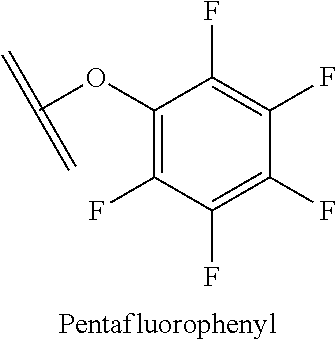
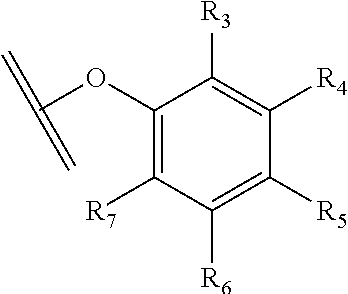

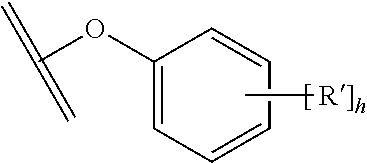

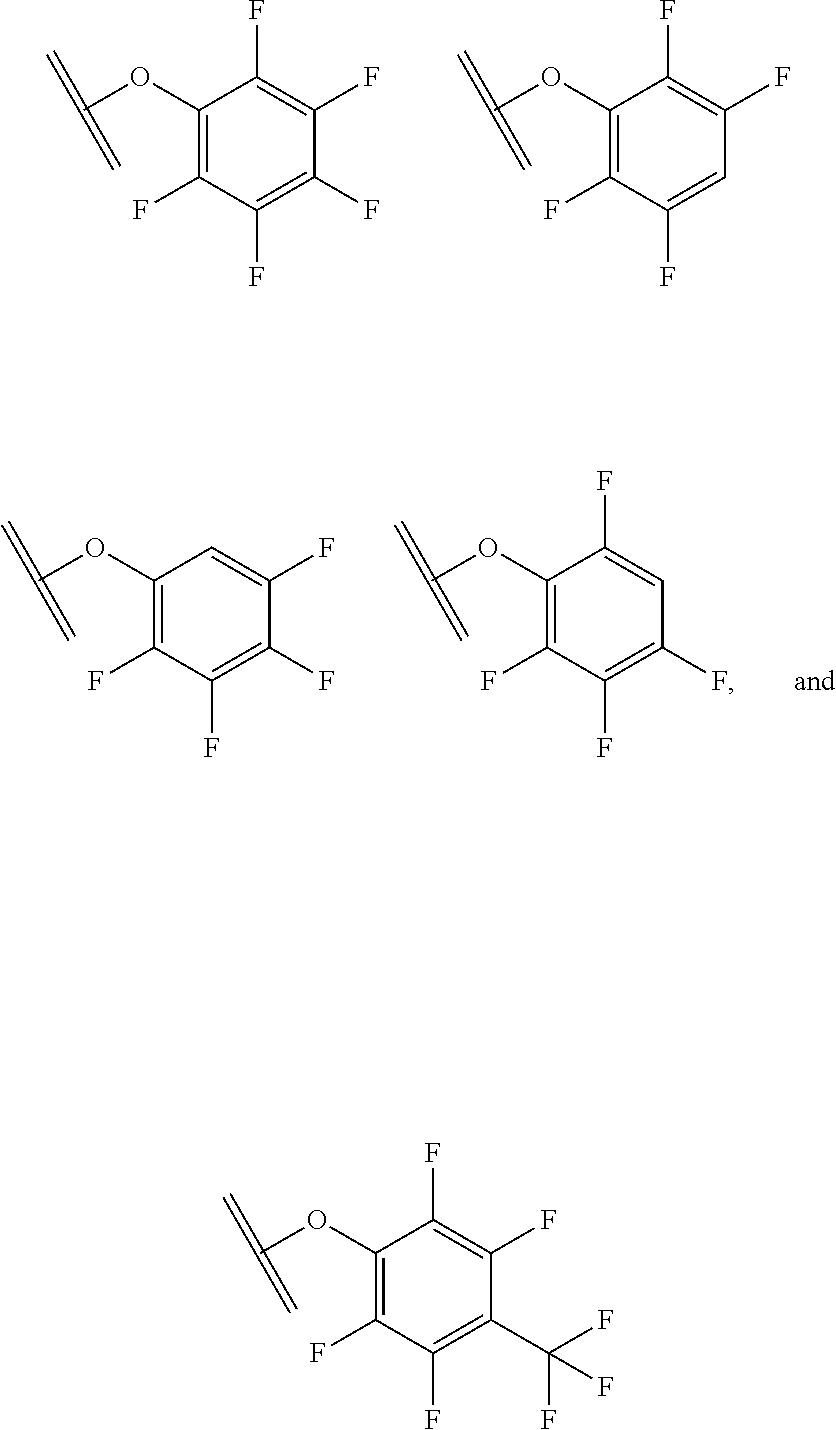
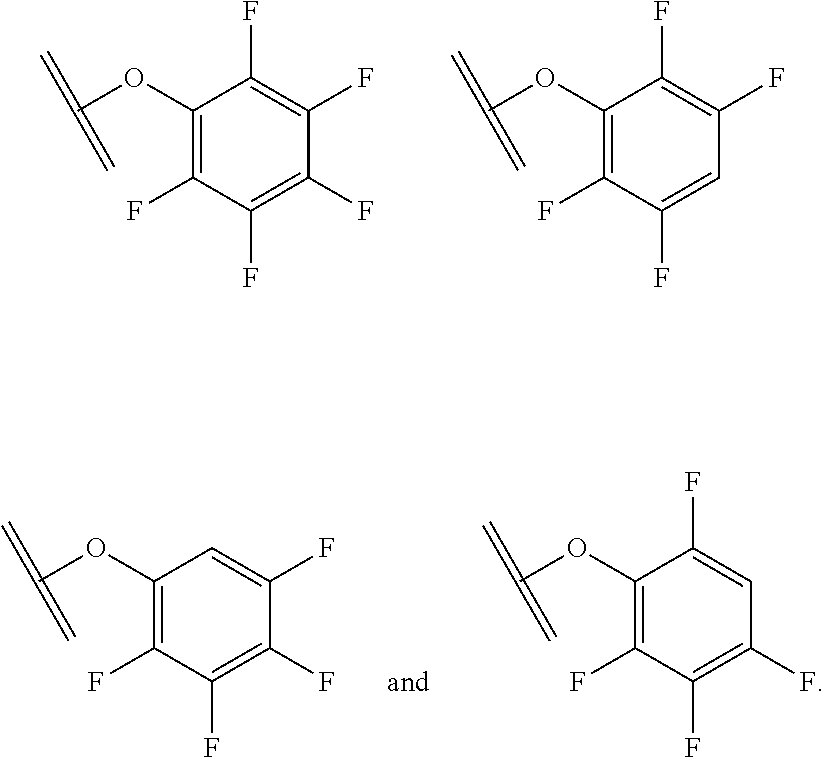

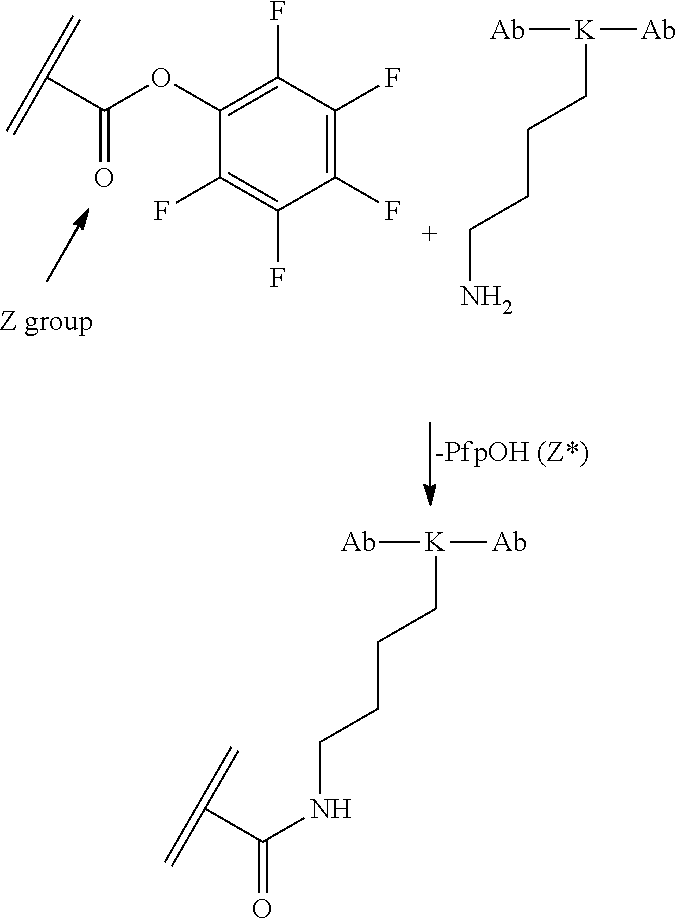
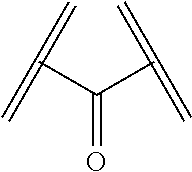
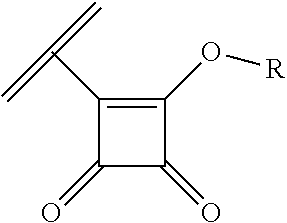
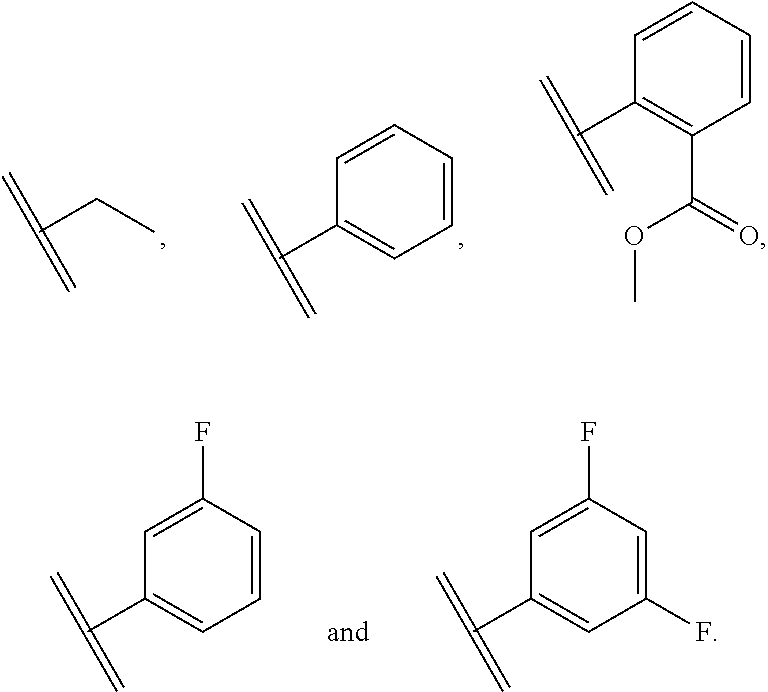
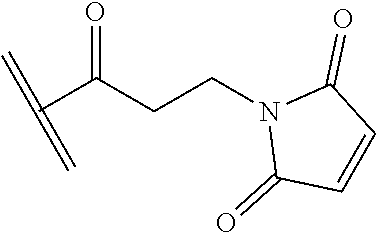

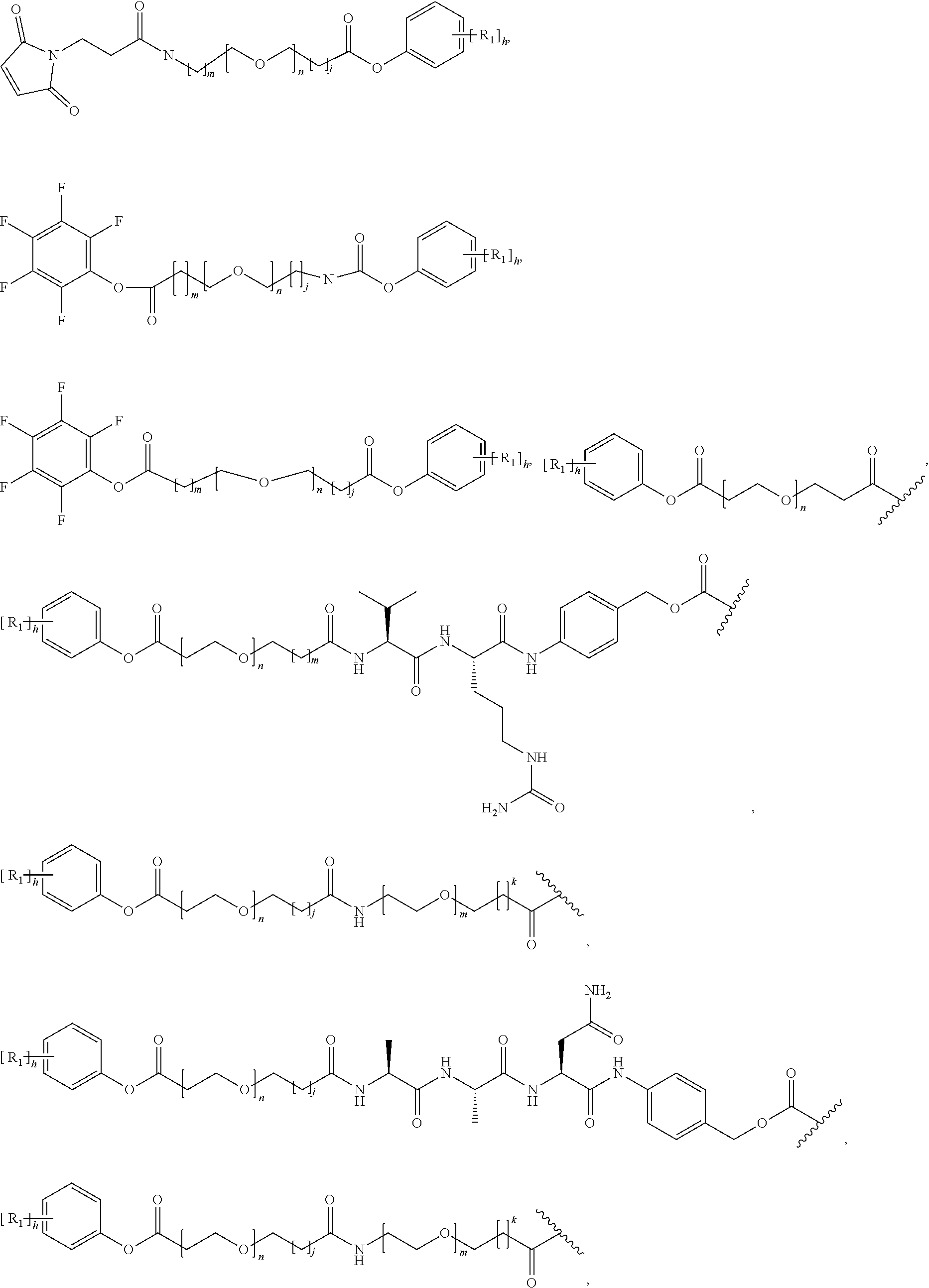
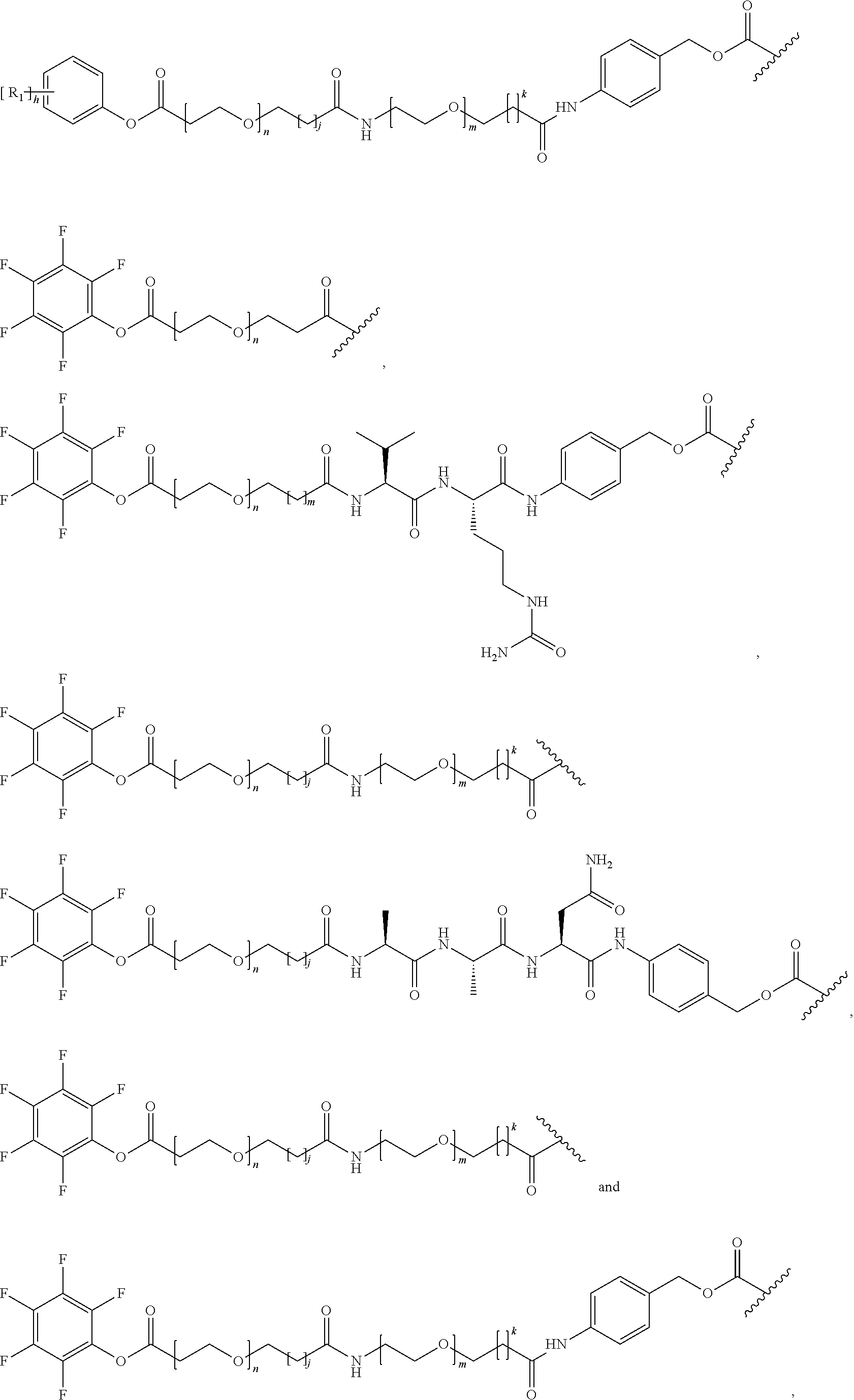
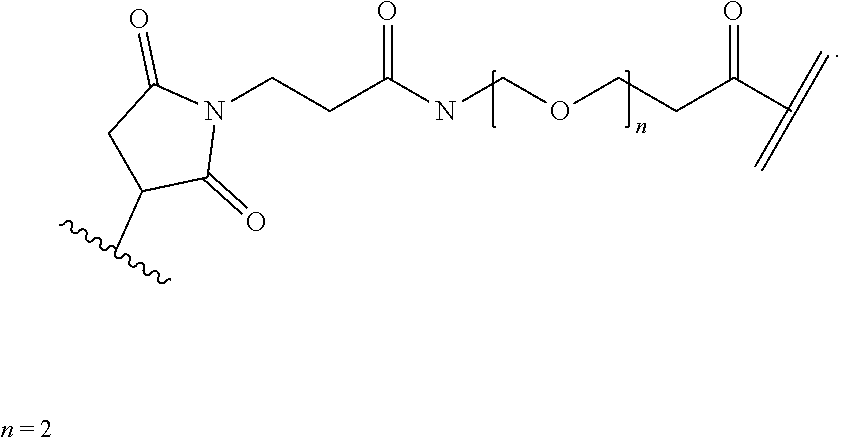

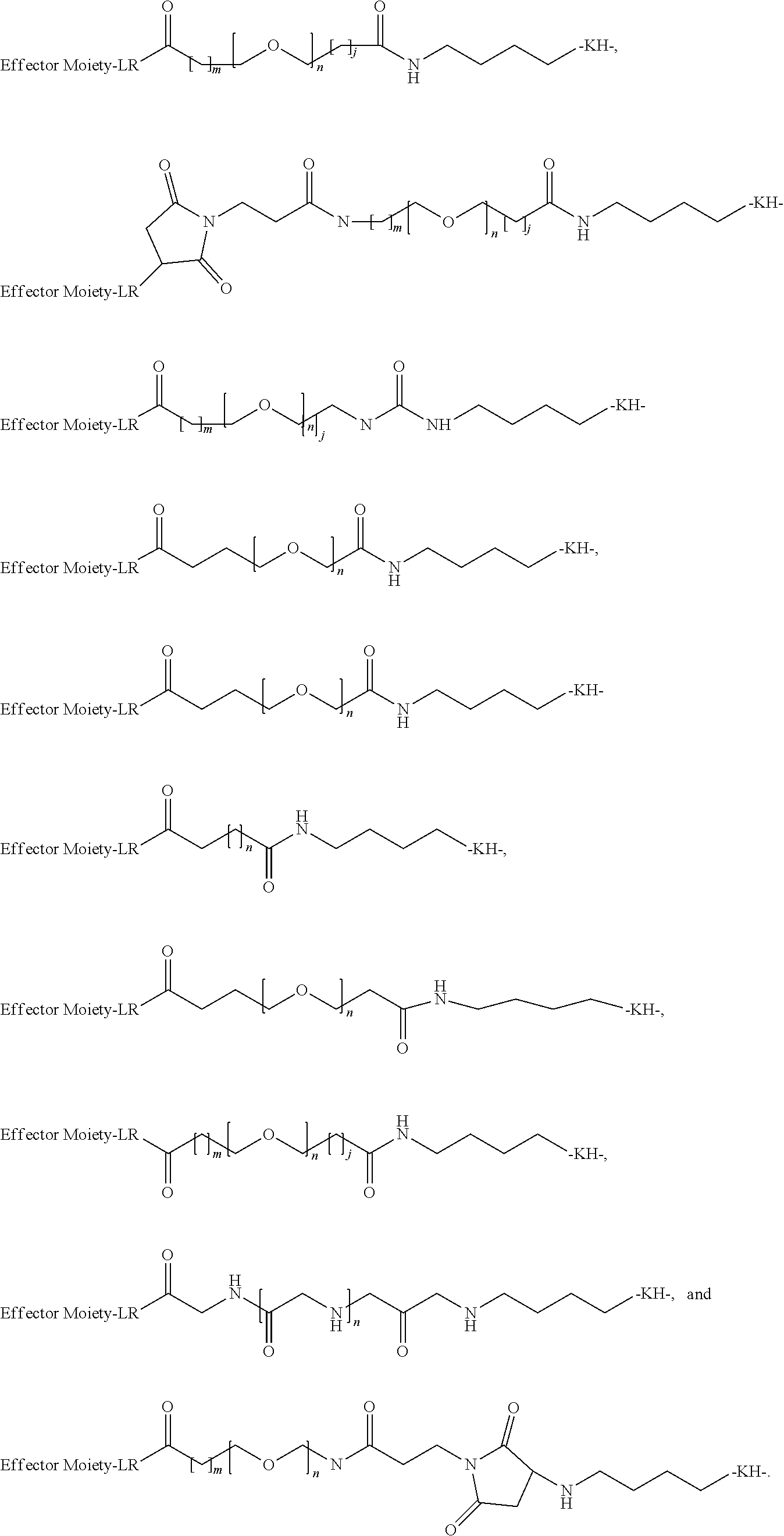
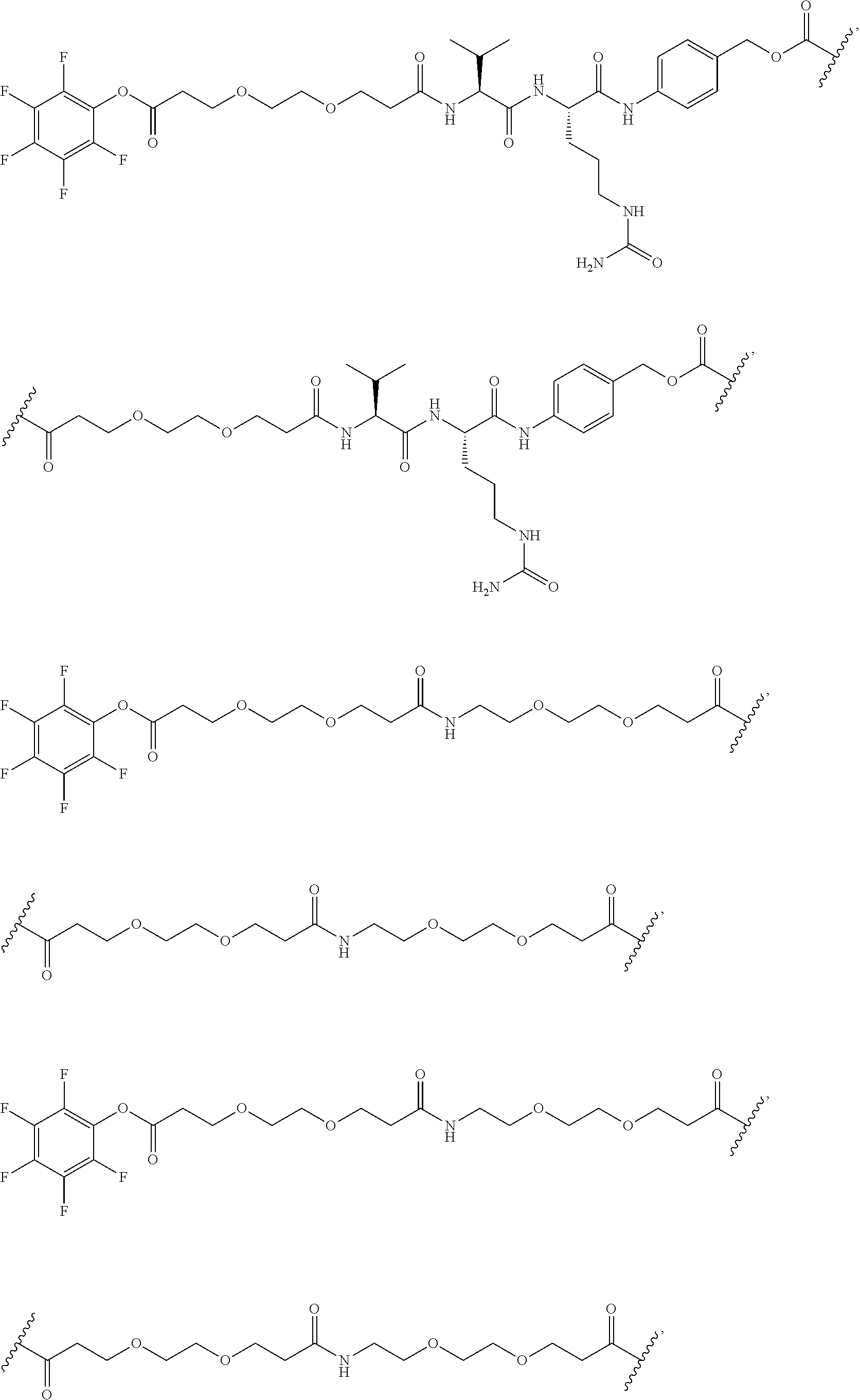
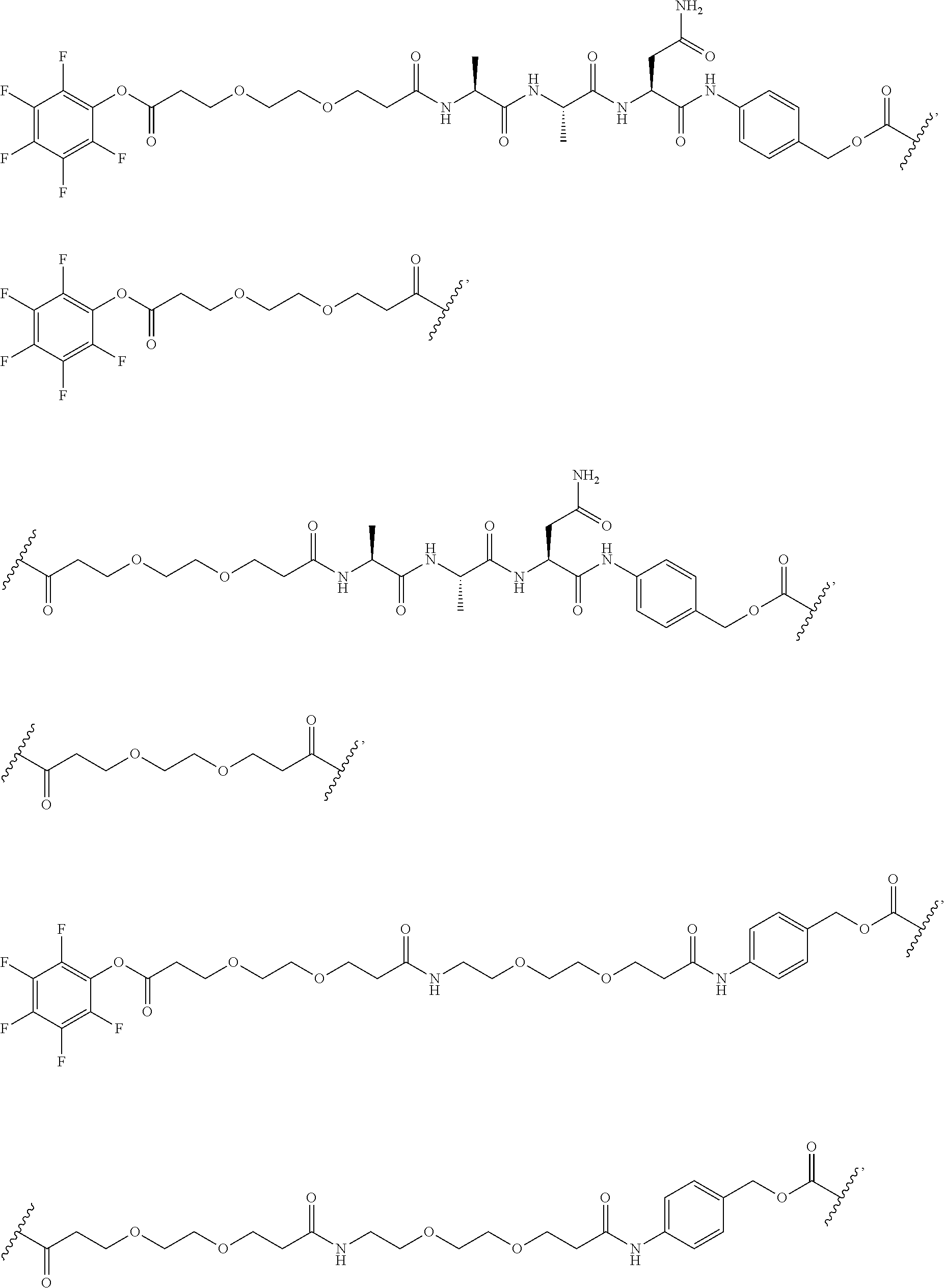
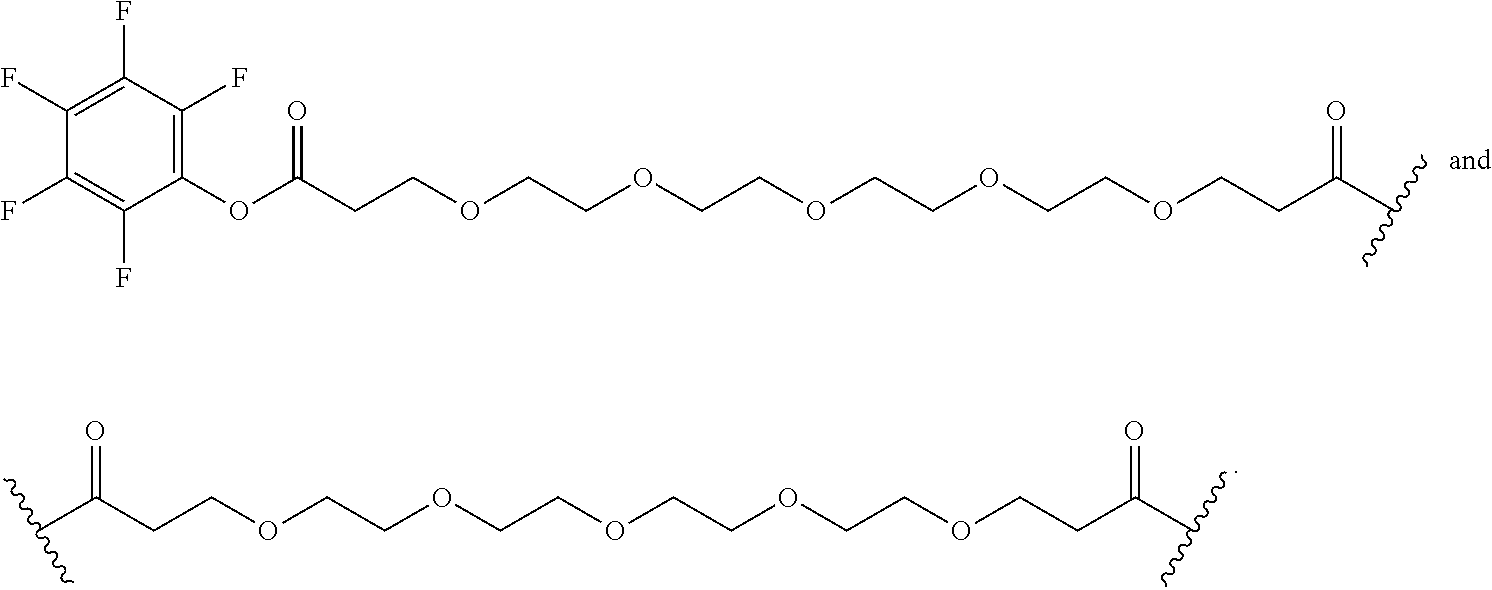
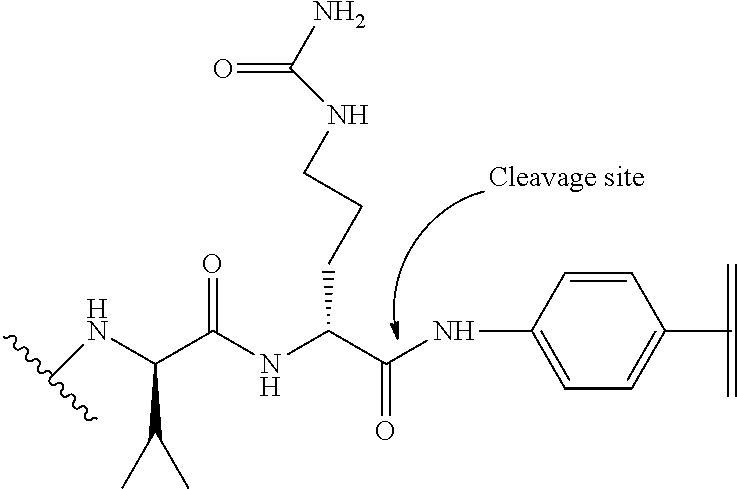
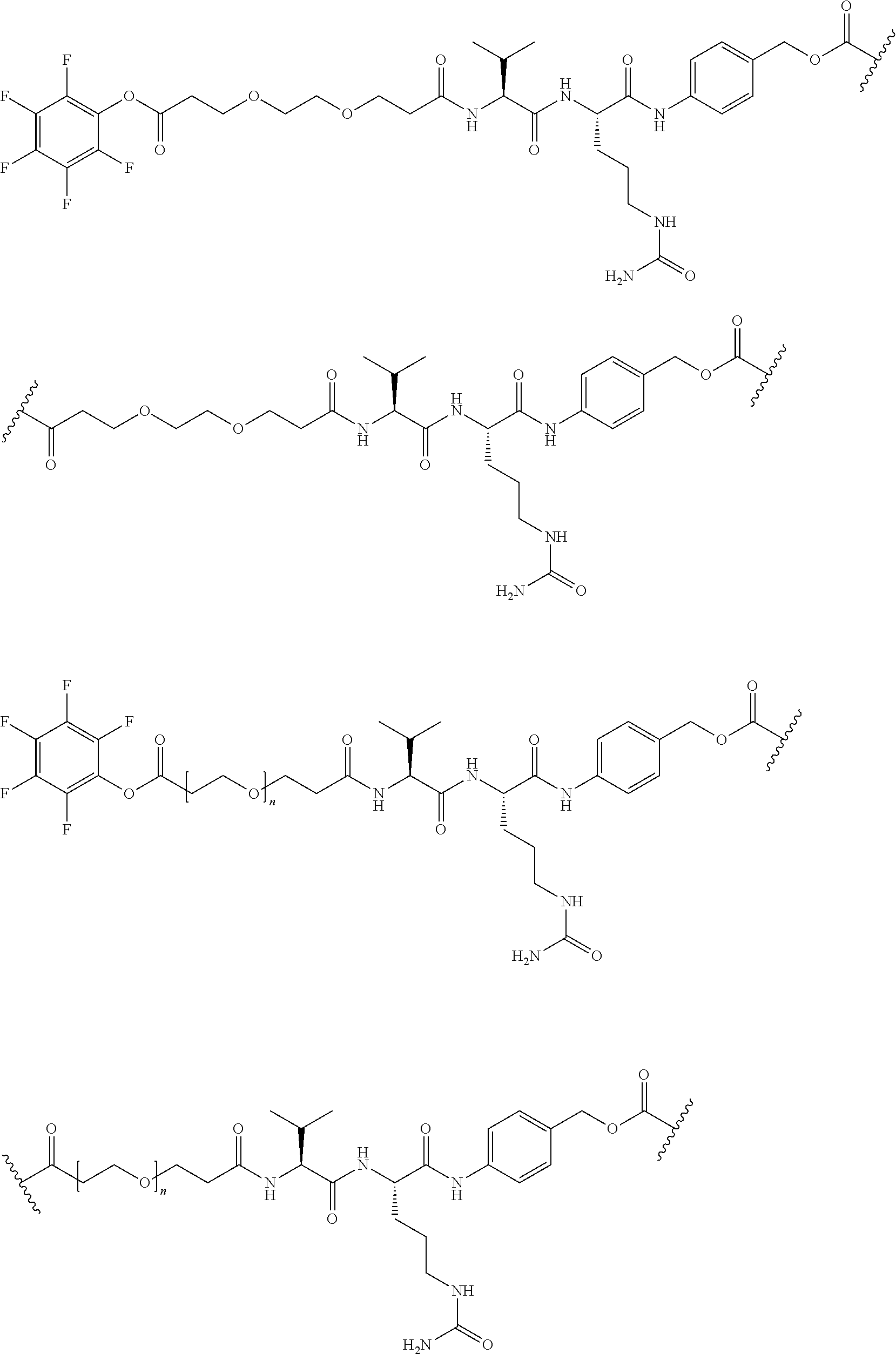
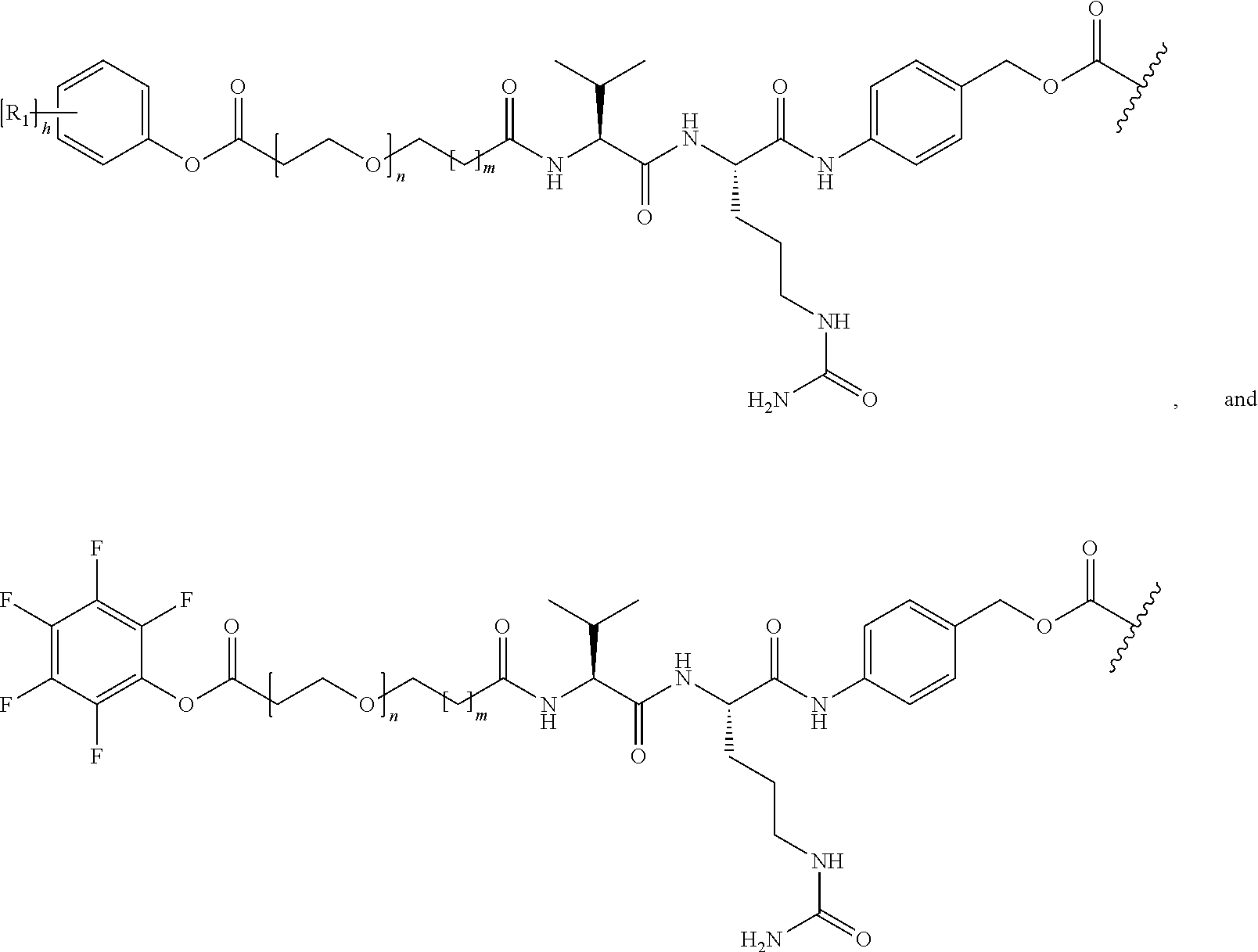

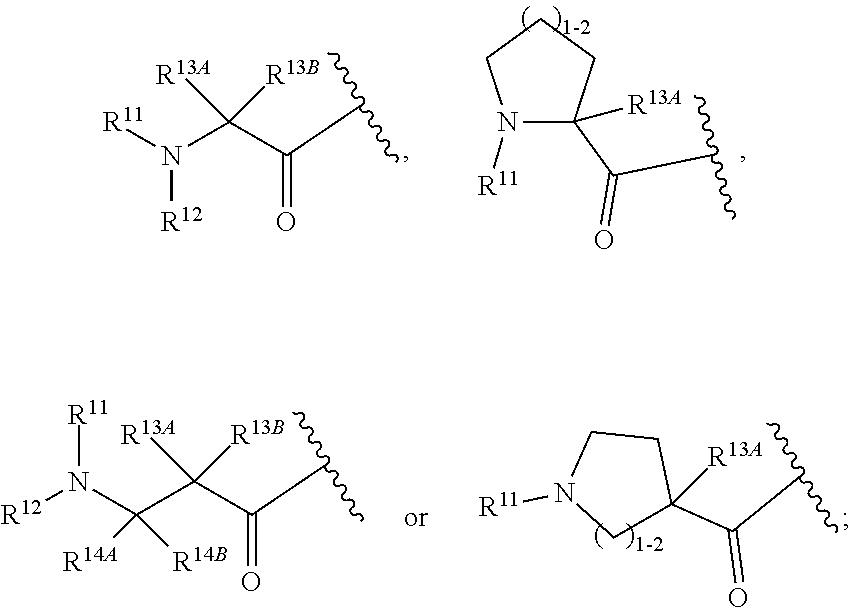
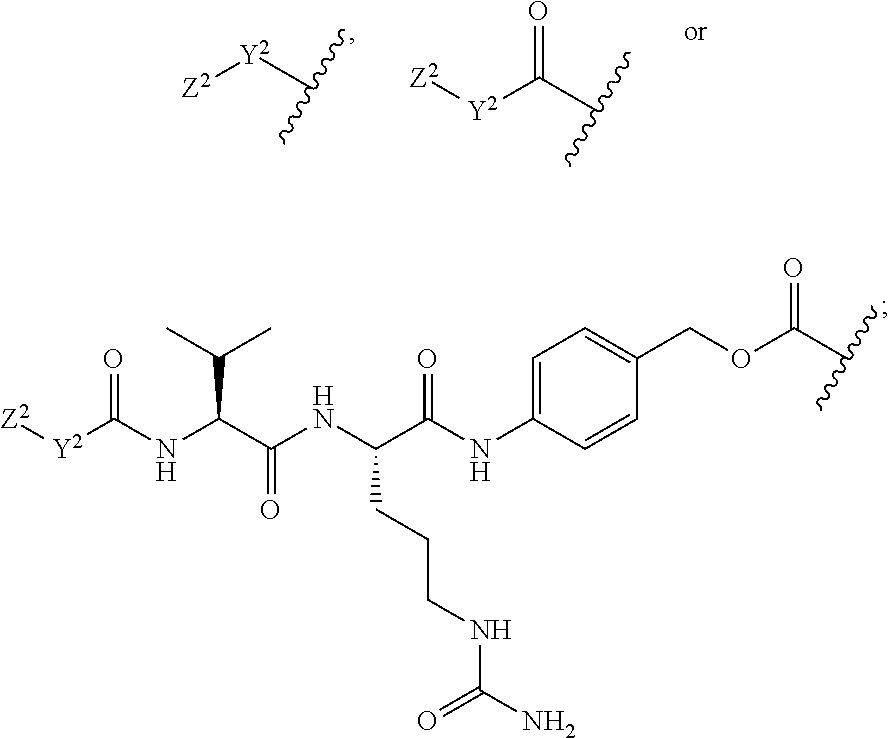
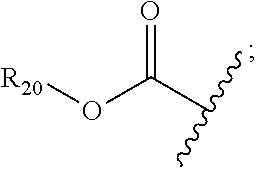

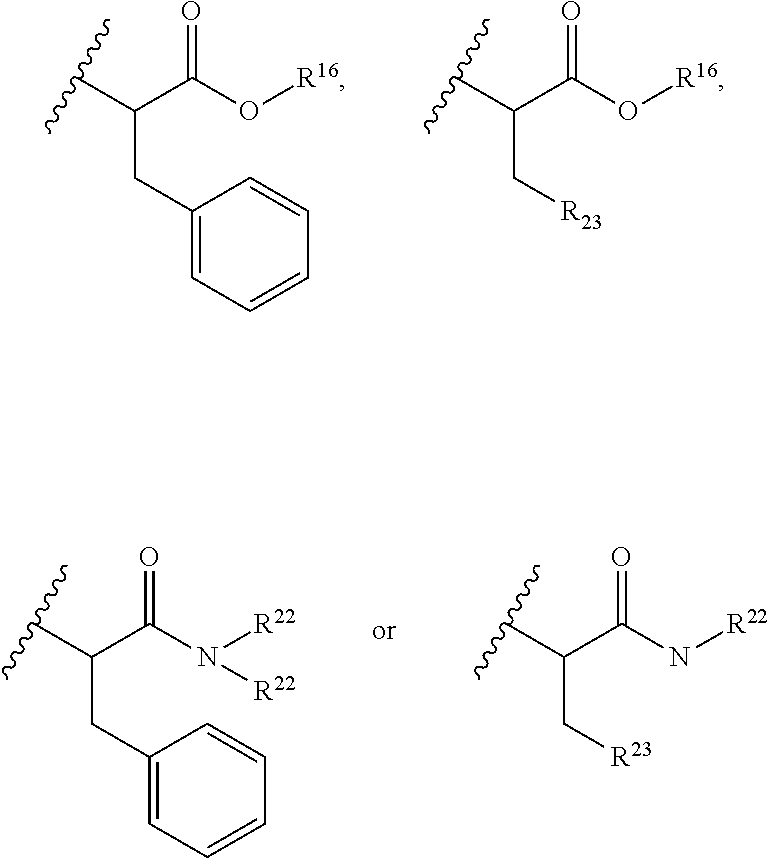
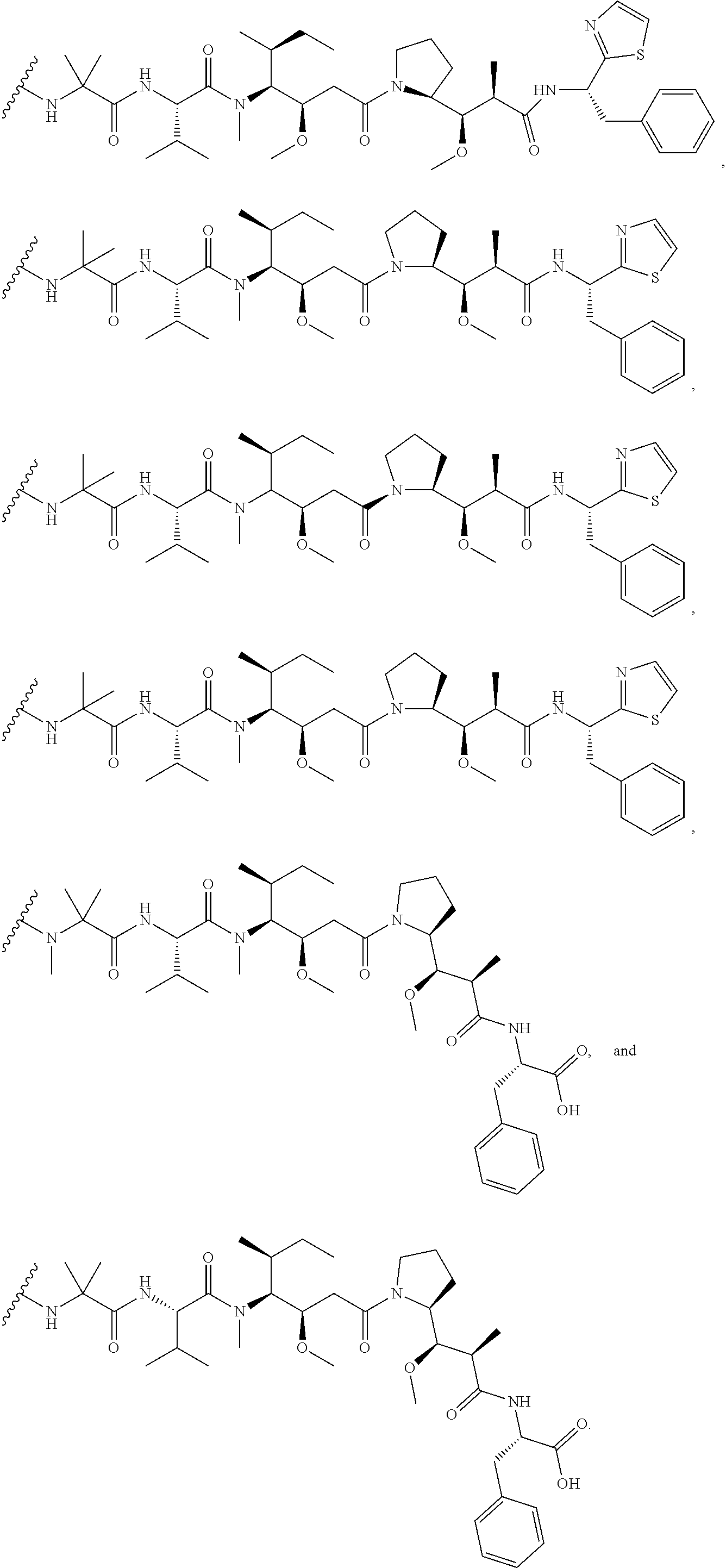
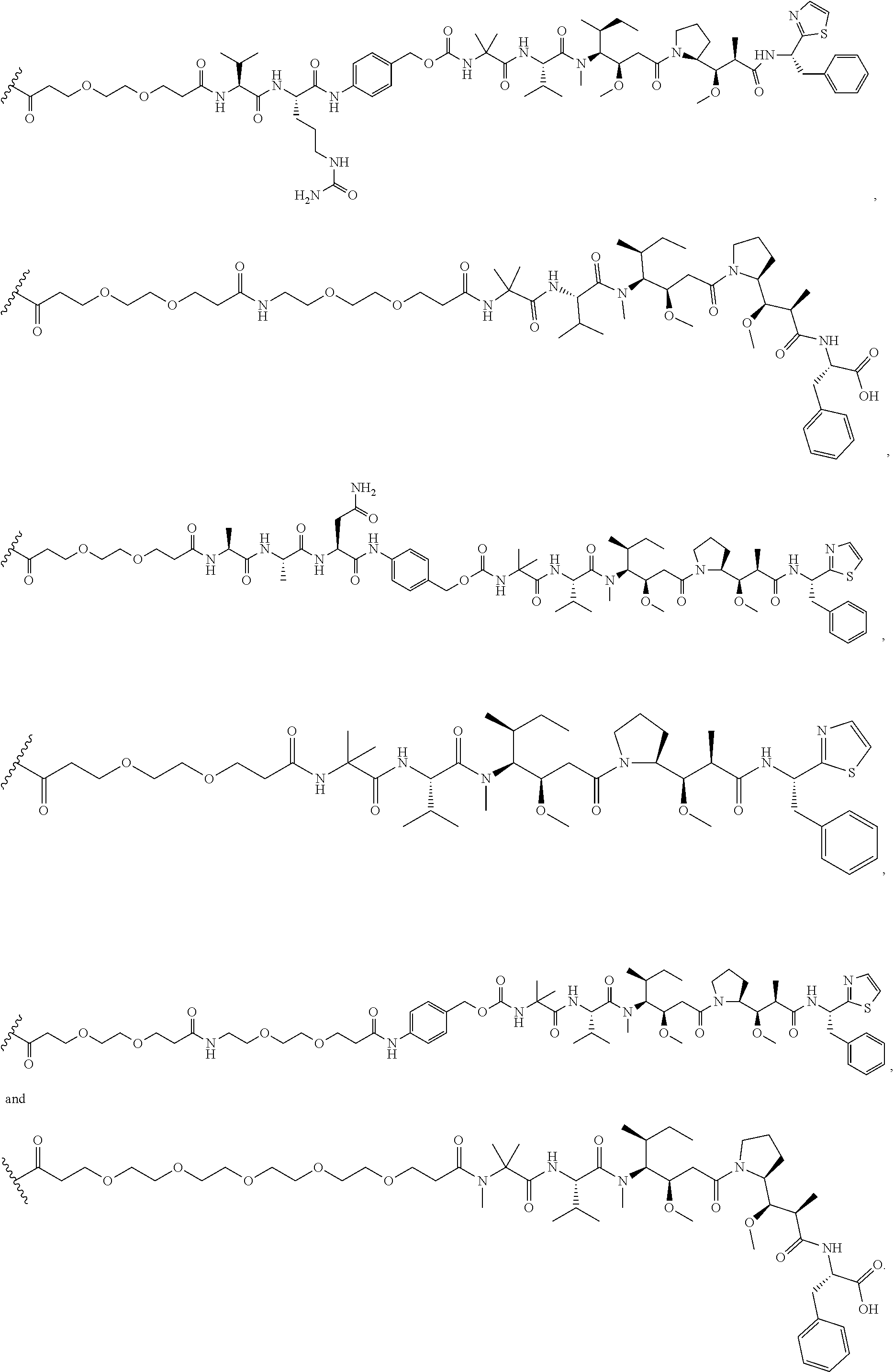
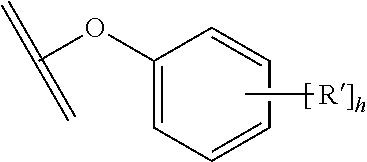

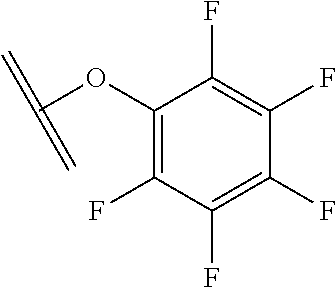


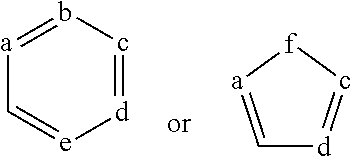

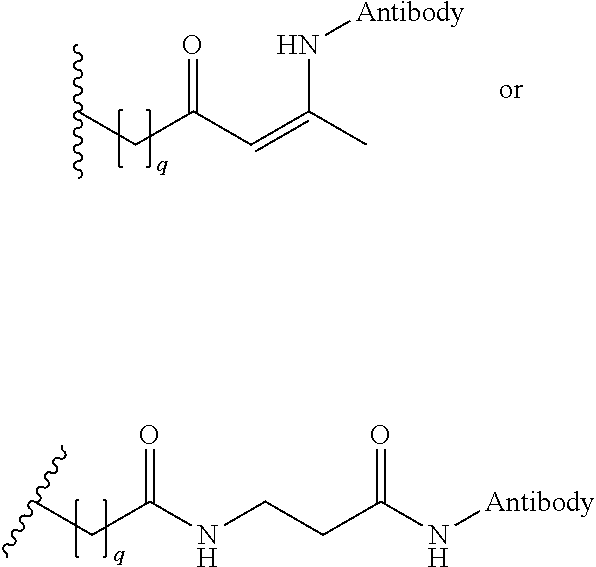
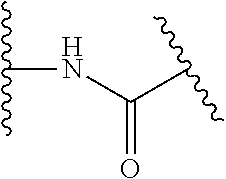
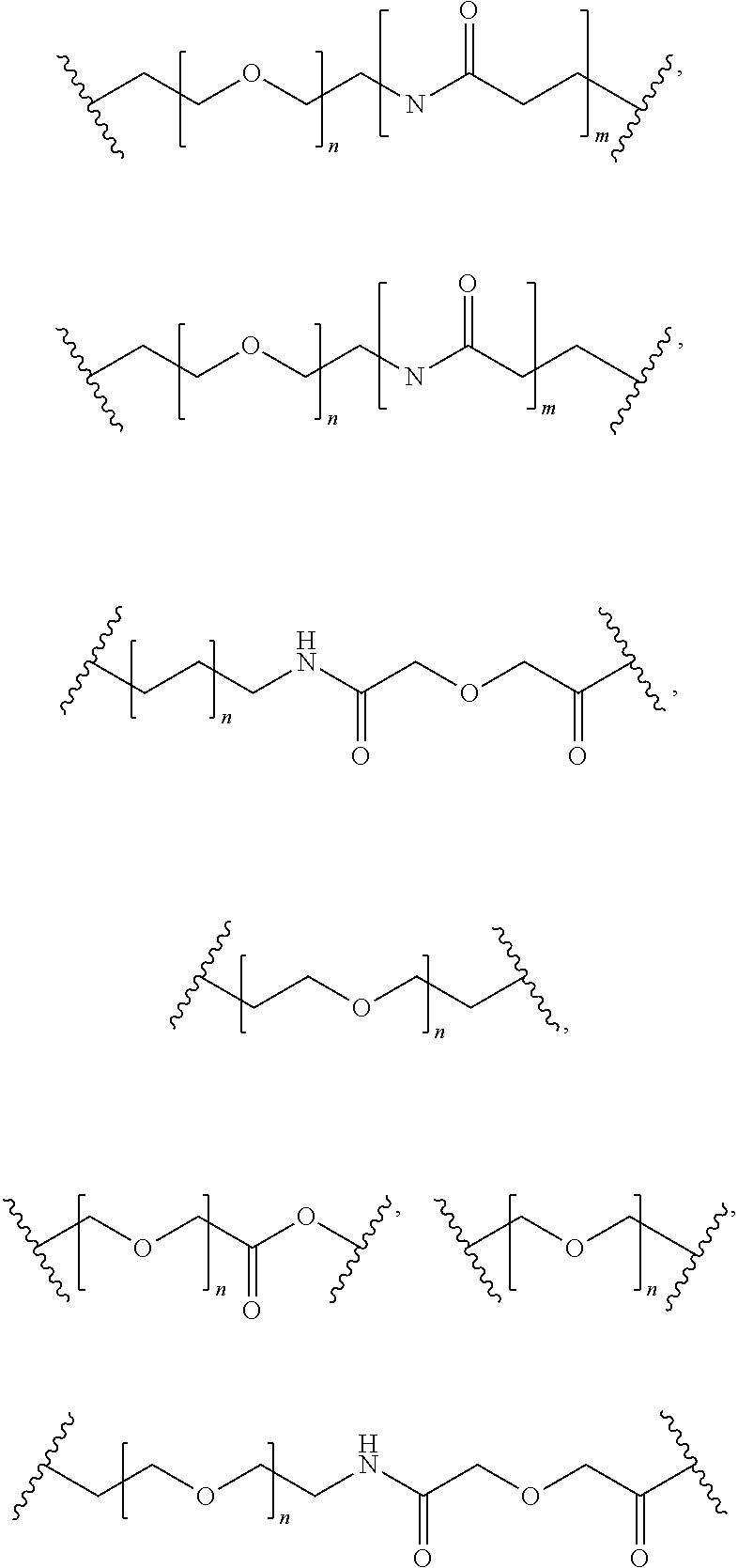
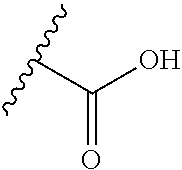

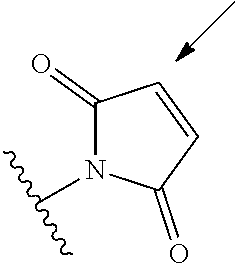
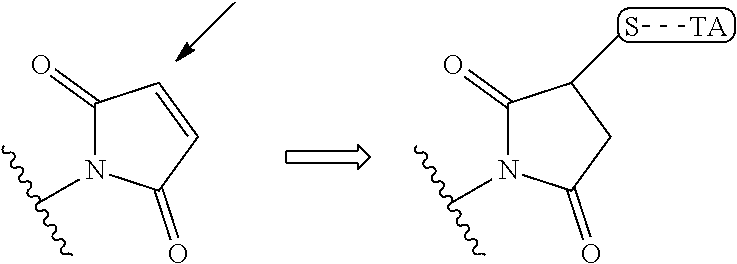
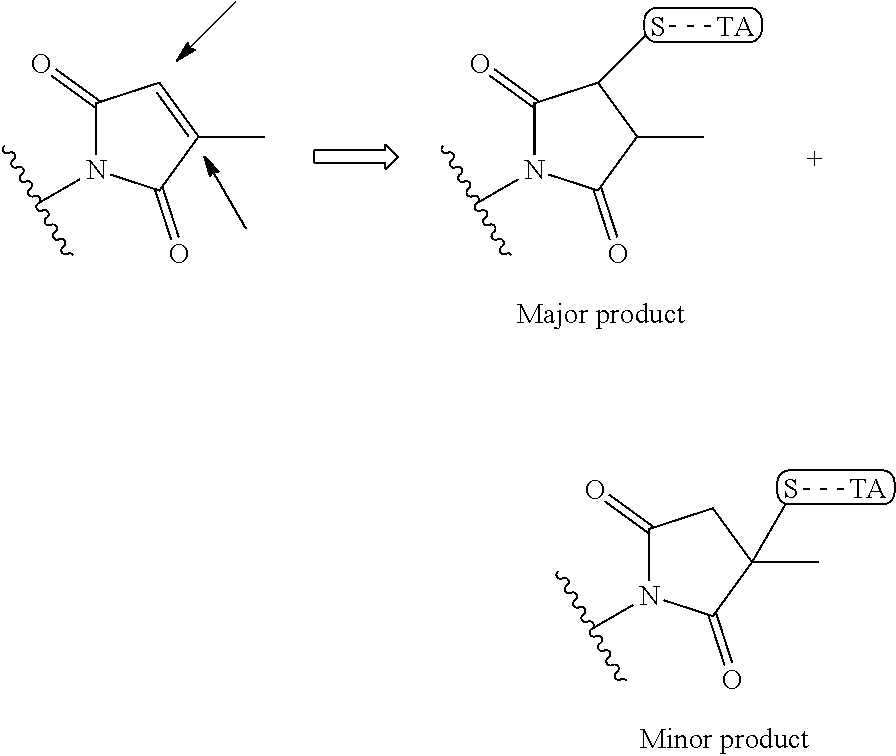
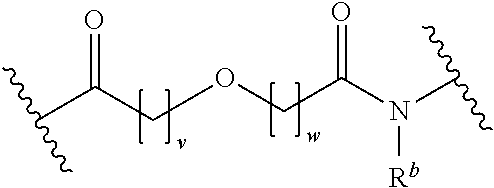




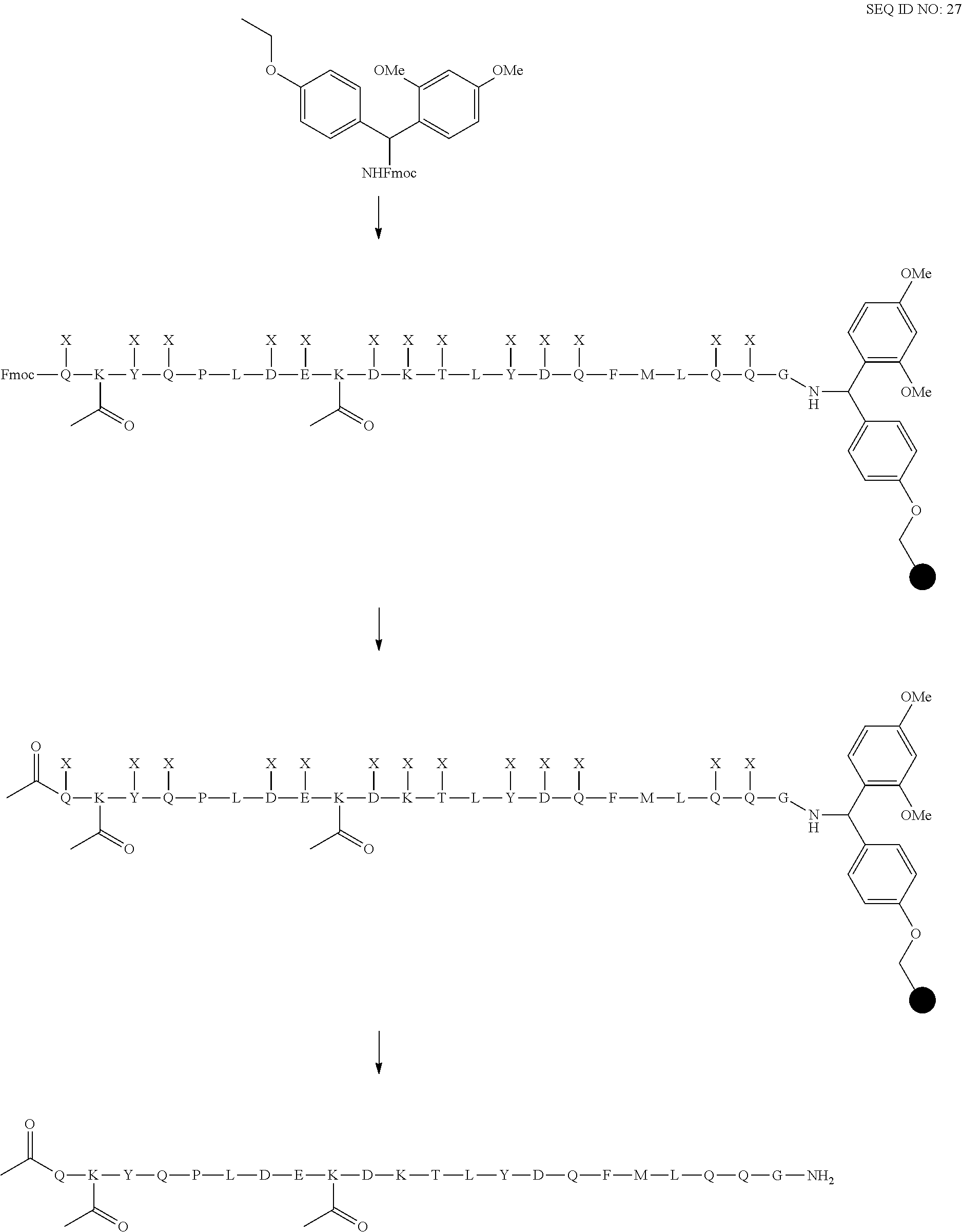
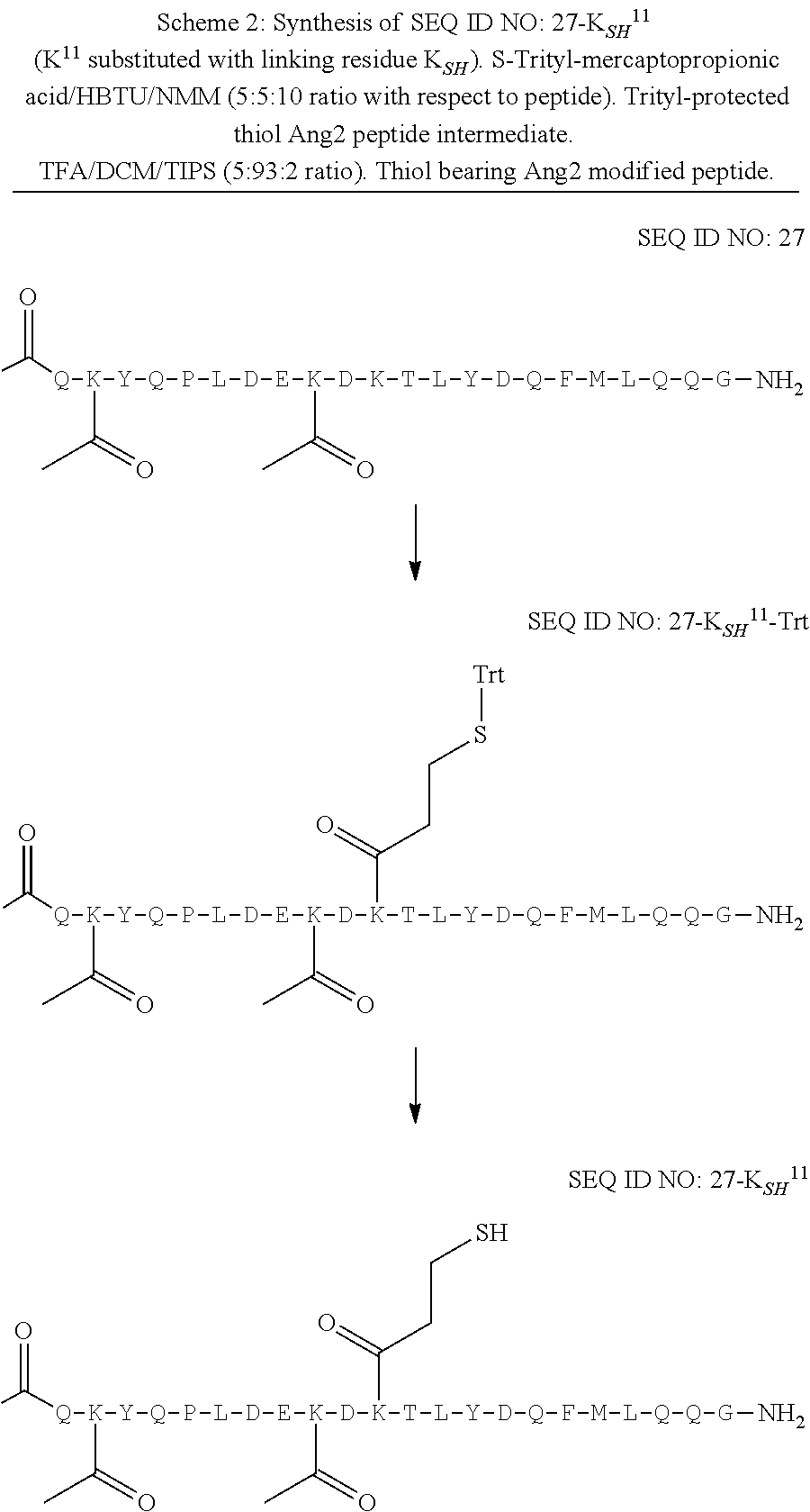
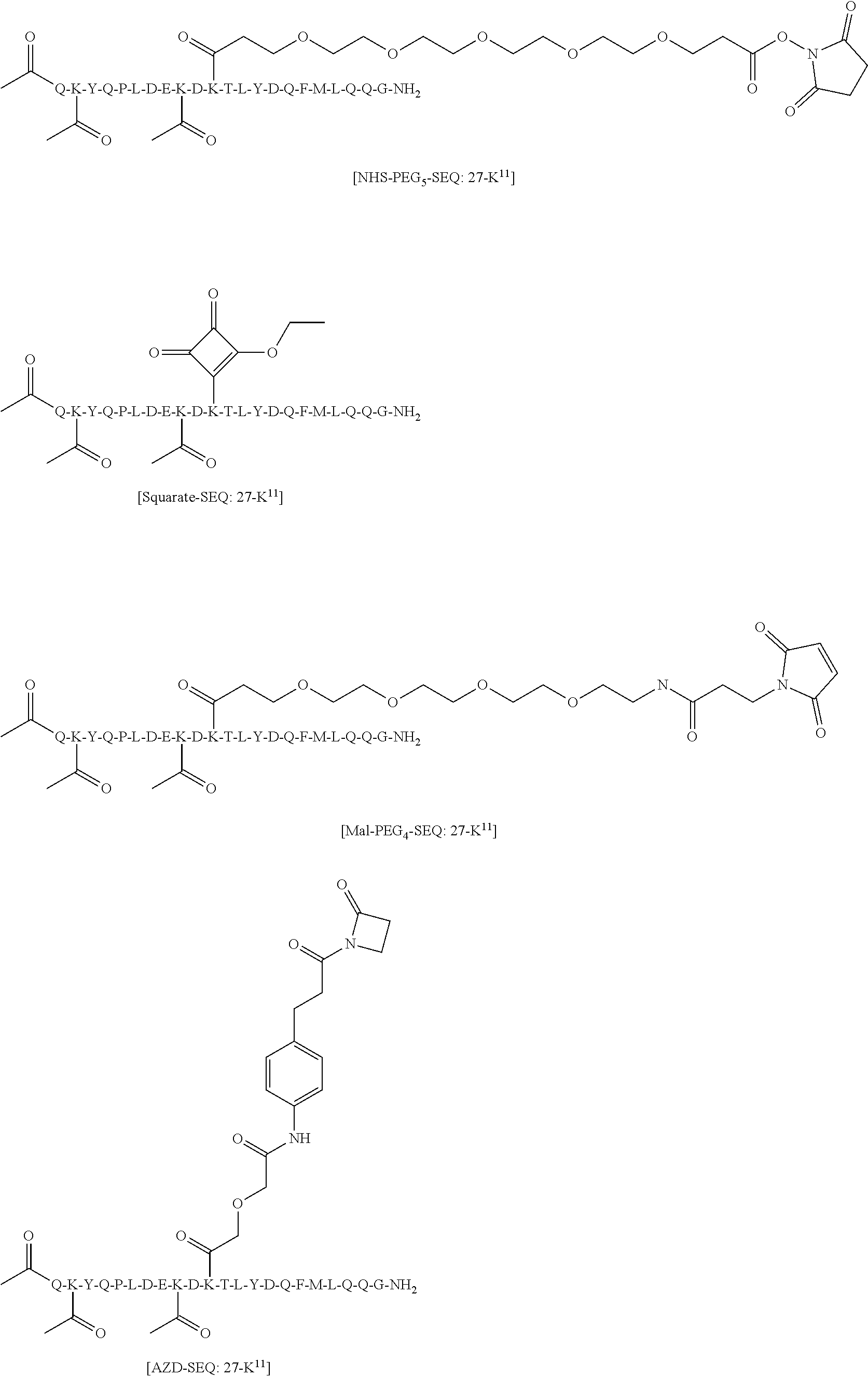
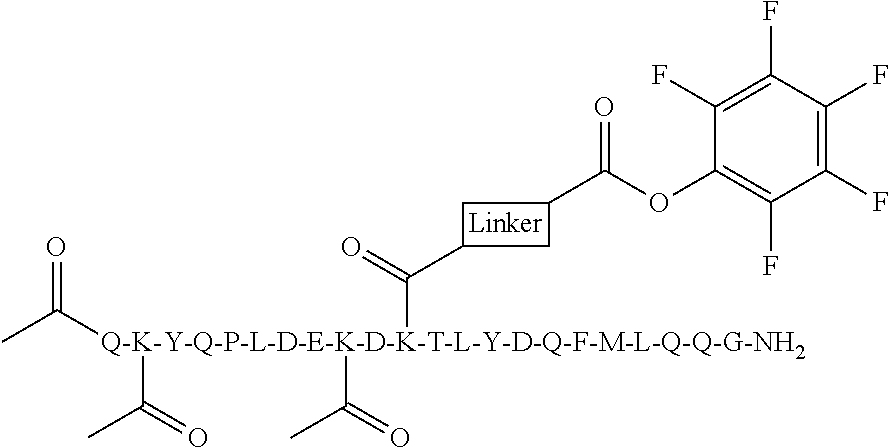
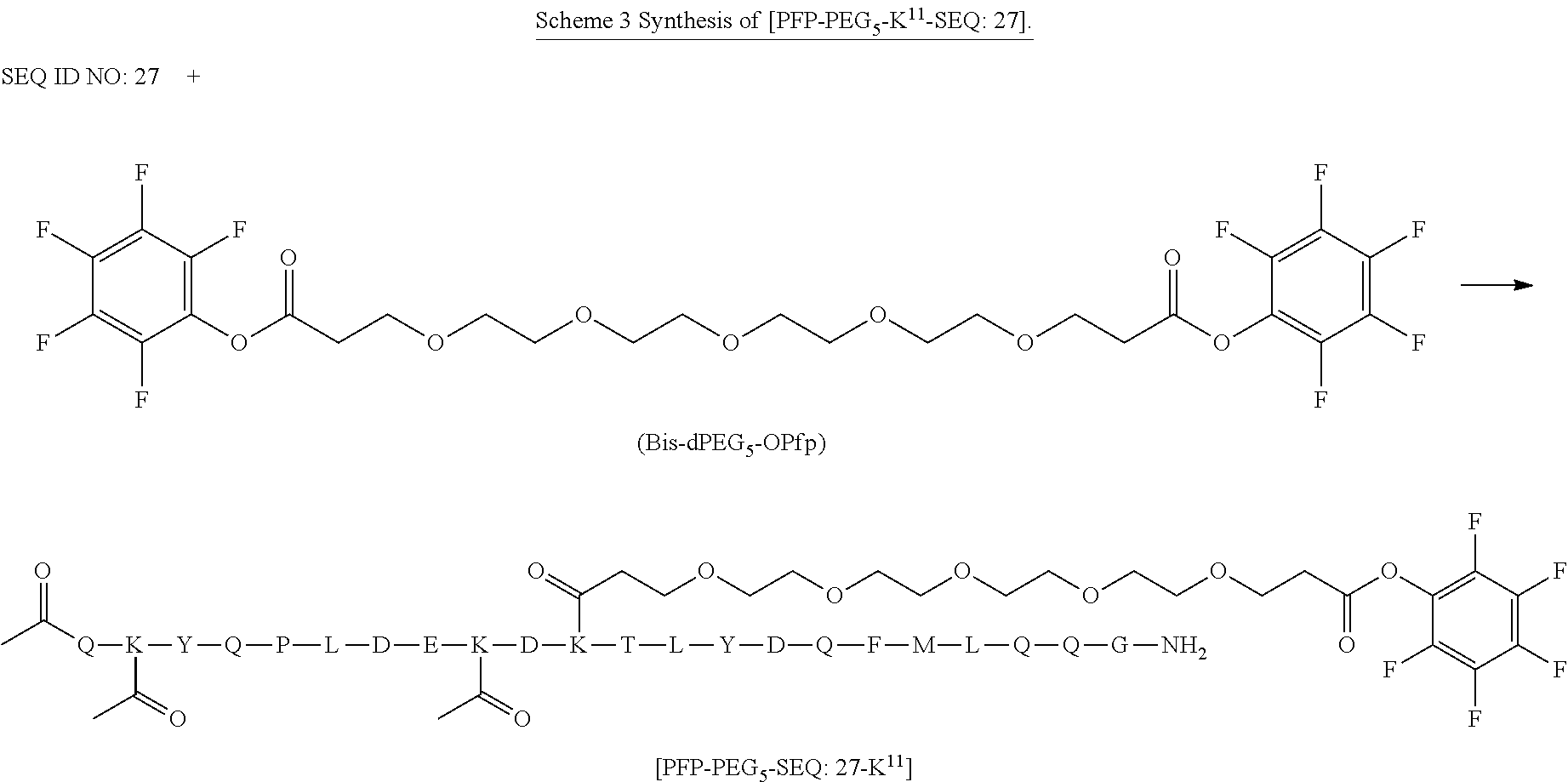
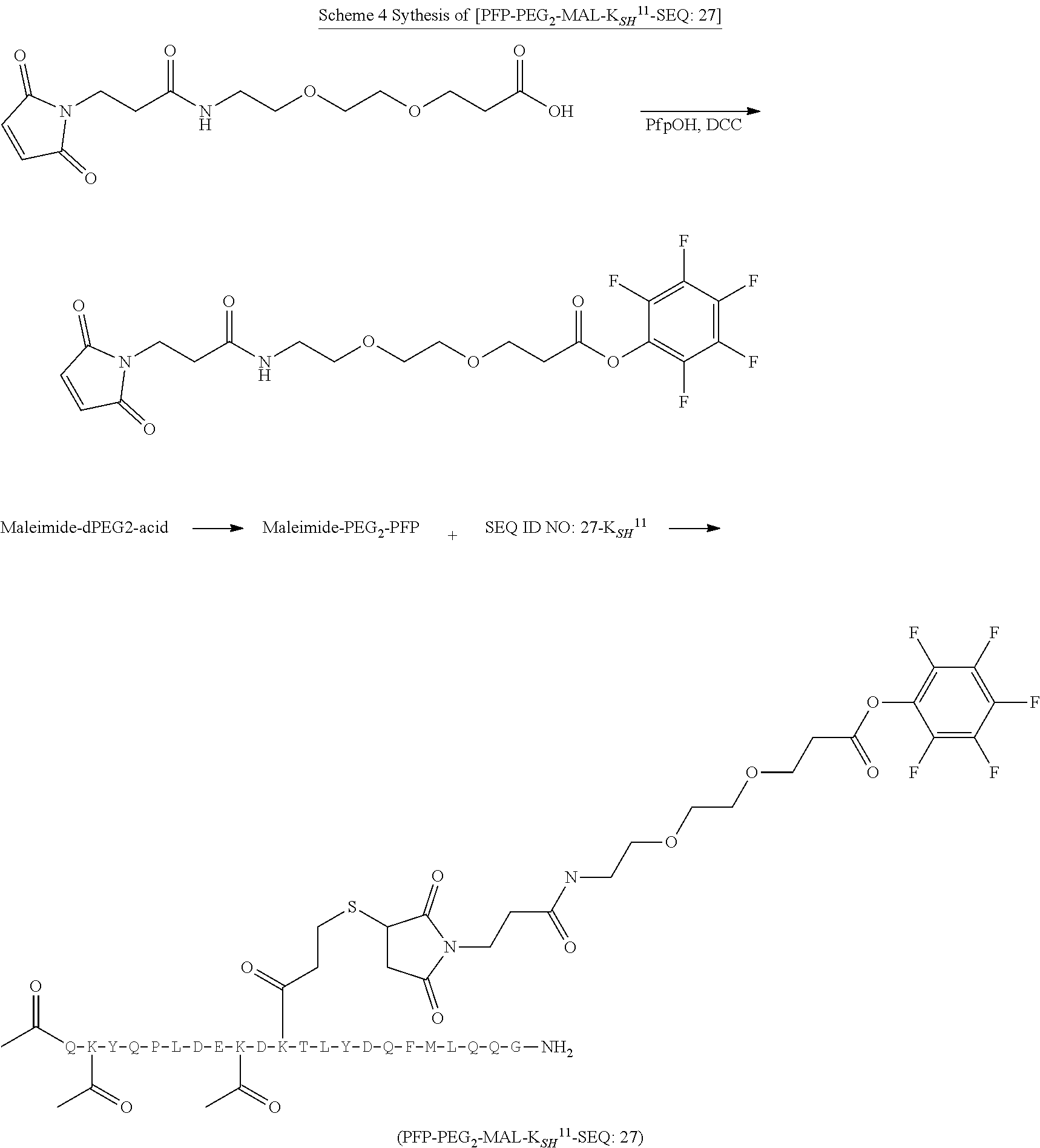
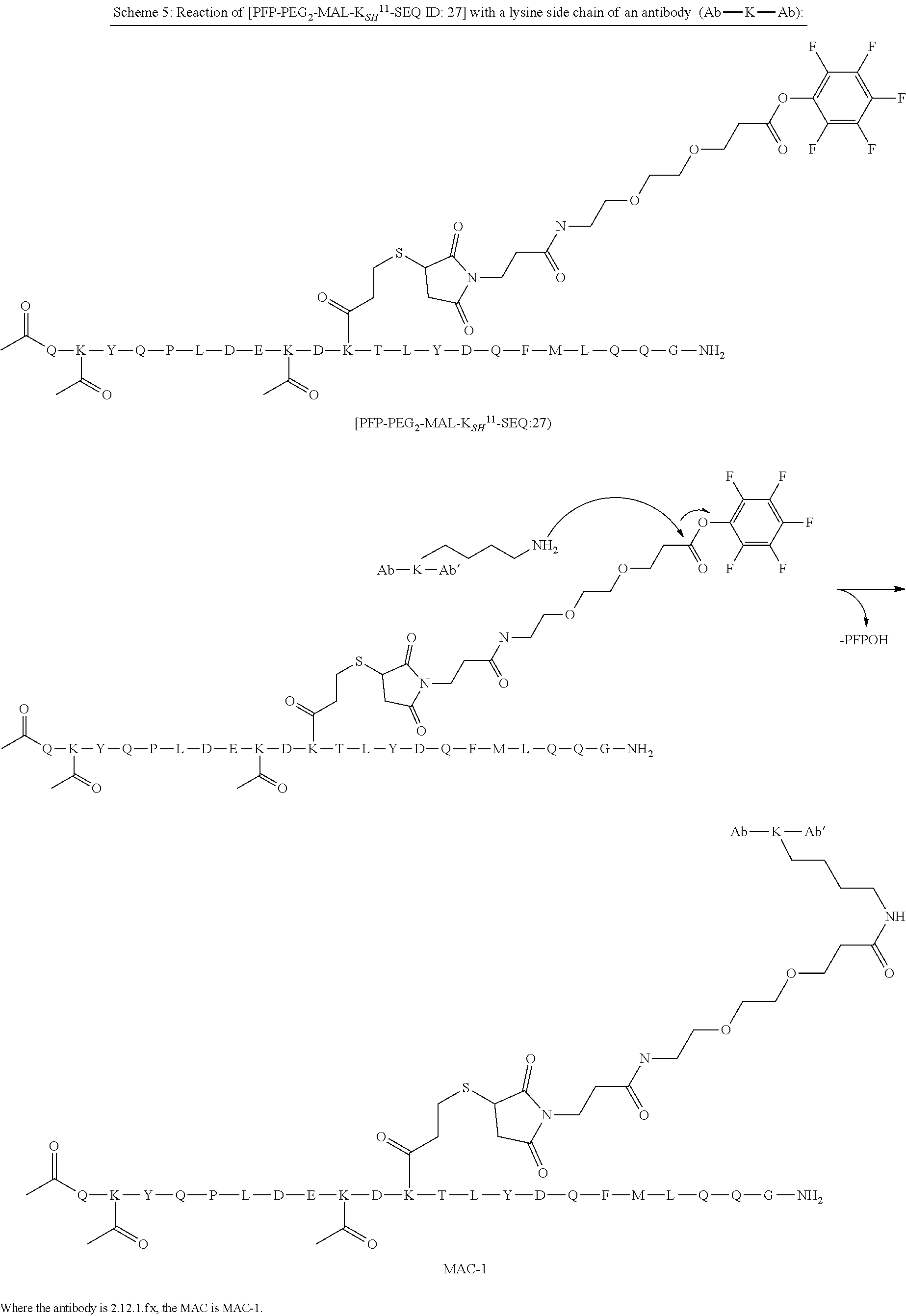
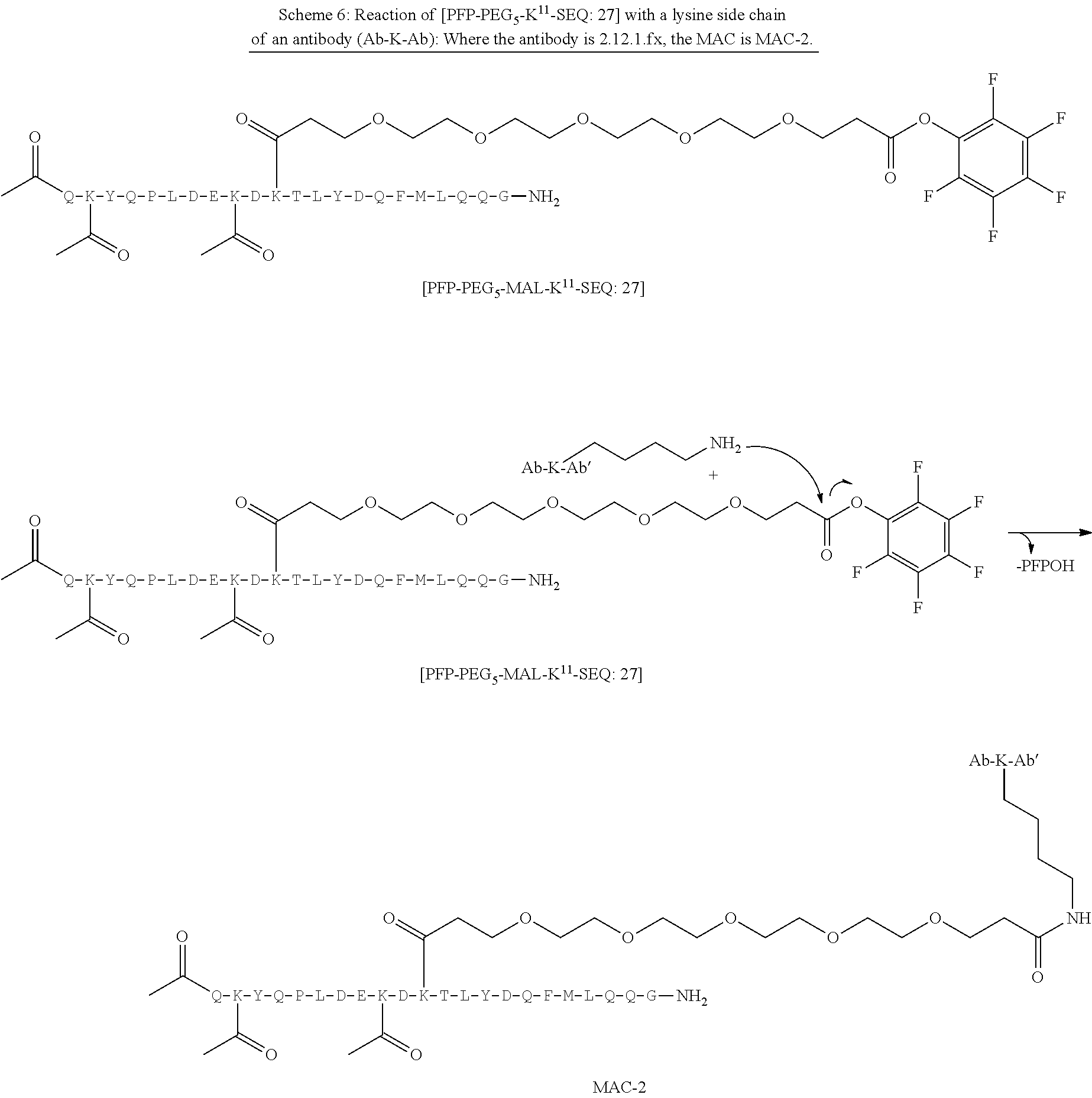

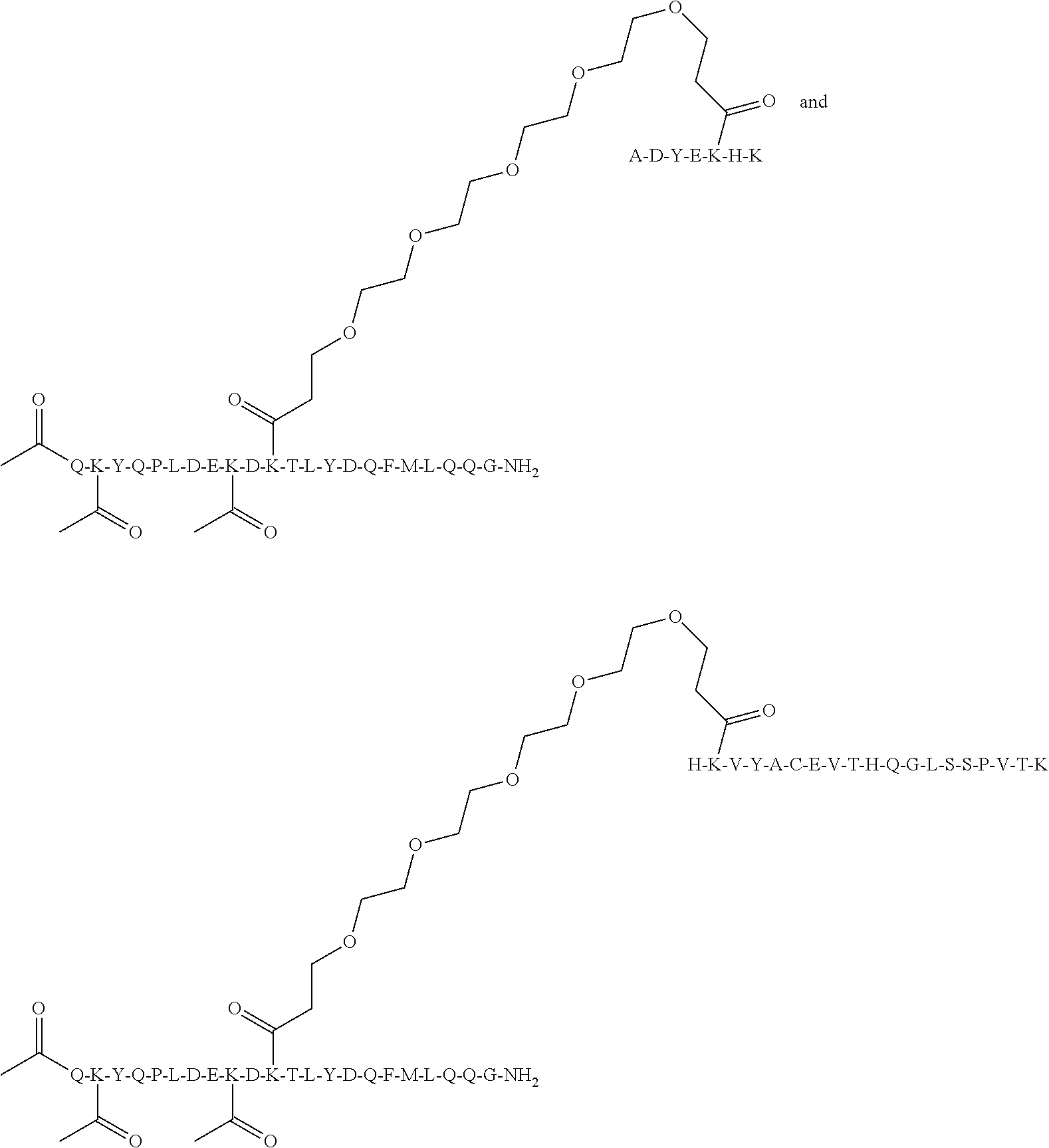
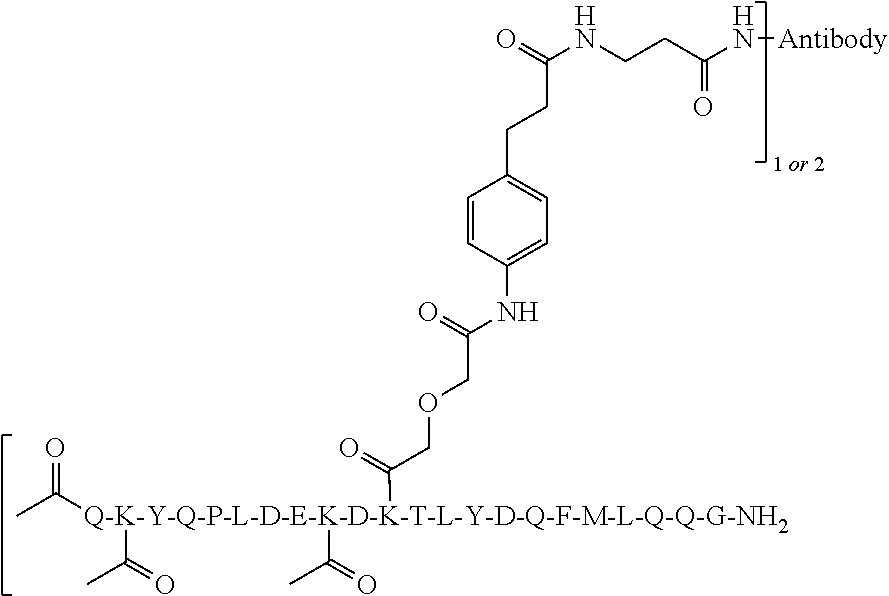
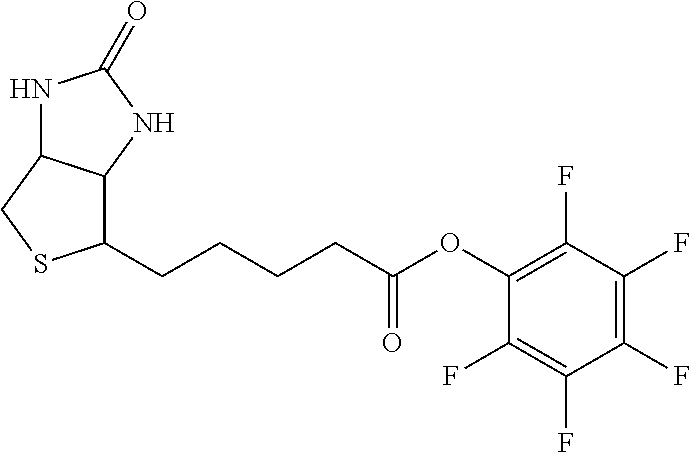
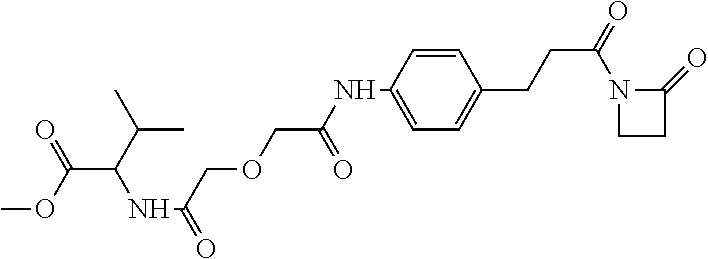

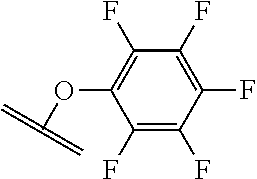
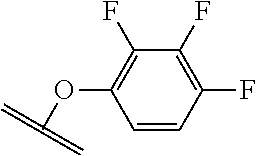
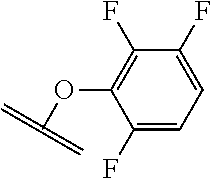
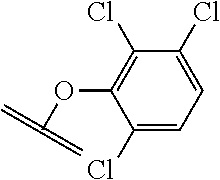
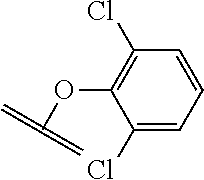
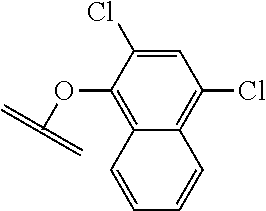
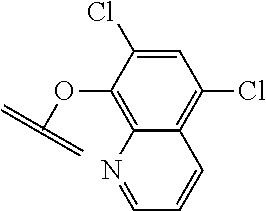
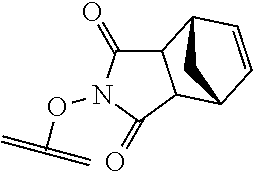
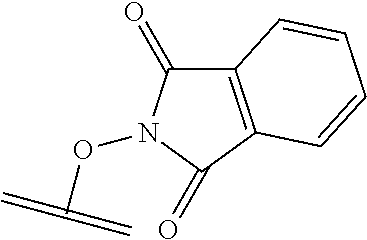
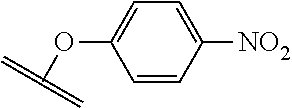
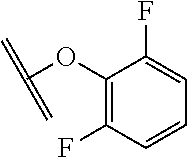
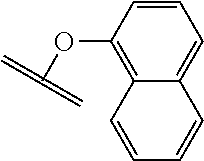
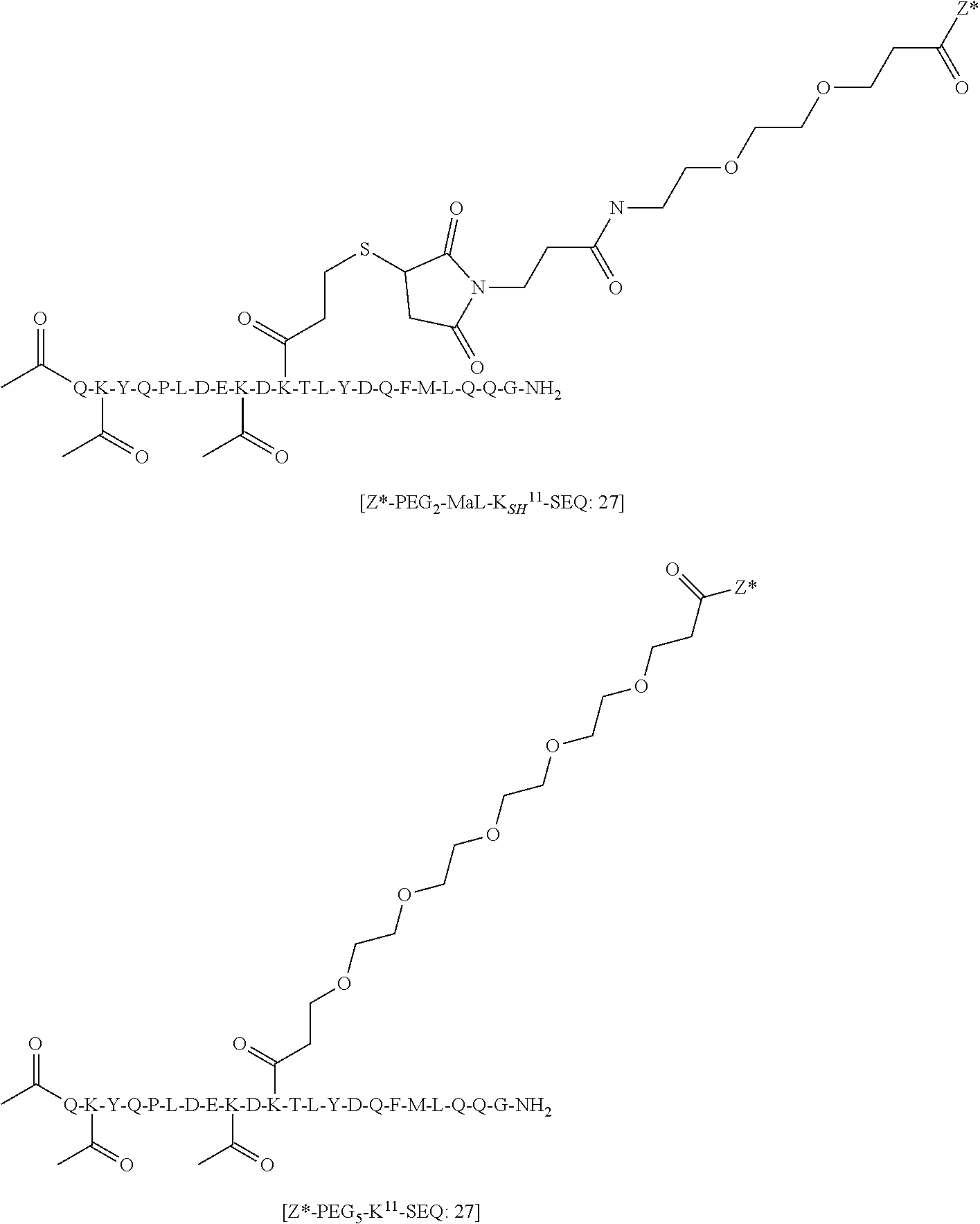
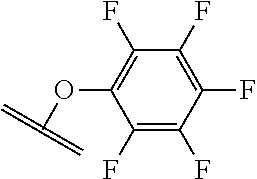
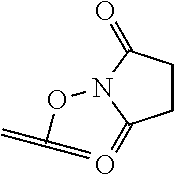
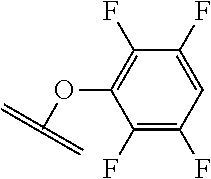
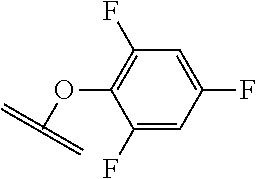

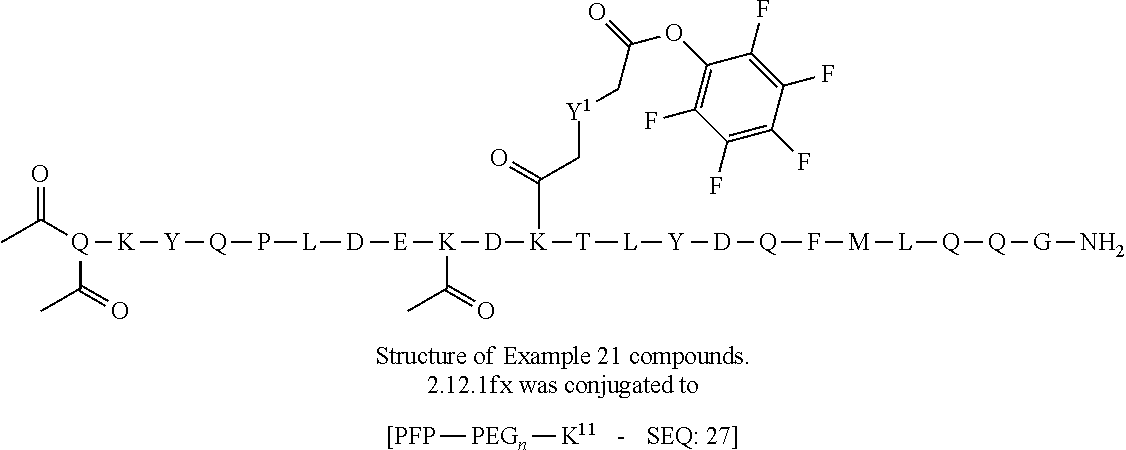
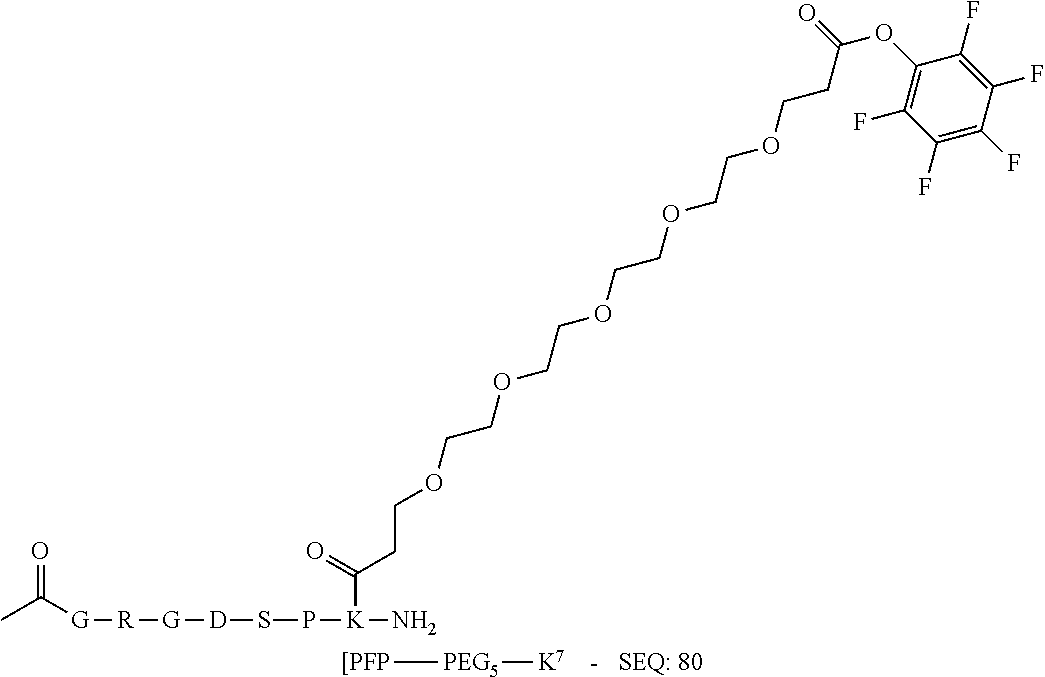
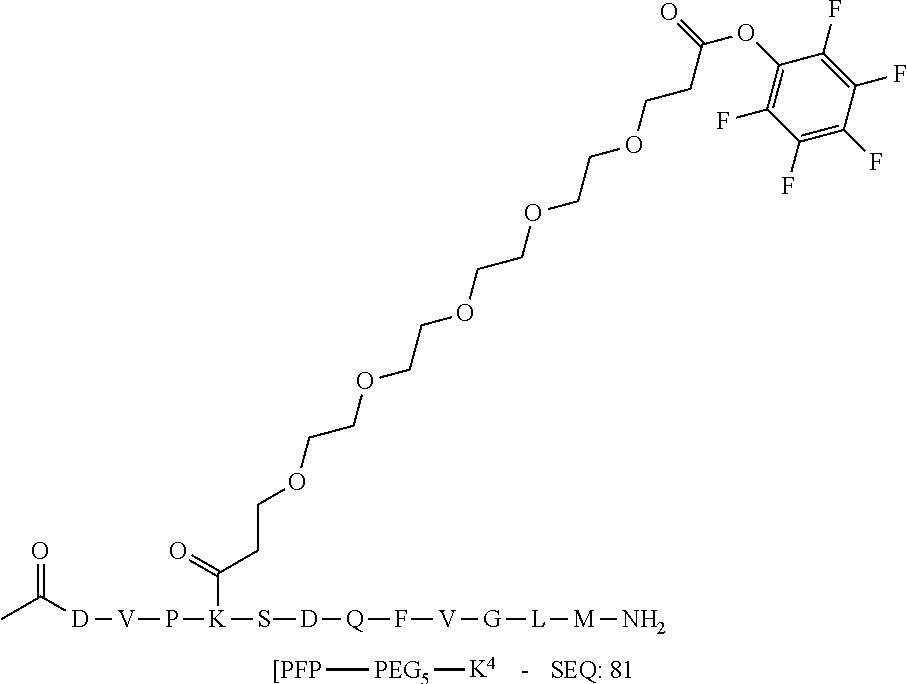
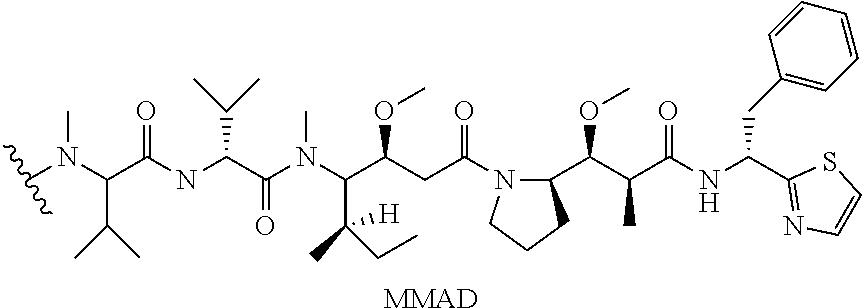

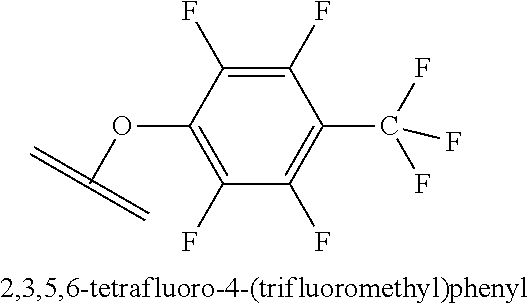
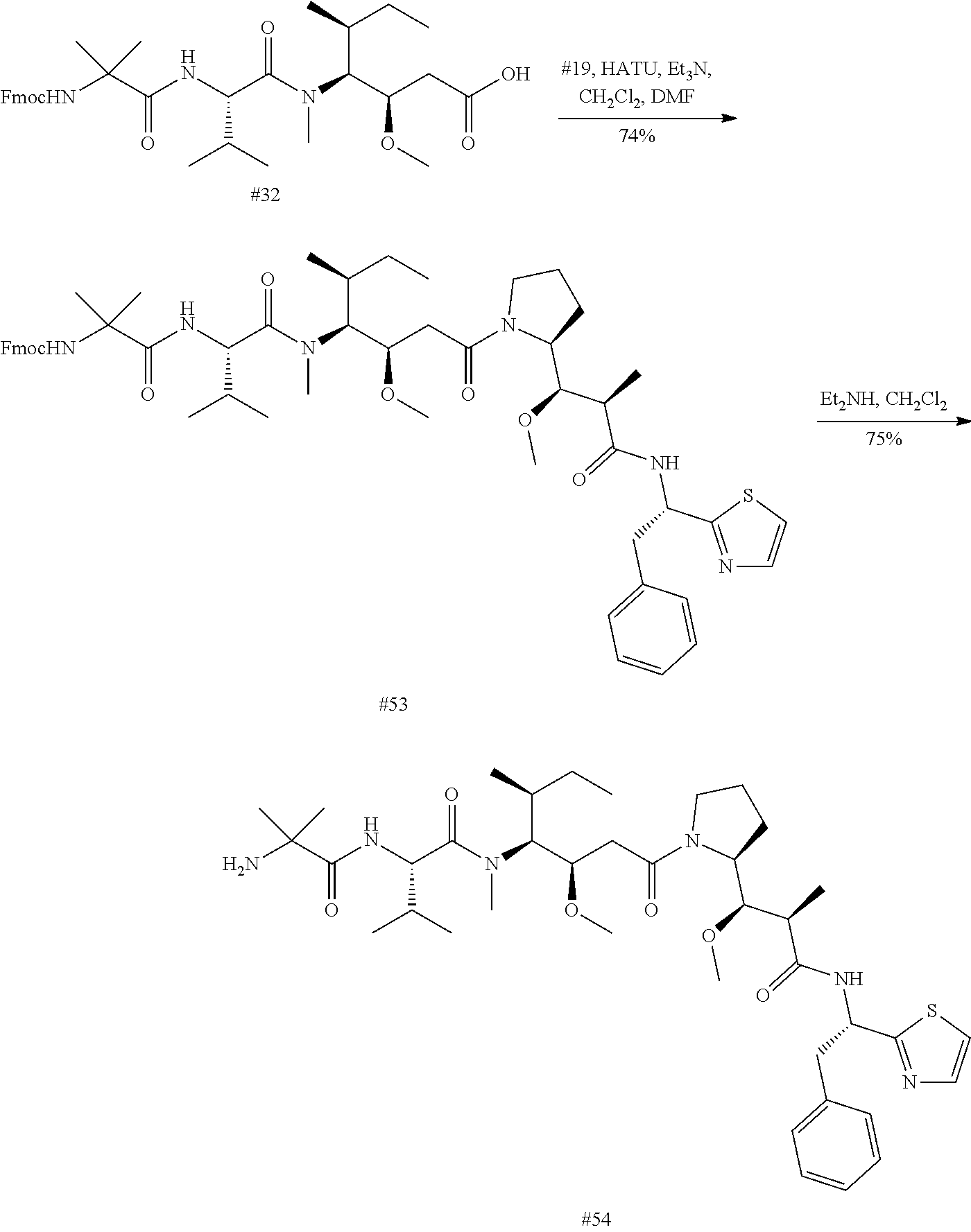


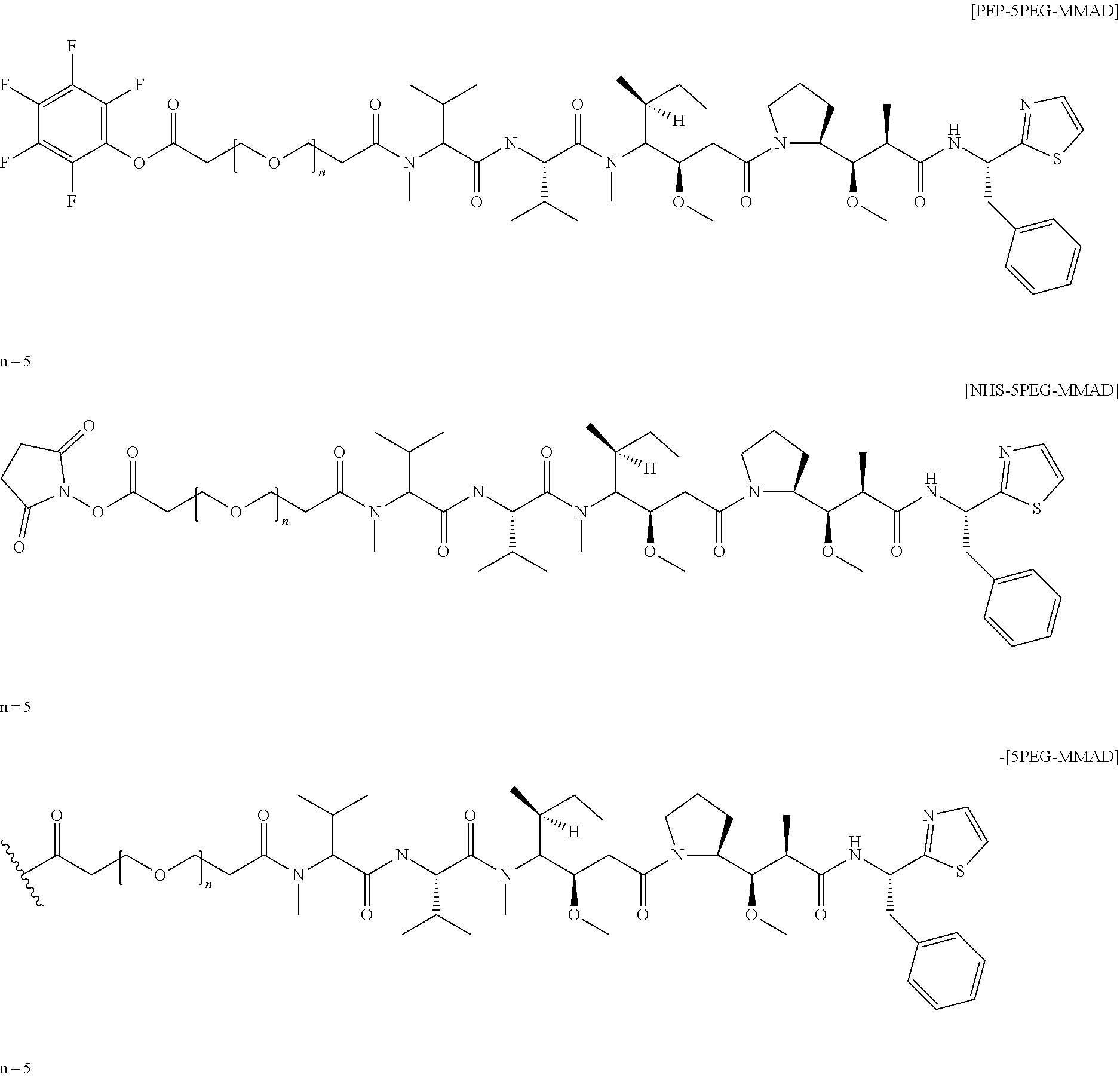
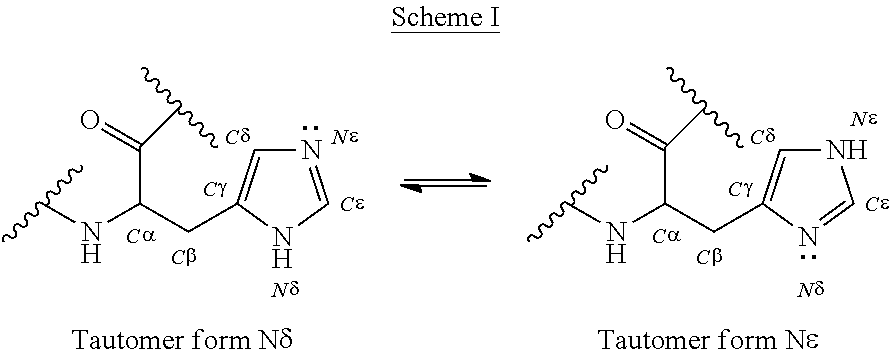
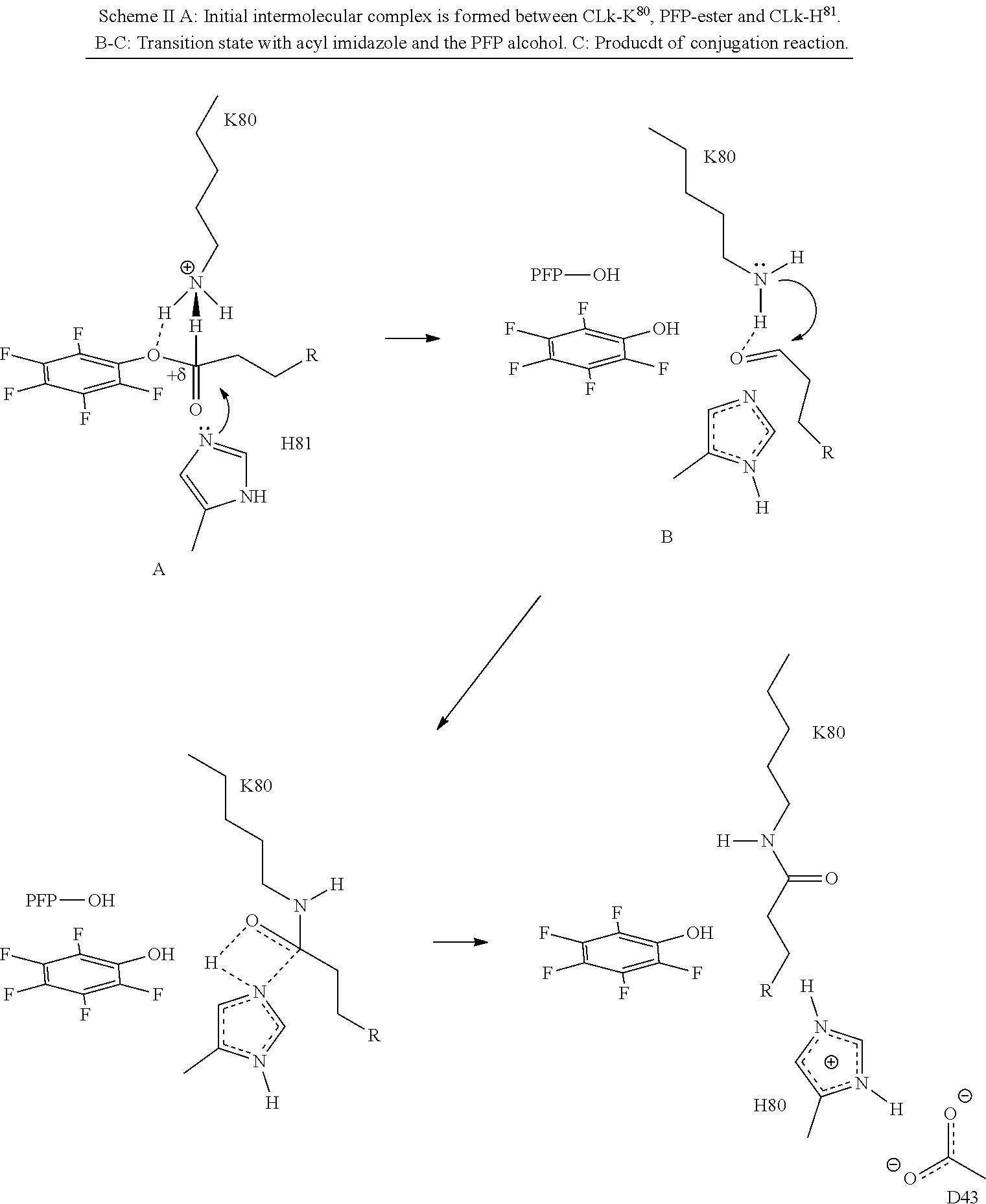
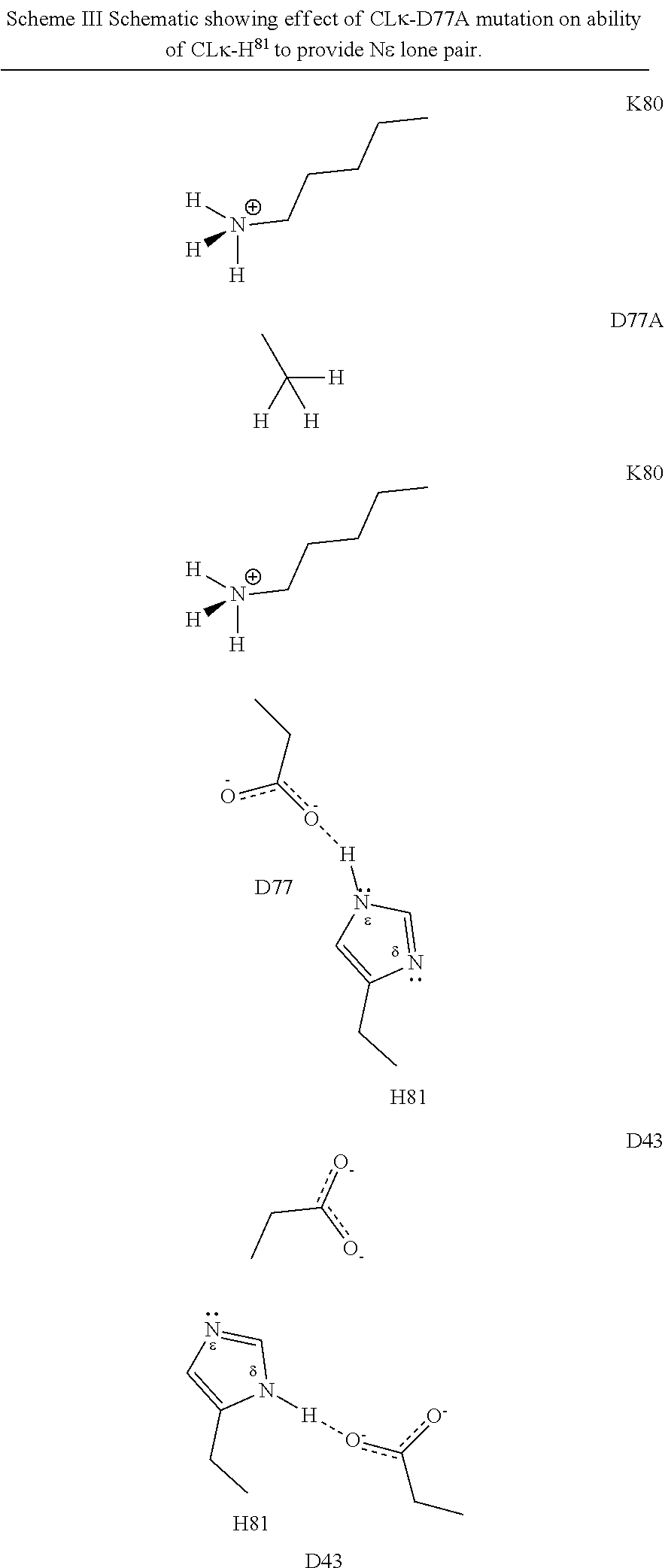

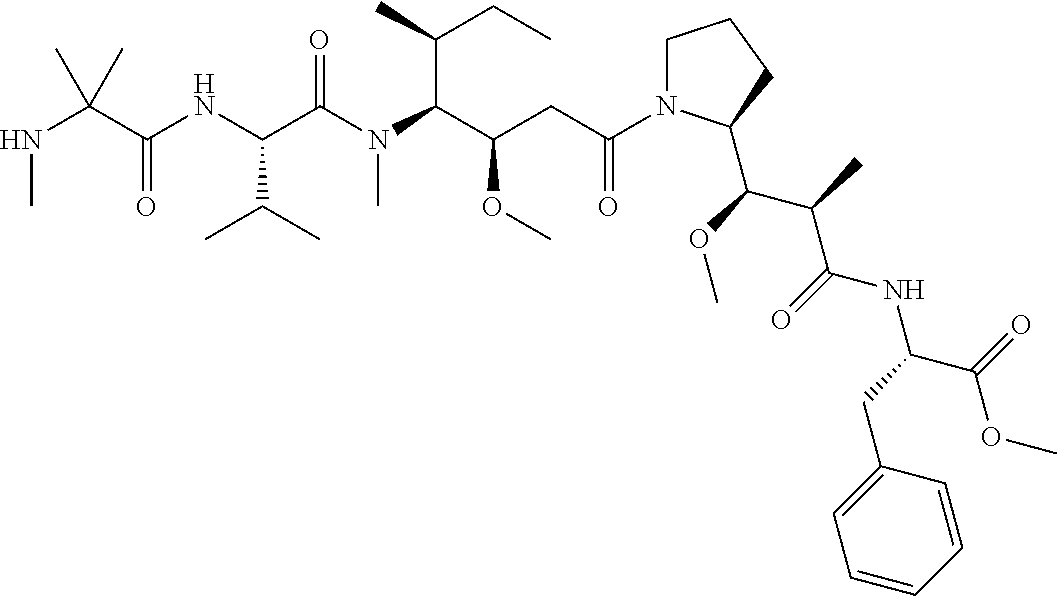


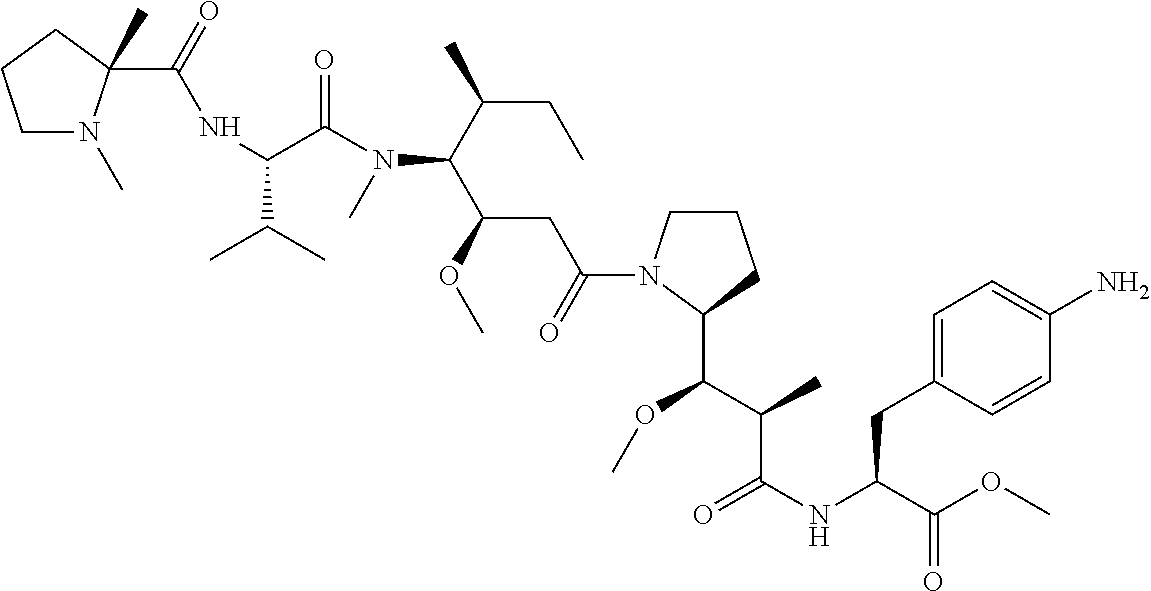

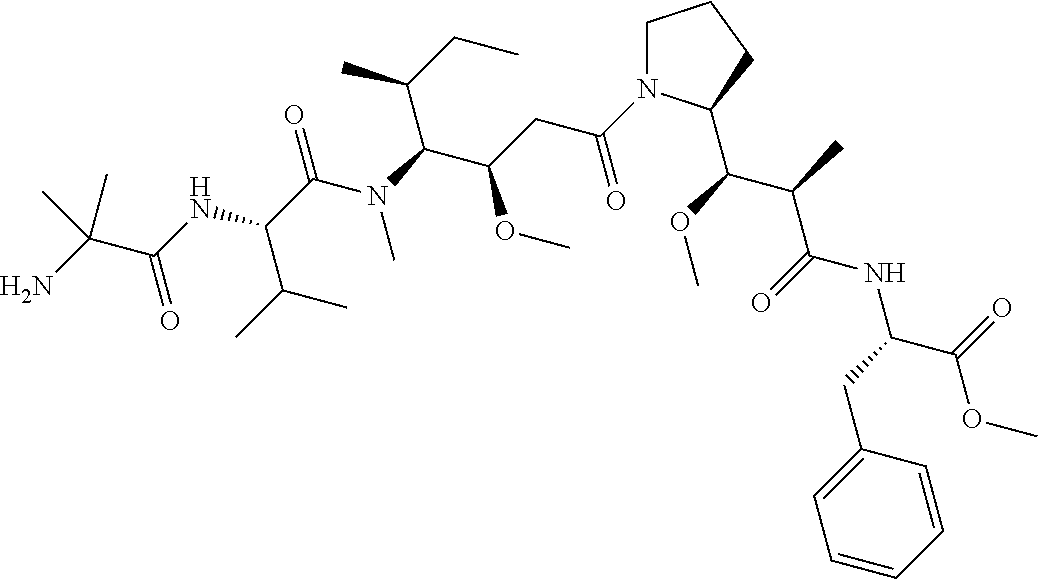
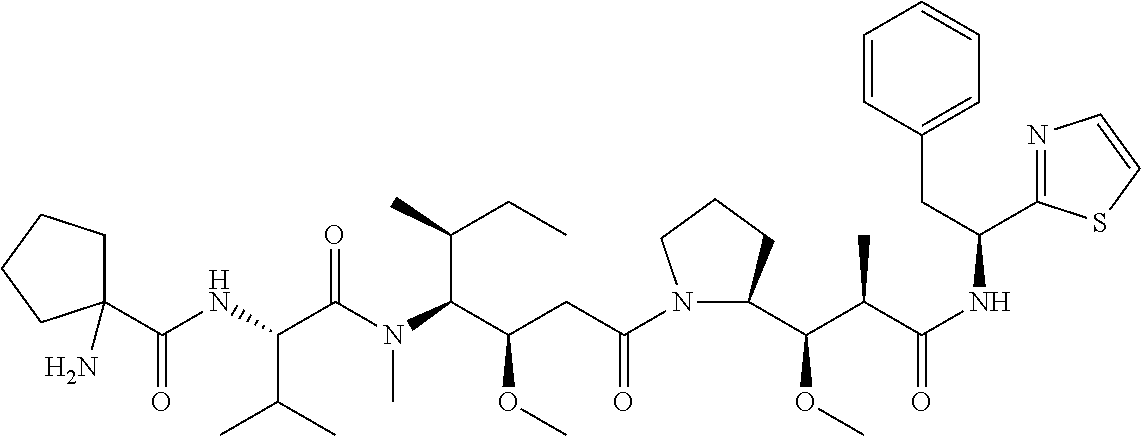
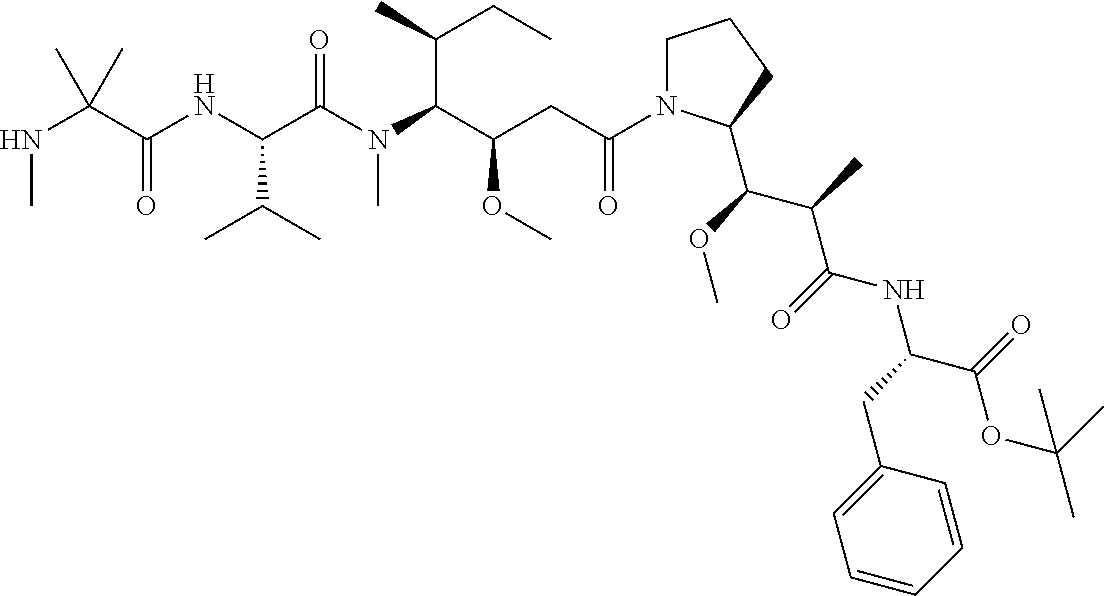


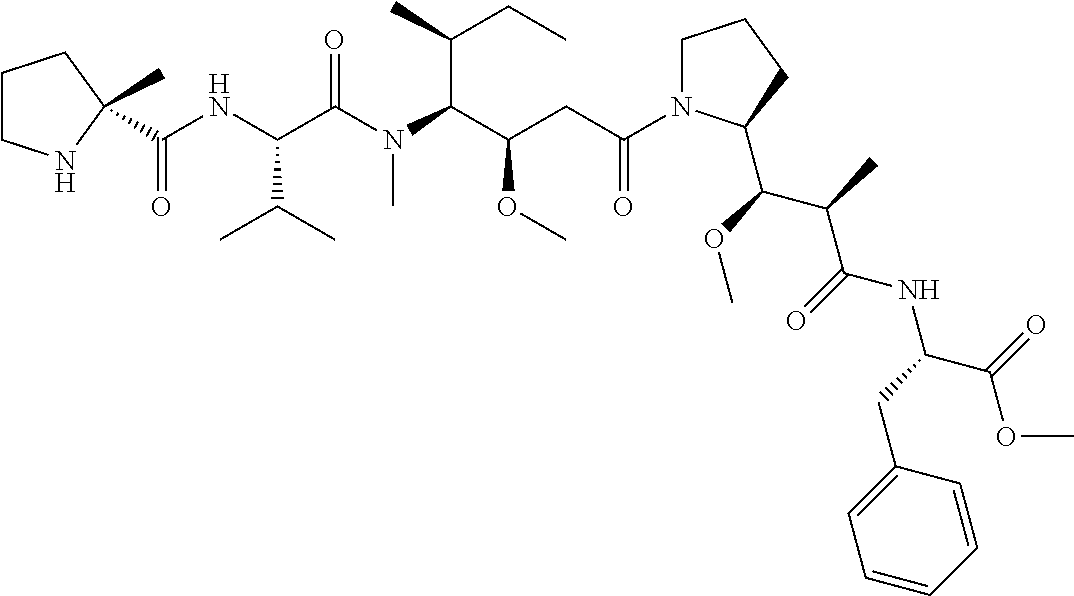
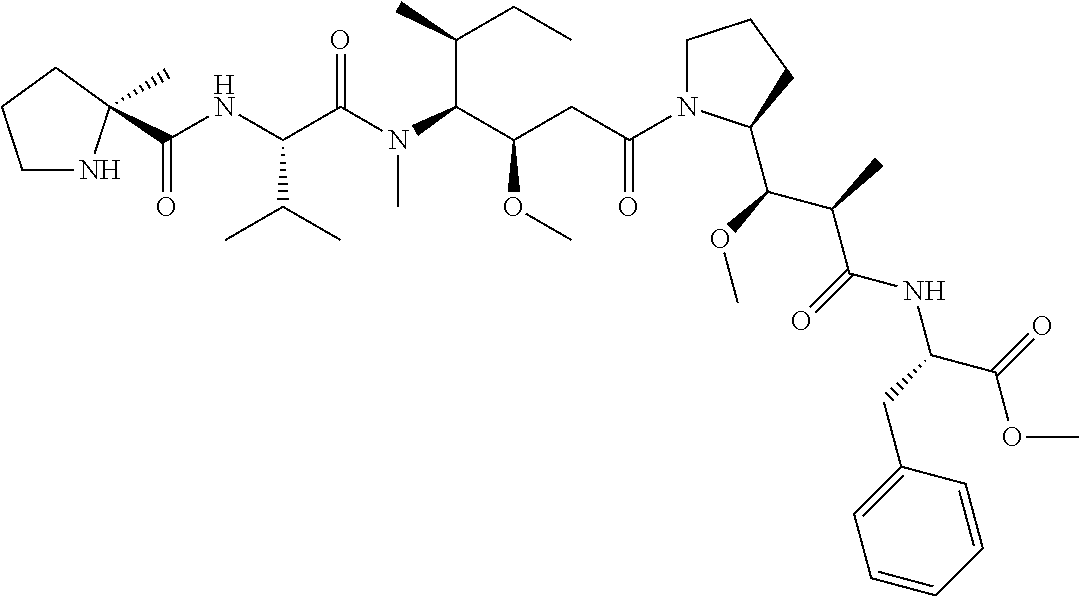
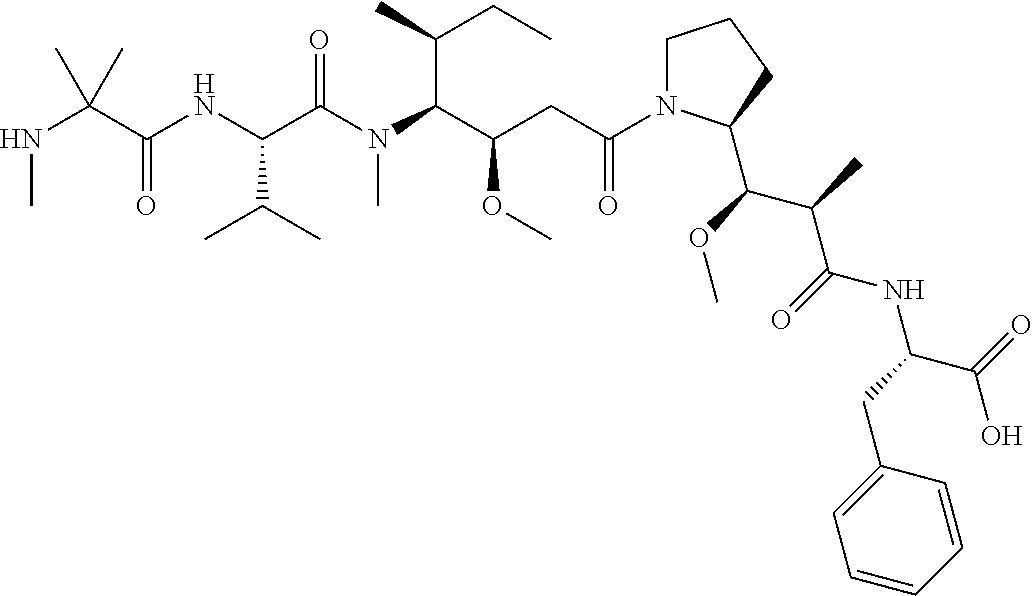
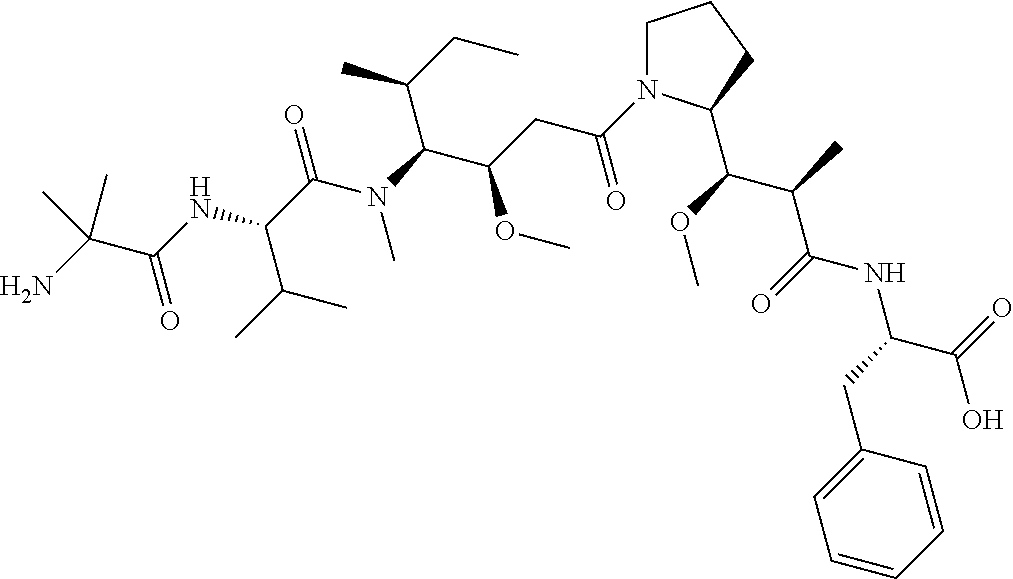
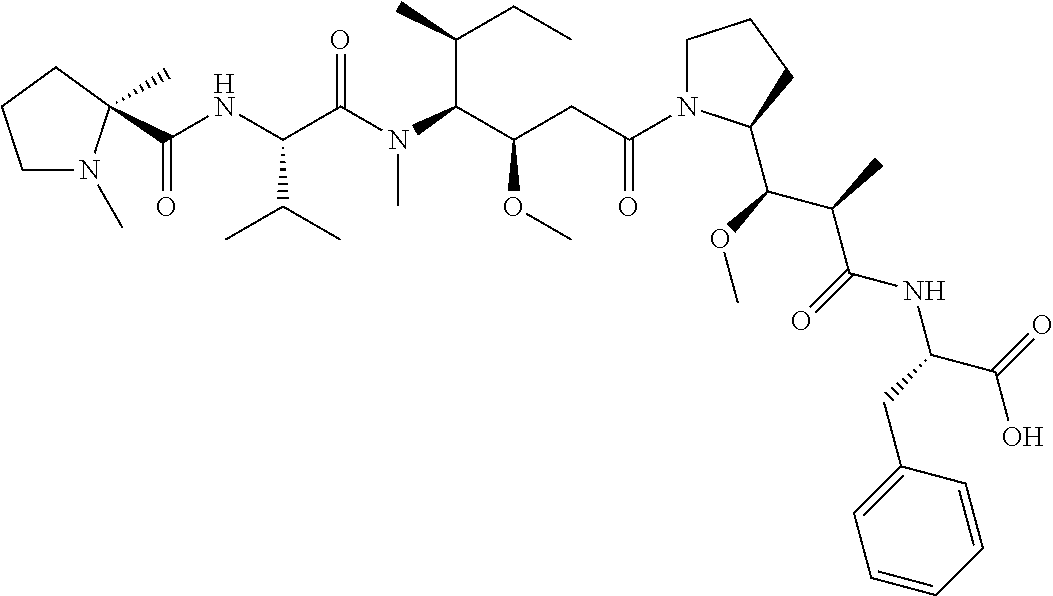

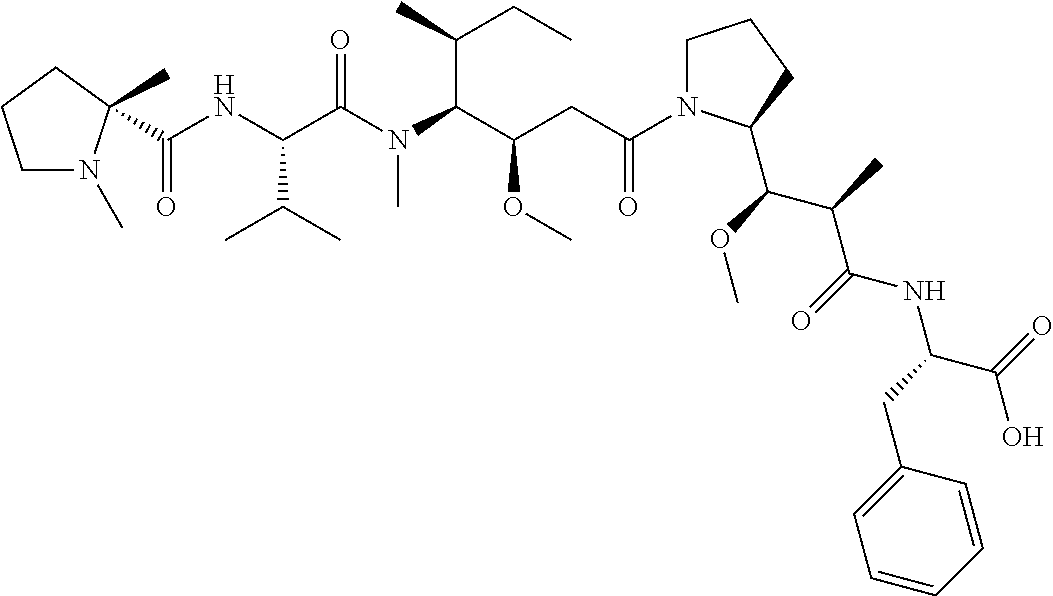
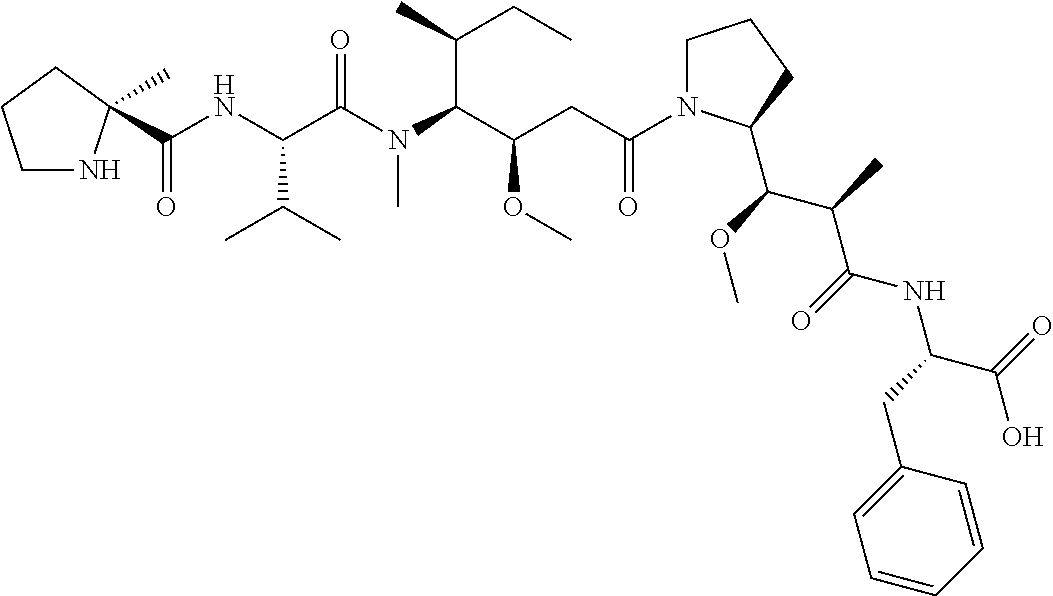


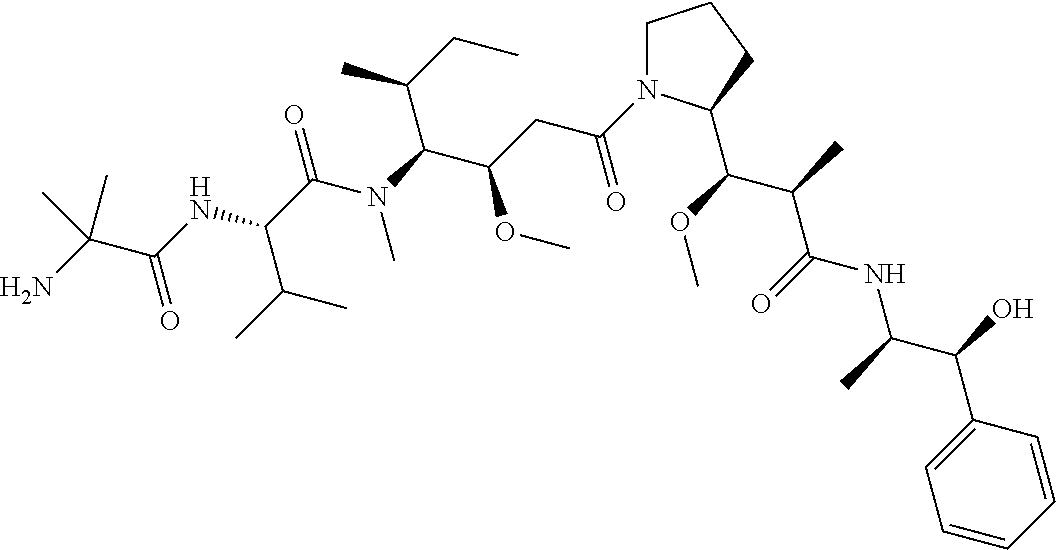




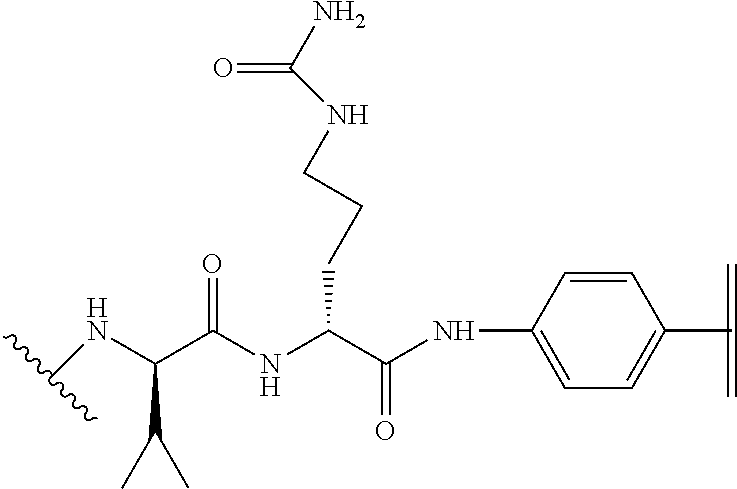
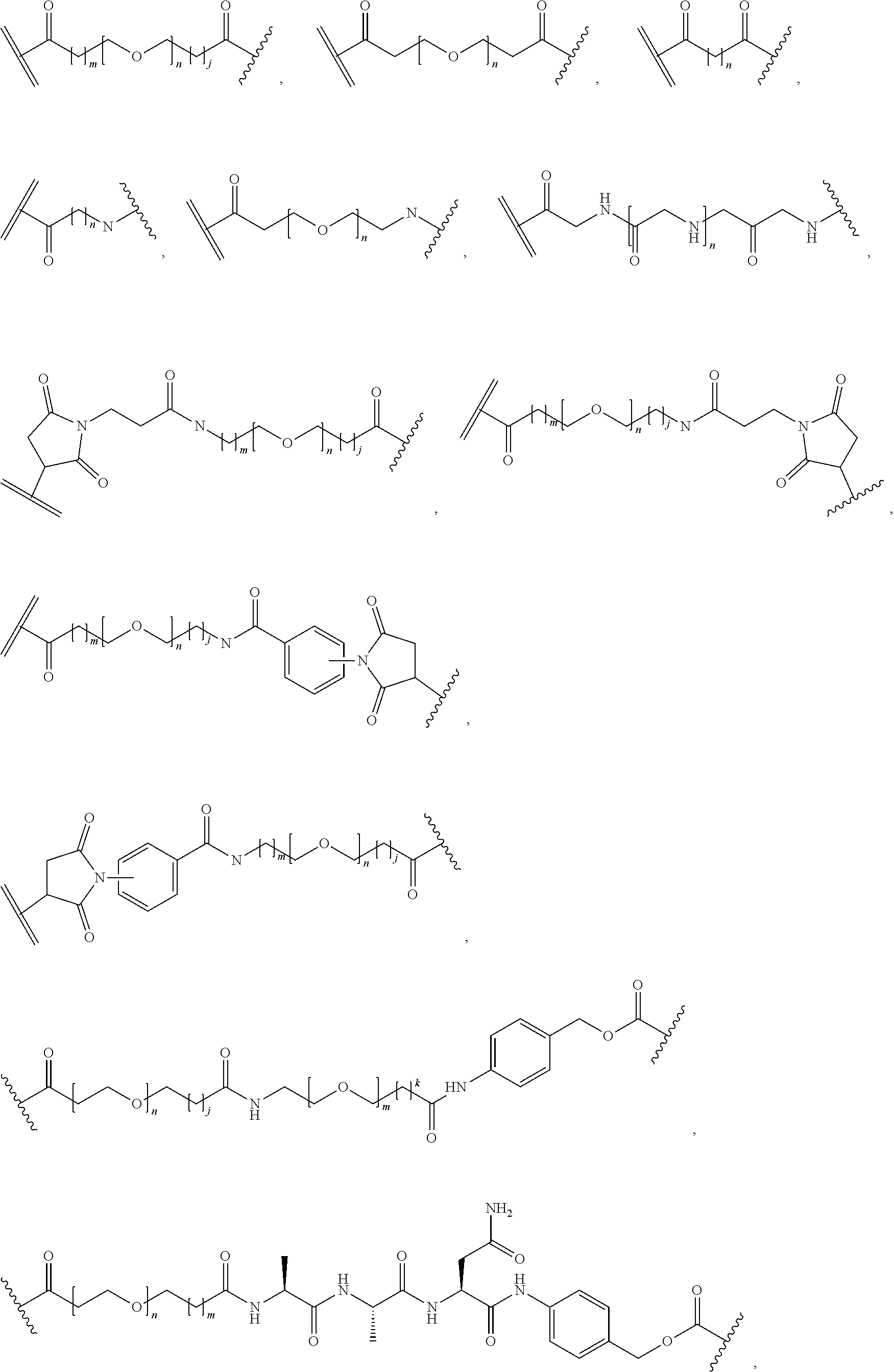
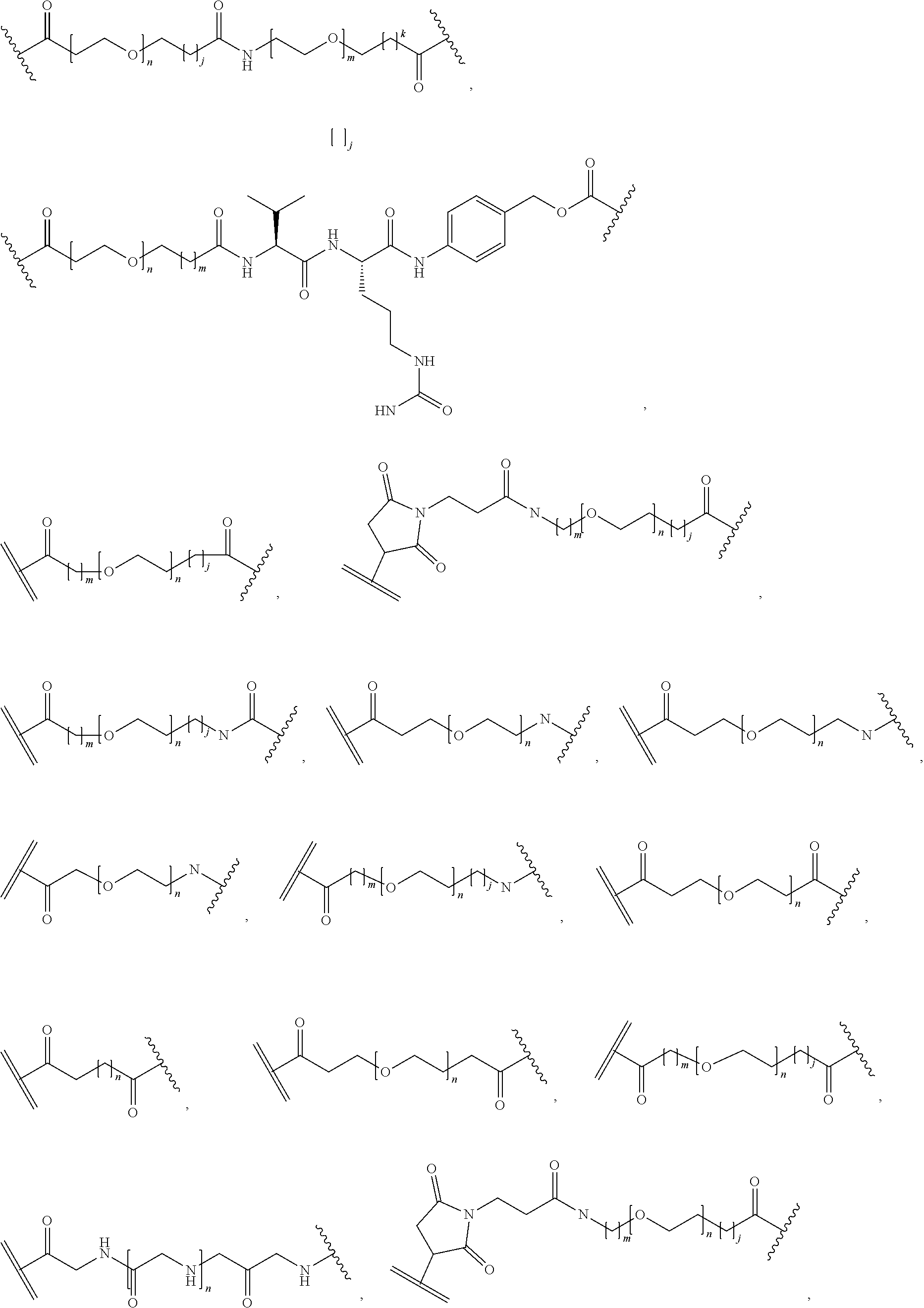
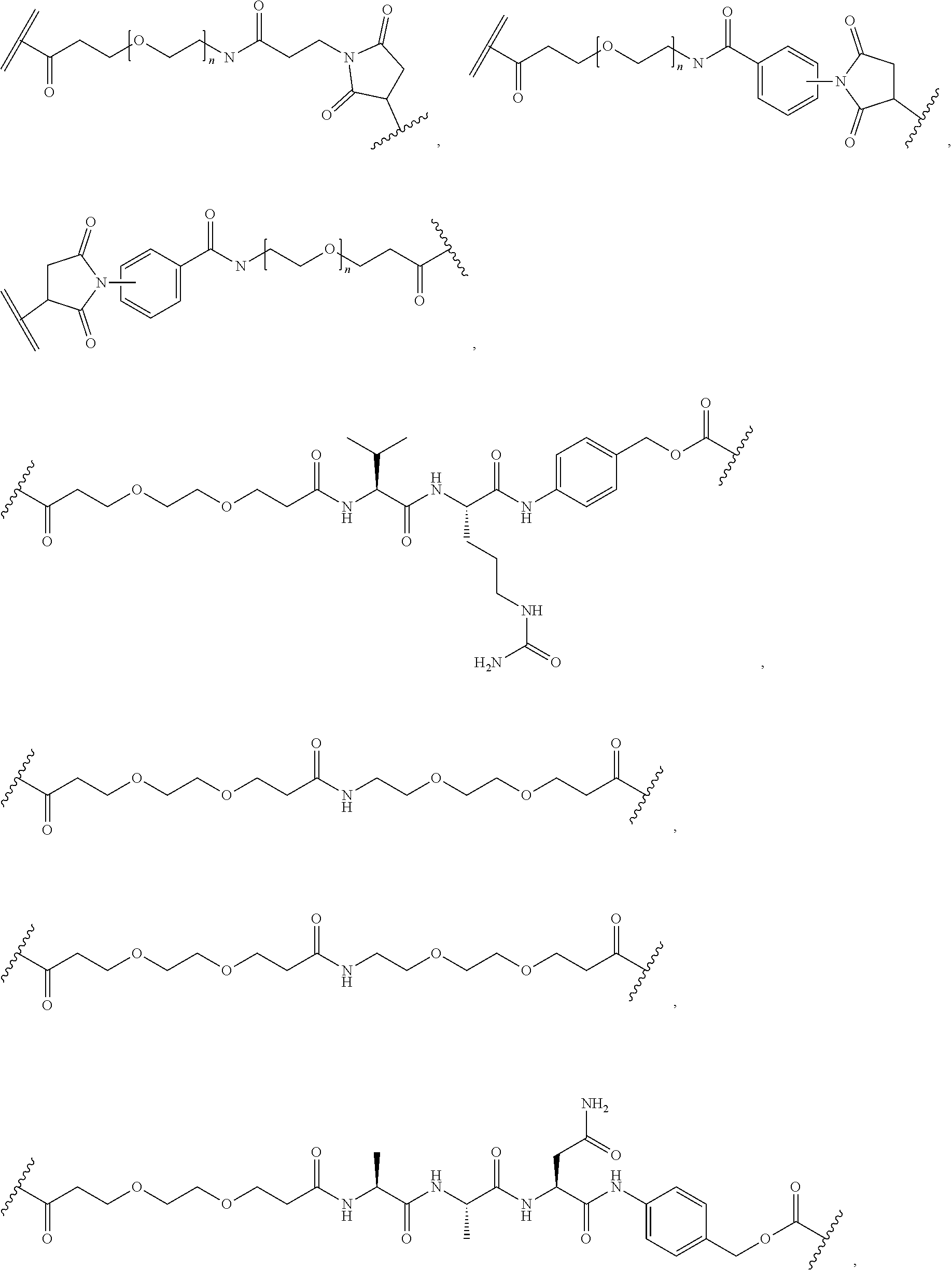
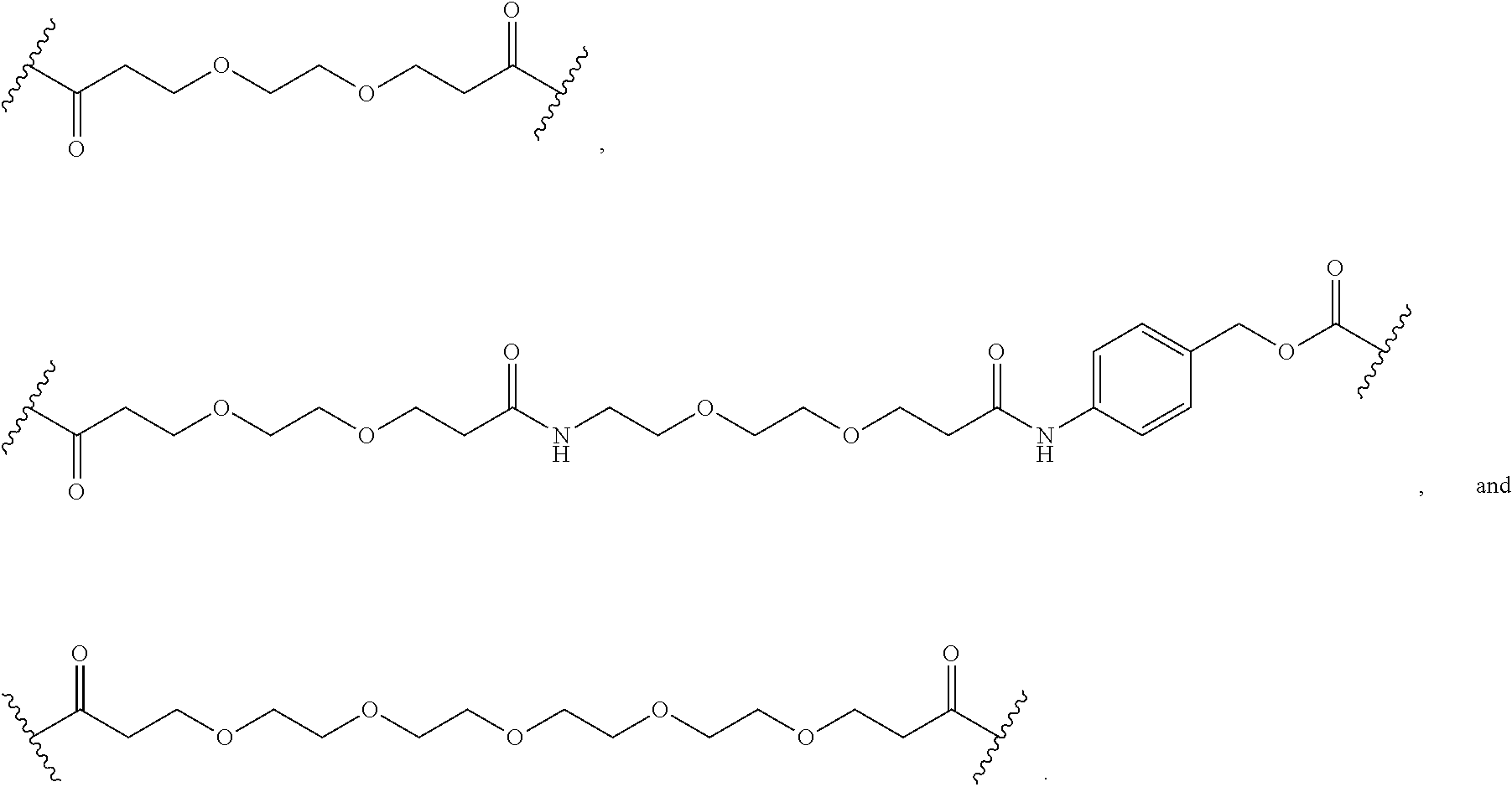

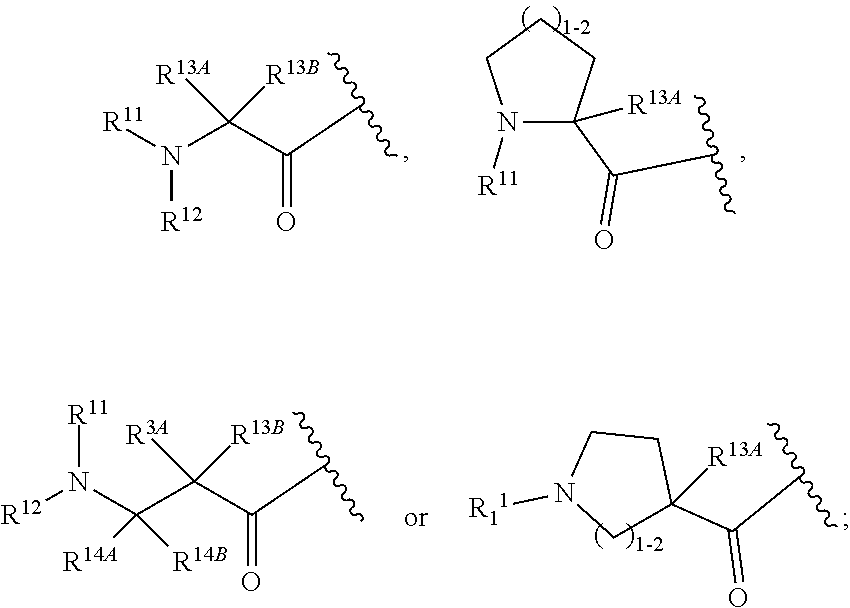
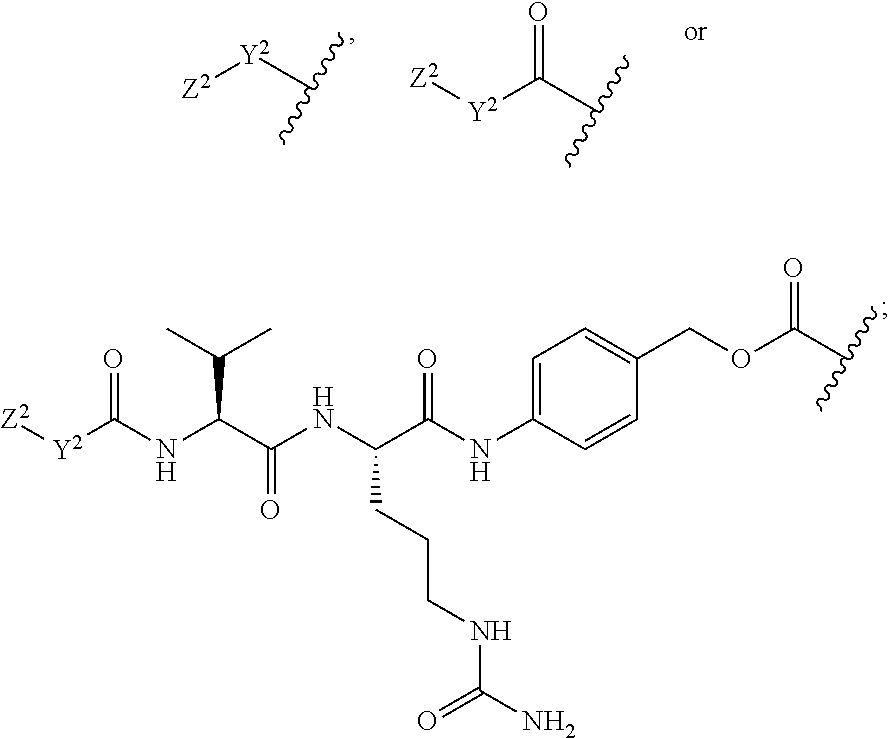
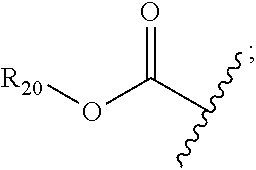


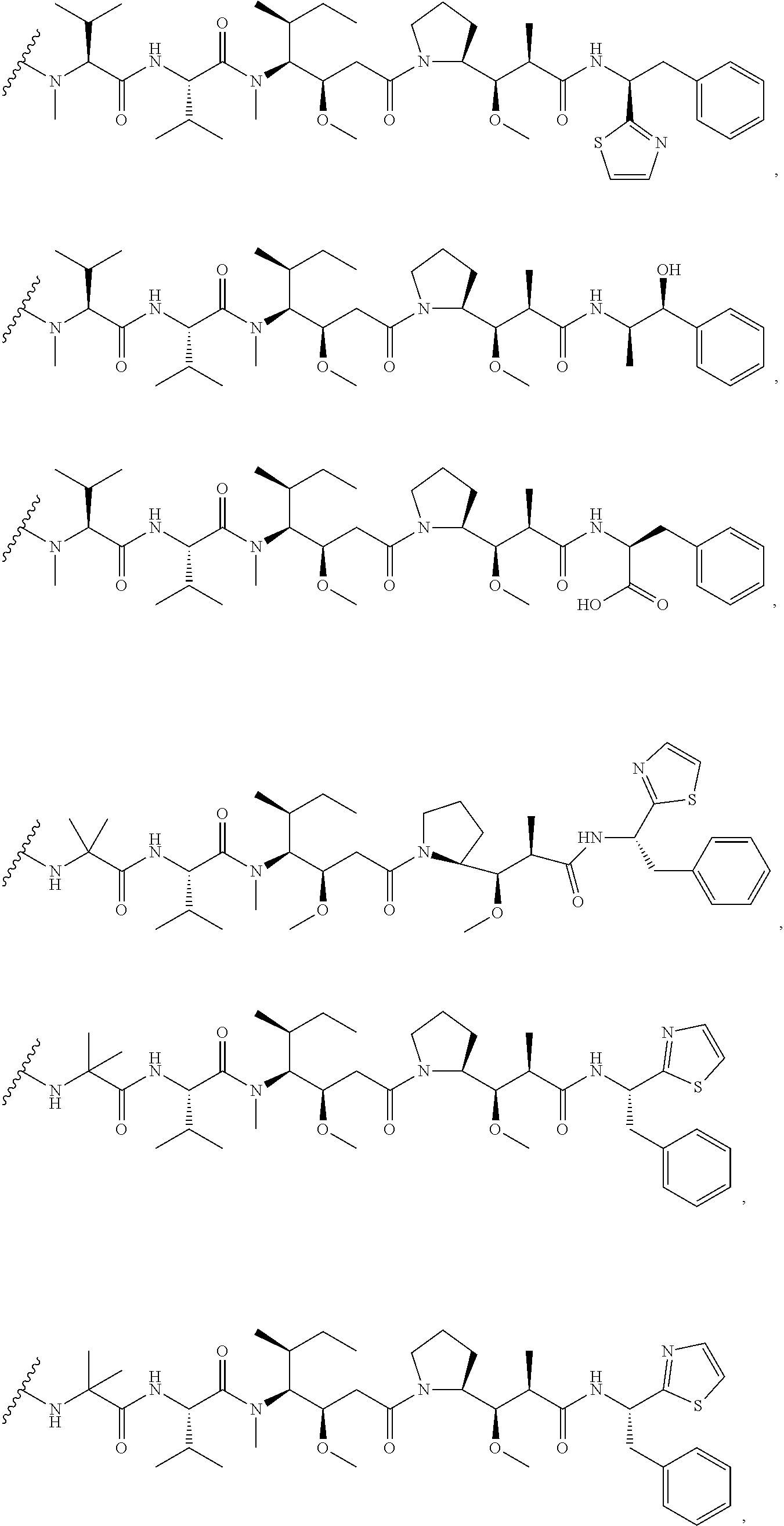
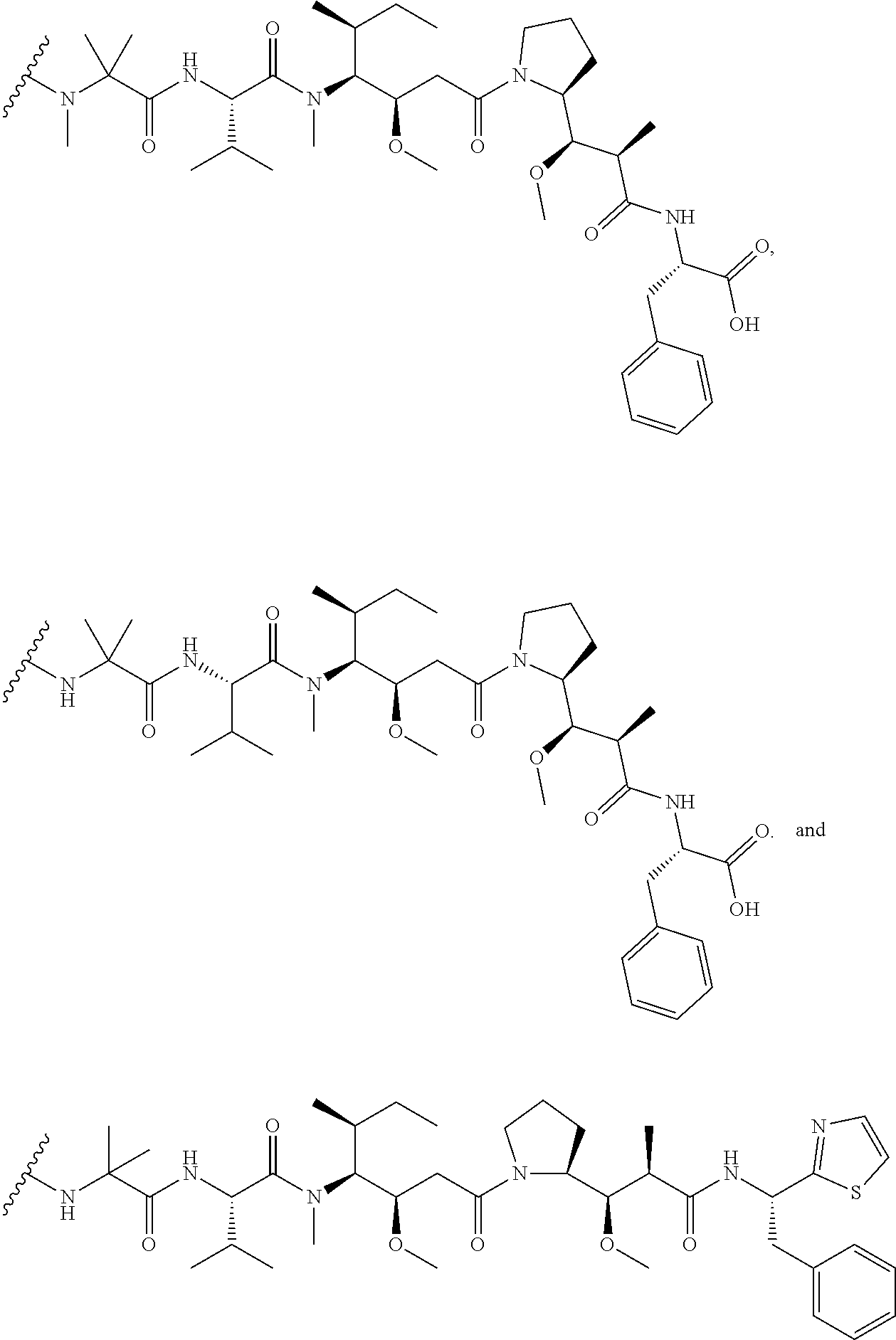
D00001
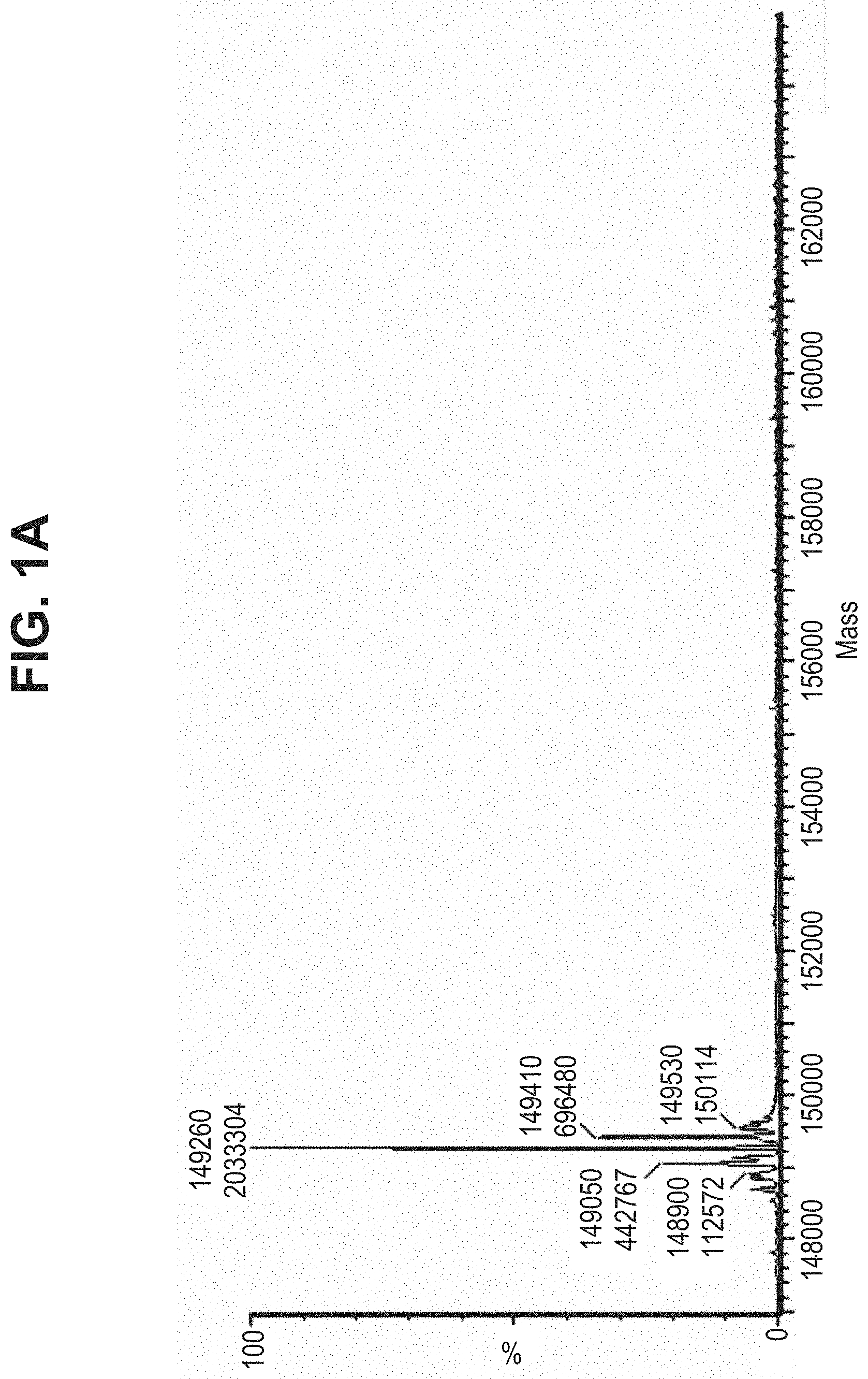
D00002
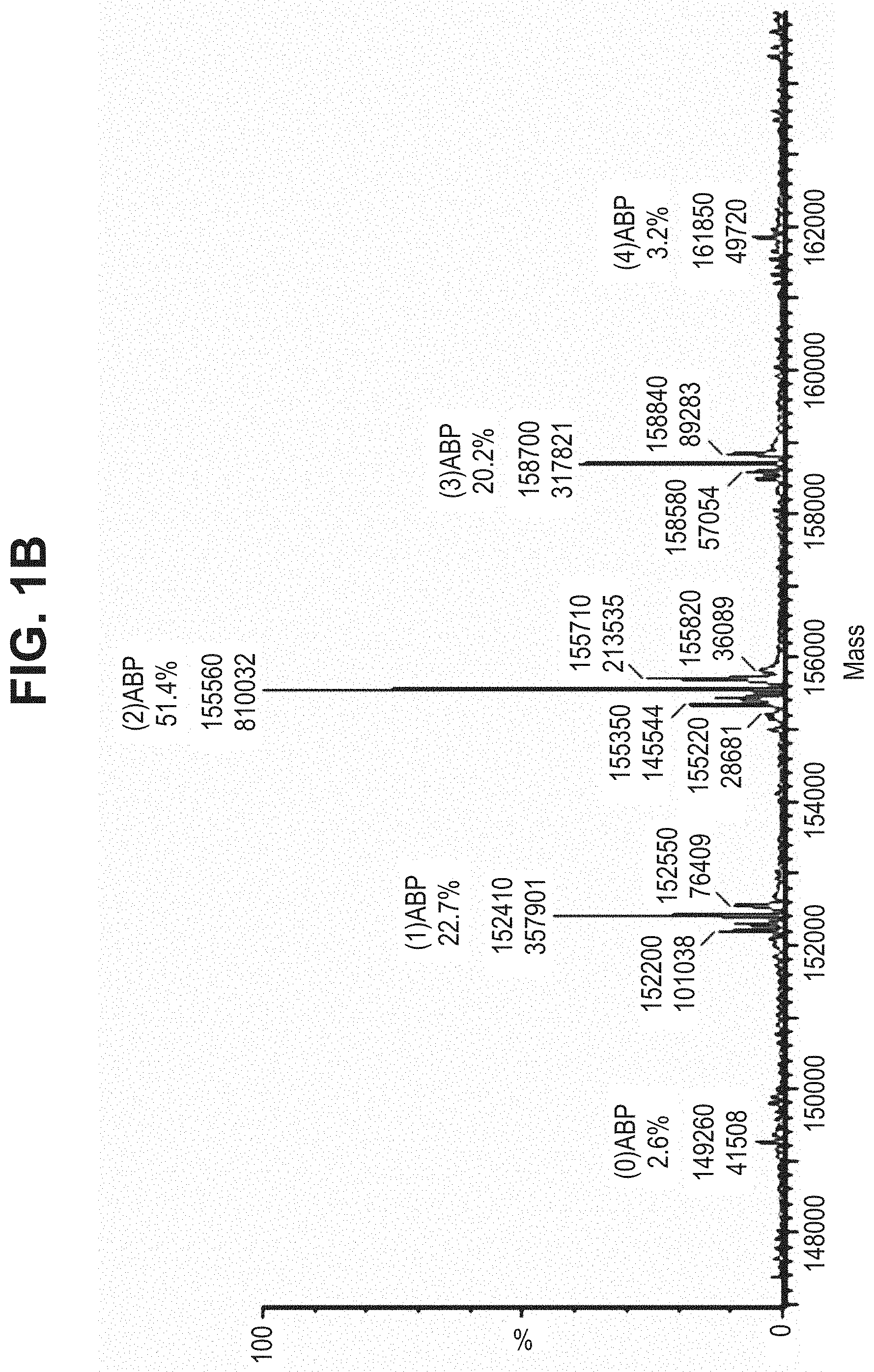
D00003
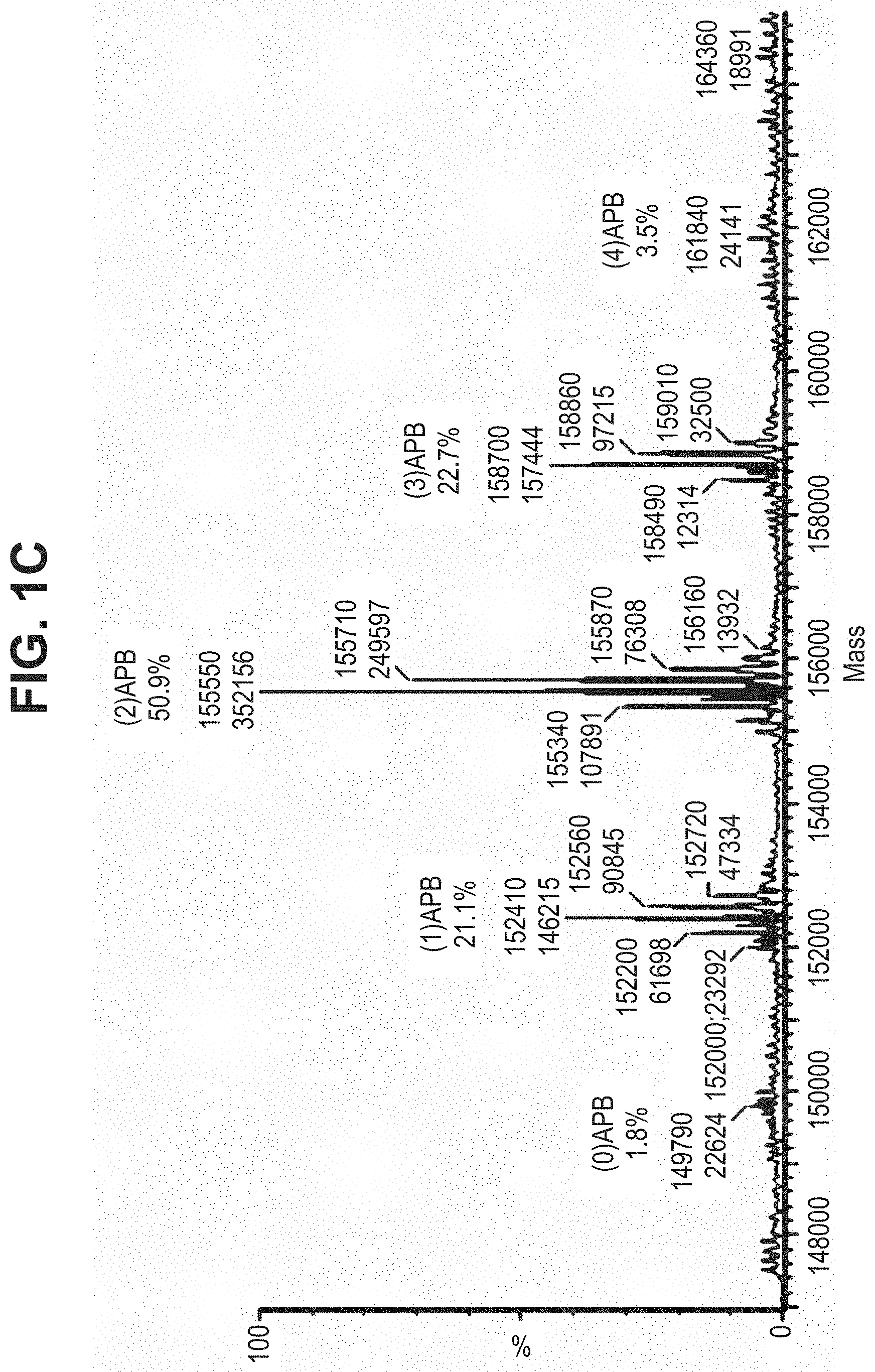
D00004
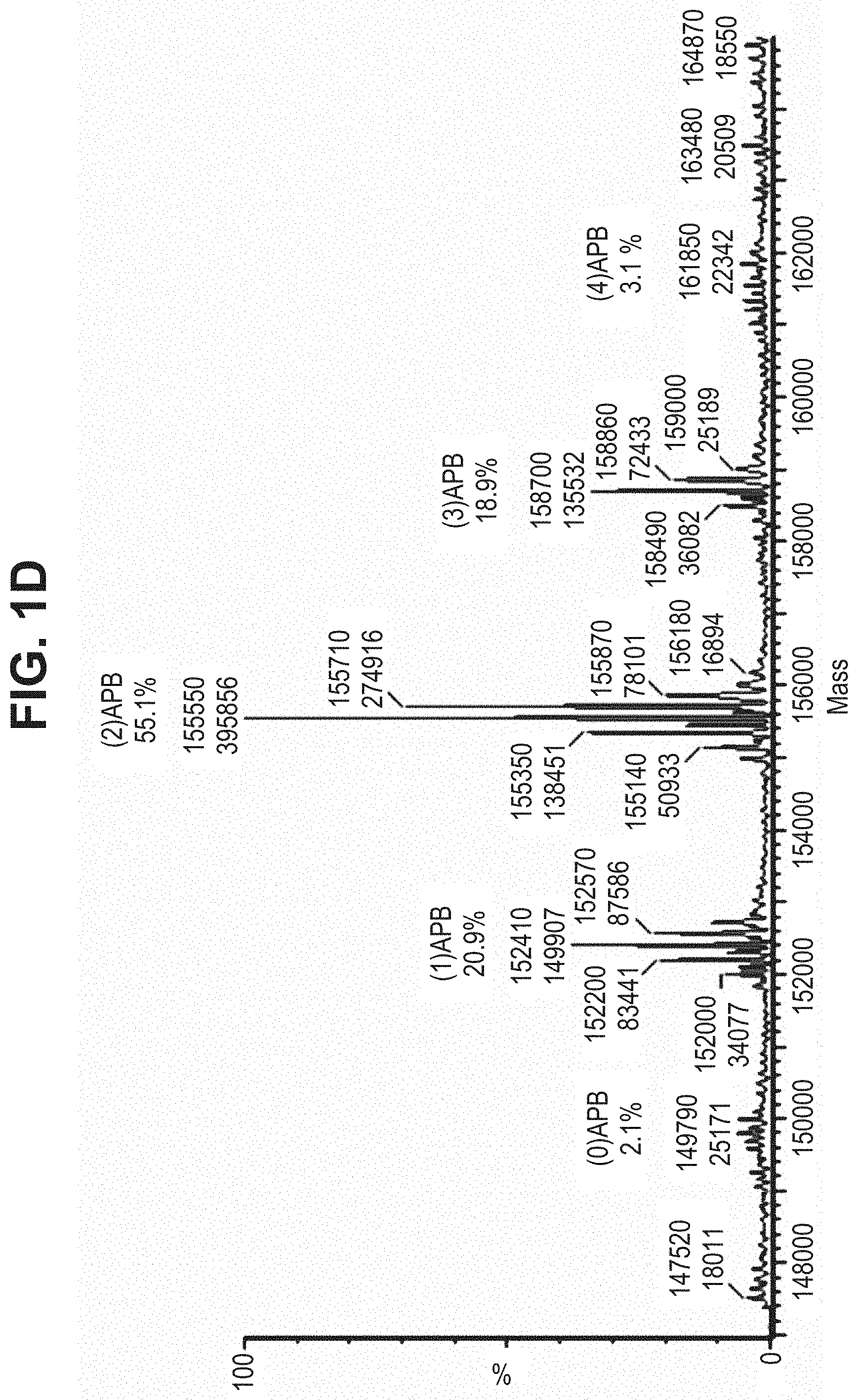
D00005
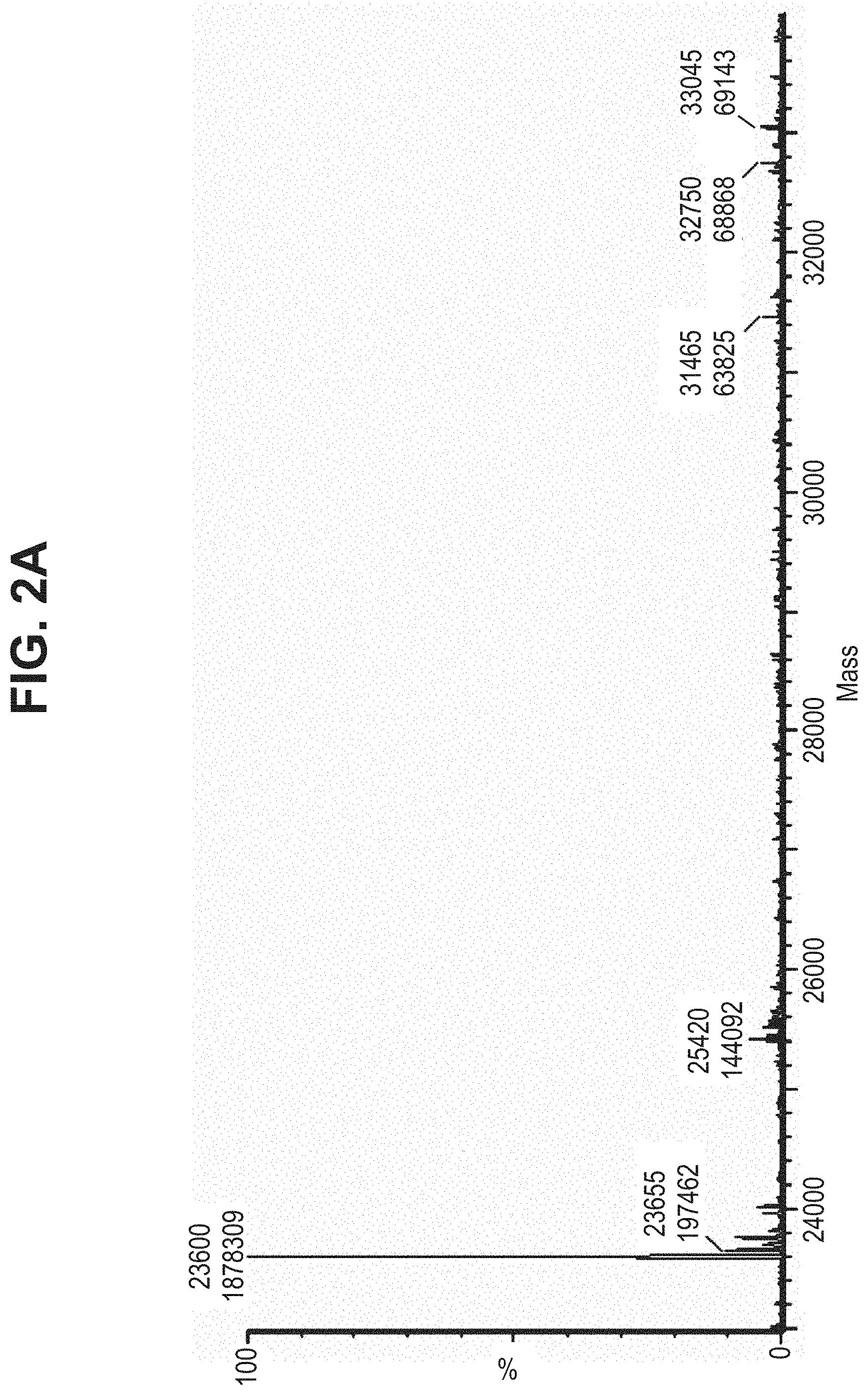
D00006

D00007
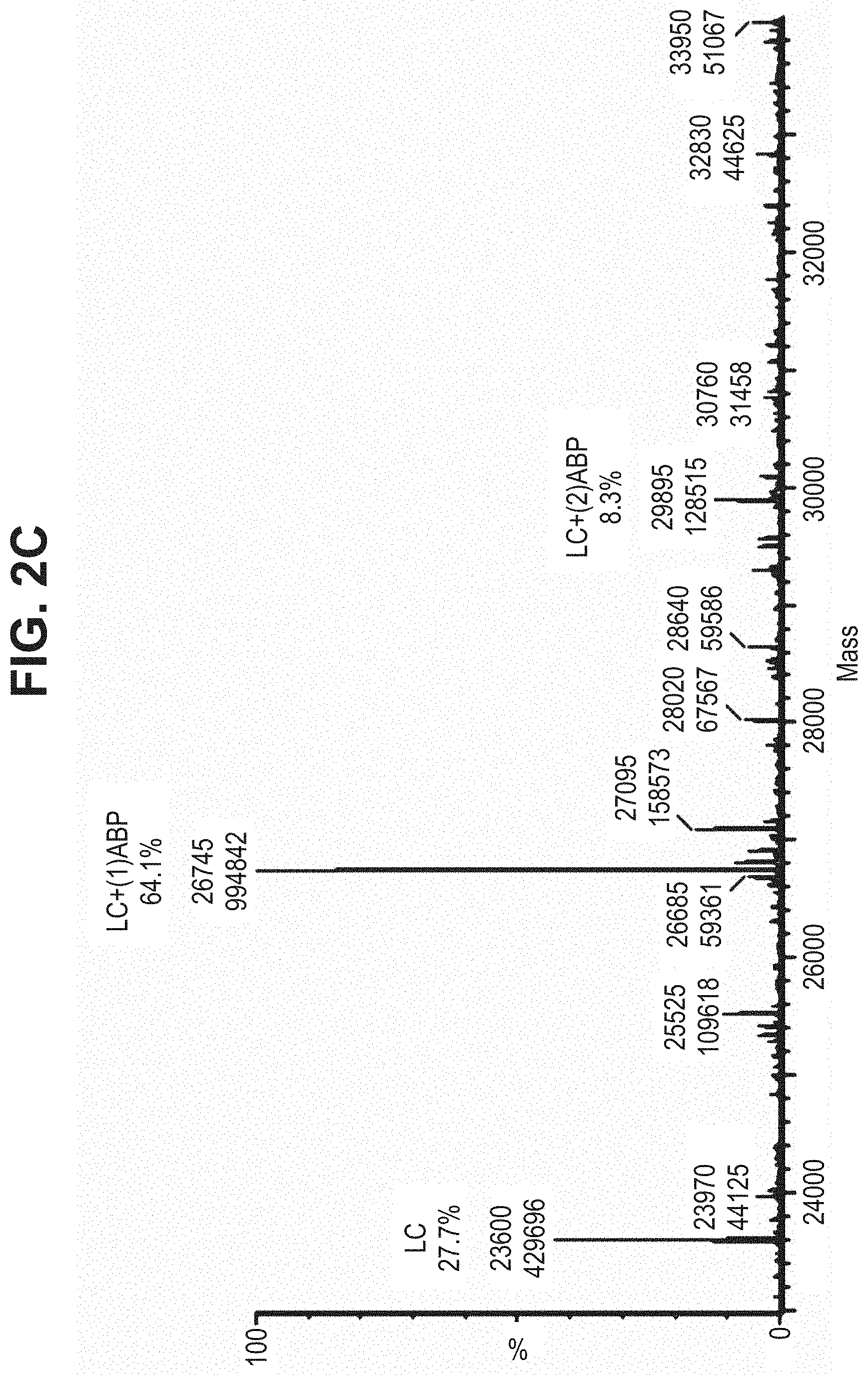
D00008
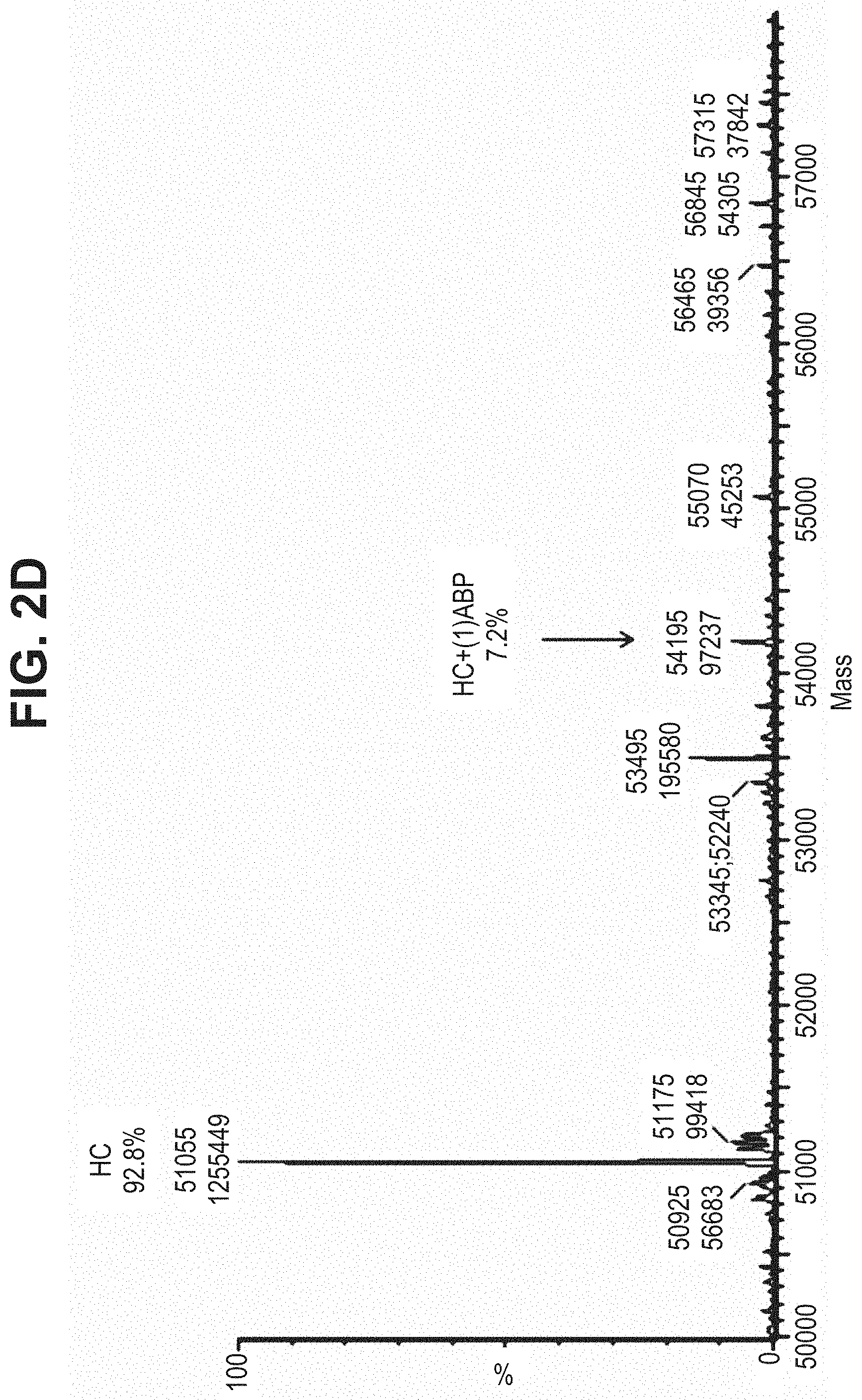
D00009
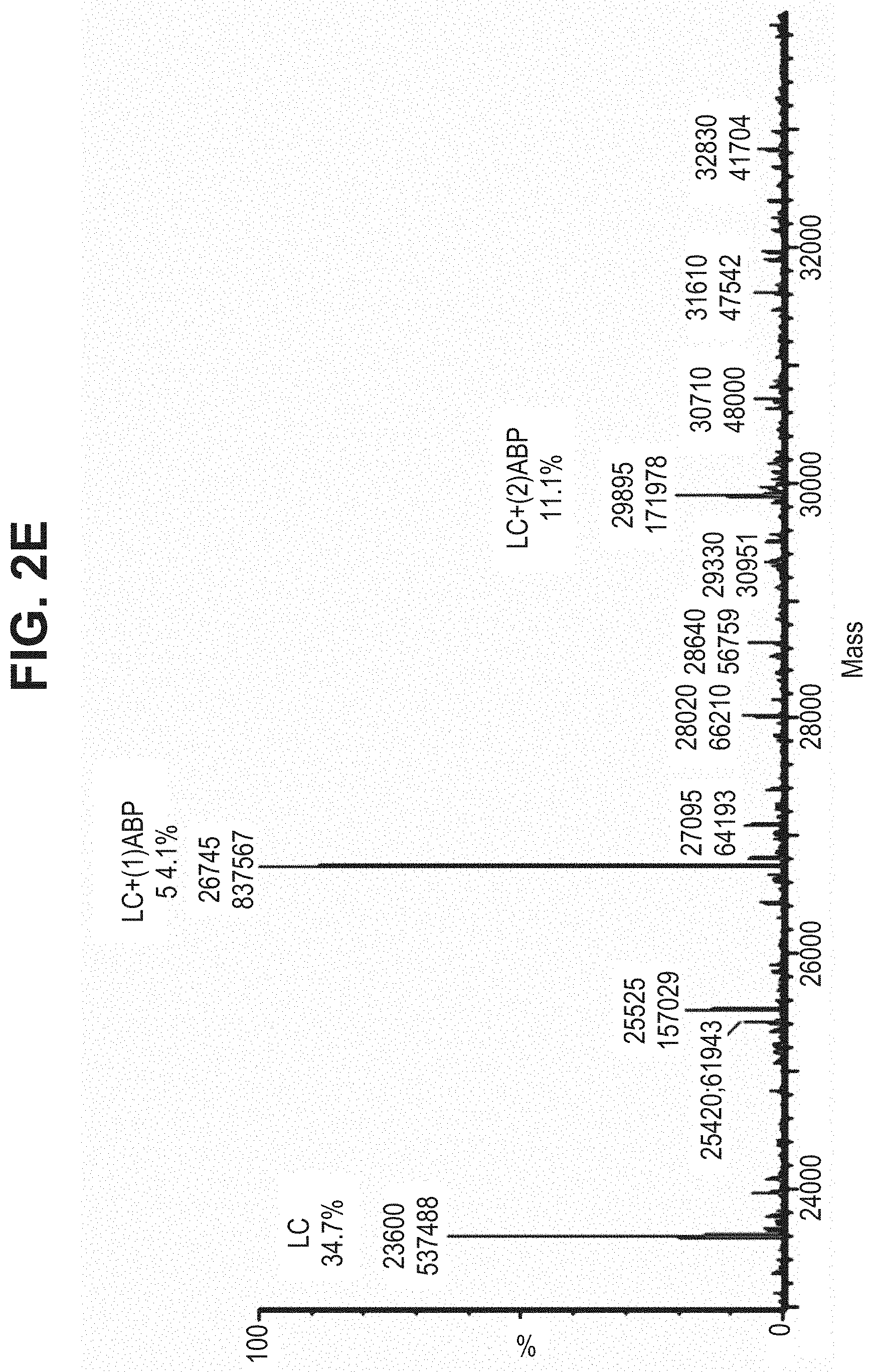
D00010
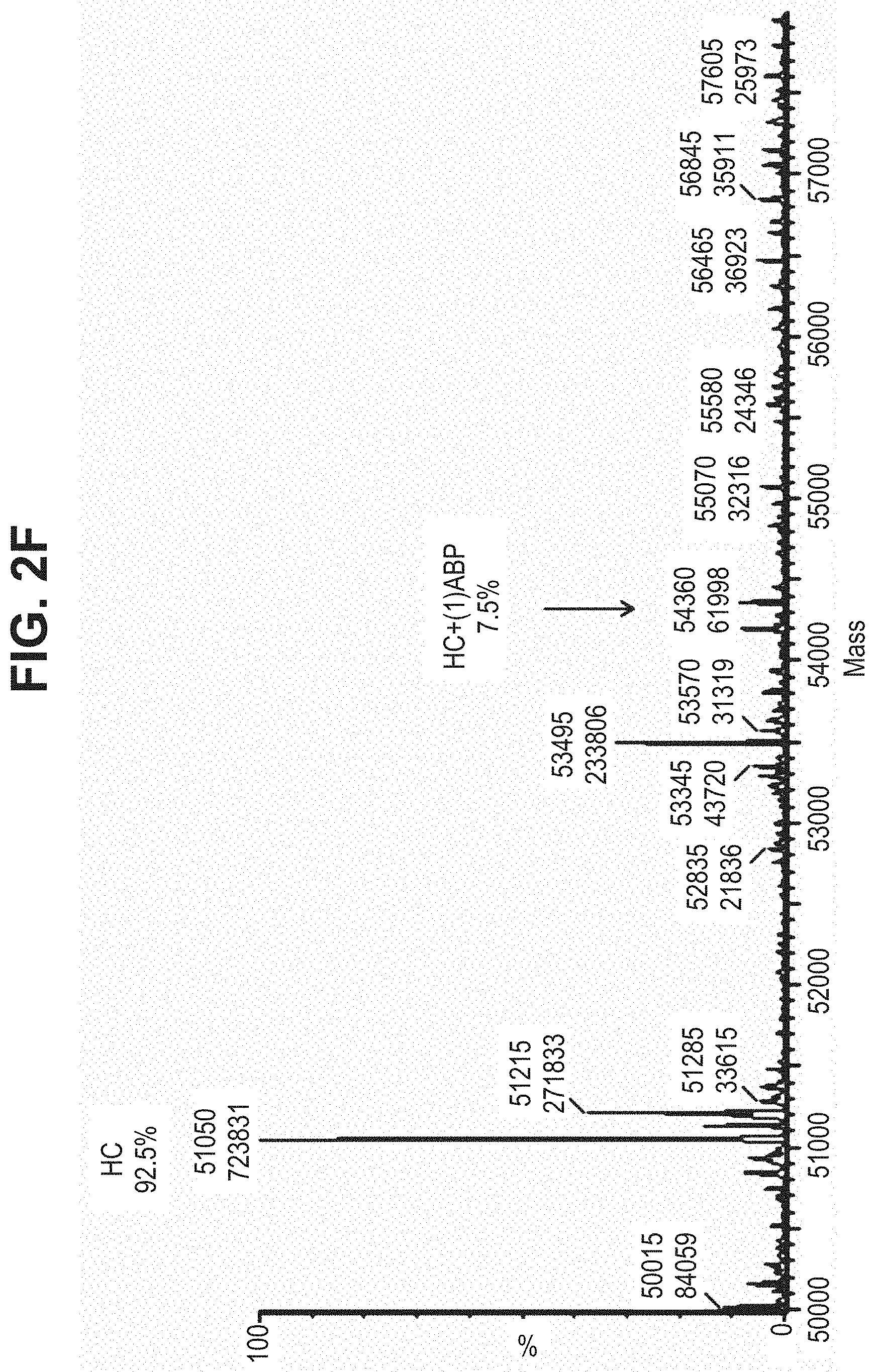
D00011
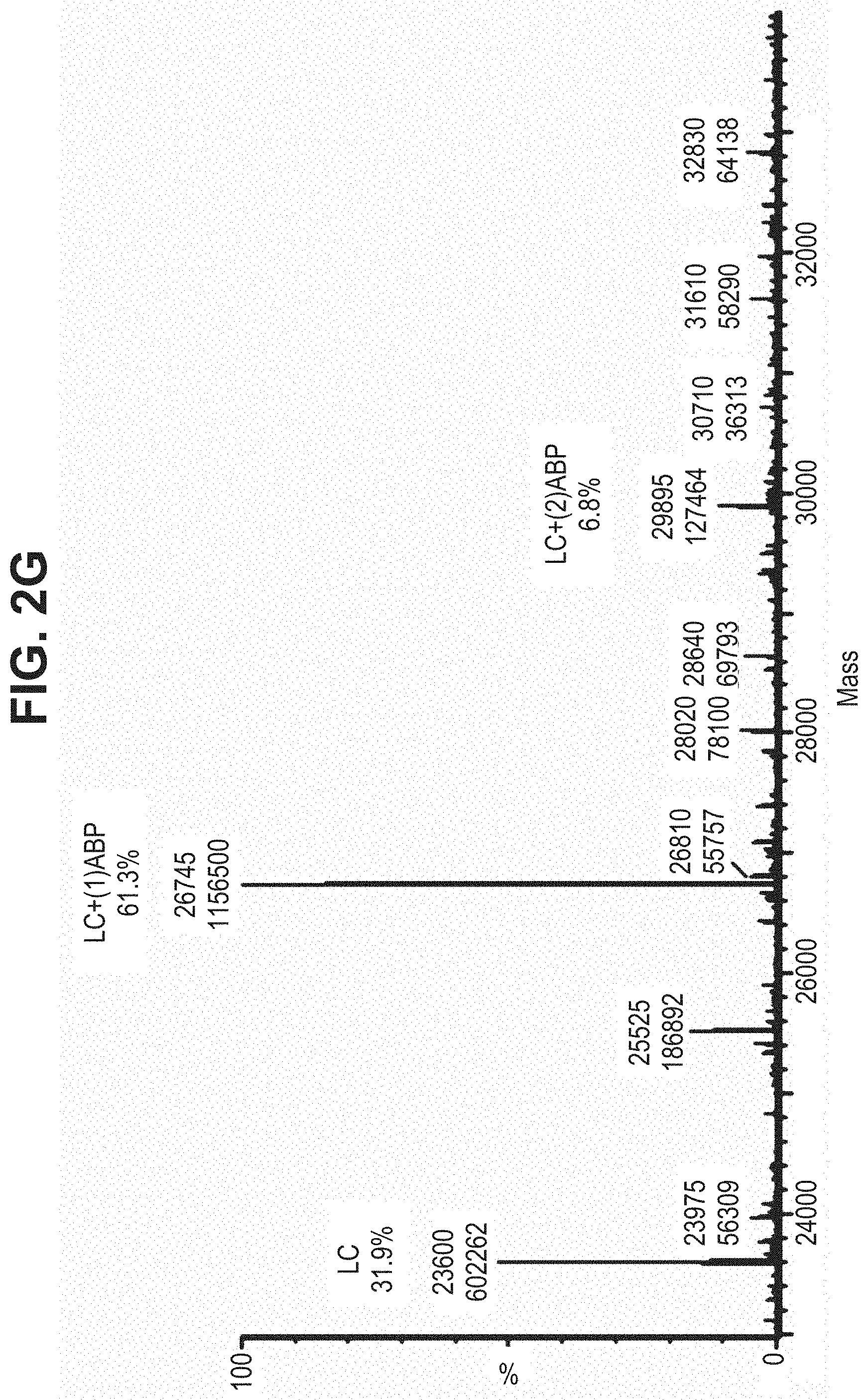
D00012
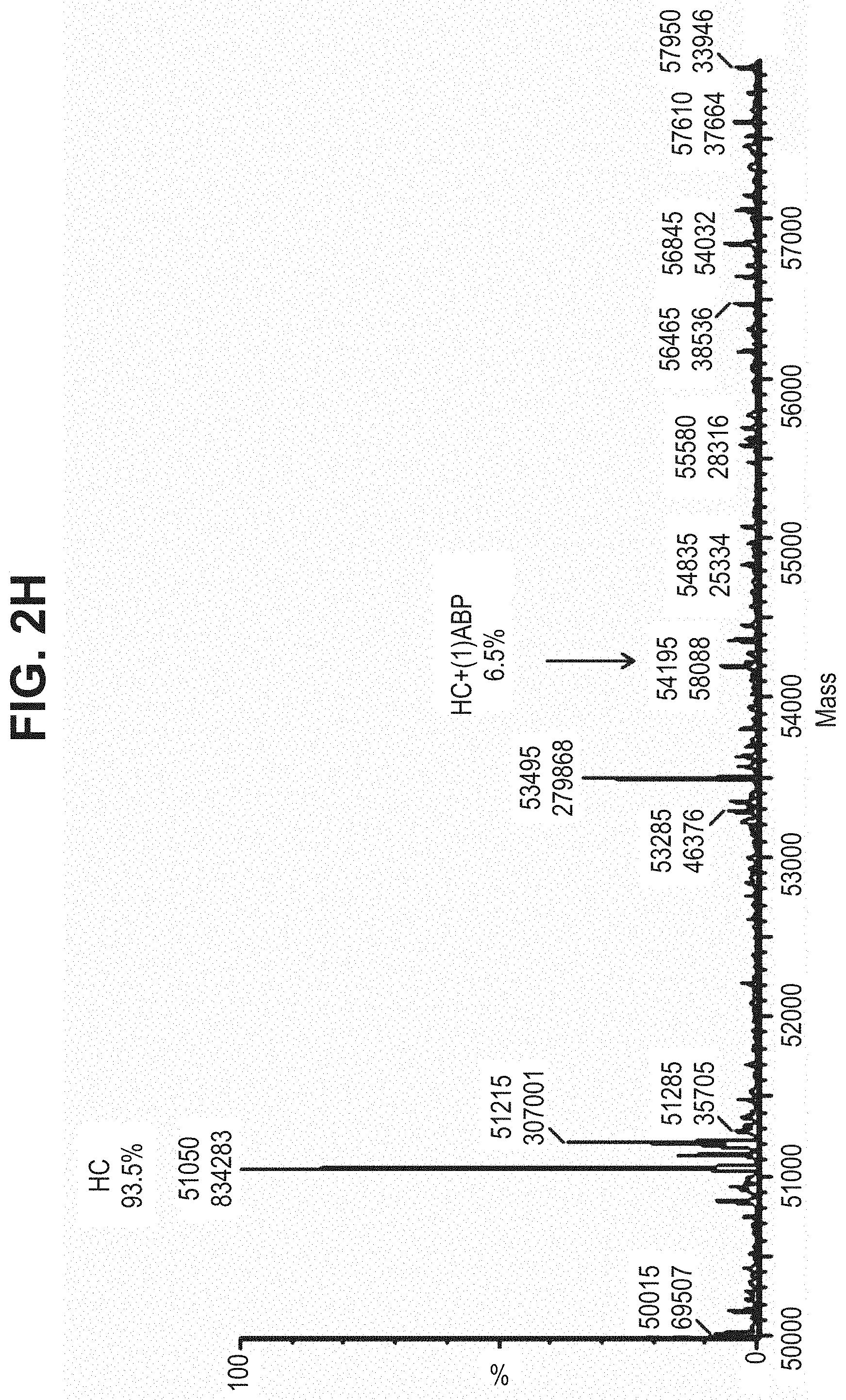
D00013
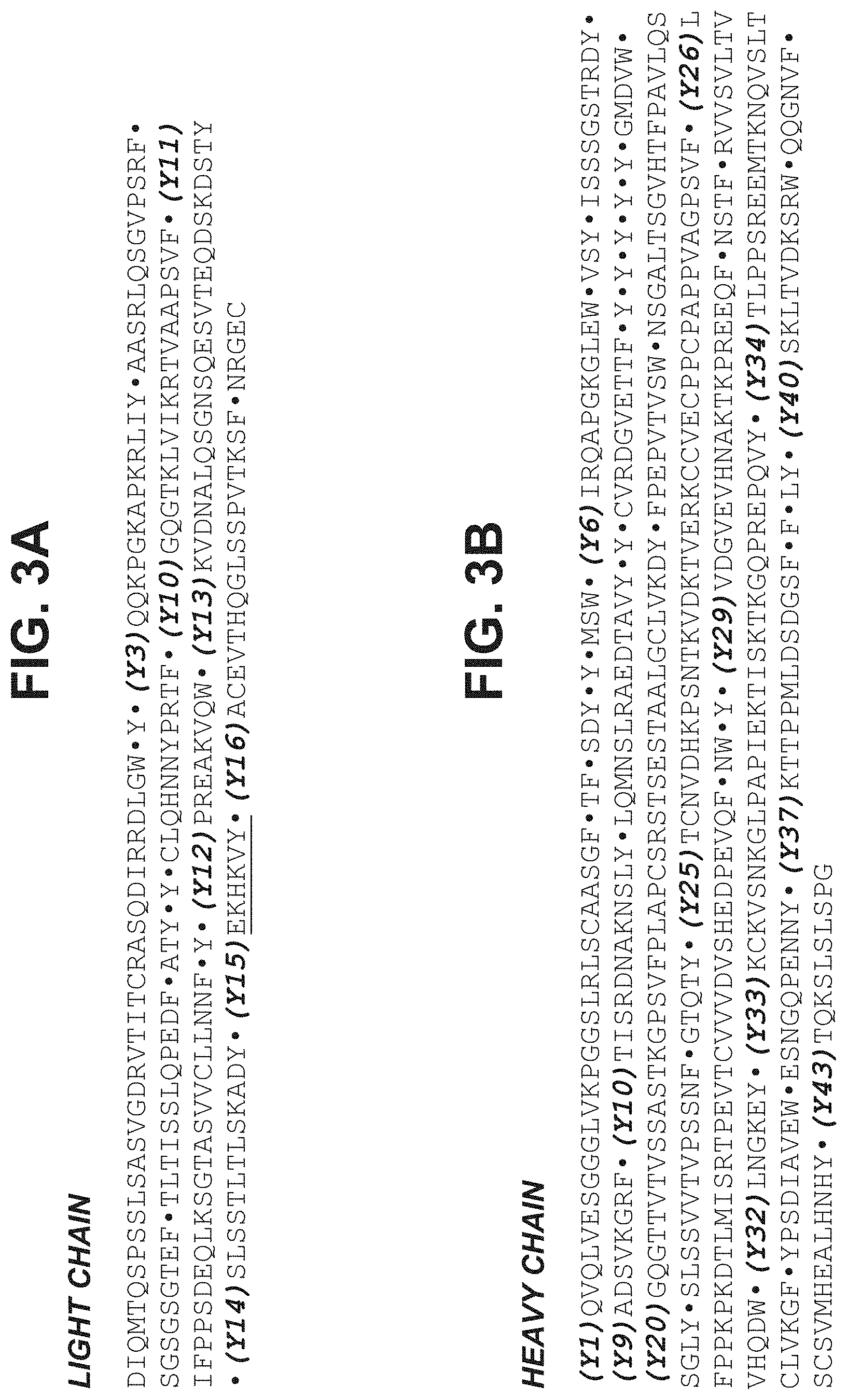
D00014
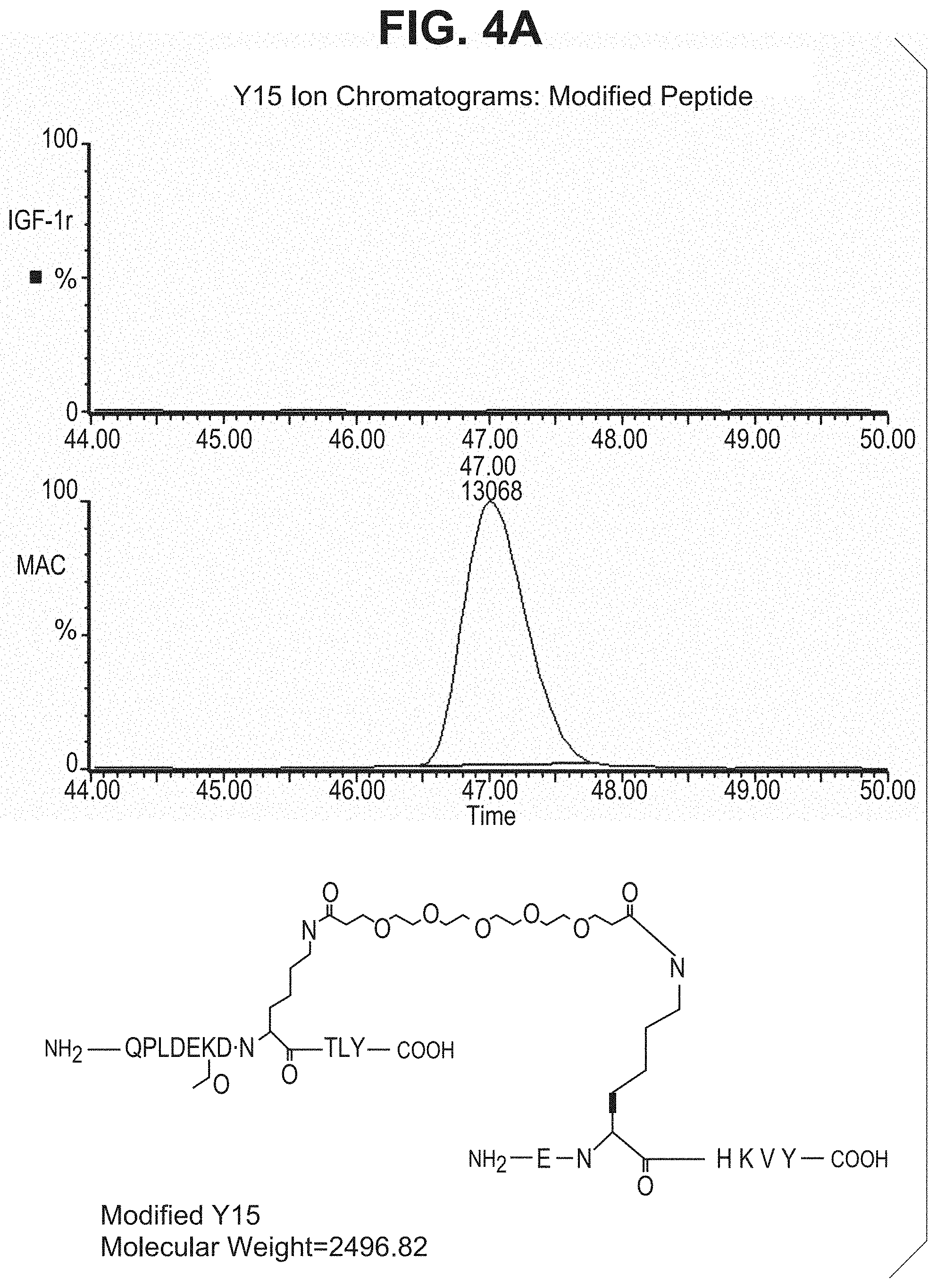
D00015
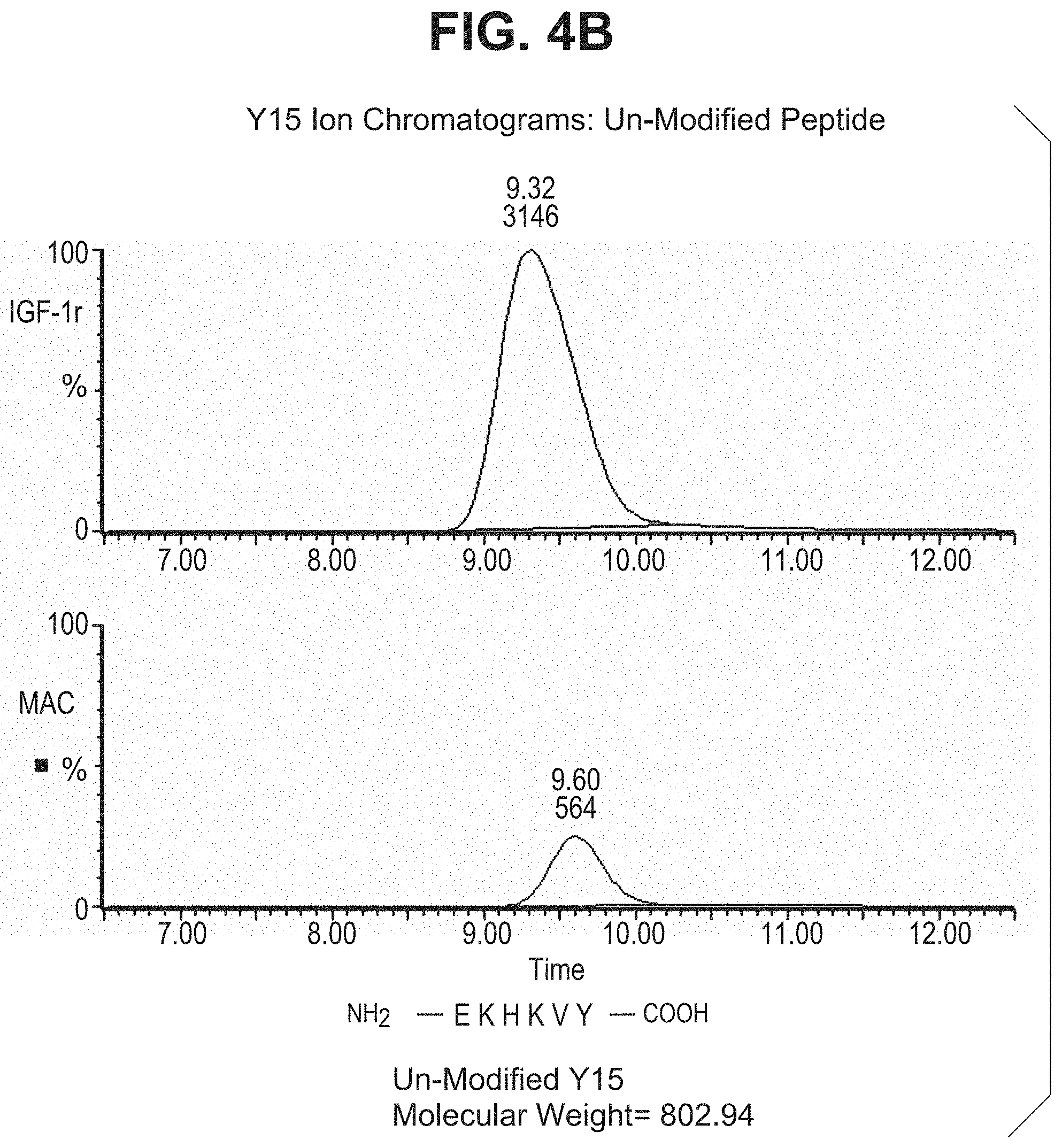
D00016
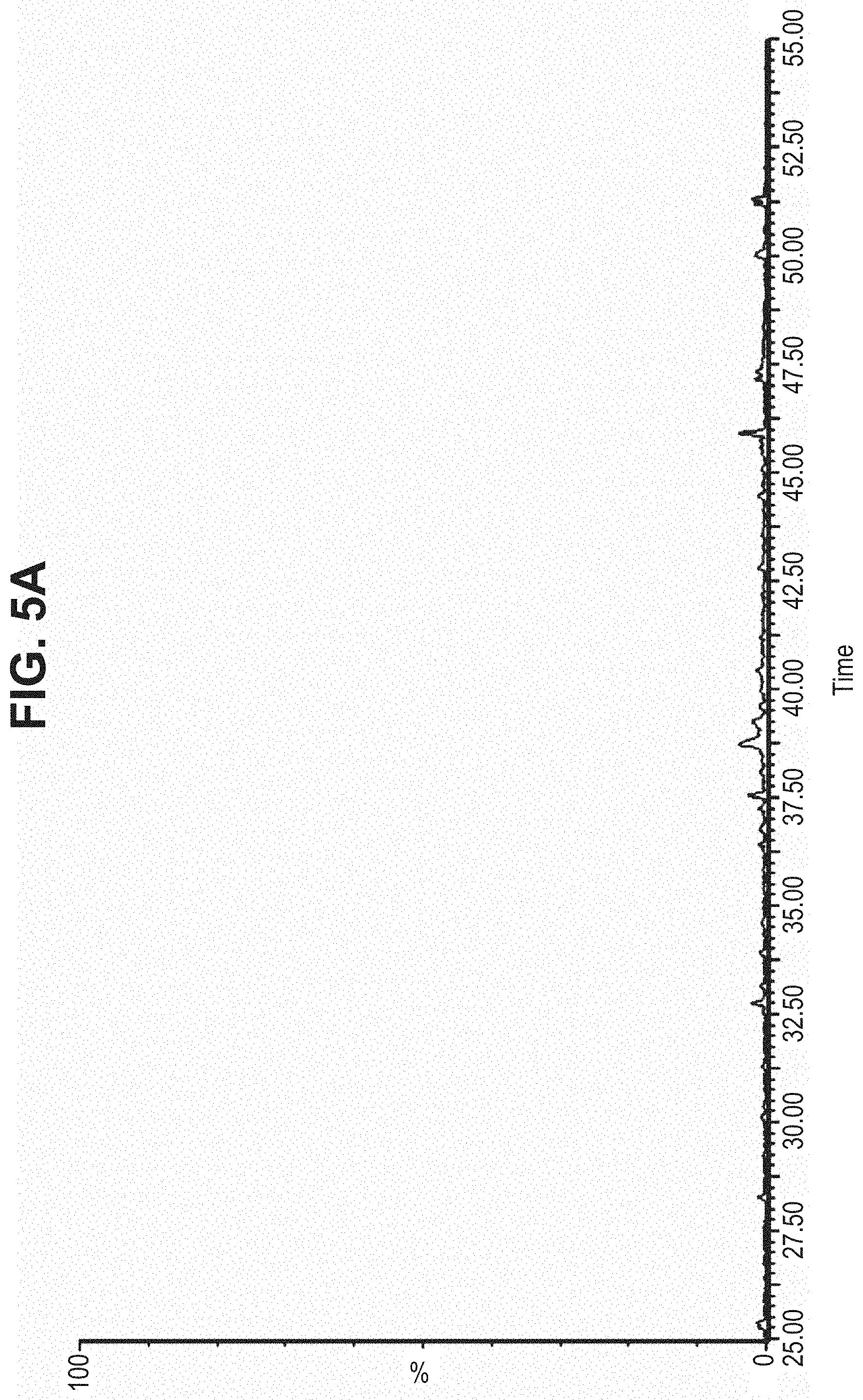
D00017

D00018
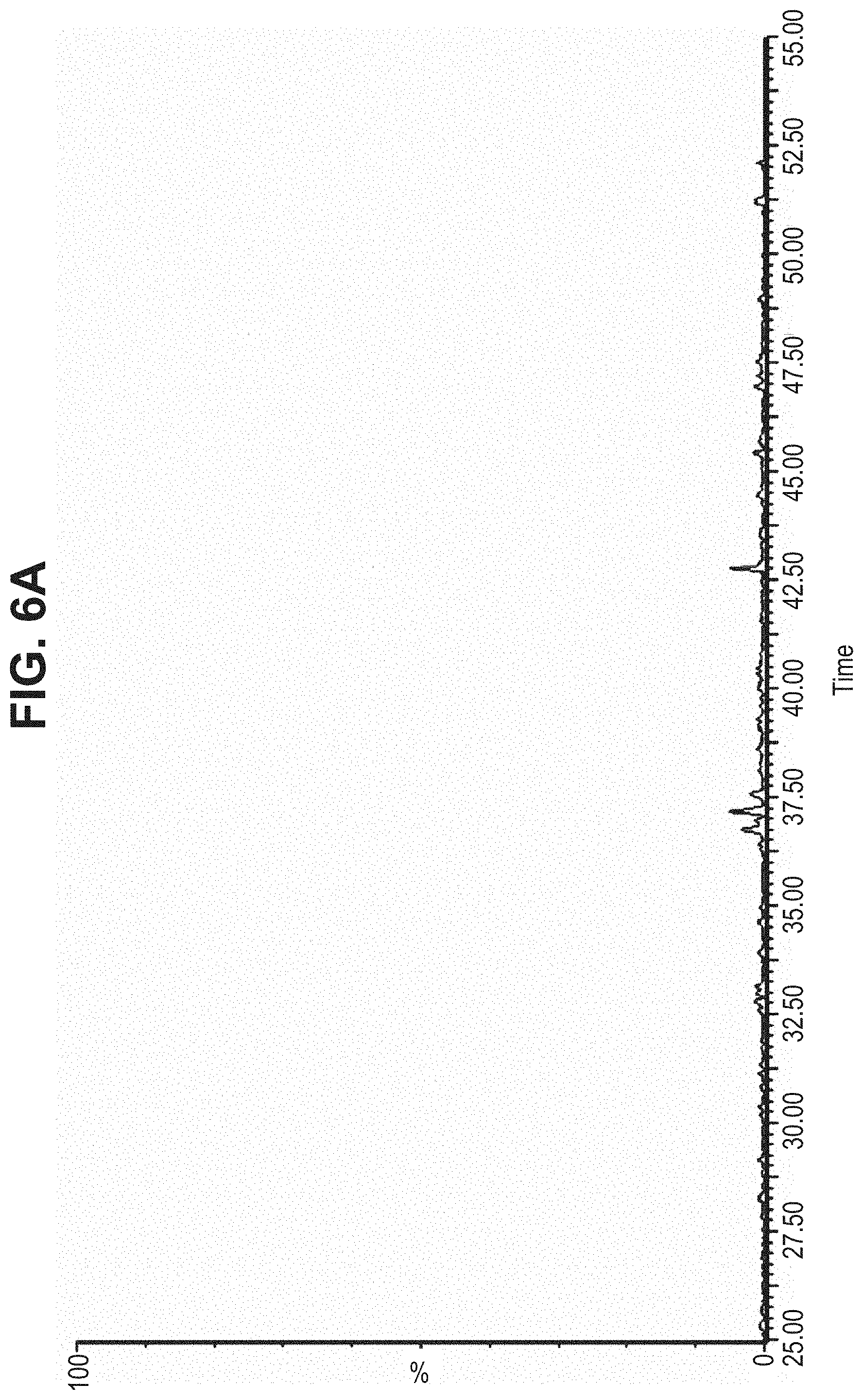
D00019
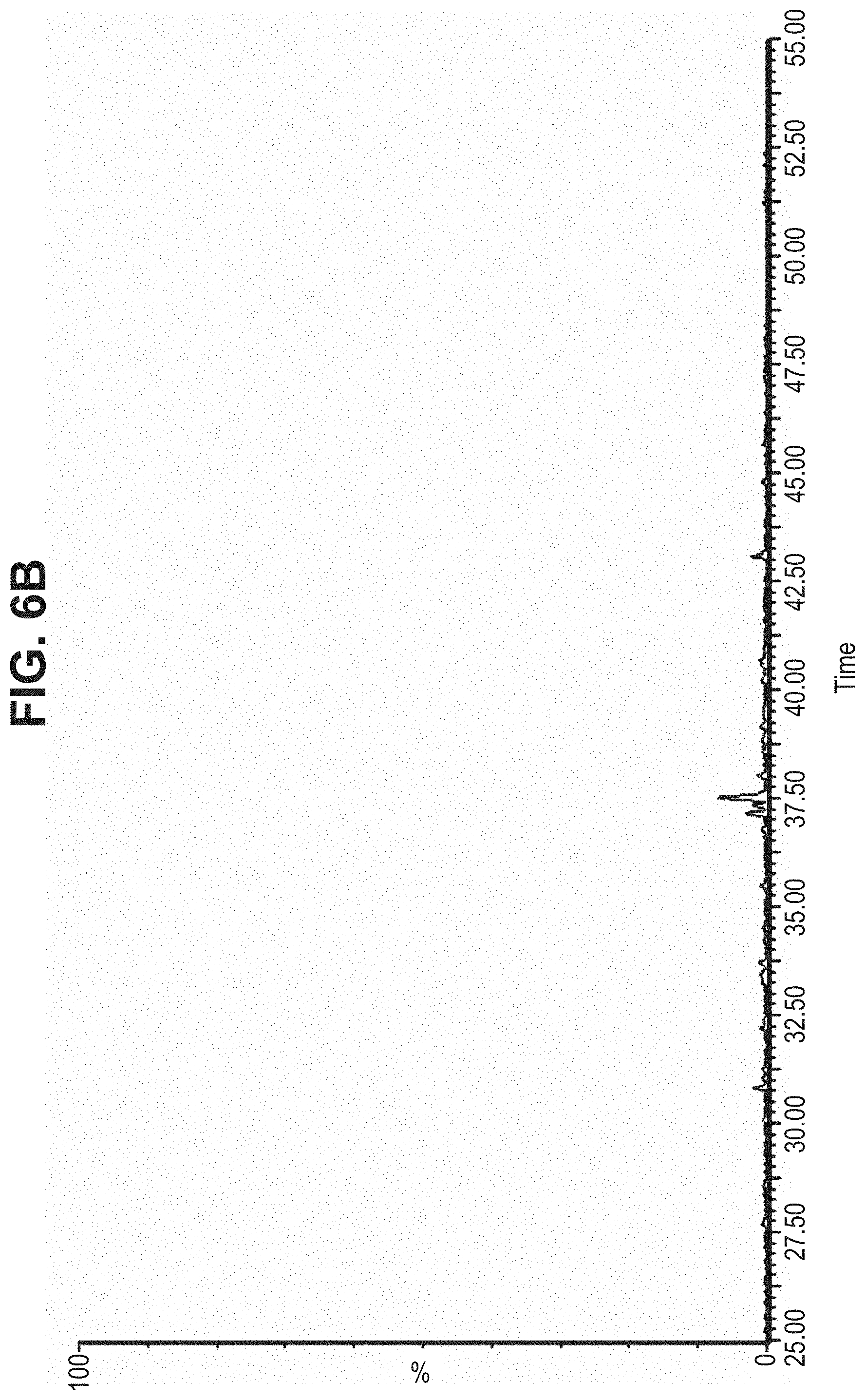
D00020
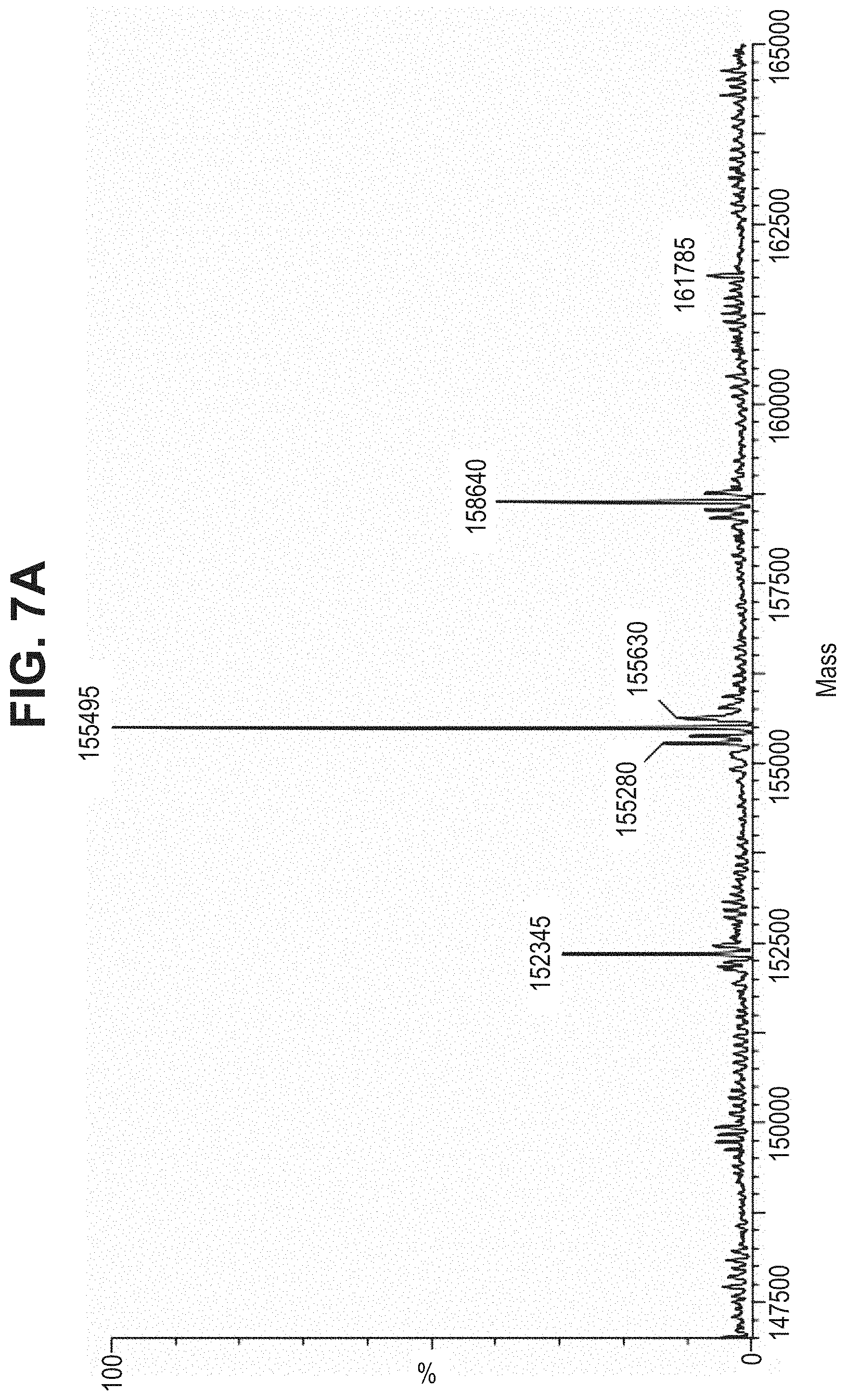
D00021
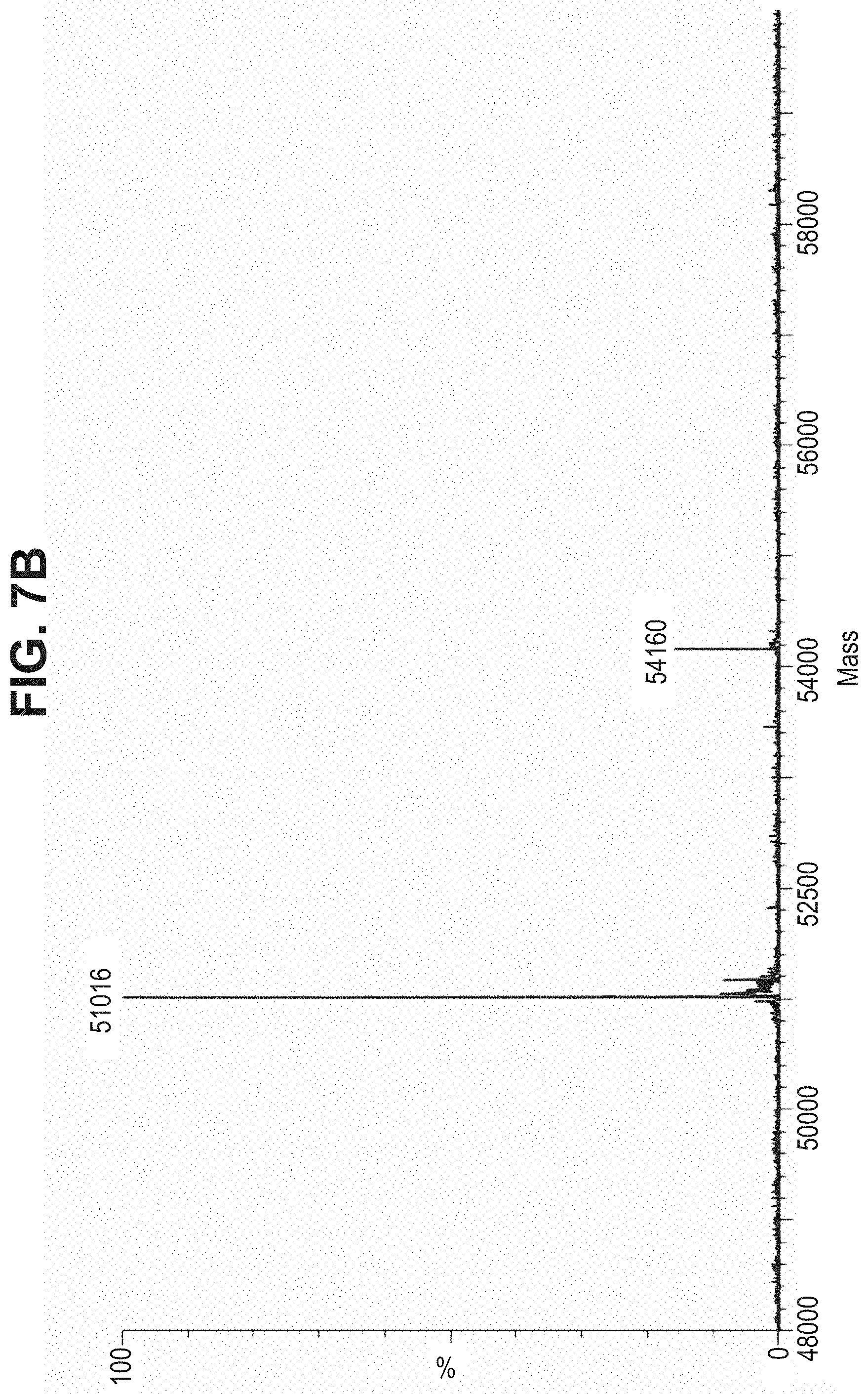
D00022

D00023
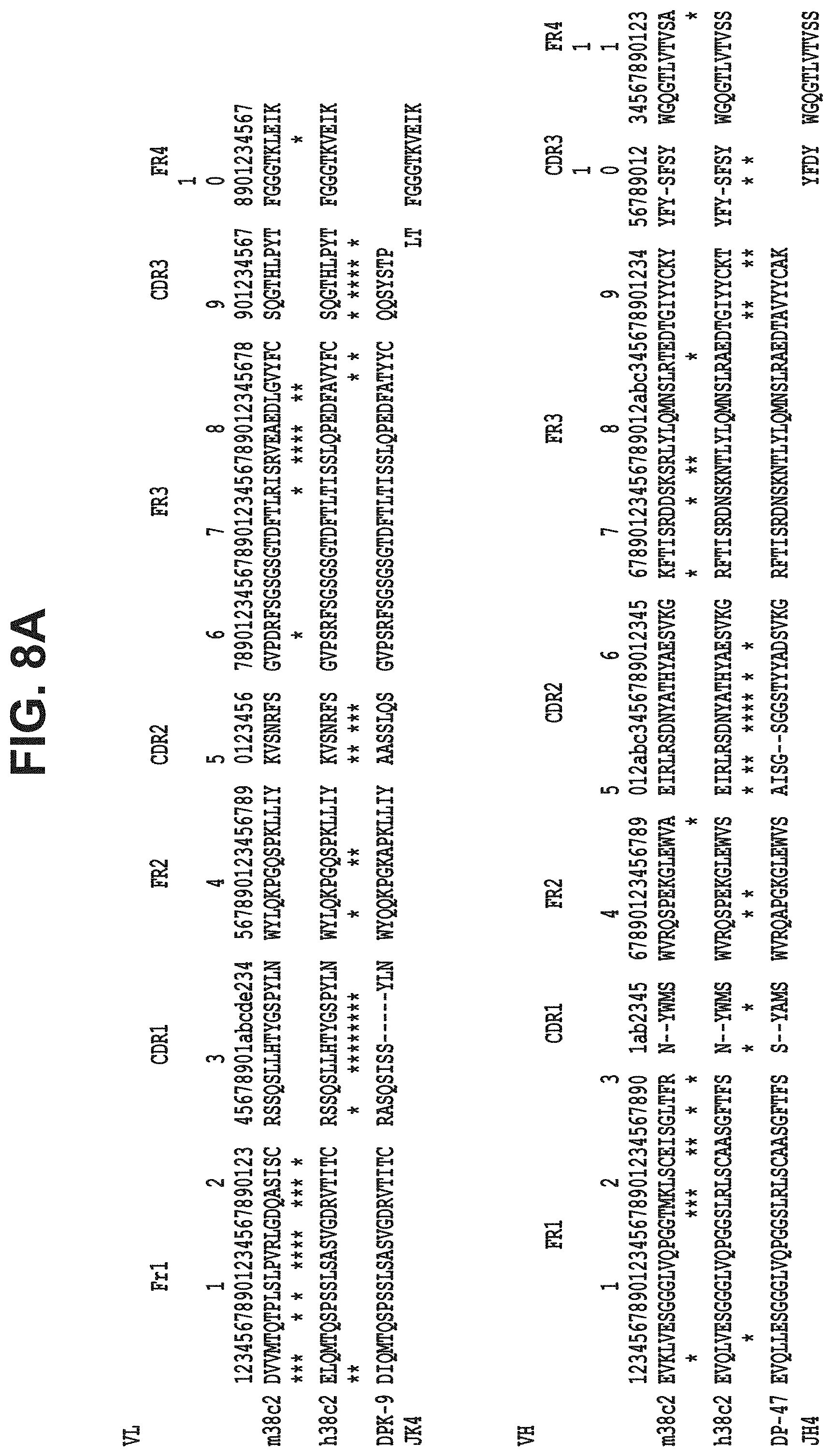
D00024
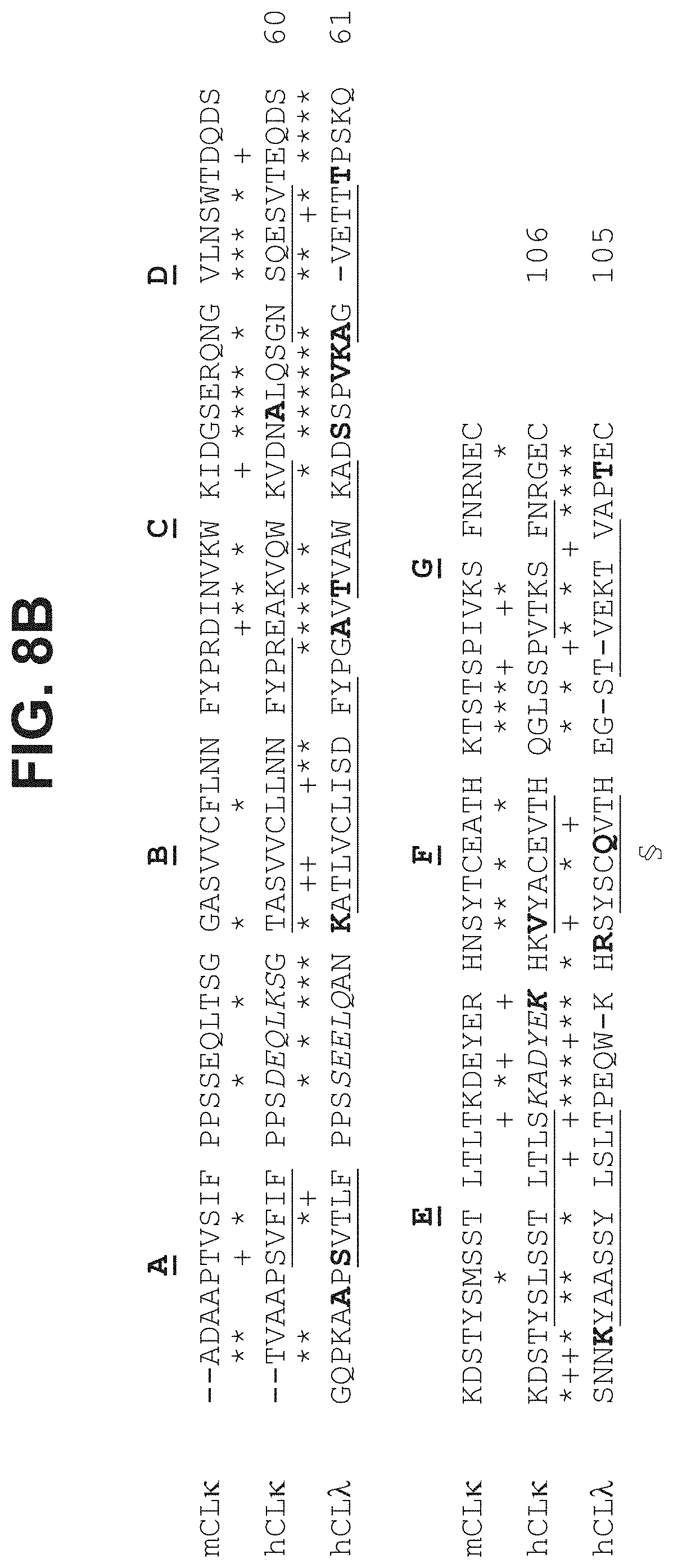
D00025
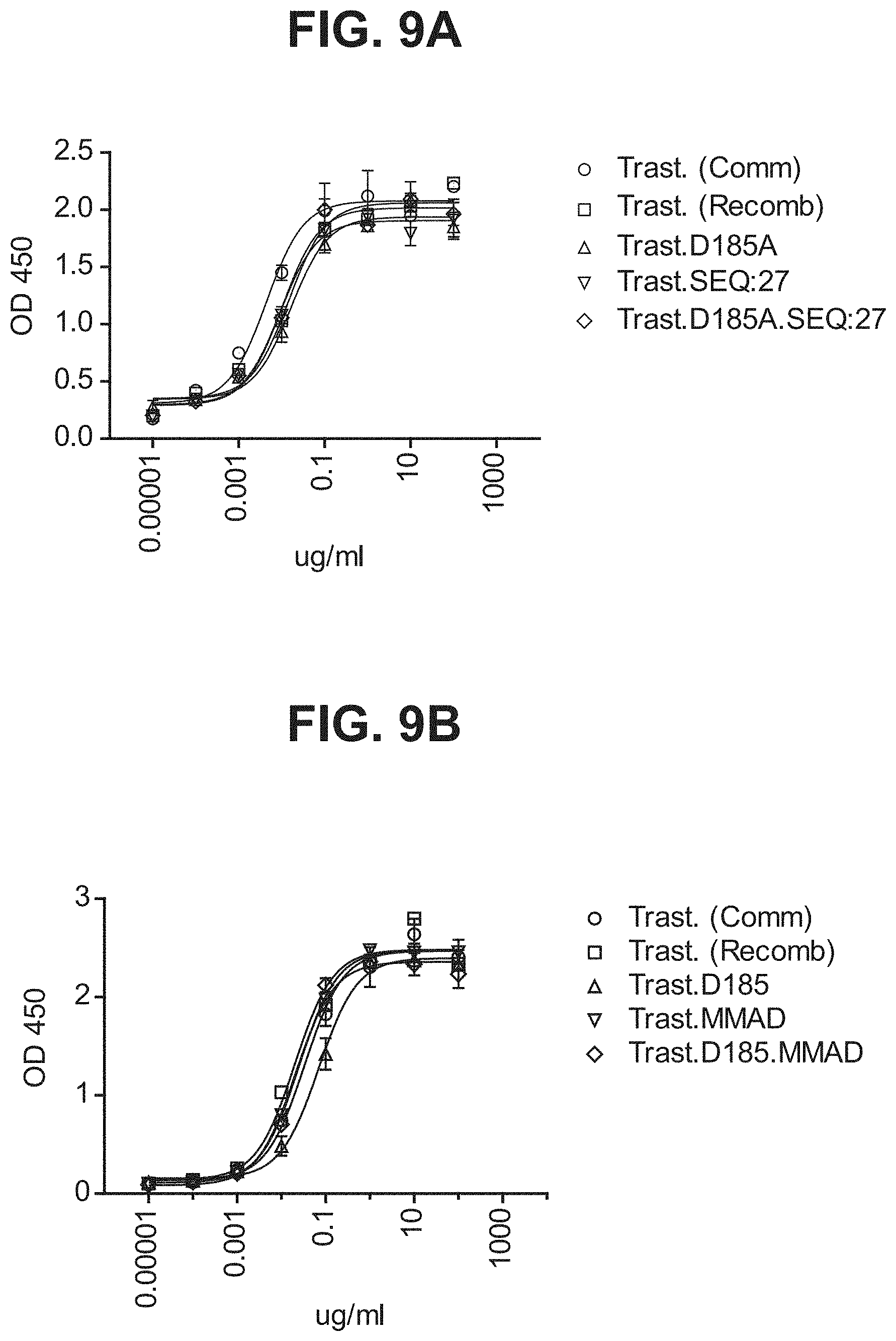
D00026
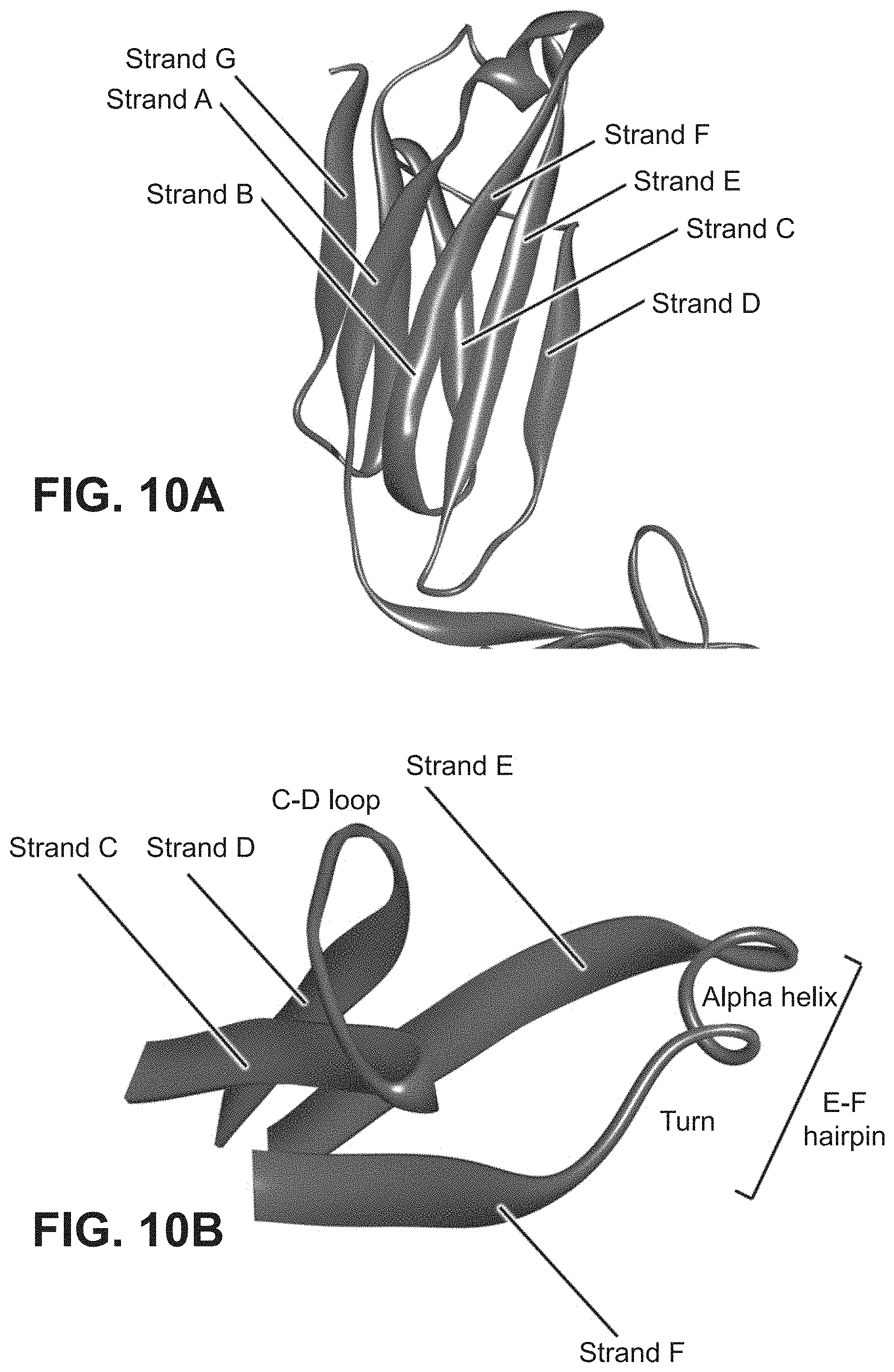
D00027
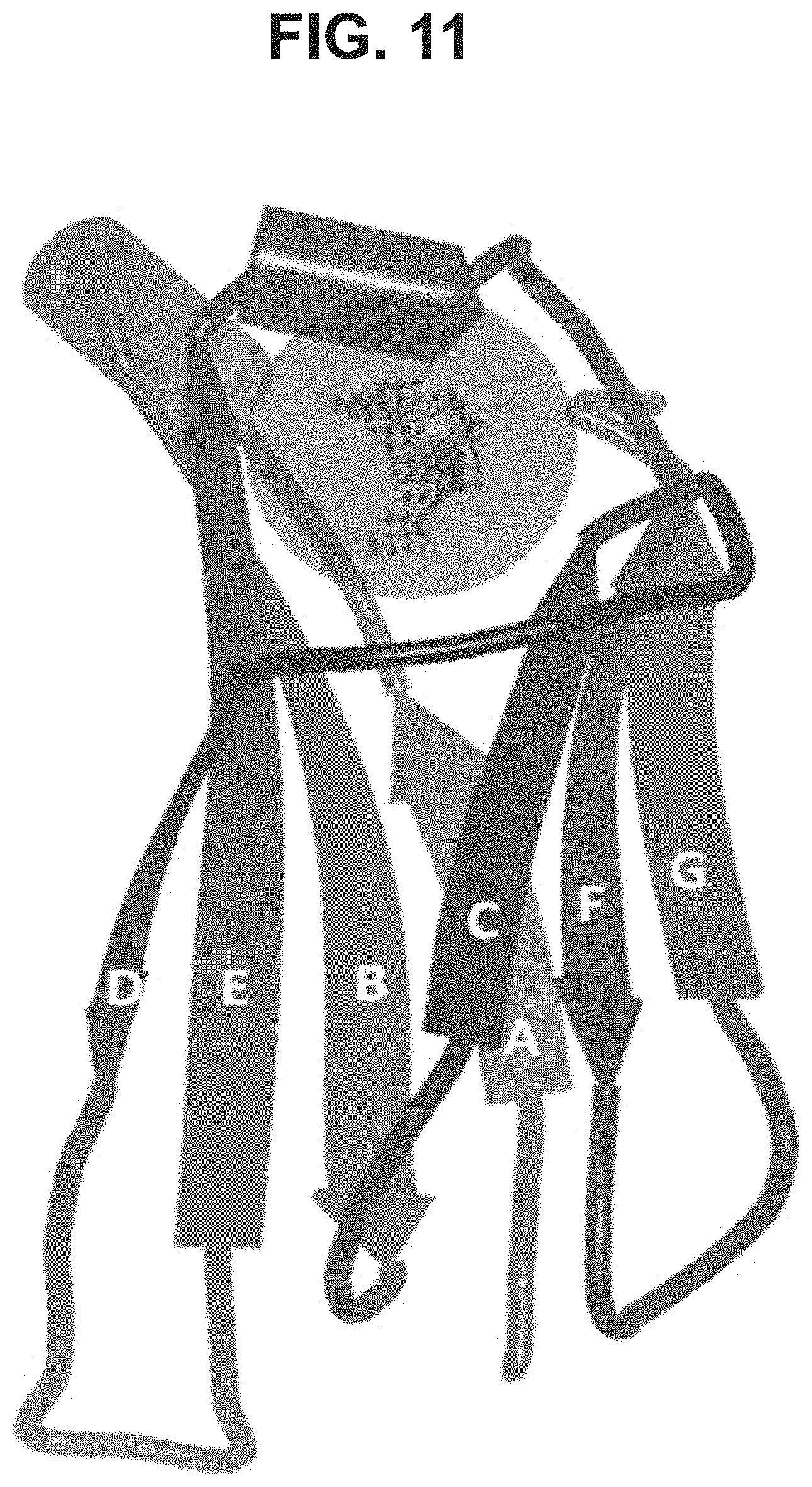
D00028
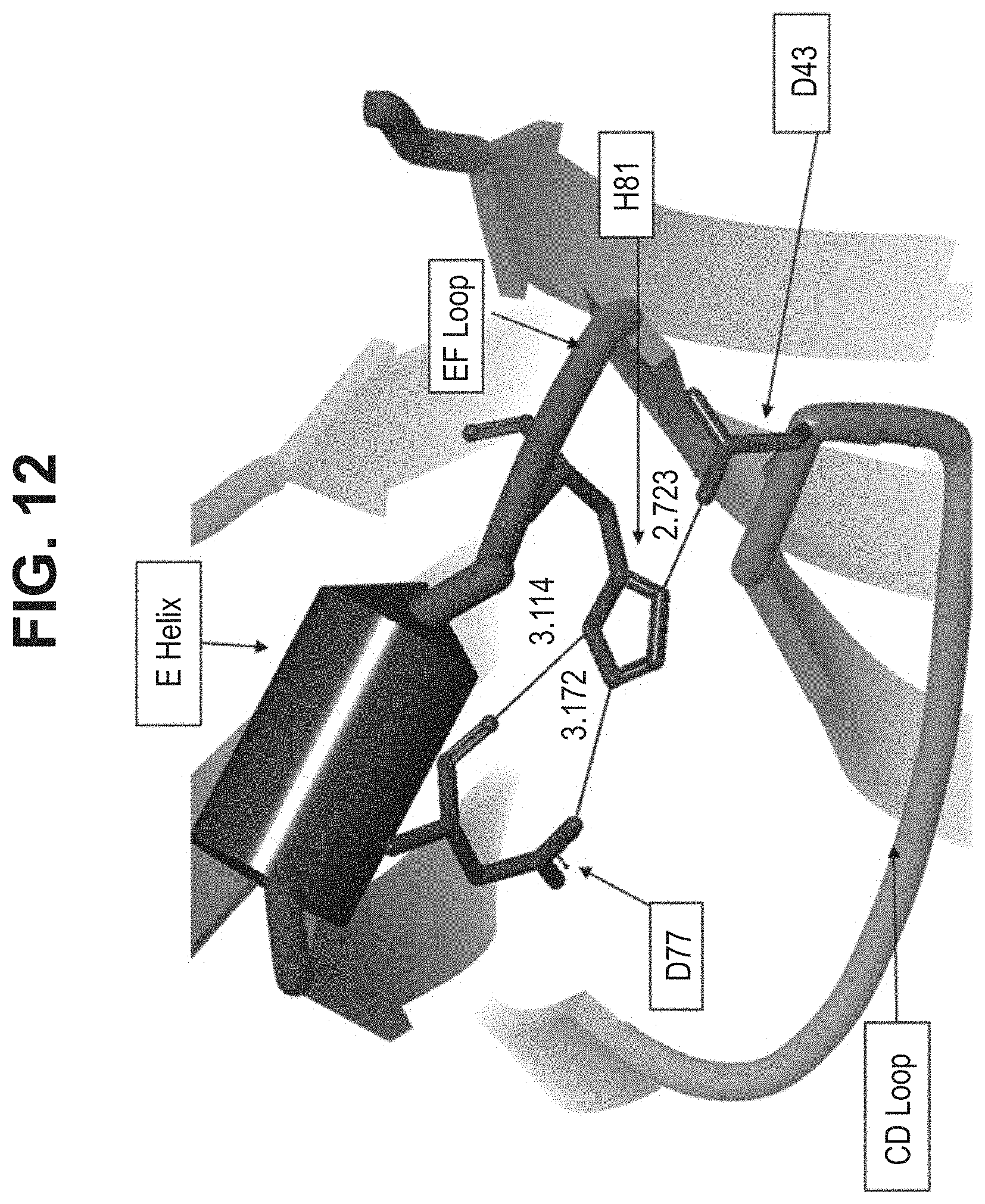
D00029
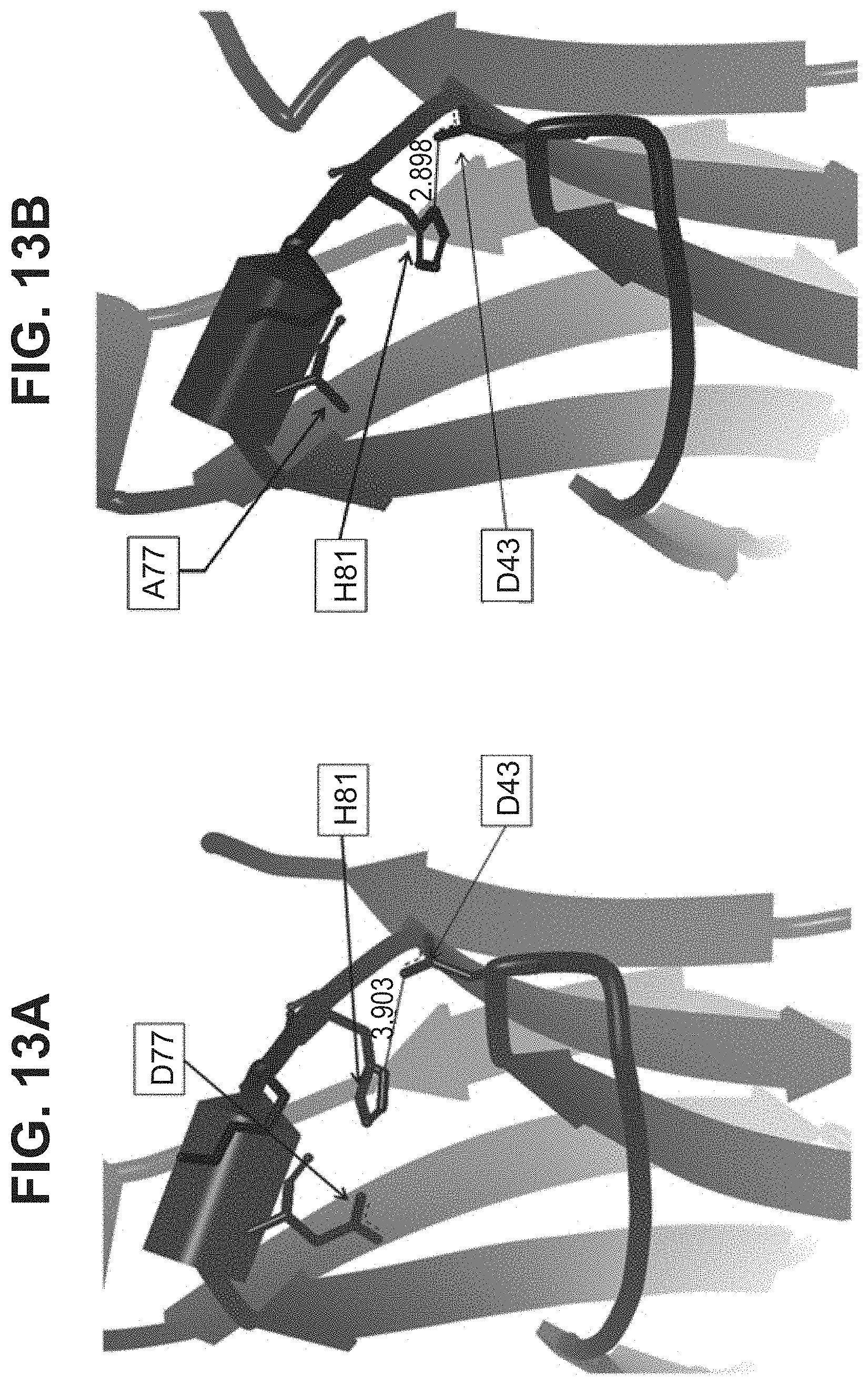
D00030
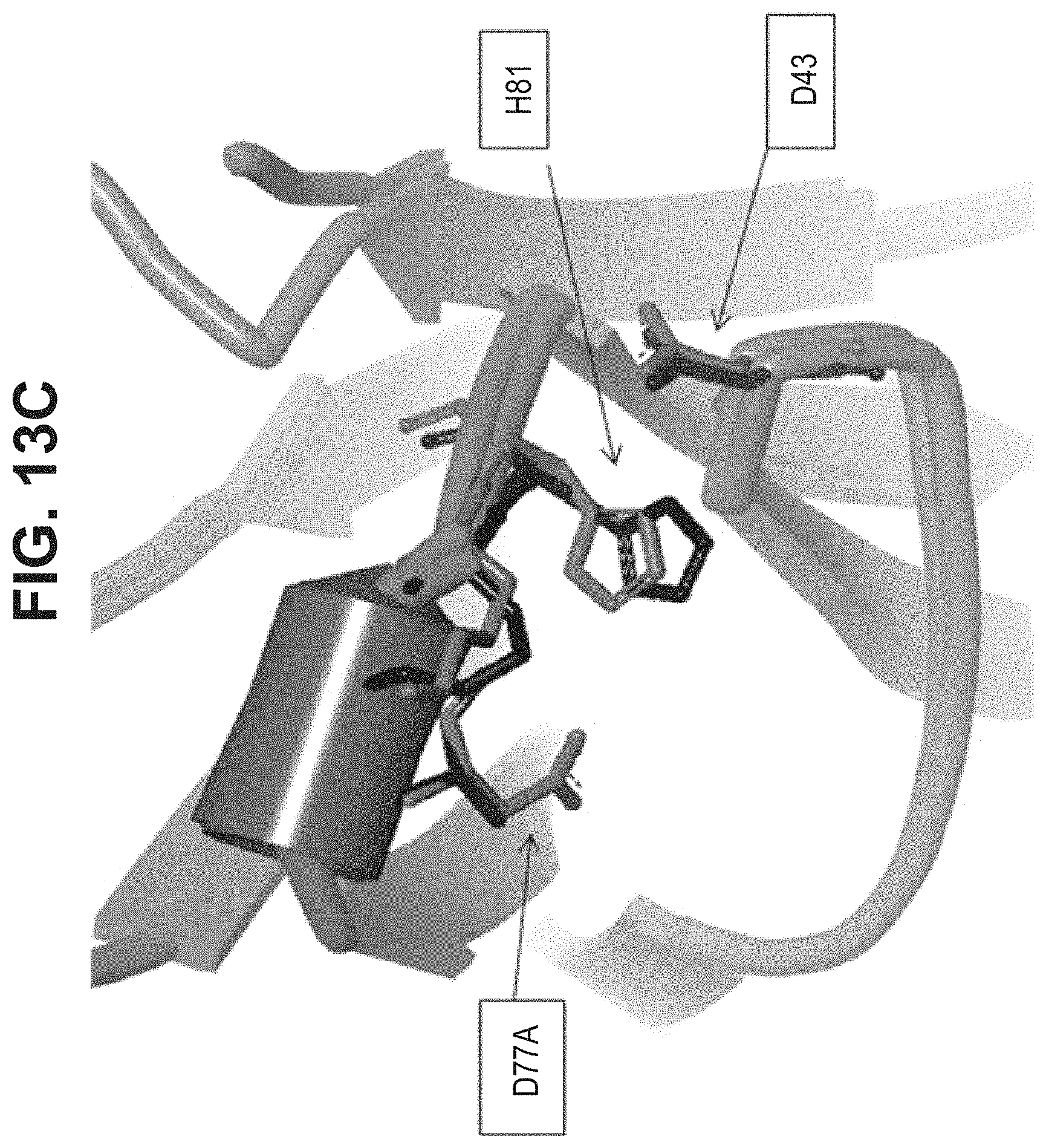
D00031
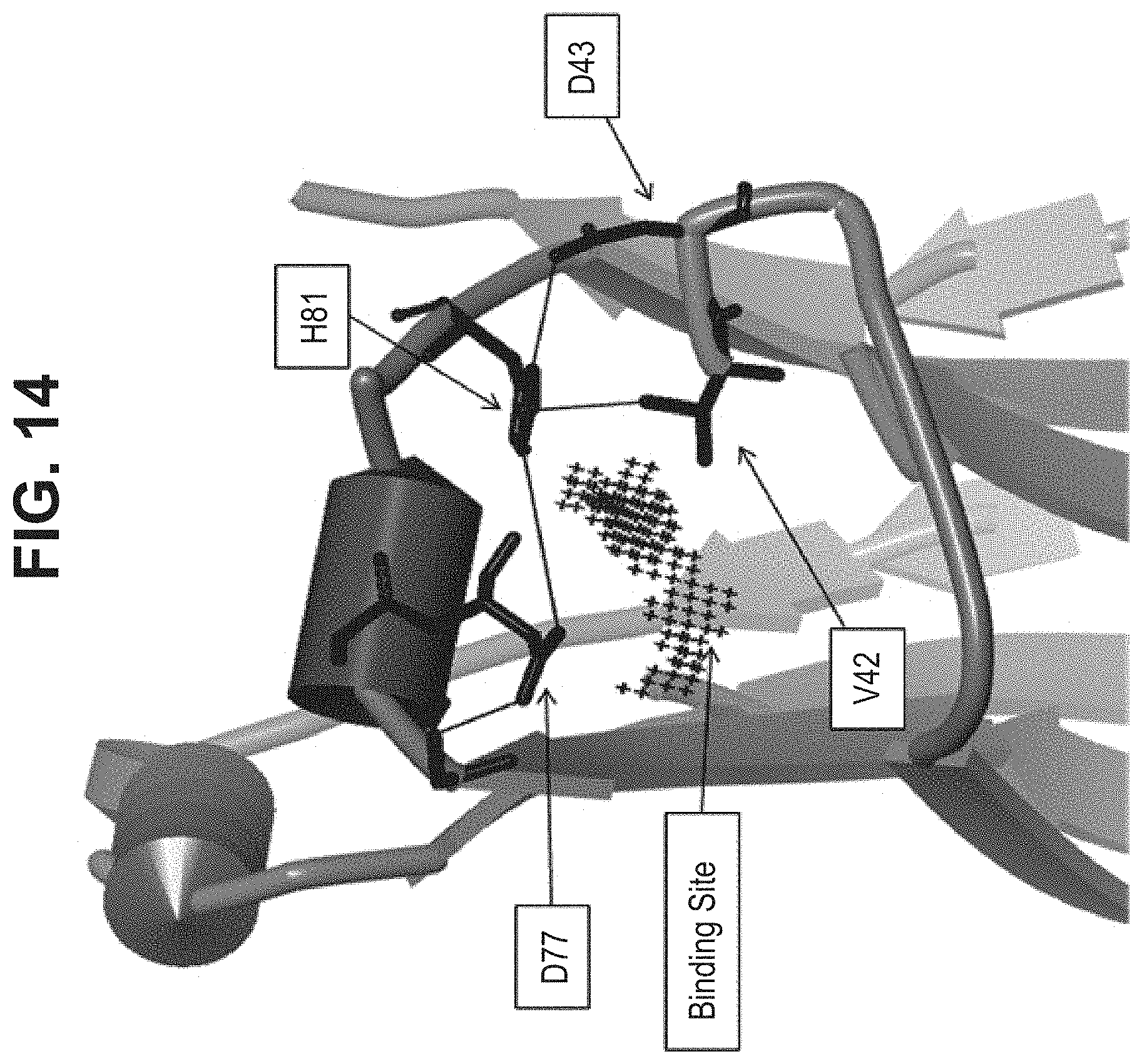
D00032
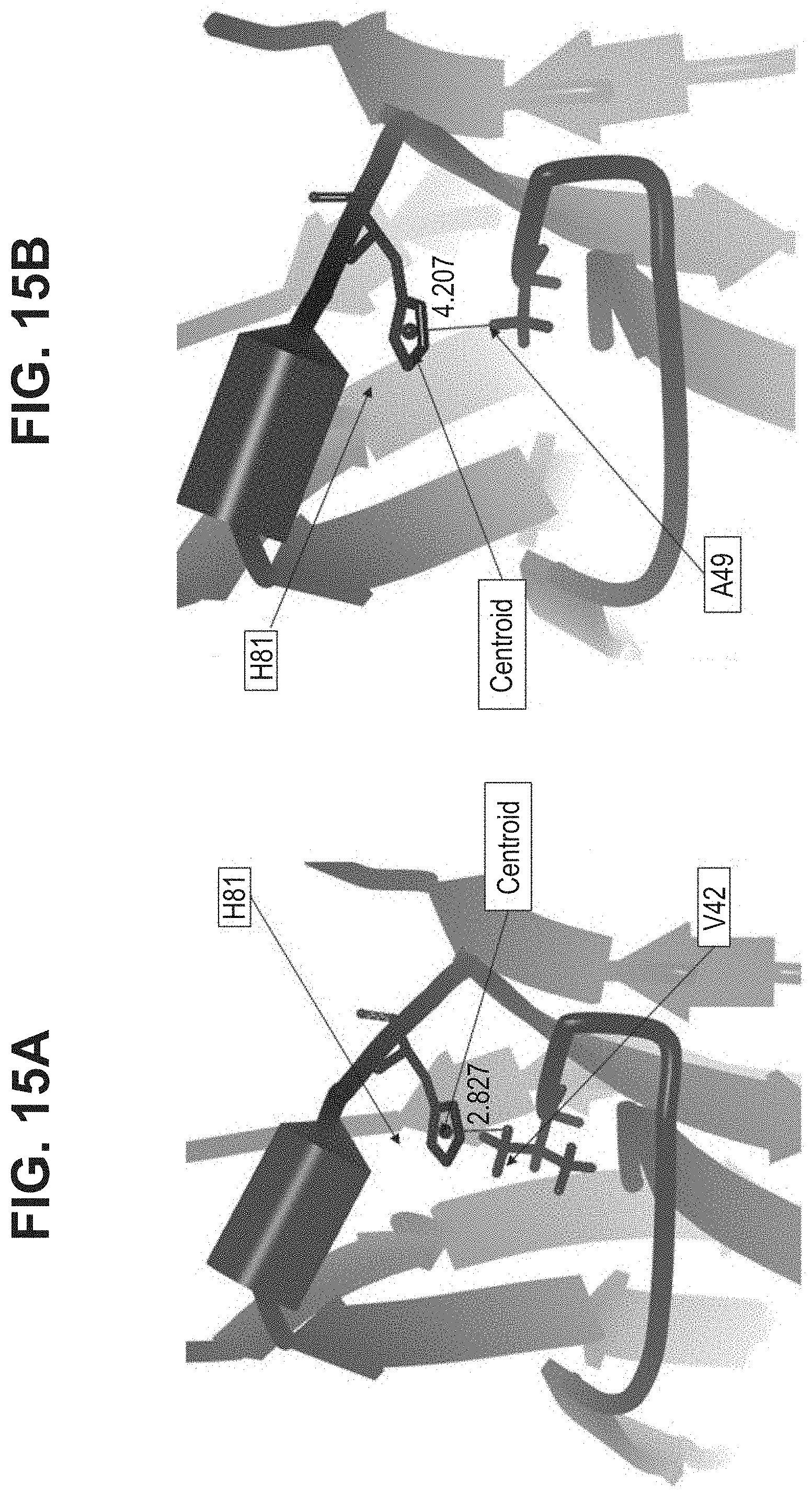
D00033
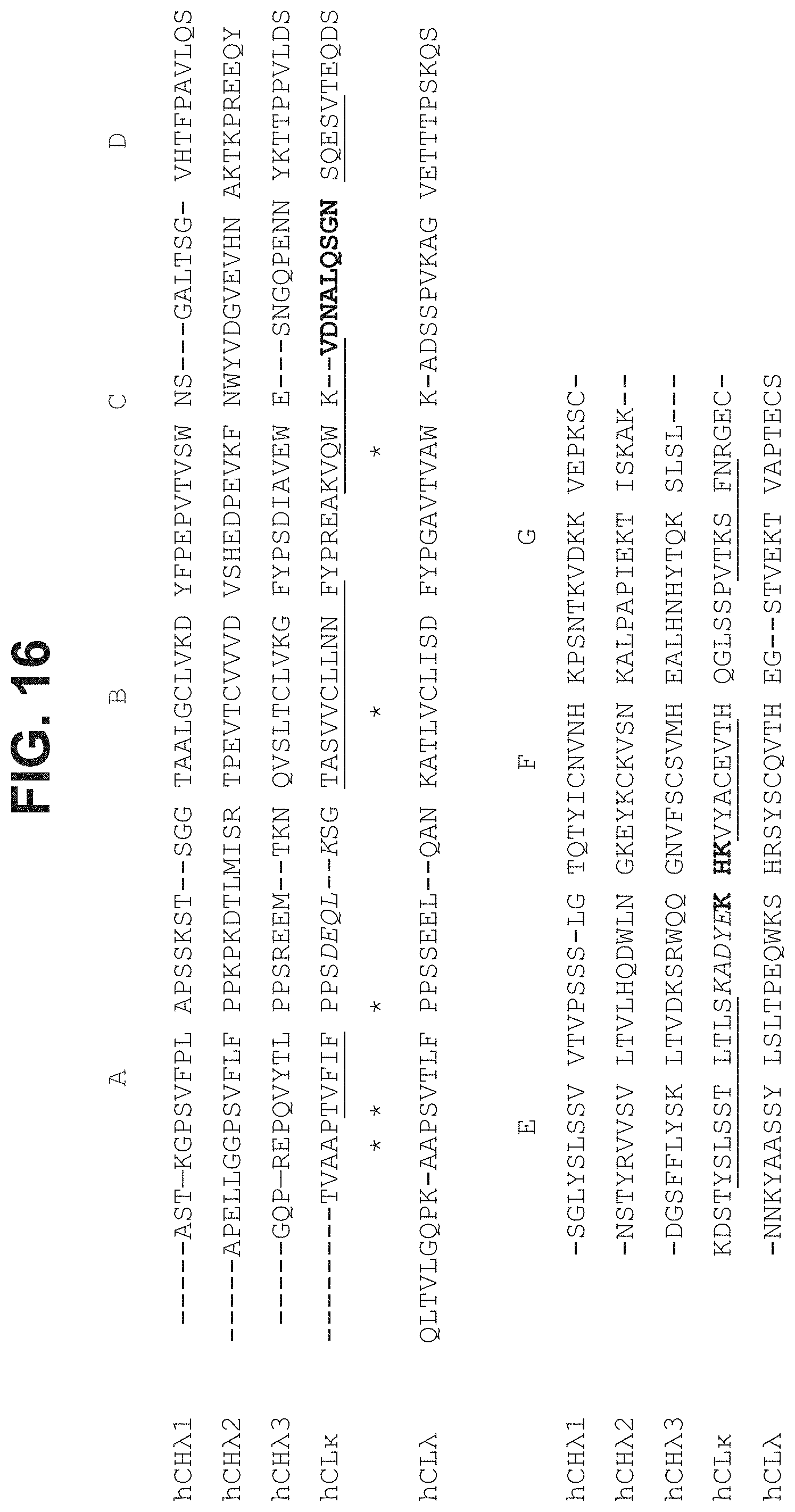
D00034
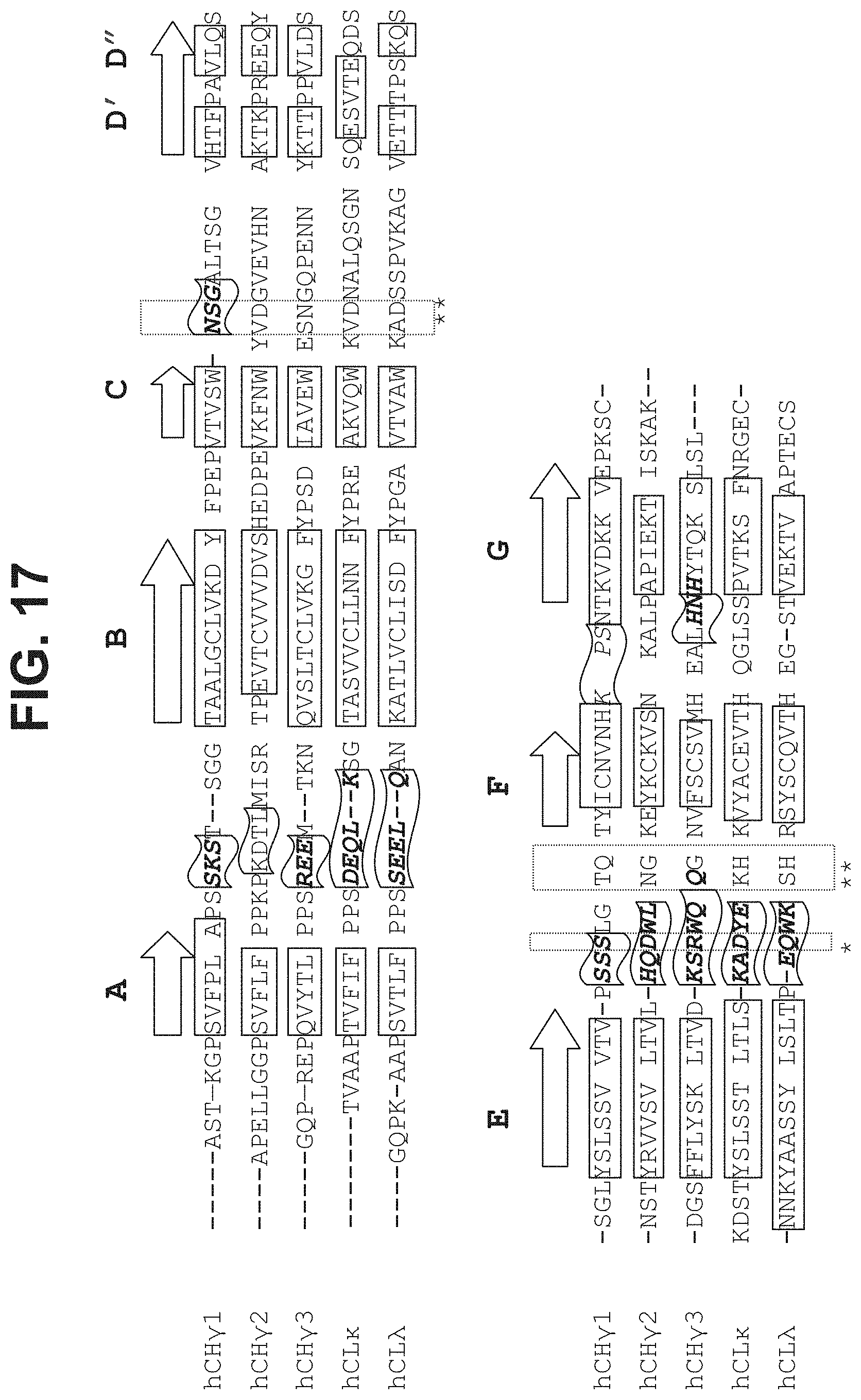
D00035
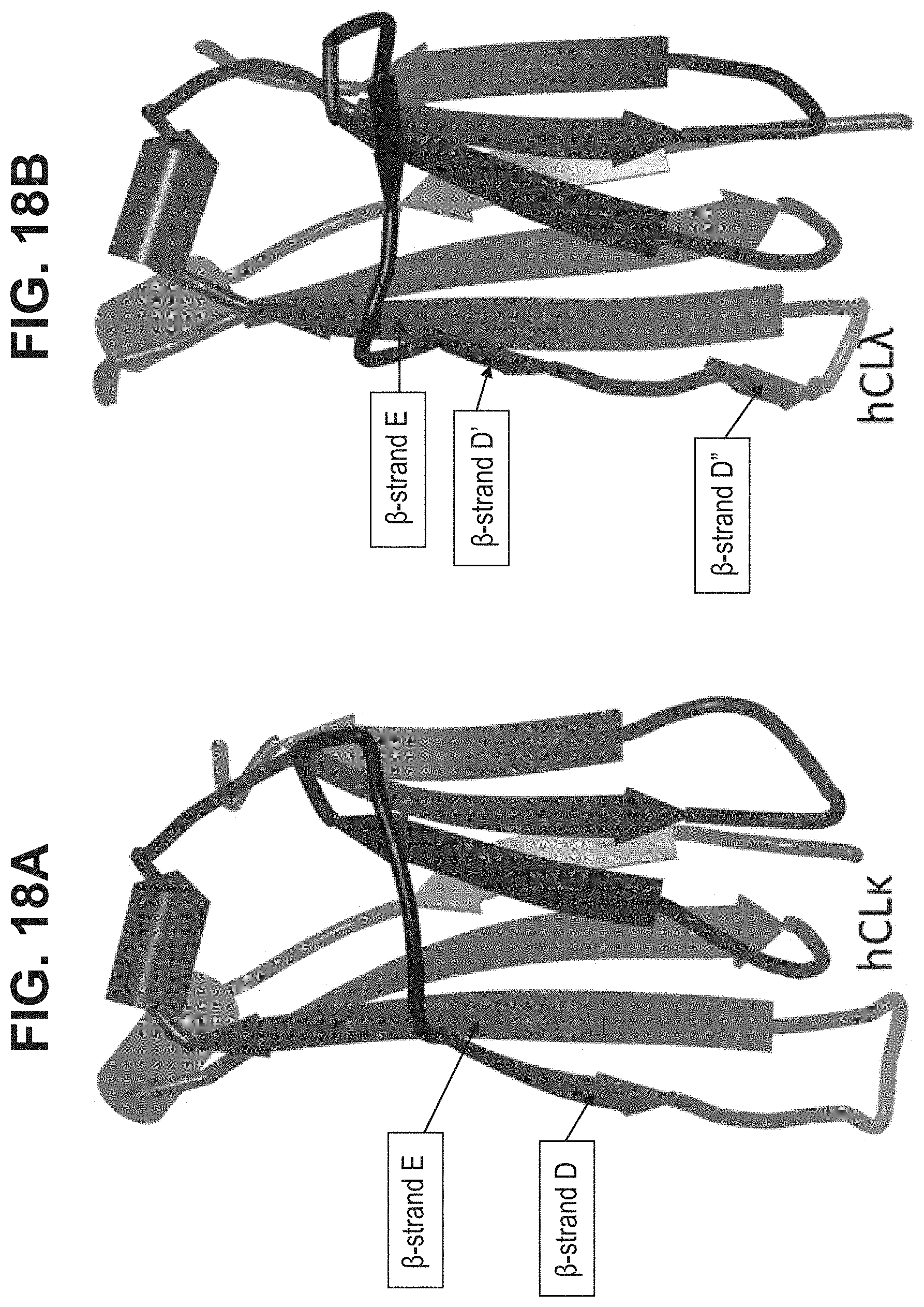
D00036

D00037
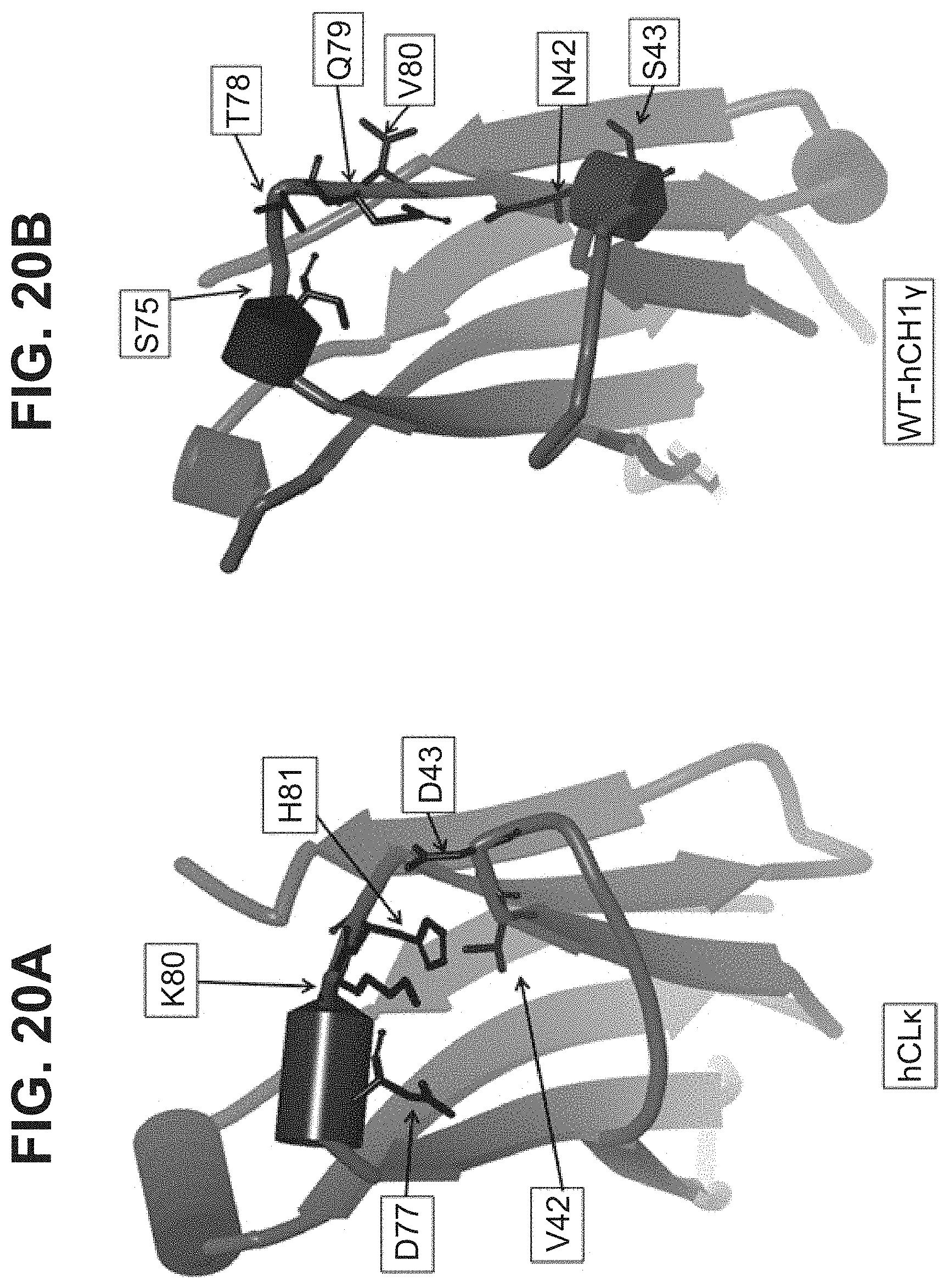
D00038
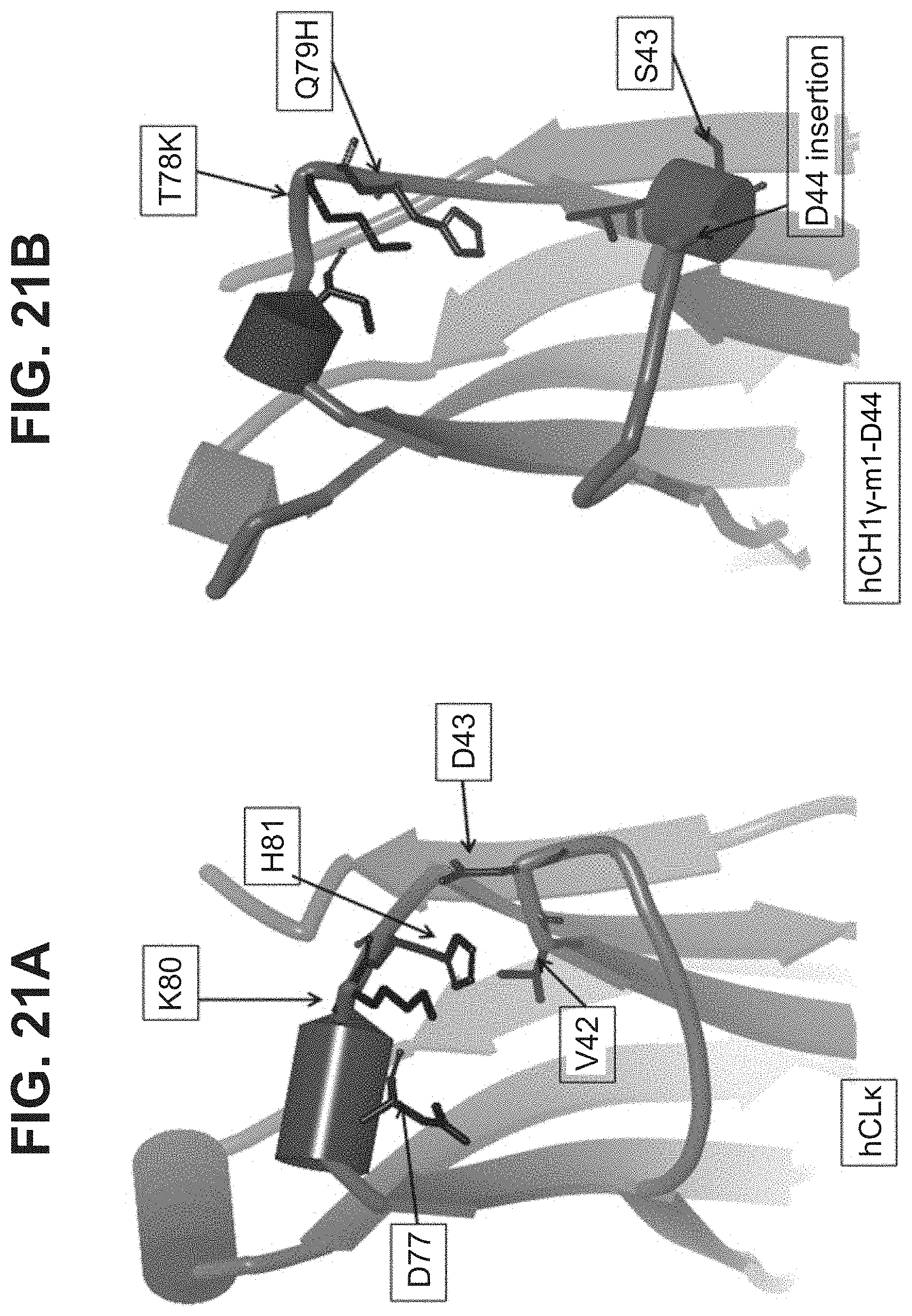
D00039

D00040
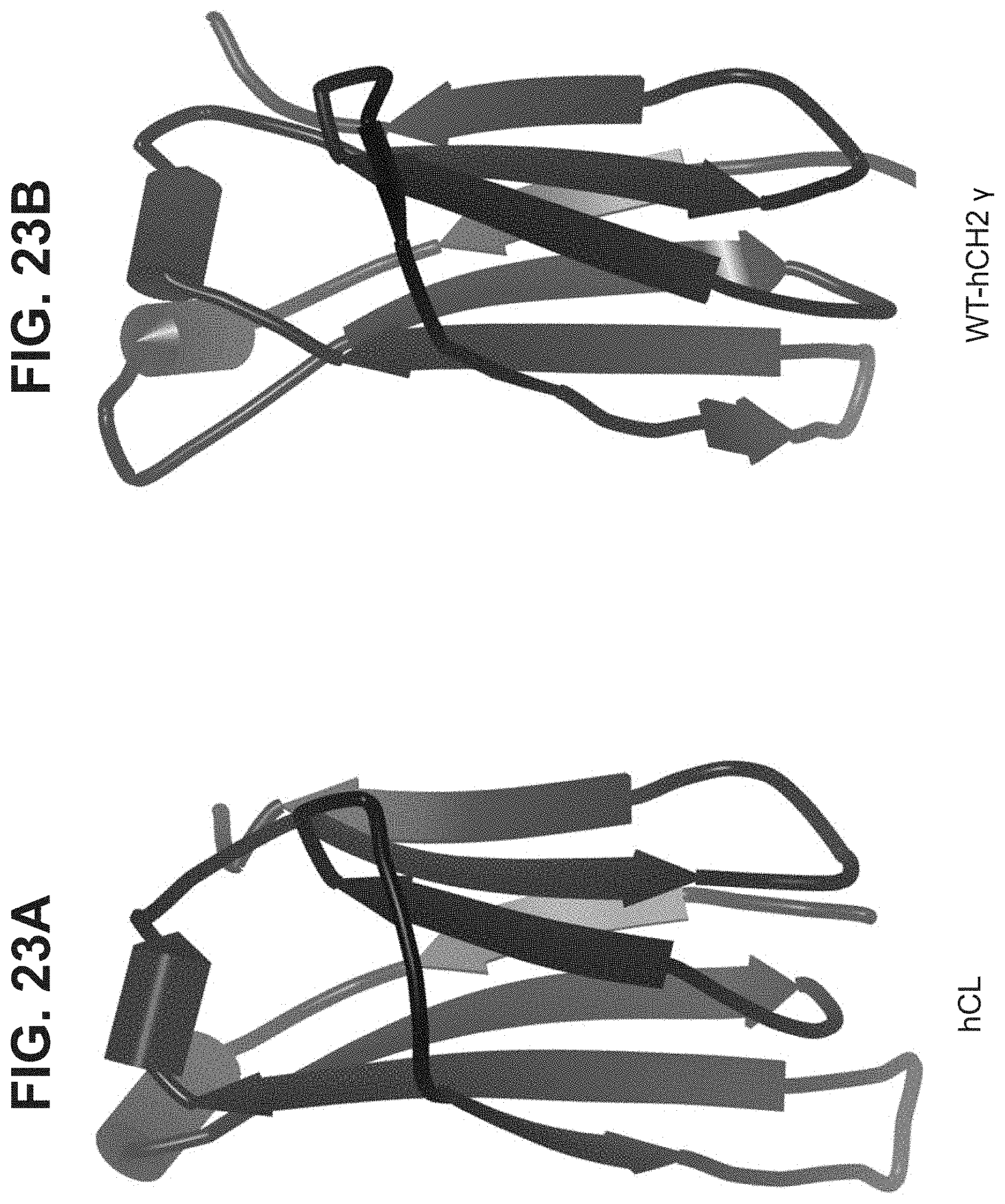
D00041
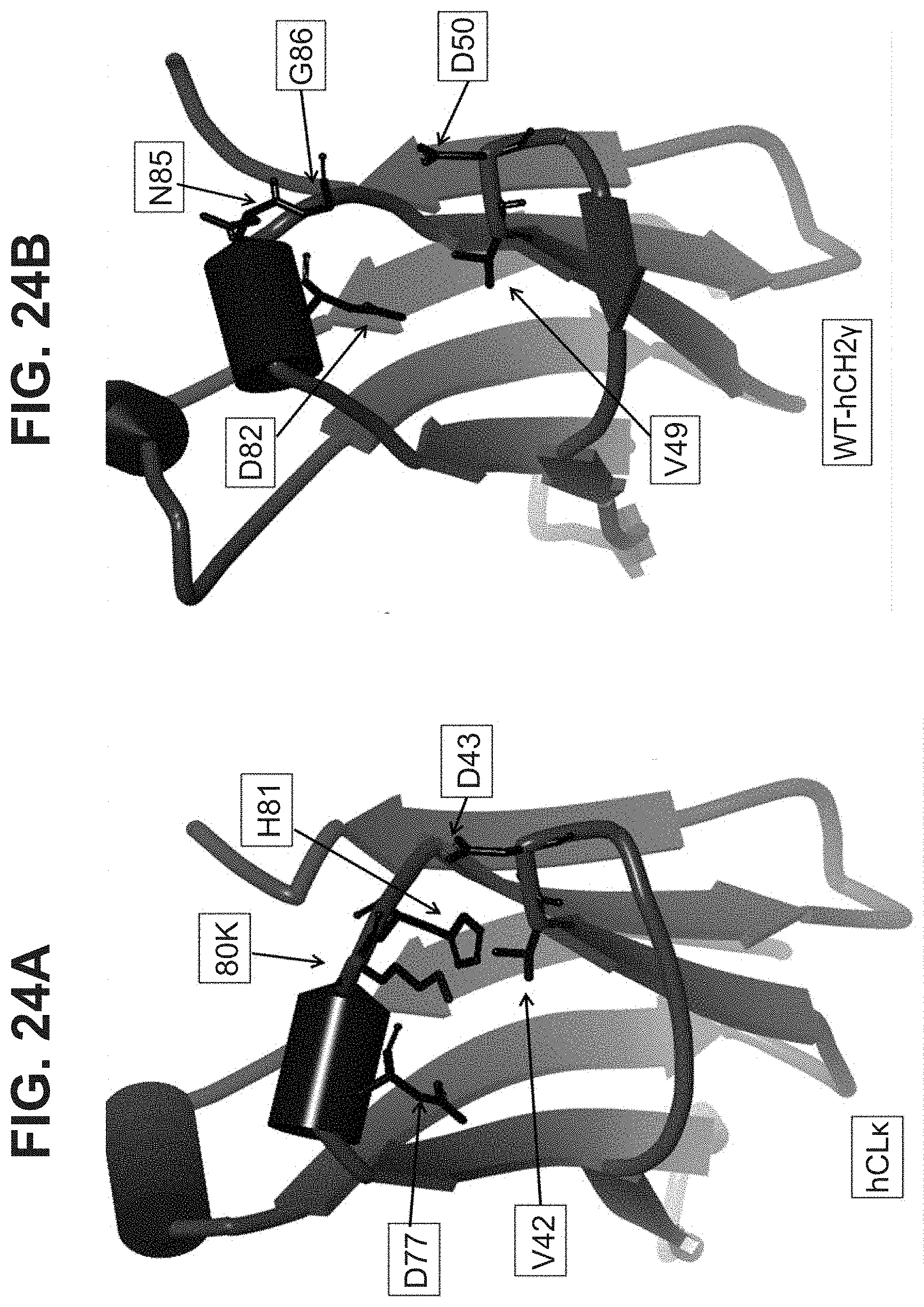
D00042
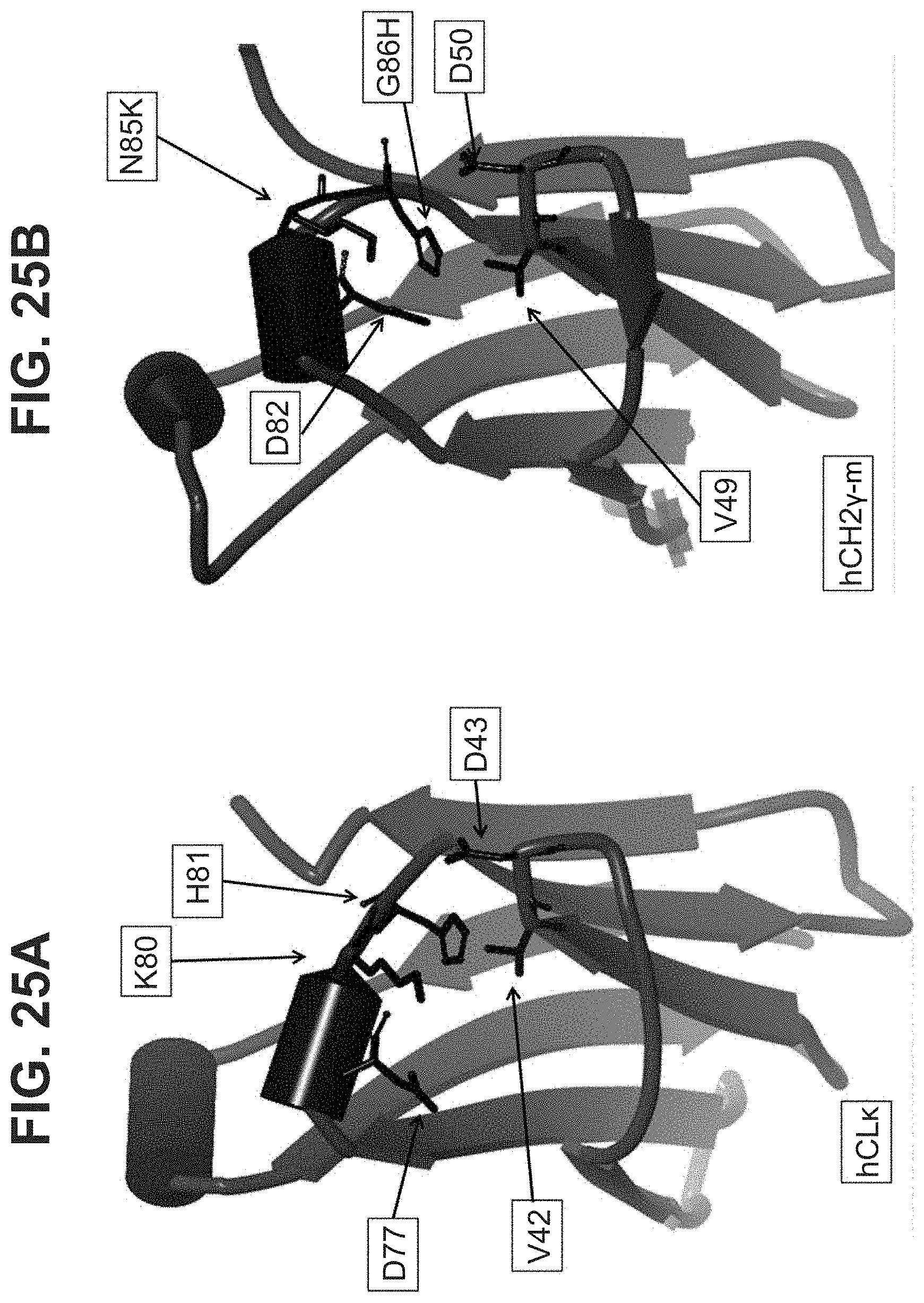
D00043

D00044
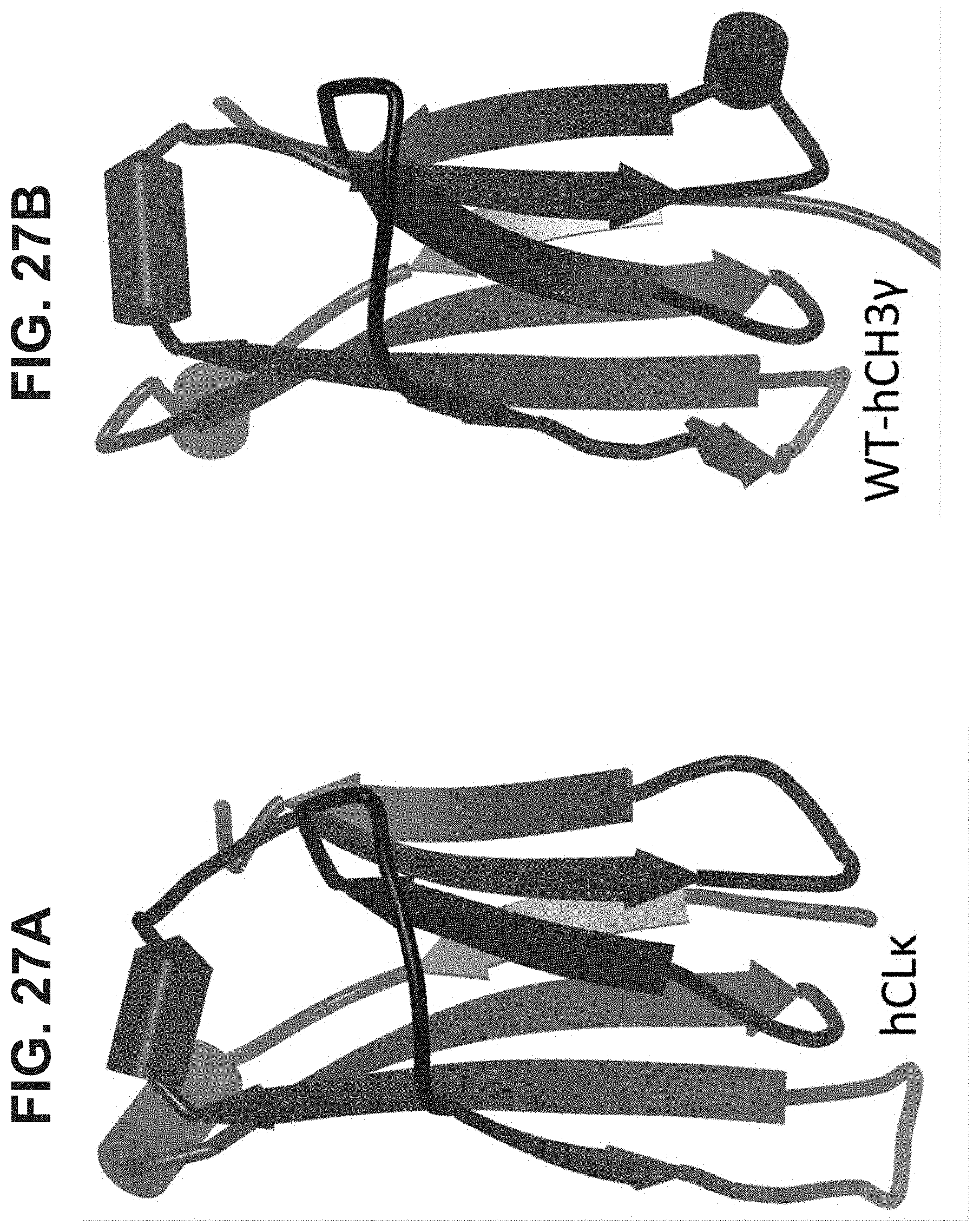
D00045
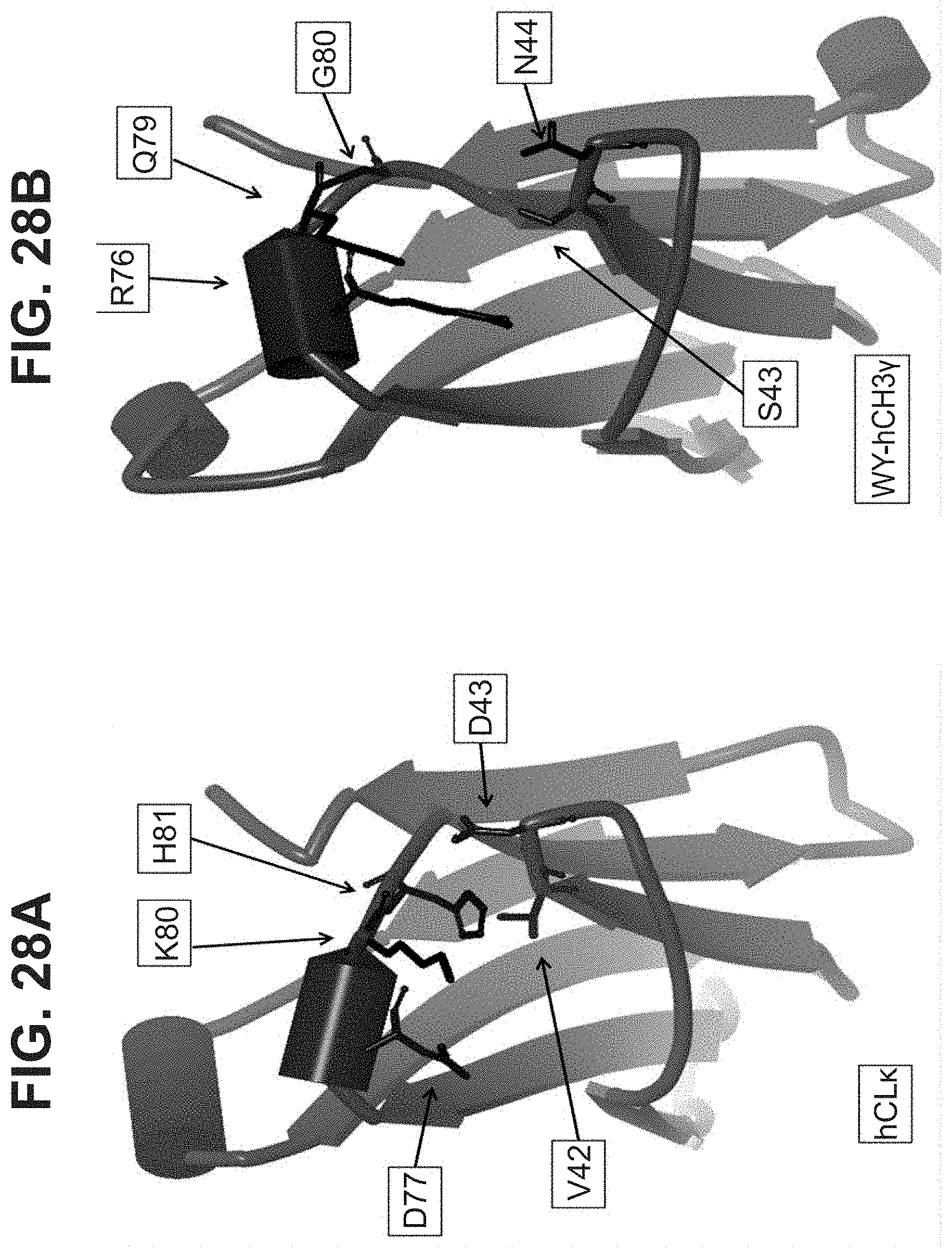
D00046
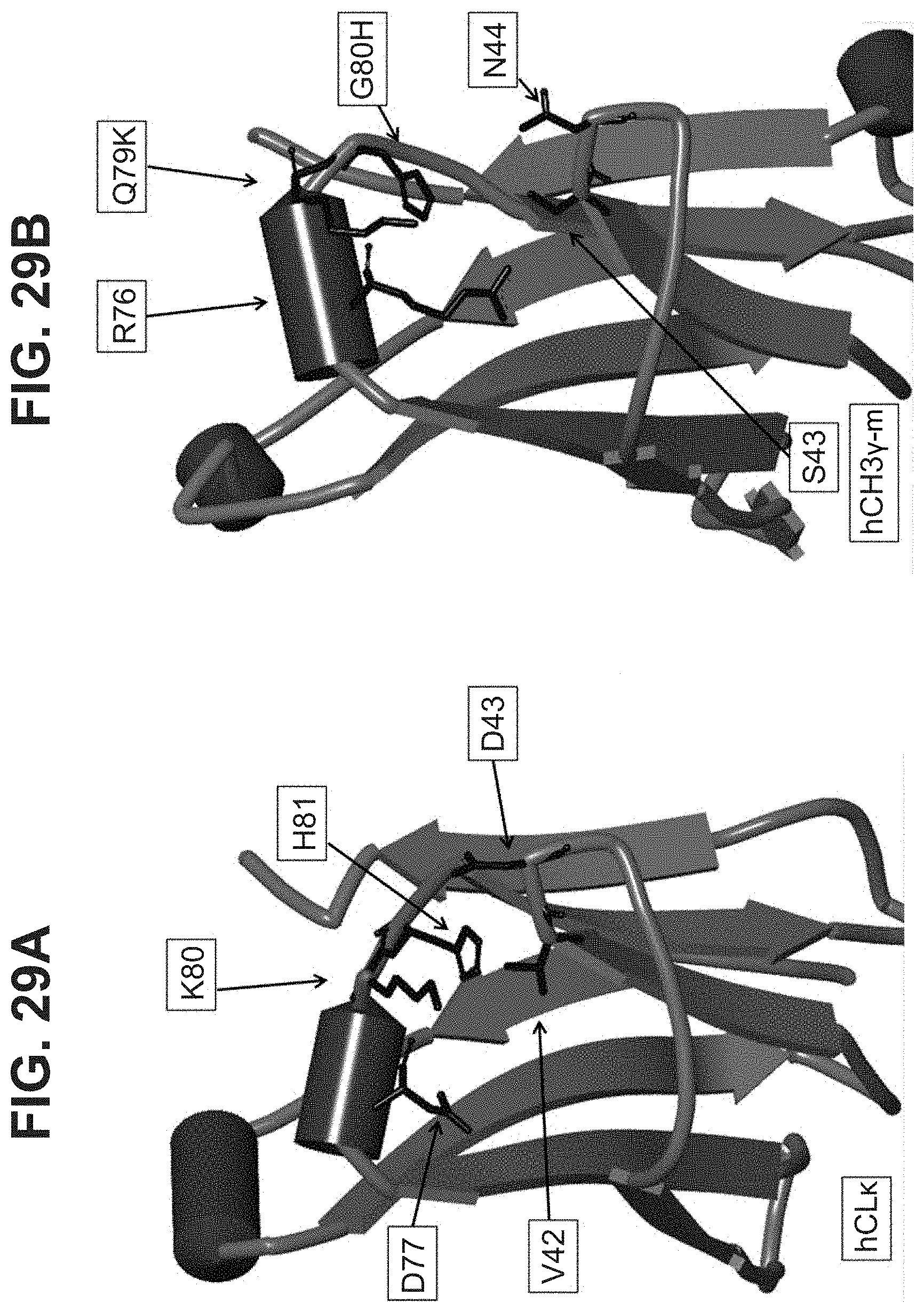
D00047

D00048
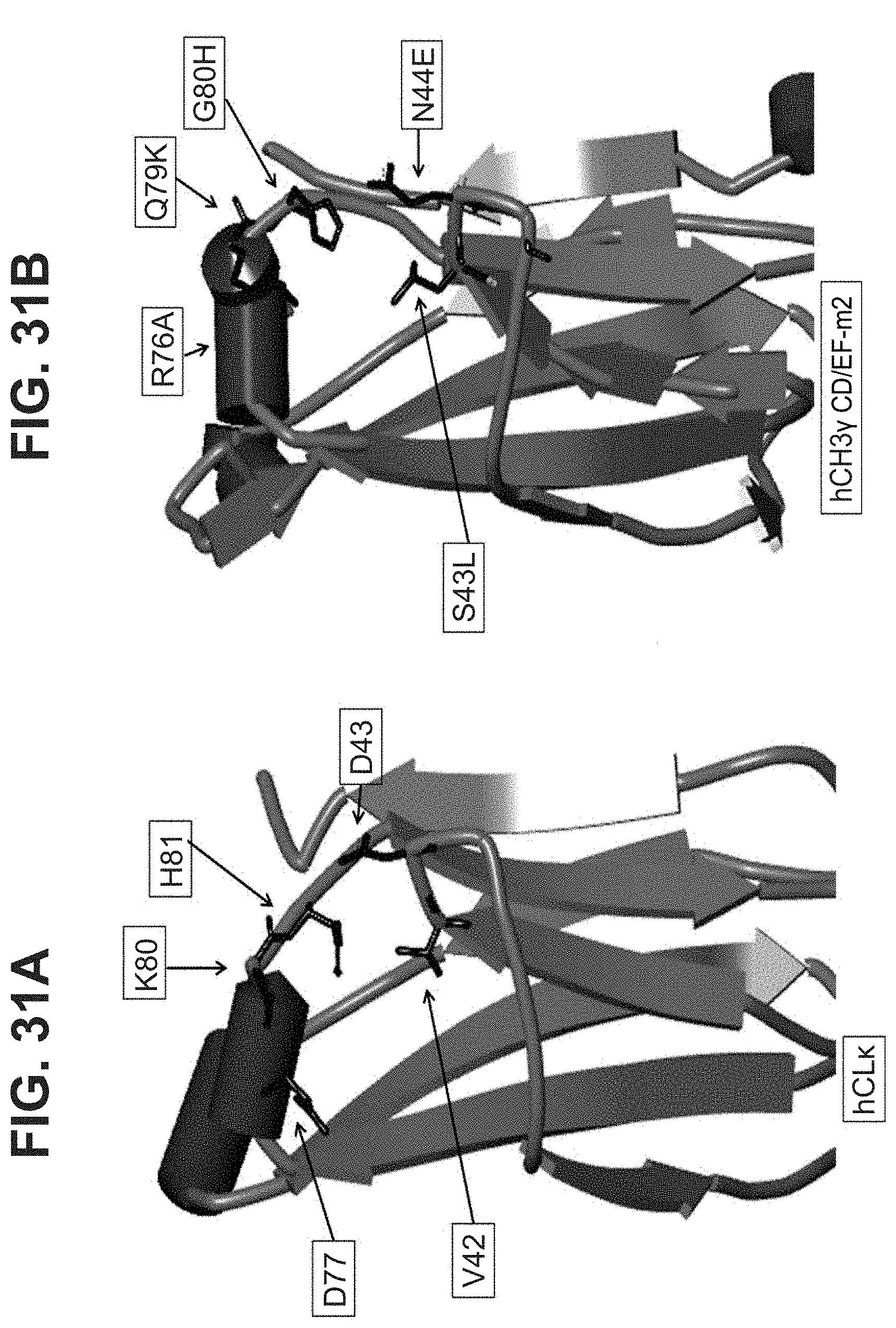
D00049
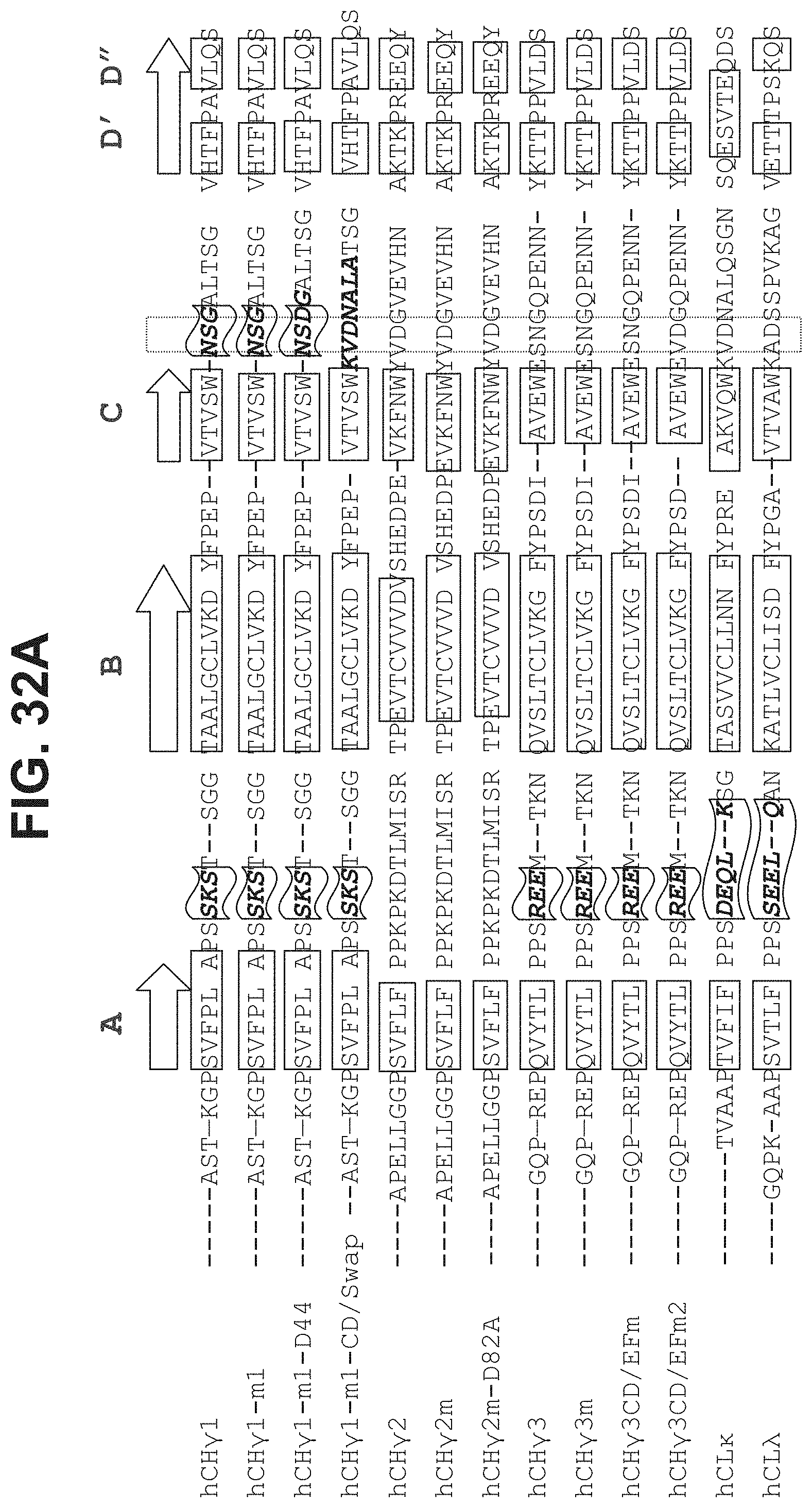
D00050
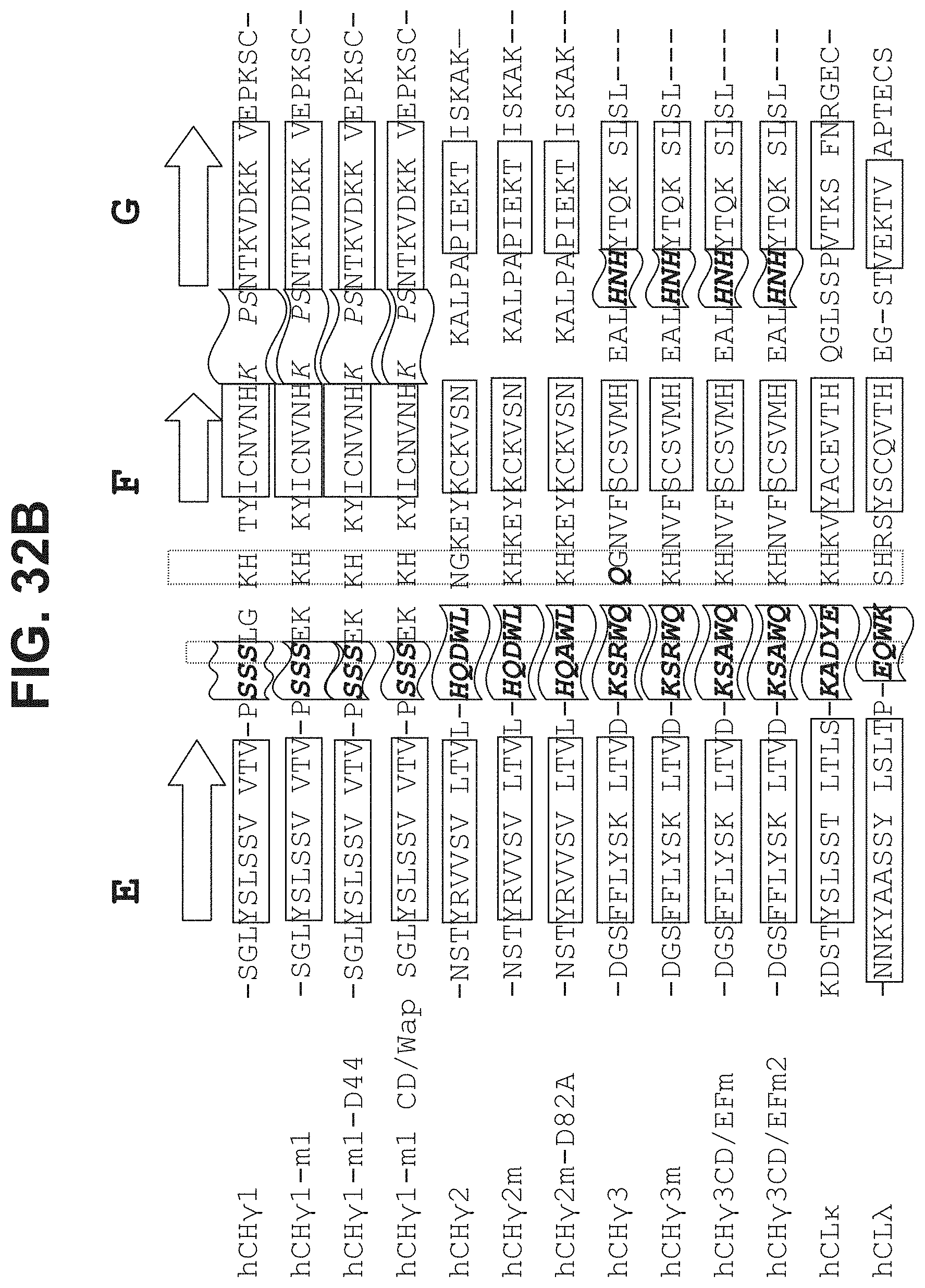
S00001
XML
uspto.report is an independent third-party trademark research tool that is not affiliated, endorsed, or sponsored by the United States Patent and Trademark Office (USPTO) or any other governmental organization. The information provided by uspto.report is based on publicly available data at the time of writing and is intended for informational purposes only.
While we strive to provide accurate and up-to-date information, we do not guarantee the accuracy, completeness, reliability, or suitability of the information displayed on this site. The use of this site is at your own risk. Any reliance you place on such information is therefore strictly at your own risk.
All official trademark data, including owner information, should be verified by visiting the official USPTO website at www.uspto.gov. This site is not intended to replace professional legal advice and should not be used as a substitute for consulting with a legal professional who is knowledgeable about trademark law.